You are using an out of date browser. It may not display this or other websites correctly.
You should upgrade or use an alternative browser.
You should upgrade or use an alternative browser.
Reviews by o0genesis0o
Filters
Show only:
Loading…
o0genesis0o
Headphoneus Supremus
Pros: + Modular earphone concept
+ Great clarity across the frequency range
+ Clean and decently deep bass
+ Great clarity across the frequency range
+ Clean and decently deep bass
Cons: - Potential defects in some batches of the drivers
- Lack of variety in the tuning options
- Lack of variety in the tuning options

Do you want to build and tune your own earphones to create your unique sound? Do you like to share that unique sound with others?
This ability has been limited to handy DIYers and influential audiophile reviewers. However, Smabat has been trying to change this situation with modular IEMs and earphones. The idea is that you can buy the main body unit and a couple of different drivers and filters to put together a unique pair of IEMs or earphones. The assembly process can be done without soldering.
I love the idea. However, can the idea stand up to the cruelty of reality?
Let’s talk about M4, the latest generation of modular earphones from Smabat.
tl;dr: the modular idea works, but more refinement is still necessary. The complexity of a modular design brings about defects and inconsistencies. The selection of drivers needs more variety as they centre around Smabat’s house sound. If you are searching for a warm and relaxing sound signature, keep searching. These are not the buds you are looking for.
Forewords
- I purchase M4 and all drivers at a discount to facilitate this review. Smabat also replaced the M4 body and all of the dynamic drivers once to address a potential defect. I have no financial interest in Smabat or the success of M4.
- I rate IEMs by A/B testing them against a few benchmark IEMs, regardless of price point. If a $1000 IEM scores the same as a $100 IEM, then either the more expensive one underperforms or the budget one is a gem.
- I believe that great IEMs are the ones that can achieve multiple difficult things simultaneously: (1) high resolution (meaning lines of music are crisp, clear, easy to follow and full of texture), (2) 3D soundstage with a strong sense of depth, (3) bold and natural bass with a physical rumble, (4) natural timbre, (5) relaxing and comfortable tonality. IEMs achieving those criteria are rated highly in my ranking list
- I use frequency response measurements to double-check my subjective impressions.
- Ranking list and measurement database can be found on my IEM review blog.
What is Smabat M4
M4 is a flathead earbud with interchangeable drivers and replaceable cable (MMCX connector). Each earpiece comprises a main body unit and a screw-on driver unit. The body unit contains a “3D structure, “ essentially a bass tube connected to a vent. This structure enhances M4’s bass response and allows you to fine-tune the level of the “V-shape” of M4’s sound.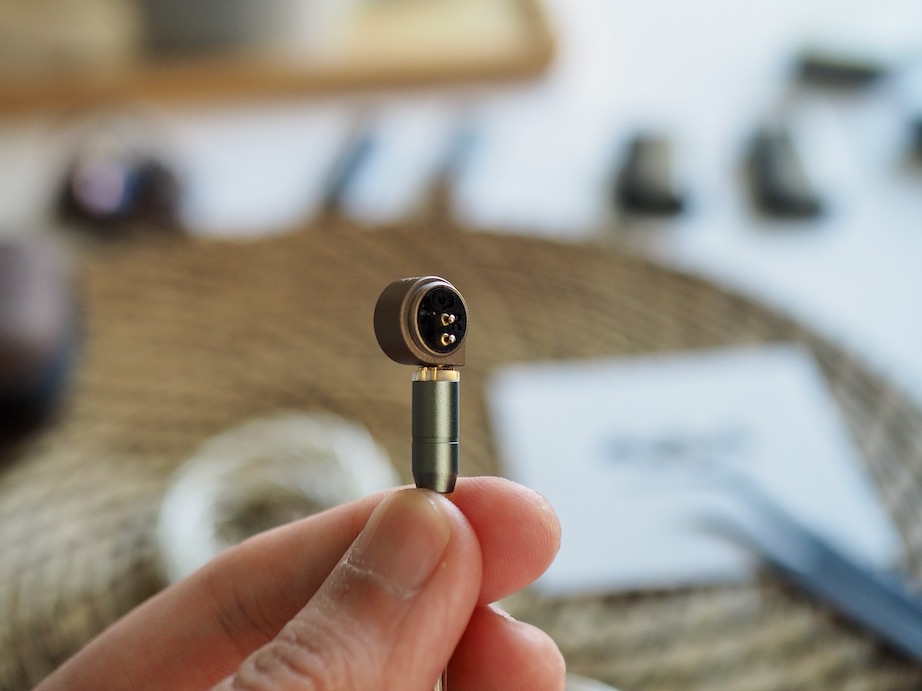
Most driver units contain a 15.4mm dynamic driver. The driver is attached to a metal structure with two circular connection pads, a pair of vents, and the threads for screwing onto the main body unit.
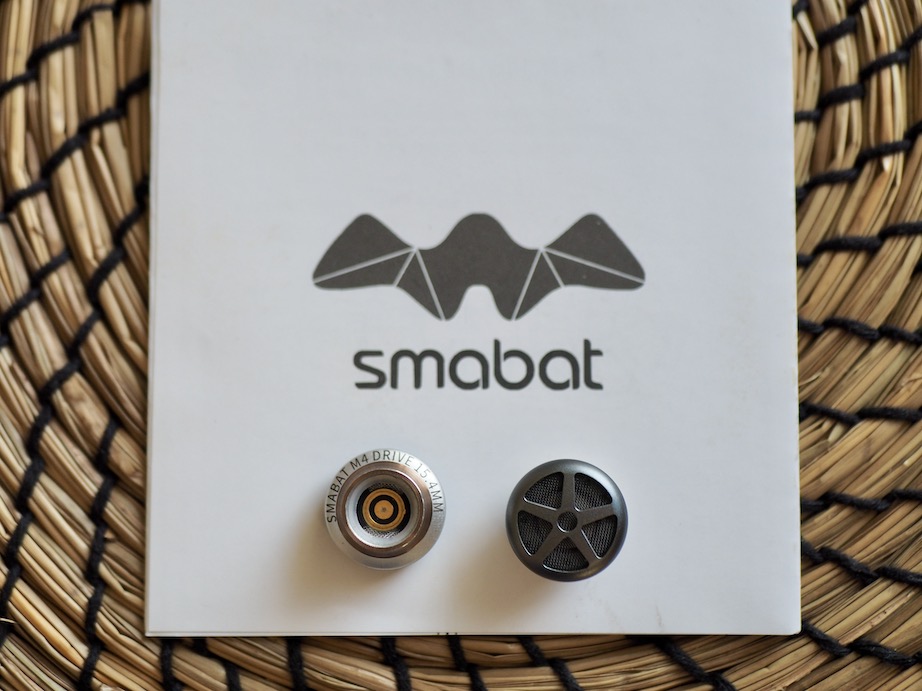
Hidden in the drivers are o-rings that ensure the seal between the main body unit and the drivers. This seal is critical for getting the right sound out of M4. Earlier batches of M4 drivers come with white o-rings that tend to pop out from the drivers and prevent them from screwing onto the main body unit correctly. Some of my replacement M4 drivers come with black o-rings that fit better.

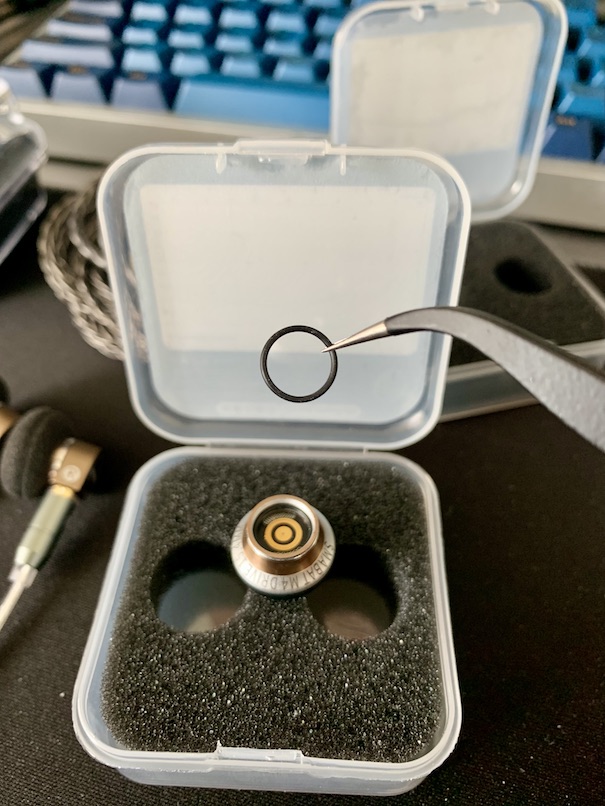
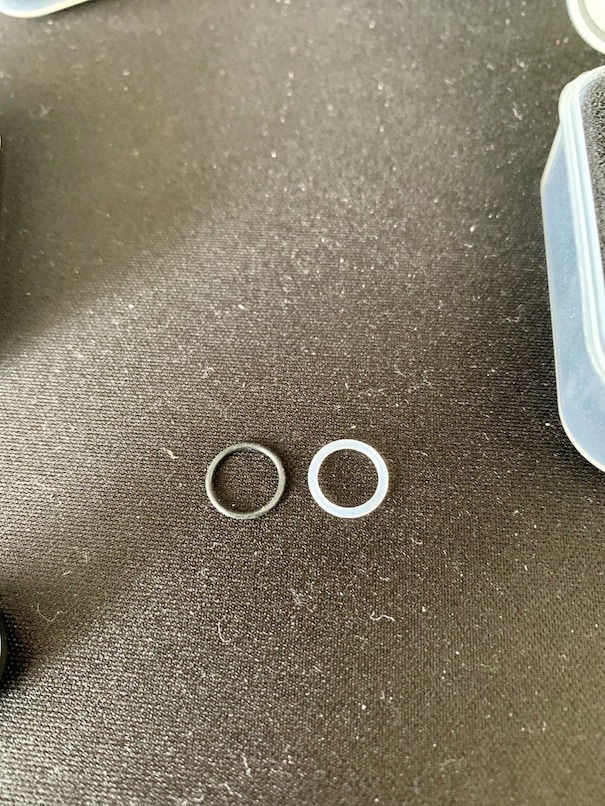
Smabat also sells a set of balanced armature (BA) drivers. These drivers belong to the Bellsing Hornet series. The BA driver units are not influenced by the bass tubes on the main body unit, so they are not sensitive to manufacturing variations in the screw thread.
How to buy M4
The simplest way to buy Smabat M4 is to get a “starter kit” that gives you everything you need to create a functional M4. This kit includes the main body units, 1 pair of easy-to-drive drivers, an MMCX cable, a carrying case, and six pairs of foam. This starter kit was my option when I purchased my M4.
Alternatively, you can buy the main body units and drivers individually. This option is good when you know the drivers you want and already have spare cables and foams. This option was how Smabat sent me a replacement unit.
You should also grab the tuning filter kit even if you already have some DIY IEM filters because the filters used by M4 are pretty small.
How to tune M4
The first way of tuning M4 is by replacing the filter on the main body unit. There are four types of filters, labelled as 1, 2, 3, and 2.5 (the default filters on the main body units). A higher number indicates a higher resistance (thicker).How do the filters work? The same as when you tune bell-shaped flathead earbuds with a big opening at the back. If you want a lot of upper-midrange and a lot of midbass with a big dip around 1kHz, use thinner filters. If you want a less contrasty presentation, use thicker filters. You can see measurements with my IEC 711 coupler below.

The second way of tuning M4 is by replacing the drivers. The drivers have a slight difference in true resolution and the amount of bass. However, their tuning is consistent with the Smabat house sound. In other words, if you want a pair of warm and dark buds, you can’t achieve that with M4.
A note on channel imbalance and manufacturing defectsPermalink
As I have alluded to a couple times in this review, I have received a new set of main body units and dynamic drivers as a replacement for the first set.So, what happened? One driver in every pair cannot screw onto the main body unit. The screw thread on both sides refuses to connect unless I press them together tightly. Even when they were screwed in, there was still a 1mm gap. As a result, the frequency response of both channels differed significantly. Moreover, tuning filters did not work on the defective side.
After a discussion via email, Smabat reacted promptly and sent over a replacement set of main bodies and drivers. Some drivers have new black o-rings, which fit better and negate all the connection problems.
It should be noted that the channel difference still appears in measurement, particularly around the ear-gain region. However, the problem is not very noticeable in real-world listening, especially with the Type 3 filters.
How it sounds
Casual listening sessions were done with Fiio KA3, Fiio BTR5, Hidizs AP80 Pro X, Hidizs S9 Pro, Hidizs XO, and Topping G5.All A/B tests were done using Topping G5.
Local FLAC files ripped from CDs or bought from Qobuz were used for most casual listening and A/B tests.
Tonality and Timbre: 3/5 - Average

Frequency response of all configurations. Measurements were done with an IEC-711-compliant coupler and might only be compared with other measurements from this same coupler. Visit my graph database for more comparisons.
Tonality: Crisp, clear, and forward, but can be fatiguing and not the most natural. All drivers exhibit a similar tuning with reduced lower-midrange and forward upper-midrange (ear gain). If you are used to a warm and rich tuning, M4 can sound unbearably thin and strident.
In fact, harsher vocals like Bon Jovi in Wanted Dead or Alive can sound harsh and shouty (to put it simply: too loud comparing to the rest of the mix). However, I’m still determining whether this harshness is due to the tuning choice of Smabat or the defective drivers that do not seal properly.
For me, the type 3 filter and a bit of brain burn-in (a.k.a., getting used to the sound) bring the tuning down within my tolerance level. I would say the Smabat house sound is more suitable for higher-pitched vocals and instruments. For instance, Can’t help falling in love by Kacey Musgraves sounds fantastic with M4: clear, intimate, detailed, and emotive. Meanwhile, Bach suites for cello solo by Mischa Maisky sounds a little thin and a bit off, especially when he plays the lower strings.
Despite the forward and strident upper midrange, the treble of M4 is smooth but not weak. I did not hear any “treble glare” (i.e., that random bright sound stabbing in the ears when musicians strike cymbals or pluck a guitar string). Cymbals, hi-hats, and chimes in Wanted Dead or Alive sound controlled and detailed rather than splashy.
The bass of M4 is generally “tight” and clean, focusing on the punch (“boom boom” sound) rather than the deep rumble that makes up the physical body of bass notes. Note that the bass feels even more weightless in some configurations because you must turn down the volume to reduce the stabbing ear gain.
Different drivers balance low and upper midrange differently, but the tonality and timbre never venture far from the house sound. You can tame the house sound somewhat by using a warmer driver and a type 3 filter. In the most optimal configuration, I rate the tonality of M4 3/5 - Adequate, if and only if the drivers seal against the main body unit properly.
Resolution, Detail, Separation: 3.5/5 - Above Average

All M4 drivers have a high degree of perceived resolution in the midrange due to how they are tuned. It means that note attacks are emphasized and crisp. The whole stereo image is clear and sharp, just like looking at a vibrant and contrasty TV. In A/B tests, the difference in clarity between M4 and Aria, my standard for acceptable resolution (3/5), is noticeable and appreciated.
However, the true resolution of M4 is only average to slightly above average. By true resolution, I mean the ability of a driver (and its enclosure design) to finely distinguish similar sounds placed closely within the soundstage or in a fast passage. If we continue with the TV analogy, M4 is more like an overly sharpened full HD screen than a proper 4k screen. It is only sharp and clear when not too much is going on.
Another indicator of the true resolution is in the texture or “micro-detail” of vocal lines such as Andrea Bocelli’s in Besame Mucho, Bon Jovi in Wanted Dead or Alive, or violin solos performed by James Ehnes. M4 fails to dig into a deeper level of micro details and texture that I hear with my Blessing 2, my standard for “good” resolution (4/5). However, it does not feel overly smoothened like some worse performers in my collection.
Based on the A/B tests, I rate the resolution of M4 3.5/5 - above average.
Percussion Rendering: 3/5 - Adequate
Across all configurations, the M4 have a punchy but focused bass. This is achieved by focusing the energy to 150Hz and below and cutting back the frequencies around 250Hz. As a result, drums feel tight and clean but maintain a good presence in the mix. Drum attacks sound “quick” and snappy. The pillowy bass, like punching a pillow, common among overly-dampened IEMs do not exist with M4.Percussion rendering reflects how well the tuning and technical performance of an IEM work together to recreate realistic sound of a drum set. Good drum hits have a crisp attack (controlled by frequencies from 4kHz to 6kHz), full body (midbass frequencies around 200Hz), and physical sensation (sub-bass frequencies around 50Hz). Good technical performance (“fast” driver) ensures that bass notes can be loud yet detailed. IEMs that cannot control bass very well tend to reduce the bass’ loudness to prevent muddiness.
However, besides the cleanness, the drums on M4 do not sound particularly interesting. M4 still outdoes many flathead earbuds in percussion rendering. Still, the clean and focused bass prevents M4 from sounding big, bold, and engaging.
Based on A/B tests and casual listening sessions, I rate the percussion rendering of M4 3/5 - Adequate.
Stereo Imaging (Soundstage): 4/5 - Good
Stereo imaging or “soundstage” is a psychoacoustic illusion that different recording elements appear at various locations inside and around your head. Your brain creates based on the cues such as the loudness and phase differences between the left a nd right channels. Most IEMs do not differ significantly, nor can they compete with headphones or loudspeakers. However, some IEMs offer a more spacious soundstage than others. Best IEMs can create multiple layers of sound from closer to further away and make some instruments float slightly above your head.

Flathead earbuds are great performers in soundstage imaging by design. Some earbuds can sound like a pair of open or semi-open headphones. Some can be modified and tuned to produce a forward projection of the centre image, like a pair of desktop speakers.
M4 is not one of those unique earbuds. It sounds like a spacious-sounding IEM than a pair of headphones or speakers.
Because of the Smabat house sound, M4 has a very focused and forward centre image. It means that the lead vocals or instruments almost always appear in your head. The up-front centre image also reduces the illusion of depth. It’s infrequent (but possible if you listen to some classical recordings) to hear the centre image appear in front of you.
Due to the strong contrast between the upper and lower midrange, the soundstage feels large and open but also empty when you shift your attention away from the centre image. You can imagine a mix where the singer stands very close to you, but the band sounds distant in the background. That’s the M4’s soundstage.
M4’s stereo imaging, meaning the ability to pinpoint the direction and distance of sound on the stage, is nothing special to highlight. M4 does not create the illusion of sound jumping around you or the intricate layering of closer and further away sound.
Despite a slightly disappointing performance against other flathead earbuds, the soundstage projected by M4 is still quite impressive in the world of portable head-fi gear. Coming from IEMs, this soundstage performance would impress you. I rate M4’s soundstage 4/5 - Good.
Comparisons between drivers
Stock M4 driver (40ohm, 110db, LCP composite)

What Smabat says: “Drive rich, detailed sound no matter the deep bass or clear and pure highs every note is great”
What I say:
- My stock drivers are likely defective, as one driver cannot be screwed smoothly onto any of the main body units that I have.
- I hear a tinny, glary sound. For example, I cringe whenever a note on the E string is hit in the Bach violin solo.
- I hear a shouty and strident upper midrange.
- The treble is surprisingly not harsh.
- Bass is more potent than what I expected.
- The resolution is adequate.
BA driver (22ohm)
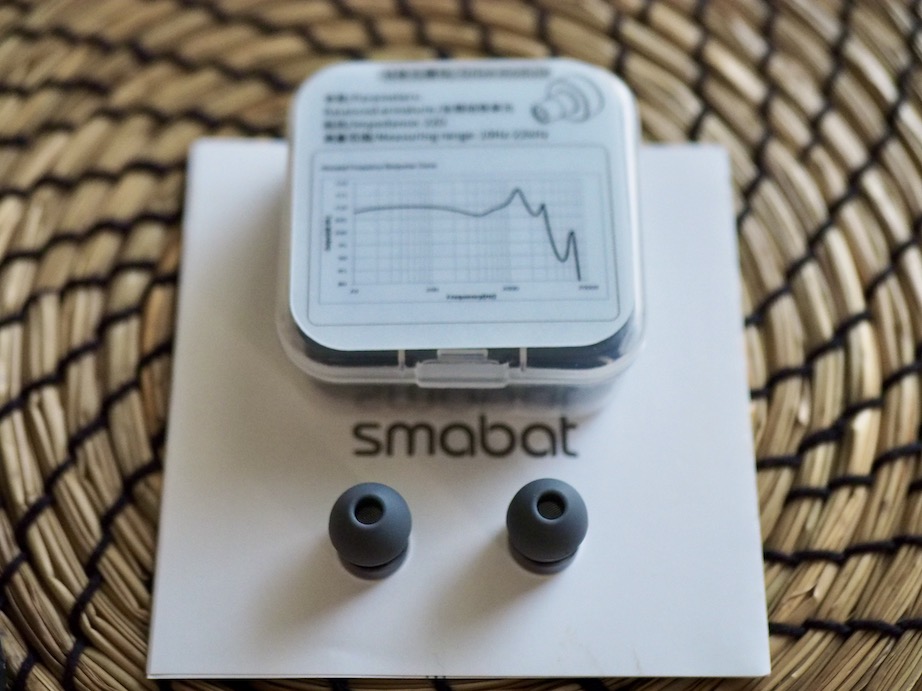
What Smabat says: “Enjoy the shock of high frequencies”
What I say:
- What high frequencies?
- The upper midrange is more tolerable than the stock drivers. The midrange is still quite forward but not strident.
- The BA driver has surprisingly potent bass. Not outstanding, but surprising for a single BA driver. However, it is still BA bass that lacks texture and resolution.
- Slightly boxy and bloomy sound, likely due to excess energy around 500Hz. Cello could sound better.
- Micro-detail is average at most. Air is lacking.
- Soundstage is small but has an okay level of layering, making it enjoyable.
ST20 driver (40ohm, LCP)

What Smabat says: “The large-size LCP diaphragm drive unit has a huge liquid crystal diagram in the moving coil unit. The treble is still clear and natural, and the volume of the bass is enhanced”
What I say:
- These drivers have the most enjoyable variation of the Smabat house sound to my ears. They are my preferred units in terms of tonality.
- Acceptable bass: “Fast” with a sharp punch, decent body, and rumble. Better than BA bass and even some lower-quality DD bass (e.g., Moondrop Aria)
- Claps are natural and decently detailed in Synchro (Bom-ba-ye) by Tokyo Kosei Wind Orchestra, meaning the true treble range is tuned relatively correctly.
Super One driver (100ohm, fibre)
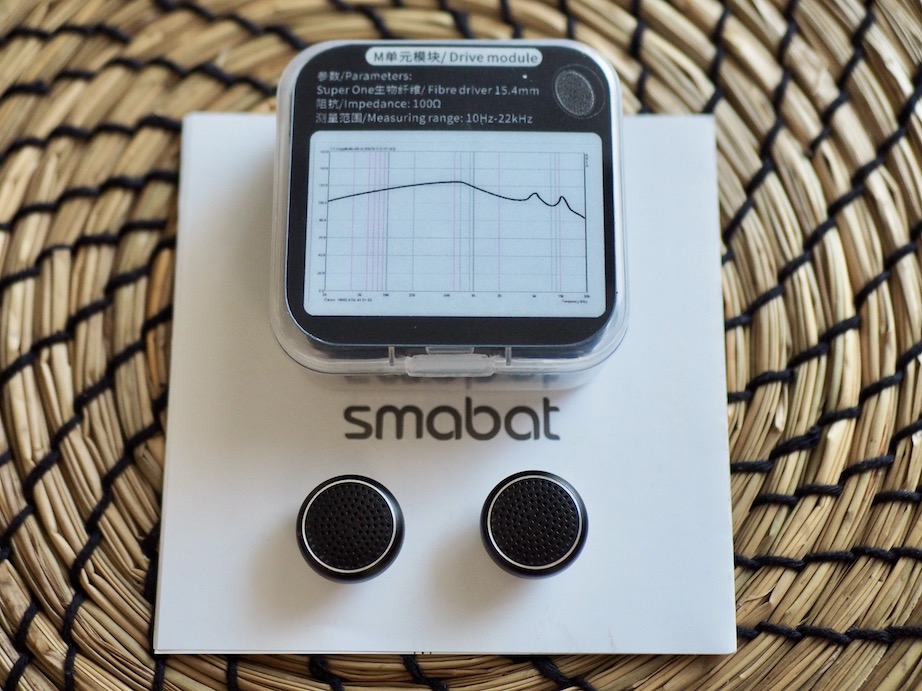
What Smabat says: “The bio-fibre driver unit has a huge bass output in a large-sized driver unit, allowing high-power audio signals to pass through, and still have a strong bass”
What I say:
- Somewhat similar to the ST20 driver in tonality, but with slightly better resolution.
ST20 Pro driver (100ohm, Fiber)

What Smabat says: “Use a black-coated bio-diaphragm drive unit. Based on the composite bio-diaphragm, it mainly improves the distortion of its bass and treble, which is very low and restores better.”
What I say:
- If you want a bit extra treble sparkle to the Super One drivers, these are the drivers for you.
ST10S driver (150ohm, Dome)
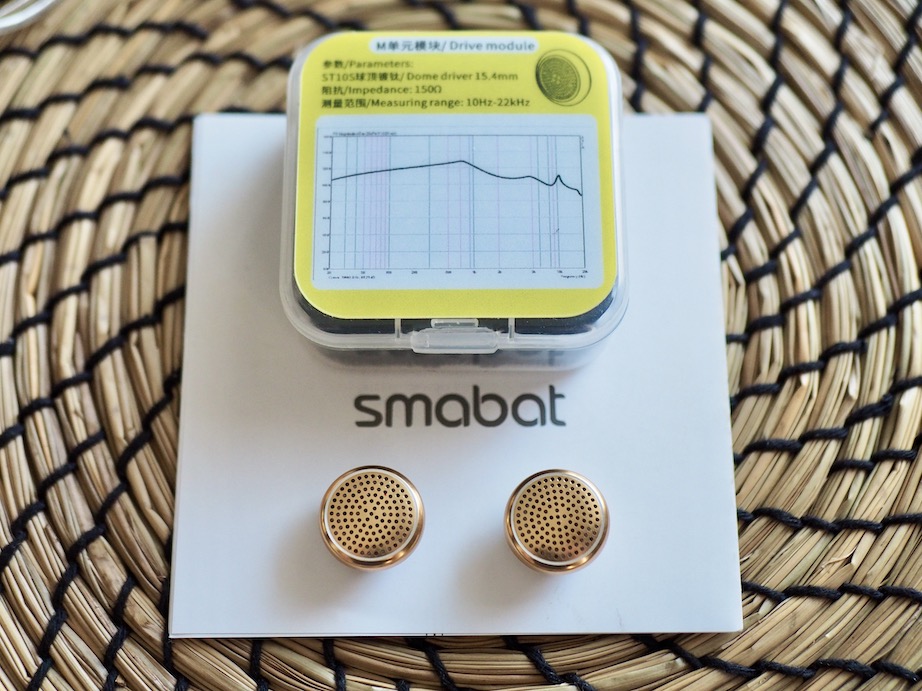
What Smabat says: “The bass performance is strong, the treble is very clear and accurate, good sound quality can be obtained on a player with high thrust.”
What I say:
- I am not sure, both of my ST10S sets are likely defective, as one side cannot be screwed smoothly onto any of the main body units I have.
- The resolution is slightly better than the Super One and the ST20 Pro drivers.
Conclusion
Smabat has a great idea with M4. However, this great idea needs more refinement. The tuning could be less aggressive. The bass could extend further. However, they need to refine the manufacturing process to eliminate the fitting problem between the drivers and the main body units. I also wish for more variety amongst the available drivers rather than slight variations of Smabat house sound.In the current state of M4, I can only recommend these earphones to adventurous listeners who like forward vocals and want to support the modular earphones concept. For DIY-inclined folks, I recommend picking up a soldering iron, some drill bits, and some standard MX500 drivers.
Pros:
- Modular earphone concept
- Great clarity across the frequency range
- Clean and decently deep bass
- Potential defects in some batches of the drivers
- Lack of variety in the available driver options
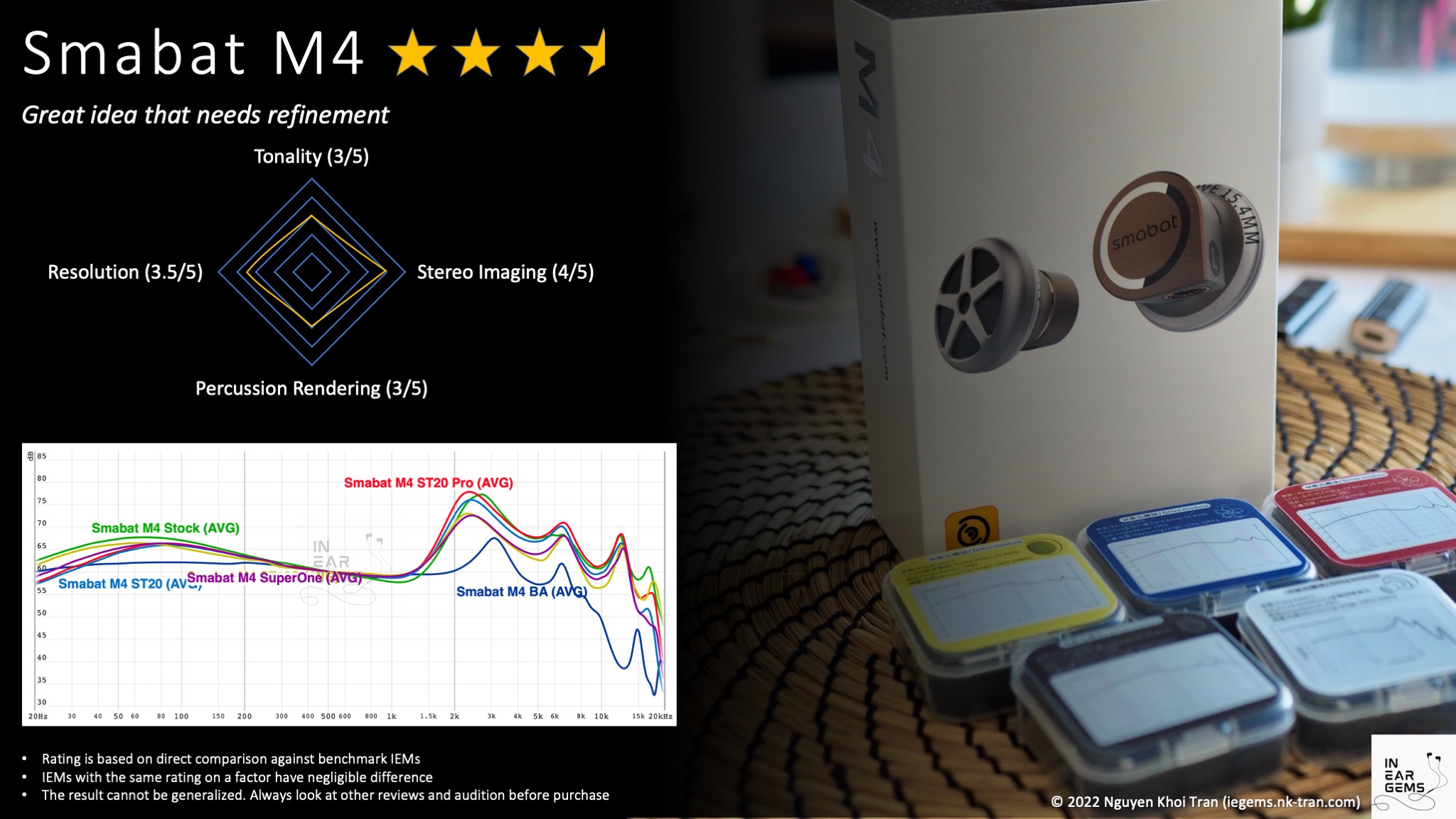
cqtek
Great review! I like the structure, the approach and the novel sections you propose.
Congratulations on that!
Congratulations on that!
Redcarmoose
My gosh............man, what a review! I'm not even into earbuds, but your ideas are profound!
o0genesis0o
Headphoneus Supremus
Pros: + Bass
+ Technology
+ Technology
Cons: - Fit
- Lack of treble energy
- Lack of treble energy
It is very likely that your experience with this IEM would be very different from mine.
The most tricky thing about reading and writing reviews of IEMs is that they are personal audio devices. The “personal” aspect here goes beyond one’s preference for a a particular musical genres, a band, or a singer. No. It’s the shape of one’s ears, the place where they listen to music, the device from which they get the audio signal, and even the loudness at which they listen that paints a very different sonic picture for each listener.
That has been the case for every IEM, but these new IEMs from KiwiEars, the Singolo, are more challenging than most. It is a shame because behind the challenging fit lies an impressive skill in shaping the frequency response of a dynamic driver that is almost unseen until now.
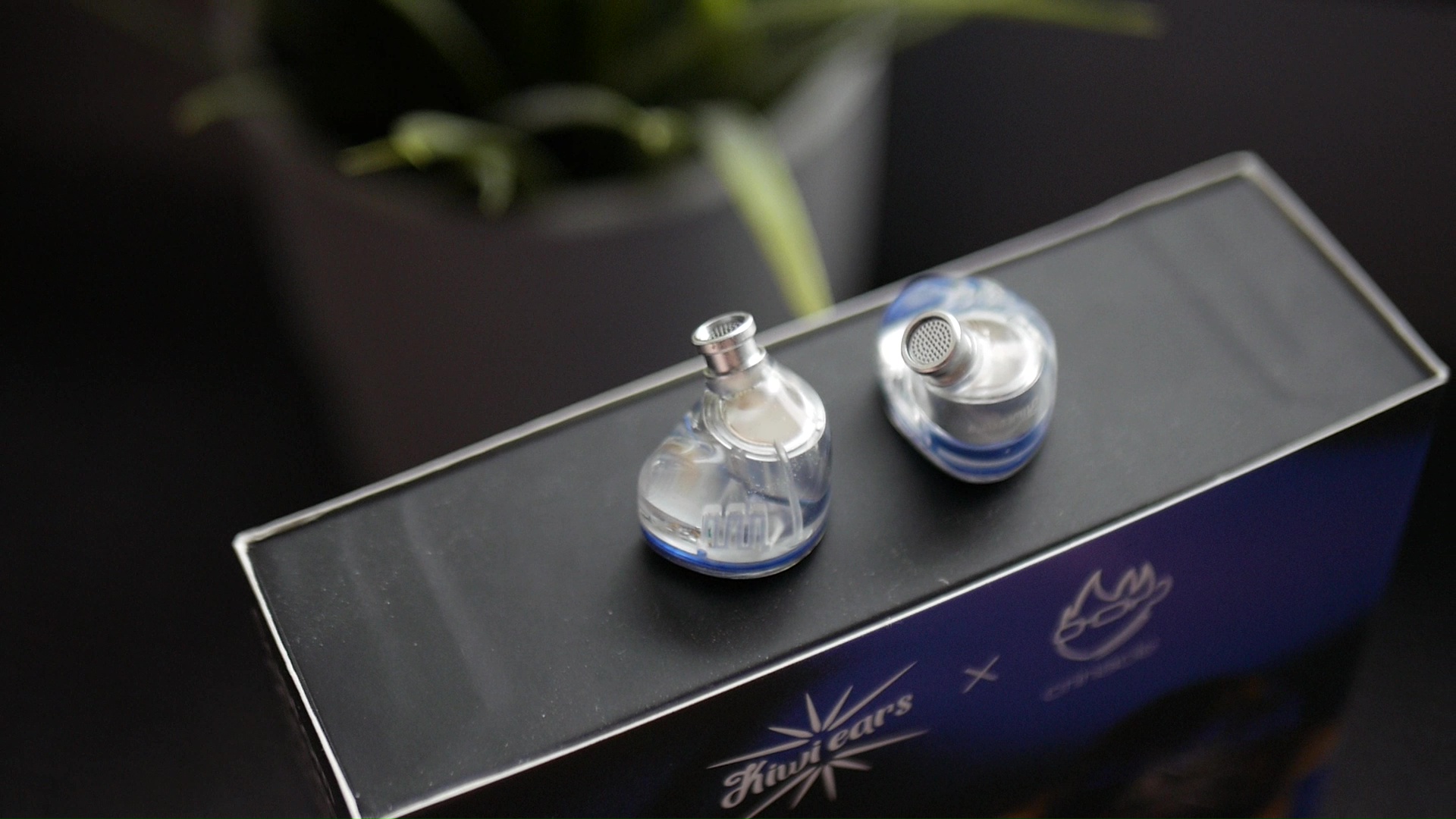
Looking closely at the transparent shells of Singolo, you would see an 3D-printed sound tube connected to the back vent of the DD. This tube folds upon itself multiple times before connecting to a small vent hole on the IEM shell. KiwiEars calls this system “Kiwi Acoustic Resonance System” (KARS).

You might ask: “what’s the big deal?”
I’m glad you asked. Let me geek out a bit. If you have ever dabbled in DIYing a pair of flathead earbuds or modding your IEMs, you would have undoubtedly engaged in tuning DD to reach an agreeable frequency response. The thing about DD is that there is not much you can do (or at least I can do) to force it to conform to a target, besides applying a parametric EQ profile. Here are some ways you can tune a DD:

Another purpose of the KARS tube is acting as a Helmholtzs resonator. As you can see, when the diaphram inside the DD vibrates, it would vibrate the air volume inside KARS tube. When it vibrates, it can make sound (think of the time when you blow air across the opening of a bottle). By carefully control the parameters of this resonator, KiwiEars can push the resonance frequency of the system down to the subbass region. Another IEM utilising this technique was AFUL Magic One.

In summary, by careful manipulation of the KARS tube, KiwiEars managed to create a single DD IEM that is tuned almost identically to “well-tuned” multi-driver IEMs, such as Monarch MkII from subbass up to around 6kHz. And they did it without any electronic crossover, any foam or nylon filter.
To me, this is quite a feat of engineering.
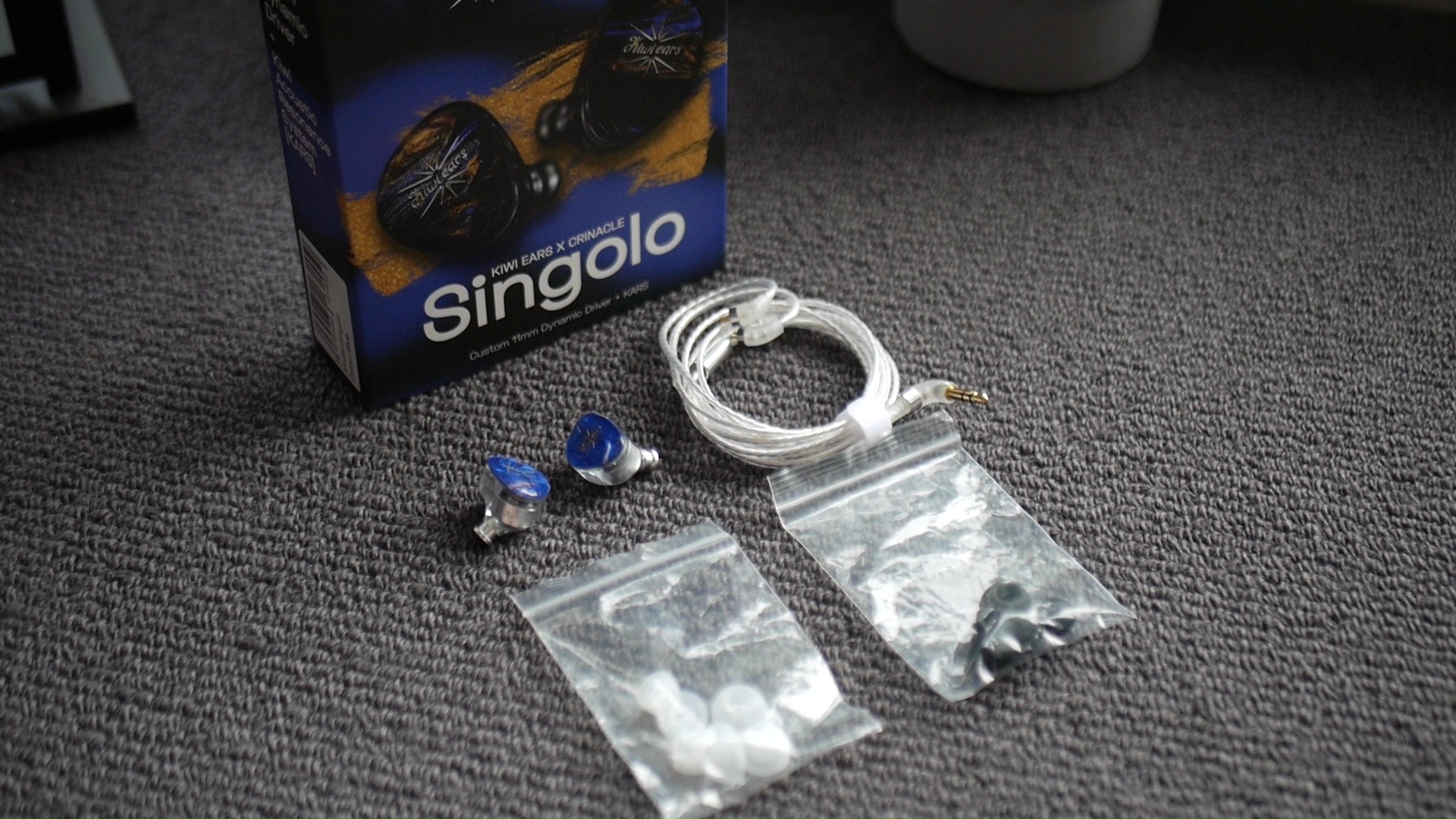
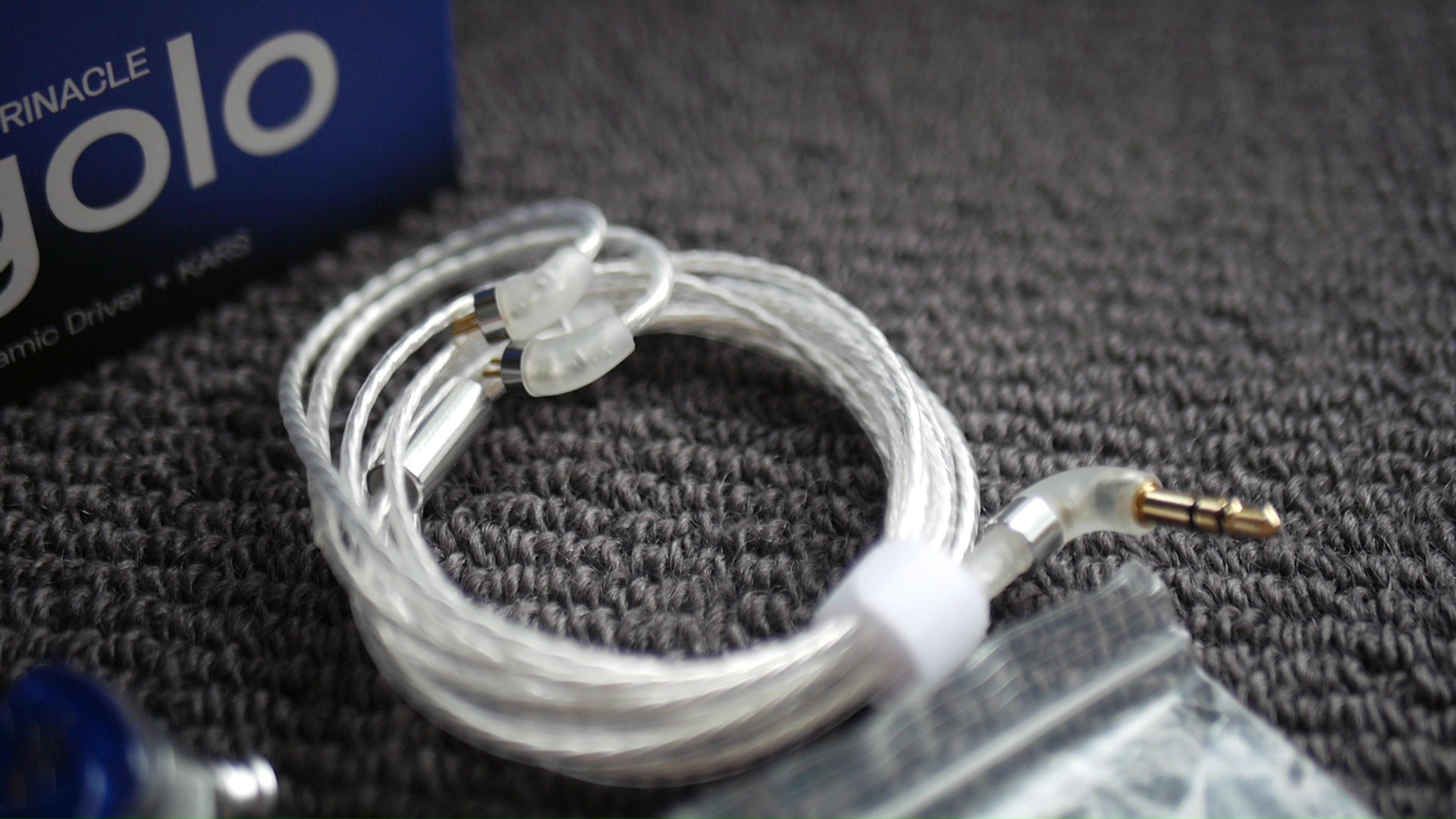
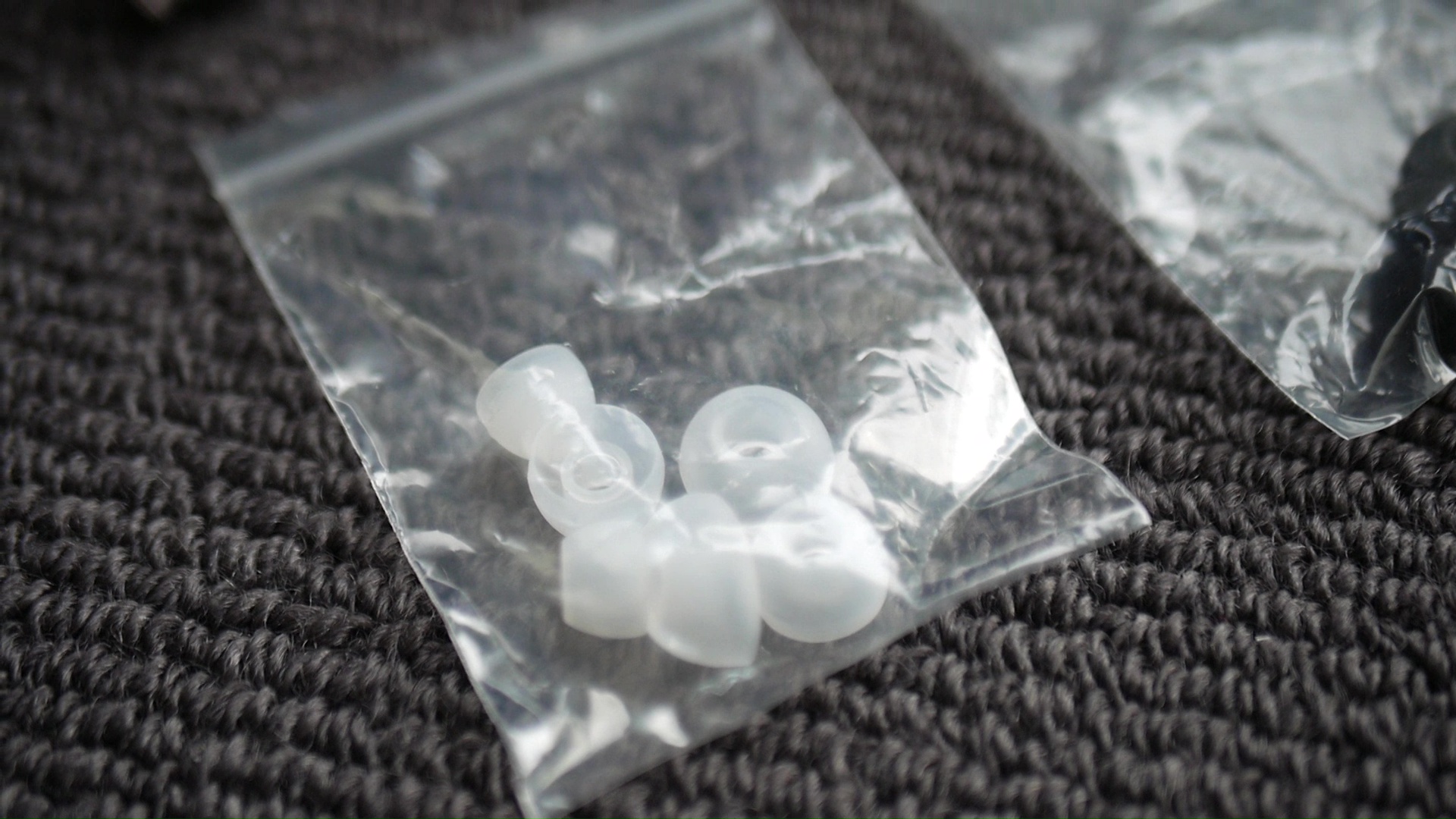
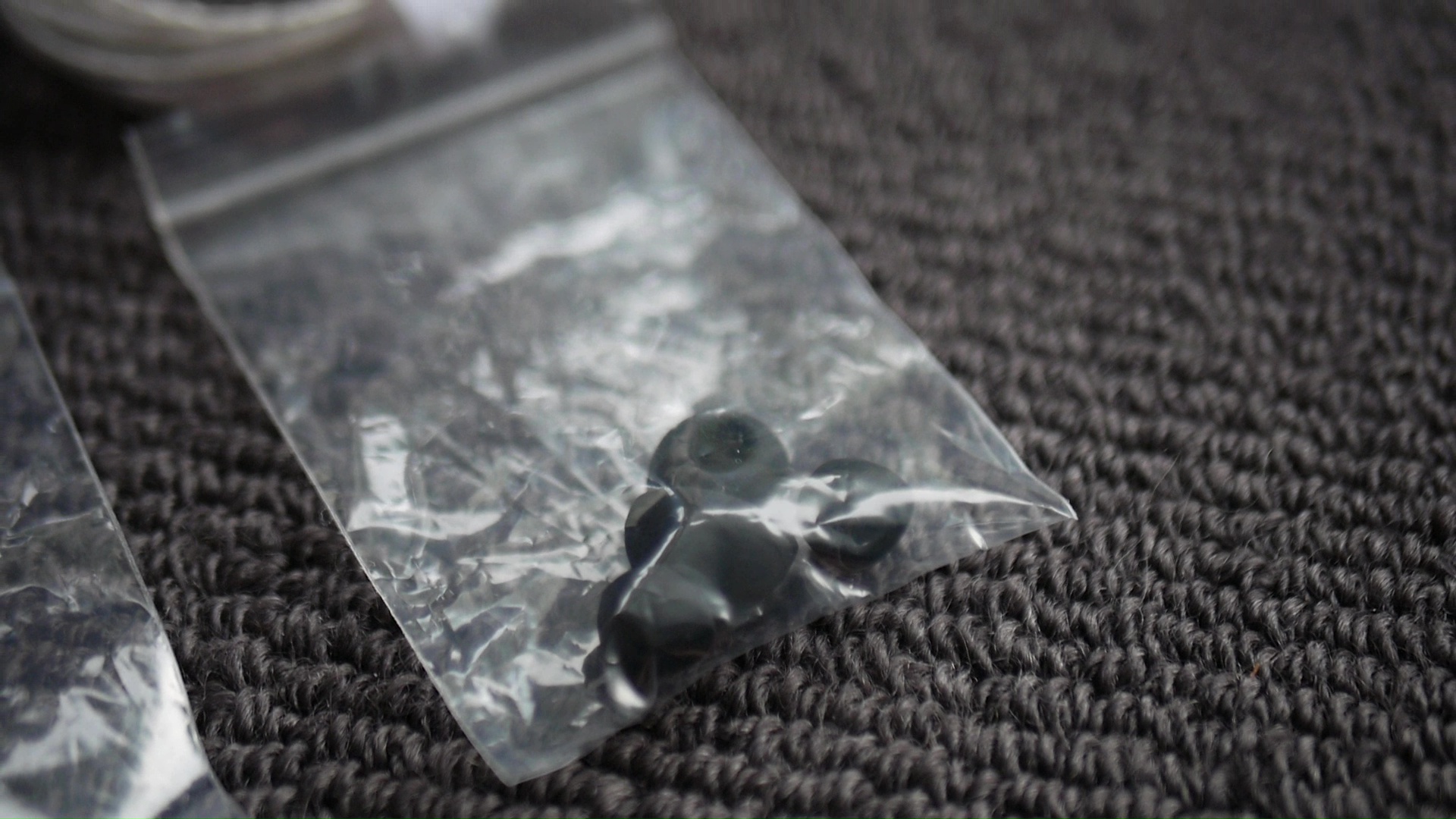
Packaging and accessories: Quite modest. In fact, I would say Singolo is downright below average on this aspect. Inside the small box, you have the earpieces themselves, a flimsy 3.5mm cable, and two sets of ear tips that likely wouldn’t work with your ears.
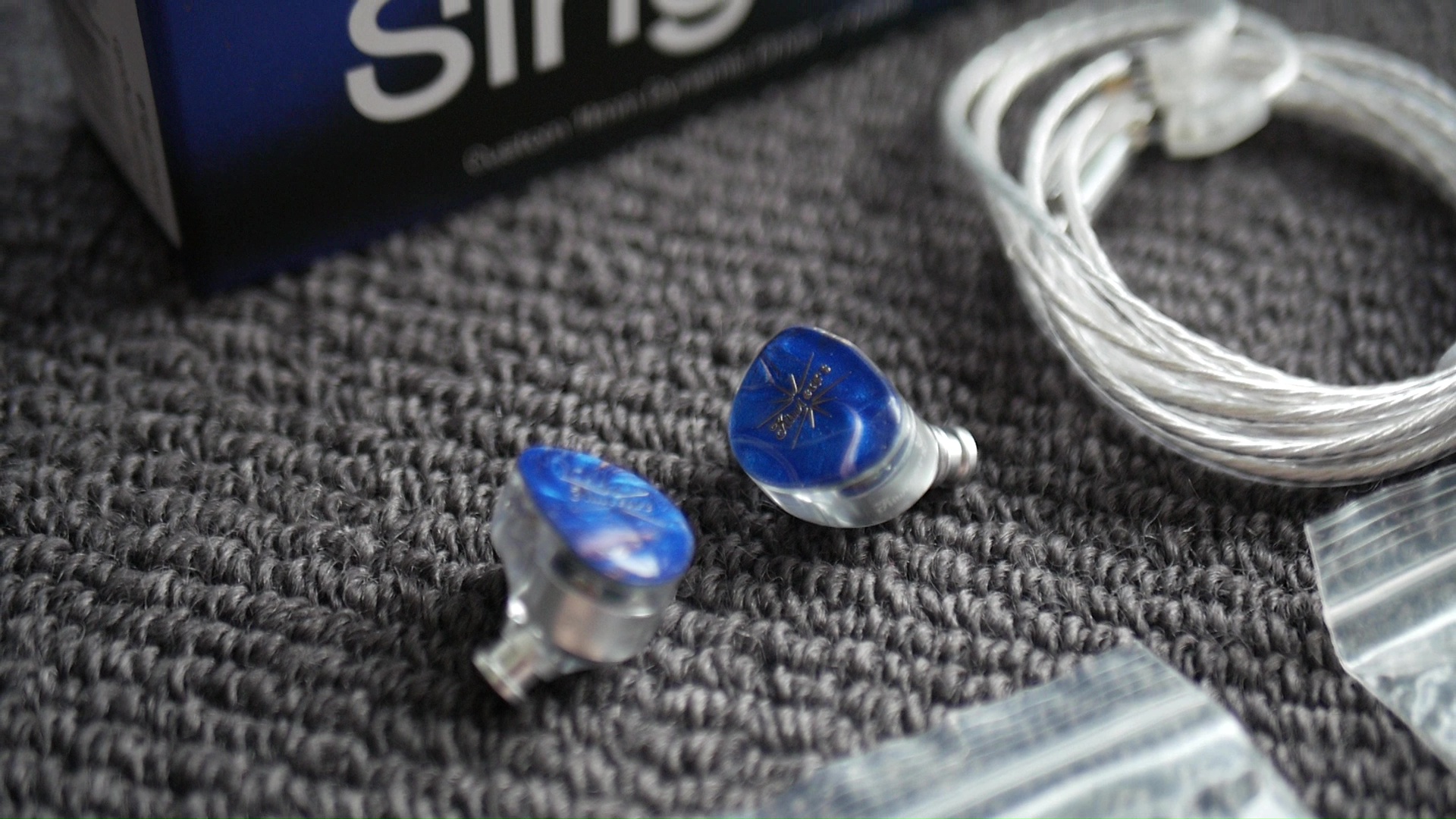
Ear pieces design: This is where all of the woes of Singolo come from, in my opinion. On the plus side, the earpieces are quite small and smooth, so they wouldn’t create any ear pain. On the negative side, the nozzles of Singolo are simply too short. Moreover, the bulk of the DD tend to force the nozzle to sit at a slightly awkward angle. As a result, short ear tips likely fail to seal because they don’t reach deep enough into the ear canals. Longer ear tips might not be able to seal either due to the angle of the nozzles. As you know, if you cannot get a seal, an IEM is not usable.
Ear tips recommendation: Let me describe how the lack of seal sound before we talk about some good ear tips. With the stock ear tips, I cannot consistently seal the ear canal, leading to a “no-bass” experience. With SpinFit CP100 and W1, the stickiness of the tips make it feels like I have achieved a decent seal, and it is true that I can hear some bass. However, there is a strange hollowness in the lower midrange, and the soundstage feels oddly wide but hollow. Moreover, the upper midrange can sound harsh with some tracks.
In the end, I settled for two options:
In practice, it means this IEM is unlikely to sound “wrong”, unless you haven’t been able to achieve a proper seal. The piano in Goldberg’s Variations by Lang Lang sounds balanced and realistic, making it relatively easy for me to follow individual voices. Tokyo Kosei Wind Orchestra sounds correct and natural, though lacks a certain “shine” that I expected due to the more subdued treble response of Singolo (no, silicone tips do not improve the situation here).
However, the timbre of the violin is a bit off, as if there is a bit imbalance towards the upper midrange and likely a bit too much energy around the 3kHz, when I listen to four seasons by Janine Jansen and ensemble. The same observation was found when I listen to Bomsori: Violin on Stage album. The situation was a little bit better with Bach: Sei Solo by Leonidas Kavakos. Still, if you pay a lot of attention of violin, this IEM is not an ideal option.

The theme of slightly unbalance midrange carries over to vocal musics. For example, when I listen to = album by Ed Sheeran, I miss a bit richness in his voice and find that the shoutiness of his voice was highlighted more than my preference. At the same time, there is a lack of “shine” of high-frequency energy. To put it bluntly, Singolo makes this album sounds a bit dull. On the plus side, it provides a very comfortable listening experience, almost free of sibilance even with harsh recordings in this album like “Shivers.”
In summary, I would consider the tonality of Singolo to be good (3/5).
Bass and perceived dynamic: The bass of Singolo is a highlight of its presentation. For instance, when I listen to Gundam Build Fighter OST by Yuki Hayashi, I can hear and feel positive and definite “thumps” from the bass line. Some tracks such as Iori Hobby Shop is downright entertaining with Singolo due to the physical sensation of the bass notes. My only complain is that the perceived dynamic of Singolo is not as impressive as bass response. Simply put, the transients (volume spikes) are not snappy and sharp, likely due to the more subdued treble response.
Still, I would say the bass of Singolo is pretty great (4/5).

Resolution: To me, “resolution” can be broken down into three components: (1) Sharpness, incisiveness, or “definition” of note attacks (see the figure above). (2) The separation of instruments and vocals, especially when they overlap on the soundstage. (3) The texture and details in the decay side of the notes. The first two give music clarity and make it easy to track individual elements of a mix. The last provides music details and nuances.
To be honest, I’m a bit disappointed by the resolution of Singolo. Whilst the zero dampening design does a decent job at preserving the micro details at the decay end of the notes, the perceived resolution was held back by the weaker performance of both the definition of note attacks and separation of instruments and vocals. In direct comparison against the Moondrop Aria, I was disappointed to find that not much progress has been made on the resolution front.
At the end of the day, the resolution of Singolo is acceptable (2/5), but uninspiring.

Stereo imaging and soundstage: Stereo imaging or “soundstage” is a psychoacoustic illusion that different recording elements appear at various locations inside and around your head. Your brain creates based on the cues in the recording, which are enhanced or diminushed by your IEMs, your DAC, and your amplifier. In rare cases, with some specific songs, some IEMs can trick you into thinking that the sound comes from the environment (a.k.a., “holographic”)
There are not much to say about the stereo imaging ability and soundstage shape of Singolo. The stereo image is not blurry but not particularly pin point. The soundstage is mostly in the head with more width (left-to-right separation) than depth (front-to-back separation) and height. Layering is not significant due to the weaker instrument separation. Even when boosted by the DX300, the stereo imaging and soundstage of Singolo is acceptable (2/5) but left me wanting more.
Multimedia usage: Given the uninspiring soundstage performance with music, I did not have much expectation for the performance of Singolo in FPS gaming. However, I was pleasantly surprised by how competent it is. In both CS Go and CS2, I can sense the direction and distance of the sound from all angle, even the front where most IEMs tend to sound flat and closed in. The muted treble response also reduce fatigue.

It is helpful to think of an IEM as a filter that highlights or subdues different parts of the incoming audio signal. This effect can be measured objectively by the squiggly lines above, called Frequency Response (FR) graphs, which measure how loud an IEM is at different frequencies from 20Hz (bass) to 20kHz (upper treble). Subjectivity is how your ears and brain interpret the effect of that filter on your music and decide whether it is “enjoyable.” There are some “rules of thumb” when it comes to tonality, but most interesting IEMs usually bend the rules masterfully.
Usually, I would have elaborated analysis and discussion. However, I think the graph speaks for itself in this case.
What I like about this IEM:
Bias Score: 3/5 - I’m lukewarm about this IEM

Updated: May 12, 2024
The most tricky thing about reading and writing reviews of IEMs is that they are personal audio devices. The “personal” aspect here goes beyond one’s preference for a a particular musical genres, a band, or a singer. No. It’s the shape of one’s ears, the place where they listen to music, the device from which they get the audio signal, and even the loudness at which they listen that paints a very different sonic picture for each listener.
That has been the case for every IEM, but these new IEMs from KiwiEars, the Singolo, are more challenging than most. It is a shame because behind the challenging fit lies an impressive skill in shaping the frequency response of a dynamic driver that is almost unseen until now.

Forewords
- What I look for in an IEM is immersion. I want to feel the orchestra around my head, track individual instruments, and hear all of their textures and details. I’m not picky about tonality, as long as it is not make the orchestra, violin, cellos, and pianos sound wrong.
- I rate IEMs within with a consistent scale from 1 (Poor) to 3 (Good) to 5 (Outstanding). An overall ranking of 3/5 or above is considered positive.
- Ranking list and measurement database are on my IEM review blog.
- Terms used in my reviews are consistent with the glossary by Headphonesty
- This review is based on a review sample from Linsoul (Thank you!). I have no affiliation with or financial interest in Linsoul or KiwiEars.
- The unit retails for $79 at the time this review was published. Unaffiliated link: https://www.linsoul.com/products/kiwi-ears-x-crinacle-singolo
General Information
At the heart of Singolo is a single 11mm dynamic driver (DD) with a Liquid Crystal Polymer (LCP) diaphragm. You might have already heard LCP drivers in some Sony IEMs or the classic Moondrop Aria 2021. The diameter of the DD is slightly larger than usual, but other than that, its simply a decent DD. The way KiwiEars tunes this driver is where things get interested.Looking closely at the transparent shells of Singolo, you would see an 3D-printed sound tube connected to the back vent of the DD. This tube folds upon itself multiple times before connecting to a small vent hole on the IEM shell. KiwiEars calls this system “Kiwi Acoustic Resonance System” (KARS).

You might ask: “what’s the big deal?”
I’m glad you asked. Let me geek out a bit. If you have ever dabbled in DIYing a pair of flathead earbuds or modding your IEMs, you would have undoubtedly engaged in tuning DD to reach an agreeable frequency response. The thing about DD is that there is not much you can do (or at least I can do) to force it to conform to a target, besides applying a parametric EQ profile. Here are some ways you can tune a DD:
- Change the driver: each driver has its own characteristics and idiocrasies that you can take advantage. Ideally, you would want a driver to be as close to your ideal sound as possible as the starting point.
- Change the shells: unlike balanced armature (BA) drivers, DD relies a lot on the shape of the shells, particularly the acoustic chamber that holds the driver. For example, in the flathead earbuds world, one of the trick is drilling a hole at the back of the shells to create a bass tube at the back of the driver (are you seeing that KiwiEars KARS resemblance?)
- Chock the back vent with filter: As you know, a DD generally has an opening at the front to release the sound and a vent hole at the back to release or balance the pressure behind the diaphragm. When the pressure is higher, the diaphragm is more “dampened.” One way to increase this pressure is to put a thicker filter to “choke” the driver. This trick makes it harder for the DD to vibrate, which can lead to “tighter” transient response.
- Chock or open the front vent next to the nozzle: this prevents the excess pressure from escaping, significantly increase the midbass and lower mid. Alternatively, you can increase the openess of the front vent to reduce the bass.
- Putting foams and filter in the nozzle: this might be the most familiar trick used by manufacturers. The idea here is to cut back the energy in the treble region. If you can change the inner diameter of the nozzles, you can change the shape of the upper midrange too. Again, for amateurs like myself, this activity is more trial and error than exact science.

Another purpose of the KARS tube is acting as a Helmholtzs resonator. As you can see, when the diaphram inside the DD vibrates, it would vibrate the air volume inside KARS tube. When it vibrates, it can make sound (think of the time when you blow air across the opening of a bottle). By carefully control the parameters of this resonator, KiwiEars can push the resonance frequency of the system down to the subbass region. Another IEM utilising this technique was AFUL Magic One.

In summary, by careful manipulation of the KARS tube, KiwiEars managed to create a single DD IEM that is tuned almost identically to “well-tuned” multi-driver IEMs, such as Monarch MkII from subbass up to around 6kHz. And they did it without any electronic crossover, any foam or nylon filter.
To me, this is quite a feat of engineering.
Non-sound Aspects




Packaging and accessories: Quite modest. In fact, I would say Singolo is downright below average on this aspect. Inside the small box, you have the earpieces themselves, a flimsy 3.5mm cable, and two sets of ear tips that likely wouldn’t work with your ears.

Ear pieces design: This is where all of the woes of Singolo come from, in my opinion. On the plus side, the earpieces are quite small and smooth, so they wouldn’t create any ear pain. On the negative side, the nozzles of Singolo are simply too short. Moreover, the bulk of the DD tend to force the nozzle to sit at a slightly awkward angle. As a result, short ear tips likely fail to seal because they don’t reach deep enough into the ear canals. Longer ear tips might not be able to seal either due to the angle of the nozzles. As you know, if you cannot get a seal, an IEM is not usable.
Ear tips recommendation: Let me describe how the lack of seal sound before we talk about some good ear tips. With the stock ear tips, I cannot consistently seal the ear canal, leading to a “no-bass” experience. With SpinFit CP100 and W1, the stickiness of the tips make it feels like I have achieved a decent seal, and it is true that I can hear some bass. However, there is a strange hollowness in the lower midrange, and the soundstage feels oddly wide but hollow. Moreover, the upper midrange can sound harsh with some tracks.
In the end, I settled for two options:
- Comply foam tips
- Divinus Velvet silicone tips
Driveability
Singolo is not hard to drive. Its impedance (32ohm) and sensitivity (108dB/mW) are neither too high or too low, putting it within the sweat spot of many portable DAC/amp devices. However, it does sound better with better DAC and more powerful amplifiers. Using Victory (Live) from the Live album by Two Steps from Hell as an example, I hear the following changes:- Apple dongle: Singolo sounds acceptable but not particularly interesting or good. “Slightly mushy” would be the keyword that I use to describe the presentation across the frequency spectrum.
- HiBy R3II (4.4mm, high gain): The mushiness is mostly gone. I also start to hear some resemblance of depth and layering in the stereo imaging (i.e., separation between closer and further sounds in a mix).
- iBasso DX300 (4.4mm, medium gain): Singolo sounds quite good. The bass line is highlighted. Bass attacks feel sharper and more defined. Instruments are more spread out across the stage.
Subjective Experience
Testing setup:- Sources: DX300
- Cable: NiceHck Black Cat 4.4mm
- Ear tips: Comply foam tips
In practice, it means this IEM is unlikely to sound “wrong”, unless you haven’t been able to achieve a proper seal. The piano in Goldberg’s Variations by Lang Lang sounds balanced and realistic, making it relatively easy for me to follow individual voices. Tokyo Kosei Wind Orchestra sounds correct and natural, though lacks a certain “shine” that I expected due to the more subdued treble response of Singolo (no, silicone tips do not improve the situation here).
However, the timbre of the violin is a bit off, as if there is a bit imbalance towards the upper midrange and likely a bit too much energy around the 3kHz, when I listen to four seasons by Janine Jansen and ensemble. The same observation was found when I listen to Bomsori: Violin on Stage album. The situation was a little bit better with Bach: Sei Solo by Leonidas Kavakos. Still, if you pay a lot of attention of violin, this IEM is not an ideal option.

The theme of slightly unbalance midrange carries over to vocal musics. For example, when I listen to = album by Ed Sheeran, I miss a bit richness in his voice and find that the shoutiness of his voice was highlighted more than my preference. At the same time, there is a lack of “shine” of high-frequency energy. To put it bluntly, Singolo makes this album sounds a bit dull. On the plus side, it provides a very comfortable listening experience, almost free of sibilance even with harsh recordings in this album like “Shivers.”
In summary, I would consider the tonality of Singolo to be good (3/5).
Bass and perceived dynamic: The bass of Singolo is a highlight of its presentation. For instance, when I listen to Gundam Build Fighter OST by Yuki Hayashi, I can hear and feel positive and definite “thumps” from the bass line. Some tracks such as Iori Hobby Shop is downright entertaining with Singolo due to the physical sensation of the bass notes. My only complain is that the perceived dynamic of Singolo is not as impressive as bass response. Simply put, the transients (volume spikes) are not snappy and sharp, likely due to the more subdued treble response.
Still, I would say the bass of Singolo is pretty great (4/5).

Resolution: To me, “resolution” can be broken down into three components: (1) Sharpness, incisiveness, or “definition” of note attacks (see the figure above). (2) The separation of instruments and vocals, especially when they overlap on the soundstage. (3) The texture and details in the decay side of the notes. The first two give music clarity and make it easy to track individual elements of a mix. The last provides music details and nuances.
To be honest, I’m a bit disappointed by the resolution of Singolo. Whilst the zero dampening design does a decent job at preserving the micro details at the decay end of the notes, the perceived resolution was held back by the weaker performance of both the definition of note attacks and separation of instruments and vocals. In direct comparison against the Moondrop Aria, I was disappointed to find that not much progress has been made on the resolution front.
At the end of the day, the resolution of Singolo is acceptable (2/5), but uninspiring.

Stereo imaging and soundstage: Stereo imaging or “soundstage” is a psychoacoustic illusion that different recording elements appear at various locations inside and around your head. Your brain creates based on the cues in the recording, which are enhanced or diminushed by your IEMs, your DAC, and your amplifier. In rare cases, with some specific songs, some IEMs can trick you into thinking that the sound comes from the environment (a.k.a., “holographic”)
There are not much to say about the stereo imaging ability and soundstage shape of Singolo. The stereo image is not blurry but not particularly pin point. The soundstage is mostly in the head with more width (left-to-right separation) than depth (front-to-back separation) and height. Layering is not significant due to the weaker instrument separation. Even when boosted by the DX300, the stereo imaging and soundstage of Singolo is acceptable (2/5) but left me wanting more.
Multimedia usage: Given the uninspiring soundstage performance with music, I did not have much expectation for the performance of Singolo in FPS gaming. However, I was pleasantly surprised by how competent it is. In both CS Go and CS2, I can sense the direction and distance of the sound from all angle, even the front where most IEMs tend to sound flat and closed in. The muted treble response also reduce fatigue.
Frequency Response Analysis
Frequency response of Crimson against Helios and the Harman in-ear target. Measurements were done with an IEC-711-compliant coupler and might only be compared with other measurements from this same coupler. Above 8kHz, the measurement might not be correct. Visit my graph database for more comparisons.
It is helpful to think of an IEM as a filter that highlights or subdues different parts of the incoming audio signal. This effect can be measured objectively by the squiggly lines above, called Frequency Response (FR) graphs, which measure how loud an IEM is at different frequencies from 20Hz (bass) to 20kHz (upper treble). Subjectivity is how your ears and brain interpret the effect of that filter on your music and decide whether it is “enjoyable.” There are some “rules of thumb” when it comes to tonality, but most interesting IEMs usually bend the rules masterfully.
Usually, I would have elaborated analysis and discussion. However, I think the graph speaks for itself in this case.
Conclusions
I’m conflicted about the Singolo. On the one hand, it demonstrates a fascinating level of technical expertise that is objectively verifiable. On the other hand, beside the great bass response, the actual sonic performance does not reach beyond the “acceptable” level established by the old guards like the Moondrop Aria. And then, we have the fit problem mentioned by many users. Whilst I’m very enthusiastic about the technology and technique presented here, I cannot recommend Singolo in 2024 unless you are would like to support the company and the tuner.What I like about this IEM:
- Bass
- Technology
- Fit
- Lack of treble energy
Bias Score: 3/5 - I’m lukewarm about this IEM

Updated: May 12, 2024
o0genesis0o
Headphoneus Supremus
Pros: + Different tonality than the usual Harman-inspired IEMs
+ Excellent bass response
+ Very good soundstage imaging
+ Laid-back midrange
+ Excellent bass response
+ Very good soundstage imaging
+ Laid-back midrange
Cons: - Timbre of cymbals, hi-hats, and other high-pitched instruments
- Might be too much treble for some listeners
- The stock cable might be uncomfortable for some listeners
- Might be too much treble for some listeners
- The stock cable might be uncomfortable for some listeners
Hidizs is well-known for its electronic products, such as the AP80 micro music player series and the S series of DAC/amp dongles. Less known is their IEM product line, often featuring peculiar tonality and user-adjustable tuning mechanisms.
Today, we look at the upcoming flagship of the Hidizs IEM line, the MS5. Sporting a 1+4 configuration, does MS5 has what it takes to enter the ultra-competitive “mid-fi” bracket. Let’s talk about IEM.
If you prefer to listen rather than read my review, you can find a detailed review on YouTube here:
If you prefer reading and skimming, read on, my friends.

As you can see in my unboxing video, the accessories that come with MS5 is generous. I was particularly impressed by the cable. It is not the softest cable due to its thickness, but the wires and the braiding look and feel high quality. Unfortunately, the cable terminates with a 3.5mm. As far as I know, Hidizs does not offer an option to get MS5 with a 4.4mm cable.
Despite the quality, the cable was where I had the most problem with the fit and comfort of MS5. Simply put, the ear hooks on the cable are too aggressive that they pinch my ears hard and press the ear pieces against my outer ears. My left ear started to hurt after one hour. I might remove the ear hooks to salvage the cable since it is high-quality.

Besides the cable, I have no other fit and comfort issues to report. The earpieces are medium-sized and have long nozzles. I used my own Spin Fit W1 tips and opted for a shallower fit, mitigating any comfort issues and extending the soundstage width. I had no pressure build-up or vacuum feeling in long listening sessions.
The isolation of MS5 is more than expected, given the generous venting on the faceplates. I’m not sure whether the grills on the faceplates are for acoustic tuning or just for decoration. I can use these IEMs on commute without increasing the volume.
All listening was done with the Treble nozzle and Spin Fit W1 ear tips. I listen at a medium-low level. Volume is adjusted so that the focal vocals and instruments are clear unless overwhelming bass or treble peaks prevent me from doing so.
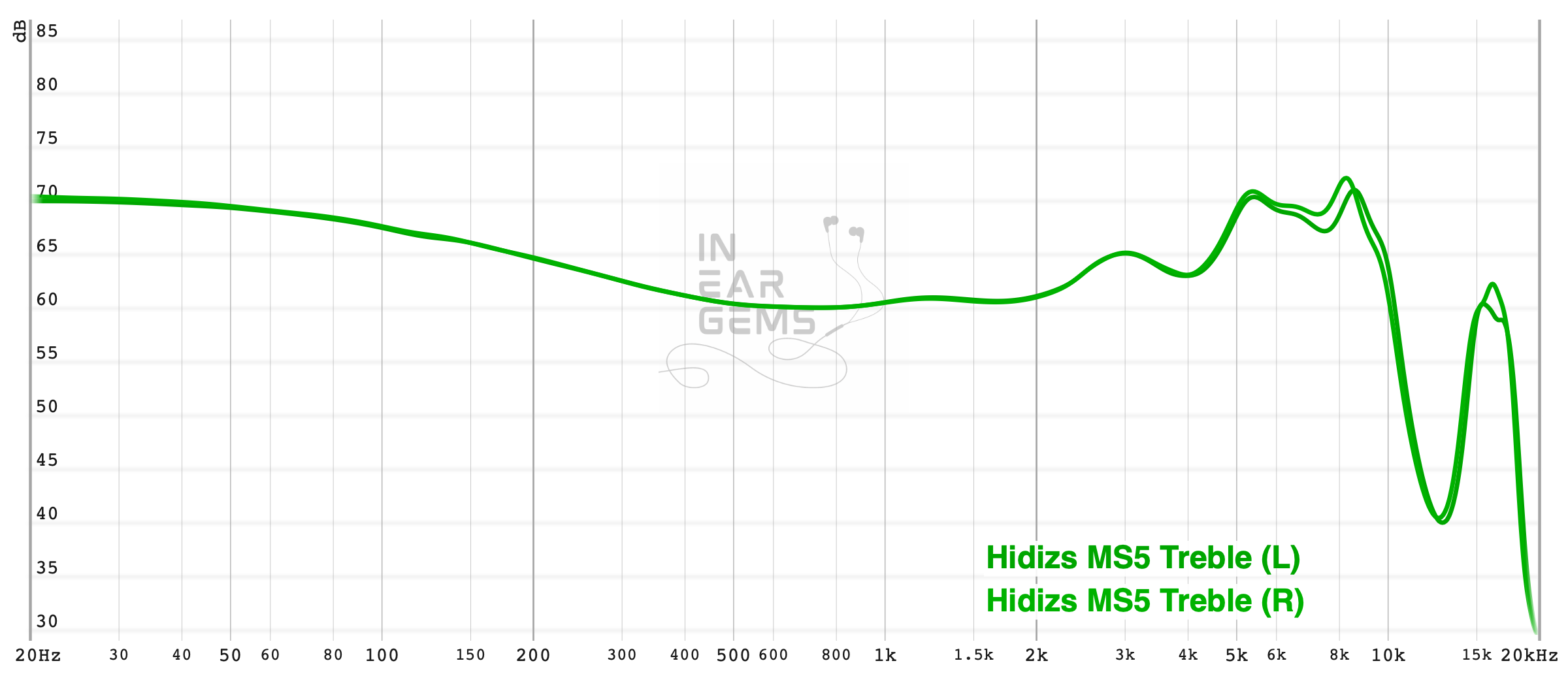
Tonality or “tuning” is where objectivity and subjectivity meet. Objectivity exists in the squiggly lines above, called Frequency Response (FR) graphs. They are created by sweeping a signal from 20Hz to 20kHz and measuring the corresponding loudness coming from an IEM. Unless a human operator deliberately tampers with the microphone or the data, FR does not care about the price or prestige of an IEM and, therefore, is “objective.”
However, human listeners are not microphones. Our ears and brain interpret the sound and decide whether it is “enjoyable.” It is also beneficial to remember that when you play a note on a musical instrument, multiple sounds (fundamental and harmonic) appear simultaneously and mix together. Achieving a life-like balance between frequencies and adding a tasteful amount of imbalance (“colouring the sound”) is the hallmark of an excellent tonality.
The overall tonality of MS5 can be described as U-shaped. It has prominent (sub)bass, prominent (mid)treble, and relatively neutral midrange.
It means that if I listen to music performed by a rock band, such as Hotel California by the Eagles, I can hear prominent kicks and bass guitar. I can also hear cymbals cutting through the mix. The vocal and guitars (midrange) are sandwiched in the middle. However, as MS5 is U-shaped rather than V-shaped, all midrange instruments sound natural. There is only a hint of warmth due to the 3dB boost at 250Hz. This presentation differs from aggressive V-shaped IEMs that boost the bass to 500Hz or 1000Hz, making vocals thick and muffled.
MS5’s midrange is more laidback than V-shaped or Harman/DF-tuned IEMs. Singers never feel so loud or close to your face (shouty). There is no grating feeling when they hit high notes, either. The reason is that the ear-gain boost is only 5dB rather than the usual 12.5dB of Harman-tuned IEMs. However, the midrange still feels correct because the ear gain is placed at the right place (peaking at 3kHz, no weird hump at 1.25kHz).
The bass of MS5 is as big as the graph suggests. It has good rumble, good decay, and a clean attack. I will discuss it further when we discuss percussion rendering and bass quality.
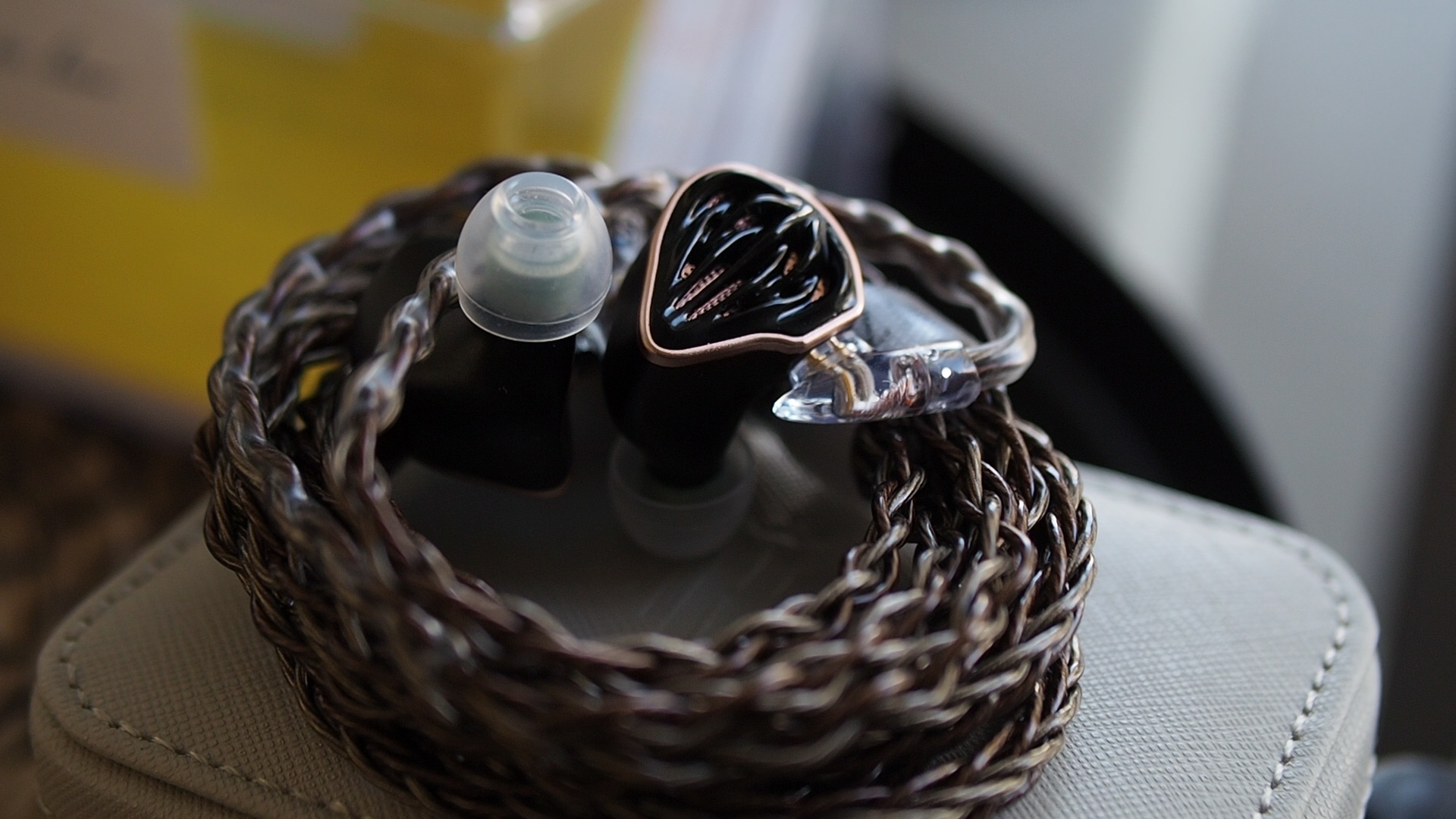
The most divisive aspect of MS5 would be the lower-treble and mid-treble response (around 5kHz to 8kHz). If you have been hanging around the lower-priced bracket of the IEM market where Harman-inspired IEMs reign, the treble tuning of MS5 would surprise you. With Harman-inspired IEM, the upper-midrange at 3kHz would be the highest frequency response point, bringing all the focus to the vocals and instruments. Cymbals and hi-hats would play a supporting role, easily seen by the subdued treble energy after the 3kHz peak.
The treble tuning of MS5 is more in-line with IEMs in the kilo buck market, notably the Noble Audio Kublai Khan and Unique Melody MEST series. These IEMs, including MS5, produce more zings and shimmering to the sound due to the emphasis on the frequency region where cymbals, hi-hats, and chimes exist. The focus at 5kHz also increases the snappiness of note attacks, such as the plucks of guitar strings or articulations of a bow on violin strings. Due to the subdued upper midrange (3kHz), this treble response is not tiring for me, even after long listening sessions.

However, the treble response of MS5 has two issues.
An imbalance between 3kHz, 5kHz, 8kHz, and 12kHz makes cymbals, hi-hats, and hand claps unnatural in some recordings. The problem is the most prominent with G.O.A.T. by Polyphia. The problem is also more noticeable with the stock tuning nozzle. Both the bass and treble nozzles reduce the oddity of MS5 treble to only a few tracks in my library, so I stick to the treble nozzles for extra zings and perceived clarity.
Second, there can be sibilance due to the emphasis at 8kHz. For instance, when I listen to Ed Sheeran’s Shivers, I hear sibilance when he hits words with SH, S, or X. However, I don’t hear the usual grating and shoutiness when he hits higher notes that I usually hear with, say, Moondrop Blessing 2, so it’s a trade-off.
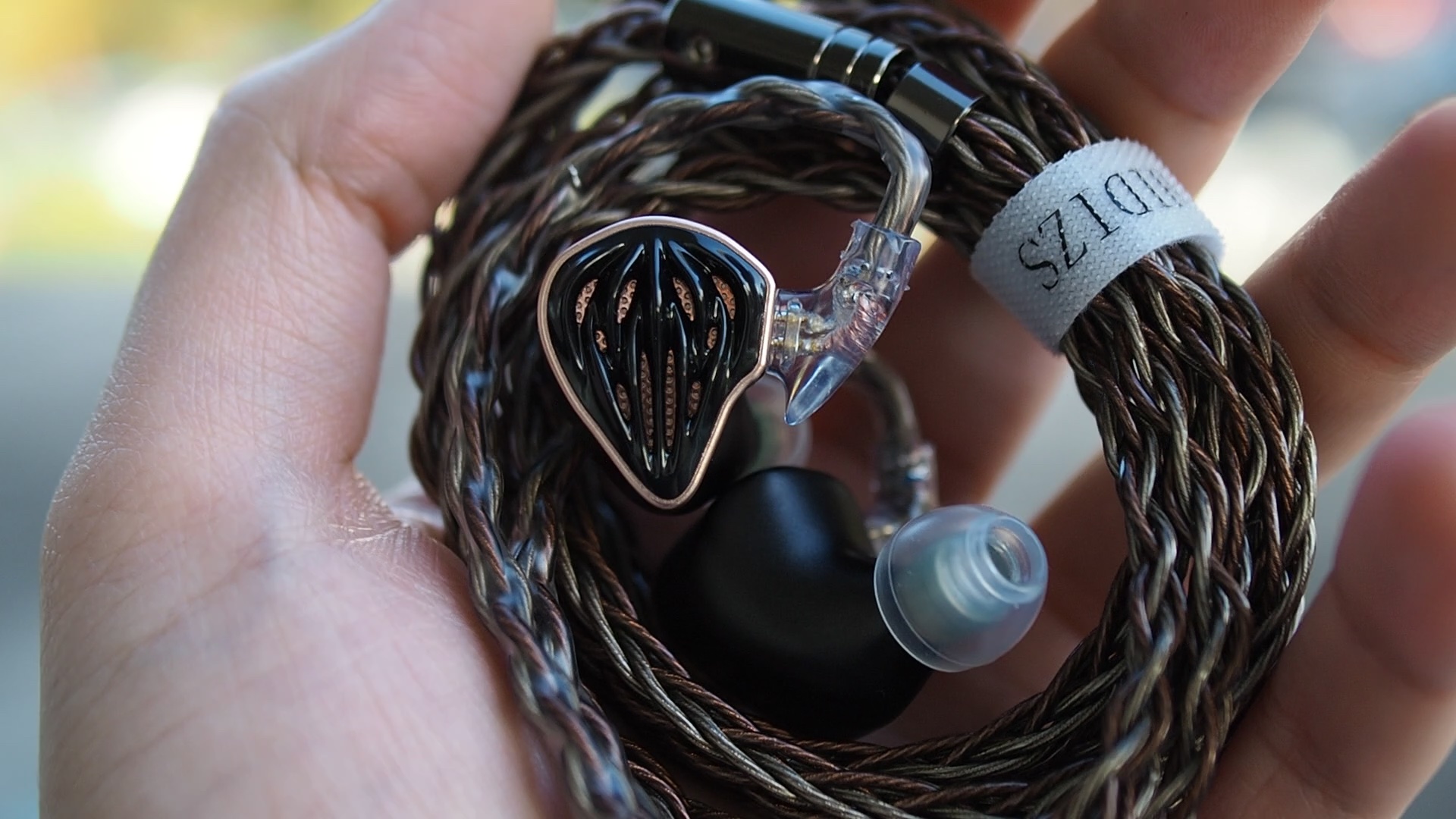
In summary, I can approach the tuning of MS5 from two angles. The first angle is the novelty, the daring to bring “wonky audiophile” tuning from the high-end market, creating one of the most refreshing listening experiences so far. From this angle, MS5 deserves a 4 or even 5.
On the other hand, handling treble leaves something to be desired, especially if you pay a lot of attention to your cymbals and hi-hats. I don’t have much problem because I mostly listen to orchestral and soundtracks, where the treble response brings great benefits. However, I acknowledge the potential problem for many listeners. Therefore, I rate the tonality of MS5 as Adequate - 3/5.

Resolution is a fascinating subject due to the difficulty of pinning down what it really is. To me, “resolution” can be separated into “macro” and “micro” levels. The “macro resolution” is synonymous with instrument separation. In general, if note attacks are very crisp and precise, musical instruments in a song would be distinctive even when they overlap on the soundstage. The “micro resolution” dictates how many details you can hear at the note tails. Many IEMs are good at macro- but mediocre at micro-resolution. A few are vice versa.
I find the resolution of MS5 to be at a good level. It does not leave me wanting when I use it as my everyday carry IEM, leaving the U12T and the Andromeda at home. It does not mean that MS5 has reached the top-of-the-line (TOTL) level of resolution, but it does a great job with my library of orchestral and soundtracks.

The macro resolution of MS5 is within the same level as Blessing 2. For instance, when I listen to the Presto movement of Vivaldi’s Summer violin concerto, I can separate and track individual instruments without too much effort. In direct A/B tests, the improvement in depth and separation of MS5 compared to Moondrop Aria (3/5 - Average) is easily noticed, even without paying attention. The difference between MS5 and Blessing 2 is much more challenging to spot. MS5’s soundstage has more depth, so the instruments seem more separated. Blessing 2, on the other hand, has a crunchy feeling to the note attacks, creating an illusion of more defined musical notes. Both MS5 and Blessing 2 feel congested and less separated when compared directly to the Andromeda 2020 and the U12T with Presto.
The micro resolution of MS5 is noticeably better than Blessing 2, approaching the Andromeda level. For instance, when I listen to the Flute Partita in A minor, I can hear more nuances, such as breaths, the air within the tubes, and the pressing of pads and valves with both MS5 and the Andromeda. With Blessing 2, I feel like a weak blur filter is applied to the music, smoothening the micro details that I can hear with other IEMs. The U12T is one step ahead with more details in room reverberation and air.
In summary, I would still place MS5’s resolution around Blessing 2’s level: 4/5 - Good. Yes, the micro details of MS5 are a bit better. However, you would likely pay more attention to the macro details/separation in everyday, casual listening. On that aspect, MS5 can be better than Blessing 2 but does not enter the TOTL level (5/5) yet.
MS5 has a satisfying bass response. The amount of bass is high, and the quality of the bass does not disappoint.
For instance, when I listen to Skyrim’s main theme (Dragonborn), I feel a strong sense of rumble due to the war drums used by the orchestra throughout the recording. I can also hear the clear attacks of notes on the bass drum rather than a continuous but dull rumble provided by some sub-bass-focused IEMs.
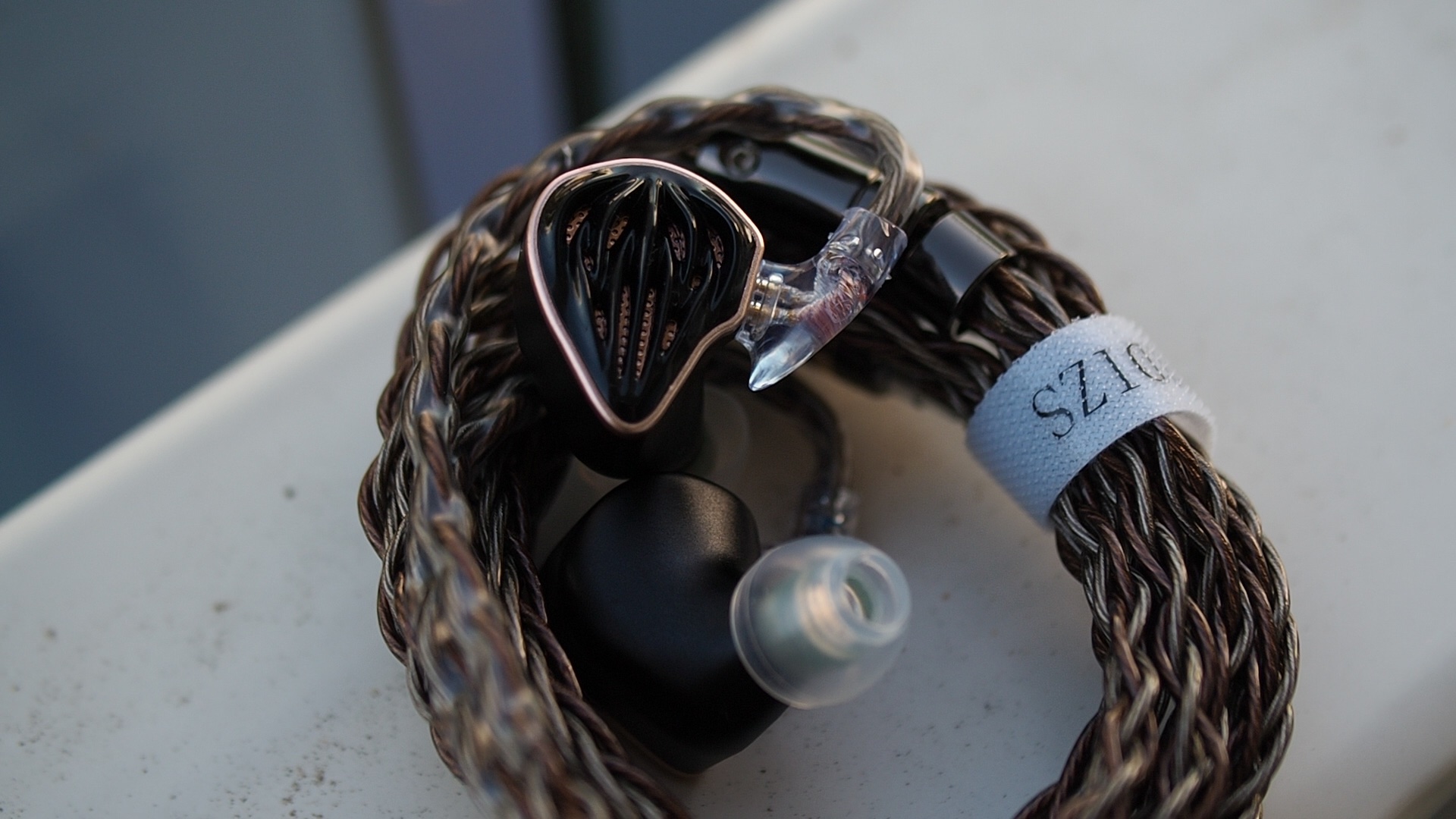
Another good example is the iconic opening of Hotel California (1994 live version). I can hear clear attacks from the kick drum, with noticeable rumble and resonance of the bass across the soundstage. Due to the balance between bass and midrange, MS5 even out punches and out rumbles my U12T. At the same time, I can hear a clear separation between the kicks and the bass guitar.
In summary, the bass presentation of MS5 is somewhere between the lean and precise U12T and the all-out bass of IEMs like Final Audio E5000. It is indulgent and satisfying without being sloppy. 5/5 - Excellent.

Stereo imaging or “soundstage” is a psychoacoustic illusion that different recording elements appear at various locations inside and around your head. Your brain creates based on the cues in the recording, which are enhanced or diminished by your IEMs, DAC, and amplifier. Some IEMs present a wide but flat soundstage. Some present a “3D” soundstage with layering, depth, and height. In rare cases, with some specific songs, some IEMs can trick you into thinking that the sound comes from the environment (a.k.a., “holographic”)
Soundstage imaging is another bright spot of MS5’s presentation. Due to the laidback midrange and the treble peak in the “air” region, MS5 has a spacious soundstage. Singers, bands, and orchestras take a few steps back from my head. The sense of layering between closer and further away instruments is also prominent.
With both the presto movement of Vivaldi’s Summer and G.O.A.T. by Polyphia, I can immediately hear more depth and layering when switching from Aria and Blessing 2 to MS5. Not only the whole stage is less in my face, but the distance between closer and farther instruments is also more pronounced, making the music less congested. Due to the 8kHz emphasis, MS5 also has a strong sense of height. For instance, cymbals and hi-hats can appear from above my head with some recordings.
The instrument placement of MS5 is quite close to Andromeda 2020. However, the Andromeda is more incisive and precise. The furthest layer of the stage, such as the cheers in Hotel California, is also a bit further away and more “holographic” with Andromeda.
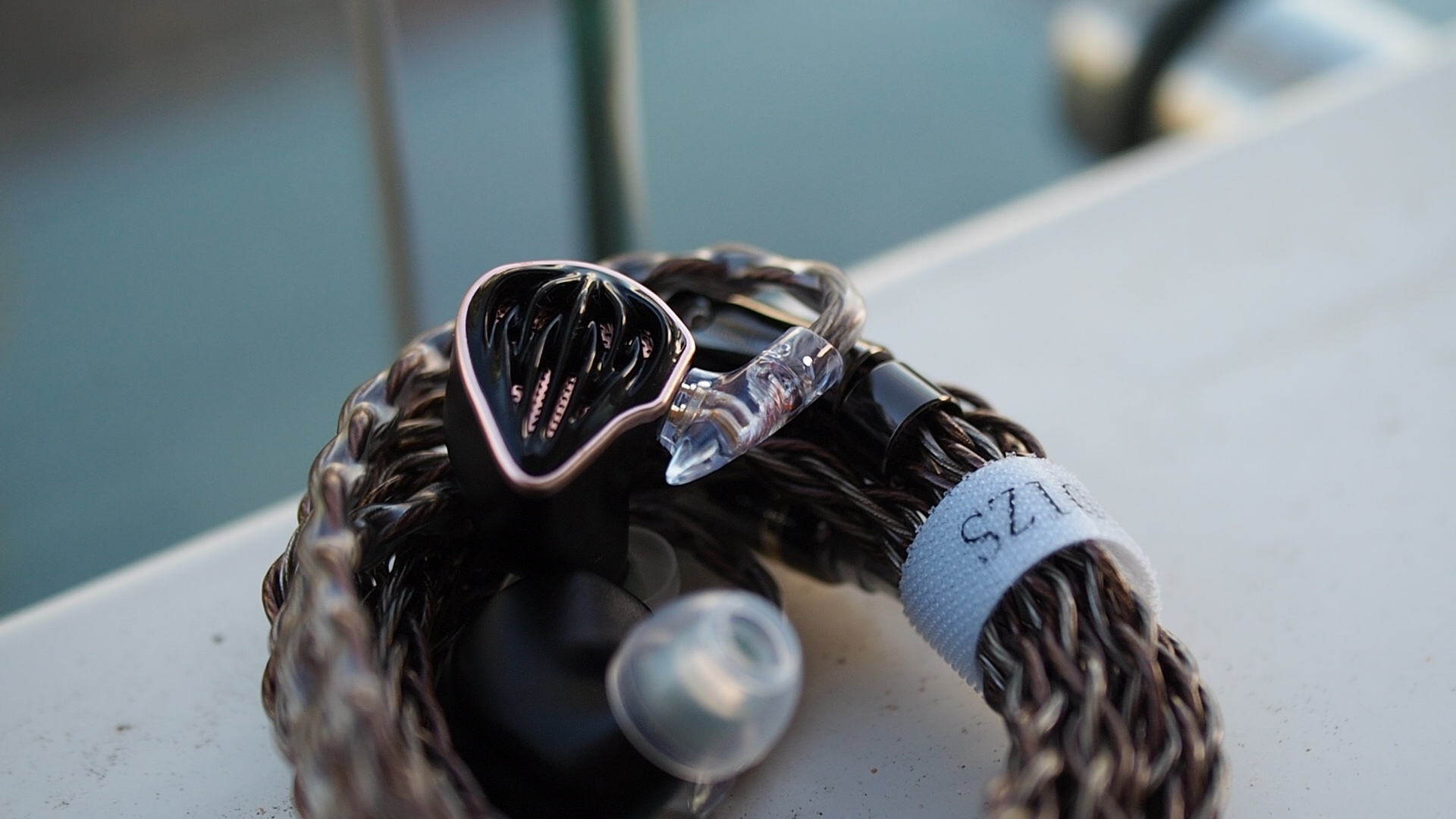
I also used MS5 to play some games and watch some FPS gameplay. The IEM provides strong localisation ability. I can pinpoint the direction and distance of gunshots. The only limitation I can think of is the accuracy of the height information. However, this issue is only prominent when I A/B MS5 directly against Andromeda.
In summary, the soundstage imaging capability of MS5 is a solid step up from the usual “good” level, represented by the Moondrop Blessing 2. However, it needs a bit more precision and perhaps extra energy in the upper treble region to truly capture that holographic illusion of the TOTL level. 4.5/5 - Very Good.
Pros:

Updated: April 8, 2023
Today, we look at the upcoming flagship of the Hidizs IEM line, the MS5. Sporting a 1+4 configuration, does MS5 has what it takes to enter the ultra-competitive “mid-fi” bracket. Let’s talk about IEM.
If you prefer to listen rather than read my review, you can find a detailed review on YouTube here:
If you prefer reading and skimming, read on, my friends.
Forewords
- My review aims to tell you where they are within a consistent and simple scale from 1 (poor) to 5 (outstanding). Scores are assigned by A/B tests against benchmark IEMs, regardless of the retail price.
- I focus on the poorly-defined yet important “technical performance”, such as resolution, soundstage, and imaging.
- Ranking list and measurement database are on my IEM review blog.
- This review is based on a review sample from Hidizs (Thank you!). I have no affiliation with or financial interest in Hidizs.
- The unit will retail for $399 here: https://tinyurl.com/4a254759. Pre-sale event starts from EST 2023.4.21 12:00am at a discount price of $379. Hidizs offers you additional 5% discount on top of the already discount price if you use the following discount code during the pre-sale event: INEARGEMS5OFF
Specs

- Driver: 1DD (10mm) + Sonion 17A003 + Sonion 2389 + Sonion E50DT (2 BA in one unit)
- Connector Type: 2-pin
- Impedance: 5.3ohm
- Sensitivity: 104dB
Non-sound Aspects
As you can see in my unboxing video, the accessories that come with MS5 is generous. I was particularly impressed by the cable. It is not the softest cable due to its thickness, but the wires and the braiding look and feel high quality. Unfortunately, the cable terminates with a 3.5mm. As far as I know, Hidizs does not offer an option to get MS5 with a 4.4mm cable.
Despite the quality, the cable was where I had the most problem with the fit and comfort of MS5. Simply put, the ear hooks on the cable are too aggressive that they pinch my ears hard and press the ear pieces against my outer ears. My left ear started to hurt after one hour. I might remove the ear hooks to salvage the cable since it is high-quality.

Besides the cable, I have no other fit and comfort issues to report. The earpieces are medium-sized and have long nozzles. I used my own Spin Fit W1 tips and opted for a shallower fit, mitigating any comfort issues and extending the soundstage width. I had no pressure build-up or vacuum feeling in long listening sessions.
The isolation of MS5 is more than expected, given the generous venting on the faceplates. I’m not sure whether the grills on the faceplates are for acoustic tuning or just for decoration. I can use these IEMs on commute without increasing the volume.
How it sounds
Sources for listening tests:- Fiio K7 (for all A/B tests)
- Shanling M6 Ultra
- Hidizs S9 Pro
All listening was done with the Treble nozzle and Spin Fit W1 ear tips. I listen at a medium-low level. Volume is adjusted so that the focal vocals and instruments are clear unless overwhelming bass or treble peaks prevent me from doing so.
Tonality and Timbre: 3/5 - Average
Frequency response of MS5. Measurements were done with an IEC-711-compliant coupler and might only be compared with other measurements from this same coupler. Visit my graph database for more comparisons.
Tonality or “tuning” is where objectivity and subjectivity meet. Objectivity exists in the squiggly lines above, called Frequency Response (FR) graphs. They are created by sweeping a signal from 20Hz to 20kHz and measuring the corresponding loudness coming from an IEM. Unless a human operator deliberately tampers with the microphone or the data, FR does not care about the price or prestige of an IEM and, therefore, is “objective.”
However, human listeners are not microphones. Our ears and brain interpret the sound and decide whether it is “enjoyable.” It is also beneficial to remember that when you play a note on a musical instrument, multiple sounds (fundamental and harmonic) appear simultaneously and mix together. Achieving a life-like balance between frequencies and adding a tasteful amount of imbalance (“colouring the sound”) is the hallmark of an excellent tonality.
The overall tonality of MS5 can be described as U-shaped. It has prominent (sub)bass, prominent (mid)treble, and relatively neutral midrange.
It means that if I listen to music performed by a rock band, such as Hotel California by the Eagles, I can hear prominent kicks and bass guitar. I can also hear cymbals cutting through the mix. The vocal and guitars (midrange) are sandwiched in the middle. However, as MS5 is U-shaped rather than V-shaped, all midrange instruments sound natural. There is only a hint of warmth due to the 3dB boost at 250Hz. This presentation differs from aggressive V-shaped IEMs that boost the bass to 500Hz or 1000Hz, making vocals thick and muffled.
MS5’s midrange is more laidback than V-shaped or Harman/DF-tuned IEMs. Singers never feel so loud or close to your face (shouty). There is no grating feeling when they hit high notes, either. The reason is that the ear-gain boost is only 5dB rather than the usual 12.5dB of Harman-tuned IEMs. However, the midrange still feels correct because the ear gain is placed at the right place (peaking at 3kHz, no weird hump at 1.25kHz).
The bass of MS5 is as big as the graph suggests. It has good rumble, good decay, and a clean attack. I will discuss it further when we discuss percussion rendering and bass quality.

The most divisive aspect of MS5 would be the lower-treble and mid-treble response (around 5kHz to 8kHz). If you have been hanging around the lower-priced bracket of the IEM market where Harman-inspired IEMs reign, the treble tuning of MS5 would surprise you. With Harman-inspired IEM, the upper-midrange at 3kHz would be the highest frequency response point, bringing all the focus to the vocals and instruments. Cymbals and hi-hats would play a supporting role, easily seen by the subdued treble energy after the 3kHz peak.
The treble tuning of MS5 is more in-line with IEMs in the kilo buck market, notably the Noble Audio Kublai Khan and Unique Melody MEST series. These IEMs, including MS5, produce more zings and shimmering to the sound due to the emphasis on the frequency region where cymbals, hi-hats, and chimes exist. The focus at 5kHz also increases the snappiness of note attacks, such as the plucks of guitar strings or articulations of a bow on violin strings. Due to the subdued upper midrange (3kHz), this treble response is not tiring for me, even after long listening sessions.

However, the treble response of MS5 has two issues.
An imbalance between 3kHz, 5kHz, 8kHz, and 12kHz makes cymbals, hi-hats, and hand claps unnatural in some recordings. The problem is the most prominent with G.O.A.T. by Polyphia. The problem is also more noticeable with the stock tuning nozzle. Both the bass and treble nozzles reduce the oddity of MS5 treble to only a few tracks in my library, so I stick to the treble nozzles for extra zings and perceived clarity.
Second, there can be sibilance due to the emphasis at 8kHz. For instance, when I listen to Ed Sheeran’s Shivers, I hear sibilance when he hits words with SH, S, or X. However, I don’t hear the usual grating and shoutiness when he hits higher notes that I usually hear with, say, Moondrop Blessing 2, so it’s a trade-off.

In summary, I can approach the tuning of MS5 from two angles. The first angle is the novelty, the daring to bring “wonky audiophile” tuning from the high-end market, creating one of the most refreshing listening experiences so far. From this angle, MS5 deserves a 4 or even 5.
On the other hand, handling treble leaves something to be desired, especially if you pay a lot of attention to your cymbals and hi-hats. I don’t have much problem because I mostly listen to orchestral and soundtracks, where the treble response brings great benefits. However, I acknowledge the potential problem for many listeners. Therefore, I rate the tonality of MS5 as Adequate - 3/5.
Resolution, Detail, Separation: 4/5 - Good

Resolution is a fascinating subject due to the difficulty of pinning down what it really is. To me, “resolution” can be separated into “macro” and “micro” levels. The “macro resolution” is synonymous with instrument separation. In general, if note attacks are very crisp and precise, musical instruments in a song would be distinctive even when they overlap on the soundstage. The “micro resolution” dictates how many details you can hear at the note tails. Many IEMs are good at macro- but mediocre at micro-resolution. A few are vice versa.
I find the resolution of MS5 to be at a good level. It does not leave me wanting when I use it as my everyday carry IEM, leaving the U12T and the Andromeda at home. It does not mean that MS5 has reached the top-of-the-line (TOTL) level of resolution, but it does a great job with my library of orchestral and soundtracks.

The macro resolution of MS5 is within the same level as Blessing 2. For instance, when I listen to the Presto movement of Vivaldi’s Summer violin concerto, I can separate and track individual instruments without too much effort. In direct A/B tests, the improvement in depth and separation of MS5 compared to Moondrop Aria (3/5 - Average) is easily noticed, even without paying attention. The difference between MS5 and Blessing 2 is much more challenging to spot. MS5’s soundstage has more depth, so the instruments seem more separated. Blessing 2, on the other hand, has a crunchy feeling to the note attacks, creating an illusion of more defined musical notes. Both MS5 and Blessing 2 feel congested and less separated when compared directly to the Andromeda 2020 and the U12T with Presto.
The micro resolution of MS5 is noticeably better than Blessing 2, approaching the Andromeda level. For instance, when I listen to the Flute Partita in A minor, I can hear more nuances, such as breaths, the air within the tubes, and the pressing of pads and valves with both MS5 and the Andromeda. With Blessing 2, I feel like a weak blur filter is applied to the music, smoothening the micro details that I can hear with other IEMs. The U12T is one step ahead with more details in room reverberation and air.
In summary, I would still place MS5’s resolution around Blessing 2’s level: 4/5 - Good. Yes, the micro details of MS5 are a bit better. However, you would likely pay more attention to the macro details/separation in everyday, casual listening. On that aspect, MS5 can be better than Blessing 2 but does not enter the TOTL level (5/5) yet.
Percussion Rendering: 5/5 - Excellent
Percussion rendering reflects how well the tuning and technical performance of an IEM work together to recreate realistic soundof a drum set. Good drum hits have a crisp attack (controlled by frequencies from 4kHz to 6kHz), full body (midbass frequencies around 200Hz), and physical sensation (sub-bass frequencies around 50Hz). Good technical performance (“fast” driver) ensures that bass notes can be loud yet detailed. IEMs that cannot control bass very well tend to reduce the bass’ loudness to prevent muddiness.MS5 has a satisfying bass response. The amount of bass is high, and the quality of the bass does not disappoint.
For instance, when I listen to Skyrim’s main theme (Dragonborn), I feel a strong sense of rumble due to the war drums used by the orchestra throughout the recording. I can also hear the clear attacks of notes on the bass drum rather than a continuous but dull rumble provided by some sub-bass-focused IEMs.

Another good example is the iconic opening of Hotel California (1994 live version). I can hear clear attacks from the kick drum, with noticeable rumble and resonance of the bass across the soundstage. Due to the balance between bass and midrange, MS5 even out punches and out rumbles my U12T. At the same time, I can hear a clear separation between the kicks and the bass guitar.
In summary, the bass presentation of MS5 is somewhere between the lean and precise U12T and the all-out bass of IEMs like Final Audio E5000. It is indulgent and satisfying without being sloppy. 5/5 - Excellent.
Stereo Imaging (Soundstage): 4.5/5 - Very Good

Stereo imaging or “soundstage” is a psychoacoustic illusion that different recording elements appear at various locations inside and around your head. Your brain creates based on the cues in the recording, which are enhanced or diminished by your IEMs, DAC, and amplifier. Some IEMs present a wide but flat soundstage. Some present a “3D” soundstage with layering, depth, and height. In rare cases, with some specific songs, some IEMs can trick you into thinking that the sound comes from the environment (a.k.a., “holographic”)
Soundstage imaging is another bright spot of MS5’s presentation. Due to the laidback midrange and the treble peak in the “air” region, MS5 has a spacious soundstage. Singers, bands, and orchestras take a few steps back from my head. The sense of layering between closer and further away instruments is also prominent.
With both the presto movement of Vivaldi’s Summer and G.O.A.T. by Polyphia, I can immediately hear more depth and layering when switching from Aria and Blessing 2 to MS5. Not only the whole stage is less in my face, but the distance between closer and farther instruments is also more pronounced, making the music less congested. Due to the 8kHz emphasis, MS5 also has a strong sense of height. For instance, cymbals and hi-hats can appear from above my head with some recordings.
The instrument placement of MS5 is quite close to Andromeda 2020. However, the Andromeda is more incisive and precise. The furthest layer of the stage, such as the cheers in Hotel California, is also a bit further away and more “holographic” with Andromeda.

I also used MS5 to play some games and watch some FPS gameplay. The IEM provides strong localisation ability. I can pinpoint the direction and distance of gunshots. The only limitation I can think of is the accuracy of the height information. However, this issue is only prominent when I A/B MS5 directly against Andromeda.
In summary, the soundstage imaging capability of MS5 is a solid step up from the usual “good” level, represented by the Moondrop Blessing 2. However, it needs a bit more precision and perhaps extra energy in the upper treble region to truly capture that holographic illusion of the TOTL level. 4.5/5 - Very Good.
Conclusion
MS5 represents yet another interesting interpretation of a good IEM from Hidizs. Its tuning takes a page from some kilo-buck TOTL IEMs with a neutral-warm midrange, strong bass, and strong treble presence. The resolution is good, whilst the soundstage imaging and bass response are excellent. Suppose your library consists primarily of orchestral music and soundtracks that benefit from space and bass. In that case, the Hidizs MS5 receives a high recommendation from this reviewer.Pros:
- Different tonality than the usual Harman-inspired IEMs
- Excellent bass response
- Very good soundstage imaging
- Laid-back midrange
- Timbre of cymbals, hi-hats, and other high-pitched instruments
- Might be too much treble for some listeners
- The stock cable might be uncomfortable for some listeners

Updated: April 8, 2023
Last edited:
o0genesis0o
Headphoneus Supremus
Pros: Natural, lush, balanced tonality
Excellent resolution
Excellent soundstage imaging
Snappy, clean, impactful bassline
Replaceable cable
Price
Excellent resolution
Excellent soundstage imaging
Snappy, clean, impactful bassline
Replaceable cable
Price
Cons: The lush midrange can reduce perceived resolution with some tracks
The sub-bass rumble is only adequate
No isolation
The sub-bass rumble is only adequate
No isolation
Last year, I had a chance encounter with the modern flathead earbuds in the form of Fiio FF3. That unassuming piece of head-fi gear ended up receiving the first ever “seal of approval” from me thanks to a combination of headphone-like presentation, unmatched comfort, and affordability.
Still, FF3 was far from perfect. Great DIY earbuds such as TGXear Serratus showed that earbuds can match the bests of IEMs, and Fiio’s earbuds still have quite a bit of work ahead of them.
After many delays, Fiio’s answer in the form of FF5 is finally here. Can it surpass the great FF3? Can it reach the lofty standard set by DIYers?
Let’s talk about FF5.
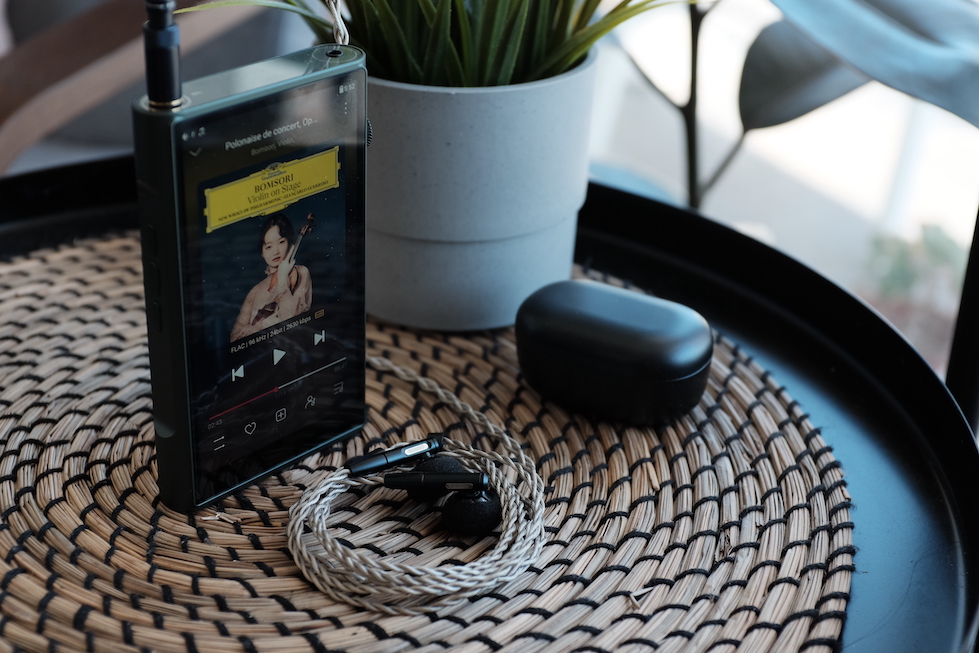
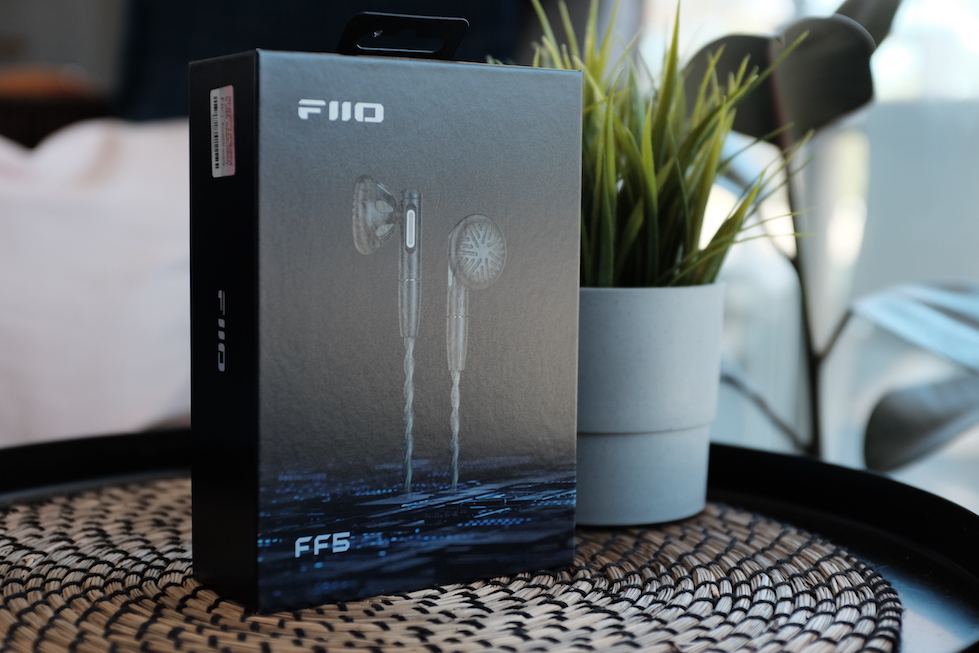
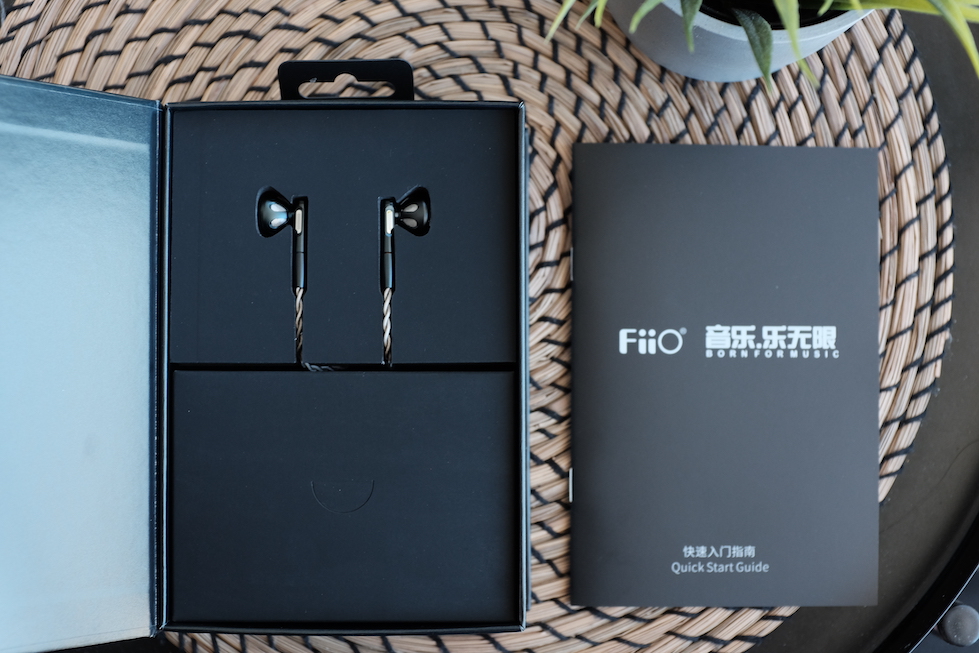
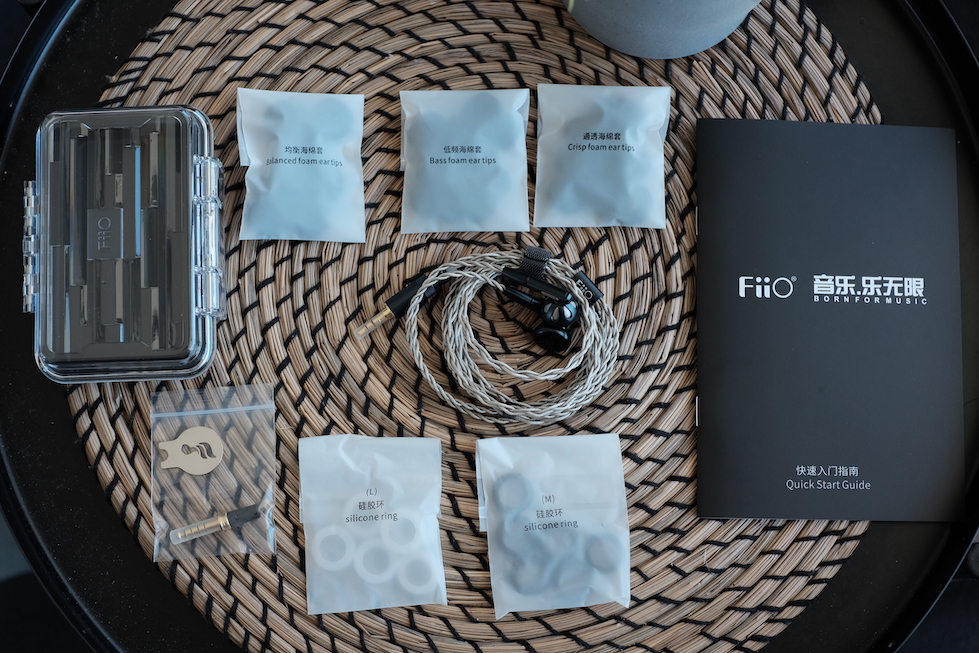
Fiio FF5 is a midrange offering within the main product line of Fiio. The packaging is consistent with the expectation for such a product. Gone with the light and quaint boxes of the Fiio/Jade audio product line. The thick cardboard box with magnetic closure and holographic product image made a return with FF5.
The accessories are generous and practical, as usual. You have three types of foams, two types of silicone rings, a hard case, an MMCX tool, and a brand-new cable with interchangeable plugs.

The cable features 4 cores with a different braiding style than the previous Fiio stock cable. The braiding is tight, so the cable can be pretty stiff and hold memory if you roll it up for storage. Luckily, the cable can be straightened easily, does not kink, and does not coil upon itself. Even though FF5’s cable is not as good as the incredibly soft silver cable of TGXear Serratus, it is still a vast improvement over the fixed cable of FF3.
The interchangeable plug feature has also been reworked. Changing the plugs is more straightforward than the last-gen Fiio cable.
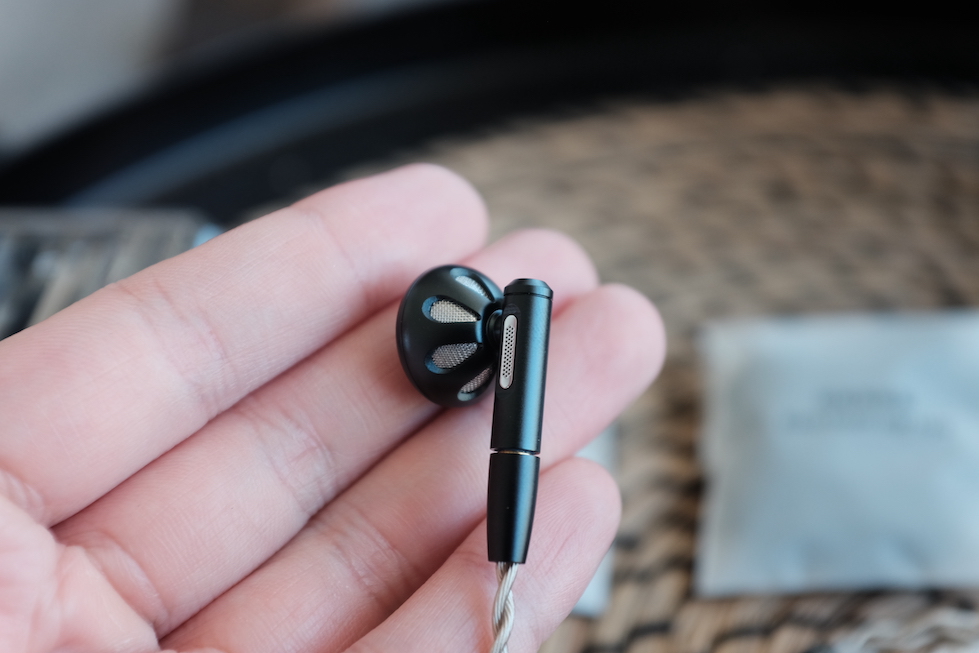
Unlike many DIY earbuds, FF5 utilises brand new shells rather than relying on the legendary MX500 shells or the myriad of OEM shells found at the DIY parts store. FF5’s shells are among the most open ones I have ever seen. The bass tubes that made FF3 unique are integrated into the stems with the MMCX female connectors. In general, serious shells for serious sound.
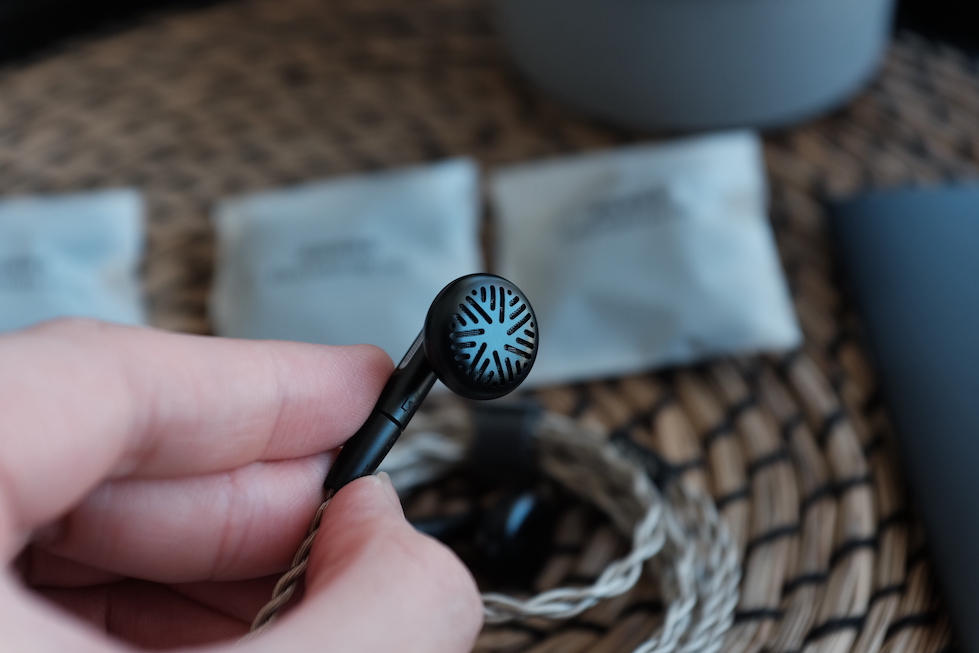
The faceplate of FF5 is identical to that of FF3. You can see the drivers through the openings.
Even though FF5 and other flathead earbuds look like IEMs, it’s more accurate to think about them as open-back headphones. Assume that you are in a noisy office. No matter how loud you turn up the volume, you wouldn’t be able to drown out the noise. In fact, the music would be mixed with the ambient noise to create a loud, distracting mess.
Where FF5 shines is media enjoyment in a quiet environment. I could (and did) spend hours with FF5 continuously without tiring out my ears. It works well with high-brow music listening, casual YouTube video watching and video games.
Local FLAC files ripped from CDs or bought from Qobuz were used for most casual listening and A/B tests. My playlist for A/B tests can be found on Apple Music here.
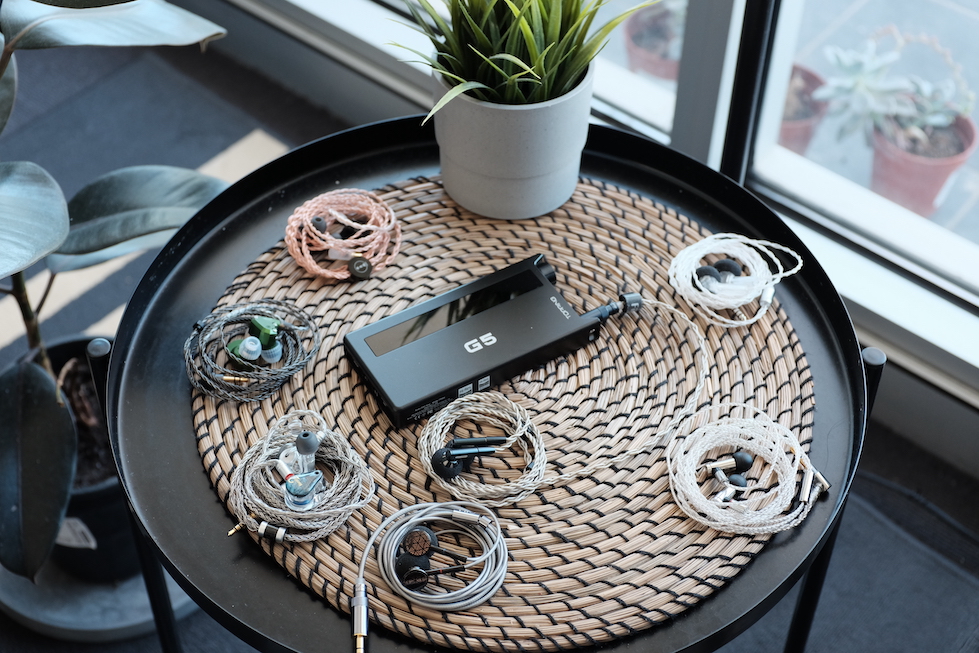
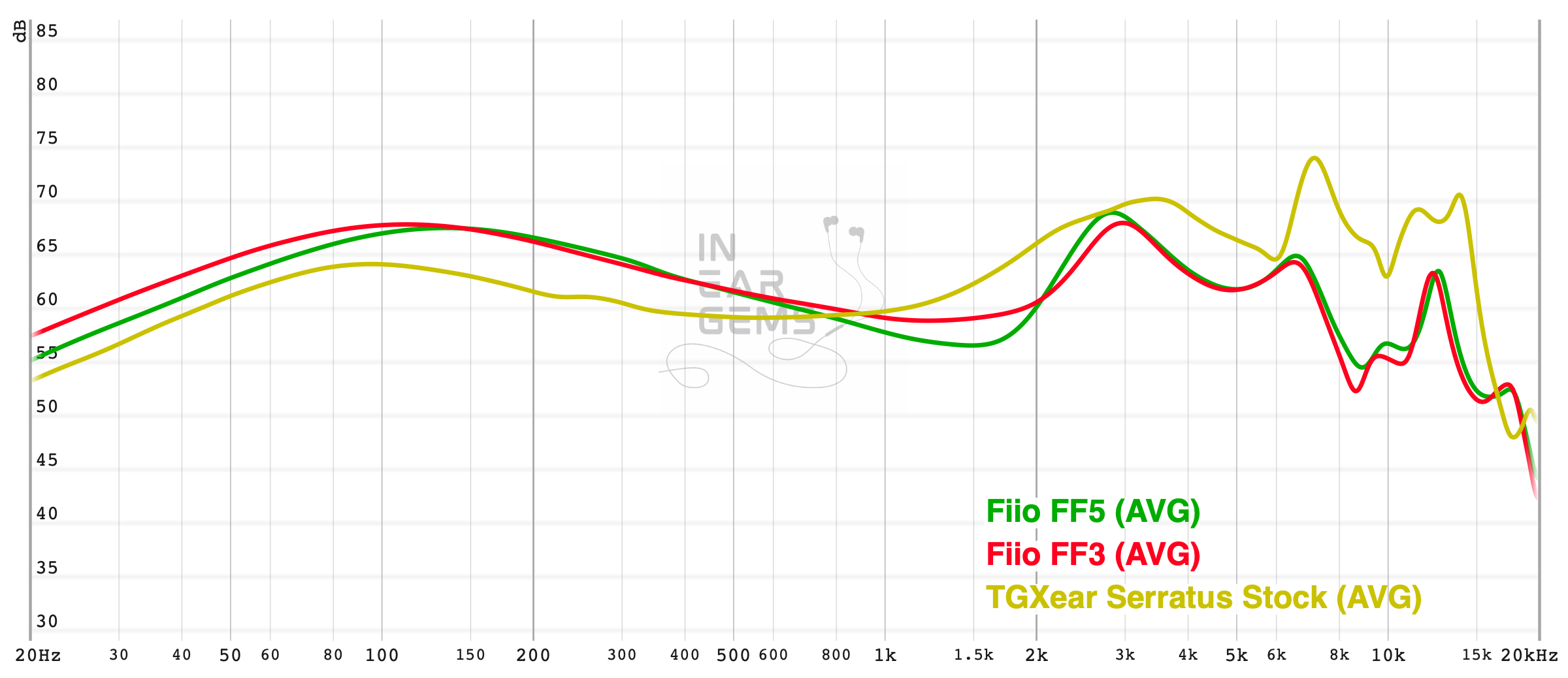
Tonality or “tuning” is where objectivity and subjectivity meet. Objectivity exists in the squiggly lines above, called Frequency Response (FR) graphs. They are created by sweeping a signal from 20Hz to 20kHz and measuring the corresponding loudness coming from an IEM. Unless a human operator deliberately tampers with the microphone or the data, FR does not care about the price or prestige of an IEM and, therefore, is “objective.”
However, human listeners are not microphones. Our ears and brain interpret the sound and decide whether it is “enjoyable.” It is also beneficial to remember that when you play a note on a musical instrument, multiple sounds (fundamental and harmonic) appear simultaneously and mix together. Achieving a life-like balance between frequencies and adding a tasteful amount of imbalance (“colouring the sound”) is the hallmark of an excellent tonality.
Alright, enough with the theory. How does FF5 sound?
Natural. Lush. Pleasant. Balanced but not academic.
By natural, I mean none of the instruments or vocals raise an “uncanny feeling.” For instance, when I listen to the beautiful “The Dragonborn Comes” by the Swedish Radio Symphony Orchestra and Sabina Zweiacker, I found that all instruments in the orchestra sound like how they are supposed to. The piccolo at 2:25 cuts through the orchestra easily but does not become overly harsh or piercing. French horns at 3:00 have gravitas and “weight” but still maintain brilliance rather than becoming muted. The bassoons at 4:25 sound like bassy reed instruments, not other bass instruments.
Being natural does not mean that FF5 is “flat.” In classic Fiio’s fashion, the lower-midrange of FF5, around 250Hz to 500Hz, is boosted above flat to give music a sense of lushness and warmth. For instance, Aurora’s vocal in Rasputin shows a noticeable layer of warmth compared to flat-tuned earbuds such as TGXear Serratus. Whether such lushness is beneficial is another question. On the one hand, the warmth makes acoustic music more pleasant, more “emotional”, or, dare I say, more “musical.” On the other hand, it covers up some details in delicate vocals such as Aurora’s and Zweiacker’s.
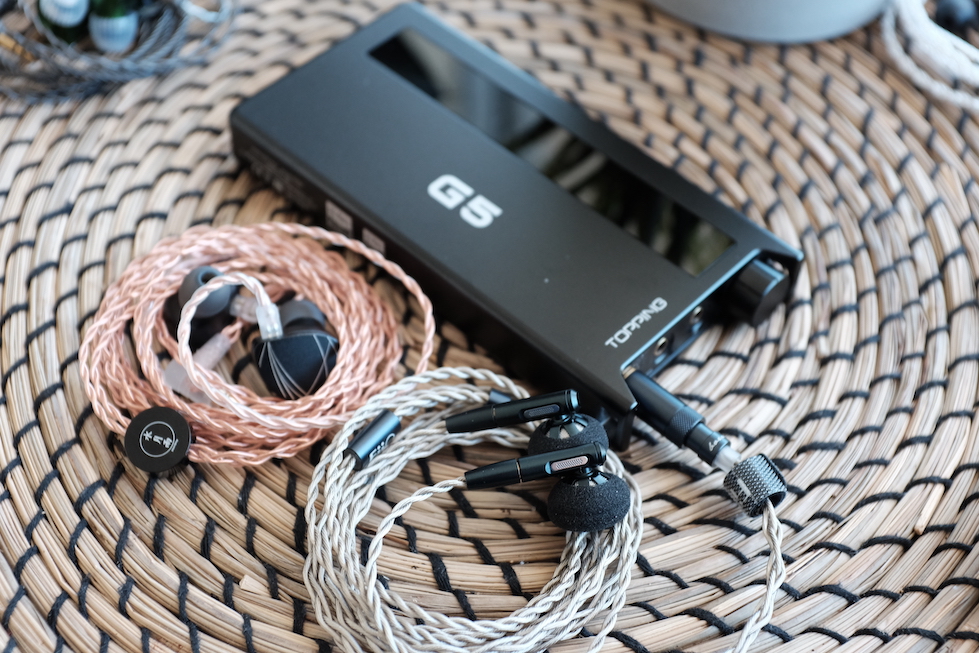
The above discussion brings me to a related point: “balanced but not academic.” The tonality of FF5 is “balanced” because it maintains a reasonable “ratio” between the lows, the mids, and the highs. But it has extra lows and thus extra highs to counter-balance. An “academic-tuned” IEM or earbuds like Serratus aim to have no extra anywhere. You can think of tuning IEMs or earbuds as seasoning a soup pot. If you add a lot of salt, you need to add a lot of sugar to balance and either end up with richly seasoned or overly seasoned soup depending on how much salt and sugar you use. Alternatively, you can have balanced but plain soup if you add little of anything.
Let’s quickly touch on the bass and treble before moving on.
The theme of natural and balanced continues. Let’s use Eye of the Tiger as an example. Gone is the big, woolly bass of FF3. Drum roll from 2:20 and the subsequent drum pattern show the apparent improvement of FF5. The loudness of the kick drum was reduced, preventing it from overshadowing the bass guitar and the rest of the drum kit. As a result, I can clearly hear the snare drums accompanying the kicks, making every beat crisper and more distinct. Yes, the bass is less “boom boom”, but the overall bass response is noticeably cleaner and still fun.
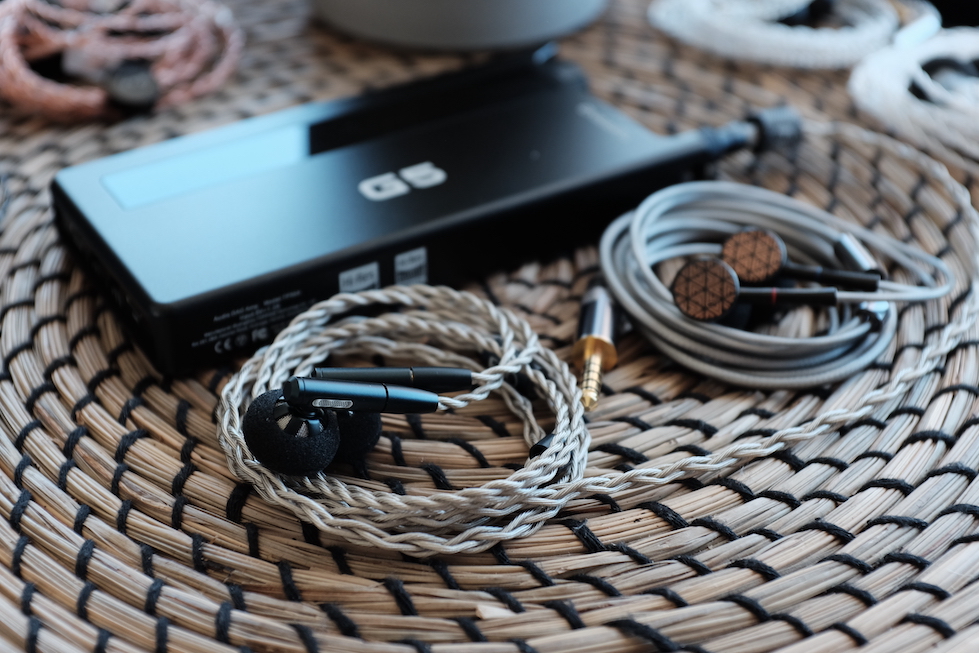
Another advantage of FF5 is that cymbal can finally cut through the mix now that the thick cloud of kick drum has been dispersed. The cymbals also show an excellent balance between the stick impacts, the metallic sound of cymbals, and the “splash” at the end of a cymbal crash. The result is a full-bodied, detailed, and enjoyable cymbal sound.
I’m also glad to report that FF5 has excellent control over sibilance (the piecing “sss” sound in vocals). Ed Sheeran’s home concert, especially the first song, Shiver, is a torture test for most IEMs and earbuds, where the mighty TGXear Serratus failed hard. However, there was no uncomfortable harshness to be found with FF5. I’m not saying that FF5 makes everything dull and dark to hide sibilance. It pushes the treble right there to the cliff without going over.
In summary, I consider FF5’s tonality 4.5/5. It achieves a balanced and natural yet pleasant tuning. Half the point was deducted because I found that the warmth does hinder the resolution of FF5.

Resolution is a fascinating subject due to the difficulty of pinning down what it really is. To me, “resolution” can be separated into “macro” and “micro” levels. The “macro resolution” is synonymous with instrument separation. In general, if note attacks are very crisp and precise, musical instruments in a song would be more distinctive rather than mushing together. The “micro resolution” dictates how many details you can hear at the note tails. Many IEMs are good at macro- but mediocre at micro-resolution. A few are vice versa.
Fiio FF5 is an accomplished earbud when it comes to resolution. Let’s take One Winged Angel as an example. It is immediately apparent that FF5 has an excellent macro-level resolution, given how I can easily distinguish all instruments playing simultaneously. The orchestra does not overlap.
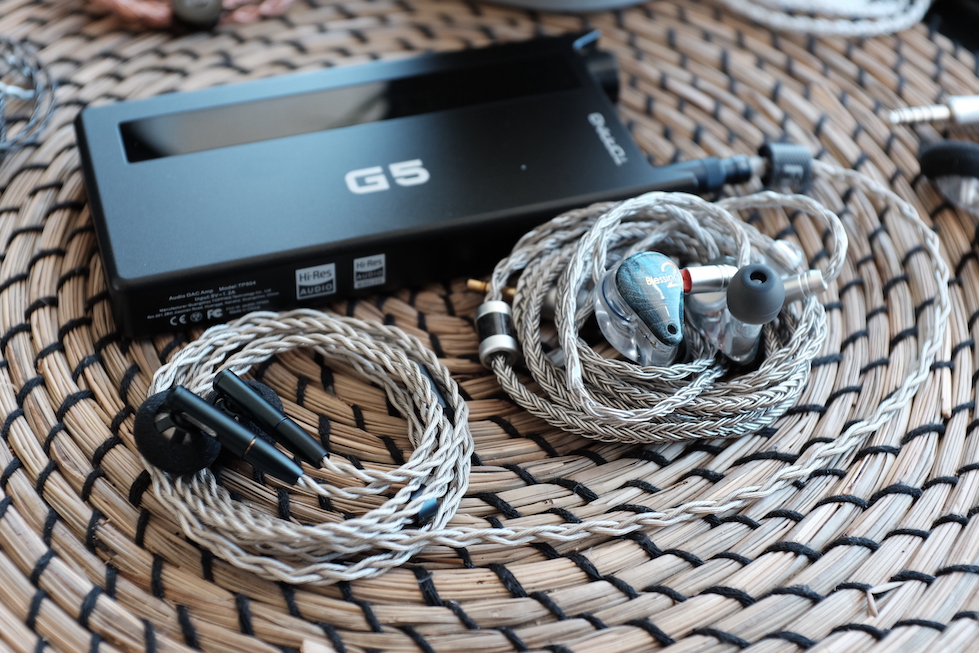
The micro resolution, or detail retrieval, reveals itself in the realism of the instruments. For instance, from 2:30, when instruments come after the cello, I can easily distinguish the oboes, flutes, and clarinets from each other. It might sound funny, but such instrument distinguishing is only sometimes possible among the IEMs I have reviewed. The texture and nuances in hand claps and the choir from 3:30 also indicate excellent micro details.
Alright, so we know that FF5 is resolving. But is it “good” (Blessing 2 level) or “excellent” (Serratus level)?
In back-to-back A/B tests, it was immediately audible that FF5 out-resolve the venerable Blessing 2. The contrast is stark in the section from 3:30 to the end. Even when I boosted the volume to Blessing 2 to be noticeably louder than FF5 to give it an advantage, it was still less textured and detailed than FF5.
How about Serratus? With One Winged Angel, I was surprised that it was easier to distinguish instruments, and the music was richer in detail with FF5. This piece is where the warmth plays well on FF5, whilst the mid-treble peak wreaks havoc on the Serratus side. When I listen to do A/B test with Aurora’s cover of Rasputin, the situation reverses with the advantage on the Serratus side. Taking away the tuning difference, I suspect that the difference between FF5 and Serratus is minimal. Both are comfortably ahead of the mid-fi IEMs.
In summary: 5/5 - Excellent resolution.

As I have alluded to above, FF5 renders drum kits with great finesse. It has no problem with acoustic drums and digital bass in commercial music. Bass lines are always crisp, clear, and detailed.
Where it loses out is the sub-bass rumble. Take Skyrim’s main theme (Dragonborn) as an example. Throughout this song, there are regular rumbles created by the war drums. FF5, similarly to other flathead earbuds, fails to convey this energy in the music.
How does FF5 compare to Serratus? It’s moot. FF5 has more “boom boom”, and Serratus has more “brrrr” rumbles. An IEM with good sub-woofers smokes both.
In conclusion, 4/5 - Good.

Earbuds, by nature, have great soundstage sizes. Therefore, the true challenge is the incisiveness or accuracy of the placement of instruments on the stage.
Let’s put the obvious out of the way first. Using the One Winged Angel as an example (again, I know!), FF5’s soundstage is larger, more spread out, and more open compared to Blessing 2.
The relevant (and important) match here is between FF5 and the reigning champion: Serratus. Both earbuds place instruments on the soundstage with pinpoint accuracy. Both can produce a sense of height, meaning cymbals and hand claps float slightly above my head. At a glance, Serratus feels more “spread out” because of its flatter tuning, whilst the bass floor of FF5 makes every more cohesive. At the end of the day, it’s a matter of taste. Both are excellent performers.
In summary, 5/5 - Excellent.

FF5 is an easy-to-drive earbud.
Of course, desktop sources like Fiio K7 and good DAPs like Shanling M6U can unlock all the soundstage imaging potential of FF5. However, you can get nearly all the sound quality from FF5 from anything decent (meaning no audibly poor sources like bad phones and laptops).
All of the impressions above were made using Fiio K7.

Complete improvement.
The only reason to get FF3 is that you like a big, woolly bass (which, I admit, is quite pleasant and unique). If you are concerned about the clarity, resolutions, and similar aspects, FF5 is a winner.
Not having to use the FF3’s cable is my biggest win.

Serratus has, rightfully so, achieved cult status. You can see fans declaring it outperforms multi-kilo buck IEMs. There are some elements of truth there.
If you are looking for something like Serratus but “better”, look elsewhere. It’s best to think of Serratus as a high-brow, academic, tonally-correct earbud. On the other hand, FF5 is unabashedly casual and fun whilst remaining balanced and correct. The thinner tonality might give a first impression that Serratus is more technically proficient. However, in detailed A/B tests, FF5 and Serratus more or less perform on the same level.
The choice between FF5 is Serratus is a matter of preference, both in terms of sound and in terms of whom you want to support with your hard-earned cash. An established manufacturer vs a fellow Head-Fier.
Should you get FF5? Well, can you find a quiet listening space? If the answer is yes, then yes. IEGems seal of approval and highest recommendation.
Pros:
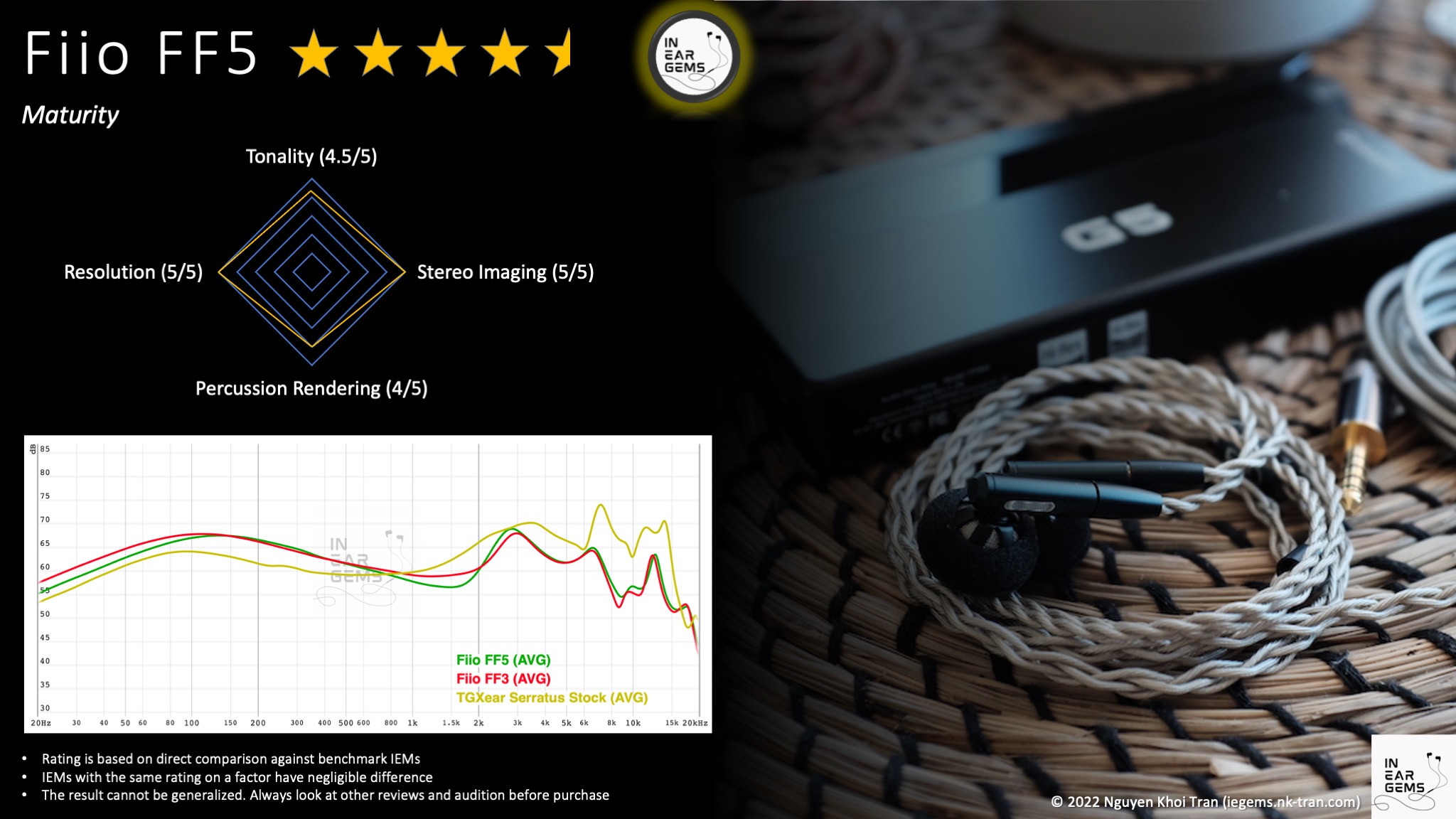
Updated: January 20, 2023
Still, FF3 was far from perfect. Great DIY earbuds such as TGXear Serratus showed that earbuds can match the bests of IEMs, and Fiio’s earbuds still have quite a bit of work ahead of them.
After many delays, Fiio’s answer in the form of FF5 is finally here. Can it surpass the great FF3? Can it reach the lofty standard set by DIYers?
Let’s talk about FF5.

Forewords
- This review is based on a sample provided by Fiio (Thank you!). I have no affiliation with or financial interest in Fiio. FF5 retails for around AUD $190.
- You should treat this review as the subjective impressions of an audio geek rather than an “objective truth” about the IEM. Your experience with any IEM would change depending on your DAC/AMP, music library, ear tips, and listening volume.
- I rate IEMs by A/B testing them against a few benchmark IEMs, regardless of price point. This approach ensures the consistency of the ratings in my ranking list. It means that if two IEMs score the same, they perform more or less similar.
- I believe that great IEMs are the ones that can achieve multiple difficult things simultaneously: (1) high resolution (meaning lines of music are crisp, clear, easy to follow and full of texture), (2) 3D soundstage with a strong sense of depth, (3) bold and natural bass with a physical rumble, (4) natural timbre, (5) relaxing and comfortable tonality.
- Ranking list and measurement database can be found on my IEM review blog.
Specs
- Driver: 14.2mm dynamic driver (PU gasket + Carbon-based Diaphragm)
- Connector Type: MMCX
- Impedance: 45ohm@1kHz
- Sensitivity: 106mW/dB@1kHz
Non-sound Aspects



Fiio FF5 is a midrange offering within the main product line of Fiio. The packaging is consistent with the expectation for such a product. Gone with the light and quaint boxes of the Fiio/Jade audio product line. The thick cardboard box with magnetic closure and holographic product image made a return with FF5.
The accessories are generous and practical, as usual. You have three types of foams, two types of silicone rings, a hard case, an MMCX tool, and a brand-new cable with interchangeable plugs.

The cable features 4 cores with a different braiding style than the previous Fiio stock cable. The braiding is tight, so the cable can be pretty stiff and hold memory if you roll it up for storage. Luckily, the cable can be straightened easily, does not kink, and does not coil upon itself. Even though FF5’s cable is not as good as the incredibly soft silver cable of TGXear Serratus, it is still a vast improvement over the fixed cable of FF3.
The interchangeable plug feature has also been reworked. Changing the plugs is more straightforward than the last-gen Fiio cable.

Unlike many DIY earbuds, FF5 utilises brand new shells rather than relying on the legendary MX500 shells or the myriad of OEM shells found at the DIY parts store. FF5’s shells are among the most open ones I have ever seen. The bass tubes that made FF3 unique are integrated into the stems with the MMCX female connectors. In general, serious shells for serious sound.

The faceplate of FF5 is identical to that of FF3. You can see the drivers through the openings.
Use Cases
If you intend to buy FF5 for “blocking out the world.” Don’t.Even though FF5 and other flathead earbuds look like IEMs, it’s more accurate to think about them as open-back headphones. Assume that you are in a noisy office. No matter how loud you turn up the volume, you wouldn’t be able to drown out the noise. In fact, the music would be mixed with the ambient noise to create a loud, distracting mess.
Where FF5 shines is media enjoyment in a quiet environment. I could (and did) spend hours with FF5 continuously without tiring out my ears. It works well with high-brow music listening, casual YouTube video watching and video games.
How it sounds
Sources for listening tests:- Fiio K7 (for all A/B tests)
- Shanling M6 Ultra
- Topping G5
- Hidizs S9 Pro
Local FLAC files ripped from CDs or bought from Qobuz were used for most casual listening and A/B tests. My playlist for A/B tests can be found on Apple Music here.

Tonality and Timbre: 4.5/5 - Very Good
Frequency response of FF5 against FF3 and Serratus. Measurements were done with an IEC-711-compliant coupler and might only be compared with other measurements from this same coupler. Earbuds measurements below 1kHz are very unreliable. Visit my graph database for more comparisons.
Tonality or “tuning” is where objectivity and subjectivity meet. Objectivity exists in the squiggly lines above, called Frequency Response (FR) graphs. They are created by sweeping a signal from 20Hz to 20kHz and measuring the corresponding loudness coming from an IEM. Unless a human operator deliberately tampers with the microphone or the data, FR does not care about the price or prestige of an IEM and, therefore, is “objective.”
However, human listeners are not microphones. Our ears and brain interpret the sound and decide whether it is “enjoyable.” It is also beneficial to remember that when you play a note on a musical instrument, multiple sounds (fundamental and harmonic) appear simultaneously and mix together. Achieving a life-like balance between frequencies and adding a tasteful amount of imbalance (“colouring the sound”) is the hallmark of an excellent tonality.
Alright, enough with the theory. How does FF5 sound?
Natural. Lush. Pleasant. Balanced but not academic.
By natural, I mean none of the instruments or vocals raise an “uncanny feeling.” For instance, when I listen to the beautiful “The Dragonborn Comes” by the Swedish Radio Symphony Orchestra and Sabina Zweiacker, I found that all instruments in the orchestra sound like how they are supposed to. The piccolo at 2:25 cuts through the orchestra easily but does not become overly harsh or piercing. French horns at 3:00 have gravitas and “weight” but still maintain brilliance rather than becoming muted. The bassoons at 4:25 sound like bassy reed instruments, not other bass instruments.
Being natural does not mean that FF5 is “flat.” In classic Fiio’s fashion, the lower-midrange of FF5, around 250Hz to 500Hz, is boosted above flat to give music a sense of lushness and warmth. For instance, Aurora’s vocal in Rasputin shows a noticeable layer of warmth compared to flat-tuned earbuds such as TGXear Serratus. Whether such lushness is beneficial is another question. On the one hand, the warmth makes acoustic music more pleasant, more “emotional”, or, dare I say, more “musical.” On the other hand, it covers up some details in delicate vocals such as Aurora’s and Zweiacker’s.

The above discussion brings me to a related point: “balanced but not academic.” The tonality of FF5 is “balanced” because it maintains a reasonable “ratio” between the lows, the mids, and the highs. But it has extra lows and thus extra highs to counter-balance. An “academic-tuned” IEM or earbuds like Serratus aim to have no extra anywhere. You can think of tuning IEMs or earbuds as seasoning a soup pot. If you add a lot of salt, you need to add a lot of sugar to balance and either end up with richly seasoned or overly seasoned soup depending on how much salt and sugar you use. Alternatively, you can have balanced but plain soup if you add little of anything.
Let’s quickly touch on the bass and treble before moving on.
The theme of natural and balanced continues. Let’s use Eye of the Tiger as an example. Gone is the big, woolly bass of FF3. Drum roll from 2:20 and the subsequent drum pattern show the apparent improvement of FF5. The loudness of the kick drum was reduced, preventing it from overshadowing the bass guitar and the rest of the drum kit. As a result, I can clearly hear the snare drums accompanying the kicks, making every beat crisper and more distinct. Yes, the bass is less “boom boom”, but the overall bass response is noticeably cleaner and still fun.

Another advantage of FF5 is that cymbal can finally cut through the mix now that the thick cloud of kick drum has been dispersed. The cymbals also show an excellent balance between the stick impacts, the metallic sound of cymbals, and the “splash” at the end of a cymbal crash. The result is a full-bodied, detailed, and enjoyable cymbal sound.
I’m also glad to report that FF5 has excellent control over sibilance (the piecing “sss” sound in vocals). Ed Sheeran’s home concert, especially the first song, Shiver, is a torture test for most IEMs and earbuds, where the mighty TGXear Serratus failed hard. However, there was no uncomfortable harshness to be found with FF5. I’m not saying that FF5 makes everything dull and dark to hide sibilance. It pushes the treble right there to the cliff without going over.
In summary, I consider FF5’s tonality 4.5/5. It achieves a balanced and natural yet pleasant tuning. Half the point was deducted because I found that the warmth does hinder the resolution of FF5.
Resolution, Detail, Separation: 5/5 - Excellent

Resolution is a fascinating subject due to the difficulty of pinning down what it really is. To me, “resolution” can be separated into “macro” and “micro” levels. The “macro resolution” is synonymous with instrument separation. In general, if note attacks are very crisp and precise, musical instruments in a song would be more distinctive rather than mushing together. The “micro resolution” dictates how many details you can hear at the note tails. Many IEMs are good at macro- but mediocre at micro-resolution. A few are vice versa.
Fiio FF5 is an accomplished earbud when it comes to resolution. Let’s take One Winged Angel as an example. It is immediately apparent that FF5 has an excellent macro-level resolution, given how I can easily distinguish all instruments playing simultaneously. The orchestra does not overlap.

The micro resolution, or detail retrieval, reveals itself in the realism of the instruments. For instance, from 2:30, when instruments come after the cello, I can easily distinguish the oboes, flutes, and clarinets from each other. It might sound funny, but such instrument distinguishing is only sometimes possible among the IEMs I have reviewed. The texture and nuances in hand claps and the choir from 3:30 also indicate excellent micro details.
Alright, so we know that FF5 is resolving. But is it “good” (Blessing 2 level) or “excellent” (Serratus level)?
In back-to-back A/B tests, it was immediately audible that FF5 out-resolve the venerable Blessing 2. The contrast is stark in the section from 3:30 to the end. Even when I boosted the volume to Blessing 2 to be noticeably louder than FF5 to give it an advantage, it was still less textured and detailed than FF5.
How about Serratus? With One Winged Angel, I was surprised that it was easier to distinguish instruments, and the music was richer in detail with FF5. This piece is where the warmth plays well on FF5, whilst the mid-treble peak wreaks havoc on the Serratus side. When I listen to do A/B test with Aurora’s cover of Rasputin, the situation reverses with the advantage on the Serratus side. Taking away the tuning difference, I suspect that the difference between FF5 and Serratus is minimal. Both are comfortably ahead of the mid-fi IEMs.
In summary: 5/5 - Excellent resolution.
Percussion Rendering: 4/5 - Good
Percussion rendering reflects how well the tuning and technical performance of an IEM work together to recreate realistic sound of a drum set. Good drum hits have a crisp attack (controlled by frequencies from 4kHz to 6kHz), full body (midbass frequencies around 200Hz), and physical sensation (sub-bass frequencies around 50Hz). Good technical performance (“fast” driver) ensures that bass notes can be loud yet detailed. IEMs that cannot control bass very well tend to reduce the bass’ loudness to prevent muddiness.

As I have alluded to above, FF5 renders drum kits with great finesse. It has no problem with acoustic drums and digital bass in commercial music. Bass lines are always crisp, clear, and detailed.
Where it loses out is the sub-bass rumble. Take Skyrim’s main theme (Dragonborn) as an example. Throughout this song, there are regular rumbles created by the war drums. FF5, similarly to other flathead earbuds, fails to convey this energy in the music.
How does FF5 compare to Serratus? It’s moot. FF5 has more “boom boom”, and Serratus has more “brrrr” rumbles. An IEM with good sub-woofers smokes both.
In conclusion, 4/5 - Good.
Stereo Imaging (Soundstage): 5/5 - Excellent
Stereo imaging or “soundstage” is a psychoacoustic illusion that different recording elements appear at various locations inside and around your head. Your brain creates based on the cues such as the loudness and phase differences between the left and right channels. Most IEMs do not differ significantly, nor can they compete with headphones or loudspeakers. However, some IEMs offer a more spacious soundstage than others. Best IEMs can create multiple layers of sound from closer to further away and make some instruments float slightly above your head.

Earbuds, by nature, have great soundstage sizes. Therefore, the true challenge is the incisiveness or accuracy of the placement of instruments on the stage.
Let’s put the obvious out of the way first. Using the One Winged Angel as an example (again, I know!), FF5’s soundstage is larger, more spread out, and more open compared to Blessing 2.
The relevant (and important) match here is between FF5 and the reigning champion: Serratus. Both earbuds place instruments on the soundstage with pinpoint accuracy. Both can produce a sense of height, meaning cymbals and hand claps float slightly above my head. At a glance, Serratus feels more “spread out” because of its flatter tuning, whilst the bass floor of FF5 makes every more cohesive. At the end of the day, it’s a matter of taste. Both are excellent performers.
In summary, 5/5 - Excellent.
Source Pairing

FF5 is an easy-to-drive earbud.
Of course, desktop sources like Fiio K7 and good DAPs like Shanling M6U can unlock all the soundstage imaging potential of FF5. However, you can get nearly all the sound quality from FF5 from anything decent (meaning no audibly poor sources like bad phones and laptops).
All of the impressions above were made using Fiio K7.
Some Comparisons
In this section, I compare FF5 with some relevant earbuds. You can use my ranking list to compare FF5 with others. Due to how I rank IEMs, if two IEMs score the same, they perform more or less similarly.Fiio FF3

Complete improvement.
The only reason to get FF3 is that you like a big, woolly bass (which, I admit, is quite pleasant and unique). If you are concerned about the clarity, resolutions, and similar aspects, FF5 is a winner.
Not having to use the FF3’s cable is my biggest win.
TGXear Serratus

Serratus has, rightfully so, achieved cult status. You can see fans declaring it outperforms multi-kilo buck IEMs. There are some elements of truth there.
If you are looking for something like Serratus but “better”, look elsewhere. It’s best to think of Serratus as a high-brow, academic, tonally-correct earbud. On the other hand, FF5 is unabashedly casual and fun whilst remaining balanced and correct. The thinner tonality might give a first impression that Serratus is more technically proficient. However, in detailed A/B tests, FF5 and Serratus more or less perform on the same level.
The choice between FF5 is Serratus is a matter of preference, both in terms of sound and in terms of whom you want to support with your hard-earned cash. An established manufacturer vs a fellow Head-Fier.
Conclusion
FF5 is a high-achiever from an old guard in the earbuds world dominated by DIY products. It has a natural, lush, balanced tonality. The big, fun bass of the predecessor FF3 has been tuned down, trading intensity for snappiness and clarity. The resolution has been improved across the board. FF5 is more than a match for many IEMs and some of the most excellent DIY earbuds.Should you get FF5? Well, can you find a quiet listening space? If the answer is yes, then yes. IEGems seal of approval and highest recommendation.
Pros:
- Natural, lush, balanced tonality
- Excellent resolution
- Excellent soundstage imaging
- Snappy, clean, impactful bassline
- Replaceable cable
- Price
- The lush midrange can reduce perceived resolution with some tracks
- The sub-bass rumble is only adequate
- No isolation

Updated: January 20, 2023
o0genesis0o
@JAnonymous5150 I guess the cable of FF3 is the most annoying aspect. I have been seriously considering ironing it  But I can see your point. FF3 is special. FF5 is yet another "tonally correct, balanced, detailed" bla bla bla. As someone who has experienced so many great buds like you, I don't think these are as impressive to you. In my case, FF5 earns a high score simply because how it performs in A/B tests. The recommendation is due to the price / performance ratio.
But I can see your point. FF3 is special. FF5 is yet another "tonally correct, balanced, detailed" bla bla bla. As someone who has experienced so many great buds like you, I don't think these are as impressive to you. In my case, FF5 earns a high score simply because how it performs in A/B tests. The recommendation is due to the price / performance ratio.
 But I can see your point. FF3 is special. FF5 is yet another "tonally correct, balanced, detailed" bla bla bla. As someone who has experienced so many great buds like you, I don't think these are as impressive to you. In my case, FF5 earns a high score simply because how it performs in A/B tests. The recommendation is due to the price / performance ratio.
But I can see your point. FF3 is special. FF5 is yet another "tonally correct, balanced, detailed" bla bla bla. As someone who has experienced so many great buds like you, I don't think these are as impressive to you. In my case, FF5 earns a high score simply because how it performs in A/B tests. The recommendation is due to the price / performance ratio.
JAnonymous5150
BTW, I took my second pair of FF3s, cut off the stems and drilled the holes to turn the into MMCX, but I was going slow because I was having my girl film and photograph to make a guide for the mod and I got interrupted and never ended up finishing. Aside from cleaning up the edges of the holes so the connectors will fit flush and the epoxy will bond, I just have to solder the connectors, mount them, and let them cure.
My plan is to try to finish when I go home for my birthday in a few weeks. I have three days at home so I'm looking to squeeze it in then and post the pics with a written guide and the video. It's not the easiest mod in the world, but it's doable. That said, I have pretty much gotten over any annoyance with my FF3s' cable anyways.
My plan is to try to finish when I go home for my birthday in a few weeks. I have three days at home so I'm looking to squeeze it in then and post the pics with a written guide and the video. It's not the easiest mod in the world, but it's doable. That said, I have pretty much gotten over any annoyance with my FF3s' cable anyways.
o0genesis0o
Headphoneus Supremus
Pros: + Beautiful design and comfortable fit
+ Excellent accessories
+ Natural and pleasant tonality
+ Good bass
+ Good resolution
+ Good soundstage and imaging
+ Excellent accessories
+ Natural and pleasant tonality
+ Good bass
+ Good resolution
+ Good soundstage and imaging
Cons: - The soundstage lacks a bit of depth
- Smooth presentation can hide some details
- Smooth presentation can hide some details
When approached by enthusiasts who have bitten the IEM bug, I always suggest exploring the “mid-fi” market. Typically priced around $500, these IEMs are truly high-end products that offer longevity and stability, unlike products from fast-paced $50 IEM market flooded with hype trains. Moreover, mid-fi IEMs are not exorbitantly expensive like the top-of-the-line models.
The original Dunu SA6, a definitive mid-fi IEM, has been a staple since its 2020 release. However, times have changed. Can the newly launched Dunu SA6 MkII live up to its predecessor’s legacy?
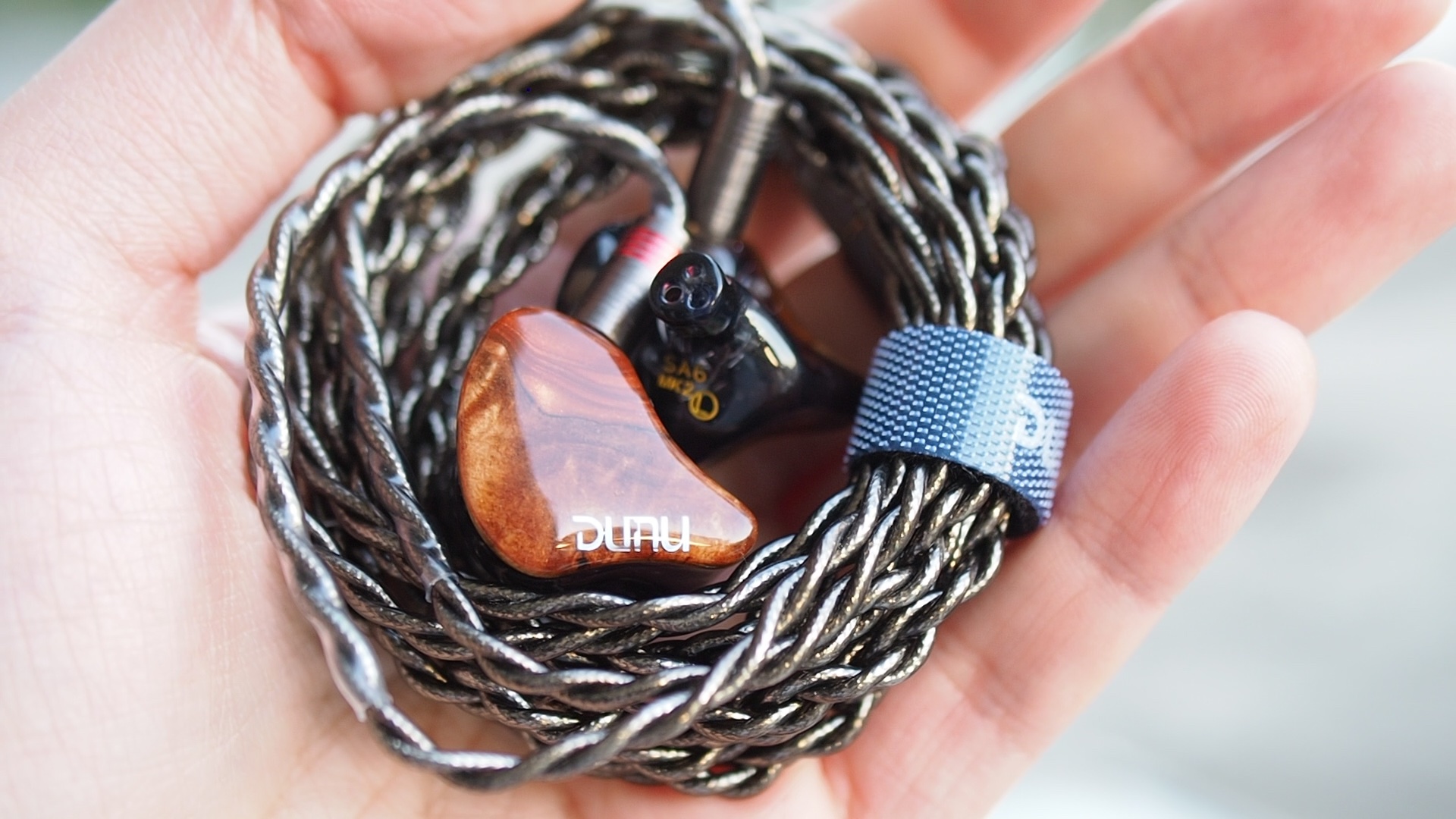
All of my listening was done with Spin Fit CP145 or W1 ear tips. I listen at a medium volume. I usually turn up the volume until the midrange is fully audible and detailed, unless a treble peak or overwhelming bass prevents me from doing so.
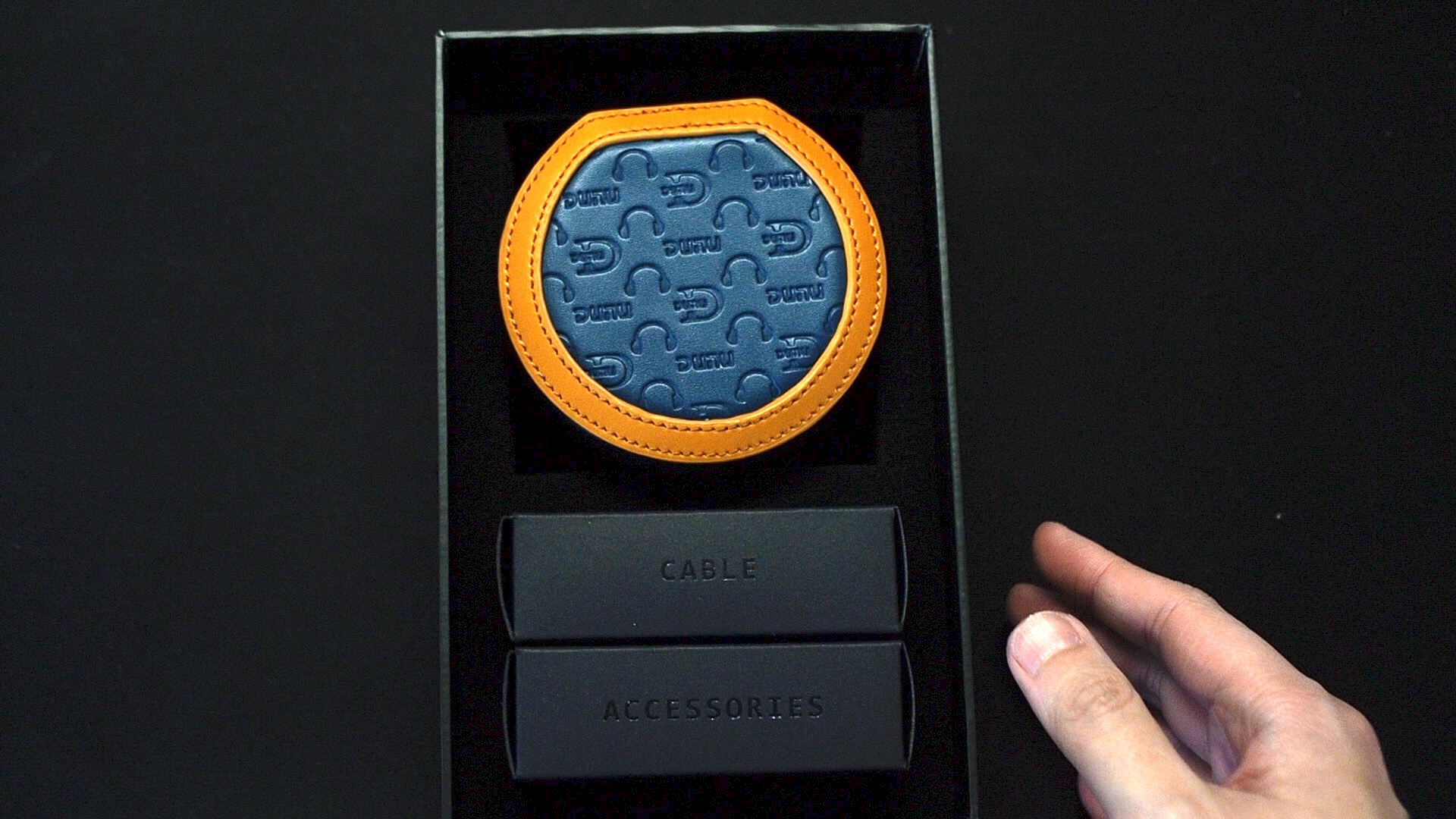
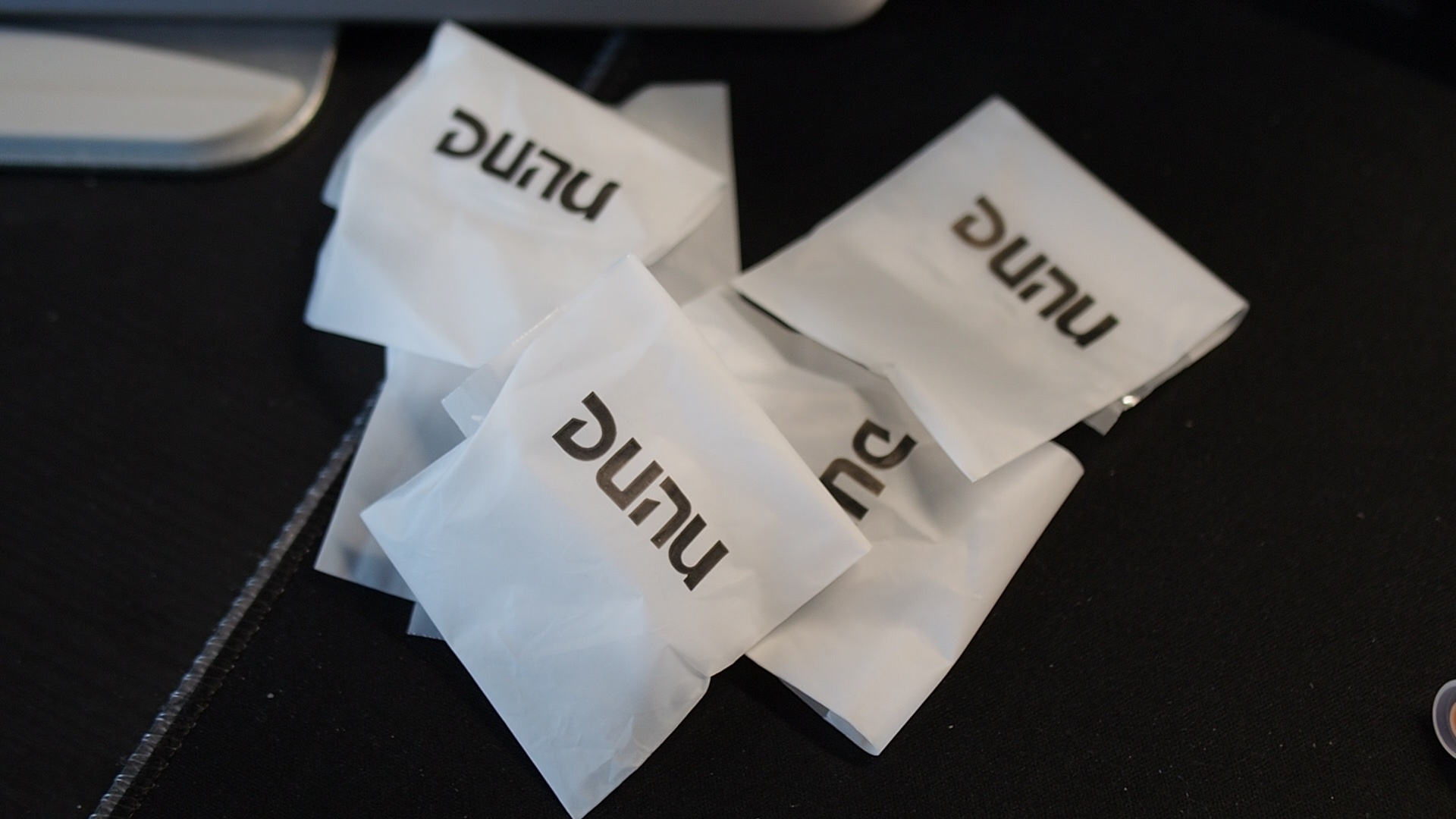
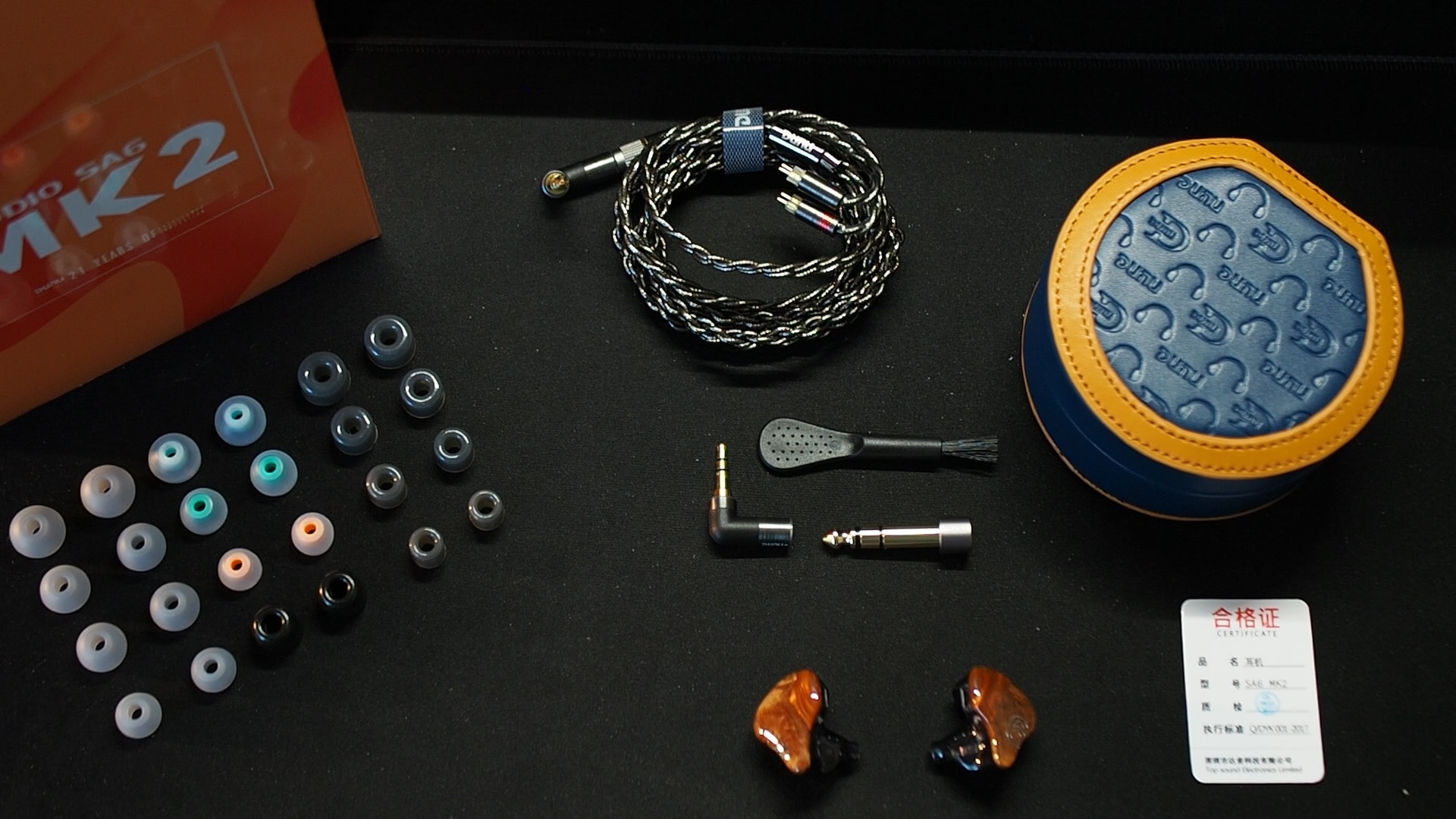
The included accessories of the SA6II are practical and abundant. It provides four types of ear tips, including foam and silicone options, along with Dunu’s candy ear tips and S&S ear tips. The carrying case stands out with its custom design and snap open lid, making it a unique addition.
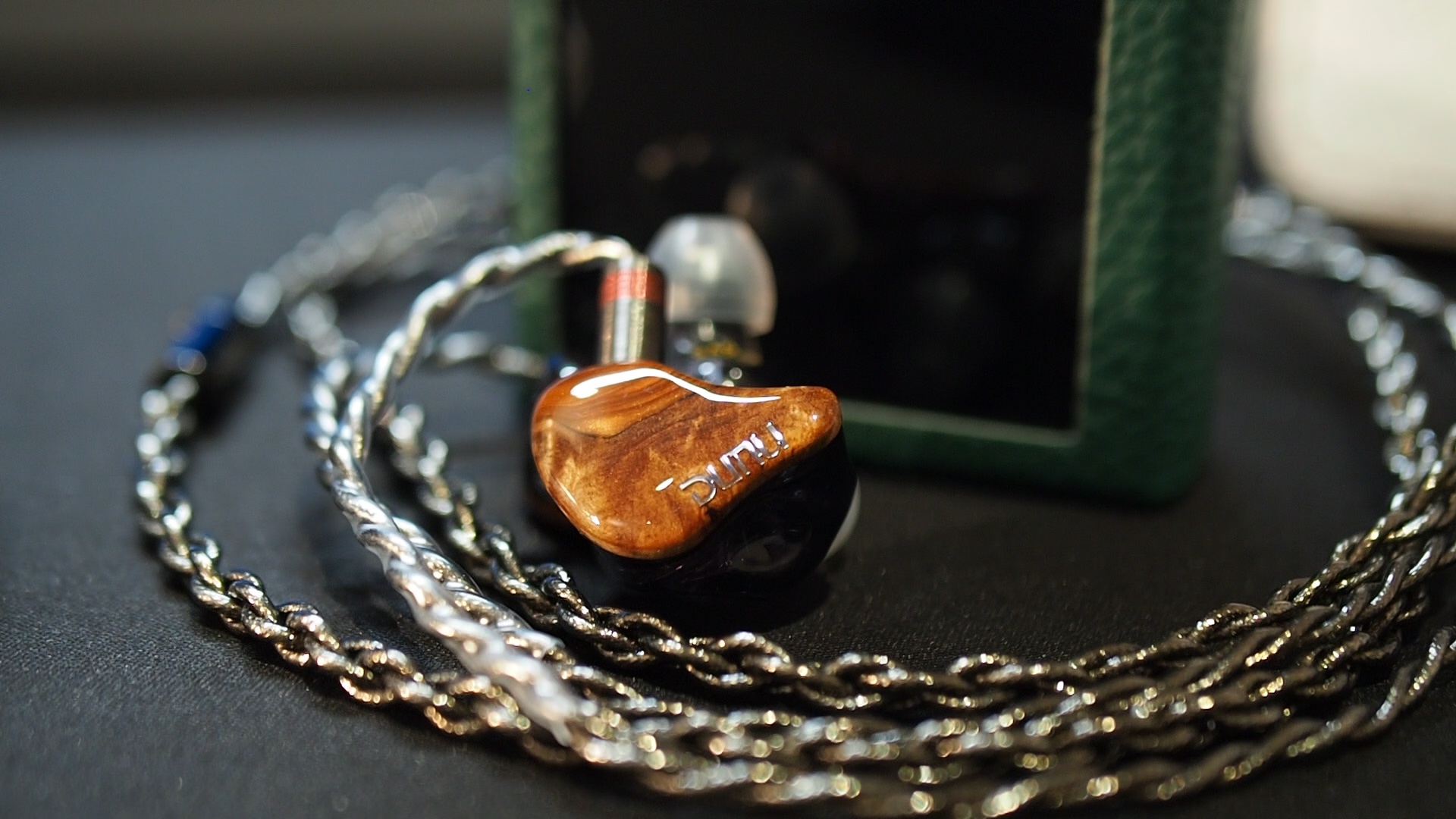
The SA6II comes with Dunu’s Hulk Pro Mini cable. The star feature of the cable is the Q-Lock, Dunu’s swappable plug system. The package contains both 3.5mm and 4.4mm plugs, designed with an elbow joint to prevent protrusion from audio sources, reducing the risk of damage. However, it’s worth noting that the cable that came with my unit is somewhat stiff, which doesn’t impact comfort or handling but makes it harder to lie flat.
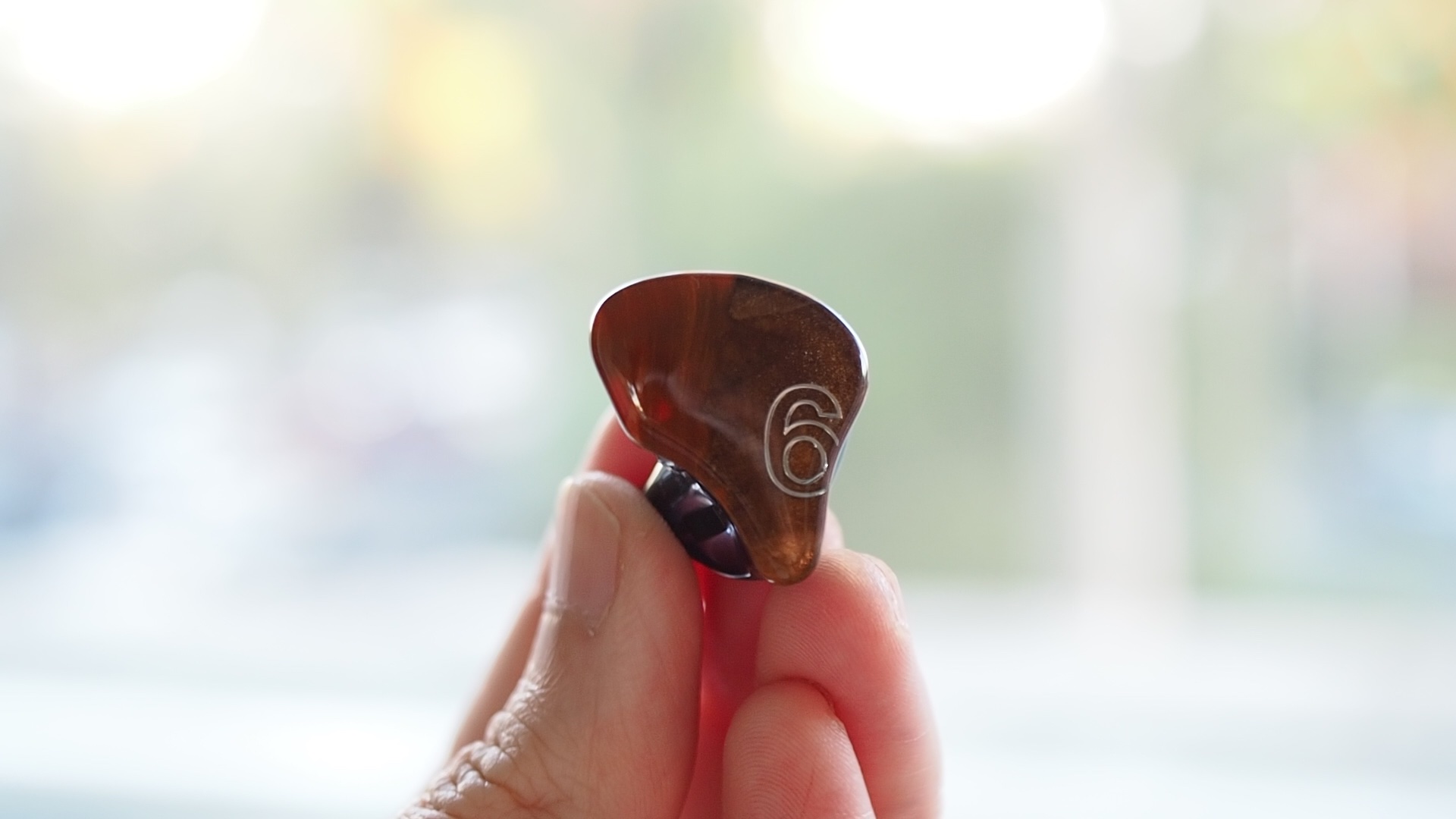

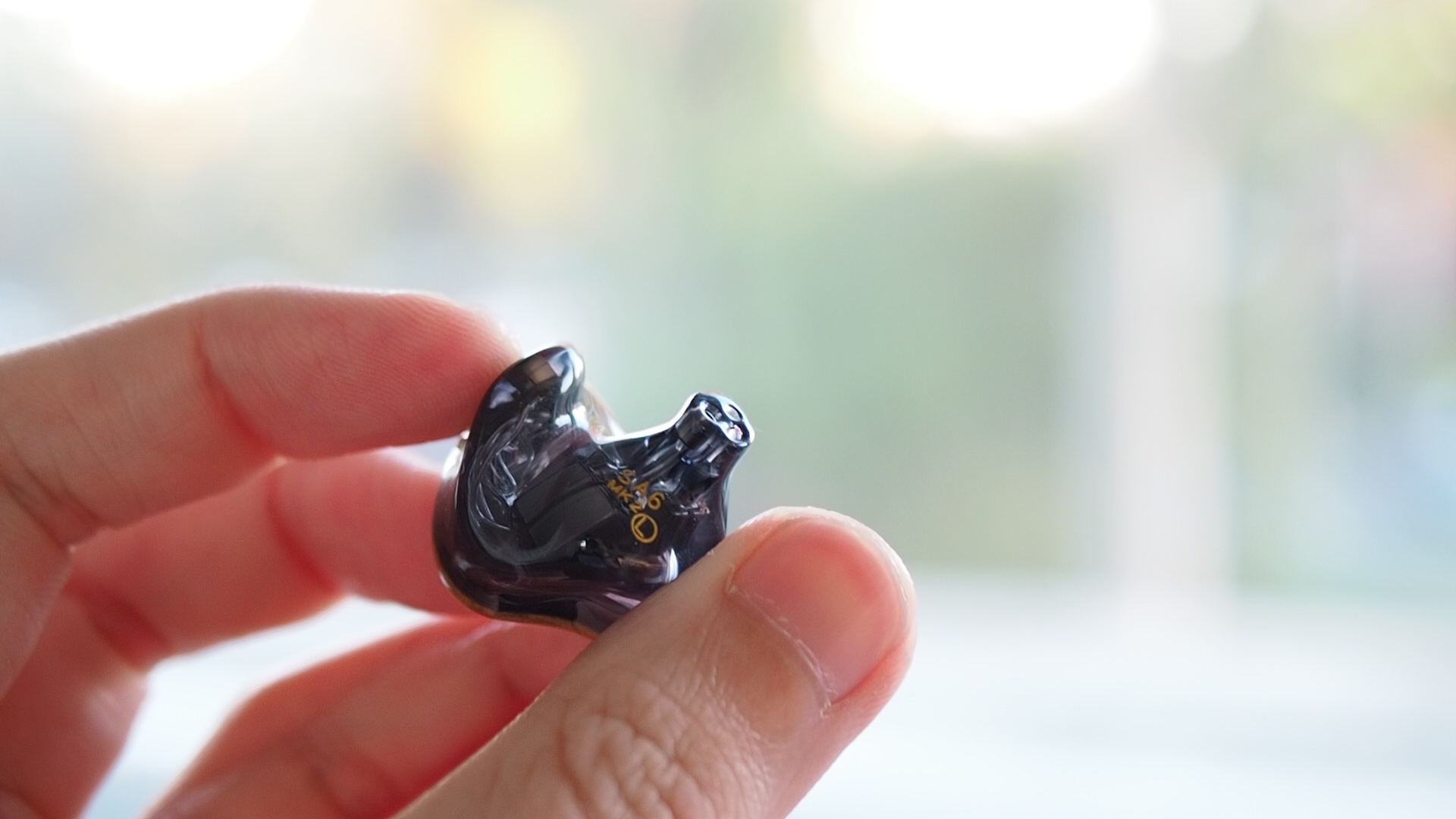
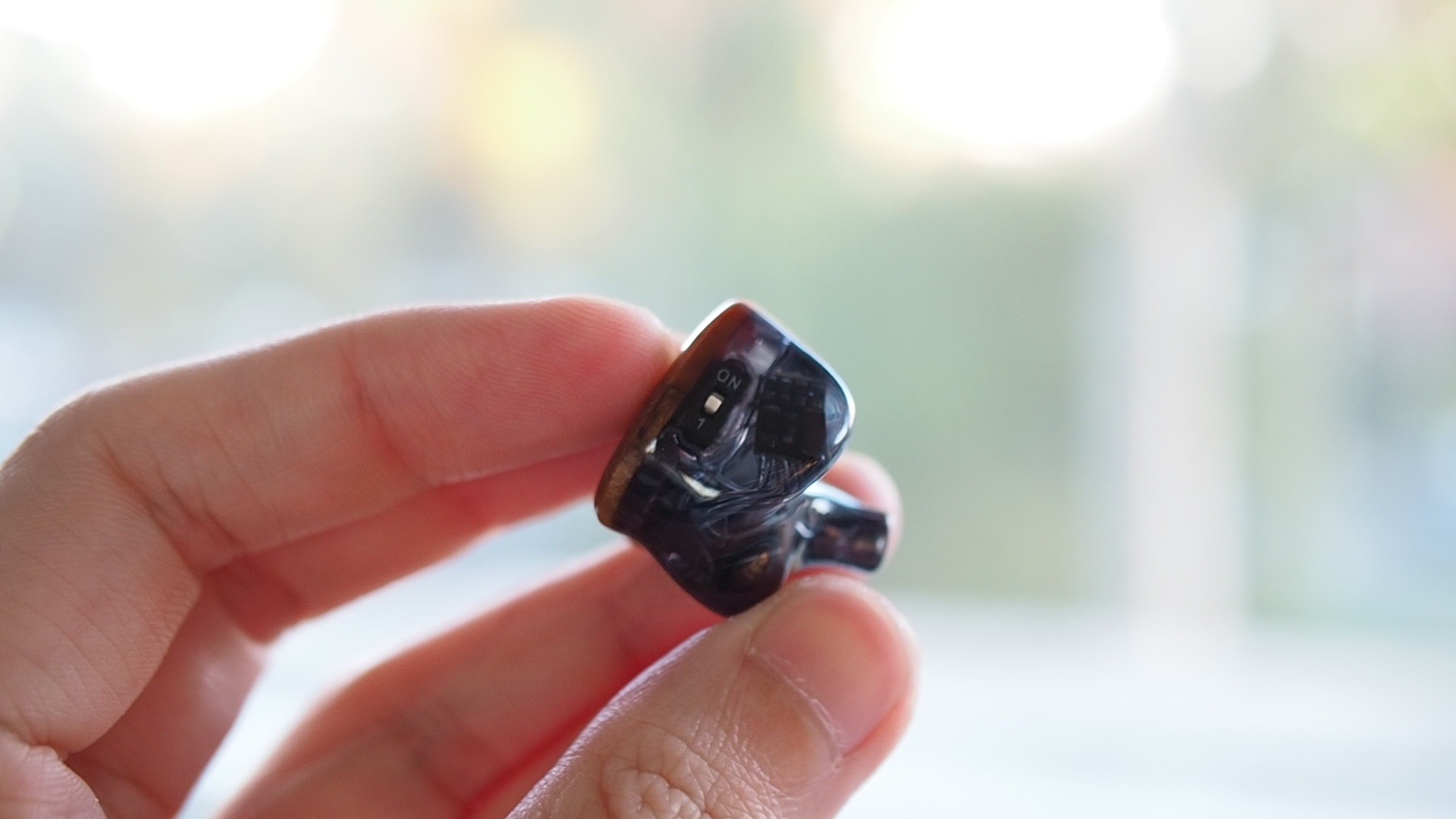
Crafted from resin, the earpieces of the SA6II are lightweight. The recessed 2-pin connectors are protected by the shells. The design of the earpieces resembles that of custom IEMs, featuring larger faceplates and more curvature on the surfaces that come into contact with the ears. The nozzles have an average size. The faceplates exhibit a unique combination of wood and resin, resulting in a distinct appearance for each SA6II unit.
In terms of comfort, the SA6II offer a pleasant experience. The contours on the shells provide a secure fit in the ears, while the vents prevent pressure build-up during extended listening sessions. The noise isolation is satisfactory for everyday use, such as bus rides or outdoor walks.
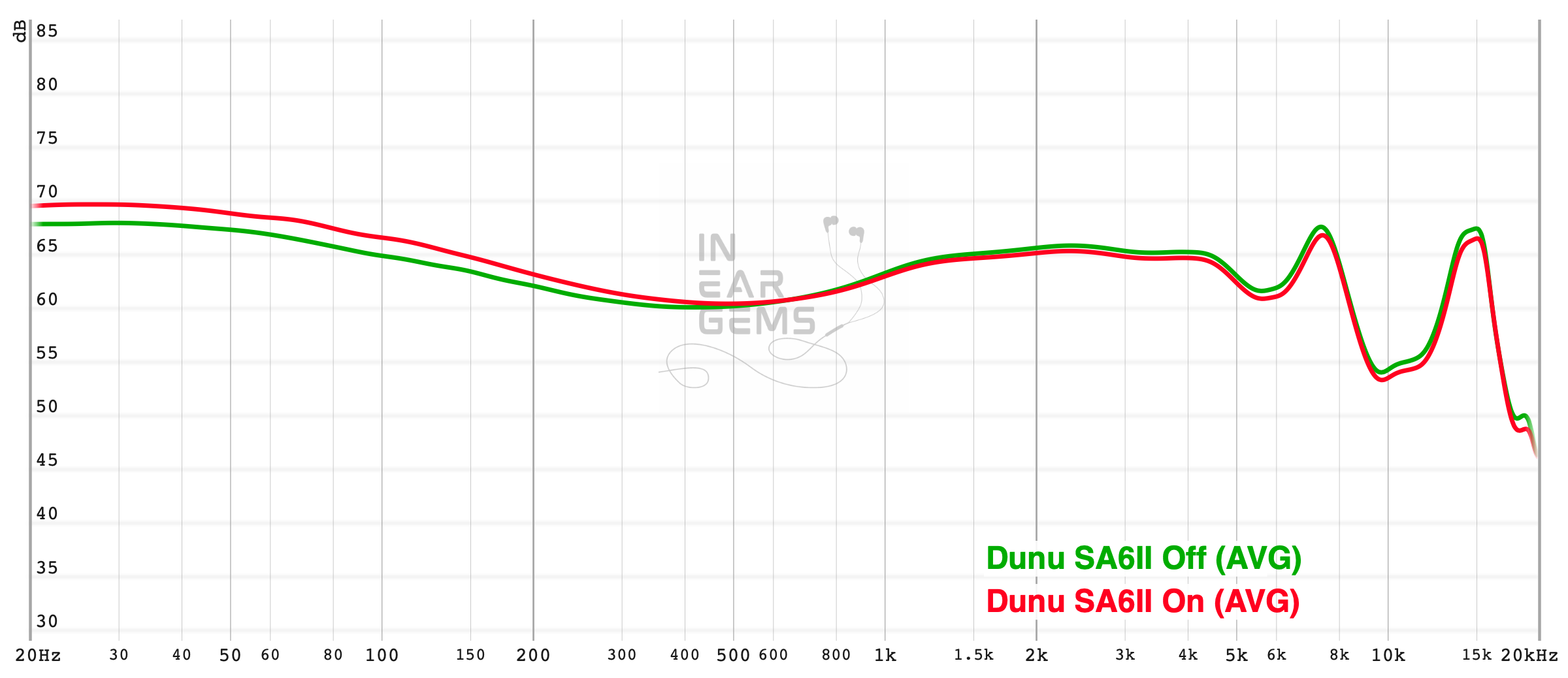
Tonality or “tuning” is where objectivity and subjectivity meet. Objectivity exists in the squiggly lines above, called Frequency Response (FR) graphs. They are created by sweeping a signal from 20Hz to 20kHz and measuring the corresponding loudness coming from an IEM. Unless a human operator deliberately tampers with the microphone or the data, FR does not care about the price or prestige of an IEM and, therefore, is “objective.”
However, human listeners are not microphones. Our ears and brain interpret the sound and decide whether it is “enjoyable.” It is also beneficial to remember that when you play a note on a musical instrument, multiple sounds (fundamental and harmonic) appear simultaneously and mix together. Achieving a life-like balance between frequencies and adding a tasteful amount of imbalance (“colouring the sound”) is the hallmark of an excellent tonality.
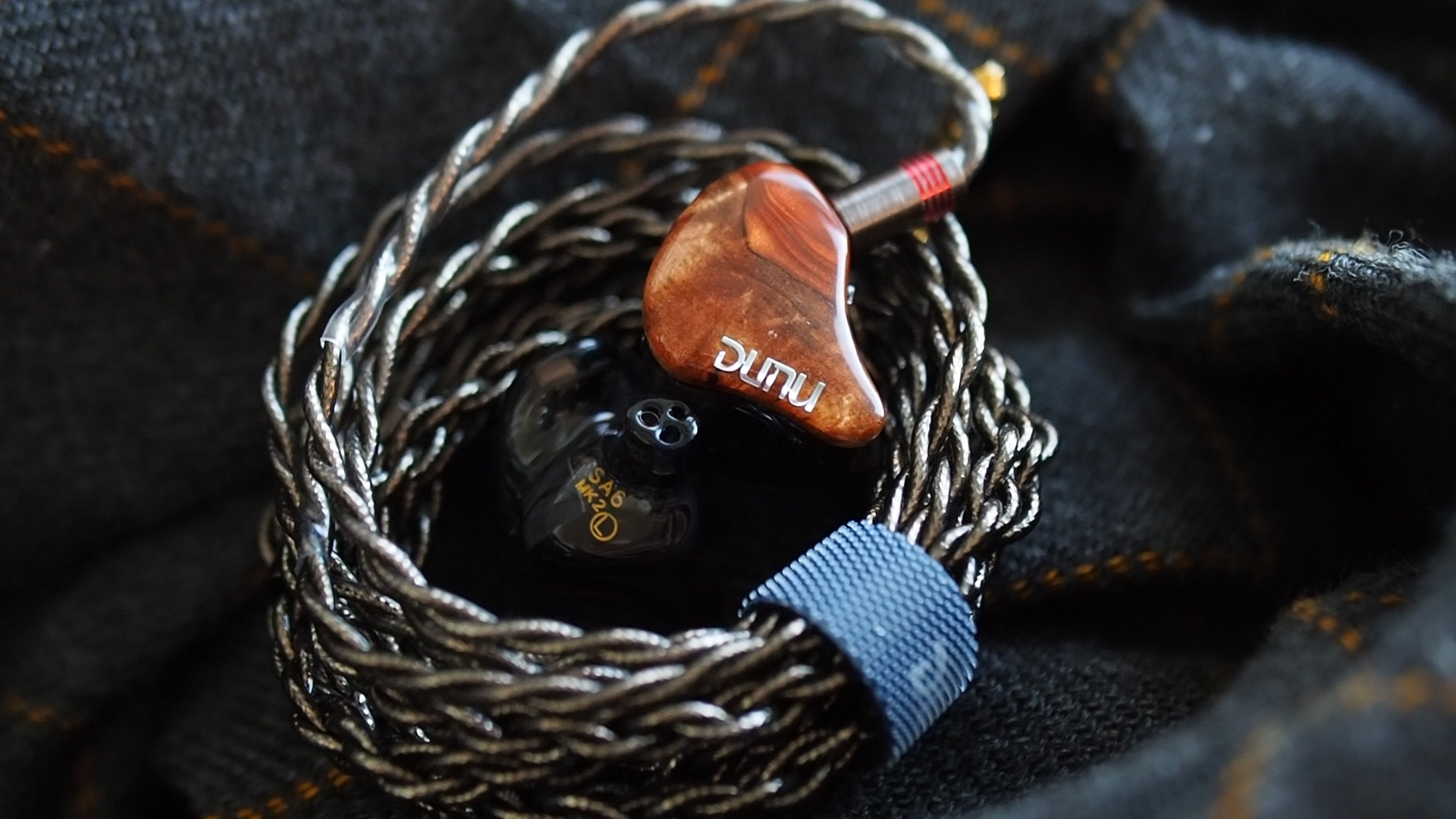
Sound signature: Describing the tonality of the SA6II is a difficult task as it aims for a natural sound and does not have significant weaknesses. The IEM offers two tuning modes: default and atmospheric. In the default mode, the sound signature takes on a W-shape, emphasizing bass, midrange, and treble with dips to separate them. Personally, I find the default mode slightly uncanny due to the way vocals and instruments are placed unnaturally closed to me, which results from boosts around 1kHz and 1.5kHz.
The atmospheric mode of the SA6II addresses this issue by pulling back the midrange frequencies, creating a U-shaped sound signature. This shift reduces the impact of the problematic boost, resulting in vocals and instruments feeling more natural and well-placed. The SA6II retains the famous “sibilance dip” at 6kHzfrom its predecessor, effectively reducing harshness and creating a smoother listening experience. The energy in the 8kHz region remains intact, ensuring sufficient presence of cymbals and hi-hats in the music. Additionally, the treble air region of the SA6II has improved compared to the original SA6, enhancing the sense of soundstage and spaciousness.
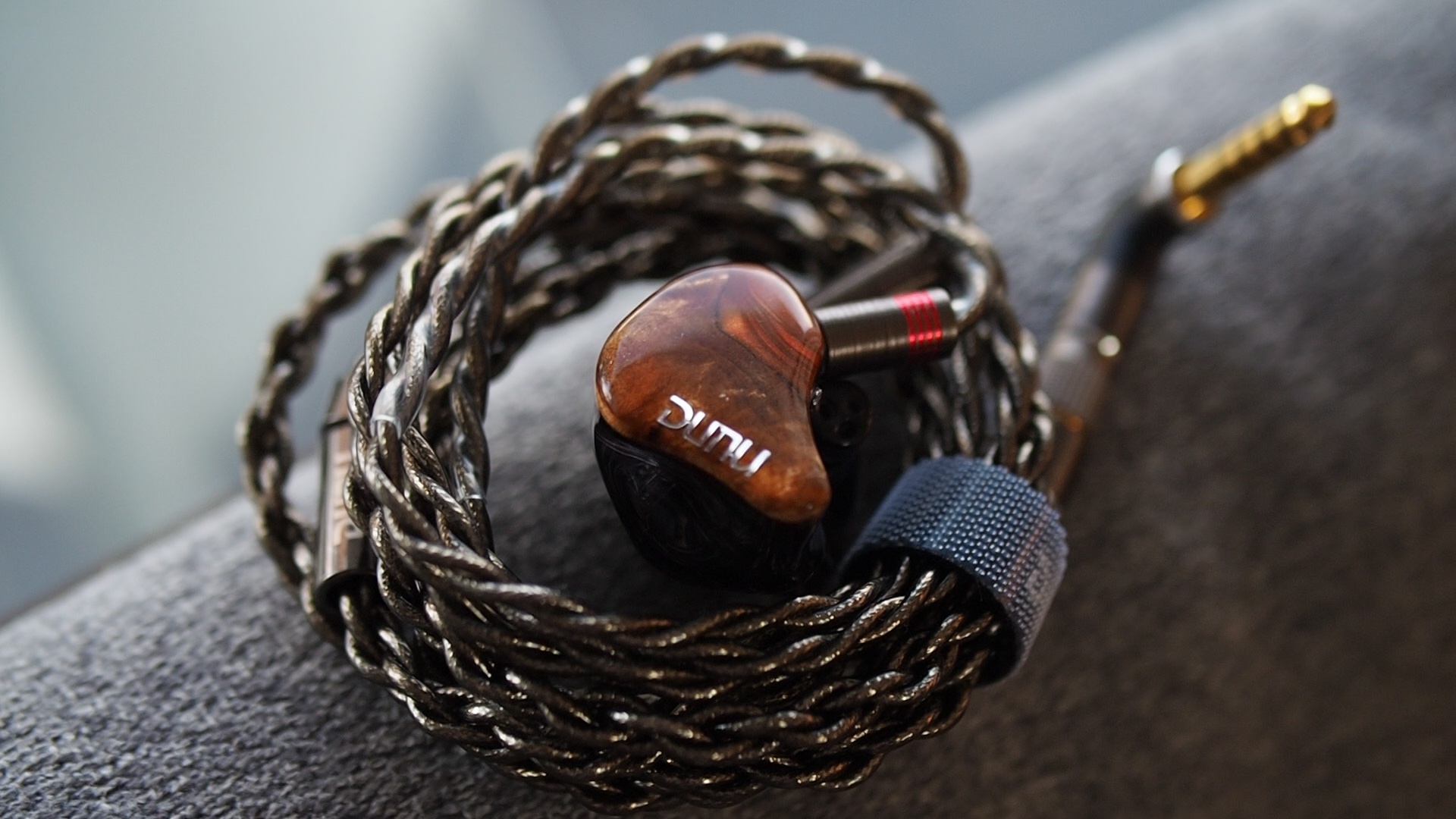
Female vocal (Rasputin cover by Aurora) The SA6II takes a more integrated approach with female vocals like Aurora’s, blending them within the music rather than emphasizing them above the rest of the band. Unlike IEMs tuned towards a Harman or diffused field target, the SA6II places greater emphasis on the fundamental frequencies of female vocals. However, it still adequately highlights the upper midrange region around 1kHz and 3kHz, resulting in weightier and warmer female vocals without sacrificing clarity. This presentation is highly musical. The SA6II doesn’t boost the upper midrange as much as other IEMs, which means female vocals aren’t overly shouty or in-your-face. The well-known “sibilance dip” prevents harshness and sibilance altogether. Despite its warmer tonality, the SA6II remains capable of revealing nuanced textures and capturing subtle “breaths” in female vocals.
Male vocal (Perfect Symphony by Ed Sheeran and Andrea Bocelli): Similarly, the SA6II integrates male vocals within the music rather than giving them undue prominence. It renders male vocals with exceptional naturalness and musicality. Compared to IEMs tuned towards a Harman or diffused field target, the SA6II adds a touch of extra warmth and weight to male vocals. However, it may lack a bit in terms of texture and nuanced details in male vocals. It could benefit from a slight boost in energy around 3kHz to enhance the overall presentation.

Strings and orchestras (Winter by Freivogel and Voices of Music): The tonality of all instruments leans slightly warmer compared to IEMs tuned towards the Harman or diffused field target, yet they still sound realistic and musical. The timbral accuracy of the SA6II enables differentiation between instruments, making it easier to track individual elements within the orchestra. The lead violin is rendered with vibrancy and brightness, yet devoid of any uncomfortable harshness. Cellos and basses exhibit proper weight, conveying a sense of authority and rhythm within the orchestra.
Drums and bass (Battle Bar): Drum hits and bass guitars receive emphasis on the SA6II. Even though SA6II have balanced armature (BA) woofers, the bass sounds more like it comes from dynamic drivers. Bass notes exhibit slightly softer attack and resonate longer compared to typical BA woofers, contributing to a weightier and more impactful bassline. At the same time, SA6II still maintains quick response to fast and dense basslines, a characteristic inherent to BA woofers. However, in terms of the “elasticity” or “bounciness” sensation of the bass, the SA6II falls slightly short of the best dynamic driver woofers.
Cymbals, hi-hats, chimes (Eye of the Tiger by Survivor): Cymbals and hi-hats are prominent in the mix with SA6II. These instruments sound crisp and energetic without being harsh or piercing, making it easy to follow their rhythm patterns. The decay of notes from cymbals and hi-hats is properly tapered, preventing a splashy sound.

Stereo imaging or “soundstage” is a psychoacoustic illusion that different recording elements appear at various locations inside and around your head. Your brain creates based on the cues in the recording, which are enhanced or diminushed by your IEMs, your DAC, and your amplifier. Some IEMs present a wide but flat soundstage. Some present a “3D” soundstage with layering, depth, and height. In rare cases, with some specific songs, some IEMs can trick you into thinking that the sound comes from the environment (a.k.a., “holographic”)
Soundstage imaging with music (One Winged Angel by the Danish National Symphony Orchestra): The SA6II offers a spacious and open soundstage that works well for large orchestral music, such as the test track. Its soundstage emphasizes width over depth, extending beyond the earpieces and even reaching my shoulders when instruments are positioned at the sides. The center of the soundstage tends to be slightly in front of me, creating a sense of the choirs playing in front rather than strictly inside my head. The SA6II also excels in layering, with instruments placed closer sometimes appearing to come from behind my ears or the back of my head. It excels at providing clear localization of instruments on the soundstage, indicating whether they are closer or further away. With the right DAC and amplifier, the SA6II can extend the outermost layer of the soundstage into the surrounding environment, occasionally giving the impression that the sound is coming from the room rather than the IEM itself. The SA6II’s main limitation lies in its sense of depth, which is not strong enough to create a 3D illusion for distant instruments compared to some top-of-the-line IEMs.
Soundstage imaging with games (CS GO Gameplay by Throneful): The wide but flat soundstage of SA6II becomes evident in FPS games like CS GO. The soundstage extends widely to the sides, placing gunshots and footsteps around the my shoulders. However, the sense of distance and direction is not strong when these sounds originate from the front. The soundstage imaging of the SA6II for FPS gaming is not impressive due to a lack of depth information, likely resulting from the midrange boost around 1.5kHz that pushes the midrange forward.

Resolution is a fascinating subject due to the difficulty of pinning down what it really is. To me, “resolution” can be broken down into three components:
Clarity and Separation (One Winged Angel by the Danish National Symphony Orchestra): The clarity and separation of the SA6II are good without sounding artificially sharpened. Instruments are well-separated, even in busy orchestral compositions, making it relatively easy to track individual instruments. The sonic presentation of the SA6II is clear and detailed without “highlighting” instrument boundaries through exaggerated treble peaks. Personally, I prefer a bit more “edge” to the musical notes to enhance perceived clarity.
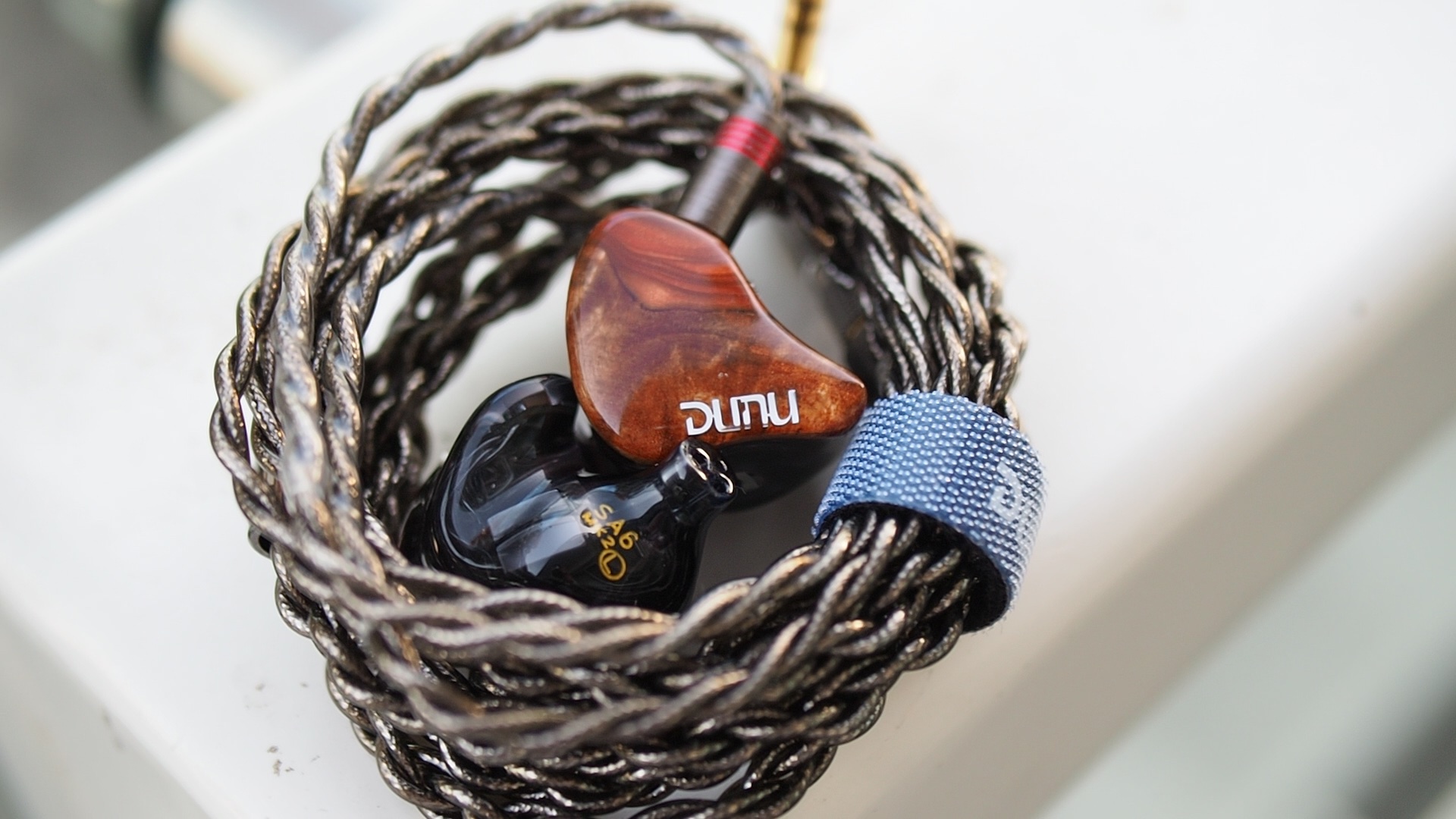
Detail retrieval (Paganini Caprice 24 by Daniel Lozakovich):The SA6II performs well in retrieving and presenting micro details, although it prioritizes smoothness and musicality over highlighting those details. The ability to extract and emphasize reverberation depends on the tuning option. With the default tuning, the “room sound” is not well-represented, but switching to the atmospheric mode strengthens the reverberation, creating a strong illusion of sitting in the recording space.
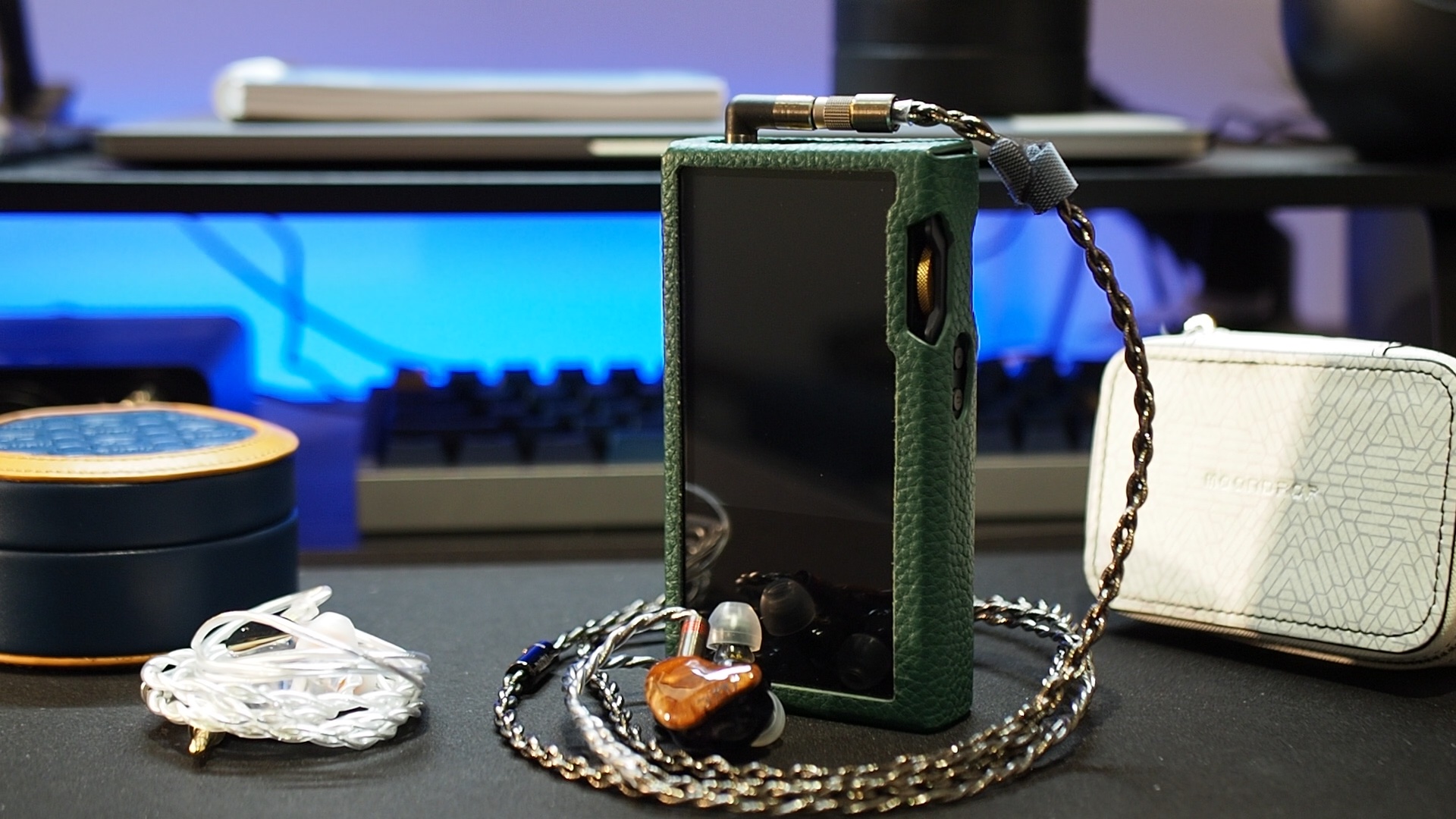
Test Track: One Winged Angel by the Danish National Symphony Orchestra
Average dongle (FiiO KA3): When paired with the KA3, the SA6II does not sound bad, but there is a noticeable loss of dynamics, bass, stage depth, and imaging accuracy compared to the reference setup. The drums sound weak instead of being a highlight, and the sense of rhythm and steady pulse of the the orchestra are diminished. The orchestra feels more compressed and lacking depth, with instruments seeming to exist on the same layer without a convincing illusion of distance.
Apple dongle: Surprisingly, the SA6II exhibits a stronger sense of depth and layering when paired with the Apple dongle compared to the KA3. The loss of dynamics and bass mentioned earlier also applies to this pairing. Given the cost and lower energy consumption of the Apple dongle, I would recommend sticking with the Apple dongle or considering to invest in a proper external amplifier rather than opting for a dongle DAC like the KA3.
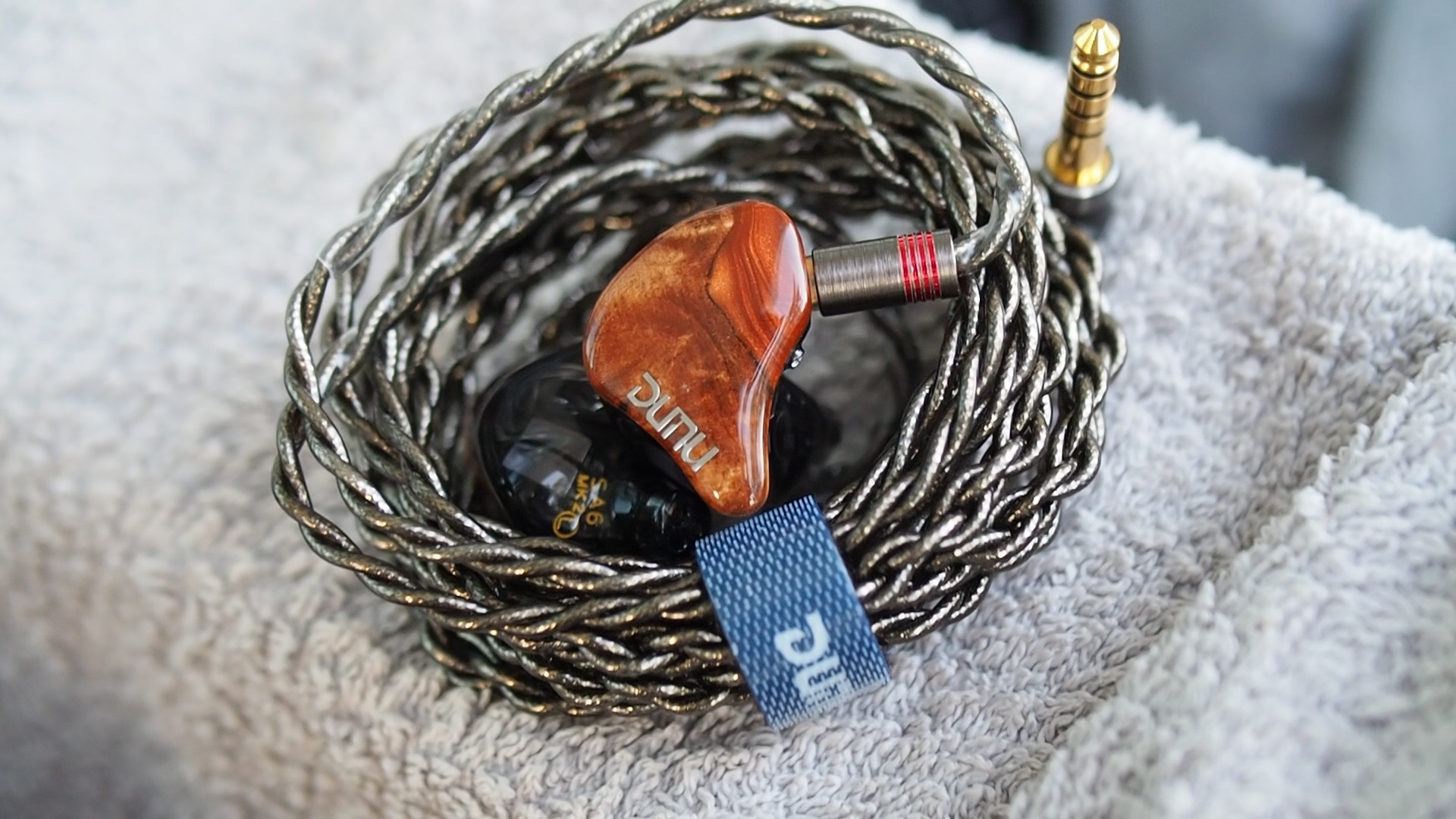
Tonality: 4/5 - Good
The SA6II offers a natural and musical tonality, with no instruments or vocals sounding strange or unpleasant. It avoids harshness and sibilance, while delivering strong bass that adds power and weight to the music. However, the default tuning mode of the SA6II can make the stereo image feel uncanny, and both tuning modes feature an early ear-gain boost at 1.5kHz, resulting in vocals and instruments being unnaturally forward and compromising the sense of depth and layering. Therefore, I consider SA6II tonality as “good”, not “outstanding.”
Percussion Rendering: Aria (3/5) < Blessing 2 (4/5) < U12T / E5000 (5/5) = SA6II (5/5)
The standout feature of the SA6II’s sonic performance is its bass. It follows a similar path to the U12T, providing snappy, dynamic, and controlled bass. The bass quantity falls somewhere between the controlled bass presentation of the U12T and the more bass-heavy approach of the E5000. It’s worth noting that the SA6II benefits from being paired with a proper external amplifier to unleash its full potential.
Resolution: SE215 (3/5) < Blessing 2 (4/5) = SA6II (4/5) < Andromeda 2020 (4.5/5) < U12T (5/5)
In terms of resolution, the SA6II performs well and would be considered good or even great by many. However, its weaknesses become apparent when directly compared to top-of-the-line IEMs like the Andromeda 2020 and the U12T. For example, in a performance of the Winter violin concerto by the Voices of Music ensemble, the Andromeda reveals crisper instrument separation, more nuances, and textures in the violin sound of the soloist compared to the SA6II. Therefore, while the resolution of the SA6II is good, it doesn’t quite reach the top-tier level.
Soundstage: SE215 (3/5) < Blessing 2 (4/5) < SA6II (4.5/5) < Andromeda 2020 (5/5)
The SA6II excels in soundstage and imaging, offering more depth and layering than the Blessing 2 IEM. However, it falls short of conveying the enveloping sensation of music wrapping around the listener like the Andromeda and the U12T. When placed alongside these exceptional IEMs, the SA6II feels more restrained and lacking in dimension.
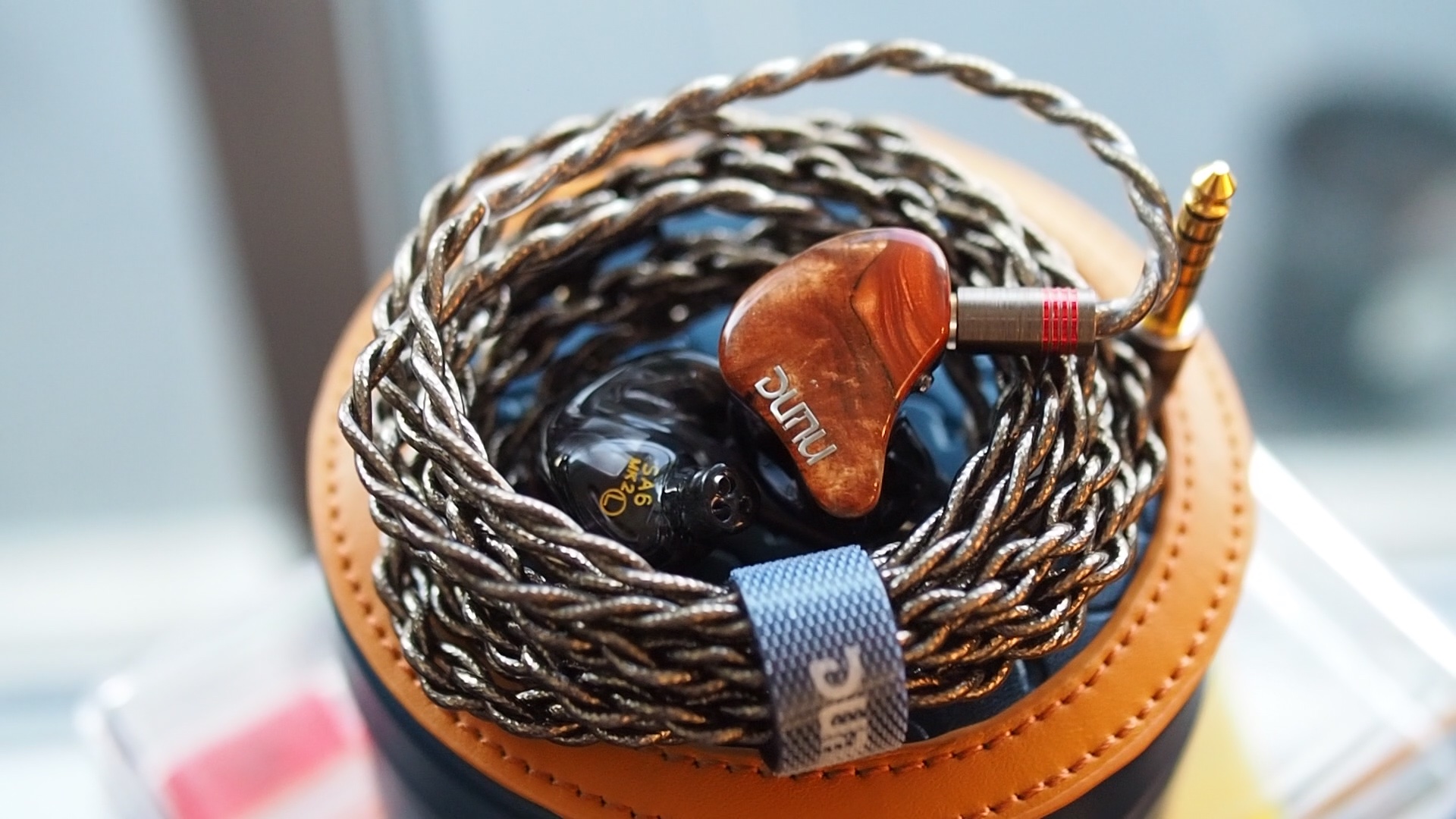
Similar to its predecessor, the original SA6, the SA6II embodies a quintessential mid-fi IEM. It comes with high-quality accessories, boasts a beautiful design, and provides a comfortable fit. The tonality of the SA6II is natural and pleasant across various genres, offering a refreshing departure from the typical Harman target sound. It also delivers respectable resolution and soundstage performance to complement its tuning. The limitations of the SA6II become noticeable only when scrutinizing the soundstage and comparing it to much more expensive high-end IEMs.
Who is the SA6II suitable for? It may not be the ideal choice for those seeking the most detailed sonic presentation or a bass-heavy sound. It also falls short if one desires the holographic soundstage found in high-end IEMs like the Andromeda. However, the SA6II is a good option for those who desire a natural tonality, appreciate some bass presence without sacrificing midrange clarity, and seek a good level detail and clarity without sacrificing a smooth and pleasant listening experience. Ultimately, the SA6II is a solid choice for individuals looking for a high-end IEM that delivers both in looks and sound quality, without the exorbitant price tag.
Pros:

Updated: May 14, 2023
The original Dunu SA6, a definitive mid-fi IEM, has been a staple since its 2020 release. However, times have changed. Can the newly launched Dunu SA6 MkII live up to its predecessor’s legacy?

Forewords
- What I look for in an IEM is immersion. I want to feel the orchestra around me, track individual instruments, and hear all of their textures and details. I’m not picky about tonality, as long as it does not get in the way of immersion.
- I rate IEMs within with a consistent scale from 1 (poor) to 3 (Adequate) to 5 (outstanding). Ratings are assigned by A/B tests against benchmark IEMs, regardless of the retail price.
- Ranking list and measurement database are on my IEM review blog.
- I purchased this unit at a discount from HifiGo for the review. I have no affiliation with or financial interest in Dunu or Hifigo. The unit retails for $579 at the time this review was published. You can find out more info and get yourself a unit from Hifigo.
- Reference Chain: iPad -> Venture Electronic Megatron -> Topping G5 (for all A/B tests)
- Portable Setup: Shanling M6 Ultra
- Dongle: FiiO KA3
All of my listening was done with Spin Fit CP145 or W1 ear tips. I listen at a medium volume. I usually turn up the volume until the midrange is fully audible and detailed, unless a treble peak or overwhelming bass prevents me from doing so.
Specs
- Driver: 2 Sonion Vented Woofers + 2 Knowles custom midrange drivers + 2 Knowles custom dual tweeters
- Connector Type: 2-pin
- Impedance: 24 ohm @ 1kHz
- Sensitivity: 114dB @ 1kHz
Build and Comfort



The included accessories of the SA6II are practical and abundant. It provides four types of ear tips, including foam and silicone options, along with Dunu’s candy ear tips and S&S ear tips. The carrying case stands out with its custom design and snap open lid, making it a unique addition.

The SA6II comes with Dunu’s Hulk Pro Mini cable. The star feature of the cable is the Q-Lock, Dunu’s swappable plug system. The package contains both 3.5mm and 4.4mm plugs, designed with an elbow joint to prevent protrusion from audio sources, reducing the risk of damage. However, it’s worth noting that the cable that came with my unit is somewhat stiff, which doesn’t impact comfort or handling but makes it harder to lie flat.




Crafted from resin, the earpieces of the SA6II are lightweight. The recessed 2-pin connectors are protected by the shells. The design of the earpieces resembles that of custom IEMs, featuring larger faceplates and more curvature on the surfaces that come into contact with the ears. The nozzles have an average size. The faceplates exhibit a unique combination of wood and resin, resulting in a distinct appearance for each SA6II unit.
In terms of comfort, the SA6II offer a pleasant experience. The contours on the shells provide a secure fit in the ears, while the vents prevent pressure build-up during extended listening sessions. The noise isolation is satisfactory for everyday use, such as bus rides or outdoor walks.
Tonality
Frequency response of Dunu SA6II against the Harman in-ear target. Measurements were done with an IEC-711-compliant coupler and might only be compared with other measurements from this same coupler. Visit my graph database for more comparisons.
Tonality or “tuning” is where objectivity and subjectivity meet. Objectivity exists in the squiggly lines above, called Frequency Response (FR) graphs. They are created by sweeping a signal from 20Hz to 20kHz and measuring the corresponding loudness coming from an IEM. Unless a human operator deliberately tampers with the microphone or the data, FR does not care about the price or prestige of an IEM and, therefore, is “objective.”
However, human listeners are not microphones. Our ears and brain interpret the sound and decide whether it is “enjoyable.” It is also beneficial to remember that when you play a note on a musical instrument, multiple sounds (fundamental and harmonic) appear simultaneously and mix together. Achieving a life-like balance between frequencies and adding a tasteful amount of imbalance (“colouring the sound”) is the hallmark of an excellent tonality.

Sound signature: Describing the tonality of the SA6II is a difficult task as it aims for a natural sound and does not have significant weaknesses. The IEM offers two tuning modes: default and atmospheric. In the default mode, the sound signature takes on a W-shape, emphasizing bass, midrange, and treble with dips to separate them. Personally, I find the default mode slightly uncanny due to the way vocals and instruments are placed unnaturally closed to me, which results from boosts around 1kHz and 1.5kHz.
The atmospheric mode of the SA6II addresses this issue by pulling back the midrange frequencies, creating a U-shaped sound signature. This shift reduces the impact of the problematic boost, resulting in vocals and instruments feeling more natural and well-placed. The SA6II retains the famous “sibilance dip” at 6kHzfrom its predecessor, effectively reducing harshness and creating a smoother listening experience. The energy in the 8kHz region remains intact, ensuring sufficient presence of cymbals and hi-hats in the music. Additionally, the treble air region of the SA6II has improved compared to the original SA6, enhancing the sense of soundstage and spaciousness.

Female vocal (Rasputin cover by Aurora) The SA6II takes a more integrated approach with female vocals like Aurora’s, blending them within the music rather than emphasizing them above the rest of the band. Unlike IEMs tuned towards a Harman or diffused field target, the SA6II places greater emphasis on the fundamental frequencies of female vocals. However, it still adequately highlights the upper midrange region around 1kHz and 3kHz, resulting in weightier and warmer female vocals without sacrificing clarity. This presentation is highly musical. The SA6II doesn’t boost the upper midrange as much as other IEMs, which means female vocals aren’t overly shouty or in-your-face. The well-known “sibilance dip” prevents harshness and sibilance altogether. Despite its warmer tonality, the SA6II remains capable of revealing nuanced textures and capturing subtle “breaths” in female vocals.
Male vocal (Perfect Symphony by Ed Sheeran and Andrea Bocelli): Similarly, the SA6II integrates male vocals within the music rather than giving them undue prominence. It renders male vocals with exceptional naturalness and musicality. Compared to IEMs tuned towards a Harman or diffused field target, the SA6II adds a touch of extra warmth and weight to male vocals. However, it may lack a bit in terms of texture and nuanced details in male vocals. It could benefit from a slight boost in energy around 3kHz to enhance the overall presentation.

Strings and orchestras (Winter by Freivogel and Voices of Music): The tonality of all instruments leans slightly warmer compared to IEMs tuned towards the Harman or diffused field target, yet they still sound realistic and musical. The timbral accuracy of the SA6II enables differentiation between instruments, making it easier to track individual elements within the orchestra. The lead violin is rendered with vibrancy and brightness, yet devoid of any uncomfortable harshness. Cellos and basses exhibit proper weight, conveying a sense of authority and rhythm within the orchestra.
Drums and bass (Battle Bar): Drum hits and bass guitars receive emphasis on the SA6II. Even though SA6II have balanced armature (BA) woofers, the bass sounds more like it comes from dynamic drivers. Bass notes exhibit slightly softer attack and resonate longer compared to typical BA woofers, contributing to a weightier and more impactful bassline. At the same time, SA6II still maintains quick response to fast and dense basslines, a characteristic inherent to BA woofers. However, in terms of the “elasticity” or “bounciness” sensation of the bass, the SA6II falls slightly short of the best dynamic driver woofers.
Cymbals, hi-hats, chimes (Eye of the Tiger by Survivor): Cymbals and hi-hats are prominent in the mix with SA6II. These instruments sound crisp and energetic without being harsh or piercing, making it easy to follow their rhythm patterns. The decay of notes from cymbals and hi-hats is properly tapered, preventing a splashy sound.
Soundstage Imaging

Stereo imaging or “soundstage” is a psychoacoustic illusion that different recording elements appear at various locations inside and around your head. Your brain creates based on the cues in the recording, which are enhanced or diminushed by your IEMs, your DAC, and your amplifier. Some IEMs present a wide but flat soundstage. Some present a “3D” soundstage with layering, depth, and height. In rare cases, with some specific songs, some IEMs can trick you into thinking that the sound comes from the environment (a.k.a., “holographic”)
Soundstage imaging with music (One Winged Angel by the Danish National Symphony Orchestra): The SA6II offers a spacious and open soundstage that works well for large orchestral music, such as the test track. Its soundstage emphasizes width over depth, extending beyond the earpieces and even reaching my shoulders when instruments are positioned at the sides. The center of the soundstage tends to be slightly in front of me, creating a sense of the choirs playing in front rather than strictly inside my head. The SA6II also excels in layering, with instruments placed closer sometimes appearing to come from behind my ears or the back of my head. It excels at providing clear localization of instruments on the soundstage, indicating whether they are closer or further away. With the right DAC and amplifier, the SA6II can extend the outermost layer of the soundstage into the surrounding environment, occasionally giving the impression that the sound is coming from the room rather than the IEM itself. The SA6II’s main limitation lies in its sense of depth, which is not strong enough to create a 3D illusion for distant instruments compared to some top-of-the-line IEMs.
Soundstage imaging with games (CS GO Gameplay by Throneful): The wide but flat soundstage of SA6II becomes evident in FPS games like CS GO. The soundstage extends widely to the sides, placing gunshots and footsteps around the my shoulders. However, the sense of distance and direction is not strong when these sounds originate from the front. The soundstage imaging of the SA6II for FPS gaming is not impressive due to a lack of depth information, likely resulting from the midrange boost around 1.5kHz that pushes the midrange forward.
Resolution

Resolution is a fascinating subject due to the difficulty of pinning down what it really is. To me, “resolution” can be broken down into three components:
- Sharpness, incisiveness, or “definition” of note attacks (see the figure above).
- The separation of instruments and vocals, especially when they overlap on the soundstage.
- The texture and details in the decay side of the notes.
Clarity and Separation (One Winged Angel by the Danish National Symphony Orchestra): The clarity and separation of the SA6II are good without sounding artificially sharpened. Instruments are well-separated, even in busy orchestral compositions, making it relatively easy to track individual instruments. The sonic presentation of the SA6II is clear and detailed without “highlighting” instrument boundaries through exaggerated treble peaks. Personally, I prefer a bit more “edge” to the musical notes to enhance perceived clarity.

Detail retrieval (Paganini Caprice 24 by Daniel Lozakovich):The SA6II performs well in retrieving and presenting micro details, although it prioritizes smoothness and musicality over highlighting those details. The ability to extract and emphasize reverberation depends on the tuning option. With the default tuning, the “room sound” is not well-represented, but switching to the atmospheric mode strengthens the reverberation, creating a strong illusion of sitting in the recording space.
Source PairingPermalink

Test Track: One Winged Angel by the Danish National Symphony Orchestra
Average dongle (FiiO KA3): When paired with the KA3, the SA6II does not sound bad, but there is a noticeable loss of dynamics, bass, stage depth, and imaging accuracy compared to the reference setup. The drums sound weak instead of being a highlight, and the sense of rhythm and steady pulse of the the orchestra are diminished. The orchestra feels more compressed and lacking depth, with instruments seeming to exist on the same layer without a convincing illusion of distance.
Apple dongle: Surprisingly, the SA6II exhibits a stronger sense of depth and layering when paired with the Apple dongle compared to the KA3. The loss of dynamics and bass mentioned earlier also applies to this pairing. Given the cost and lower energy consumption of the Apple dongle, I would recommend sticking with the Apple dongle or considering to invest in a proper external amplifier rather than opting for a dongle DAC like the KA3.
Comparison and Rating

Tonality: 4/5 - Good
The SA6II offers a natural and musical tonality, with no instruments or vocals sounding strange or unpleasant. It avoids harshness and sibilance, while delivering strong bass that adds power and weight to the music. However, the default tuning mode of the SA6II can make the stereo image feel uncanny, and both tuning modes feature an early ear-gain boost at 1.5kHz, resulting in vocals and instruments being unnaturally forward and compromising the sense of depth and layering. Therefore, I consider SA6II tonality as “good”, not “outstanding.”
Percussion Rendering: Aria (3/5) < Blessing 2 (4/5) < U12T / E5000 (5/5) = SA6II (5/5)
The standout feature of the SA6II’s sonic performance is its bass. It follows a similar path to the U12T, providing snappy, dynamic, and controlled bass. The bass quantity falls somewhere between the controlled bass presentation of the U12T and the more bass-heavy approach of the E5000. It’s worth noting that the SA6II benefits from being paired with a proper external amplifier to unleash its full potential.
Resolution: SE215 (3/5) < Blessing 2 (4/5) = SA6II (4/5) < Andromeda 2020 (4.5/5) < U12T (5/5)
In terms of resolution, the SA6II performs well and would be considered good or even great by many. However, its weaknesses become apparent when directly compared to top-of-the-line IEMs like the Andromeda 2020 and the U12T. For example, in a performance of the Winter violin concerto by the Voices of Music ensemble, the Andromeda reveals crisper instrument separation, more nuances, and textures in the violin sound of the soloist compared to the SA6II. Therefore, while the resolution of the SA6II is good, it doesn’t quite reach the top-tier level.
Soundstage: SE215 (3/5) < Blessing 2 (4/5) < SA6II (4.5/5) < Andromeda 2020 (5/5)
The SA6II excels in soundstage and imaging, offering more depth and layering than the Blessing 2 IEM. However, it falls short of conveying the enveloping sensation of music wrapping around the listener like the Andromeda and the U12T. When placed alongside these exceptional IEMs, the SA6II feels more restrained and lacking in dimension.
Conclusion

Similar to its predecessor, the original SA6, the SA6II embodies a quintessential mid-fi IEM. It comes with high-quality accessories, boasts a beautiful design, and provides a comfortable fit. The tonality of the SA6II is natural and pleasant across various genres, offering a refreshing departure from the typical Harman target sound. It also delivers respectable resolution and soundstage performance to complement its tuning. The limitations of the SA6II become noticeable only when scrutinizing the soundstage and comparing it to much more expensive high-end IEMs.
Who is the SA6II suitable for? It may not be the ideal choice for those seeking the most detailed sonic presentation or a bass-heavy sound. It also falls short if one desires the holographic soundstage found in high-end IEMs like the Andromeda. However, the SA6II is a good option for those who desire a natural tonality, appreciate some bass presence without sacrificing midrange clarity, and seek a good level detail and clarity without sacrificing a smooth and pleasant listening experience. Ultimately, the SA6II is a solid choice for individuals looking for a high-end IEM that delivers both in looks and sound quality, without the exorbitant price tag.
Pros:
- Beautiful design and comfortable fit
- Excellent accessories
- Natural and pleasant tonality
- Good bass
- Good resolution
- Good soundstage and imaging
- The soundstage lacks a bit of depth
- Smooth presentation can hide some details

Updated: May 14, 2023
T
triveniprasadnanda
Terrific review, mate. I started reading reviews after purchasing my pair of SA6 Mk2. I also have quite similar observations. I tried several pairing options and the one that impressed me the most is the Questyle M15. These IEMs are just wonderful for vocal and acoustically produced tracks. I'm still surprised by how 'organic' they sound, despite being all-BA sets. They even come very close to the richness of my beloved Senn HD650 driven through a multi-bit DAC and an OTL amp.
ibiondo44
Great Review. I received my new set about two weeks ago and love them. Just the bass, in my view, is not on par with the quality of the mids and lows. I would rate a 4 out of 5, especially with the recent avalanche of great IEMs for a lower cost.
droid23
What most fascinates me is the effortless near analog sounding tonality and musicality when listening to string quartets e.g. Haydn. Yes yes, the MkII are a very nice pair of IEMs overall and play well in their price range, but strings with the MkII blew me totally away.. oh man, good investment even just for that.
o0genesis0o
Headphoneus Supremus
Pros: + Excellent transient reproductiion
+ Excellent bass response
+ Good tonal balance
+ The stage has decent depth comparing to the usual flat stage of planar IEMs
+ Less timbral issues than usual for a planar magnetic IEM
+ Excellent bass response
+ Good tonal balance
+ The stage has decent depth comparing to the usual flat stage of planar IEMs
+ Less timbral issues than usual for a planar magnetic IEM
Cons: - Still not a good choice for vocals and acoustic
Planar magnetic drivers in IEMs. The driver configuration that I have been so desperately trying to love, yet I have been left wanting again and again. Can the new entry to the rank of planar magnetic, NiceHck F1 Pro, change this predicament? Let’s find out.

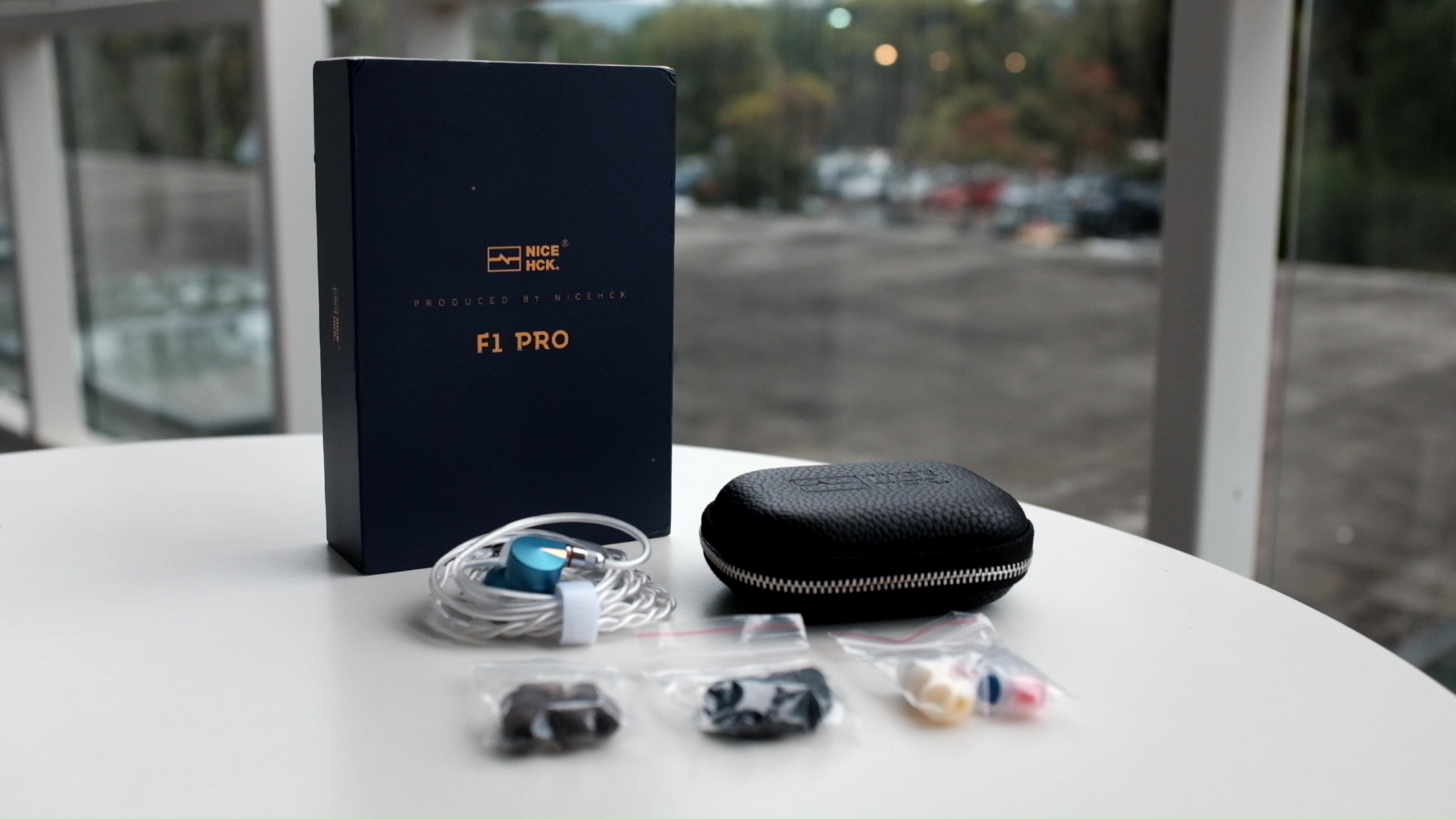
Whilst I have bought many cables from NiceHck, F1 Pro was the my first IEM from this manufacturer. I was pleasantly surprised by the simple yet elegant design of the packaging and the provided accessories. Inside the box, you would find three types of ear tips, all of which can introduce noticeable changes to the sound signature of the IEM, particularly in the treble and bass region. I highly recommend that you try all of the provided tips to find the ones that best suits your ear anatomy and sonic preference.

The stock cable was also well designed. The chrome plated hardware fits the overall aesthetic of F1 Pro well. I am particularly happy that the 2-pin connectors sit flush against the ear pieces. Not many stock cables provide this flushed fit, even when they come from manufactures well known for cable making. The wires themselves are mostly well-behaved. Subjective Experience ===
As usual, our discussion of subjective experience starts with fit and comfort. Luckily, this section will be short: F1 Pro is simply “average.” The nozzles have average width and length that comfortably fit most ear tips besides the narrower ones like Final Type E. As a result, the F1 Pro does not create pressure hot spots within the ear canals in long listening sessions. The part of the earpieces resting against the ears is circular in shape without any edge or contour, so F1 Pro does not stress the outer ears. Moreover, you can tweak the angle of the nozzles by twisting the earpieces forward or backwards.
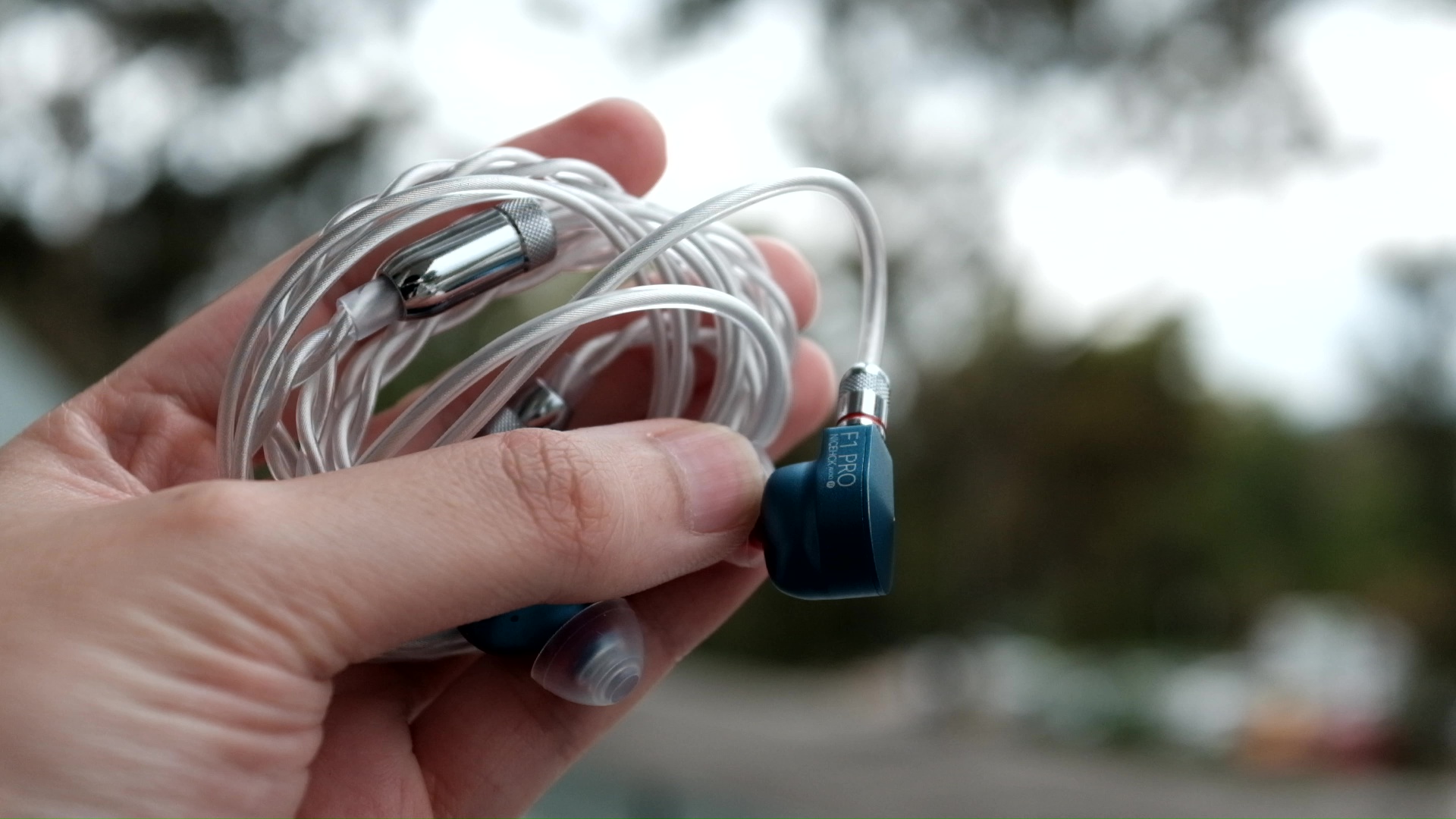
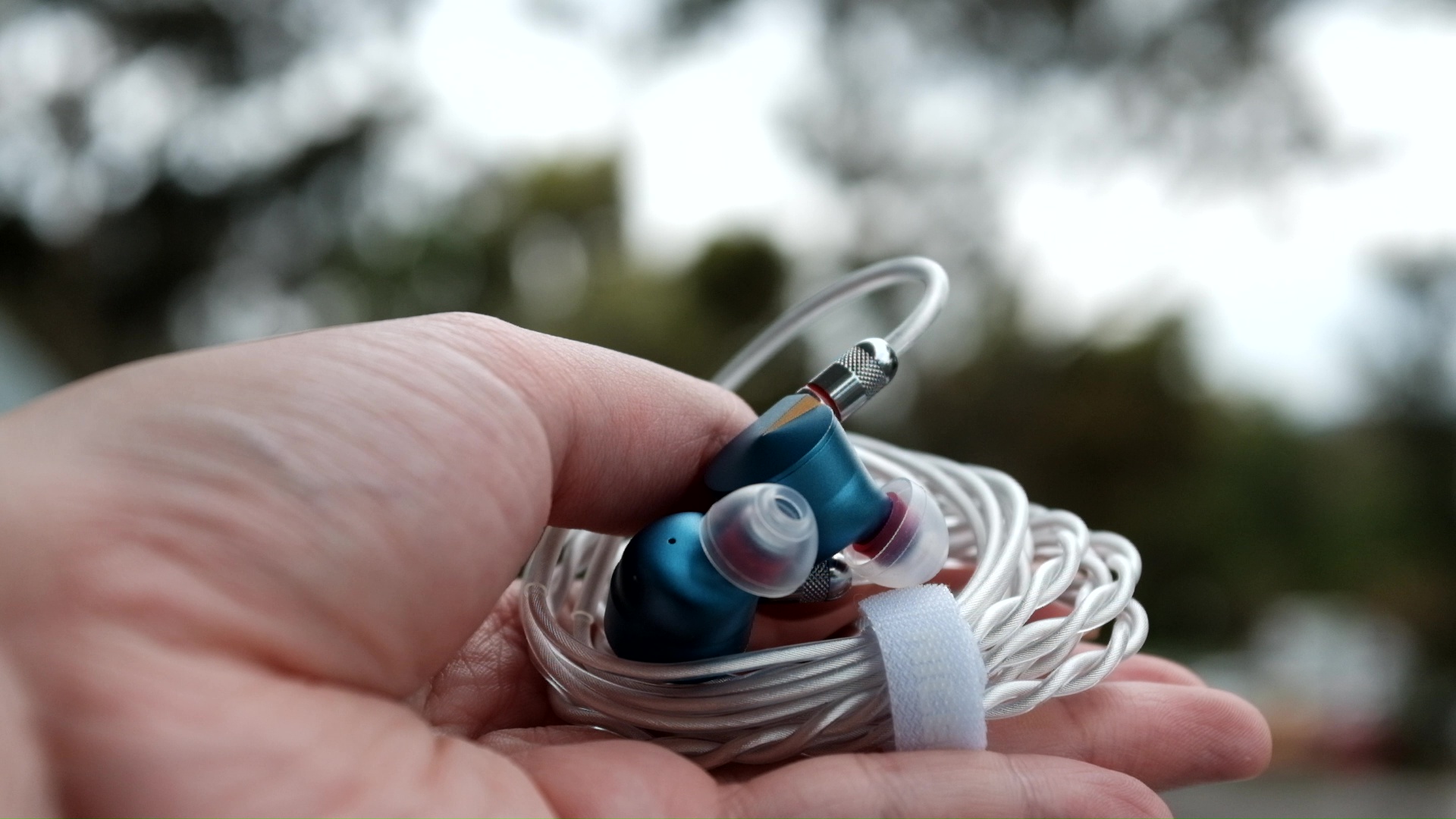
Due to the shape of the F1 Pro, your fit and comfort would depend almost entirely on your choice of ear tips. I found F1 Pro respond well to changing ear tips. To my ears, the bass of F1 Pro becomes thicker and more punchy, with the stock ear tips having a dense core and wide opening. Ear tips with softer cores, like the SpinFit CP100, reduce the perceived “density” of the bass. Moreover, longer ear tips like these CP100 can lengthen the distance between the earpieces and your eardrums, which creates the illusion that the soundstage is more spread out. As usual, every choice is a trade-off you must experiment with and decide for yourself. I opt for CP100 in medium size for the rest of this review.
Now, let’s talk about how F1 Pro sounds.
The overall theme of the sonic performance of F1 Pro can be summarised as “entertaining.” This IEM excels at reproducing percussive instruments such as drums and pianos with clear note attacks. Fingerstyle guitar tracks also sound great. These instruments play to the strength of F1 Pro, which combines having a decent amount of bass and the ability to rapidly reproduce volume swings (transients).
For example, the bass line in the iconic soundtrack of Persona 4, “Heartbeat, Heartbreak”, is ever so satisfying with F1 Pro. Every beat has a crisp attack edge and pleasing physical impact above “neutral” without overpowering the rest of the frequencies. As a result of the tonal balance, the F1 Pro does not sound closed off and congested, a problem that some bass-heavy IEMs can face.
At the same time, the decay end of the bass note is rich in texture and details. In particular, the decay of the bass sounds like “brrrrm” rather than “ummmm”. If I pay attention, I can also pick out the pitch of the bass notes rather than simply low-pitched rumbles.
GOAT by Polyphia is another piece that plays well with the strength of F1 Pro. This complex piece has everything: all sorts of percussive sounds layering upon each other, big bass drops, and the sense of ambience and distance created by the outermost background layer of the mix. F1 Pro can handle the complexity easily and stands up to critical listening well. In fact, it performs the instrument definition and separation so well that I needed to stop my listening session to bring out the “big guns” for comparison. We will discuss the result of such a comparison later in this review. The only aspect I dock points from F1 Pro is the soundstage imaging. It does not spread the instruments out and push the background far enough to create a holographic sensation in sections such as around the 1:10 mark.
Another area where F1 Pro loses ground is the handling of flowing, legato instruments and musical passages. Similarly to a few other planar IEMs I have tested, F1 Pro still has that ever-so-slightly edginess midrange and metallic timbre that does not stand up to critical listening.

For example, let’s listen to “Can’t Help Falling in Love” by Pentatonix in their PTX Vol. IV album. On the plus side, F1 Pro does an outstanding job at separating and layering, ensuring that every vocal line has clarity and clear separation from others. On the other hand, no matter how I try, I cannot convince myself to enjoy the vocals due to the ever-so-slightly cold and stiff reproduction. It’s not a tuning problem. When I swapped Effect Audio Gaea, an IEM notorious for having a bright and lean tonality, I found an extra layer of richness that makes the vocals sound “full.” Interestingly, I found F1 Pro to be more sibilant than the notorious Gaea in this track.

As another example, I listened to the Goldberg Variations transcription for Violin, Viola, and Cello performed by Julian Rachlin, Nobuko Imai, and Mischa Maisky. Again, whilst F1 Pro does not colour the instruments incorrectly in any way, that intangible metallic timbre prevents the strings from being truly enjoyable.
To be clear, these observations do not mean that F1 Pro is incompatible with vocals and acoustic music. It is perfectly alright, though I would not actively pick F1 Pro for this part of my library. For the more upbeat part of my library, F1 Pro is a preferred choice.
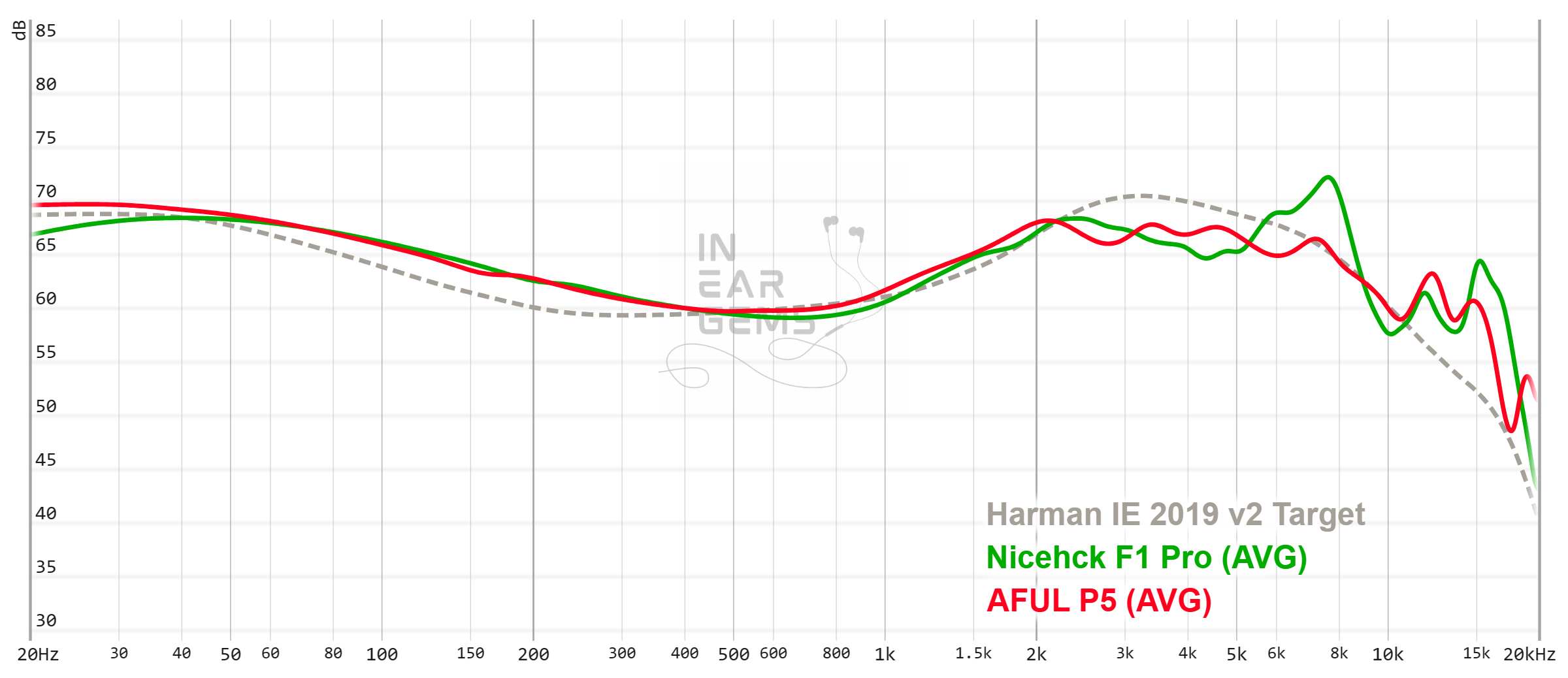
It is helpful to think of an IEM as a filter that highlights or subdues different parts of the incoming audio signal. This effect can be measured objectively by the squiggly lines above, called Frequency Response (FR) graphs, which measure how loud an IEM is at different frequencies from 20Hz (bass) to 20kHz (upper treble). Subjectivity is how your ears and brain interpret the effect of that filter on your music and decide whether it is “enjoyable.” There are some “rules of thumb” when it comes to tonality, but most interesting IEMs usually bend the rules masterfully.
The tonal balance of F1 Pro suggests that it does not fall far from the Harman root. The measurements confirm the observation.
Similarly to most Harman-inspired IEMs that sound good, F1 Pro fills in the dip around 250Hz of the Harman target to prevent the bass from being disconnected from the rest of frequencies and avoid the thin tonality of “true” Harman IEMs. Unlikely the recently reviewed Simgot EM6L, F1 Pro also reduces the energy around the 3kHz and 5kHz region from the Harman target, trading vocal clarity for a more comfortable and less harsh presentation.

Interestingly, when these characteristics are combined, we have a tonal balance almost identical to the AFUL Performer5 (P5). Almost.
Where F1 Pro deviates significantly from the Harman target and P5 is the substantial boost in the mid-treble region between 6kHz and 8kHz. This 5dB difference is significant enough to necessitate a few minutes of adjustment whenever I switch from F1 Pro to P5. This peak also gives a sharp edge to the presentation of F1 Pro that does not exist with P5. The perception of the crisp transient response of F1 Pro likely stems from this treble peak. You can add an 8kHz peak on your IEM using EQ software and check the result.

Resolution is a fascinating subject due to the difficulty of pinning down what it really is. To me, “resolution” can be broken down into three components: (1) Sharpness, incisiveness, or “definition” of note attacks (see the figure above). (2) The separation of instruments and vocals, especially when they overlap on the soundstage. (3) The texture and details in the decay side of the notes. The first two give music clarity and make it easy to track individual elements of a mix. The last provides music details and nuances. Smooth and well extended treble response plays a crucial role.
As I alluded to in the subjective impressions, F1 Pro has good resolution. The question is, “How good?”
To answer this question, I compare F1 Pro against Moondrop Blessing 2 and Campfire Audio Andromeda 2020, the two IEMs serving as benchmarks for good (3/5) and great (4/5) resolution. For this test, I would listen to G.O.A.T. by Polyphia.

The listening tests were straightforward but no less surprising. Despite having noticeably more emphasis on the attack edge of all musical notes, F1 Pro does not offer stronger clarity or separation than Blessing 2. At the same time, the nuances and details of all instruments and the background ambience of F1 Pro noticeably suffer in direct comparison against the Andromeda.
Based on this result, I would consider the resolution of F1 Pro to be “Good.” Still, the way F1 Pro renders transients makes it seem more impressive than the other two without direct comparison. Thus, I wouldn’t bat an eye if you find the resolution of F1 Pro to be rather great.

Stereo imaging or “soundstage” is a psychoacoustic illusion that different recording elements appear at various locations inside and around your head. Your brain creates based on the cues in the recording, which are enhanced or diminushed by your IEMs, your DAC, and your amplifier. Some IEMs present a wide but flat soundstage. Some present a “3D” soundstage with layering, depth, and height. In rare cases, with some specific songs, some IEMs can trick you into thinking that the sound comes from the environment (a.k.a., “holographic”)
Where does F1 Pro sit on the “IEGems soundstage imaging scale”? To answer this question, I again relied on the Blessing 2 (3/5) and Andromeda 2020 (4/5). I listened to “The Way of the Ghost” from Ghost of Tsushima soundtracks for this test.
The comparison between Blessing 2 and F1 Pro was straightforward. Right off the bat, it was clear that F1 Pro conveys more sense of depth, meaning the contrast between closer and further away sounds in the soundtrack was more noticeable with F1 Pro than with Blessing 2. On the other hand, Blessing 2 sounds slightly broader and more open. I find the extra depth of F1 Pro’s stage works better with the hazy and moody presentation of the soundtrack.

The comparison between F1 Pro and Andromeda 2020 was more complicated. The major challenge was the significant difference in tonal balance between these IEMs, necessitating more time for “brain burn-in” between switches. The difference was easier to identify and articulate when I got that dialled in. Simply put, the closer sounds are placed closer, the further sounds are pushed further away, and there are more layers between near and far with Andromeda. These factors together create a unique presentation that works well with the test track in a way that F1 Pro does not.
Based on these observations, I would consider the soundstage imaging of F1 Pro to be between “Good” and “Great”.
Soundstage imaging with games (CS GO Gameplay by Throneful): F1 Pro does a better job at imaging in FPS games than I expected. Whilst the stage is not spherical, F1 Pro does not sound like a flat plane with only left-to-right positioning. As a result, it was easy to identify and track the position of gunshots and footsteps as they moved around me.

AFUL Performer5:

In many ways, F1 Pro reminds me of the Hifiman Sundara headphone. Both are entertaining due to the snappy transient response. Neither are the optimal choice for acoustic and vocal music due to the slightly unnatural timbre. Still, I find F1 Pro to be a surprisingly competent and entertaining IEM, especially for more upbeat parts of my library. If you are looking to an IEM with full-range planar magnetic drivers, F1 Pro receives a recommendation from this reviewer.
Absolute Sonic Quality Rating: 3.5/5 (Tonality: 3/5; Resolution: 3/5; Imaging: 3/5; Bass and Dynamic: 5/5)
Bias Score: 4/5 - I like this IEM
Value Proposition: Top of the 3.5/5 class (calculated at the retail price of $99 ~ AUD$150 at the time this review was written)
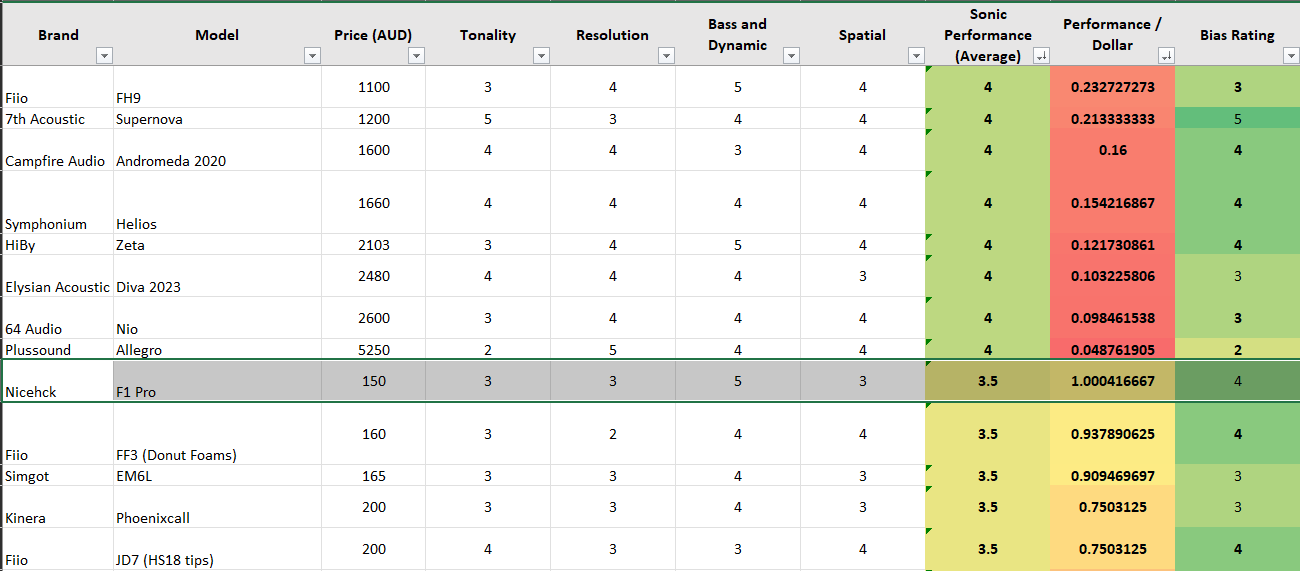
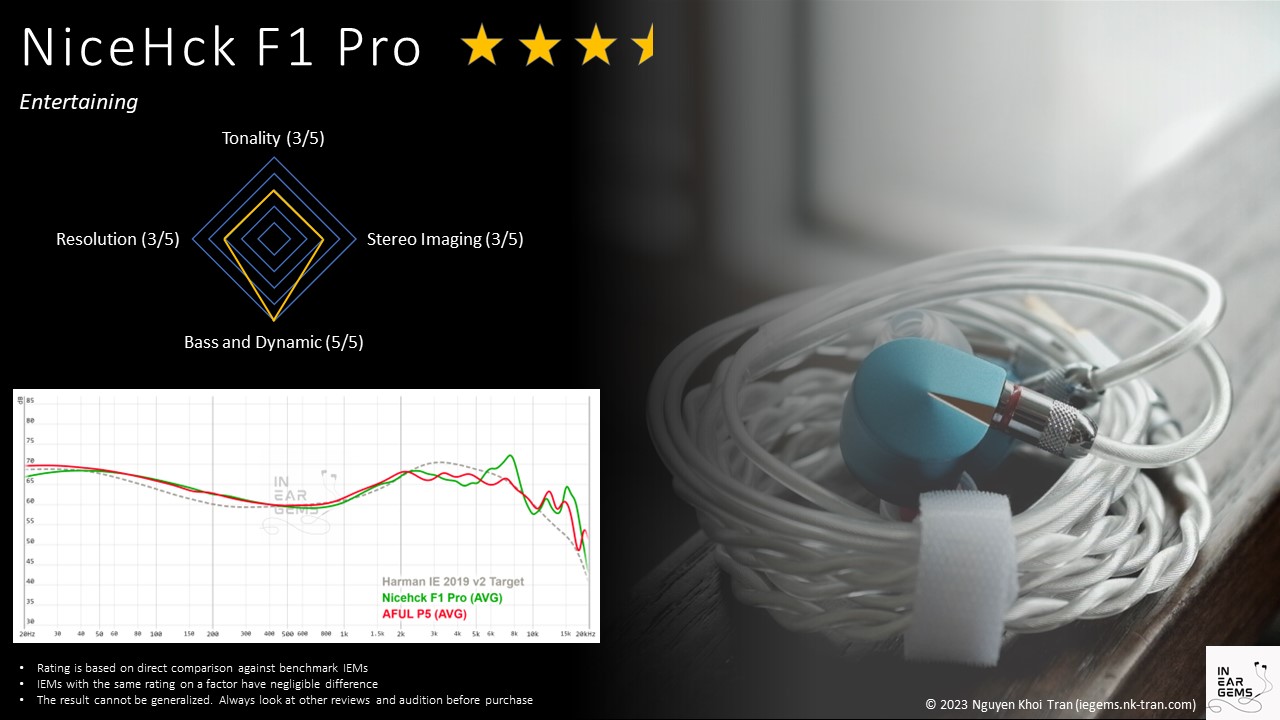
Updated: January 3, 2024

Forewords
- What I look for in an IEM is immersion. I want to feel the orchestra around me, track individual instruments, and hear all of their textures and details. I’m not picky about tonality, as long as it does not get in the way of immersion.
- I rate IEMs within with a consistent scale from 1 (poor) to 3 (Adequate) to 5 (outstanding). Ratings are assigned by A/B tests against benchmark IEMs, regardless of the retail price.
- Ranking list and measurement database are on my IEM review blog.
- Terms used in my reviews are consistent with the glossary by Headphonesty
- This review is based on a review sample from NiceHck (Thank you!). I have no affiliation with or financial interest in NiceHck.
- The unit retails for $99 at the time this review was published. Unaffiliated link
Packaging and Accessories

Whilst I have bought many cables from NiceHck, F1 Pro was the my first IEM from this manufacturer. I was pleasantly surprised by the simple yet elegant design of the packaging and the provided accessories. Inside the box, you would find three types of ear tips, all of which can introduce noticeable changes to the sound signature of the IEM, particularly in the treble and bass region. I highly recommend that you try all of the provided tips to find the ones that best suits your ear anatomy and sonic preference.

The stock cable was also well designed. The chrome plated hardware fits the overall aesthetic of F1 Pro well. I am particularly happy that the 2-pin connectors sit flush against the ear pieces. Not many stock cables provide this flushed fit, even when they come from manufactures well known for cable making. The wires themselves are mostly well-behaved. Subjective Experience ===
As usual, our discussion of subjective experience starts with fit and comfort. Luckily, this section will be short: F1 Pro is simply “average.” The nozzles have average width and length that comfortably fit most ear tips besides the narrower ones like Final Type E. As a result, the F1 Pro does not create pressure hot spots within the ear canals in long listening sessions. The part of the earpieces resting against the ears is circular in shape without any edge or contour, so F1 Pro does not stress the outer ears. Moreover, you can tweak the angle of the nozzles by twisting the earpieces forward or backwards.


Due to the shape of the F1 Pro, your fit and comfort would depend almost entirely on your choice of ear tips. I found F1 Pro respond well to changing ear tips. To my ears, the bass of F1 Pro becomes thicker and more punchy, with the stock ear tips having a dense core and wide opening. Ear tips with softer cores, like the SpinFit CP100, reduce the perceived “density” of the bass. Moreover, longer ear tips like these CP100 can lengthen the distance between the earpieces and your eardrums, which creates the illusion that the soundstage is more spread out. As usual, every choice is a trade-off you must experiment with and decide for yourself. I opt for CP100 in medium size for the rest of this review.
Now, let’s talk about how F1 Pro sounds.
The overall theme of the sonic performance of F1 Pro can be summarised as “entertaining.” This IEM excels at reproducing percussive instruments such as drums and pianos with clear note attacks. Fingerstyle guitar tracks also sound great. These instruments play to the strength of F1 Pro, which combines having a decent amount of bass and the ability to rapidly reproduce volume swings (transients).
For example, the bass line in the iconic soundtrack of Persona 4, “Heartbeat, Heartbreak”, is ever so satisfying with F1 Pro. Every beat has a crisp attack edge and pleasing physical impact above “neutral” without overpowering the rest of the frequencies. As a result of the tonal balance, the F1 Pro does not sound closed off and congested, a problem that some bass-heavy IEMs can face.
At the same time, the decay end of the bass note is rich in texture and details. In particular, the decay of the bass sounds like “brrrrm” rather than “ummmm”. If I pay attention, I can also pick out the pitch of the bass notes rather than simply low-pitched rumbles.
GOAT by Polyphia is another piece that plays well with the strength of F1 Pro. This complex piece has everything: all sorts of percussive sounds layering upon each other, big bass drops, and the sense of ambience and distance created by the outermost background layer of the mix. F1 Pro can handle the complexity easily and stands up to critical listening well. In fact, it performs the instrument definition and separation so well that I needed to stop my listening session to bring out the “big guns” for comparison. We will discuss the result of such a comparison later in this review. The only aspect I dock points from F1 Pro is the soundstage imaging. It does not spread the instruments out and push the background far enough to create a holographic sensation in sections such as around the 1:10 mark.
Another area where F1 Pro loses ground is the handling of flowing, legato instruments and musical passages. Similarly to a few other planar IEMs I have tested, F1 Pro still has that ever-so-slightly edginess midrange and metallic timbre that does not stand up to critical listening.

For example, let’s listen to “Can’t Help Falling in Love” by Pentatonix in their PTX Vol. IV album. On the plus side, F1 Pro does an outstanding job at separating and layering, ensuring that every vocal line has clarity and clear separation from others. On the other hand, no matter how I try, I cannot convince myself to enjoy the vocals due to the ever-so-slightly cold and stiff reproduction. It’s not a tuning problem. When I swapped Effect Audio Gaea, an IEM notorious for having a bright and lean tonality, I found an extra layer of richness that makes the vocals sound “full.” Interestingly, I found F1 Pro to be more sibilant than the notorious Gaea in this track.

As another example, I listened to the Goldberg Variations transcription for Violin, Viola, and Cello performed by Julian Rachlin, Nobuko Imai, and Mischa Maisky. Again, whilst F1 Pro does not colour the instruments incorrectly in any way, that intangible metallic timbre prevents the strings from being truly enjoyable.
To be clear, these observations do not mean that F1 Pro is incompatible with vocals and acoustic music. It is perfectly alright, though I would not actively pick F1 Pro for this part of my library. For the more upbeat part of my library, F1 Pro is a preferred choice.
Frequency Response Analysis
Frequency response of F1 Pro against AFUL P5 the Harman in-ear target. Measurements were done with an IEC-711-compliant coupler and might only be compared with other measurements from this same coupler. Visit my graph database for more comparisons.
It is helpful to think of an IEM as a filter that highlights or subdues different parts of the incoming audio signal. This effect can be measured objectively by the squiggly lines above, called Frequency Response (FR) graphs, which measure how loud an IEM is at different frequencies from 20Hz (bass) to 20kHz (upper treble). Subjectivity is how your ears and brain interpret the effect of that filter on your music and decide whether it is “enjoyable.” There are some “rules of thumb” when it comes to tonality, but most interesting IEMs usually bend the rules masterfully.
The tonal balance of F1 Pro suggests that it does not fall far from the Harman root. The measurements confirm the observation.
Similarly to most Harman-inspired IEMs that sound good, F1 Pro fills in the dip around 250Hz of the Harman target to prevent the bass from being disconnected from the rest of frequencies and avoid the thin tonality of “true” Harman IEMs. Unlikely the recently reviewed Simgot EM6L, F1 Pro also reduces the energy around the 3kHz and 5kHz region from the Harman target, trading vocal clarity for a more comfortable and less harsh presentation.

Interestingly, when these characteristics are combined, we have a tonal balance almost identical to the AFUL Performer5 (P5). Almost.
Where F1 Pro deviates significantly from the Harman target and P5 is the substantial boost in the mid-treble region between 6kHz and 8kHz. This 5dB difference is significant enough to necessitate a few minutes of adjustment whenever I switch from F1 Pro to P5. This peak also gives a sharp edge to the presentation of F1 Pro that does not exist with P5. The perception of the crisp transient response of F1 Pro likely stems from this treble peak. You can add an 8kHz peak on your IEM using EQ software and check the result.
Resolution

Resolution is a fascinating subject due to the difficulty of pinning down what it really is. To me, “resolution” can be broken down into three components: (1) Sharpness, incisiveness, or “definition” of note attacks (see the figure above). (2) The separation of instruments and vocals, especially when they overlap on the soundstage. (3) The texture and details in the decay side of the notes. The first two give music clarity and make it easy to track individual elements of a mix. The last provides music details and nuances. Smooth and well extended treble response plays a crucial role.
As I alluded to in the subjective impressions, F1 Pro has good resolution. The question is, “How good?”
To answer this question, I compare F1 Pro against Moondrop Blessing 2 and Campfire Audio Andromeda 2020, the two IEMs serving as benchmarks for good (3/5) and great (4/5) resolution. For this test, I would listen to G.O.A.T. by Polyphia.

The listening tests were straightforward but no less surprising. Despite having noticeably more emphasis on the attack edge of all musical notes, F1 Pro does not offer stronger clarity or separation than Blessing 2. At the same time, the nuances and details of all instruments and the background ambience of F1 Pro noticeably suffer in direct comparison against the Andromeda.
Based on this result, I would consider the resolution of F1 Pro to be “Good.” Still, the way F1 Pro renders transients makes it seem more impressive than the other two without direct comparison. Thus, I wouldn’t bat an eye if you find the resolution of F1 Pro to be rather great.
Soundstage Imaging

Stereo imaging or “soundstage” is a psychoacoustic illusion that different recording elements appear at various locations inside and around your head. Your brain creates based on the cues in the recording, which are enhanced or diminushed by your IEMs, your DAC, and your amplifier. Some IEMs present a wide but flat soundstage. Some present a “3D” soundstage with layering, depth, and height. In rare cases, with some specific songs, some IEMs can trick you into thinking that the sound comes from the environment (a.k.a., “holographic”)
Where does F1 Pro sit on the “IEGems soundstage imaging scale”? To answer this question, I again relied on the Blessing 2 (3/5) and Andromeda 2020 (4/5). I listened to “The Way of the Ghost” from Ghost of Tsushima soundtracks for this test.
The comparison between Blessing 2 and F1 Pro was straightforward. Right off the bat, it was clear that F1 Pro conveys more sense of depth, meaning the contrast between closer and further away sounds in the soundtrack was more noticeable with F1 Pro than with Blessing 2. On the other hand, Blessing 2 sounds slightly broader and more open. I find the extra depth of F1 Pro’s stage works better with the hazy and moody presentation of the soundtrack.

The comparison between F1 Pro and Andromeda 2020 was more complicated. The major challenge was the significant difference in tonal balance between these IEMs, necessitating more time for “brain burn-in” between switches. The difference was easier to identify and articulate when I got that dialled in. Simply put, the closer sounds are placed closer, the further sounds are pushed further away, and there are more layers between near and far with Andromeda. These factors together create a unique presentation that works well with the test track in a way that F1 Pro does not.
Based on these observations, I would consider the soundstage imaging of F1 Pro to be between “Good” and “Great”.
Soundstage imaging with games (CS GO Gameplay by Throneful): F1 Pro does a better job at imaging in FPS games than I expected. Whilst the stage is not spherical, F1 Pro does not sound like a flat plane with only left-to-right positioning. As a result, it was easy to identify and track the position of gunshots and footsteps as they moved around me.
Comparisons

AFUL Performer5:
- In back-to-back A/B tests, I found the midrange of F1 Pro to sound thinner, more open and spread out than the midrange of P5.
- The bass of P5 is thicker and more gooey. On the other hand, the bass of F1 Pro sounds “tighter” because it has crisper attack edge.
- The resolution and stage of F1 Pro and P5 are practically identical.
- The metallic timbre of F1 Pro’s midrange does not exist with MagicOne.
- The near-to-far positioning of MagicOne is noticeably stronger than F1 Pro.
- The resolution of MagicOne and F1 Pro are practically identical.
- The bass response of F1 Pro is more entertaining due to the snappy transient response.
- The midrange of EM6L sounds more focused. Instruments have stronger clarity and more space between them.
- The bass of F1 Pro is stronger. As a result, F1 Pro presents music with more “muscle” and rumble.
- EM6L has a slight edge in micro details. F1 Pro, on the other hand, has an upper hand in the perceived clarity and separation.
- Again, the transient response of F1 Pro makes it more entertaining.
- S12 sounds noticeably brighter, thinner, and harsher in the upper frequencies than F1 Pro
- Both have great transient response, but I would give an edge to F1 Pro
- Possibly due to the tuning, F1 Pro has better stage depth than S12, thus creating a more 3D presentation.
Rating and Conclusion

In many ways, F1 Pro reminds me of the Hifiman Sundara headphone. Both are entertaining due to the snappy transient response. Neither are the optimal choice for acoustic and vocal music due to the slightly unnatural timbre. Still, I find F1 Pro to be a surprisingly competent and entertaining IEM, especially for more upbeat parts of my library. If you are looking to an IEM with full-range planar magnetic drivers, F1 Pro receives a recommendation from this reviewer.
Absolute Sonic Quality Rating: 3.5/5 (Tonality: 3/5; Resolution: 3/5; Imaging: 3/5; Bass and Dynamic: 5/5)
Bias Score: 4/5 - I like this IEM
Value Proposition: Top of the 3.5/5 class (calculated at the retail price of $99 ~ AUD$150 at the time this review was written)


Updated: January 3, 2024
o0genesis0o
@amanieux sorry I don’t understand your question?
S
Singaravelan
I presume he is asking about your performance/dollar rating you have at https://iegems.nk-tran.com/ (@amanieux check ranking graph)
o0genesis0o
Headphoneus Supremus
Pros: + Large and deep soundstage with good layering
+ Big and deep-hitting bass
+ Fun tuning that works well with commercial music
+ No harshness across high frequencies
+ Good sense of macro-details and separation
+ Big and deep-hitting bass
+ Fun tuning that works well with commercial music
+ No harshness across high frequencies
+ Good sense of macro-details and separation
Cons: - Tonality tilts a bit too far in the warm and dark direction
- Timbre and tonality of acoustic instruments are not entirely correct
- Micro-detail retrieval is only average
- Timbre and tonality of acoustic instruments are not entirely correct
- Micro-detail retrieval is only average
If Forrest Gump were a fan of In-ear Monitors (IEM), he would say, “Life is like an IEM from the FH line of FiiO. You never know what you’re going to get.”
Whilst the FD line (FiiO’s Dynamic Driver IEMs) is predictable with a Harman-inspired tuning, and a varying degree of a treble peak at 5kHz, the FH line (FiiO’s Hybrid IEMs) is pretty much a wildcard. There seems to be no pre-defined target for this line, and thanks to the flexibility of a hybrid multi-driver configuration, FH IEMs can be anything. Sometimes they surprise you in a good way (FH9), sometimes they are honky (FH3), and sometimes they are just downright … strange (FH5s).
What can you expect from the latest addition to the FH line, the FH15? Let’s find out.
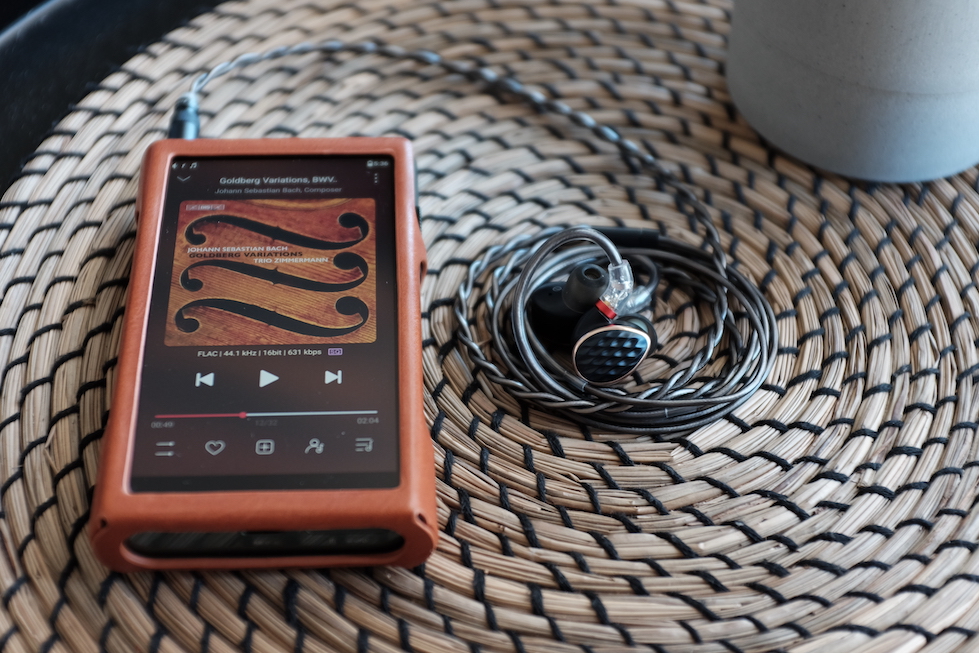
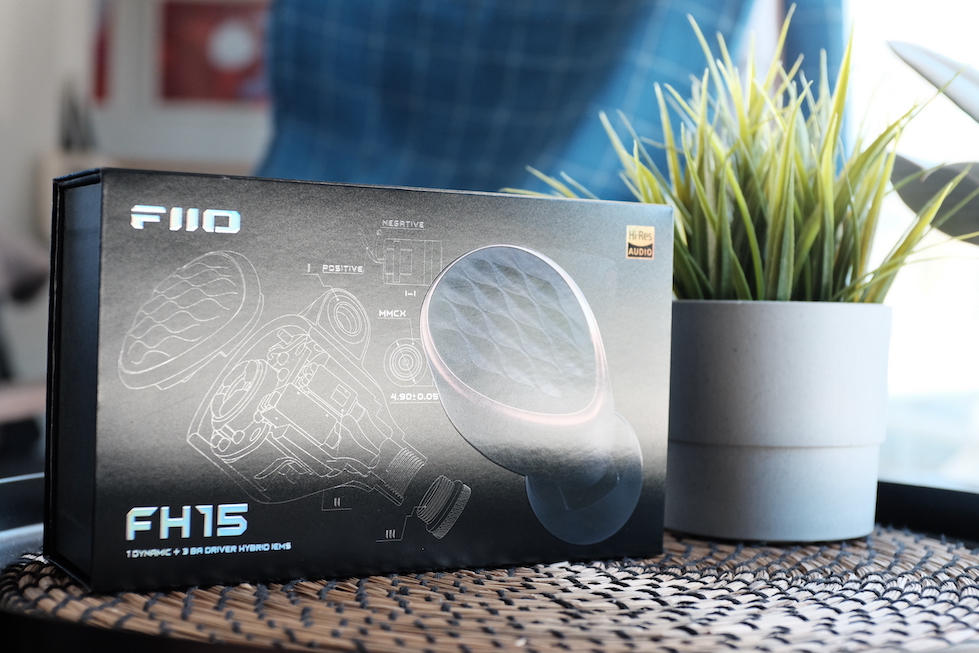
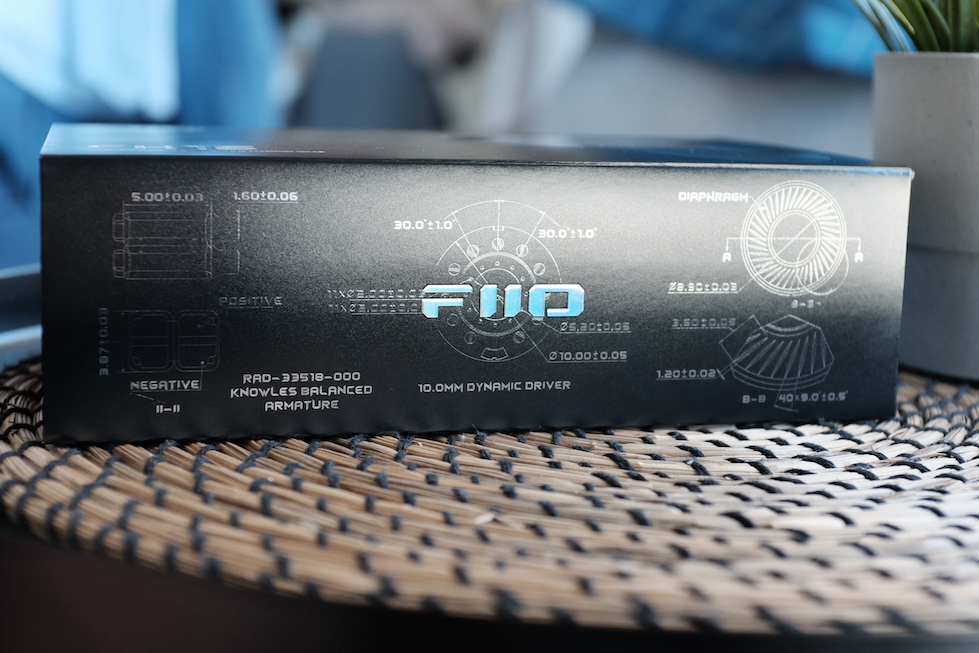
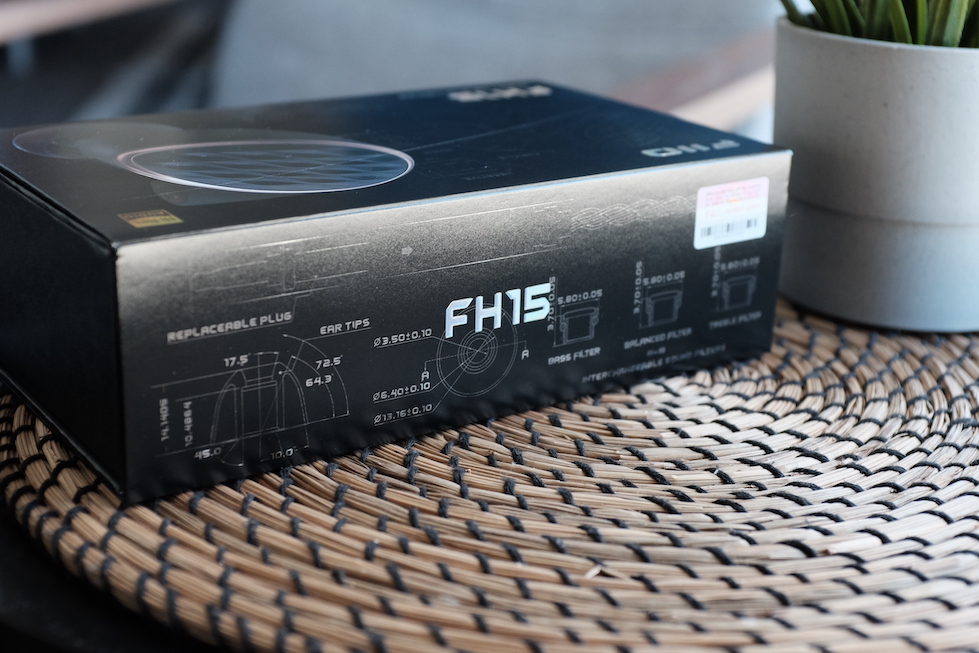
As usual, FH15 comes in a thick cardboard box decorated with schematic diagrams and holographic logos. No anime waifu (yet).

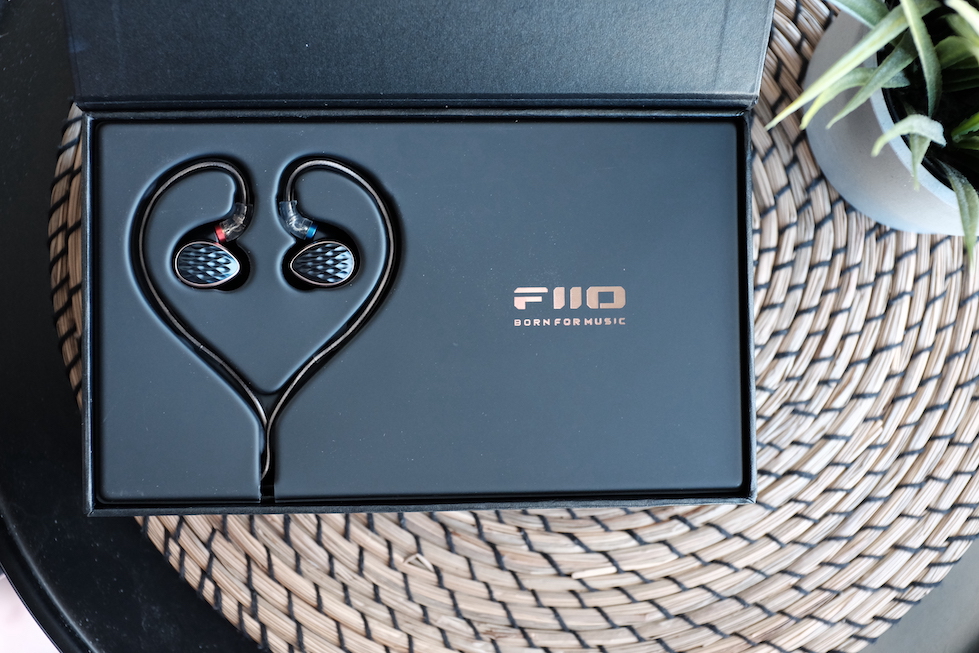
Inside the box, you are welcomed with the usual two-layer presentation. The IEM sits on the top layer. The bottom layer is reserved for accessories.
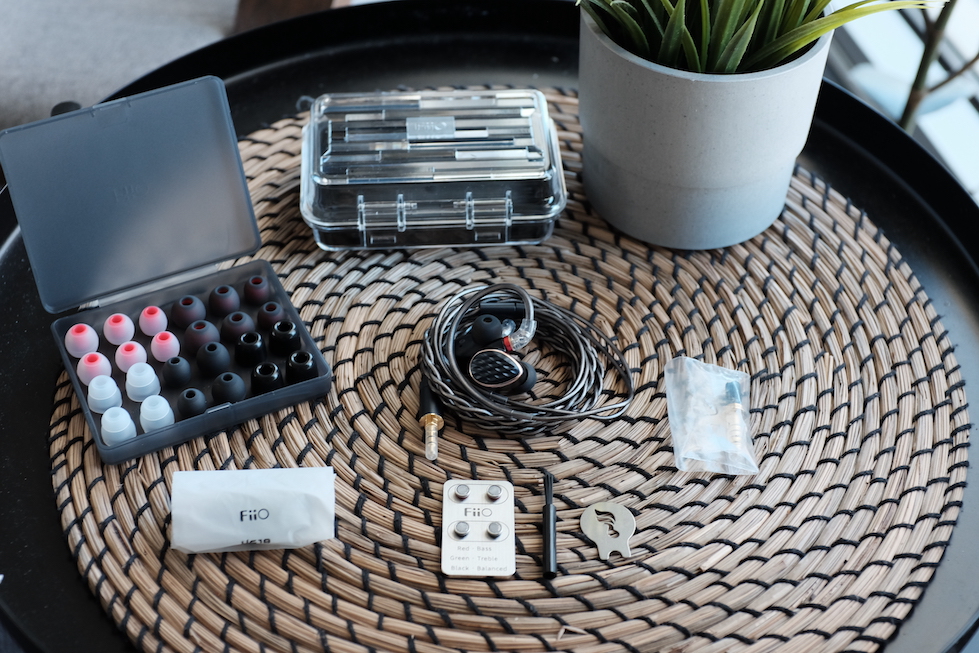
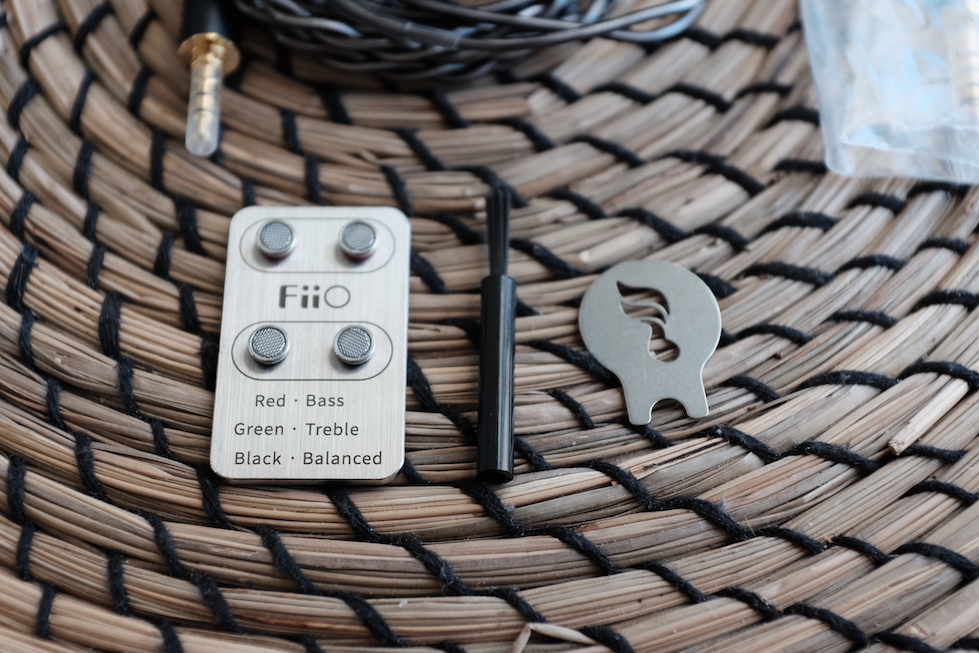
As usual, accessories are both generous and practical. You have a box of ear tips plus a complete set of the new HS18 tips, which I adore. You are also provided with a cleaning brush, a new and more practical MMCX tool for disconnecting the cable, and additional nozzles for adjusting the tuning of FH15.
The cable is a departure from the usual 8-strand cable. At first, I was disappointed, from an aesthetic point of view, that it has only 2 strands. However, it works great in practice, so I no longer mind it. The cable is terminated with an upgraded interchangeable plug that debuts with FF5. The new interchangeable plug system looks the same as the old one. Still, replacing the plugs is easier than the previous version.

The ear tips collection of FH15 is extensive. You should try all of them and see which one works best for you since they all sound different. I choose HS18 tips, as they are the most comfortable, and they tighten up the bass response of FH15, making the sound generally nicer.
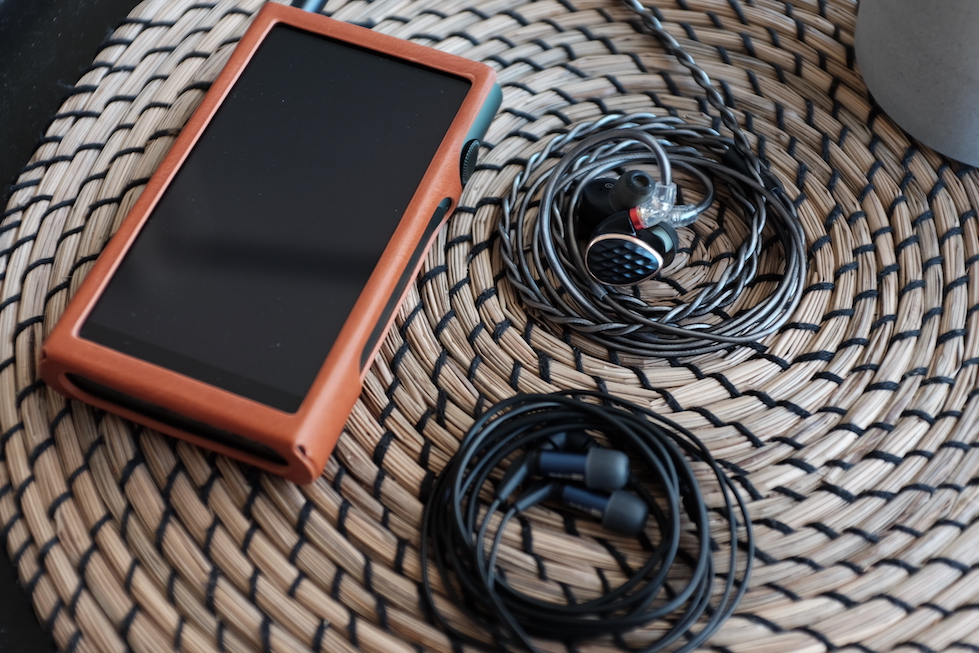
Let’s talk about the earpieces themselves. They have an old-school shape that is quite rare nowadays. Think of the famous Shure SE215 and Westone universal IEMs with modern nozzles rather than thin and long tubes.
The earpieces themselves are small but relatively thick. They have gold trims similar to the OG FH5. The car-like patterns on the faceplates of the FH5 have been replaced by a “dragon scales” design. I’m unsure about “dragon scales”, but the FH15 faceplates remind me of dragon eggs in Harry Potter or Game of Thrones. I was also a bit worried that the semi-open design of FH5s was gone. Luckily, the soundstage of FH15 is still formidable.
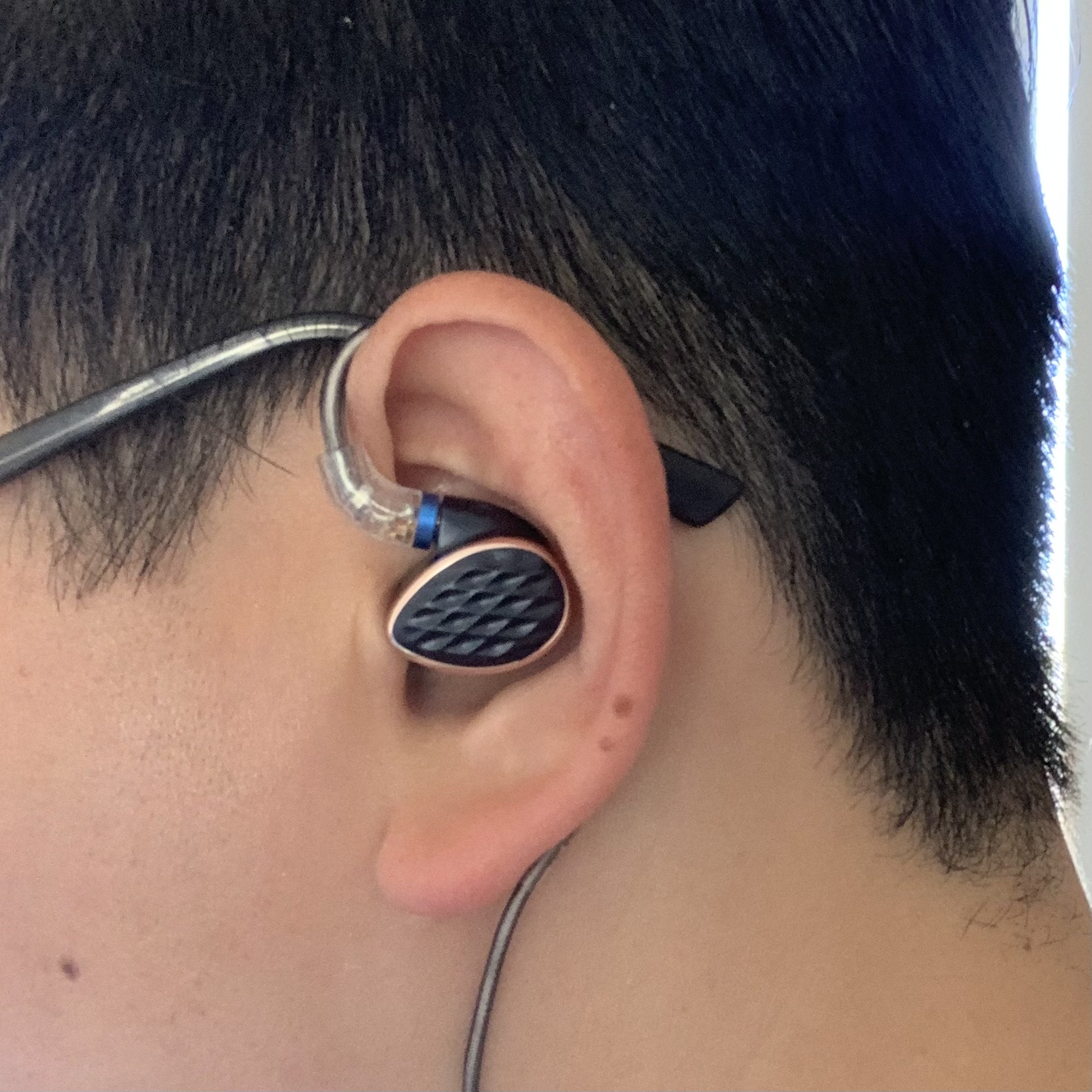
Before we move on, let’s quickly touch on the fit. The earpieces themselves are comfortable. You are unlikely to have comfort issues unless you try to deep-fit these, like wearing a pair of Shure or Westone. Interestingly, it is very tempting to deep fit, given how close to the conchas the earpiece can sit.
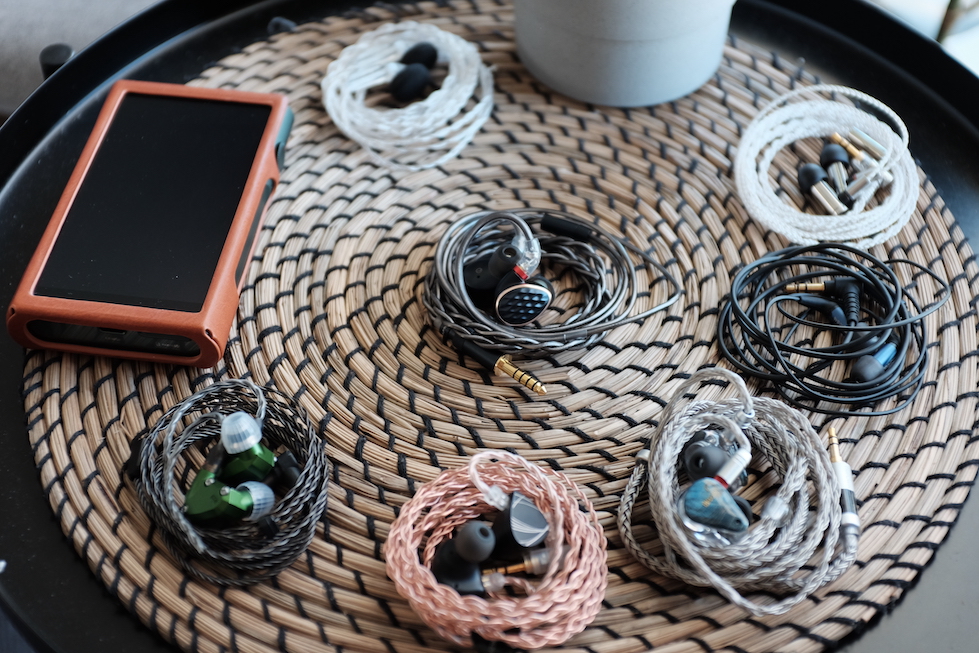
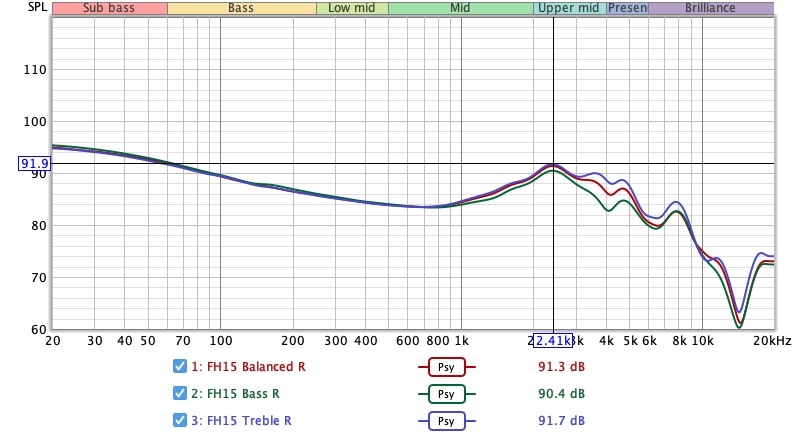
FH15 is a bass-focused IEM. But FiiO has executed this “fun” tonality with finesse and restraint. As a result, you can have an above-average amount of bass without sacrificing the naturalness of voices and instruments. At the same time, FH15 is never harsh or sibilance because FiiO controlled the bass boost well and thus did not need to increase the treble to compensate. The result is a thumpy sound signature with an open, natural-sounding midrange and gentle treble. It’s hard to hate the signature, but there are points to improve.
Let’s talk about the positive aspects.
Firstly, the ear-gain region is finally done correctly. Gone is the unfortunate “hump” at 1.5kHz from FH3 and FH5s that makes vocals and instruments honky, nasally. FH15 opts for a smooth, gentle raise from 1kHz, peaking at around 2.5kHz. The ear gain is only about 8dB rather than the usual 10-12dB used by Moondrop and Harman-targeted IEMs. It means that vocals and instruments are still loud and clear, but they do not get too loud to the point of “shouting” to your face. If you find modern IEMs too shouty, you might like FH15’s tuning.
Secondly, the infamous 5kHz peak that forms the “cat ear” tuning of FiiO does not exist on FH15. As a result, the attack side of musical notes, such as the pluck of a guitar string, does not feel too edgy and piercing. The subdued 6kHz region further smoothens the treble response of FH15, removing most sibilance and harshness. Of course, this tuning choice is a double-edged sword. I’ll discuss its negative aspects later.
Finally, the bass shelf is big and bold yet natural. FH15 has a sub-bass-focused shelf. It means that the bass goes up and up until 20Hz rather than peaking at 150Hz (mid-bass) and rolls off. When the bass drops, the sub-bass energy helps FH15 create a physical rumble in your throat and chest. For instance, when I listen to Skyrim’s main theme Dragonborn, I can feel the rumble with every beat of the war drums. The “boom boom” sound is not neglected either, unlike some other sub-bass-focused IEMs like Monarch II. With FH15, you hear the boom, and you feel it.

Let’s talk about some negative aspects.
Firstly, the treble. Yes, FH15 plays a bit too safe. Whilst the lower and mid-treble, up to around 8kHz, is subdued but still alright, I don’t quite appreciate the steep rolls off after 8kHz. One of the issues is that this tuning robs FH15 of some micro-details, particularly reverbs and decays, the sense of sound bouncing around the recording venue. This issue impacts older classical recordings the most because it hides a layer of information (and enjoyment) from the listener.
Secondly, FH15 tilt too far in the warmth and dark tuning. Whilst the graph shows a relatively clean bass shelf, in practice, the bass of FH15 “bleeds” into the midrange more than expected. Let me elaborate with an example: the One Winged Angel Themeperformed by Game Music Collective. FH15 renders the “boom boom” of the double bass quite loud. Moreover, the “boom” hangs around in the music too long, giving the whole orchestra a sense of “stuffiness”. When I swapped to the Aria (already a warm IEM), I breathed out with relief as if the windows of a closed and stuffy room had been opened.
Thirdly, the timbre of the instruments and vocals of FH15 is somewhat off. The problem is not too apparent with thumping commercial music or large orchestral pieces. The timbre problem appears with sparse music, such as the Chaconne in Bach’s Violin Partita No. 2 performed by James Ehnes, where there is nothing more besides the main instrument and the reverb of the room.
Simply put, the violin sounds boxy, as if it has too much “boom” in the lower end and high notes are muffled rather than being freely projected to the room. The sense of micro-dynamic, the subtle variation in volume, is also unimpressive. I can’t say whether these issues are due to the subdued treble or the “BA timbre”, but I don’t want to listen to Bach’s sonatas and partitas with FH15.
Conclusion: 3/5 - Average/Acceptable. FH15 is not fatiguing and sounds relatively correct most of the time. If you don’t listen to much acoustic music, you might not find any alarming problems with FH15.
Do they work? Yes, definitely. And if you combine them with the provided ear tips, you can have many different tunings.
However, I would argue that only one combination works if you want the most clarity, soundstage, and details from FH15: treble filter with HS18 ear tips. The balanced and bass filters tilt the tonal balance too far toward a warm and dark signature. Music notes become too thick. Details start to be masked. The soundstage shrinks and becomes congested.

Resolution is a fascinating subject due to the difficulty of pinning what it really is. To me, “resolution” can be separated into “macro” and “micro” levels. The “macro resolution” is synonymous with instrument separation. In general, if note attacks are very crisp and precise, musical instruments in a song would be distinctive even when they overlap on the soundstage. The “micro resolution” dictates how many details you can hear at the note tails. Many IEMs are good at macro- but mediocre at micro-resolution. A few are vice versa.
The macro-resolution of FH15 falls squarely at, or even slightly above, the “good” level, represented by the venerable Blessing 2.
Let’s take the One Winged Angel Theme performed by Game Music Collective as an example for analysing. At a glance, FH15 seems to be at Aria level (3/5 - Average) rather than Blessing 2. This impression is due to the boominess of the double bass and timpani drums. However, back-to-back A/B tests made it clear that FH15 renders instruments with more clarity and more separation than Aria, even when FH15 was held back by the boominess.
Similar observations can be made when comparing FH15 and Blessing 2. At a glance, Blessing 2 feels clearer. In A/B tests, they are on the same level regarding how they highlight and separate overlapping instruments in complex musical phrases. Again, FH15 does so whilst being handicapped by the boomy bass.
The micro-resolution of FH15 is slightly below the “good” level held by Blessing 2.
Let’s take the beautiful Rasputin cover by AURORA as an example. Blessing 2 highlights AURORA’s vocal in the mix and brings all the nuances, the “breaths”, to the surface. On the other hand, FH15 adds a slight warmth to AURORA’s voice, pushes her back to the mix, and lays a “veil” over the fine details. Don’t get me wrong, the details are there, but you need to look for it harder than with Blessing 2. However, FH15 is better than Blessing 2 at separation, allowing me to follow individual instruments and the backup vocals easier.
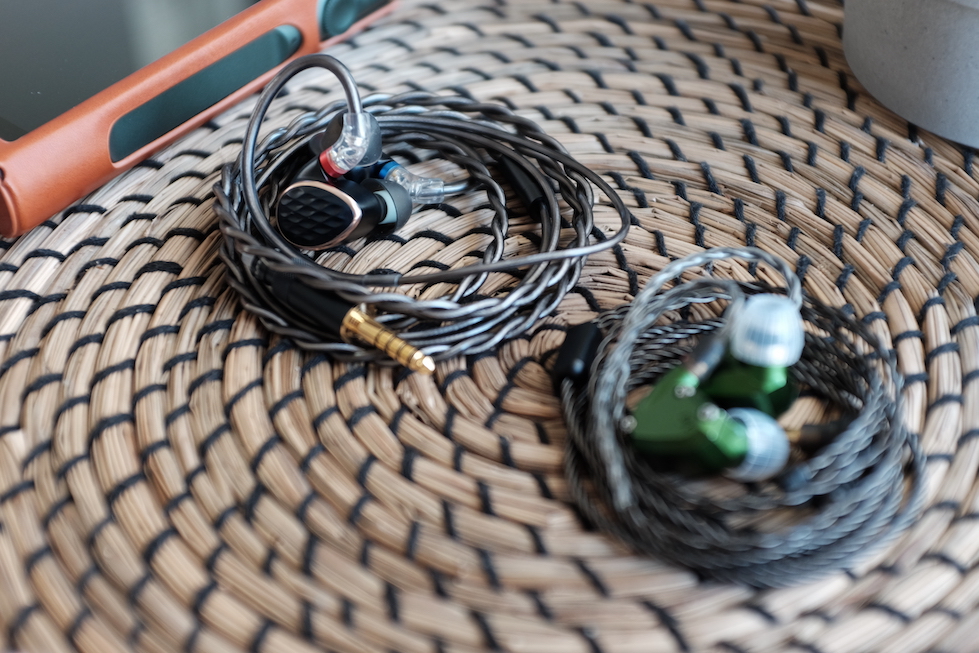
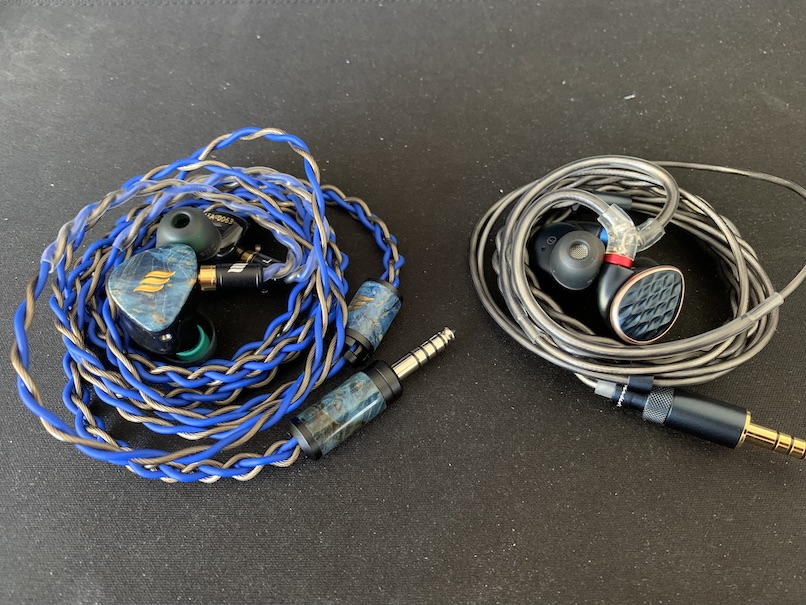
I did some A/B tests of the FH15 against Andromeda 2020 and the EA Gaea for fun. The mid-fi IEM managed to put up a decent fight against Andromeda but ultimately lost out in the crispness and nuance in the treble and the separation of instruments. And it should be noted that Andromeda is not an outstanding performer regarding resolution. Against the detail-focused Gaea, FH15 is not even in the same postcode.
Conclusion: 4/5 - Good.
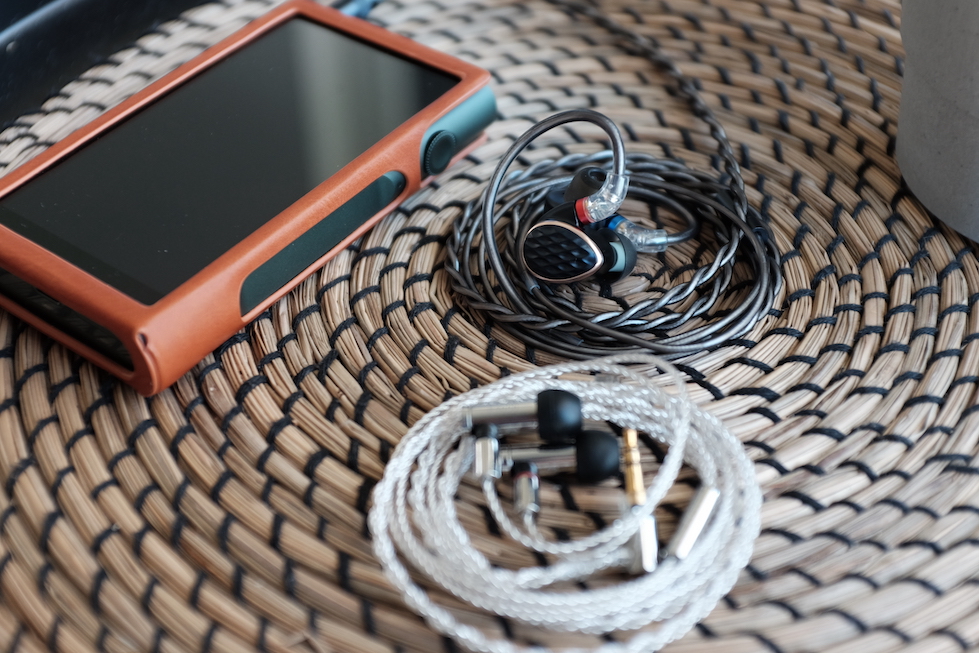
A reader recently asked me whether the ancient Final Audio E5000 is still a competitive bass cannon in 2023. That’s when I realised a well-done dark, bassy, gigabass IEM is still a rare breed.
FH15 can change that.
As I alluded to above, FH15 has a very potent bass response. For instance, the war drums in Skyrim’s main theme Dragonbornproduce noticeable pressure and rumble at every beat. The good part is you don’t lose much clarity and details to enjoy that bass. You don’t need a beefy source like you do with E5000.
Let’s listen to Eye of The Tiger and discuss how FH15 renders the rest of a rock band. Firstly, the separation between the kick drum and bass guitar is excellent. I can follow the bass line of the guitar easily whilst feeling the solid and deep punches of the kick. Snare drums feel tight and snappy. Drum rolls sound great. The low and mid-frequencies of the band are good.
However, I think the treble is a bit too subdued. For instance, cymbals and hi-hats are barely present in the mix. I can hear their faint ticking sound, but their nuances are lost. Is it a problem? It depends on how much you like (and tolerate) cymbals and hi-hats. If you listen to harsh music for hours, the subdued treble response may be a blessing.
Conclusion: 4/5 - Good.

Stereo imaging or “soundstage” is a psychoacoustic illusion that different recording elements appear at various locations inside and around your head. Your brain creates based on the cues in the recording, which are enhanced or diminished by your IEMs, DAC, and amplifier. Some IEMs present a wide but flat soundstage. Some show a “3D” soundstage with layering, depth, and height. In rare cases, with some specific songs, some IEMs can trick you into thinking that the sound comes from the environment (a.k.a., “holographic”)
If there is one bright spot in FH15’s performance, it’s the soundstage imaging.
Take the organised chaos G.O.A.T. by Polyphia as an example. FH15 projects a large soundstage that often seems just outside my ears and around my head. Within this stage, instruments are arranged in layers from closer to further away rather than a blob of a flat plane. This presentation immediately puts FH15 above the “good” level, represented by Blessing 2.
Does FH15 reach the elusive 5/5 soundstage imaging? Let’s take the Andromeda 2020 out for an A/B test and find out. I found that both IEMs are nearly identical regarding the 3D placement of instruments. Both present a strong, distinct centre image with complex guitar and drums right in the centre and the ambience thrown far to the background, both the sides and in front of me. This presentation is highlighted clearly around 1:04.
The Andromeda is noticeably crisper across the frequency range, especially the treble and the airy ambience in the background. As a result, it has the upper hand when separating and highlighting the details of the chaotic guitars in the centre of the image. But, even though the Andromeda is more detailed, I wouldn’t say it projects a larger or more 3D soundstage than FH15.
Conclusion: 5/5 - Excellent
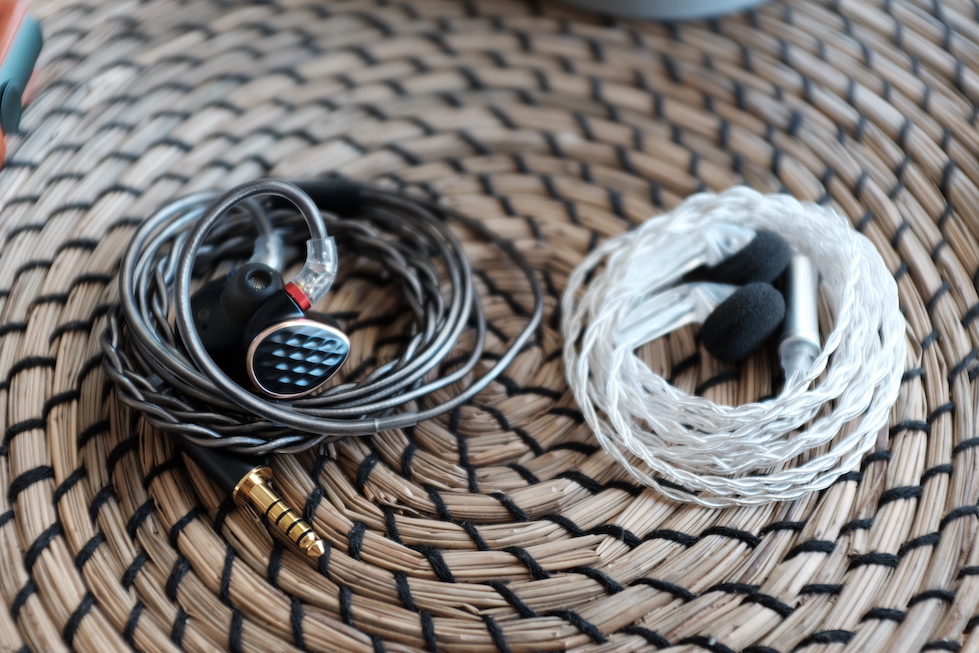
Pros:
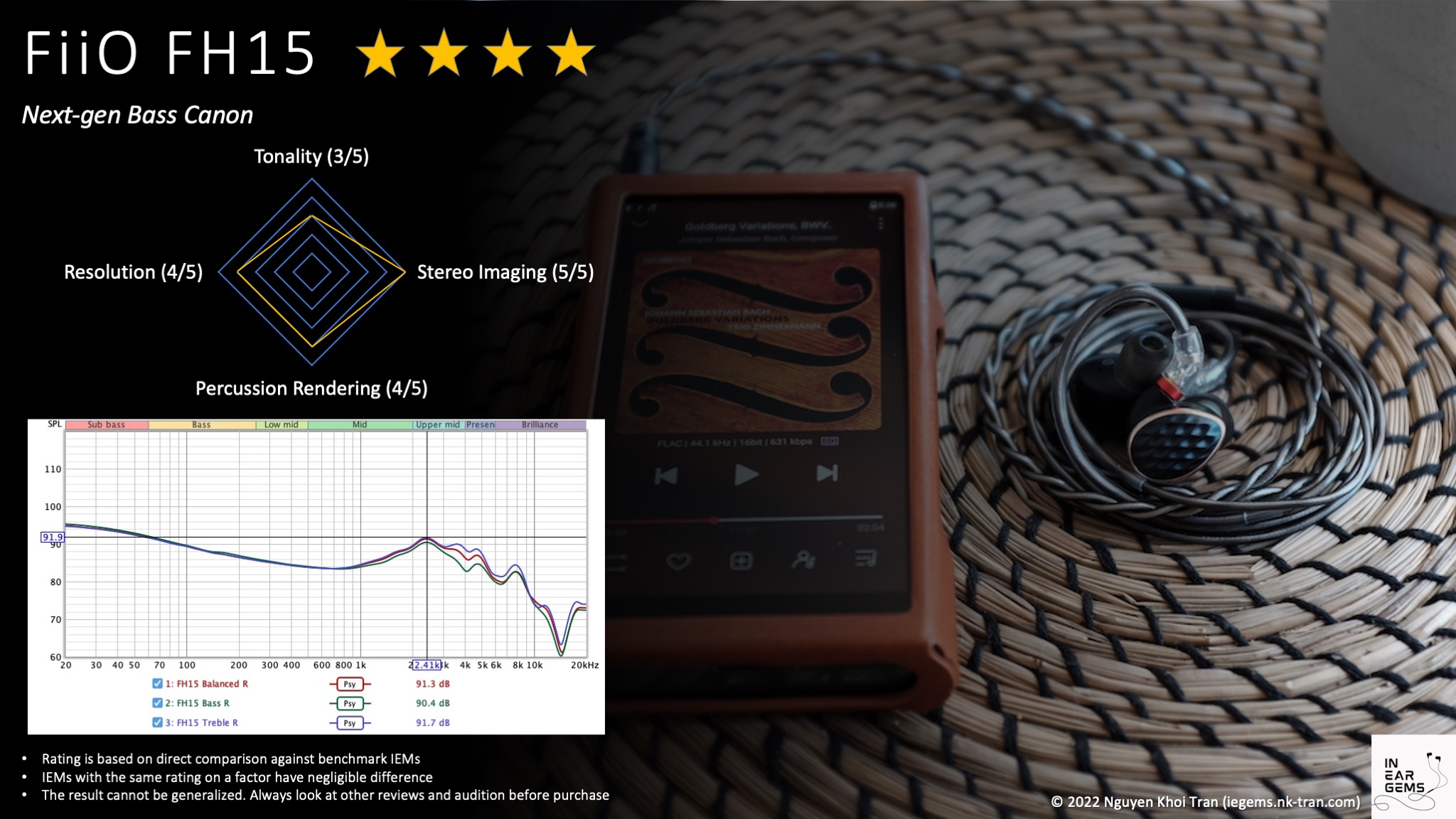
Updated: March 4, 2023
Whilst the FD line (FiiO’s Dynamic Driver IEMs) is predictable with a Harman-inspired tuning, and a varying degree of a treble peak at 5kHz, the FH line (FiiO’s Hybrid IEMs) is pretty much a wildcard. There seems to be no pre-defined target for this line, and thanks to the flexibility of a hybrid multi-driver configuration, FH IEMs can be anything. Sometimes they surprise you in a good way (FH9), sometimes they are honky (FH3), and sometimes they are just downright … strange (FH5s).
What can you expect from the latest addition to the FH line, the FH15? Let’s find out.

Forewords
- This unit is a review sample from FiiO (thank you!) FH15 retails for USD $230. You can find them at your local distributor or official FiiO store on Aliexpress.
- You should treat this review as the subjective impressions of an audio geek rather than an “objective truth” about the IEM. Your experience with any IEM would change depending on your DAC/AMP, music library, ear tips, and listening volume.
- I rate IEMs by A/B testing them against a few benchmark IEMs, regardless of price point. This approach ensures the consistency of the ratings in my ranking list. It means that if two IEMs score the same, they perform more or less similar.
- I believe that great IEMs are the ones that can achieve multiple difficult things simultaneously: (1) high resolution (meaning lines of music are crisp, clear, easy to follow and full of texture), (2) 3D soundstage with a strong sense of depth, (3) bold and natural bass with a physical rumble, (4) natural timbre, (5) relaxing and comfortable tonality.
- Ranking list and measurement database are on my IEM review blog.
Specs
- Driver: 3BA (Knowles ED for Mid, Knowles RAD for Treble) + 1 DD (10mm carbon-based diaphragm)
- Connector Type: MMCX
- Impedance: 16ohm@1kHz
- Sensitivity: 112dB/mW@1kHz
- Gimmick: Interchangeable nozzles for changing tonality
Non-sound Aspects
Ok, first thing first. FH15 is not the new flagship of Fiio’s FH line (that position is still FH9). It is the continuation of the FH5 line and the direct update of the FH5s model. Let me explain the organised chaos of FiiO’s product line:- “FH” indicates FiiO’s Hybrid IEMs, meaning IEMs with a combination of balanced armature (BA) drivers and dynamic drivers (DD). If you are unfamiliar with “drivers”, they are simply speakers. BA are the tiny ones used in hearing aid devices. DD is the mini version of the loudspeakers.
- “1” indicates the first generation that uses the new naming scheme (meaning the previous FH5 and FH5s should be labelled as FH05 and FH05s if we want 100% consistency)
- “5” indicates that the current product is in the middle of the FH line. For your information, “1” and “3” are for the lower end, the “7” label is for the upper end, and “9” is for the top of the line.



As usual, FH15 comes in a thick cardboard box decorated with schematic diagrams and holographic logos. No anime waifu (yet).


Inside the box, you are welcomed with the usual two-layer presentation. The IEM sits on the top layer. The bottom layer is reserved for accessories.


As usual, accessories are both generous and practical. You have a box of ear tips plus a complete set of the new HS18 tips, which I adore. You are also provided with a cleaning brush, a new and more practical MMCX tool for disconnecting the cable, and additional nozzles for adjusting the tuning of FH15.
The cable is a departure from the usual 8-strand cable. At first, I was disappointed, from an aesthetic point of view, that it has only 2 strands. However, it works great in practice, so I no longer mind it. The cable is terminated with an upgraded interchangeable plug that debuts with FF5. The new interchangeable plug system looks the same as the old one. Still, replacing the plugs is easier than the previous version.

The ear tips collection of FH15 is extensive. You should try all of them and see which one works best for you since they all sound different. I choose HS18 tips, as they are the most comfortable, and they tighten up the bass response of FH15, making the sound generally nicer.

Let’s talk about the earpieces themselves. They have an old-school shape that is quite rare nowadays. Think of the famous Shure SE215 and Westone universal IEMs with modern nozzles rather than thin and long tubes.
The earpieces themselves are small but relatively thick. They have gold trims similar to the OG FH5. The car-like patterns on the faceplates of the FH5 have been replaced by a “dragon scales” design. I’m unsure about “dragon scales”, but the FH15 faceplates remind me of dragon eggs in Harry Potter or Game of Thrones. I was also a bit worried that the semi-open design of FH5s was gone. Luckily, the soundstage of FH15 is still formidable.

Before we move on, let’s quickly touch on the fit. The earpieces themselves are comfortable. You are unlikely to have comfort issues unless you try to deep-fit these, like wearing a pair of Shure or Westone. Interestingly, it is very tempting to deep fit, given how close to the conchas the earpiece can sit.
How it soundsPermalink
Sources for listening tests:- Fiio K7 (for all A/B tests)
- Shanling M6 Ultra
- Hidizs S9 Pro

Tonality and Timbre: 3/5 - Average
Frequency response of FH15. Measurements were done with an IEC-711-compliant coupler and might only be compared with other measurements from this same coupler. Visit my graph database for more comparisons.
FH15 is a bass-focused IEM. But FiiO has executed this “fun” tonality with finesse and restraint. As a result, you can have an above-average amount of bass without sacrificing the naturalness of voices and instruments. At the same time, FH15 is never harsh or sibilance because FiiO controlled the bass boost well and thus did not need to increase the treble to compensate. The result is a thumpy sound signature with an open, natural-sounding midrange and gentle treble. It’s hard to hate the signature, but there are points to improve.
Let’s talk about the positive aspects.
Firstly, the ear-gain region is finally done correctly. Gone is the unfortunate “hump” at 1.5kHz from FH3 and FH5s that makes vocals and instruments honky, nasally. FH15 opts for a smooth, gentle raise from 1kHz, peaking at around 2.5kHz. The ear gain is only about 8dB rather than the usual 10-12dB used by Moondrop and Harman-targeted IEMs. It means that vocals and instruments are still loud and clear, but they do not get too loud to the point of “shouting” to your face. If you find modern IEMs too shouty, you might like FH15’s tuning.
Secondly, the infamous 5kHz peak that forms the “cat ear” tuning of FiiO does not exist on FH15. As a result, the attack side of musical notes, such as the pluck of a guitar string, does not feel too edgy and piercing. The subdued 6kHz region further smoothens the treble response of FH15, removing most sibilance and harshness. Of course, this tuning choice is a double-edged sword. I’ll discuss its negative aspects later.
Finally, the bass shelf is big and bold yet natural. FH15 has a sub-bass-focused shelf. It means that the bass goes up and up until 20Hz rather than peaking at 150Hz (mid-bass) and rolls off. When the bass drops, the sub-bass energy helps FH15 create a physical rumble in your throat and chest. For instance, when I listen to Skyrim’s main theme Dragonborn, I can feel the rumble with every beat of the war drums. The “boom boom” sound is not neglected either, unlike some other sub-bass-focused IEMs like Monarch II. With FH15, you hear the boom, and you feel it.

Let’s talk about some negative aspects.
Firstly, the treble. Yes, FH15 plays a bit too safe. Whilst the lower and mid-treble, up to around 8kHz, is subdued but still alright, I don’t quite appreciate the steep rolls off after 8kHz. One of the issues is that this tuning robs FH15 of some micro-details, particularly reverbs and decays, the sense of sound bouncing around the recording venue. This issue impacts older classical recordings the most because it hides a layer of information (and enjoyment) from the listener.
Secondly, FH15 tilt too far in the warmth and dark tuning. Whilst the graph shows a relatively clean bass shelf, in practice, the bass of FH15 “bleeds” into the midrange more than expected. Let me elaborate with an example: the One Winged Angel Themeperformed by Game Music Collective. FH15 renders the “boom boom” of the double bass quite loud. Moreover, the “boom” hangs around in the music too long, giving the whole orchestra a sense of “stuffiness”. When I swapped to the Aria (already a warm IEM), I breathed out with relief as if the windows of a closed and stuffy room had been opened.
Thirdly, the timbre of the instruments and vocals of FH15 is somewhat off. The problem is not too apparent with thumping commercial music or large orchestral pieces. The timbre problem appears with sparse music, such as the Chaconne in Bach’s Violin Partita No. 2 performed by James Ehnes, where there is nothing more besides the main instrument and the reverb of the room.
Simply put, the violin sounds boxy, as if it has too much “boom” in the lower end and high notes are muffled rather than being freely projected to the room. The sense of micro-dynamic, the subtle variation in volume, is also unimpressive. I can’t say whether these issues are due to the subdued treble or the “BA timbre”, but I don’t want to listen to Bach’s sonatas and partitas with FH15.
Conclusion: 3/5 - Average/Acceptable. FH15 is not fatiguing and sounds relatively correct most of the time. If you don’t listen to much acoustic music, you might not find any alarming problems with FH15.
Tuning filtersPermalink
FH15 is packed with 3 tuning filters that you can screw onto the nozzles to modify the treble response. The treble nozzles, which FH15 uses by default, contain only a metal mesh to protect the internals from dust and debris. The balanced nozzles have acoustic filters to tame the treble. The bass nozzles include thicker filters to further reduce the treble.Do they work? Yes, definitely. And if you combine them with the provided ear tips, you can have many different tunings.
However, I would argue that only one combination works if you want the most clarity, soundstage, and details from FH15: treble filter with HS18 ear tips. The balanced and bass filters tilt the tonal balance too far toward a warm and dark signature. Music notes become too thick. Details start to be masked. The soundstage shrinks and becomes congested.
Resolution, Detail, Separation: 4/5 - Good

Resolution is a fascinating subject due to the difficulty of pinning what it really is. To me, “resolution” can be separated into “macro” and “micro” levels. The “macro resolution” is synonymous with instrument separation. In general, if note attacks are very crisp and precise, musical instruments in a song would be distinctive even when they overlap on the soundstage. The “micro resolution” dictates how many details you can hear at the note tails. Many IEMs are good at macro- but mediocre at micro-resolution. A few are vice versa.
The macro-resolution of FH15 falls squarely at, or even slightly above, the “good” level, represented by the venerable Blessing 2.
Let’s take the One Winged Angel Theme performed by Game Music Collective as an example for analysing. At a glance, FH15 seems to be at Aria level (3/5 - Average) rather than Blessing 2. This impression is due to the boominess of the double bass and timpani drums. However, back-to-back A/B tests made it clear that FH15 renders instruments with more clarity and more separation than Aria, even when FH15 was held back by the boominess.
Similar observations can be made when comparing FH15 and Blessing 2. At a glance, Blessing 2 feels clearer. In A/B tests, they are on the same level regarding how they highlight and separate overlapping instruments in complex musical phrases. Again, FH15 does so whilst being handicapped by the boomy bass.
The micro-resolution of FH15 is slightly below the “good” level held by Blessing 2.
Let’s take the beautiful Rasputin cover by AURORA as an example. Blessing 2 highlights AURORA’s vocal in the mix and brings all the nuances, the “breaths”, to the surface. On the other hand, FH15 adds a slight warmth to AURORA’s voice, pushes her back to the mix, and lays a “veil” over the fine details. Don’t get me wrong, the details are there, but you need to look for it harder than with Blessing 2. However, FH15 is better than Blessing 2 at separation, allowing me to follow individual instruments and the backup vocals easier.


I did some A/B tests of the FH15 against Andromeda 2020 and the EA Gaea for fun. The mid-fi IEM managed to put up a decent fight against Andromeda but ultimately lost out in the crispness and nuance in the treble and the separation of instruments. And it should be noted that Andromeda is not an outstanding performer regarding resolution. Against the detail-focused Gaea, FH15 is not even in the same postcode.
Conclusion: 4/5 - Good.
Percussion Rendering: 4/5 - Good
Percussion and bass rendering reflect how well the tuning and technical performance of an IEM work together to recreate realistic sound of drum sets and bass instruments. Good drum hits have a crisp attack (controlled by frequencies from 4kHz to 6kHz), full body (midbass frequencies around 200Hz), and physical sensation (sub-bass frequencies around 50Hz). Good technical performance (“fast” driver) ensures that bass notes can be loud yet detailed. IEMs that cannot control bass very well tend to reduce the bass’ loudness to prevent muddiness.
A reader recently asked me whether the ancient Final Audio E5000 is still a competitive bass cannon in 2023. That’s when I realised a well-done dark, bassy, gigabass IEM is still a rare breed.
FH15 can change that.
As I alluded to above, FH15 has a very potent bass response. For instance, the war drums in Skyrim’s main theme Dragonbornproduce noticeable pressure and rumble at every beat. The good part is you don’t lose much clarity and details to enjoy that bass. You don’t need a beefy source like you do with E5000.
Let’s listen to Eye of The Tiger and discuss how FH15 renders the rest of a rock band. Firstly, the separation between the kick drum and bass guitar is excellent. I can follow the bass line of the guitar easily whilst feeling the solid and deep punches of the kick. Snare drums feel tight and snappy. Drum rolls sound great. The low and mid-frequencies of the band are good.
However, I think the treble is a bit too subdued. For instance, cymbals and hi-hats are barely present in the mix. I can hear their faint ticking sound, but their nuances are lost. Is it a problem? It depends on how much you like (and tolerate) cymbals and hi-hats. If you listen to harsh music for hours, the subdued treble response may be a blessing.
Conclusion: 4/5 - Good.
Stereo Imaging (Soundstage): 5/5 - Excellent

Stereo imaging or “soundstage” is a psychoacoustic illusion that different recording elements appear at various locations inside and around your head. Your brain creates based on the cues in the recording, which are enhanced or diminished by your IEMs, DAC, and amplifier. Some IEMs present a wide but flat soundstage. Some show a “3D” soundstage with layering, depth, and height. In rare cases, with some specific songs, some IEMs can trick you into thinking that the sound comes from the environment (a.k.a., “holographic”)
If there is one bright spot in FH15’s performance, it’s the soundstage imaging.
Take the organised chaos G.O.A.T. by Polyphia as an example. FH15 projects a large soundstage that often seems just outside my ears and around my head. Within this stage, instruments are arranged in layers from closer to further away rather than a blob of a flat plane. This presentation immediately puts FH15 above the “good” level, represented by Blessing 2.
Does FH15 reach the elusive 5/5 soundstage imaging? Let’s take the Andromeda 2020 out for an A/B test and find out. I found that both IEMs are nearly identical regarding the 3D placement of instruments. Both present a strong, distinct centre image with complex guitar and drums right in the centre and the ambience thrown far to the background, both the sides and in front of me. This presentation is highlighted clearly around 1:04.
The Andromeda is noticeably crisper across the frequency range, especially the treble and the airy ambience in the background. As a result, it has the upper hand when separating and highlighting the details of the chaotic guitars in the centre of the image. But, even though the Andromeda is more detailed, I wouldn’t say it projects a larger or more 3D soundstage than FH15.
Conclusion: 5/5 - Excellent

Source Pairing
FH15 is not picky. I have great results with the built-in DAC/amp of the Nintendo Switch. The soundstage does open up a bit when I switch to my K7 DAC/amp or my Shanling M6U music player, but I don’t feel the need to use these better sources.Conclusion
Despite my quibble about tonal balance and timbre, it is clear that FiiO successfully achieves a fun bassy sound signature with FH15. Suppose you have been yearning for a bass cannon with a slightly subdued midrange like E5000, but with better clarity and not as tricky to drive. In that case, the FiiO FH15 is a good candidate.Pros:
- Large and deep soundstage with good layering
- Big and deep-hitting bass
- Fun tuning that works well with commercial music
- No harshness across high frequencies
- Good sense of macro-details and separation
- Tonality tilts a bit too far in the warm and dark direction
- Timbre and tonality of acoustic instruments are not entirely correct
- Micro-detail retrieval is only average

Updated: March 4, 2023
Last edited:
o0genesis0o
Headphoneus Supremus
Pros: + A different sound signature that is uncommon at this price bracket
+ Interesting soundstage shape and structure
+ Tight and snappy bass response
+ Decently detailed
+ Great fit and comfort
+ Interesting soundstage shape and structure
+ Tight and snappy bass response
+ Decently detailed
+ Great fit and comfort
Cons: - The sound signature is divisive
- Lack of upper midrange makes most vocals and instruments dull and diffused
- The stereo imaging lacks clarity and precision to make the most of the interesting soundstage
- Sparse accessories
- Lack of upper midrange makes most vocals and instruments dull and diffused
- The stereo imaging lacks clarity and precision to make the most of the interesting soundstage
- Sparse accessories
ZiiGaat is yet another newcomer to the increasingly competitive IEM market. So, who are they? According to their story:
”WHILE THE WORLD ENJOYED HIGH-END AUDIO QUALITY, THERE HAS BEEN A SILENT TEAM BEHIND MANY OF TODAY’S MOST POPULAR AND PRAISED AUDIO DEVICES. ZIIGAAT HAS BEEN DEVELOPING OEM AND ODM PRODUCTS FOR NUMEROUS GLOBAL AUDIO BRANDS FOR OVER A DECADE. … We aim to be more than just an audio brand; we seek to be a tech team that can work closely with the audio community to make better products for all of us. Each ZiiGaat member is passionate for music and best-in-class audio resolution, and we are on a mission to help people rediscover their music like never before.”
Maybe I’m easily convinced because the story of ZiiGaat struck a chord with me and created an intense anticipation of hearing their sound. I love the idea of a strong team with the necessary passion and skills to realise the ideal IEMs we audio geeks have undoubtedly dreamed of. But you know what they say: “A man is judged by his deeds, not words.”
Today, we will look at Cinno, a 5-driver hybrid IEM from ZiiGaat, to answer the burning question: is it any good?
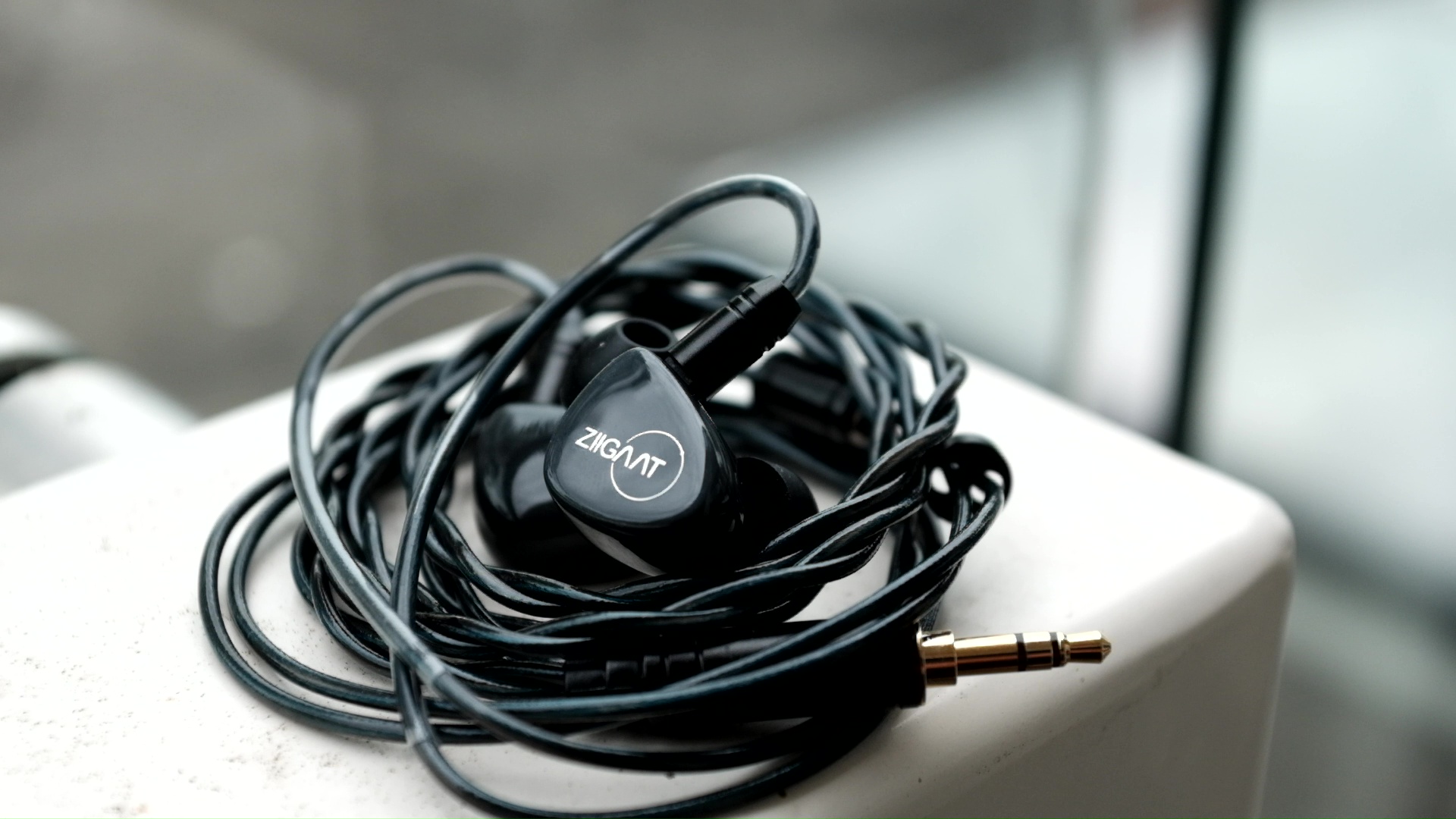
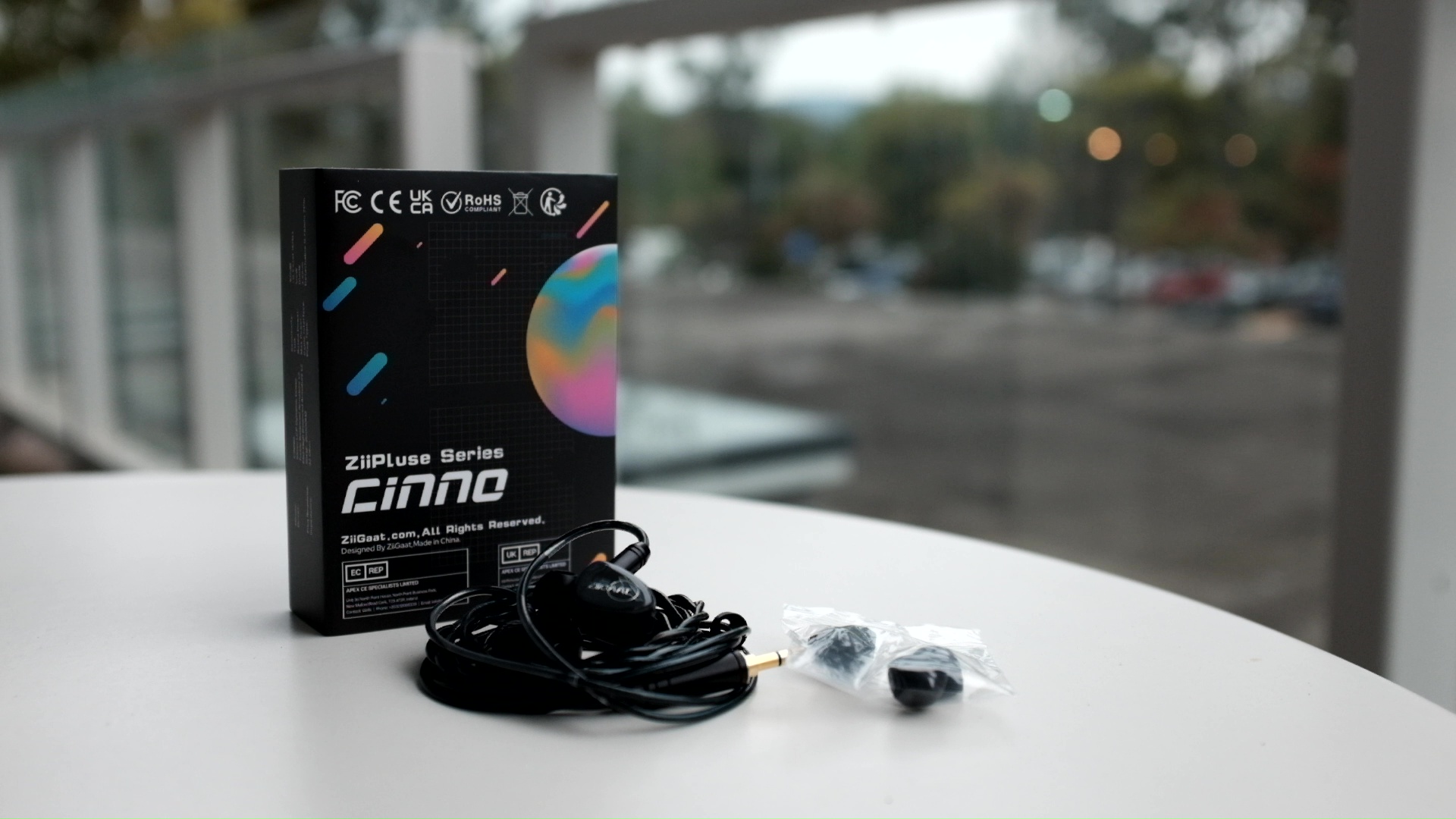
Very sparse for a $99 IEM. You have the earpieces themselves, a cable, and one type of ear tips. Subjective Experience ===
As usual, our discussion of subjective experience starts with fit and comfort. As I mentioned above, Cinno is surprisingly tiny, to the point I find it hard to believe that there are 5 drivers inside these small earpieces. The earpieces are made of very light plastic with a glossy finish and no sharp edge. The nozzles are on the shorter side with medium width. They pair well with the provided ear tips, which are slightly longer than average. The stock cable is also light, though not tangly or flimsy. As a result, Cinno aces the fit and comfort.
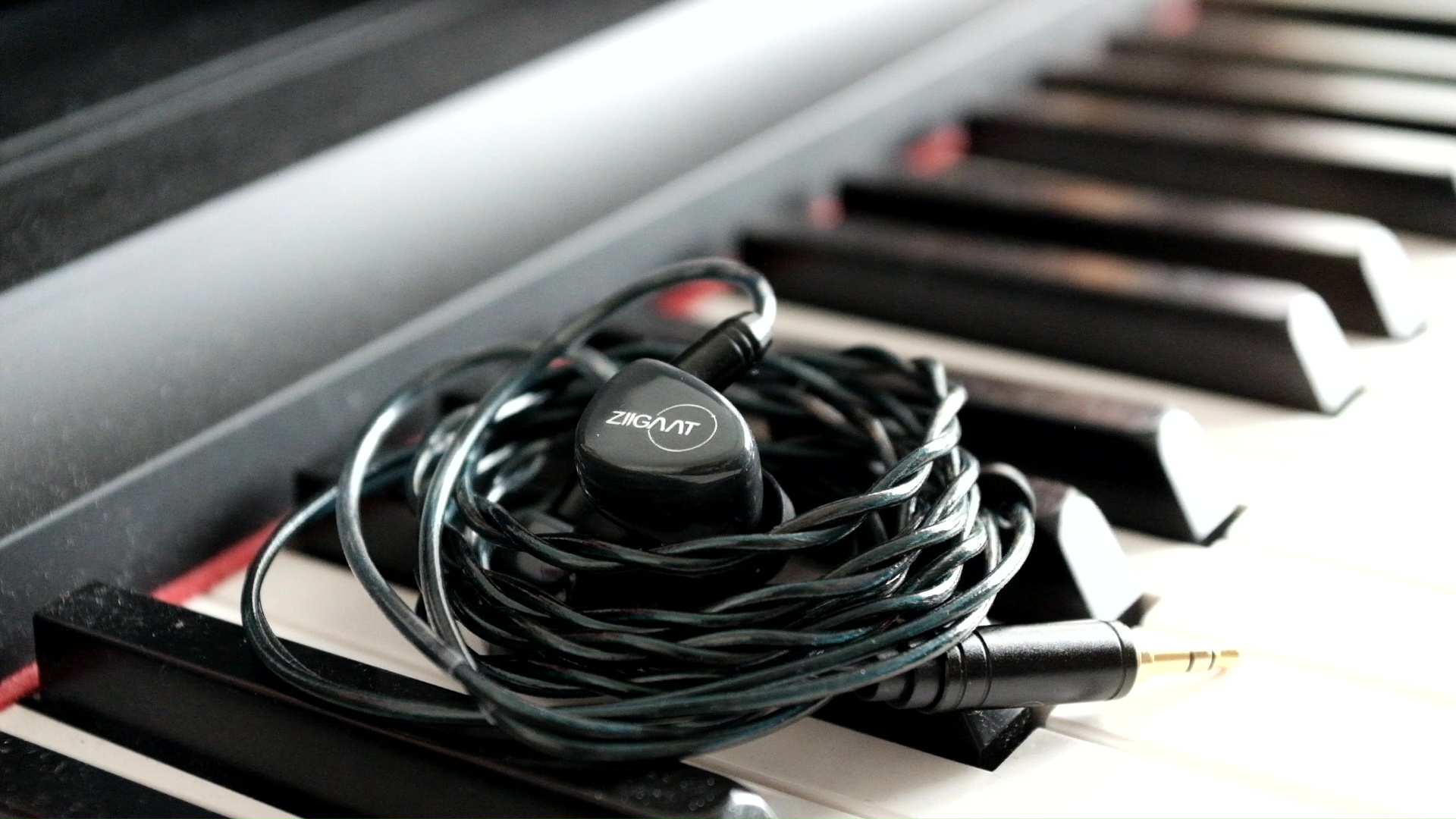
How do they actually sound?
The overall theme of Cinno’s sonic performance can be considered “different.” With Cinno, ZiiGaat opted for a tonal balance utterly different from most of the new releases from the Eastern IEM market, allowing this IEM to present the music uniquely. On the plus side, this unique presentation can provide you something fresh and new in a market increasingly dominated by Harman-inspired and diffuse field sound signatures. On the other hand, you might never get used to the unique presentation of Cinno, rendering this IEM unusable for your library.
The sound signature of Cinno is defined by two characteristics: the absence of the usual upper midrange boost (also known as ear gain compensation) and the robust bass response. Superficially, the tonal balance of Cinno somewhat reminds me of another interestingly-tuned IEM, the Unique Melody MEST MkIII. This resemblance exerts some influence over the shape and structure of Cinno’s soundstage.

The absence of an upper midrange boost has two effects. Firstly, it helps Cinno create a convincing illusion of distant and forward projection of the stereo image. For example, when I listened to the “Gladiator Suite” in the album LIVE by Hans Zimmer, Cinno does a great job at pushing the cheers of the audience and the background strings in the first 30 seconds further in the background, as if they come from somewhere further away, outside the head stage. I particularly enjoy how Cinno places instruments at the front-left and front-right positions. The only issue holding Cinno back is that the instruments’ positioning (left-to-right) and layering (near-to-far) lack precision and focus.
The other effect of the upper midrange absence is less optimistic, however. Simply put, Cinno usually creates the impression that the midrange is too diffused and lacks focus. This impression is particularly noticeable when listening to music that requires presence and brilliance, such as the Mendelssohn Violin Concerto by James Ehnes. I kept feeling that a certain level of “shine” and “edge” was missing from the soloist’s violin, forcing me to turn up the volume. However, the rest of the orchestra quickly becomes too loud, forcing me to pull the volume down. This constant push-and-pull was infuriating sometimes.

The same situation happens with vocal-only music such as Bohemian Rhapsody by Pentatonix. On the plus side, there was no harshness, shoutiness, or sibilance. On the other hand, voices can sound infuriatingly dull sometimes.
Let’s end the subjective impressions positively: Cinno’s bass performance. The best keyword to describe the bass of Cinno is “tight.” Because of the upper midrange’s absence, Cinno’s gently boosted bass stands out more. Percussion hits have a sharp leading edge, decent impact and decay. For instance, when I listened to “Backside of The TV” and “Signs of Love” from the soundtracks of Persona 4, I found the basslines to be toe-tapping due to how snappy, tight, and clean they sound.
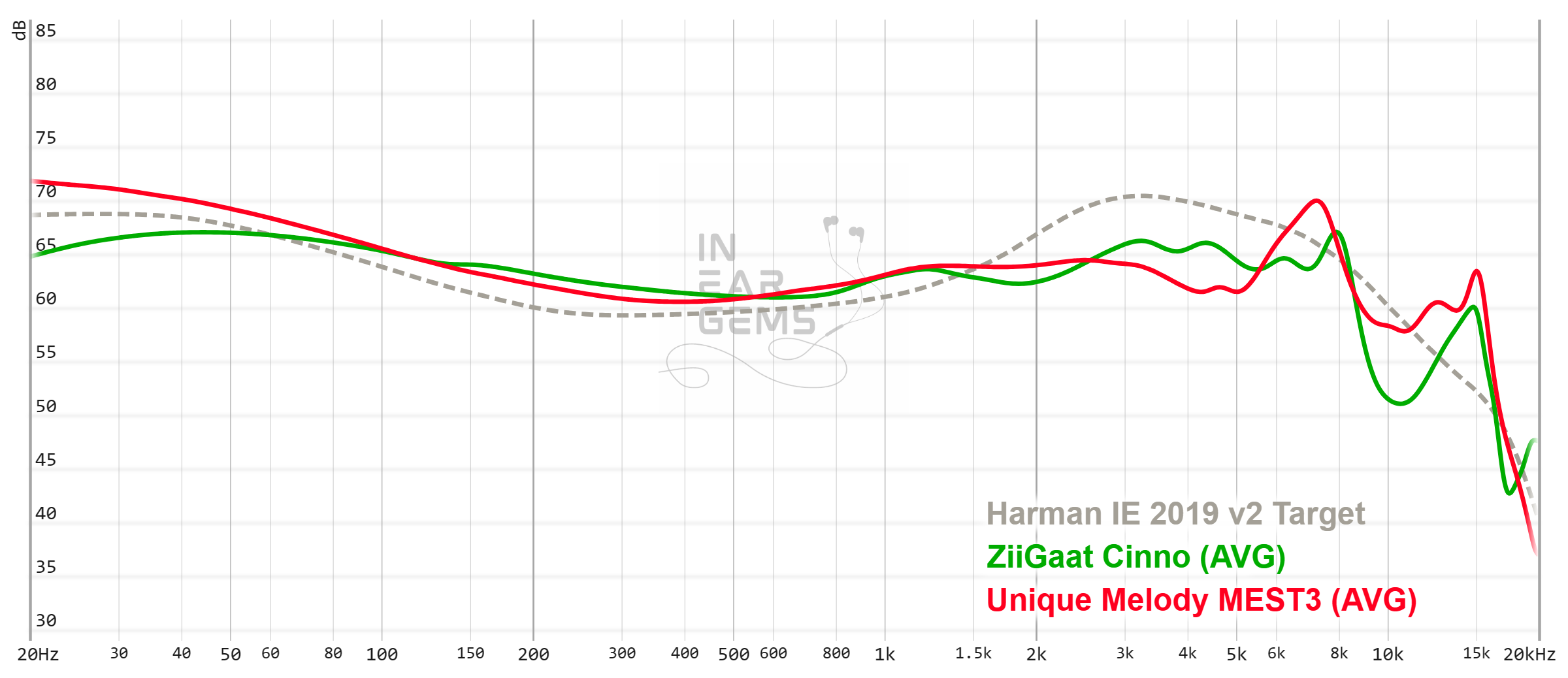
It is helpful to think of an IEM as a filter that highlights or subdues different parts of the incoming audio signal. This effect can be measured objectively by the squiggly lines above, called Frequency Response (FR) graphs, which measure how loud an IEM is at different frequencies from 20Hz (bass) to 20kHz (upper treble). Subjectivity is how your ears and brain interpret the effect of that filter on your music and decide whether it is “enjoyable.” There are some “rules of thumb” when it comes to tonality, but most interesting IEMs usually bend the rules masterfully.
As mentioned, Cinno’s signature is defined by the absence of an upper midrange and a gently boosted bass. Interestingly, the 2kHz region is actively suppressed after an early gain at 1kHz. Still, I’m not convinced by ZiiGaat’s tuning choice in this upper midrange region.
I also think that ZiiGaat could have boosted the 5kHz to 8kHz region a few dB extra to compensate for the subdued upper midrange. Without the upper midrange, the tonality of an IEM would likely always be coloured and somewhat unnatural, but adding a bit of treble “bite” might remove that infuriating dullness that I mentioned above.

Resolution is a fascinating subject due to the difficulty of pinning down what it really is. To me, “resolution” can be broken down into three components: (1) Sharpness, incisiveness, or “definition” of note attacks (see the figure above). (2) The separation of instruments and vocals, especially when they overlap on the soundstage. (3) The texture and details in the decay side of the notes. The first two give music clarity and make it easy to track individual elements of a mix. The last provides music details and nuances. Smooth and well extended treble response plays a crucial role.
If you have followed along until this point of the review, you might guess that Cinno does relatively poorly regarding resolution. Interestingly, that’s not the case. I would say that Cinno is deceptively resolving.
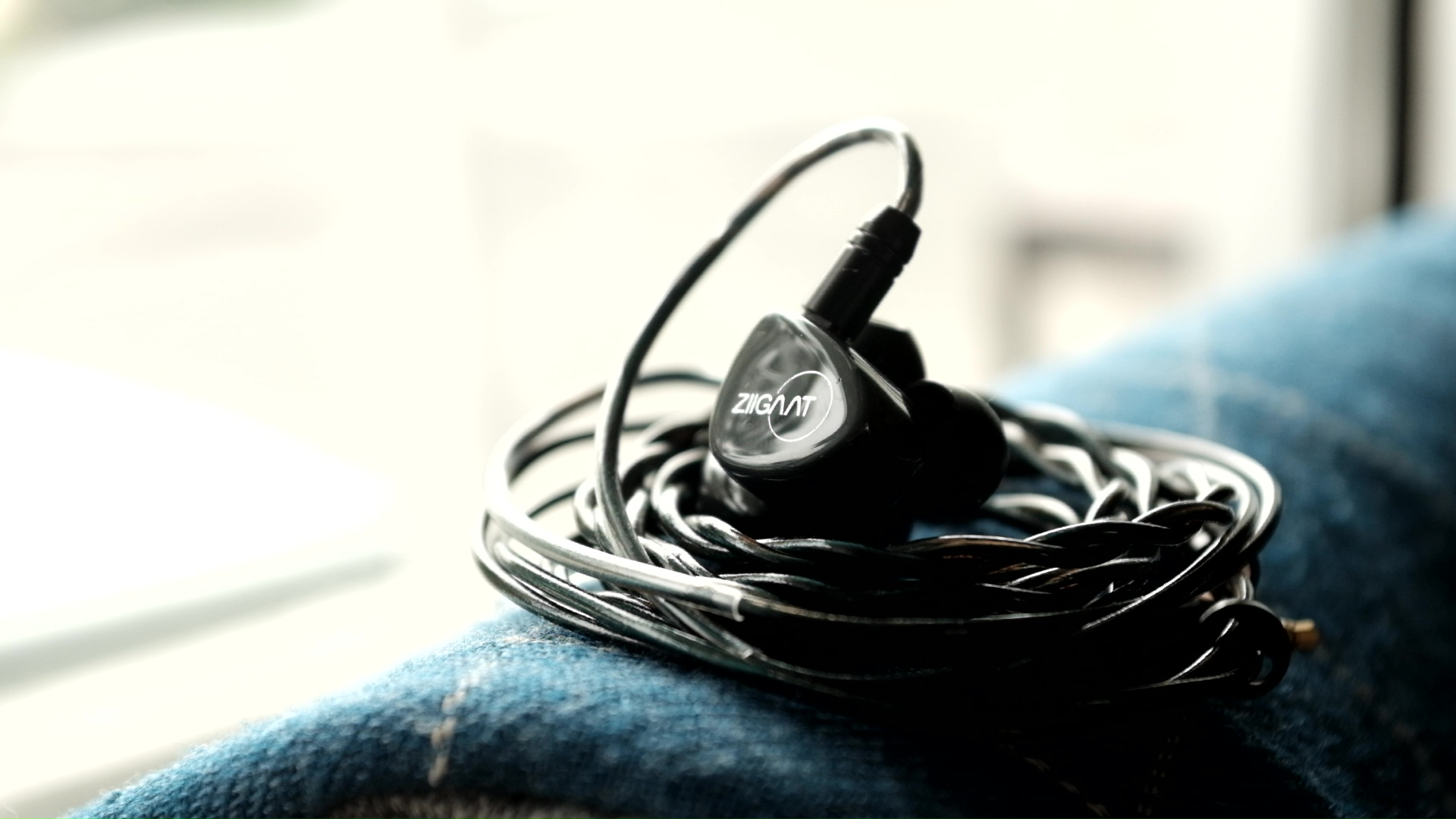
As an example, let’s listen to “I’ll Face Myself” from the Persona 4 soundtrack album and compare Cinno to the venerable Moondrop Blessing 2, my benchmark for “good” resolution (3/5). When I swapped from Cinno to Blessing 2 the first time, I breathed a sigh of relief because that upper midrange presence I craved finally returned. However, after my ears (and expectations) had been adjusted to the tonal balance, I was surprised to find that Cinno could define and separate instruments in the mix as well as the brighter Blessing 2. In fact, I was able to pick out more details across the spectrum, especially in the lower frequencies, with Cinno. It’s hard to say whether Cinno is strictly more resolving than Blessing 2 or the extra details are a side effect of the tonal balance. Still, I would place the resolution of Cinno in the same bracket as Blessing 2 - Good.

Stereo imaging or “soundstage” is a psychoacoustic illusion that different recording elements appear at various locations inside and around your head. Your brain creates based on the cues in the recording, which are enhanced or diminushed by your IEMs, your DAC, and your amplifier. Some IEMs present a wide but flat soundstage. Some present a “3D” soundstage with layering, depth, and height. In rare cases, with some specific songs, some IEMs can trick you into thinking that the sound comes from the environment (a.k.a., “holographic”)
The soundstage of Cinno is challenging to assess. On the one hand, due to the unique tonal balance, Cinno can present a more intriguing soundstage than the usual Harman-ish IEMs, especially regarding the distant background sounds in the mixes. On the other hand, the instrument placement and layering of Cinno lack the precision and focus to make the most of that unique soundstage structure. Overall, I would consider Cinno’s soundstage imaging “good.”
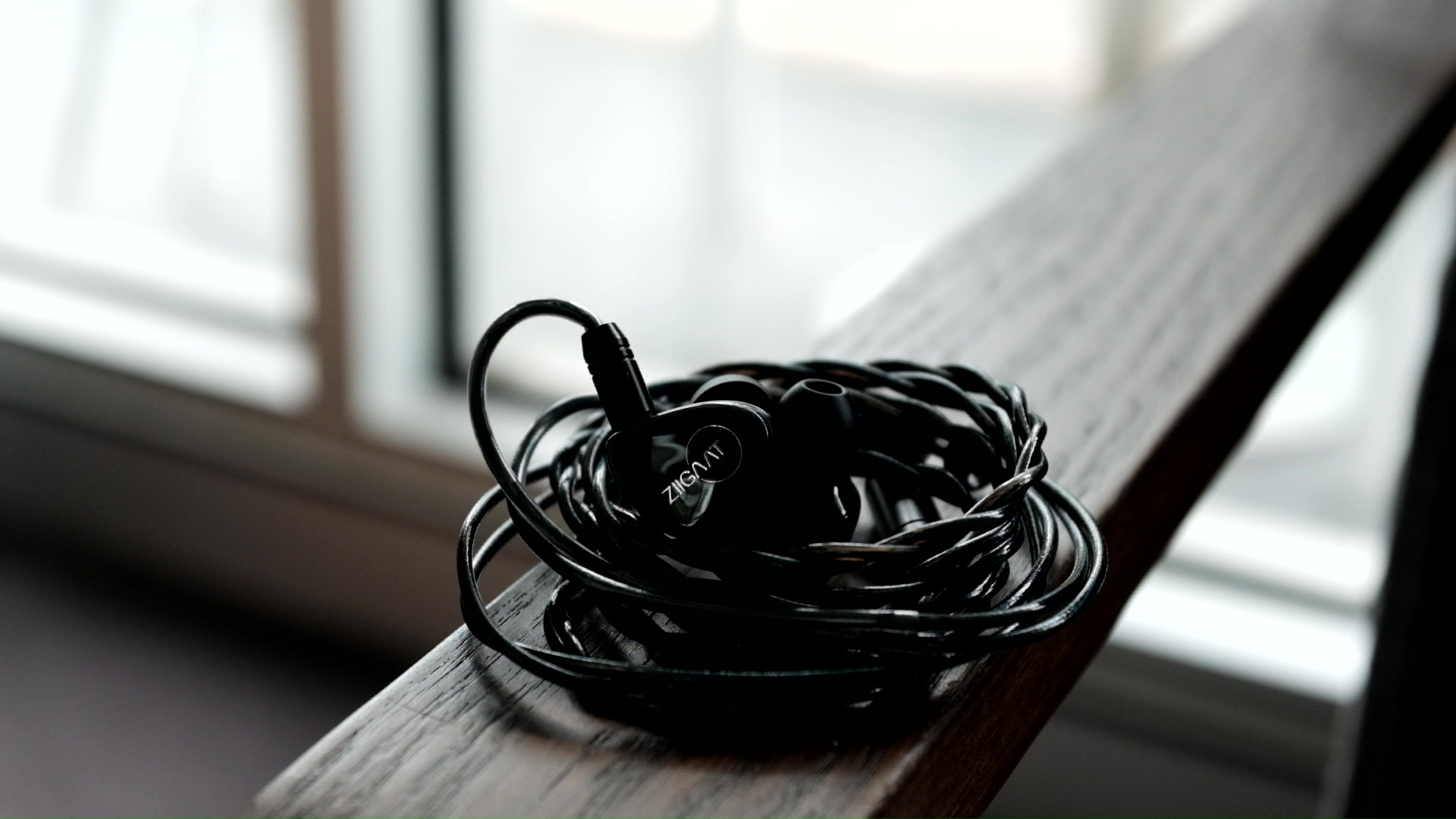
Soundstage imaging with games (CS GO Gameplay by Throneful) Cinno does a surprisingly good job in FPS games. The subdued upper midrange brings about two advantages. Firstly, gunshots and footsteps are a bit more distant, even out-of-head most of the time. Because everything is more spread out, it is easier to pinpoint and track the location of sounds. Secondly, the more subdued upper midrange softens the sound of gunshots, making it easier on the ears.
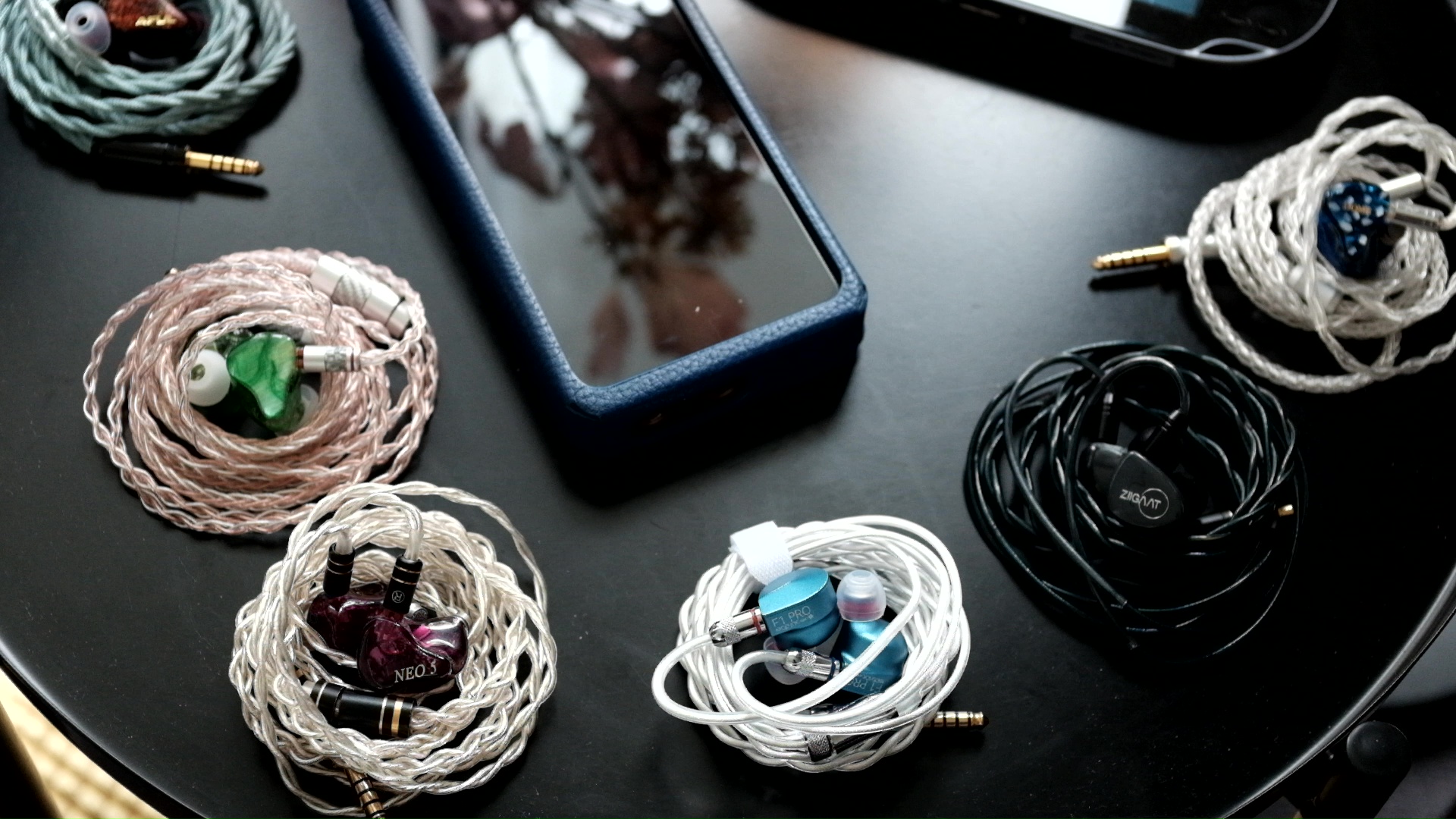
Simgot EM6L:
So, Should you consider Cinno? Yes, but only if you are branching out to try something different and accept the risk of doing so.
Absolute Sonic Quality Rating: 3/5 (Tonality: 2/5; Resolution: 3/5; Spatial: 3/5; Bass and Dynamic: 4/5)
Bias Score: 3/5 (I’m lukewarm about this IEM)
Value Proposition: Top of the 3/5 class. Above average across my dataset.
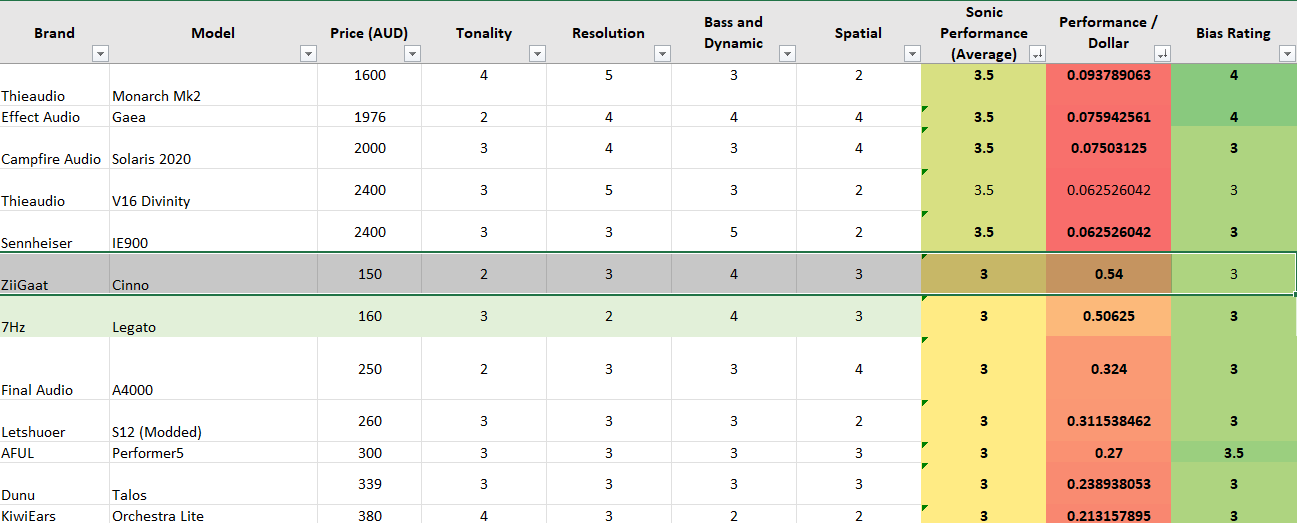
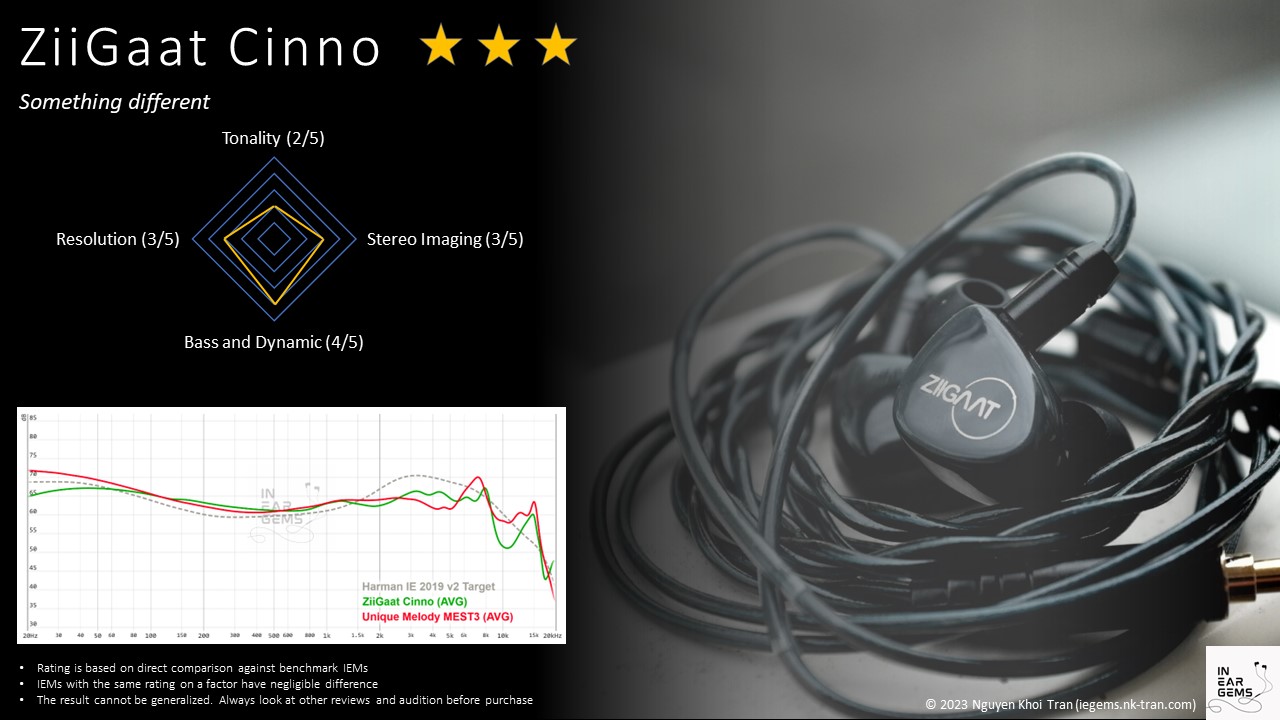
Updated: January 4, 2024
”WHILE THE WORLD ENJOYED HIGH-END AUDIO QUALITY, THERE HAS BEEN A SILENT TEAM BEHIND MANY OF TODAY’S MOST POPULAR AND PRAISED AUDIO DEVICES. ZIIGAAT HAS BEEN DEVELOPING OEM AND ODM PRODUCTS FOR NUMEROUS GLOBAL AUDIO BRANDS FOR OVER A DECADE. … We aim to be more than just an audio brand; we seek to be a tech team that can work closely with the audio community to make better products for all of us. Each ZiiGaat member is passionate for music and best-in-class audio resolution, and we are on a mission to help people rediscover their music like never before.”
Maybe I’m easily convinced because the story of ZiiGaat struck a chord with me and created an intense anticipation of hearing their sound. I love the idea of a strong team with the necessary passion and skills to realise the ideal IEMs we audio geeks have undoubtedly dreamed of. But you know what they say: “A man is judged by his deeds, not words.”
Today, we will look at Cinno, a 5-driver hybrid IEM from ZiiGaat, to answer the burning question: is it any good?

Forewords
- What I look for in an IEM is immersion. I want to feel the orchestra around me, track individual instruments, and hear all of their textures and details. I’m not picky about tonality, as long as it does not get in the way of immersion.
- I rate IEMs within with a consistent scale from 1 (poor) to 3 (Adequate) to 5 (outstanding). Ratings are assigned by A/B tests against benchmark IEMs, regardless of the retail price.
- Ranking list and measurement database are on my IEM review blog.
- Terms used in my reviews are consistent with the glossary by Headphonesty
- This review is based on a review sample from Linsoul (Thank you!). I have no affiliation with or financial interest in Linsoul or ZiiGaat.
- The unit retails for $99 at the time this review was published. Unaffiliated link
Accessories and Packaging

Very sparse for a $99 IEM. You have the earpieces themselves, a cable, and one type of ear tips. Subjective Experience ===
As usual, our discussion of subjective experience starts with fit and comfort. As I mentioned above, Cinno is surprisingly tiny, to the point I find it hard to believe that there are 5 drivers inside these small earpieces. The earpieces are made of very light plastic with a glossy finish and no sharp edge. The nozzles are on the shorter side with medium width. They pair well with the provided ear tips, which are slightly longer than average. The stock cable is also light, though not tangly or flimsy. As a result, Cinno aces the fit and comfort.

How do they actually sound?
The overall theme of Cinno’s sonic performance can be considered “different.” With Cinno, ZiiGaat opted for a tonal balance utterly different from most of the new releases from the Eastern IEM market, allowing this IEM to present the music uniquely. On the plus side, this unique presentation can provide you something fresh and new in a market increasingly dominated by Harman-inspired and diffuse field sound signatures. On the other hand, you might never get used to the unique presentation of Cinno, rendering this IEM unusable for your library.
The sound signature of Cinno is defined by two characteristics: the absence of the usual upper midrange boost (also known as ear gain compensation) and the robust bass response. Superficially, the tonal balance of Cinno somewhat reminds me of another interestingly-tuned IEM, the Unique Melody MEST MkIII. This resemblance exerts some influence over the shape and structure of Cinno’s soundstage.

The absence of an upper midrange boost has two effects. Firstly, it helps Cinno create a convincing illusion of distant and forward projection of the stereo image. For example, when I listened to the “Gladiator Suite” in the album LIVE by Hans Zimmer, Cinno does a great job at pushing the cheers of the audience and the background strings in the first 30 seconds further in the background, as if they come from somewhere further away, outside the head stage. I particularly enjoy how Cinno places instruments at the front-left and front-right positions. The only issue holding Cinno back is that the instruments’ positioning (left-to-right) and layering (near-to-far) lack precision and focus.
The other effect of the upper midrange absence is less optimistic, however. Simply put, Cinno usually creates the impression that the midrange is too diffused and lacks focus. This impression is particularly noticeable when listening to music that requires presence and brilliance, such as the Mendelssohn Violin Concerto by James Ehnes. I kept feeling that a certain level of “shine” and “edge” was missing from the soloist’s violin, forcing me to turn up the volume. However, the rest of the orchestra quickly becomes too loud, forcing me to pull the volume down. This constant push-and-pull was infuriating sometimes.

The same situation happens with vocal-only music such as Bohemian Rhapsody by Pentatonix. On the plus side, there was no harshness, shoutiness, or sibilance. On the other hand, voices can sound infuriatingly dull sometimes.
Let’s end the subjective impressions positively: Cinno’s bass performance. The best keyword to describe the bass of Cinno is “tight.” Because of the upper midrange’s absence, Cinno’s gently boosted bass stands out more. Percussion hits have a sharp leading edge, decent impact and decay. For instance, when I listened to “Backside of The TV” and “Signs of Love” from the soundtracks of Persona 4, I found the basslines to be toe-tapping due to how snappy, tight, and clean they sound.
Frequency Response Analysis
Frequency response of Cinno against the Harman in-ear target and Unique Melody MEST III. Measurements were done with an IEC-711-compliant coupler and might only be compared with other measurements from this same coupler. Visit my graph database for more comparisons.
It is helpful to think of an IEM as a filter that highlights or subdues different parts of the incoming audio signal. This effect can be measured objectively by the squiggly lines above, called Frequency Response (FR) graphs, which measure how loud an IEM is at different frequencies from 20Hz (bass) to 20kHz (upper treble). Subjectivity is how your ears and brain interpret the effect of that filter on your music and decide whether it is “enjoyable.” There are some “rules of thumb” when it comes to tonality, but most interesting IEMs usually bend the rules masterfully.
As mentioned, Cinno’s signature is defined by the absence of an upper midrange and a gently boosted bass. Interestingly, the 2kHz region is actively suppressed after an early gain at 1kHz. Still, I’m not convinced by ZiiGaat’s tuning choice in this upper midrange region.
I also think that ZiiGaat could have boosted the 5kHz to 8kHz region a few dB extra to compensate for the subdued upper midrange. Without the upper midrange, the tonality of an IEM would likely always be coloured and somewhat unnatural, but adding a bit of treble “bite” might remove that infuriating dullness that I mentioned above.
Resolution

Resolution is a fascinating subject due to the difficulty of pinning down what it really is. To me, “resolution” can be broken down into three components: (1) Sharpness, incisiveness, or “definition” of note attacks (see the figure above). (2) The separation of instruments and vocals, especially when they overlap on the soundstage. (3) The texture and details in the decay side of the notes. The first two give music clarity and make it easy to track individual elements of a mix. The last provides music details and nuances. Smooth and well extended treble response plays a crucial role.
If you have followed along until this point of the review, you might guess that Cinno does relatively poorly regarding resolution. Interestingly, that’s not the case. I would say that Cinno is deceptively resolving.

As an example, let’s listen to “I’ll Face Myself” from the Persona 4 soundtrack album and compare Cinno to the venerable Moondrop Blessing 2, my benchmark for “good” resolution (3/5). When I swapped from Cinno to Blessing 2 the first time, I breathed a sigh of relief because that upper midrange presence I craved finally returned. However, after my ears (and expectations) had been adjusted to the tonal balance, I was surprised to find that Cinno could define and separate instruments in the mix as well as the brighter Blessing 2. In fact, I was able to pick out more details across the spectrum, especially in the lower frequencies, with Cinno. It’s hard to say whether Cinno is strictly more resolving than Blessing 2 or the extra details are a side effect of the tonal balance. Still, I would place the resolution of Cinno in the same bracket as Blessing 2 - Good.
Soundstage Imaging

Stereo imaging or “soundstage” is a psychoacoustic illusion that different recording elements appear at various locations inside and around your head. Your brain creates based on the cues in the recording, which are enhanced or diminushed by your IEMs, your DAC, and your amplifier. Some IEMs present a wide but flat soundstage. Some present a “3D” soundstage with layering, depth, and height. In rare cases, with some specific songs, some IEMs can trick you into thinking that the sound comes from the environment (a.k.a., “holographic”)
The soundstage of Cinno is challenging to assess. On the one hand, due to the unique tonal balance, Cinno can present a more intriguing soundstage than the usual Harman-ish IEMs, especially regarding the distant background sounds in the mixes. On the other hand, the instrument placement and layering of Cinno lack the precision and focus to make the most of that unique soundstage structure. Overall, I would consider Cinno’s soundstage imaging “good.”

Soundstage imaging with games (CS GO Gameplay by Throneful) Cinno does a surprisingly good job in FPS games. The subdued upper midrange brings about two advantages. Firstly, gunshots and footsteps are a bit more distant, even out-of-head most of the time. Because everything is more spread out, it is easier to pinpoint and track the location of sounds. Secondly, the more subdued upper midrange softens the sound of gunshots, making it easier on the ears.
Comparisons

Simgot EM6L:
- EM6L and Cinno are polar opposite in terms of tonal balance and soundstage presentation.
- EM6L is focused, near, and centered. Cinno is diffused and more spread out.
- Both IEMs have tiny earpieces that offer great comfort.
Rating and Conclusion
ZiiGaat Cinno is an interesting IEM with a unique tonal balance. As with many unique things in the world, Cinno is divisive. In fact, I also find myself conflicted about this IEM. On the one hand, in certain tracks, I find the absence of an upper midrange unacceptable, if not infuriating and irritating. On the other hand, the soundstage is always more interesting than usual due to the unique tuning. An unexpected benefit of this tuning is how well it plays background music for daily activities. The subdued upper midrange allows the IEM to “fade away” and avoid disrupting my concentration.So, Should you consider Cinno? Yes, but only if you are branching out to try something different and accept the risk of doing so.
Absolute Sonic Quality Rating: 3/5 (Tonality: 2/5; Resolution: 3/5; Spatial: 3/5; Bass and Dynamic: 4/5)
Bias Score: 3/5 (I’m lukewarm about this IEM)
Value Proposition: Top of the 3/5 class. Above average across my dataset.


Updated: January 4, 2024
o0genesis0o
Headphoneus Supremus
Pros: + Analog volume pot
+ Neutral, uncoloured midrange tonality
+ Pitch black background with sensitive IEMs.
+ Punchy and dynamic presentation with most IEMs
+ Expand the soundstage of most IEMs
+ Volume can be low enough to work with sensitive IEMs
+ Enough power to fully drive most head-fi gears
+ Neutral, uncoloured midrange tonality
+ Pitch black background with sensitive IEMs.
+ Punchy and dynamic presentation with most IEMs
+ Expand the soundstage of most IEMs
+ Volume can be low enough to work with sensitive IEMs
+ Enough power to fully drive most head-fi gears
Cons: - Channel imbalance at low volume
- Susceptible to EMI noises
- Susceptible to EMI noises
The first time I visited a hi-fi store, I saw a person holding a big “brick”, either a digital audio player or a portable amplifier, in his hand to listen to IEMs.
I didn’t know what or how expensive it was, but that person seemed to enjoy using it. So I wanted a “brick” for myself. As I got deeper into this audio hobby, like some (many?) newbies, I went through the phase of parroting: “Apple dongle is all you need.” Yet, the “brick” was always in my mind, despite how illogical it seemed.
One thing led to another, and now I’ve also got an audio brick for myself - Topping G5. Have I gone mad? Let’s talk about G5 from the perspective of a sceptical IEM listener.
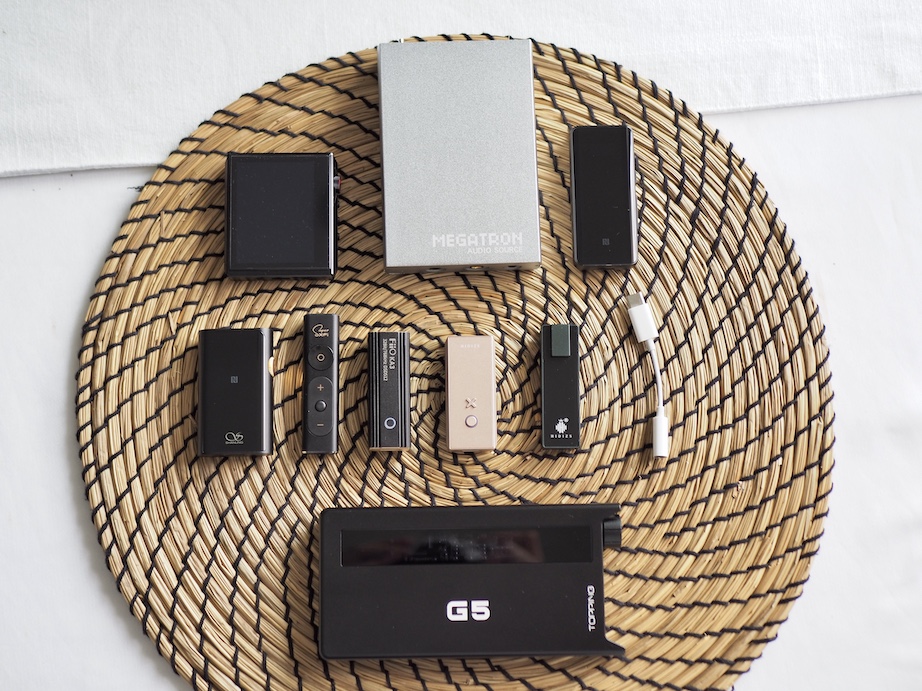

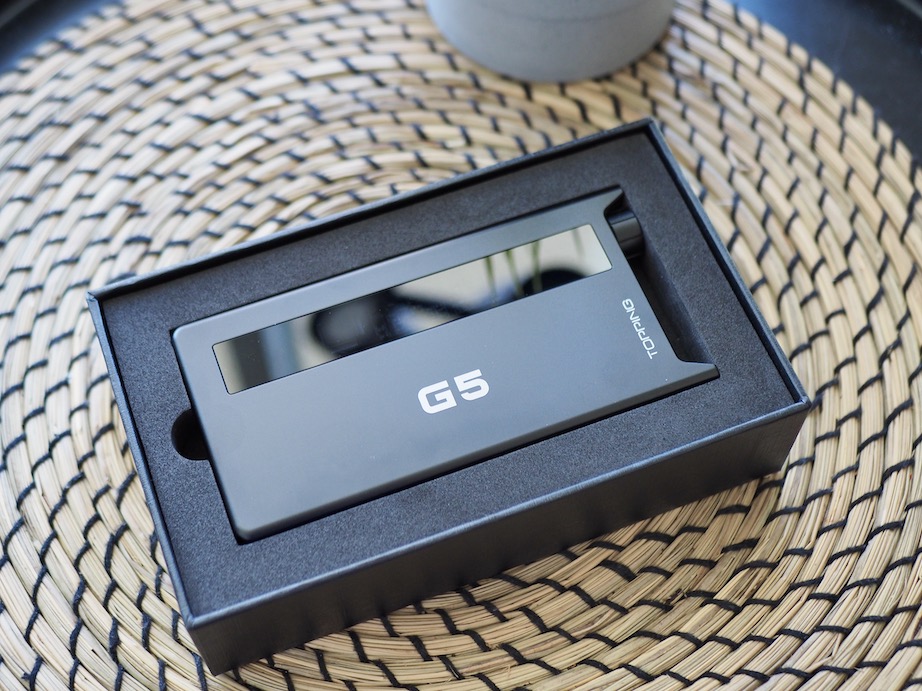
G5 comes in a plain, quaint cardboard box that is full of goodies:
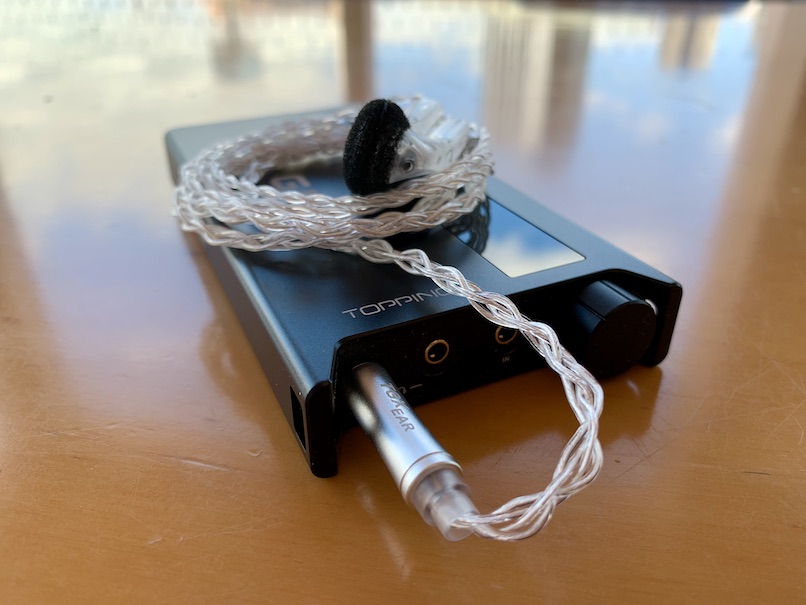
Topping G5 is an attractive device that looks good and feels right. When we unboxed in the store, the store staffs and I were wowed by G5’s understated look and rigidity.
Size-wise, G5 is as large as a mid-sized iPhone but at least 50% thicker. Due to the complete metal build, G5 is a weighty unit. It creates an assuring feeling that you are holding something legitimate in your hands.
Topping covers the back of G5 with a leathery surface to prevent scratches when stacking the amp against your phone or music player. This leather surface also provides a soft and organic touch when holding G5 in your palm.
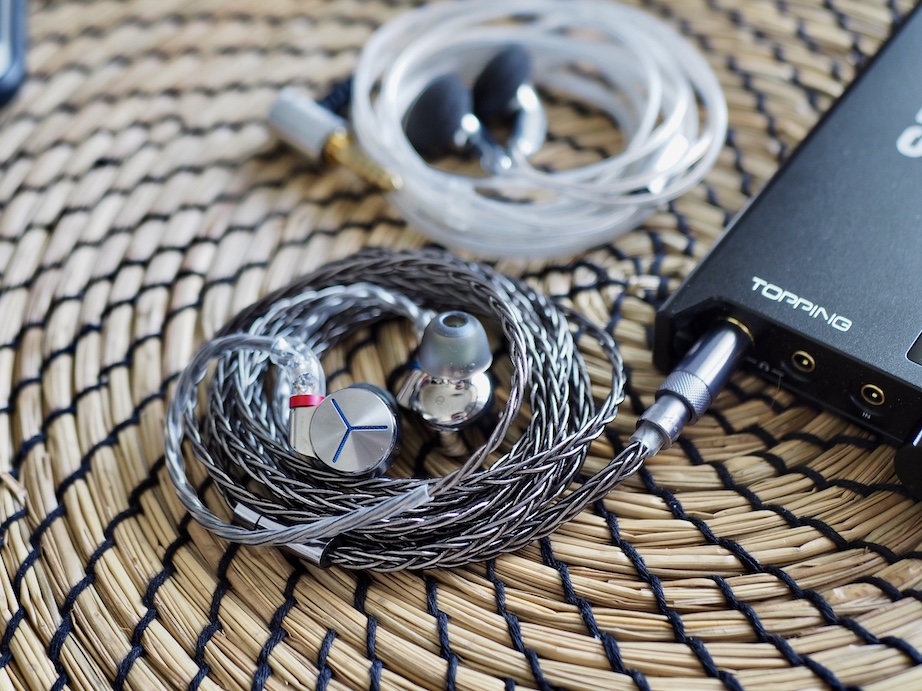
On the top side of the G5 are an analogue volume knob and three audio output ports (3.5mm and 4.4mm headphone out and 3.5mm line out / line in). The analogue volume knob is my favourite feature of G5. It serves as both an on/off switch and a volume control. Rotate clockwise to turn on the device and turn up the volume. The knob rotates smoothly rather than ratchetingbetween steps, allowing you to dial the volume precisely. Two protruding metal “ears” protect the volume knob from accidental rotation.
It should be noted that G5 does not have a fully balanced architecture. It means the 4.4mm and the 3.5mm output sound the same. I have no problem with this approach because it keeps the price down. Moreover, because the single-ended output of G5 already performs very well, I don’t miss a real balanced output.
At the back of the G5 are two USB-C ports for data input and charging. Yes, unlike most dongles, G5 separates the charging port and data input port, so you can use G5 with your phone without worrying about draining your phone’s battery.
Sandwiched between two USB ports are two switches for controlling the gain and the operation modes of G5. Let’s talk about these modes.
You can also use G5 as a pure DAC by using a 3.5mm to 3.5mm to connect its line out (labelled as “in”) to the 3.5mm input port of an amplifier for a pair of powered speakers. I use this feature quite often with my Creative Pebble speakers.

An exciting use of G5 is turning an old phone into a portable audio player (DAP). You can do so by stacking your phone on top of G5 and using the provided rubber bands, pad, and elbow USB-C cable to keep them connected. The resulting contraption was less janky than I expected. I even managed to carry the whole stack in my pocket for a week or so. However, the novelty wore out fast due to the entire thing’s thickness and weight. Still, stacking is a feasible solution for lounging on the couch.
How is G5’s Bluetooth performance?
Surprisingly good. Good enough that I use G5 with Bluetooth very often, even when I have access to a USB-C cable. I’m surprised the soundstage does not get compressed and congested like my other Bluetooth dongles (BTR5 2019 and UP4 2022), even over AAC. The delay was also acceptable for YouTube videos.
The connection strength and stability are also good. I can put the phone in my living room and do housework in the kitchen. I have very few random drop-outs when I put my phone in one pocket and G5 in the other. This is better than my OG BTR5.
Noted that I had an awful Bluetooth connection in the first hour after I bought G5. I was sure I needed to exchange, but the store was closed, so I kept waiting until the following week. Surprisingly, the Bluetooth problem disappeared after I charged the device. I have had good Bluetooth reception since.
I personally cannot find a good use for this feature besides novelty. Because the amplification of G5 is very transparent, it only intensifies whatever already there with the source rather than changing anything. If a source is slightly noisy, G5 will make it noticeably noisy. Apple dongle sounds like Apple dongle, just louder and not clipping when driving difficult to drive stuffs. None of my dongles sound as good as the internal DAC section of G5.
Personally, I work around the this problem because I think the sound / performance is too good.
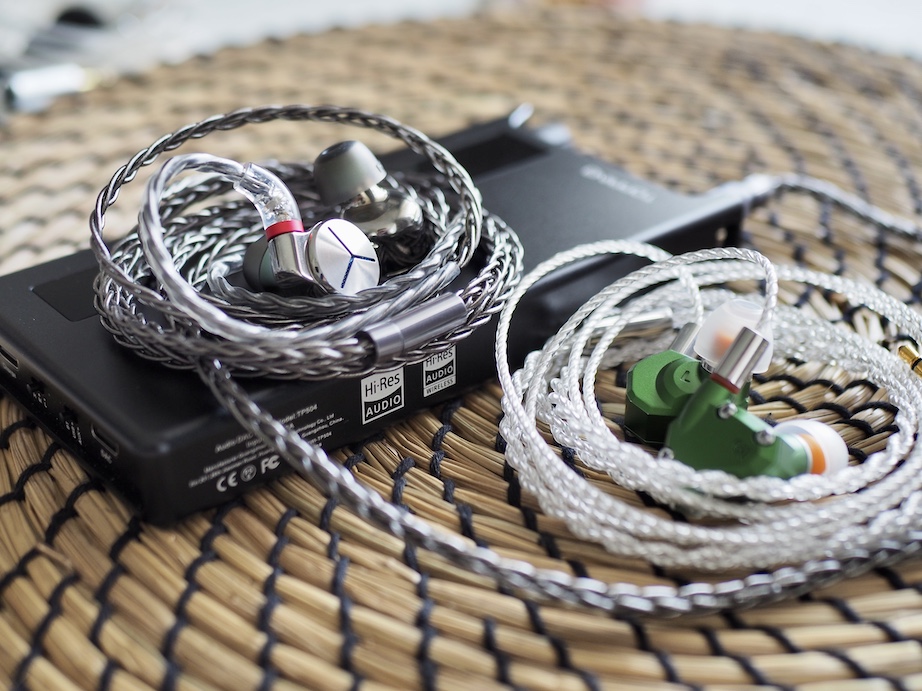
Gears for A/B tests:
Like most modern audio sources I have reviewed, Topping G5 does not skew or “colour” the midrange. It means G5 would not make your bright IEM dark or warm, and vice versa.
However, the lack of colouring does not mean that all sources sound the same. They can differ in terms of how they present the bass, the upper treble, the sharpness of music notes, and the darkness of the space between notes. These aspects together impact soundstage imaging. Desktop gears and some music players tend to project a soundstage where elements are further from others, making busy music less congested, “larger”, and more immersive. Some calls this kind of presentation the “desktop effect.”
G5 can provide this “desktop effect”, automatically making it more desirable than most USB dongles to a soundstage addict like me. For example, when I listen to symphonic recordings such as Scores by 2CELLOS, where two cellos are played in front of a full orchestra, G5 creates more space between instruments on the soundstage. The two main cellos are pushed further from me, and the orchestra is moved further away from the cellos into the background. As a result, everything feels more expanded and more spacious. This kind of recording is where the advantage of G5 shows clearly.
G5 also renders bass nicer than some dongles, thanks to the powerful amplification. The attacks of the bass notes sound crisper, and the decay and reverb end of the bass notes feels more texture and separated from the subsequent bass notes. This gives the impression of punchy, snappy bass, even though the bass has not been boosted via EQ.
It should be noted that details and resolutions are not significantly different between good dongles and G5. So, suppose staging is never in your interest or required in your library. In that case, you might not feel that G5 offer you anything substantial.
The high gain, on the other hand, makes G5 harsh and strident. For example, notes on the E string of the violin have a sharper edge, and the sibilant vocals produce more sibilance. The change is not in-your-face as the loss of dynamic of the low gain mode, but it’s there, and I don’t like it.
Luckily, I have no reason to switch away from mid-gain because G5 can drive everything from Andromeda to 300ohm earbuds competently in this setting.
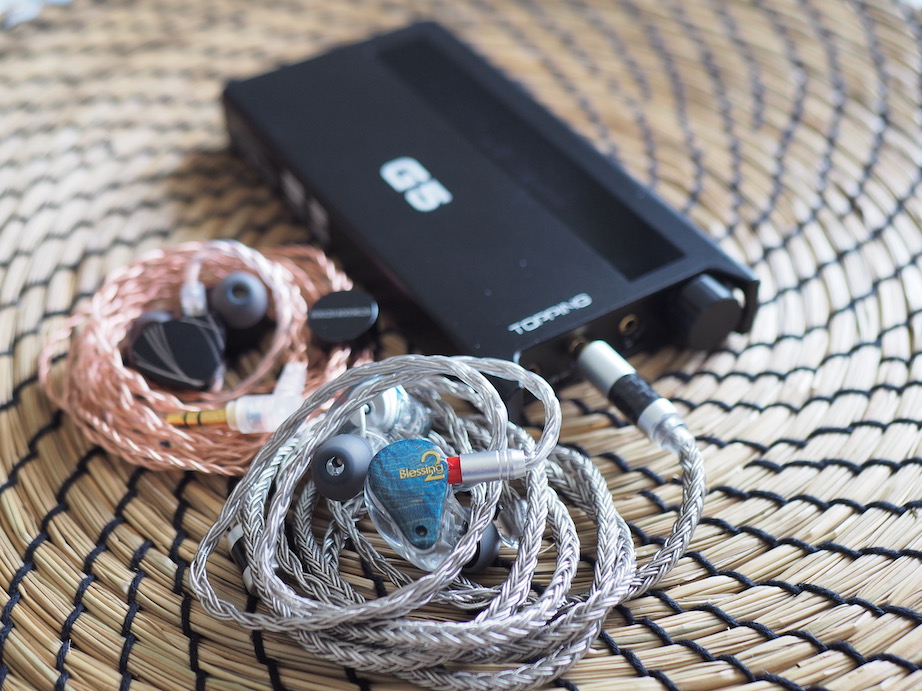
Average IEMs and headphones are the ones that fall within the sweet spot of the amplification circuit inside the Apple dongle. Because these IEMs and headphones are adequately powered by an Apple dongle, swapping the dongle to a better source tends to provide limited improvements. Therefore, the first test for any source coming to my review table is “how much can you improve a typical IEM?”
For this test, I use the venerable Moondrop Blessing 2 (22ohm) to represent a typical IEM. Two sources are used for this test: the Apple dongle (3/5 - Adequate) and Hidizs S9 Pro (4/5 - Good).
The first track I use for A/B tests is G.O.A.T. by Polyphia. I mainly focus on the first minute. To understand the gap between Topping G5 and the dongles, it is best to first describe the difference between the Apple dongle and S9 Pro (using single-ended output).
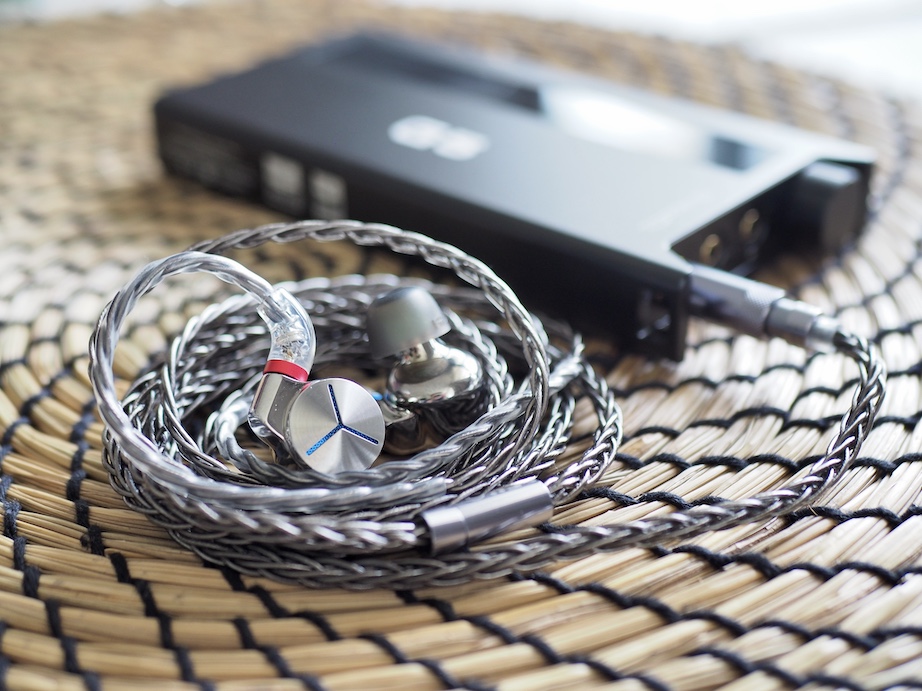
The second test track that I use is the 3rd movement of Summer. The difference between S9 Pro and G5 is more dramatic here. With S9 Pro, the whole orchestra feels very close in. The violin feels like it is right up to my face. With G5, the entire orchestra takes a step back, more spread out. No matter how loud I turn up the G5, the orchestra never get congested and pushed to my face.
In conclusion, G5 comfortably outperforms the Apple dongle and S9 Pro when driving a typical IEM. Everything is crisper, more spread out, less congested, and more nuanced. I rate the sound quality of G5 with typical IEMs as 4.5/5 - Very Good.
Why not 5? Because I did A/B tests between G5 and Astell & Kern SP2000 before buying G5, and I found that the multi-kilo buck DAP sounds even crisper with more space between instruments. It means something out there, not hypothetical, performs even better than G5. But the price for that last bit of performance is steep.
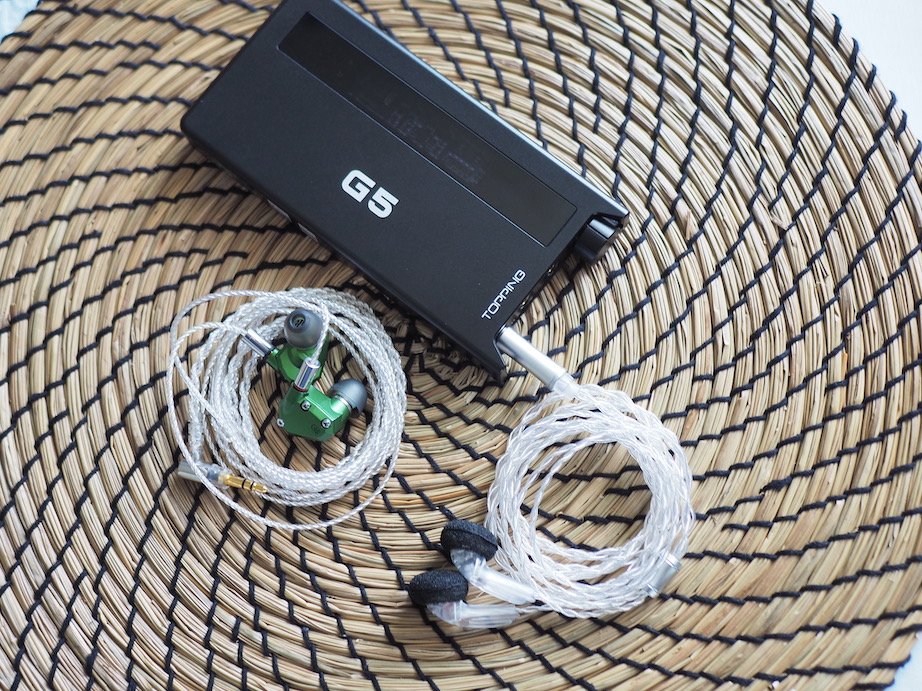 Using Andromeda 2020
Using Andromeda 2020
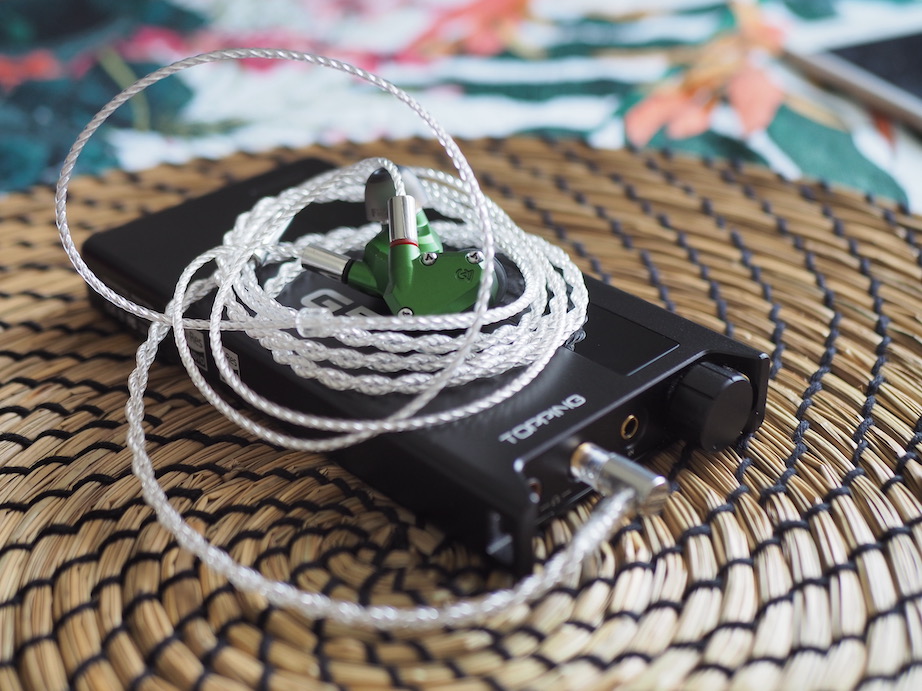
The next test is with the hypersensitive and notoriously picky Campfire Audio Andromeda 2020. You might think Andromeda is easy to drive because it has low impedance and high sensitivity. However, that’s not the case:
How does Topping G5 handle Andromeda? Very well.
Let’s analyse the first 40 seconds of Dance from la Vida Breve. The Apple dongle adequately pushes the sound around your head to create a 3D soundstage. However, individual guitars are dulled and slightly mushed together. The guitars are not cleanly separated from the background. As a result, the stage feels small and tight, though still more 3D than other IEMs.
The most striking difference when switching to G5 is the black space between notes. G5 makes everything more spaced out to the sides as well as front-to-back. The guitars stand out from the background, with the illusion of blank space between them. As a result, the 3D soundstage illusion of Andromeda becomes clearer and intensified.
Can G5 outperform a good dongle like S9 Pro? Yes, but not in the way I expected. Let’s analyse The Mission. The Hidizs dongle offers the same pitch-black background between guitars to create a strong sense of depth. However, S9 Pro is half a step behind the G5 regarding the crispness and micro-details of instruments on the soundstage. This is a known problem of S9 Pro: some micro details are sometimes missing. Still, the gap in sound quality between G5 and S9 Pro is not significant in this use case.
The critical advantage of the G5 over the S9 Pro is convenience. Simply put, the S9 Pro is too loud. I can only use the first two volume steps when driving the Andromeda from my Android phone. Using the Andromeda with S9 Pro from a MacBook or iPad is nearly impossible because the dongle gets even louder from these devices. Moreover, even if you can get the right volume out of S9 Pro, there is always a risk of some software glitch pushing the volume to maximum and blow your ears out.
With G5, you can max out the volume on your phone or laptop and adjust the volume manually using the volume pot. You can have a comfortable range of volume adjustment up and down. And because your phone or laptop is already maxed out, there is no chance of some software glitch that makes the sound randomly louder. This benefits not just hypersensitive IEMs but also typical ones like Blessing 2.
In conclusion, I rate G5 4.5/5 (Very Good) when driving low-impedance, high-sensitive IEMs.
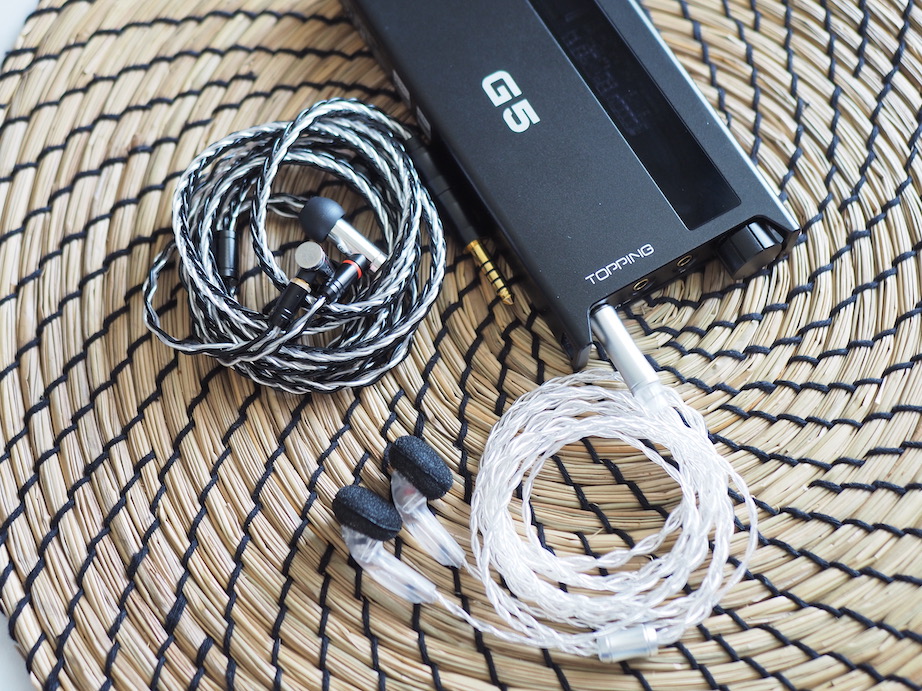
E5000 is a stubborn IEM. Low impedance, low sensitivity, and significantly bass-boosted make a nasty combination. You can get the midrange 1kHz region loud with even an Apple dongle. However, the bass would become a muddy mess, making the E5000 blunted and fuzzy. That’s not how these IEMs should perform. A fully powered E5000 is a bass-head dream with an overwhelming bass response and smooth treble that allows you to keep turning up and up to soak up that bass. The midbass itself is tight, not muddy or pillowy. The sub-bass digs deep and rumbles hard.
How does G5 handle E5000? Like how I described above, with plenty of power left to turn up. Without the fuzziness, the soundstage also feels larger. The G5 drives the E5000 a lot better than the Apple dongle. It also offers a noticeable improvement over the single-ended output and a slight improvement over the balanced output of the S9 Pro.
Conclusion? 4.5/5 - Very Good. No problem with the E5000, though A&K SP2000 is still noticeably crisper and clearer.
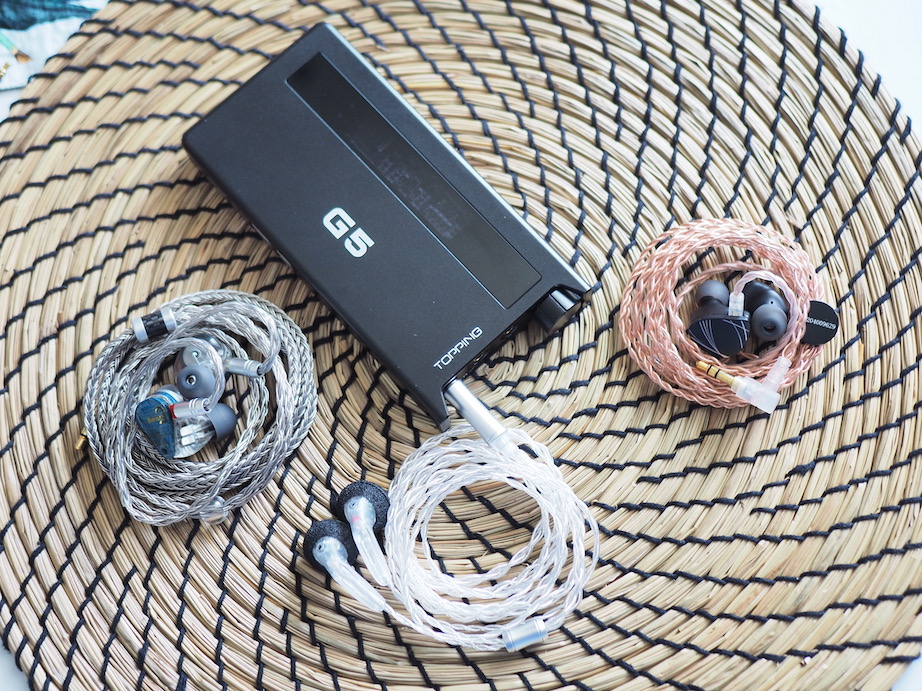
The final test of G5 is driving a high-impedance load. I don’t have the classics such as HD600, HD800S, or DT1990Pro, so I rely on TGXear Serratus, a 300ohm flat-head earbuds, for this test. I also swapped the comparing sources to Venture Electronics Megatron and Fiio KA3 for this test because the Apple dongle does not have a 4.4mm connector. Moreover, many would be interested in comparing G5 with Megatron, a portable amplifier designed especially for high-impedance earbuds.
Let’s analyse the opening of the Game of Throne theme by 2CELLOS. The difference is quite stark between these three sources. Firstly, both Megatron and KA3 sound more closed in than G5. It means both cellos are placed closer to my face, and the orchestra is closer to the cellos. KA3 provides the worst soundstage presentation here with a wall-of-sound effect, where everything is loud; thus, the soundstage is flat.
An issue with Megatron is that it is a noisy, hissy source. This limitation might contribute to Megatron’s dense and slightly foggy presentation compared to G5. Is that a drawback? It depends on taste. I know some fellow head-fiers who enjoy this “analogue” presentation. But for me and my criteria (clear, separated, 3D sound), this slightly foggy presentation pushed Megatron behind G5.
In conclusion, 4.5/5 - Very Good.
The main drawback of G5 is the EMI noise. I choose to work around this issue rather than buy a different one because this kind of device is rarely available at this price point. Suppose you are okay with some infrequent noises when stacking your phone on the amp. Topping G5 can be a practical endgame for your portable audio, especially if you do not want a digital audio player.
Pros:
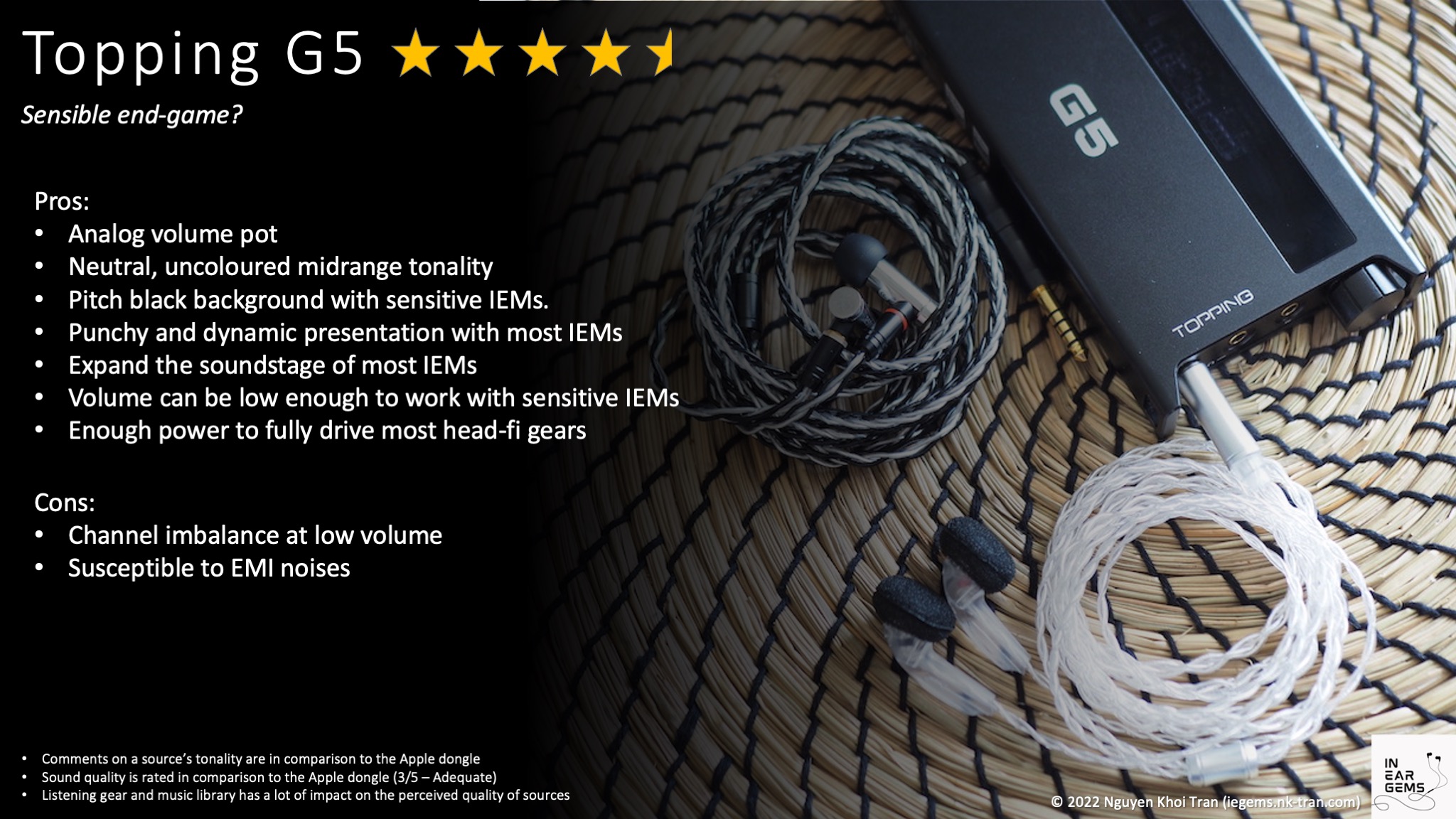
I didn’t know what or how expensive it was, but that person seemed to enjoy using it. So I wanted a “brick” for myself. As I got deeper into this audio hobby, like some (many?) newbies, I went through the phase of parroting: “Apple dongle is all you need.” Yet, the “brick” was always in my mind, despite how illogical it seemed.
One thing led to another, and now I’ve also got an audio brick for myself - Topping G5. Have I gone mad? Let’s talk about G5 from the perspective of a sceptical IEM listener.

Preambles
- I bought Topping G5 on my own. It retails for AUD $470 by the time I bought it.
- I use the term “source” to denote a DAC + Amp combo.
- Sources do not make sounds. Therefore, when I say sources “sound” a certain way, I talk about the change they make to my IEMs and earphones.
- I want my music to be crisp, clear, well-separated and form a 3D soundstage around my head. Sources that intensify those characteristics of my IEMs are considered “better”.
- This review is based on my subjective experience. Ratings are given based on A/B tests with benchmark sources and IEMs.
- Despite my textual descriptions, improvements from sources are minor and nuanced. If you are beginning your head-fi journey, getting different IEMs or earphones would yield more benefits. If you know your gears very well, improvements from sources can be delightful.
Specs
- DAC Chips: ES9068AS
- Output ports: 3.5mm and 4.4mm
- Max output power (per channel, THD+N < 0.1%): 1200mW@32ohm, 175mW@300ohm, 90mW @600ohm
- Output impedance: < 0.1 ohm
- 3 gain settings
- Bluetooth protocols: LDAC / AAC / SBC / APTX / APTX LL / APTX HD / APTX Adaptive
Non-sound Aspects
What is Topping G5?
Topping G5 is a portable DAC/amp combo that also supports Bluetooth. It means that G5 can take music streams from your phone via a USB-C cable or Bluetooth and convert them to analogue signals to play with your wired IEMs and headphones. You can also use the DAC or amp section of G5 separately to pair with other DAC and amps.Packaging


G5 comes in a plain, quaint cardboard box that is full of goodies:
- Topping G5
- 3.5mm to 3.5mm cable
- USB-A to USB-C cable
- USB-C to USB-C straight cable
- USB-C to USB-C elbow cable
- Rubber pad
- Rubber bands
- Documents
Handling

Topping G5 is an attractive device that looks good and feels right. When we unboxed in the store, the store staffs and I were wowed by G5’s understated look and rigidity.
Size-wise, G5 is as large as a mid-sized iPhone but at least 50% thicker. Due to the complete metal build, G5 is a weighty unit. It creates an assuring feeling that you are holding something legitimate in your hands.
Topping covers the back of G5 with a leathery surface to prevent scratches when stacking the amp against your phone or music player. This leather surface also provides a soft and organic touch when holding G5 in your palm.
IO and control

On the top side of the G5 are an analogue volume knob and three audio output ports (3.5mm and 4.4mm headphone out and 3.5mm line out / line in). The analogue volume knob is my favourite feature of G5. It serves as both an on/off switch and a volume control. Rotate clockwise to turn on the device and turn up the volume. The knob rotates smoothly rather than ratchetingbetween steps, allowing you to dial the volume precisely. Two protruding metal “ears” protect the volume knob from accidental rotation.
It should be noted that G5 does not have a fully balanced architecture. It means the 4.4mm and the 3.5mm output sound the same. I have no problem with this approach because it keeps the price down. Moreover, because the single-ended output of G5 already performs very well, I don’t miss a real balanced output.
At the back of the G5 are two USB-C ports for data input and charging. Yes, unlike most dongles, G5 separates the charging port and data input port, so you can use G5 with your phone without worrying about draining your phone’s battery.
Sandwiched between two USB ports are two switches for controlling the gain and the operation modes of G5. Let’s talk about these modes.
Using G5 as a USB DAC/Amp device:
You can get the G5 into USB DAC/Amp mode by turning the mode switch at the back of the unit to “USB”. This mode is straightforward: plug your headphones into one of the outputs, connect a USB-C cable to your phone or laptop, and start playing music.You can also use G5 as a pure DAC by using a 3.5mm to 3.5mm to connect its line out (labelled as “in”) to the 3.5mm input port of an amplifier for a pair of powered speakers. I use this feature quite often with my Creative Pebble speakers.

An exciting use of G5 is turning an old phone into a portable audio player (DAP). You can do so by stacking your phone on top of G5 and using the provided rubber bands, pad, and elbow USB-C cable to keep them connected. The resulting contraption was less janky than I expected. I even managed to carry the whole stack in my pocket for a week or so. However, the novelty wore out fast due to the entire thing’s thickness and weight. Still, stacking is a feasible solution for lounging on the couch.
Using G5 as a bluetooth DAC/Amp:
To use G5 as Bluetooth DAC, turn the mode switch at the back to “BT”. You already know the drill if you have used Fiio BTR5, Shanling UP4, or Qdelix 5k: Pair G5 with your phone via Bluetooth and then play music from your phone. You can still use the line out of G5 in this mode.How is G5’s Bluetooth performance?
Surprisingly good. Good enough that I use G5 with Bluetooth very often, even when I have access to a USB-C cable. I’m surprised the soundstage does not get compressed and congested like my other Bluetooth dongles (BTR5 2019 and UP4 2022), even over AAC. The delay was also acceptable for YouTube videos.
The connection strength and stability are also good. I can put the phone in my living room and do housework in the kitchen. I have very few random drop-outs when I put my phone in one pocket and G5 in the other. This is better than my OG BTR5.
Noted that I had an awful Bluetooth connection in the first hour after I bought G5. I was sure I needed to exchange, but the store was closed, so I kept waiting until the following week. Surprisingly, the Bluetooth problem disappeared after I charged the device. I have had good Bluetooth reception since.
Using G5 as a portable amplifier:Permalink
When you switch the mode switch to “AUX”, you disable the DAC section of G5. It means that G5 only serves one purpose of amplifying an existing analog signal coming from something else. For example, you can use the provided 3.5mm cable to connect an Apple dongle to the line out / line in port of G5.I personally cannot find a good use for this feature besides novelty. Because the amplification of G5 is very transparent, it only intensifies whatever already there with the source rather than changing anything. If a source is slightly noisy, G5 will make it noticeably noisy. Apple dongle sounds like Apple dongle, just louder and not clipping when driving difficult to drive stuffs. None of my dongles sound as good as the internal DAC section of G5.
EMI issuePermalink
Electromagnetic interference can be deal breaker with G5. What does it means? It means that when I put my phone directly on top of G5, I can sometimes here static noises, pops, and crackle sounds, especially if the cellular portion of my phone is activated. There is rarely any issue if the phone and G5 are separated, however. That’s why I use a 20cm USB-C cable. Other users told me that even walking near a microwave or a freezer can cause interference as well.Personally, I work around the this problem because I think the sound / performance is too good.
Sound Performance

Gears for A/B tests:
- Moondrop Blessing 2 (22ohm, 117dB/Vrms)
- Campfire Audio Andromeda 2020 (12.8ohm, 112.8dB/mW)
- Final Audio E5000 (14ohm, 93dB/mW)
- TGXear Serratus (300ohm)
- Apple USB-C to 3.5mm dongle
- Hidizs S9 Pro
- Fiio KA3
- VE Megatron
Like most modern audio sources I have reviewed, Topping G5 does not skew or “colour” the midrange. It means G5 would not make your bright IEM dark or warm, and vice versa.
However, the lack of colouring does not mean that all sources sound the same. They can differ in terms of how they present the bass, the upper treble, the sharpness of music notes, and the darkness of the space between notes. These aspects together impact soundstage imaging. Desktop gears and some music players tend to project a soundstage where elements are further from others, making busy music less congested, “larger”, and more immersive. Some calls this kind of presentation the “desktop effect.”
G5 can provide this “desktop effect”, automatically making it more desirable than most USB dongles to a soundstage addict like me. For example, when I listen to symphonic recordings such as Scores by 2CELLOS, where two cellos are played in front of a full orchestra, G5 creates more space between instruments on the soundstage. The two main cellos are pushed further from me, and the orchestra is moved further away from the cellos into the background. As a result, everything feels more expanded and more spacious. This kind of recording is where the advantage of G5 shows clearly.
G5 also renders bass nicer than some dongles, thanks to the powerful amplification. The attacks of the bass notes sound crisper, and the decay and reverb end of the bass notes feels more texture and separated from the subsequent bass notes. This gives the impression of punchy, snappy bass, even though the bass has not been boosted via EQ.
It should be noted that details and resolutions are not significantly different between good dongles and G5. So, suppose staging is never in your interest or required in your library. In that case, you might not feel that G5 offer you anything substantial.
Sound differences between gain modes
It is interesting and surprising that G5 can sound different in different gain modes. The default option of G5 is mid-gain, which sounds the best. In the low gain mode, G5 sounds flat and lifeless, even when I deliberately turn up the volume to be louder than mid-gain. I noticed this phenomenon when watching a video review by Sandu at Soundnews with my Andromeda. Sandu’s voice became less full, and a bit strained when G5 was in the low gain mode.The high gain, on the other hand, makes G5 harsh and strident. For example, notes on the E string of the violin have a sharper edge, and the sibilant vocals produce more sibilance. The change is not in-your-face as the loss of dynamic of the low gain mode, but it’s there, and I don’t like it.
Luckily, I have no reason to switch away from mid-gain because G5 can drive everything from Andromeda to 300ohm earbuds competently in this setting.
Average IEM and earphones (4.5/5)

Average IEMs and headphones are the ones that fall within the sweet spot of the amplification circuit inside the Apple dongle. Because these IEMs and headphones are adequately powered by an Apple dongle, swapping the dongle to a better source tends to provide limited improvements. Therefore, the first test for any source coming to my review table is “how much can you improve a typical IEM?”
For this test, I use the venerable Moondrop Blessing 2 (22ohm) to represent a typical IEM. Two sources are used for this test: the Apple dongle (3/5 - Adequate) and Hidizs S9 Pro (4/5 - Good).
The first track I use for A/B tests is G.O.A.T. by Polyphia. I mainly focus on the first minute. To understand the gap between Topping G5 and the dongles, it is best to first describe the difference between the Apple dongle and S9 Pro (using single-ended output).
- Clarity: Apple dongle renders the edge of music notes, such as the opening synths, fuzzier. These synth notes pop up like crystals with S9 Pro.
- Detail retrieval: At the beginning of the track, there is a subtle distortion sound in the background. It is part of the mix and can be heard with most sources. Apple dongle can barely reveal this element, making it blurry and mushed into the main synth notes. S9 Pro shows this distortion clearly.
- Staging: The sense of separation and space between music notes is weak with the Apple dongle. The ambience in the background is not firmly pushed back and separated from the front layer. Switch to S9 Pro; everything sounds sharper, and the sense of depth is stronger.
- Bass and dynamic swing: The bass drop around 0:18 is slightly snappier with S9 Pro. The contrast between the build-up and the actual drop is more potent, and the bass drop is clearer. But the difference is less significant than the previous factors.

The second test track that I use is the 3rd movement of Summer. The difference between S9 Pro and G5 is more dramatic here. With S9 Pro, the whole orchestra feels very close in. The violin feels like it is right up to my face. With G5, the entire orchestra takes a step back, more spread out. No matter how loud I turn up the G5, the orchestra never get congested and pushed to my face.
In conclusion, G5 comfortably outperforms the Apple dongle and S9 Pro when driving a typical IEM. Everything is crisper, more spread out, less congested, and more nuanced. I rate the sound quality of G5 with typical IEMs as 4.5/5 - Very Good.
Why not 5? Because I did A/B tests between G5 and Astell & Kern SP2000 before buying G5, and I found that the multi-kilo buck DAP sounds even crisper with more space between instruments. It means something out there, not hypothetical, performs even better than G5. But the price for that last bit of performance is steep.
Low-impedance, high-Sensitivity IEM (4.5/5)


The next test is with the hypersensitive and notoriously picky Campfire Audio Andromeda 2020. You might think Andromeda is easy to drive because it has low impedance and high sensitivity. However, that’s not the case:
- They hiss on many audio sources, negatively impacting their technical performance.
- They get loud quickly, so most dongles are too loud, even at the lowest volume.
- Because of their low impedance, they can be demanding in terms of output current.
How does Topping G5 handle Andromeda? Very well.
Let’s analyse the first 40 seconds of Dance from la Vida Breve. The Apple dongle adequately pushes the sound around your head to create a 3D soundstage. However, individual guitars are dulled and slightly mushed together. The guitars are not cleanly separated from the background. As a result, the stage feels small and tight, though still more 3D than other IEMs.
The most striking difference when switching to G5 is the black space between notes. G5 makes everything more spaced out to the sides as well as front-to-back. The guitars stand out from the background, with the illusion of blank space between them. As a result, the 3D soundstage illusion of Andromeda becomes clearer and intensified.
Can G5 outperform a good dongle like S9 Pro? Yes, but not in the way I expected. Let’s analyse The Mission. The Hidizs dongle offers the same pitch-black background between guitars to create a strong sense of depth. However, S9 Pro is half a step behind the G5 regarding the crispness and micro-details of instruments on the soundstage. This is a known problem of S9 Pro: some micro details are sometimes missing. Still, the gap in sound quality between G5 and S9 Pro is not significant in this use case.
The critical advantage of the G5 over the S9 Pro is convenience. Simply put, the S9 Pro is too loud. I can only use the first two volume steps when driving the Andromeda from my Android phone. Using the Andromeda with S9 Pro from a MacBook or iPad is nearly impossible because the dongle gets even louder from these devices. Moreover, even if you can get the right volume out of S9 Pro, there is always a risk of some software glitch pushing the volume to maximum and blow your ears out.
With G5, you can max out the volume on your phone or laptop and adjust the volume manually using the volume pot. You can have a comfortable range of volume adjustment up and down. And because your phone or laptop is already maxed out, there is no chance of some software glitch that makes the sound randomly louder. This benefits not just hypersensitive IEMs but also typical ones like Blessing 2.
In conclusion, I rate G5 4.5/5 (Very Good) when driving low-impedance, high-sensitive IEMs.
Low-impedance, low-sensitivity IEM (4.5/5)

E5000 is a stubborn IEM. Low impedance, low sensitivity, and significantly bass-boosted make a nasty combination. You can get the midrange 1kHz region loud with even an Apple dongle. However, the bass would become a muddy mess, making the E5000 blunted and fuzzy. That’s not how these IEMs should perform. A fully powered E5000 is a bass-head dream with an overwhelming bass response and smooth treble that allows you to keep turning up and up to soak up that bass. The midbass itself is tight, not muddy or pillowy. The sub-bass digs deep and rumbles hard.
How does G5 handle E5000? Like how I described above, with plenty of power left to turn up. Without the fuzziness, the soundstage also feels larger. The G5 drives the E5000 a lot better than the Apple dongle. It also offers a noticeable improvement over the single-ended output and a slight improvement over the balanced output of the S9 Pro.
Conclusion? 4.5/5 - Very Good. No problem with the E5000, though A&K SP2000 is still noticeably crisper and clearer.
High-impedance earbuds (4.5/5)

The final test of G5 is driving a high-impedance load. I don’t have the classics such as HD600, HD800S, or DT1990Pro, so I rely on TGXear Serratus, a 300ohm flat-head earbuds, for this test. I also swapped the comparing sources to Venture Electronics Megatron and Fiio KA3 for this test because the Apple dongle does not have a 4.4mm connector. Moreover, many would be interested in comparing G5 with Megatron, a portable amplifier designed especially for high-impedance earbuds.
Let’s analyse the opening of the Game of Throne theme by 2CELLOS. The difference is quite stark between these three sources. Firstly, both Megatron and KA3 sound more closed in than G5. It means both cellos are placed closer to my face, and the orchestra is closer to the cellos. KA3 provides the worst soundstage presentation here with a wall-of-sound effect, where everything is loud; thus, the soundstage is flat.
An issue with Megatron is that it is a noisy, hissy source. This limitation might contribute to Megatron’s dense and slightly foggy presentation compared to G5. Is that a drawback? It depends on taste. I know some fellow head-fiers who enjoy this “analogue” presentation. But for me and my criteria (clear, separated, 3D sound), this slightly foggy presentation pushed Megatron behind G5.
In conclusion, 4.5/5 - Very Good.
Conclusion
Topping G5 is a versatile source. It can be used as a desktop all-in-one, a Bluetooth portable DAC/amp, a portable amplifier, and even a DAC for speakers. It also offers good build quality and excellent handling. The sound quality of the G5 is also excellent. Its desktop effect is addictive, especially if you listen to many complex mixes and recordings. This effect puts G5 one solid step above most dongle DAC/amps.The main drawback of G5 is the EMI noise. I choose to work around this issue rather than buy a different one because this kind of device is rarely available at this price point. Suppose you are okay with some infrequent noises when stacking your phone on the amp. Topping G5 can be a practical endgame for your portable audio, especially if you do not want a digital audio player.
Pros:
- Analog volume pot
- Neutral, uncoloured midrange tonality
- Pitch black background with sensitive IEMs.
- Punchy and dynamic presentation with most IEMs
- Expand the soundstage of most IEMs
- Volume can be low enough to work with sensitive IEMs
- Enough power to fully drive most head-fi gears
- Channel imbalance at low volume
- Susceptible to EMI noises

Brionced
Good one, mate!!
Tamizhan
What was the gain used while playing final e5000?
JeanPaul Petrosyan
Excellently written! I love how you describe the impact a source has on the sound in simple and brief yet demonstrative/descriptive and comprehensive way, while also delving into somewhat less obvious and trivial important technical aspects such as headphone sensitivity&impedance and their implications in the same easily accessible way. It's just as useful and informative to a newbie as it is to a seasoned audiophile. I simply lack the ability to properly express just how much I love this and why due to the ESL syndrome. Alas.
o0genesis0o
Headphoneus Supremus
Pros: + Very well tuned
+ Great bass
+ Great detail retrieval
+ Great bass
+ Great detail retrieval
Cons: - Favour coherency over separation
- Staging could be better
- Staging could be better
Few IEMs have been hyped up in my small audio circle than Elysian Acoustic Labs Diva. A friend predicted that I will fall head over heels for this IEM. Others firmly believed that this would “kill” my U12T. A fellow reviewer jumped through all sorts of hoops to get himself a CIEM of the Diva.
Finally, the stars align (by @Damz87) and I have my hands on a sample of Diva 2023 revision. Does it live up to the immense expectation?
It’s complicated.
All of my listening was done with Spinfit CP145 ear tips. I listen at a medium volume. I usually turn up the volume until the midrange is fully audible and detailed, unless a treble peak or overwhelming bass prevents me from doing so.




For some unknown reason, I have always had the impression that Elysian IEMs do not have any packaging. That couldn’t be further from the truth as Diva 2023 has the most elaborated and luxurious unboxing experience I have ever seen in real life for an IEM product. Good job, Elysian! USD $1600 is extremely expensive for a pair of IEM. This level of consideration is a must.
Inside the box, you find
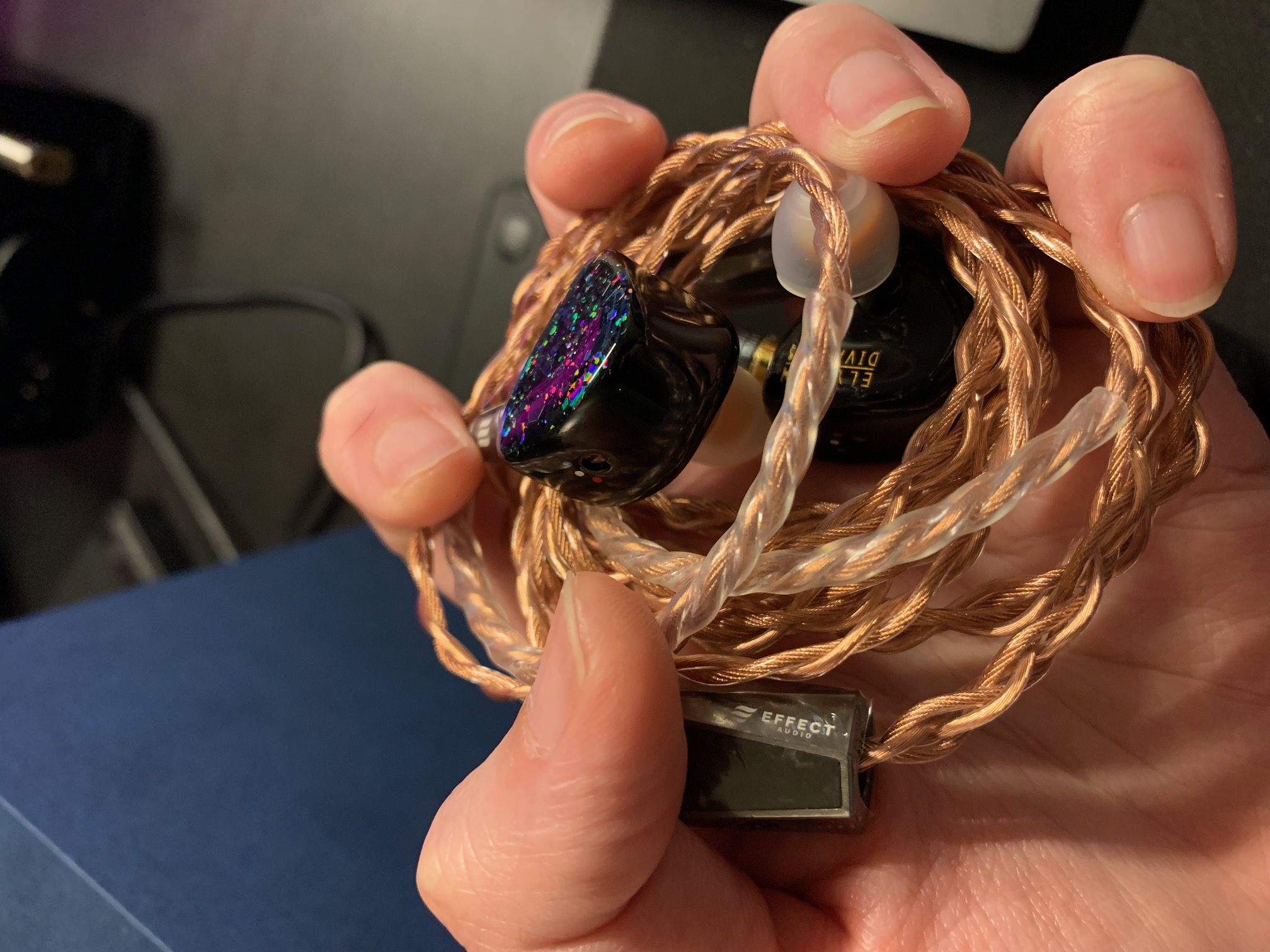

The earpieces of Diva 2023 are much, much larger than what I expected looking at photos on the Internet. The nozzles of Diva 2023 are also thick. Narrower eartips like Final Audio Type E are unusable. Spinfit W1 are quite stretched, though usable. Only wider tips like CP145 and CP155 can fit the nozzle comfortably. The size of the nozzle makes it harder to fit Diva properly (deep enough for the earpieces to rest against the concha). You might need to experiment with different tips to find a good one.


Despite having vent on the shells, Diva 2023 feel like a fully sealed BA IEM. I experienced pressure build up after half an hour or so. This problem, together with the size of the earpieces, creates a relatively stuffy and uncomfortable experience for me. I much prefer the smaller size and better ventilation of the sister unit of Diva, the Effect Audio Gaea.
Noise isolation is strong with Diva 2023. However, because the earpieces are large and stick out quite a bit from the ears, I have a lot of wind noise when taking a walk.
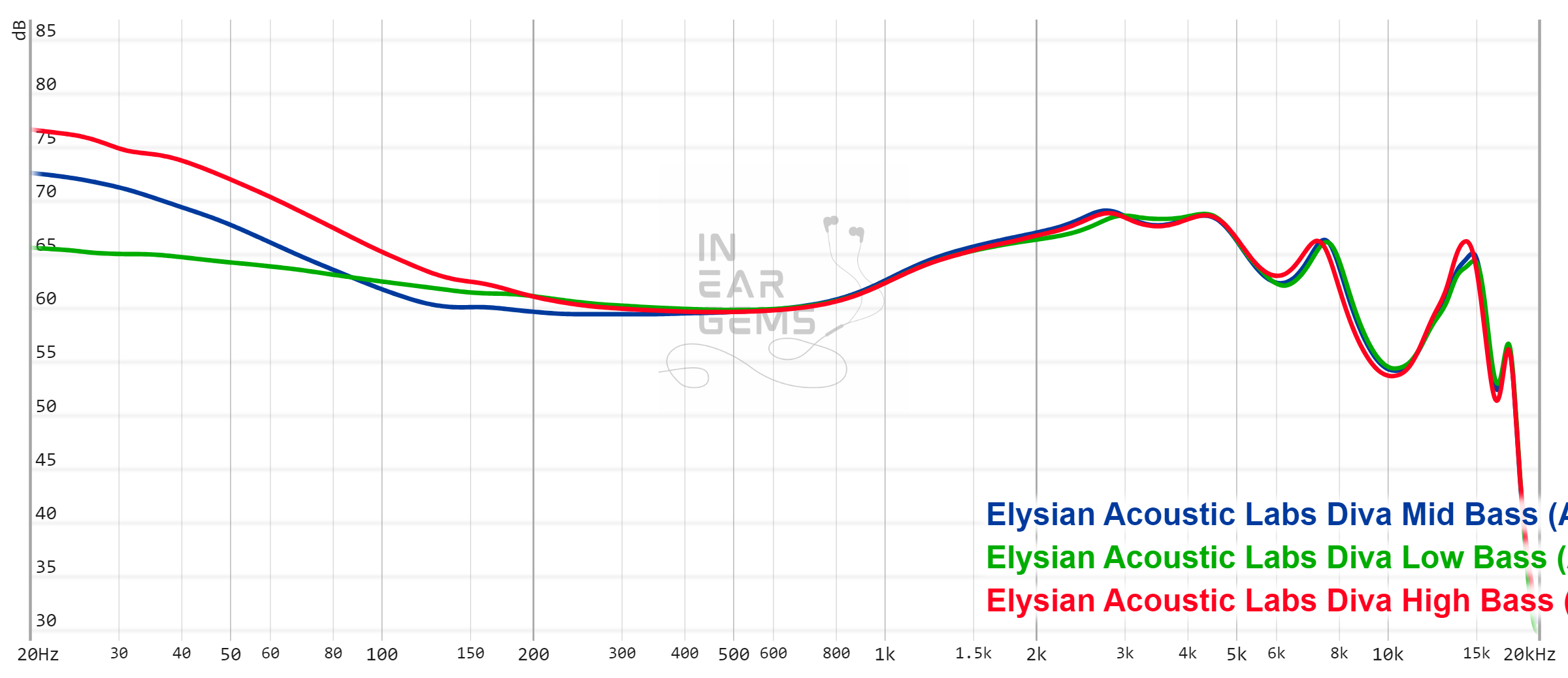
The tuning of Diva 2023 is the quintessential “well-tuned” signature. It is easy to love, or at least hard to hate.
One note about the measurement: I finished all of my subjective impressions before measuring. I was quite surprised by how the Diva measures. Looking at the ruler-flat midrange and the deeply tucked bass shelf, you wouldn’t expect Diva 2023 to have such natural-sounding bass and the proper note weight. In fact, if one only look at the graph, one would predict that Diva is the thin and lifeless IEM rather than the Monarch II and Gaea, the ones that usually receive that criticism.
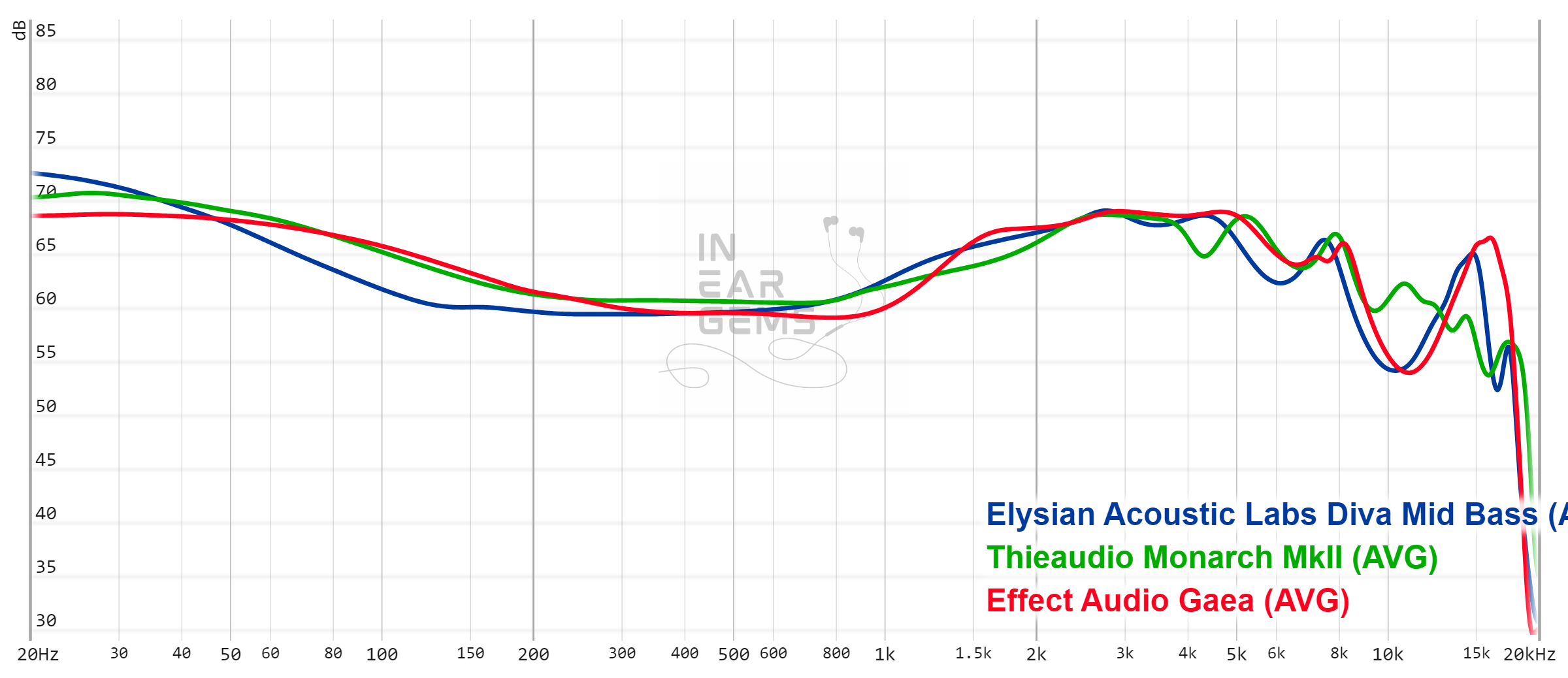
I suspect the way Elysian tunes the ear-gain boost contributes to this impression. The ear-gain tuning of Diva does exhibits the early boost starting from around 600Hz and it has more energy around 1.5kHz, similarly to the so-called QDC-tuning that is used by quite a few IEMs this year, such as the AFUL Performer8 and Dunu SA6II. This tuning styles tends to push the midrange forward and gives it more weight, without boosting lower midrange .

Think of it this way. Diva 2023 (BA bass) sounds more like dynamic driver whilst the Gaea (dynamic driver bass) sounds more like BA. Both are great in their own way. The Gaea concentrates most of the energy of a transient to the leading edge, creating a snappy transient response that feels like whip cracks. The Diva has rounder and less defined leading edge, but with a strong physical sensation of the bass slam right after the leading edge. The decay of bass notes is also more highlighted and slightly more detailed (though if I am very nitpicky, I would say the Gaea has more texture in the bass decay).
In other words, the BA bass of Diva has very similar presentation to the BA bass in 64 Audio IEMs. Rounder attacks, more physical slam.
Let’s talk about the good part first. Diva has no problem presenting the background element of the recordings, such as the reverberation in classical recording or the cheers of audience in live recording. It also does a decent job at separating the foreground from the background to convey a sense of layering and distance.
The problem with Diva, at least for me, is that it is tuned for a cohesive presentation rather than separation. That means there is less empty space between instruments and the boundary between them are less clear. The emphasis on midrange also pushes the foreground instruments forward and generally keeps them inside the head. Even with the most spacious live recordings, Diva does not sound large.
On the other hand, detail retrieval of Diva is great. Whenever I pay attention, I can appreciate an extra level of nuances and textures across the frequency, from midrange instruments and vocals to cymbals and hats to bass guitars.
But if you, like me, pay a lot of attention to how the sonic picture of your music is presented within that limited head stage of the IEM form factor, if you want your instruments to have laser focus and razor-sharp boundary, if you want the stage to feel expansive when listening to spacious recording, then Diva 2023 might not cut it, despite all the great qualities.
Absolute Sonic Quality Rating: 4/5 (Tonality: 4, Resolution: 4, Bass: 4, Stage: 3) - Great
Bias Score: 3/5 - I’m lukewarm about this IEM

Updated: September 22, 2023
Finally, the stars align (by @Damz87) and I have my hands on a sample of Diva 2023 revision. Does it live up to the immense expectation?
It’s complicated.
Forewords
- What I look for in an IEM is immersion. I want to feel the orchestra around me, track individual instruments, and hear all of their textures and details. I’m not picky about tonality, as long as it does not get in the way of immersion.
- I rate IEMs within with a consistent scale from 1 (poor) to 3 (good) to 5 (outstanding). Ratings are assigned by A/B tests against benchmark IEMs, regardless of the retail price.
- Ranking list and measurement database are on my IEM review blog.
- Terms used in my reviews are consistent with the glossary by Headphonesty
- This impression is possible thanks to Australian Head-fi Tour. Special thank you to @Damz87 for arranging the tour.
- The units would be sent to the next reviewer after this impression.
- Elysian Diva 2023 retails at $1599 at the time I write this impression.
- iBasso DX300 (for all A/B tests)
- FiiO K7
- Hidizs XO
All of my listening was done with Spinfit CP145 ear tips. I listen at a medium volume. I usually turn up the volume until the midrange is fully audible and detailed, unless a treble peak or overwhelming bass prevents me from doing so.
Specs
- Driver: 6 BA drivers, 4-way crossover
- Connector Type: Pentaconn (NOT MMCX)
- Impedance: 4ohm@1kHz
- Sensitivity: 100dB@100mV@1kHz
Build and Comfort




For some unknown reason, I have always had the impression that Elysian IEMs do not have any packaging. That couldn’t be further from the truth as Diva 2023 has the most elaborated and luxurious unboxing experience I have ever seen in real life for an IEM product. Good job, Elysian! USD $1600 is extremely expensive for a pair of IEM. This level of consideration is a must.
Inside the box, you find
- Small carrying case with felt fabric cover (a dust magnet)
- Effect audio Ares 4W cable
- A set of Spinfit W1
- An IEM cleaning tool
- A tiny screw driver to change the bass level


The earpieces of Diva 2023 are much, much larger than what I expected looking at photos on the Internet. The nozzles of Diva 2023 are also thick. Narrower eartips like Final Audio Type E are unusable. Spinfit W1 are quite stretched, though usable. Only wider tips like CP145 and CP155 can fit the nozzle comfortably. The size of the nozzle makes it harder to fit Diva properly (deep enough for the earpieces to rest against the concha). You might need to experiment with different tips to find a good one.


Despite having vent on the shells, Diva 2023 feel like a fully sealed BA IEM. I experienced pressure build up after half an hour or so. This problem, together with the size of the earpieces, creates a relatively stuffy and uncomfortable experience for me. I much prefer the smaller size and better ventilation of the sister unit of Diva, the Effect Audio Gaea.
Noise isolation is strong with Diva 2023. However, because the earpieces are large and stick out quite a bit from the ears, I have a lot of wind noise when taking a walk.
Tonality
Frequency response of Diva 2023 across all bass boost settings. Measurements were done with an IEC-711-compliant coupler and might only be compared with other measurements from this same coupler. Visit my graph database for more comparisons.
The tuning of Diva 2023 is the quintessential “well-tuned” signature. It is easy to love, or at least hard to hate.
- Proper ear gain boost: there is enough emphasis in the upper midrange, done in the (relatively) right way, to ensure that vocals and midrange instruments are clear and present without becoming shouty or harsh at any point.
- Treble gradually rolls off after the ear gain: subdue harshness and sibilance, and mitigate any sort of timbral problem due to improper balance between treble and midrange (e.g., too much 8kHz over 4kHz)
- Bass is emphasised but not overwhelming: many “well-tuned” IEMs ignore the bass to pursue a “reference” tonality, without taking into consideration that IEM’s bass must be boosted to compensate for the loss of physical sensation when listening to loudspeakers. That’s not the case with Diva 2023.
- Lower midrange is not thin (but not muffled and muddy): another pitfall of many “well-tuned” IEMs is that they make the contrast between lower and upper midrange too strong, making the overall tonality razor thin. Again, that’s not the case with Diva 2023. In fact, I would say the midrange of Diva 2023 is tastefully thick. Perhaps a touch more than I usually like.
One note about the measurement: I finished all of my subjective impressions before measuring. I was quite surprised by how the Diva measures. Looking at the ruler-flat midrange and the deeply tucked bass shelf, you wouldn’t expect Diva 2023 to have such natural-sounding bass and the proper note weight. In fact, if one only look at the graph, one would predict that Diva is the thin and lifeless IEM rather than the Monarch II and Gaea, the ones that usually receive that criticism.

I suspect the way Elysian tunes the ear-gain boost contributes to this impression. The ear-gain tuning of Diva does exhibits the early boost starting from around 600Hz and it has more energy around 1.5kHz, similarly to the so-called QDC-tuning that is used by quite a few IEMs this year, such as the AFUL Performer8 and Dunu SA6II. This tuning styles tends to push the midrange forward and gives it more weight, without boosting lower midrange .

Bass and Dynamic
The bass of Diva 2023 is quite interesting.A good pair of IEMs/earbuds/headphones should be able to convey, even emphasise, the sense of rhythm and the ebbs and flows of music. In general, this energy requires IEMs to be able to convey rapid volume swings on the downbeat of an orchestra or the leading edge of bass note. It also requires tactile physical sensation of the bass, and the sense of rumble and texture accompanying the bass drops. An IEM can have loud bass, but still fail to convey energy should it lack other features above.
Think of it this way. Diva 2023 (BA bass) sounds more like dynamic driver whilst the Gaea (dynamic driver bass) sounds more like BA. Both are great in their own way. The Gaea concentrates most of the energy of a transient to the leading edge, creating a snappy transient response that feels like whip cracks. The Diva has rounder and less defined leading edge, but with a strong physical sensation of the bass slam right after the leading edge. The decay of bass notes is also more highlighted and slightly more detailed (though if I am very nitpicky, I would say the Gaea has more texture in the bass decay).
In other words, the BA bass of Diva has very similar presentation to the BA bass in 64 Audio IEMs. Rounder attacks, more physical slam.
Soundstage Imaging
Soundstage imaging is where I have the most problem with Diva.Let’s talk about the good part first. Diva has no problem presenting the background element of the recordings, such as the reverberation in classical recording or the cheers of audience in live recording. It also does a decent job at separating the foreground from the background to convey a sense of layering and distance.
The problem with Diva, at least for me, is that it is tuned for a cohesive presentation rather than separation. That means there is less empty space between instruments and the boundary between them are less clear. The emphasis on midrange also pushes the foreground instruments forward and generally keeps them inside the head. Even with the most spacious live recordings, Diva does not sound large.
Resolution
As I alluded to earlier, Diva does not have the sense of tack sharp separation. Note attacks are somewhat rounded, and instruments do not have razor sharp boundaries. With that being said, Diva does not sound dull, muffled, or muddy. It simply does not have the crystalline clarity like IEMs tuned specifically for that purpose, such as the Gaea.On the other hand, detail retrieval of Diva is great. Whenever I pay attention, I can appreciate an extra level of nuances and textures across the frequency, from midrange instruments and vocals to cymbals and hats to bass guitars.
Comparisons
Effect Audio X Elysian Acoustic Labs Gaea (4BA + 1 DD):- Gaea has explosive, whip cracking presentation that can be divisive. Diva is milder and easier to listen.
- Gaea earpieces are smaller and better vented.
- Gaea has an edge in clarify and separation. Diva is slightly better at revealing detail. The true resolution of both is roughly at the same level.
- The soundstage of Gaea feels larger in all dimensions and more open.
- Diva is significantly more difficult to drive.
- Alternative take on the “well-tuned.” Diva is tastefully adjusted from Harman/Diffused Field. P8 is inspired by the QDC house sound. Simply put, Diva feels more “V-shape” whilst P8 has thicker and more forward midrange (500-1000Hz).
- Diva has more generous bass than P8. Another interesting case where Diva BA bass feels more DD and P8 DD bass feels more BA (emphasising the leading edge).
- Diva is half step ahead of P8 in overall resolution.
- The real reason P8 is in this comparison is because its soundstage invokes the same “we were on the verge of greatness, we were this close” feeling.
- U12T has a significant edge in terms of comfort.
- The physical sensation of physical slam after the more rounded leading edge of transient is similar between Diva and U12T, even with MX module.
- U12T emphasises the leading edge of cymbals and hats much more than Diva. This can be good or bad depending on your taste.
- U12T is half step ahead of Diva in overall resolution. However, the gap is small between these top performers, so I don’t think resolution would be a deciding factor in choosing either.
- This is how you do an outstanding soundstage on IEM.
My Take
Should you add a Diva 2023 to your collection? To answer this question, you need to ask yourself what you think when you hear the term “soundstage.” If you are in the camp “IEM’s soundstage is a meme” or “who care! IEM never sounds like speakers anyway”, then go ahead. To me, Diva 2023 is the quintessential “great IEM” with natural and versatile tonality, great bass response, and great detail retrieval without any harshness of shrill. If you don’t mind the large shells and the potential pressure build up of a sealed IEM design, Diva 2023 might be the one for you.But if you, like me, pay a lot of attention to how the sonic picture of your music is presented within that limited head stage of the IEM form factor, if you want your instruments to have laser focus and razor-sharp boundary, if you want the stage to feel expansive when listening to spacious recording, then Diva 2023 might not cut it, despite all the great qualities.
Absolute Sonic Quality Rating: 4/5 (Tonality: 4, Resolution: 4, Bass: 4, Stage: 3) - Great
Bias Score: 3/5 - I’m lukewarm about this IEM

Updated: September 22, 2023
Smirk 24
Great write-up!
As a former Diva owner, I had similar feelings about the more intimate soundstage and lack of instrument separation.
I tried to address the latter by changing cables to the 8W variant of the Ares S stock cable which was successful to a degree. The Ares S 8W added resolution to the leading edges of cymbals and hats, but also introduced some sibilance.
My main issue with the Diva though, and the reason why I can’t recommend it, is because of build quality/quality control issues.
Lee outsourced Diva production (he still hand crafts the Annihilator) and some of the earlier Diva 23 units had the wrong glue adhering the nozzle caps to the nozzles, causing them to fall off easily when tip-rolling. This happened to my unit. I heard that this was addressed later on however.
As a former Diva owner, I had similar feelings about the more intimate soundstage and lack of instrument separation.
I tried to address the latter by changing cables to the 8W variant of the Ares S stock cable which was successful to a degree. The Ares S 8W added resolution to the leading edges of cymbals and hats, but also introduced some sibilance.
My main issue with the Diva though, and the reason why I can’t recommend it, is because of build quality/quality control issues.
Lee outsourced Diva production (he still hand crafts the Annihilator) and some of the earlier Diva 23 units had the wrong glue adhering the nozzle caps to the nozzles, causing them to fall off easily when tip-rolling. This happened to my unit. I heard that this was addressed later on however.
o0genesis0o
My sample makes worrying creaking noise at the nozzle when I try to remove tighter ear tips as well. I heard that it was already re-glued before sending to me.
Smirk 24
Yeah, it doesn’t exactly inspire confidence. Hopefully it’s a non-issue in future Diva iterations.
o0genesis0o
Headphoneus Supremus
Pros: - Titan S sounds correct with lean and clean tonality
- Offers the proper ratio of sub-bass (rumble), midbass (punch), and treble around 4-6k (attack) to make drum hits snappy and energetic yet clean.
- Average soundstage size
- Offers the proper ratio of sub-bass (rumble), midbass (punch), and treble around 4-6k (attack) to make drum hits snappy and energetic yet clean.
- Average soundstage size
Cons: - It does not sound special: no extreme detail, no exaggerated soundstage, no epic bass.
- A bit lacking in treble extension
- A bit lacking in treble extension

tl;dr: The best description of Titan S is that it sounds right: timbre is realistic, frequency response is not too warm nor cold, separation and micro-dynamic are adequate, drums are adequately tactile and snappy. The key limitation is that it does not sound special: no extreme detail, no exaggerated soundstage, no epic bass. Still, it represents excellent value and an excellent beginning of an IEM journey.
Preambles
- I purchase this unit on my own. I have no affiliation with or financial interest in Dunu.
- All listening tests were conducted at around 65 dB.
- My music library covers nostalgic pop music, epic orchestral music from Sci-fi shows, classical violin performances, piano, lo-fi beats, and a few rock songs.
- What I look for in IEM, in order of importance: a strong sense of depth with elements in a mix layering from closer to further away, clear separation between elements, detailed and textured elements, snappy and tactile note attacks in bass and midrange, natural timbre.
- IEMs are rated with a series of A/B tests against a few benchmark IEMs. The total rating is the average of component ratings. EQ is NOT used in these tests. See the methodology for more detail.
- Eartips can change the insertion depth of an IEM, which in turn changes its soundstage and frequency response. I try to insert IEMs to rest against the concha of my ears unless indicated otherwise.
- You can read the full article on my website.
Non-sound aspects
Dunu announces Titan S by the end of 2021. It seems to replace the Dunu DM-480 as the most budget-friendly option in their current lineup.Titan S is equipped with a single 11mm dynamic driver. Unfortunately, it does not use the ECLIPSƎ technology featured in other DD IEM from Dunu, such as Luna, Zen, and Falcon Pro.
Titan S comes with a lot of accessories:
- 10 pairs of ear tips: they have different heights, which can change the distance between the IEM and your ear and impact the soundstage.
- Carrying case: good quality, but quite flat. You have to be careful when putting the IEMs in because their nozzles might prevent closing the case.
- 2-pin cable: very soft and well-behaved. The 2-pin side matches the design of the IEMs, so changing the cable might not be a good idea.
Design-wise, Titan S has a unique look. However, it does not look as good in real life as 3D renders. Its angles are not as defined, the ridges of the IEM and the cable do not match exactly, and there is a seam line going down on the side of the IEM. On the plus side, the metal seems strong and does not use any paint. Thus, chipping and bubbling might not be an issue.
Fit-wise, Titan S has at least three insertion depths due to having long nozzles.
The blue eartips give you the shallowest insertion, with the IEMs resting at the outer edge of your ear canal. The red eartips allow for a medium insertion depth. The small white eartips allow for deep insertion, similarly to Etymotic IEMs. In this position, Titan S rest against the concha of my ears.
The deeper your fit is, the more clarity and detail you get at the expense of soundstage. In this review, I use the medium insertion depth.
Sound Analysis

This table shows the results of A/B tests between Titan S and other IEMs. 1 means Titan S wins. -1 means Titan S loses. 0 means draw. Some tests are too one-sided that no further tests are required.
Percussion Control: 3.5/5
Percussion control reflects an IEM's ability to render drums and other instruments that maintain the rhythm and tempo. IEMs with good percussion control can keep up with fast and complex rhythms without blurring the beats together. IEMs with excellent percussion control also gives a tactile "snap" to percussion attacks. Percussion control is determined by both bass and treble.Song list:
- MS Gundam: Iron-blooded Orphans (1:10 to 1:35): focus on the timing and composure of the bass line during busy section.
- INFINITY (0:40 to 1:05): focus on the timing of bass and cymbal.
- Imperial March (0:00 to 0:45): focus on the timing of percussion and double bass.
A strength of Titan S is the way it renders percussion instruments. It does not mean that Titan S has loud bass. Instead, it offers the proper ratio of sub-bass (rumble), midbass (punch), and treble around 4-6k (attack) to make drum hits snappy and energetic yet clean.
It has no trouble keeping with the chaotic sections from 1:10 to 1:35 in MS Gundam: Iron-blooded Orphans and 0:40 to 1:05 in INFINITY. The low-end and high-end percussion hits remain distinctive and rhythmic with the minimal mushiness.
Comparison against benchmark IEMs:
- Titan S renders percussion instruments similarly to ER2SE but louder and a bit more tactile, meaning you feel the hits in your eardrums more.
- Titan S renders drum hits cleaner and snappier than Aria. As a result, it remains more composed in difficult percussion sections.
- Titan S is one step behind FD5 in terms of energy and the physical impact of percussion instruments.
Detail, Texture, and Micro-dynamic: 3.5/5
Detail, Texture, and Micro-dynamic reflect an IEM's ability to render fine details in individual elements of a mix. IEMs with excellent detail retrieval render vocal and instruments clearly and reveal small details such as breaths, small vibratos, and the subtle reverb at the end of a musical phrase. They can make the violin section in an orchestra sound like a collection of violins playing together rather than a blob of sound. They also render background elements such as backing vocal and orchestra clearly.Song list:
- I have a dream - remix (0:50 to 1:20): focusing on small elements and backing vocal in the background of the mix.
- Memories (0:00 - 0:21): focusing on the texture and micro-details of the guitar.
- My Heart Will Go On (0:00 to 0:40): focusing on the texture and micro-details of the voice, especially the last words of each phrase.
Titan S is average at detail retrieval and micro-dynamic. The vocal and instruments do not feel overly smoothened. At the same time, it does not stand out in this aspect.
If I have to nitpick, I would say Titan S is a bit lacking in terms of the subtle reverb and decay at the end of notes. Luckily, it has a lean and revealing tuning, so this limitation does not stand out unless you look for it.
Comparison against benchmark IEMs:
- Titan S sounds a bit more revealing than Aria due to the tuning. However, Aria does a bit better in the subtle reverb and decay at the end of notes. The A/B tests show that Titan S wins, but I would not purchase based on this slight difference.
- Titan S has no chance against Blessing 2, which has similarly lean tuning and better micro details. Of course, Titan S would also lose to ER2SE, which trades blow with Blessing 2 on this aspect.
Separation and Layering: 3/5
Separation and layering reflects an IEM's ability to distinctively render elements in a mix. IEMs with excellent separation and layering can separate elements from left to right and from front to back, minimising the overlap between them.
Song list:
- And the waltz goes on (0:50 - 0:15): focus on the layering and separation of the instrument.
- Beethoven Symphony No. 5 Mvmt 1 (0:00 to 0:30): focus on the sharpness of instruments, layering of woodwind over the string, and the panning of string from right to the left channel.
- Waltz 2 (0:35 - 1:00): focus on the separation and layering of woodwind over string over percussion.
Titan S is average at separation and layering. It renders elements in a mix with minimal blending and overlap. The stage remains organised when the music gets busy.
The limitation is that it does not layer well. For example, it fails to distinct orchestral sections in And the waltz goes on (0:50 - 1:15) because this piece does not spread elements from left to right but layers them up from closer to farther at the middle of the stage.
Comparison against benchmark IEMs:
- Surprisingly, Titan S does not do better than Aria at separation and layering, despite having a leaner tuning.
- Titan S is entirely outclassed by Blessing 2 and FD5, which can actually do the layering in And the waltz goes on.
Spatial Illusion: 3/5
Spatial illusion reflects an IEM's ability to construct an imaginary sound field around a listener's head. IEMs with excellent spatial illusion create a dome-like and open soundstage around the listener's head.
Song list:
- Danger Zone (0:00 - 0:50): focus on the centre of the soundstage to see how much it is pushed away from the head.
- Presto (0:00 to 0:40): focus on the reverb. Does it wrap around the head or appear inside the head?
- Shaker test: for drawing out the overall shape of the soundstage.
The soundstage of Titan S is average in the world of IEM. It's not surprisingly bad but does exceed the expectations of a vented IEM.
The soundstage width of Titan S varies from medium to wide, depending on your insertion depth. The soundstage depth is not exceptional. The stage does not feel wide open like other semi-open IEMs. The whole soundstage is slightly pushed away from the head, so the music does not sound inside your head.
Comparison against benchmark IEMs:
- Titan S soundstage is more or less the same as Aria.
- Due to the lack of depth, Titan S is entirely outclassed by Blessing 2 and FD5.
Tonality: 4/5
Tonality reflects the timbre and relative loudness of different elements in a mix. I assess IEM's tonality based on how bad they are rather than how good they are. As long as the tuning does not make timbre unrealistic nor reduce technical performance significantly, it is acceptable.Titan S sounds *right*. Vocal and instruments sound natural and have appropriate weight. I did not hear any honkiness or nasally tone. Titan S does not have an overly lean tonality, but it is undoubtedly less warm than expected. The biggest praise I can give Titan S is that I haven't found the need to EQ it. Not even adding a bass shelf.
Comparison against benchmark IEMs:
- Titan S is leaner and cleaner than Aria.
- Titan S's tuning is closer to Blessing 2.
Upgrade path
Should you get Titan S if ...
- you have no IEM? Get it. It presents excellent value and shows you how a competent IEM should sound. From there, you can branch out and find the signature that you like.
- you have a not-so-great budget IEM? Get it. Same reasons as above.
- you already have something decent like Aria? Saving up for something better instead. You don't gain much with Titan S, except better cable and perhaps more durability.
- you already have Blessing 2 or higher-end IEM? If you want to write a review, then yeah, get one.
- you want head-shaking, thick, boomy sound? No. Titan S does not offer that kind of sound signature.
Where to go from Titan S?
- More clarity? Moondrop Blessing 2 / Blessing 2 Dusk or Etymotic ER2SE
- More immersive soundstage? FD5 and Final A4000
- More impactful bass? FD5
S
Someguy14201
Hey Fahmi, your Tin T2s are brilliant, you don't need to upgrade to the Titan S or Aria for that matter. You should save up for something bigger than NF Audio NM2+, maybe a Moondrop Kato or a 7hz Timeless, only then will you notice a big jump. If you upgrade to the Titan S, you won't notice a big difference, same with NF Audio NM2+.
Fahmi Misbah Bangsar
missing some words here , referring to what i wrote . correction .
" Hi There , i have T2 plus and my current favourite "is HZ HeartMirror ".
and typo "NM2"
" Hi There , i have T2 plus and my current favourite "is HZ HeartMirror ".
and typo "NM2"
o0genesis0o
@Fahmi Misbah Bangsar: thanks for the question. I have two points to raise:
- If you already have T2+, then you fall into the "you already have something decent like Aria?" camp, thus getting Titan S will not get you much.
- If you like bright signature with great separation and layering, Titan S also does not give that to you. The best one on a budget that I know is Final Audio A4000. I did a series of A/B tests against Campfire Andromeda 2020, 64 Audio U6t, U12t, and Tia Fourte, and the A4000 stood its ground nicely in terms of soundstage, separation, and treble extension. The key advantage of the much more expensive ones is warmer and more comfortable sound signature.
o0genesis0o
Headphoneus Supremus
Pros: + Beautifully neutral tonality
+ Extended treble
+ Deep and tactile bass response
+ Laser sharp note definition and imaging
+ Extended treble
+ Deep and tactile bass response
+ Laser sharp note definition and imaging
Cons: - Challenging fit
- Midbass dip
- Doesn't quite match the resolution and soundstage of top performers of its era
- Modern $500-ish IEMs are catching up
- Midbass dip
- Doesn't quite match the resolution and soundstage of top performers of its era
- Modern $500-ish IEMs are catching up
If you read this review, chances are you are passionate (and geeky) about IEM and personal audio in general. As a passionate enthusiast, at one time or another, it’s likely that you have the dream of making a great IEM that embodies your ideal sound so that the world can hear it. Whilst that dream remains a dream for many (including me), some of the geekiest and the most passionate members actually crossed the chasm and made their ideal sound a reality. Previously, we looked at tgx78’s Serratus and RikudouGoku’s Grand Alter Saber 2. Today, we look at Helios, the result of a collaboration between two boutique powerhouses from Singapore: Symphonium and Subtonic.

You can also watch my review on YouTube here:
All of my listening was done with the stock Azla Sedna Earfit Standard tips. I listen at a medium volume. I usually turn up the volume until the midrange is fully audible and detailed, unless a treble peak or overwhelming bass prevents me from doing so.

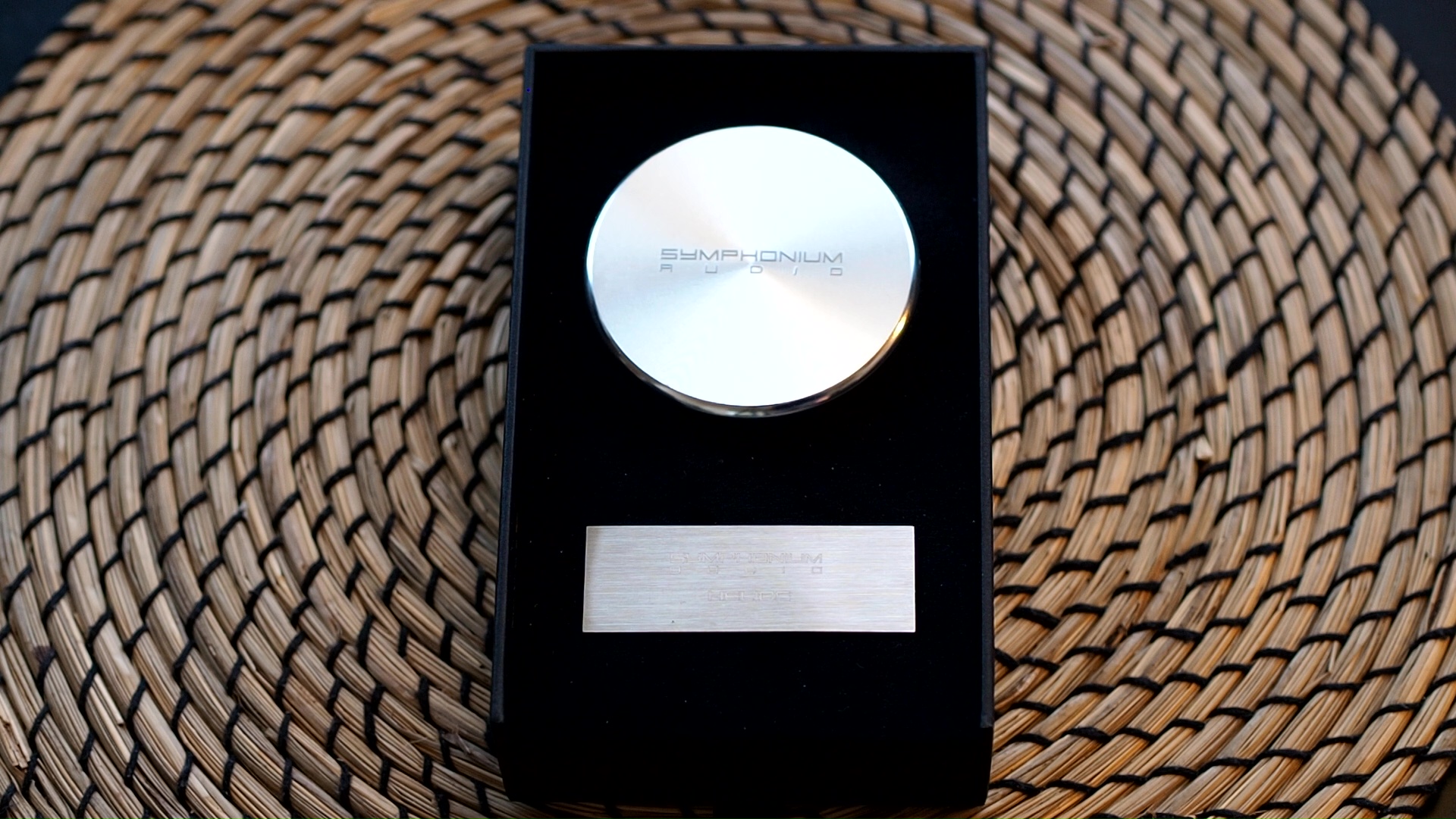
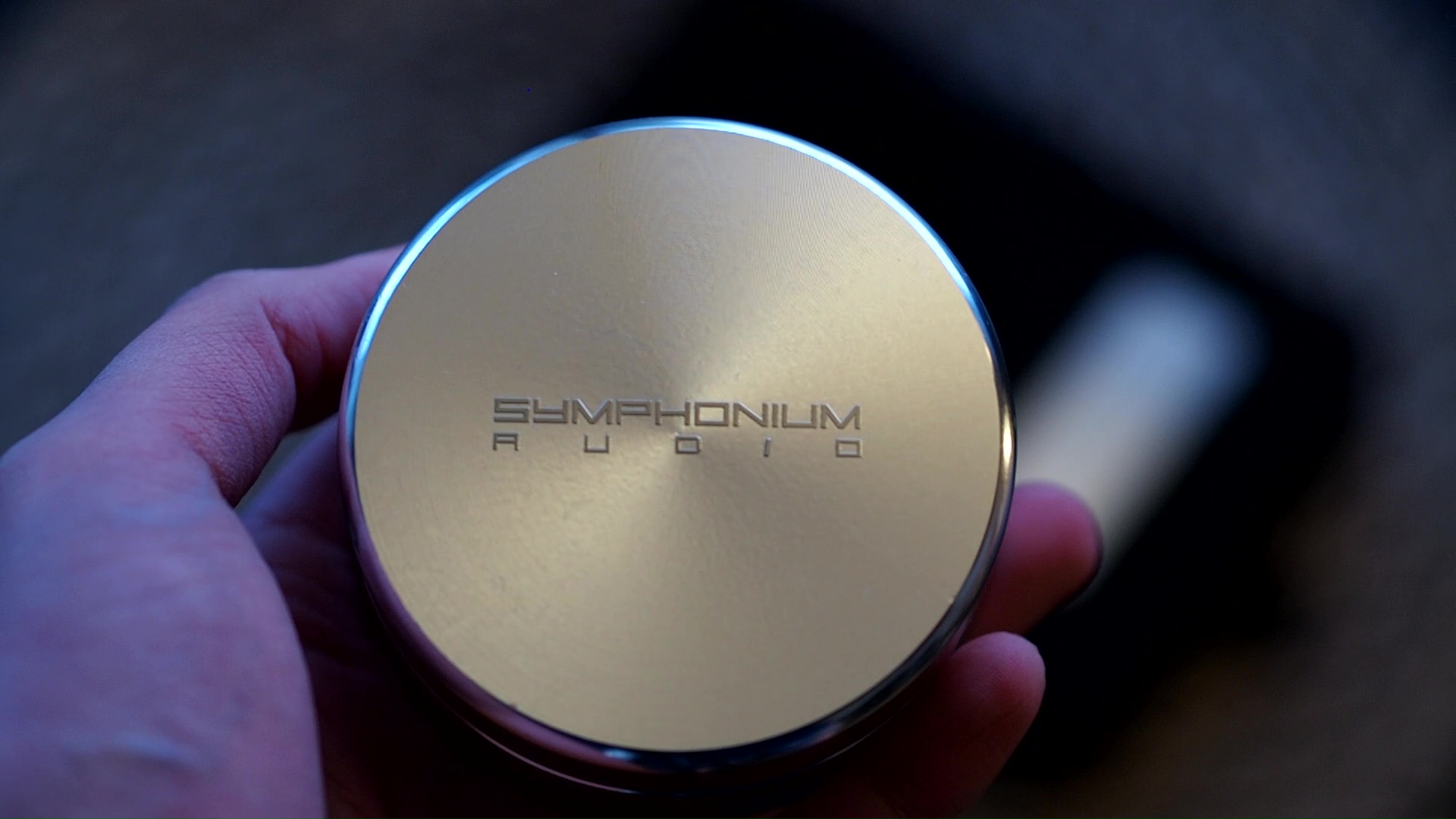
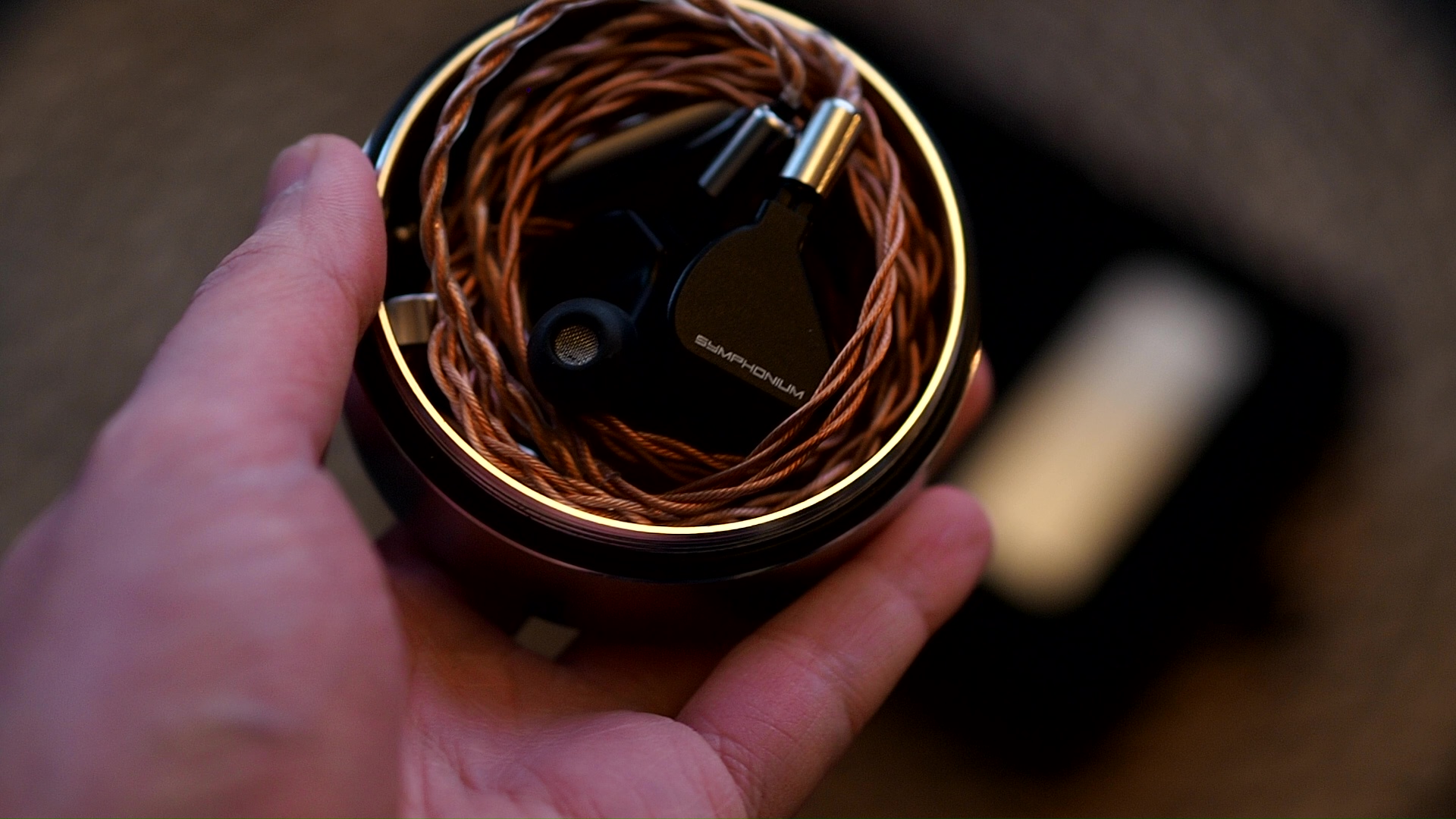
My first impression of Helios was the size of the box: it’s simple and tiny. Upon opening the box, I was surprised once more: the metal carrying case of Helios is also tiny next to leather round cases that usually come with IEMs from 64 Audio, Fir Audio. The tiny box and carrying case stood in stark contrast against the huge earpieces.
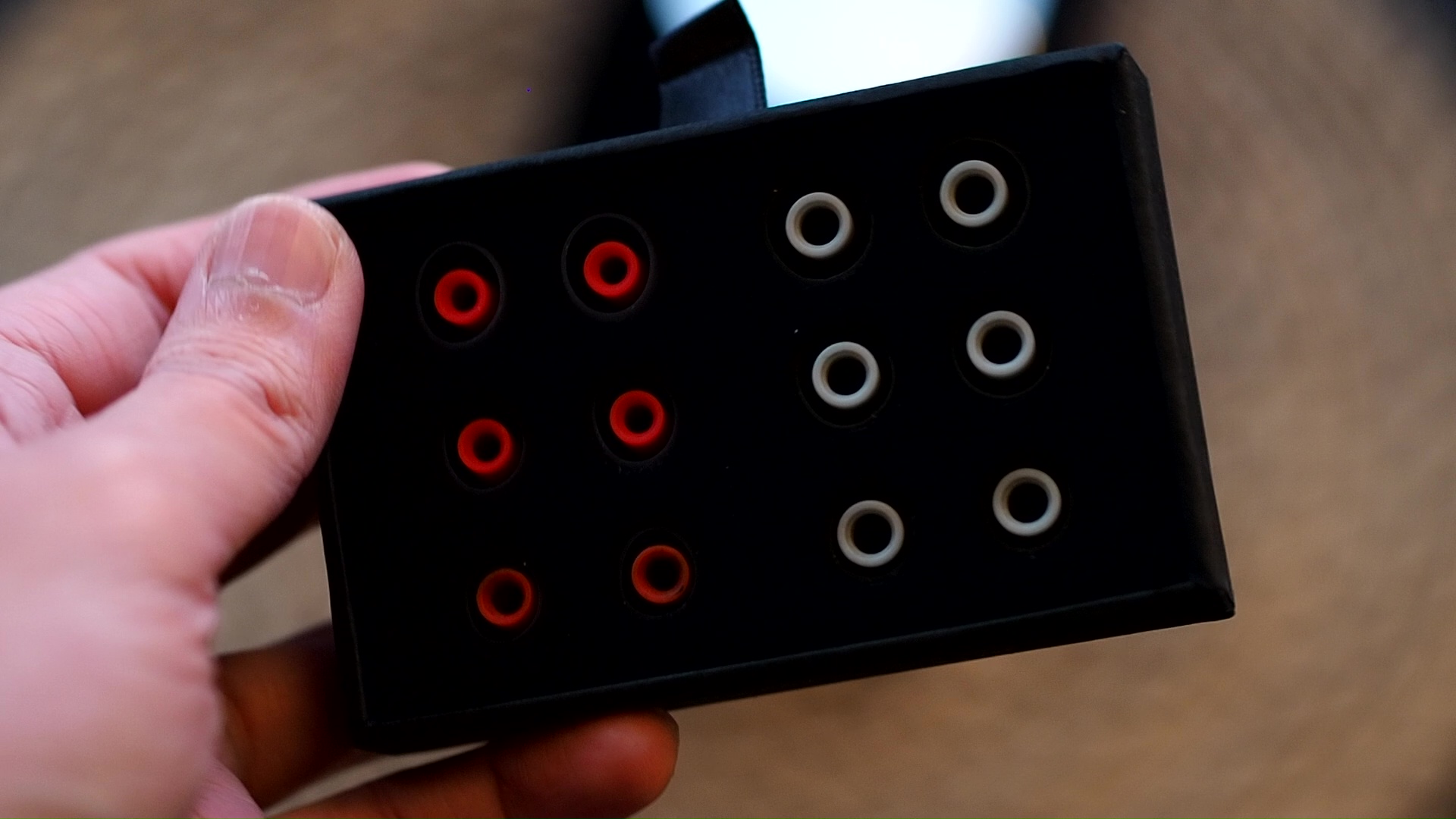
Before moving on to the earpiece, let’s talk about the rest of the accessories. Helios came with a cable that deliberately does not have any ear hook to help you wear the IEM more easily. At the bottom of the box, you will find a drawer that contains two types of ear tips and a “thank you” note with signatures from folks at Symphonium. I find this card to be a nice touch.
With accessories out of the way, let’s talk about the elephant in the room: the earpieces.

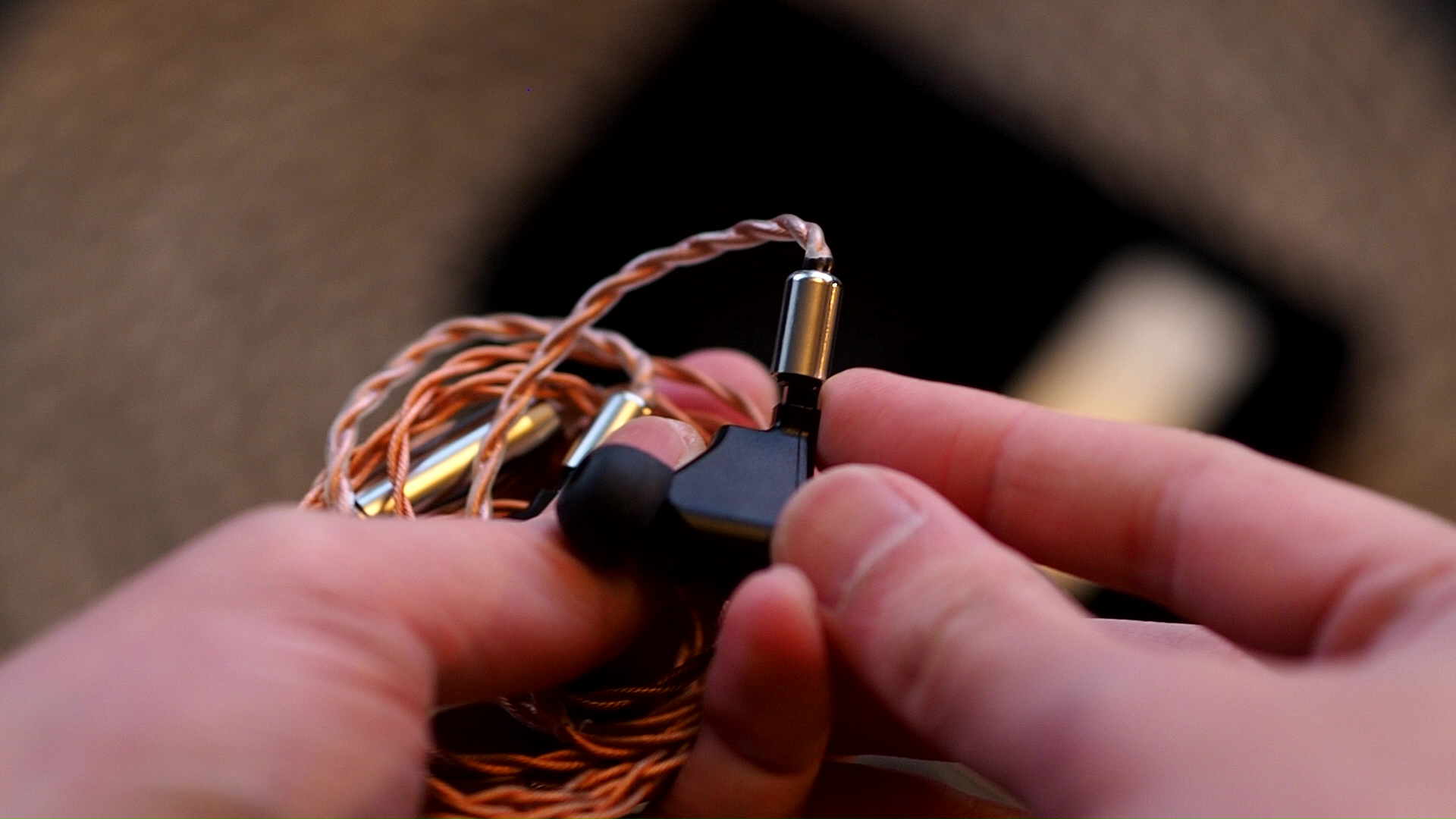
I’ll not sugarcoat it: Helios is a difficult-to-wear IEM. It’s not the sheer size of the earpieces that are troublesome, because the earpieces usually “float” outside rather than resting on the conchas of my ears.
No, most of the challenge of Helios comes from the thick and long nozzles. So long that I can wear the IEM at not one, not two, but three different insertion depths, which result in three distinct presentations.
At the other end of the spectrum, you can opt for a shallow fit by using larger tips. In this configuration, the eartips create a seal with the opening of my ear canals, meaning the nozzles of Helios barely enter my ear canals. This configuration gives me the widest soundstage and the most comfort. However, it introduces peaks and harshness to the treble region, which seem to impede my perception of upper treble. I find the sonic quality to have a noticeable downgrade.
My chosen way or wearing Helios is medium-deep fit. It means I used a medium ear tips and twist the IEM into place, similarly to Symphonium’s instruction. However, I stop when the nozzles reach the first bend. This configuration gives me the median between the two extremes mentioned above in terms of sonic quality, the width of the soundstage, comfort, and noise isolation. The rest of this review is based on this fit.
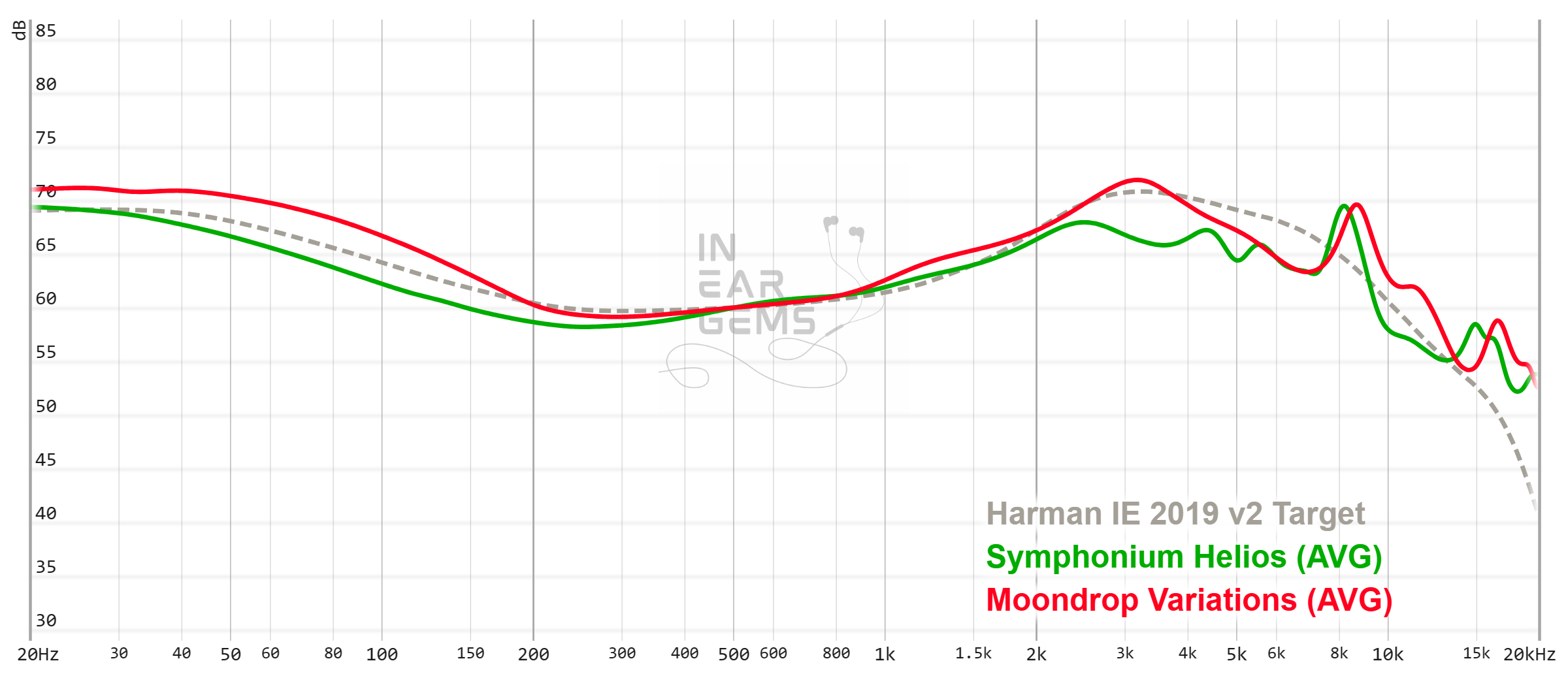
It is helpful to think of an IEM as a filter that highlights or subdues different parts of the incoming audio signal. This effect can be measured objectively by the squiggly lines above, called Frequency Response (FR) graphs, which measure how loud an IEM is at different frequencies from 20Hz (bass) to 20kHz (upper treble). Subjectivity is how your ears and brain interpret the effect of that filter on your music and decide whether it is “enjoyable.” There are some “rules of thumb” when it comes to tonality, but most interesting IEMs usually bend the rules masterfully.
One of my favourite ways of looking at an IEM is to compare the vision of its creators with the end result to see if their lofty ideas can be translated to the reality. Symphonium envisioned the Helios to have “an exceptionally clean sub-bass punch that hits hard, without coloring the clarity of vocal presentations,” and “a smooth and detailed midrange” with “class-leading treble extension.” You can also find out more about the idea behind Helios from an interview with Toranku and Ken from Subtonic and the details about Toranku’s frequency response target.
So, how does Helios sound?
I would say it matches the vision precisely. The tonality of Helios can be summarised as “U-shaped”. It means:
The midrange is neutral or “flat.” In other words, Helios aims to disappear from the music instead of imposing an opinion on how the music should sound. It means that Helios presents instruments and vocals as-is rather than injecting additional warmth to make them more mellow and enjoyable. At the same time, Helios does not boost the upper midrange to the degree of other “neutral” IEMs like Moondrop Blessing 2 or Etymotic ER2SE. As a result, female vocals are not overly forward or “shouty”.
Is neutral tuning always good? Logically, an IEM that presents music without any colouring is ideal (a.k.a., “as artist intended”). Subjectively, the value of a neutral tuning depends a great deal on your preference and even your mood. I personally prefer IEMs to have very little colouring to maximise their compatibility with different music libraries and source chains.
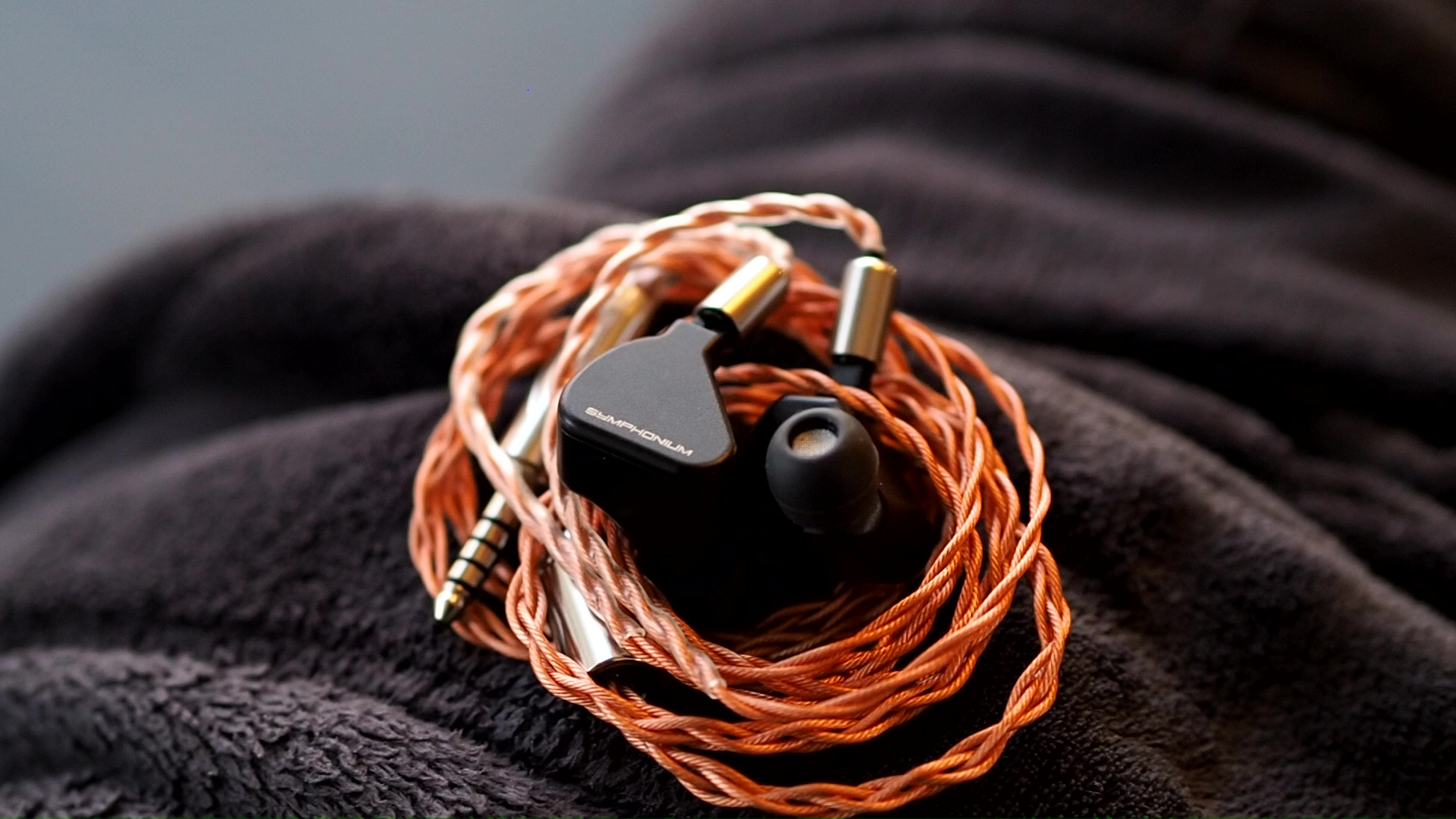
The treble of Helios is carefully boosted. Much of the treble energy of Helios are focused in the upper treble region which plays a significant role in creating the so-called “technical performance” that I always look for when trying an IEM. Emphasis in upper treble allows Helios to create ambience embedded within recordings. For example, when I listen to “Bach’s Violin Sonata No.1 in G Minor: Presto” by Kavakos, I can easily hear the reverb of the violin within the recording venue, which improves the sense of space and the illusion of “being there.”
The mid-treble (body of cymbals and hats) is present but not overly emphasised. It means I can discern cymbals, hats, and chimes without much effort, but these instruments do not become too loud or piercing. Helios also does a good job at reproducing textures and nuances of these instruments.
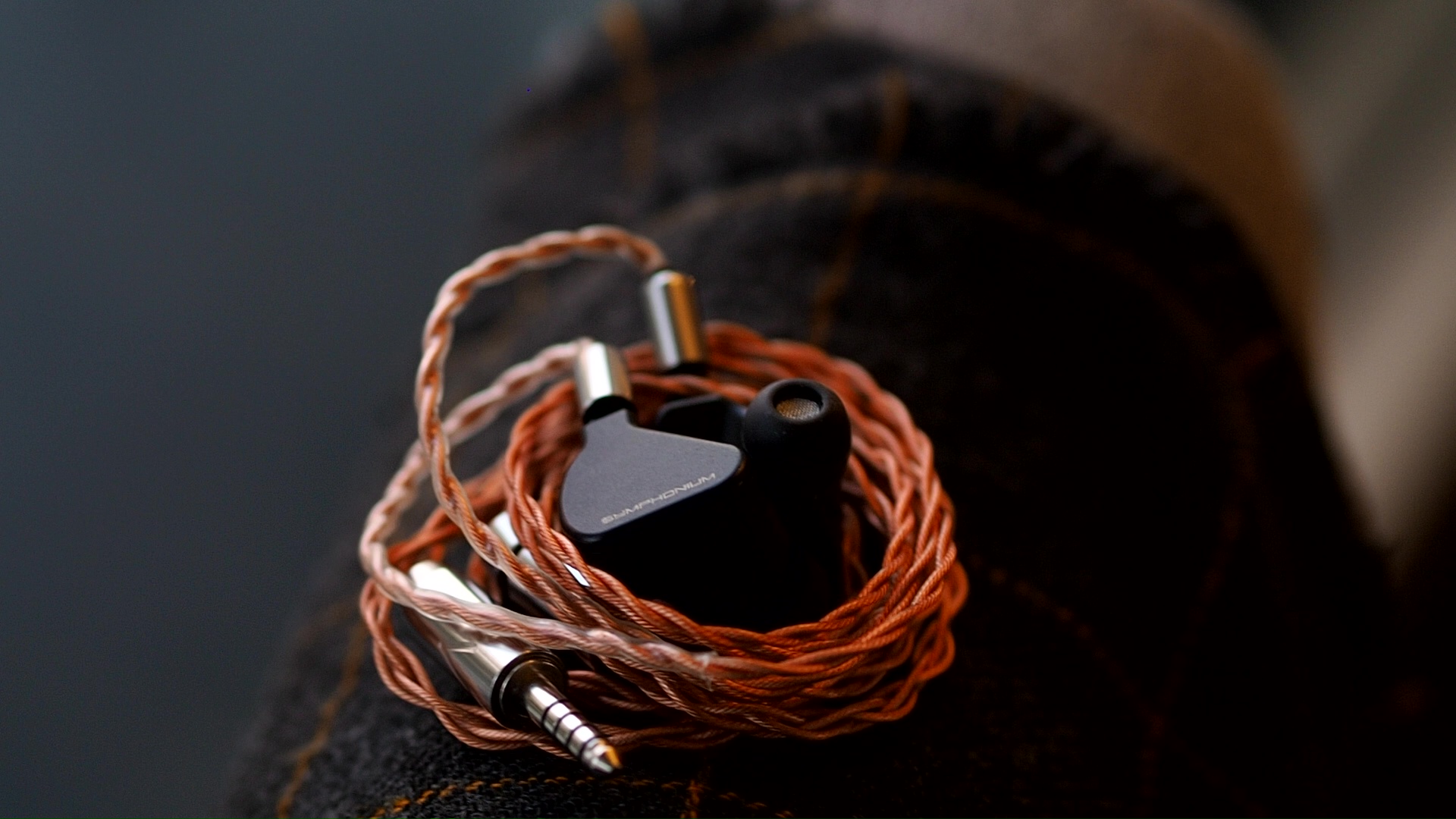
The lower-treble or “presence” region is slightly subdued to control the harshness and avoid masking the upper treble. This tuning approach generally works. I did not find any harshness or sibilance despite the brighter tuning of Helios.
It should be emphasised that all of the treble niceties described above require a medium-deep fit. The treble would be harsh and not very detailed if you wear Helios with a shallow fit.
Let’s switch our attention to the bass region of Helios next.
The bass tuning of Helios can be described as “sub-bass emphasis.” It means that Helios can produce a sense of physicality and tactility. You can feel the pressure of kickdrums and electronic bass. This physical sensation makes listening to Helios fun.
However, Symphonium and Subtonic decided to cut the mid-bass region of Helios in order to avoid the bass from colouring the midrange. It means that you can feel the bass but sometimes, you cannot quite hear the bass. This tuning creates an inconsistency in terms of how Helios reproduces bass. If a track is mixed with a lot of sub-bass, you would find that Helios is a bassy IEM. However, if a track focuses on mid-bass, you would find Helios thin, light, and somewhat hollow in the bass.
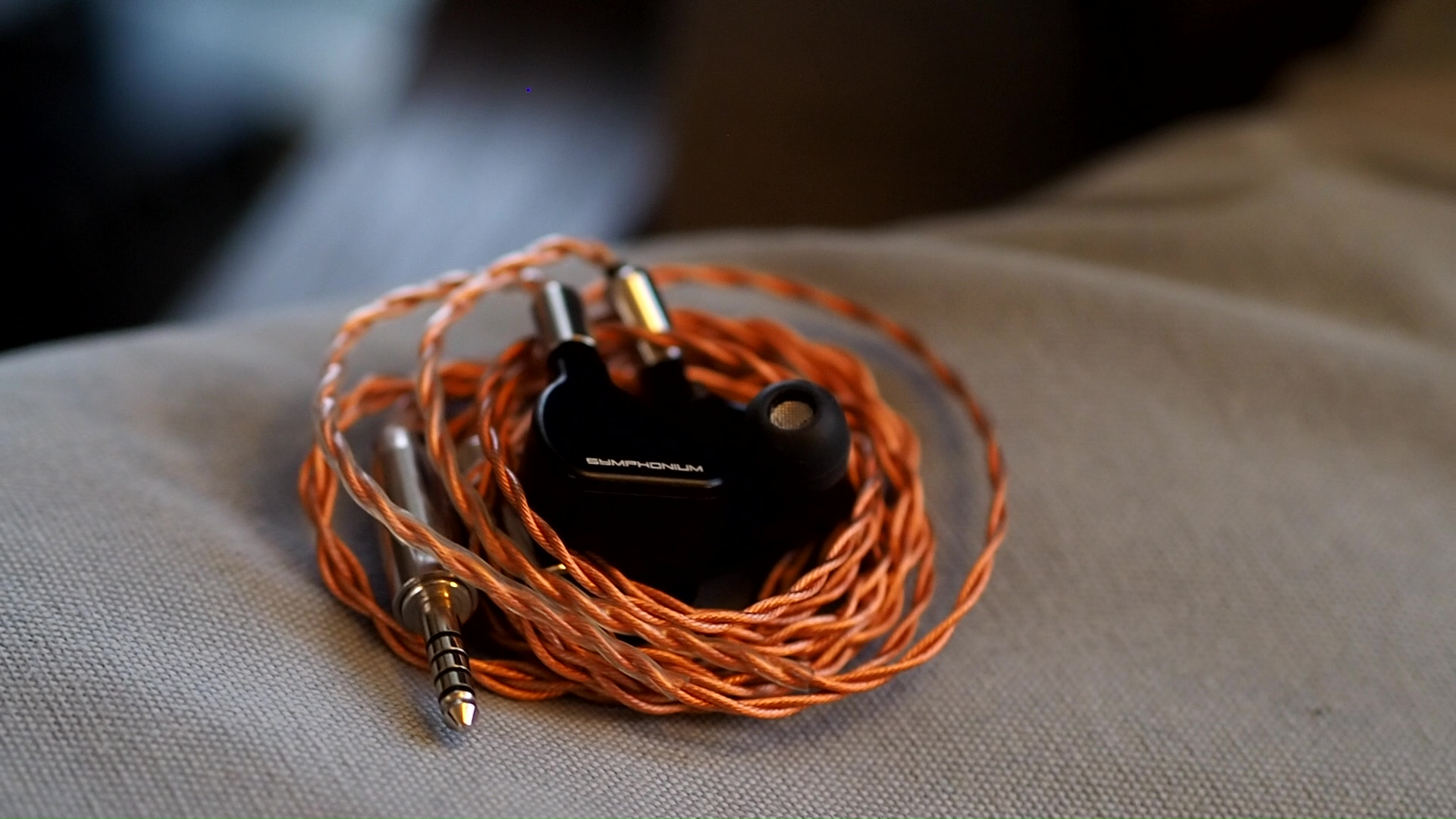
On the plus side, Helios is very adept at reproducing transients: the rapid swings in loudness in music, generally at the beginning of bass notes or downbeat or an orchestra. For example, when I listen to “Let the Battles Begin!” by Square Enix Music & Nobuo Uematsu, I felt a clear sense of marching rhythm thanks to how “snappy” the Helios is. It should be emphasised that having large bass does not necessarily translate to great transient response. It’s quite common to find big but woolly bass even from IEMs with a sub-bass emphasis tuning.

Stereo imaging or “soundstage” is a psychoacoustic illusion that different recording elements appear at various locations inside and around your head. Your brain creates based on the cues in the recording, which are enhanced or diminushed by your IEMs, your DAC, and your amplifier. Some IEMs present a wide but flat soundstage. Some present a “3D” soundstage with layering, depth, and height. In rare cases, with some specific songs, some IEMs can trick you into thinking that the sound comes from the environment (a.k.a., “holographic”)
When you use a shallow or medium-deep fit, you would find Helios to have an unusually wide soundstage. It means that the louder instruments and voices that are placed at the center of the stage would be pulled away, slightly outside your ears and your head. If you opt for a deep fit, then this advantage would disappear and Helios would have a stage width of a normal IEM.
The depth of the soundstage of Helios is good, but not as unusual as the width of the stage. I can hear a clear contrast between closer and further away elements of a mix when they play at the same time. There is also a strong separation between the highlighted elements at the center of the stage and the background, such as audience cheers or reverbs. However, Helios does not produce a strong illusion that the sound coming from the front of the head.

The precision of the instrument placement of Helios is excellent. A good way to think about the imaging of Helios is to think of a camera that focuses properly. Every element of a mix is placed at a precise and stable position with clear boundary, making it easy to track it. Things were more challenging when instruments and vocals are placed at the same position on the stage. Helios can produce a decent sense of layering, preventing them from mushing against each other, to a certain degree.
Soundstage imaging with games (CS GO Gameplay by Throneful) The pinpoint accuracy of Helios translates to gaming. It is easy to pin point both the direction and distance of the sound. If you have the skill, you would be able to take advantage of this ability.

Resolution is a fascinating subject due to the difficulty of pinning down what it really is. To me, “resolution” can be broken down into three components: (1) Sharpness, incisiveness, or “definition” of note attacks (see the figure above). (2) The separation of instruments and vocals, especially when they overlap on the soundstage. (3) The texture and details in the decay side of the notes. The first two give music clarity and make it easy to track individual elements of a mix. The last provides music details and nuances. Smooth and well extended treble response plays a crucial role.
Thanks to the snappy transient response and pin point imaging, Helios has excellent clarity and definition. Every instruments and vocals have clear boundaries. Percussive notes start cleanly with crisp attack. So on and so forth. The only time when Helios stumbles is when instruments and vocals overlap each other. This problem indicates some limitations on the “true” resolution of Helios and where Symphonium can improve.
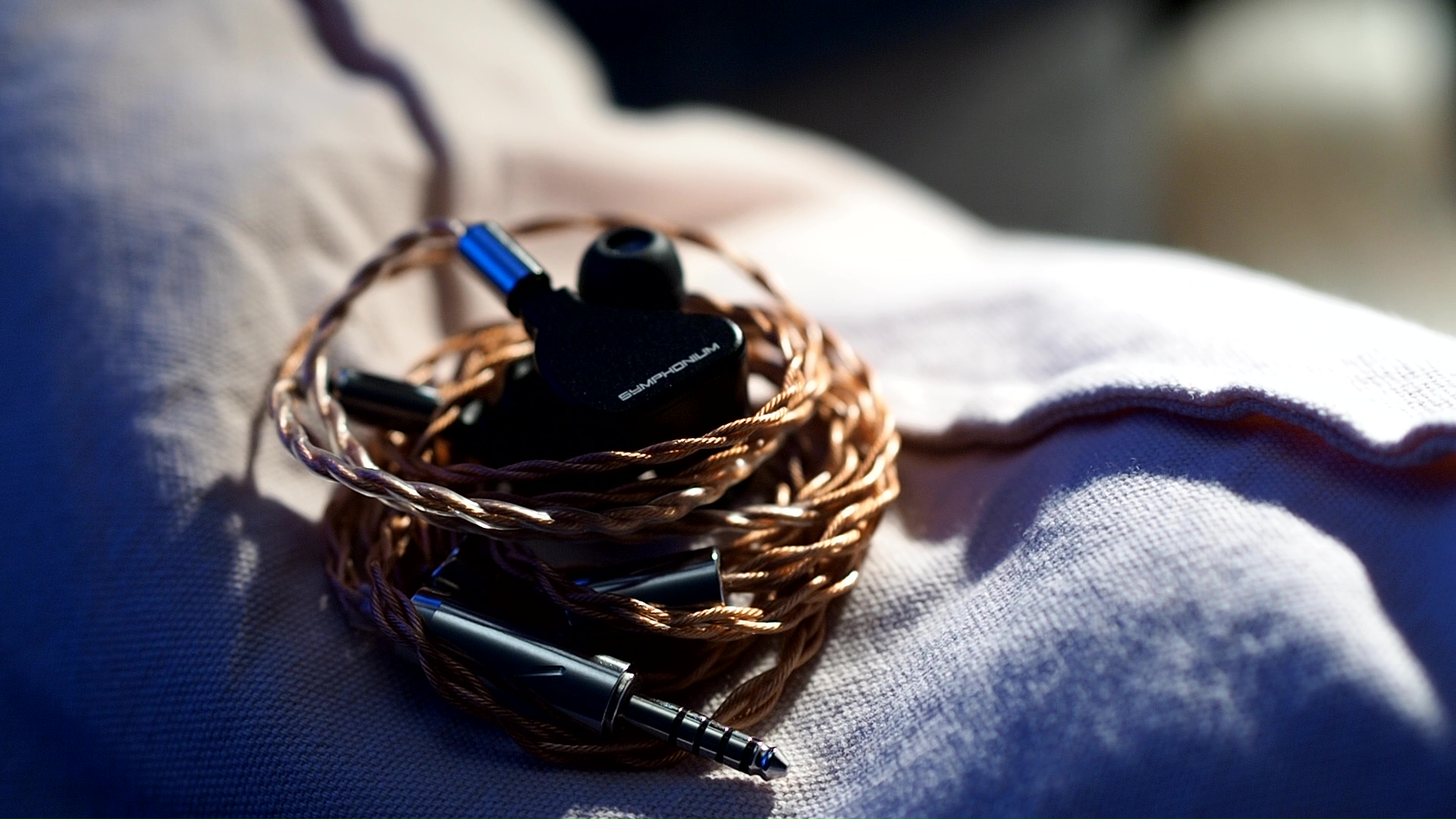
Another area where Helios is simply good, not great, is micro detail. The best way to discern and highlight the difference between micro details of IEM is by listening to sparse but detail-rich recordings like “Bach’s Violin Sonata No.1 in G Minor: Presto” by Kavakos and the texture and nuances around the violin notes. IEMs with stronger midrange resolution can preproduce more information down to sound of the bow gripping the strings. Helios has a dry, even rough, texture in the way it presents the midrange, so it does not feel overly smoothened, but it does not resolve down to the level of some stronger performers.
Does it matter?
It depends. Those little bits nuances and details would appear everywhere across a complex recording, making the music richer and more vibrant in detail. It is particularly interesting when you do nothing but listening to a recording closely. But for certain genres and listening situation, I would say Helios is “enough.”

Helios is difficult to drive.
Similarly to Final Audio E5000, Helios has an annoying combination of low sensitivity and low impedance, meaning portable amp likely run into current issues. In fact, I managed to shrink the soundstage and reduce the dynamic of Helios, even in the shallow fit position, using a tiny DAP and the BTR5. I recommend using balanced output from the most competent dongle in your collection. If you have a desktop amplifier or a battery power amplifier like Topping NX7/G5, use them to get the most out of Helios.
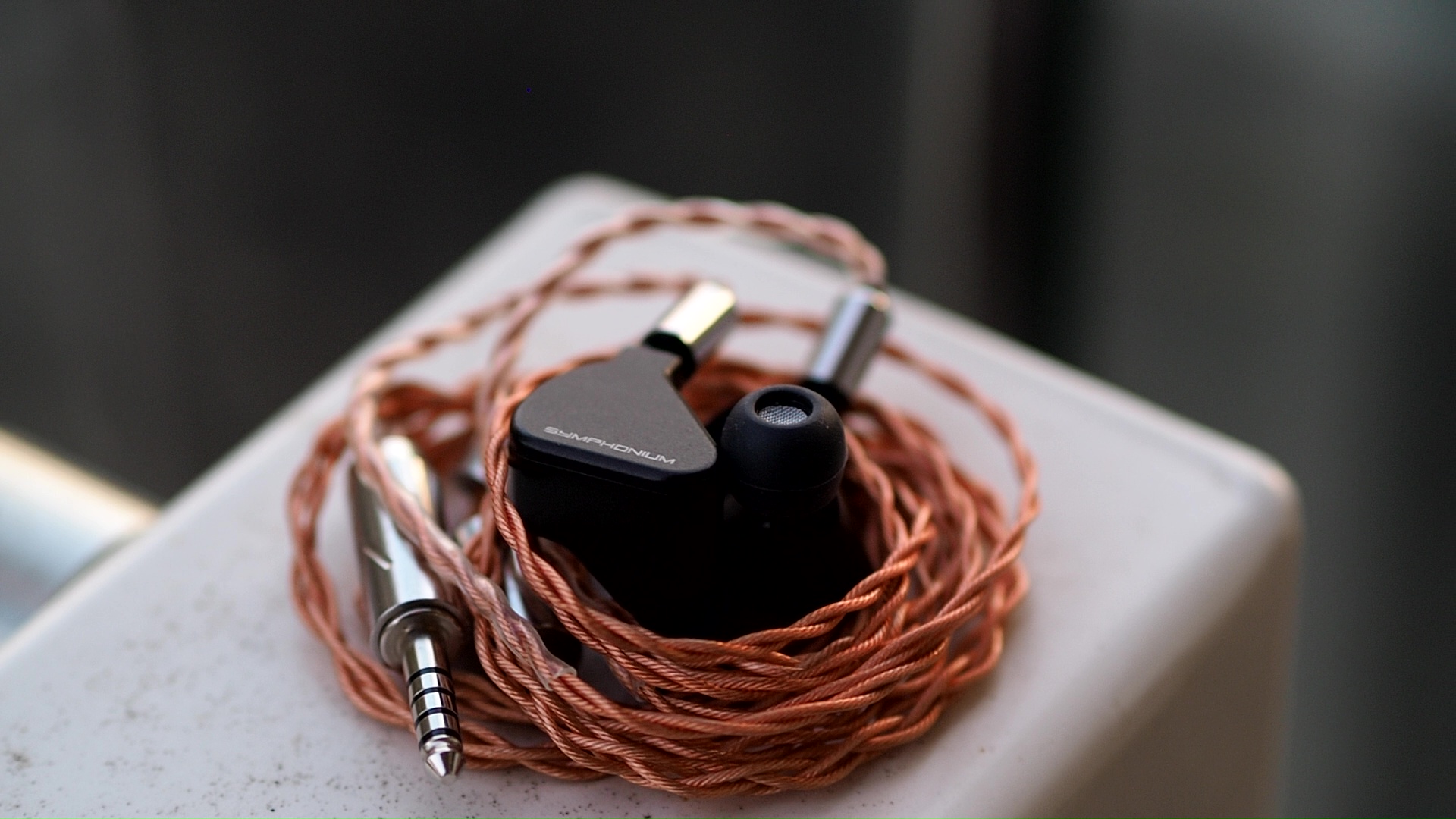
64 Audio U12T:
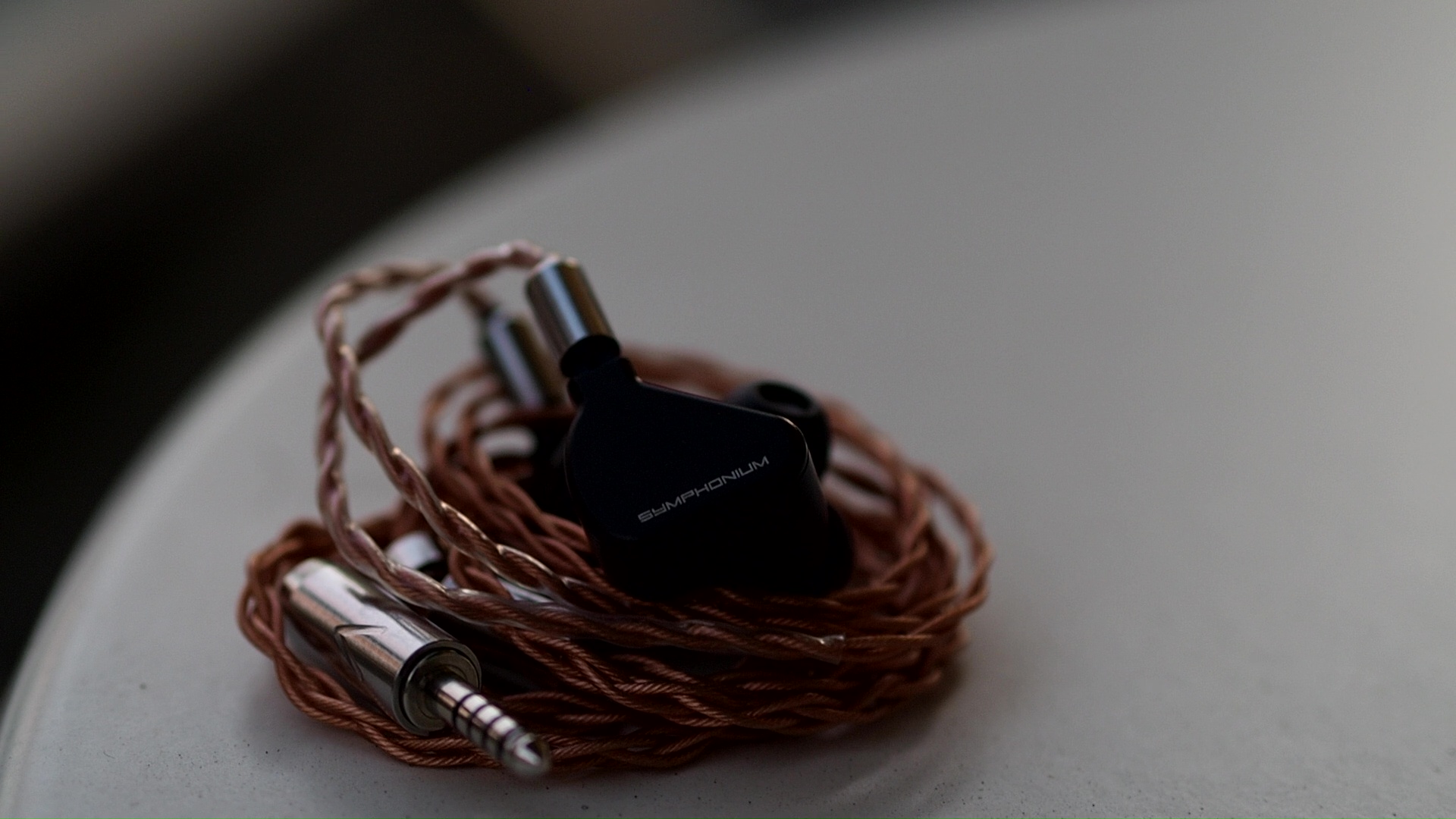
Is this IEM for everyone?
No. The fit is difficult, and the dip in the lower midrange and midbass might alienate listeners who wants some extra warmth and thickness to their vocals and instruments. But if you know that you are after a reference and clean sound and you don’t have much problem with fitting IEMs, Helios is worth consideration.
Absolute Sonic Quality Rating: 4/5 (Great)
Bias Score: 4.5/5 (I like this IEM)
Pros:

Updated: August 27, 2023

You can also watch my review on YouTube here:
Forewords
- What I look for in an IEM is immersion. I want to feel the orchestra around me, track individual instruments, and hear all of their textures and details. I’m not picky about tonality, as long as it does not get in the way of immersion.
- I rate IEMs within with a consistent scale from 1 (poor) to 3 (Adequate) to 5 (outstanding). Ratings are assigned by A/B tests against benchmark IEMs, regardless of the retail price.
- Ranking list and measurement database are on my IEM review blog.
- Terms used in my reviews are consistent with the glossary by Headphonesty
- This review is possible thanks to the Australian tour arranged by @Sebastien Chiu and @Damz87 (Thank you!). I have no affiliation with or financial interest in Symphonium. The unit retails for $1100 at the time this review was published.
- iBasso DX300 (for all A/B tests)
- FiiO K7
- Hidizs XO
All of my listening was done with the stock Azla Sedna Earfit Standard tips. I listen at a medium volume. I usually turn up the volume until the midrange is fully audible and detailed, unless a treble peak or overwhelming bass prevents me from doing so.
Specs
- Driver: 4BA drivers, 4-way crossover
- Connector Type: 2-pin
- Impedance: 8.5Ohms@1kHz
- Sensitivity: 104dB/Vrms@1kHz (83.3dB/mW@1kHz)
Build and Accessories




My first impression of Helios was the size of the box: it’s simple and tiny. Upon opening the box, I was surprised once more: the metal carrying case of Helios is also tiny next to leather round cases that usually come with IEMs from 64 Audio, Fir Audio. The tiny box and carrying case stood in stark contrast against the huge earpieces.

Before moving on to the earpiece, let’s talk about the rest of the accessories. Helios came with a cable that deliberately does not have any ear hook to help you wear the IEM more easily. At the bottom of the box, you will find a drawer that contains two types of ear tips and a “thank you” note with signatures from folks at Symphonium. I find this card to be a nice touch.
With accessories out of the way, let’s talk about the elephant in the room: the earpieces.


I’ll not sugarcoat it: Helios is a difficult-to-wear IEM. It’s not the sheer size of the earpieces that are troublesome, because the earpieces usually “float” outside rather than resting on the conchas of my ears.
No, most of the challenge of Helios comes from the thick and long nozzles. So long that I can wear the IEM at not one, not two, but three different insertion depths, which result in three distinct presentations.
How to wear
The manufacturer-approved way or wearing Helios is deep-fitting. By deep, I mean Etymotic-like deep, with the nozzles going pass the first bend and the shells sit against the conchas of your ears. This configuration showcases the oft-cited treble extension and clarity of Helios in all of their glory. Great treble extension means tack-sharp imaging, strong sense of layering of instruments from closer to further away, and excellent sense of space due to how clear the reverberation of the recording venue comes across. This configuration also gives an extreme level of noise isolation, similarly to wearing an Etymotic IEM. There are but two drawbacks: soundstage feels narrow (less left-to-right extension), and this fit can be very uncomfortable.At the other end of the spectrum, you can opt for a shallow fit by using larger tips. In this configuration, the eartips create a seal with the opening of my ear canals, meaning the nozzles of Helios barely enter my ear canals. This configuration gives me the widest soundstage and the most comfort. However, it introduces peaks and harshness to the treble region, which seem to impede my perception of upper treble. I find the sonic quality to have a noticeable downgrade.
My chosen way or wearing Helios is medium-deep fit. It means I used a medium ear tips and twist the IEM into place, similarly to Symphonium’s instruction. However, I stop when the nozzles reach the first bend. This configuration gives me the median between the two extremes mentioned above in terms of sonic quality, the width of the soundstage, comfort, and noise isolation. The rest of this review is based on this fit.
Tonality
Frequency response of Helios against Variations and the Harman in-ear target. Measurements were done with an IEC-711-compliant coupler and might only be compared with other measurements from this same coupler. Visit my graph database for more comparisons.
It is helpful to think of an IEM as a filter that highlights or subdues different parts of the incoming audio signal. This effect can be measured objectively by the squiggly lines above, called Frequency Response (FR) graphs, which measure how loud an IEM is at different frequencies from 20Hz (bass) to 20kHz (upper treble). Subjectivity is how your ears and brain interpret the effect of that filter on your music and decide whether it is “enjoyable.” There are some “rules of thumb” when it comes to tonality, but most interesting IEMs usually bend the rules masterfully.
One of my favourite ways of looking at an IEM is to compare the vision of its creators with the end result to see if their lofty ideas can be translated to the reality. Symphonium envisioned the Helios to have “an exceptionally clean sub-bass punch that hits hard, without coloring the clarity of vocal presentations,” and “a smooth and detailed midrange” with “class-leading treble extension.” You can also find out more about the idea behind Helios from an interview with Toranku and Ken from Subtonic and the details about Toranku’s frequency response target.
So, how does Helios sound?
I would say it matches the vision precisely. The tonality of Helios can be summarised as “U-shaped”. It means:
The midrange is neutral or “flat.” In other words, Helios aims to disappear from the music instead of imposing an opinion on how the music should sound. It means that Helios presents instruments and vocals as-is rather than injecting additional warmth to make them more mellow and enjoyable. At the same time, Helios does not boost the upper midrange to the degree of other “neutral” IEMs like Moondrop Blessing 2 or Etymotic ER2SE. As a result, female vocals are not overly forward or “shouty”.
Is neutral tuning always good? Logically, an IEM that presents music without any colouring is ideal (a.k.a., “as artist intended”). Subjectively, the value of a neutral tuning depends a great deal on your preference and even your mood. I personally prefer IEMs to have very little colouring to maximise their compatibility with different music libraries and source chains.

The treble of Helios is carefully boosted. Much of the treble energy of Helios are focused in the upper treble region which plays a significant role in creating the so-called “technical performance” that I always look for when trying an IEM. Emphasis in upper treble allows Helios to create ambience embedded within recordings. For example, when I listen to “Bach’s Violin Sonata No.1 in G Minor: Presto” by Kavakos, I can easily hear the reverb of the violin within the recording venue, which improves the sense of space and the illusion of “being there.”
The mid-treble (body of cymbals and hats) is present but not overly emphasised. It means I can discern cymbals, hats, and chimes without much effort, but these instruments do not become too loud or piercing. Helios also does a good job at reproducing textures and nuances of these instruments.

The lower-treble or “presence” region is slightly subdued to control the harshness and avoid masking the upper treble. This tuning approach generally works. I did not find any harshness or sibilance despite the brighter tuning of Helios.
It should be emphasised that all of the treble niceties described above require a medium-deep fit. The treble would be harsh and not very detailed if you wear Helios with a shallow fit.
Let’s switch our attention to the bass region of Helios next.
Bass and Dynamic
The bass of Helios is interesting in many ways.A good pair of IEMs/earbuds/headphones should be able to convey, even emphasise, the sense of rhythm and the ebbs and flows of music. In general, this energy requires IEMs to be able to convey rapid volume swings on the downbeat of an orchestra or the leading edge of bass note. It also requires tactile physical sensation of the bass, and the sense of rumble and texture accompanying the bass drops. An IEM can have loud bass, but still fail to convey energy should it lack other features above.
The bass tuning of Helios can be described as “sub-bass emphasis.” It means that Helios can produce a sense of physicality and tactility. You can feel the pressure of kickdrums and electronic bass. This physical sensation makes listening to Helios fun.
However, Symphonium and Subtonic decided to cut the mid-bass region of Helios in order to avoid the bass from colouring the midrange. It means that you can feel the bass but sometimes, you cannot quite hear the bass. This tuning creates an inconsistency in terms of how Helios reproduces bass. If a track is mixed with a lot of sub-bass, you would find that Helios is a bassy IEM. However, if a track focuses on mid-bass, you would find Helios thin, light, and somewhat hollow in the bass.

On the plus side, Helios is very adept at reproducing transients: the rapid swings in loudness in music, generally at the beginning of bass notes or downbeat or an orchestra. For example, when I listen to “Let the Battles Begin!” by Square Enix Music & Nobuo Uematsu, I felt a clear sense of marching rhythm thanks to how “snappy” the Helios is. It should be emphasised that having large bass does not necessarily translate to great transient response. It’s quite common to find big but woolly bass even from IEMs with a sub-bass emphasis tuning.
Soundstage Imaging

Stereo imaging or “soundstage” is a psychoacoustic illusion that different recording elements appear at various locations inside and around your head. Your brain creates based on the cues in the recording, which are enhanced or diminushed by your IEMs, your DAC, and your amplifier. Some IEMs present a wide but flat soundstage. Some present a “3D” soundstage with layering, depth, and height. In rare cases, with some specific songs, some IEMs can trick you into thinking that the sound comes from the environment (a.k.a., “holographic”)
When you use a shallow or medium-deep fit, you would find Helios to have an unusually wide soundstage. It means that the louder instruments and voices that are placed at the center of the stage would be pulled away, slightly outside your ears and your head. If you opt for a deep fit, then this advantage would disappear and Helios would have a stage width of a normal IEM.
The depth of the soundstage of Helios is good, but not as unusual as the width of the stage. I can hear a clear contrast between closer and further away elements of a mix when they play at the same time. There is also a strong separation between the highlighted elements at the center of the stage and the background, such as audience cheers or reverbs. However, Helios does not produce a strong illusion that the sound coming from the front of the head.

The precision of the instrument placement of Helios is excellent. A good way to think about the imaging of Helios is to think of a camera that focuses properly. Every element of a mix is placed at a precise and stable position with clear boundary, making it easy to track it. Things were more challenging when instruments and vocals are placed at the same position on the stage. Helios can produce a decent sense of layering, preventing them from mushing against each other, to a certain degree.
Soundstage imaging with games (CS GO Gameplay by Throneful) The pinpoint accuracy of Helios translates to gaming. It is easy to pin point both the direction and distance of the sound. If you have the skill, you would be able to take advantage of this ability.
ResolutionPermalink

Resolution is a fascinating subject due to the difficulty of pinning down what it really is. To me, “resolution” can be broken down into three components: (1) Sharpness, incisiveness, or “definition” of note attacks (see the figure above). (2) The separation of instruments and vocals, especially when they overlap on the soundstage. (3) The texture and details in the decay side of the notes. The first two give music clarity and make it easy to track individual elements of a mix. The last provides music details and nuances. Smooth and well extended treble response plays a crucial role.
Thanks to the snappy transient response and pin point imaging, Helios has excellent clarity and definition. Every instruments and vocals have clear boundaries. Percussive notes start cleanly with crisp attack. So on and so forth. The only time when Helios stumbles is when instruments and vocals overlap each other. This problem indicates some limitations on the “true” resolution of Helios and where Symphonium can improve.

Another area where Helios is simply good, not great, is micro detail. The best way to discern and highlight the difference between micro details of IEM is by listening to sparse but detail-rich recordings like “Bach’s Violin Sonata No.1 in G Minor: Presto” by Kavakos and the texture and nuances around the violin notes. IEMs with stronger midrange resolution can preproduce more information down to sound of the bow gripping the strings. Helios has a dry, even rough, texture in the way it presents the midrange, so it does not feel overly smoothened, but it does not resolve down to the level of some stronger performers.
Does it matter?
It depends. Those little bits nuances and details would appear everywhere across a complex recording, making the music richer and more vibrant in detail. It is particularly interesting when you do nothing but listening to a recording closely. But for certain genres and listening situation, I would say Helios is “enough.”
Source Pairing

Helios is difficult to drive.
Similarly to Final Audio E5000, Helios has an annoying combination of low sensitivity and low impedance, meaning portable amp likely run into current issues. In fact, I managed to shrink the soundstage and reduce the dynamic of Helios, even in the shallow fit position, using a tiny DAP and the BTR5. I recommend using balanced output from the most competent dongle in your collection. If you have a desktop amplifier or a battery power amplifier like Topping NX7/G5, use them to get the most out of Helios.
Comparisons
Moondrop Blessing 2:- The tonality of Blessing 2 feels more “V-shaped” comparing to Helios
- The violin sound of Blessing 2 feels more smoothened. It has less crunch and texture than Helios
- The reverb trail of Blessing 2 is less defined.
- The separation between the violin and the reverb at the background is not very strong. Everything feels more meshed together.
- Helios has stronger definition and separation of voices. For instance, the female voice on the right side of the stage in Jolene (feat. dolly Parton)” by Pentatonix is crystal clear and easy to follow without effort with Helios, but harder with Blessing 2
- Each voice also has more nuances and micro details with Helios comparing to B2
- Andromeda has much more lower midrange, so at a glance, Helios seems more separated. However, close inspection found that all voices are equally well defined and easily followed with both IEM.
- The violin sounds richer and denser on Andromeda, but with equal level or slightly less textured and nuanced.
- The reverb trail of Andromeda is similarly defined and easy to discern.
- The reverb of Andromeda forms an arc or dome around the head. Helios feels more like listening to a two channel system.

64 Audio U12T:
- The tonality feels more “U” with U12T: thicker lower string, and very high notes are more highlighted.
- The kick drum is noticeably louder on U12T
- The cymbals are noticeable louder on U12T
- U12T presentation feels warmer and denser, like more “things” happening in the space between instruments and instruments have more body.
- The violin sounds richer and denser with U12T, and at the same time equally or to slightly more textured and nuanced.
- The reverb trail is the most defined.
- The reverb forms an arc or dome around the head with the violin sitting in front, in the middle of the stage. Helios presents like a two channel system.
- Helios has similar separation with U12t, even though the thinner midrange of Helios might make it seems like there is more space between instruments.
- Kick is noticeably louder on meteor
- The overall presentation and tonality is thicker and warmer, like instruments and vocals have more weight
- The depth of the stage is on Meteor side
- The width of the stage is on Helios side
- The definition of instruments and vocals are crisper and cleaner on Helios side. The cheers of the audience, for example, is more clearly defined with Helios.
My TakePermalink
Symphonium Helios reminds me of the contrast between “Classical” and “Romantic” beauty described in one of my favourite books, Zen and Art of Motorcycle Maintenance by Robert Pirsig. The romantic beauty is about the surface aesthetic, about the feeling, about looking at a “thing” as a whole. The classical beauty is about the underlying form, the balance, how parts fit together to form the whole. Most audio gears are, of course, romantically beautiful. With Helios, however, I see the classical beauty in how it was optimised, from the choice of tuning to the constraint in terms of the number of drivers being utilised.
Is this IEM for everyone?
No. The fit is difficult, and the dip in the lower midrange and midbass might alienate listeners who wants some extra warmth and thickness to their vocals and instruments. But if you know that you are after a reference and clean sound and you don’t have much problem with fitting IEMs, Helios is worth consideration.
Absolute Sonic Quality Rating: 4/5 (Great)
Bias Score: 4.5/5 (I like this IEM)
Pros:
- Beautifully neutral tonality
- Extended treble
- Deep and tactile bass response
- Laser sharp note definition and imaging
- Challenging fit
- Midbass dip
- Doesn’t quite match the resolution and soundstage of top performers of its era
- Modern $500-ish IEMs are catching up

Updated: August 27, 2023
Smirk 24
Yes and the OG has a more special treble than the SE IMO though both are fantastic.
The fit on the HSE is much improved and it’s a bit warmer/less clinical in the mids, though I felt this came at the cost of a slightly more congested soundstage.
The fit on the HSE is much improved and it’s a bit warmer/less clinical in the mids, though I felt this came at the cost of a slightly more congested soundstage.
o0genesis0o
There is only one problem with the SE: the newly released Crimson 

godkuma
The crimson is worse sounding than the SE
o0genesis0o
Headphoneus Supremus
Pros: Exceptional stereo imaging: producing a dome of sound rather than a flat plane
Inoffensive tuning: no harsh peak, no random dip, relatively natural timbre
Slightly above average resolution
Inoffensive tuning: no harsh peak, no random dip, relatively natural timbre
Slightly above average resolution
Cons: Weak and slightly fuzzy percussion rendering
Fit might be dealbreaker for some
Fit might be dealbreaker for some

tl;dr: Undeniable stereo imaging prowess. However, the detail retrieval and bass cannot catch up with the exceptional stereo imaging. The fit might also be a dealbreaker for some users.
My review, along with details about methodology, impressions, and ranking database are available at my website.
Preample
- I purchase this unit on my own. I have no affiliation with or financial interest in Tanchjim
- All listening tests were conducted at a comfortable level where the main vocal and instruments are loud and clear
- My music library covers nostalgic pop music, epic orchestral music from Sci-fi shows, classical violin performances, piano, lo-fi beats, and a few rock songs.
- What I look for in IEM, in order of importance: 3D soundstage with a strong sense of depth, detailed across the frequency spectrum, snappy and tactile note attacks in bass and midrange, natural timbre.
- IEMs are rated with a series of A/B tests against a few benchmark IEMs. The total rating is the average of component ratings. EQ is NOT used in these tests. See the methodology for more detail.
- Price is not a factor when comparing IEMs. I want to see where an IEM fits in the "grand scheme" of things rather than in arbitrary buckets such as "budget", "mid-fi", and "flagship".
- This review was done with stock bass tips, Comply foam tips, and DIY foam tips.
Non-sound aspects
I always think of Tanchjim as an unlucky fellow, always playing second fiddle despite having a similar approach to tuning and marketing to a fellow Chi-Fi company. Therefore, when Tanchjim announced a new budget IEM that focuses on stereo imaging, my curiosity got the best of me, and I blind bought it. After weeks of using and testing OLA, I am impressed.
First, let's talk about packaging and accessories.

In the box, you get:
- Ear pieces
- 3 pairs of bass tips (silicone)
- 3 pairs of treble tips (silicone)
- A cloth bag for carrying
- Paper work
Whilst the amount of provided accessories is not as generous as Dunu or Fiio, the unboxing experience is quite pleasant and thoughtful, making this IEM an exciting gift for beginners.
Build-wise, OLA is very light. It seems sturdy enough, but the moulding and finishing are not as good as one imagines looking at the advertisement material. It is not a resin-filled IEM like Blessing 2 or Dunu SA6.
Fit-wise, Ola is not the easiest nor comfortable one to use. It has a large short nozzle with a thick lip, similar to those warp pipes in Super Mario games. While the nozzle is small enough to go into your ear canal, the included tips might be too thick. Unless you sort this out, you will have a very shallow fit where the IEMs are held by the tip of the ear tips rather than the entire nozzle. Such fit can change frequency response and leak bass. I ended up creating custom foam tips to ensure the best fit.

Custom tips from foam earplugs
Sound Analysis

This table shows the results of A/B tests between OLA and the benchmark IEMs. +1 means OLA wins. -1 means OLA loses. 0 means draw. Some tests are too one-sided that conclusions can be reached without further tests.
Stereo Imaging and Layering: 4.5/5

Soundstage, Panning & Width, Layering & Depth
Stereo Imaging is an IEM's ability to paint an illusion ("image") of a sound field around a listener. This stereo image is achieved by both recording and mixing technique (stereo widening mixing). Given suitable music, movie, or game, IEMs with good stereo imaging allow you to pin point direction of the sound. Exceptional IEMs can recreate a wide and deep image in which instruments and and vocals form layers from closer to further rather than existing on a the same flat plane.
Test tracks:
- We are the world(3:00 onward): This song shows some excellent stereo imaging. Can you hear soloist upfront whilst the choir is pushed further away to the background? Can you hear one choir to the left and further to the back whilst the other to the right and a bit closer to you?
- Eine kleine Nachtmusik - I. Allegro: Listen for the clear direction of each instrument in the string quartet throughout the piece. You should also be able to hear cello locating closer to than the violin 1.
- I vow to thee, my country: This song is an excellent test for layering. Can you hear the boy choir standing in front of the men choir or they are on the same flat plane?
I was very sceptical when reading the marketing material from Tanchjim about how they tune OLA to "HRTF" (i.e., how a person's face and ears modify the sound reaching the eardrums) for accurate stereo imaging. The question was: which or whose HRTF?
It turned out my scepticism was unfounded. Perhaps because my HRTF (male, Asian) matches Tanchjim's target, OLA delivers one of the best stereo imaging performances amongst all IEMs that I have owned or heard.
Before further discussions, I want to remind you that regardless of how impressive these descriptions sound, OLA is still an IEM. The sound still comes from inside or close to your head, never from a virtual "stage" far away from you like how loudspeakers imagine. What OLA provides is a relatively 3D sphere of sound around your head, rather than a wide but flat wall of sounds like many other IEMs and even headphones.
For example, in the chorus of We are the world from 3:00, OLA imagings two choirs furthest from you, one slightly to the left whilst the others to the right. Soloists are upfront and centre, away from the choirs. I vow to thee, my country is another song that showcases OLA's strong performance in layering. You can hear the boy choir separated from the men's choir and located closer to you. OLA also places you in the middle of the string quartet in *Eine Kleine Nachtmusik - I. Allegro*, allowing you to hear the instruments around you, rather than a flat plane that goes from left, through your head, to the right.
The critical limitation of OLA is the lack of bass and lower-mid (i.e., all frequencies below 1khz). This tuning pushes the bass toward the background, reducing the sense of depth and layering that some IEMs like Andromeda and E5000 produce.
Comparison against benchmark IEMs:
- Vs CFA Andromeda 2020 (5/5): OLA is no match due to the lack of lower frequency described above. Andromeda does the depth and layering much better.
- Vs Final Audio A4000 (4/5): Whilst A4000 pushes the image further than OLA, it does not layer elements as well as OLA. In other words, everything is far away on A4000, rather than something closer, something further away at the same time as OLA.
- Vs Moondrop Blessing 2 (3/5): OLA creates a dome of sound, whilst Blessing 2 creates a wide, flat plane. I found OLA more engaging.
- Vs ER2SE (deep insertion) (2/5): OLA creates a larger and more 3D image compared to the narrow and shallow stage of ER2SE. Noted that we are talking about stock ER2SE with the deepest insertion and no EQ.
The benchmarks show that OLA fits between 5/5 and 4/5 levels, so I assign it 4.5/5 for stereo imaging and soundstage. This score puts it behind top-tier performers (Andromeda 2020, Final E5000) but above many peers with wide but flat soundstages like Blessing 2, Aria, Titan S, and similarly tuned IEMs.
Percussion Control: 2/5
Percussion Rendering is about the quality of drum hits, bass guitar, and other percussion instruments, not how loud they are. Exceptional IEMs render bass attacks fast, hard, and maintains precise timing regardless of how busy the bass section becomes. On the other hand, poorly controlled bass is boomy (the bass notes linger too long and blend into others) or mushy (the start of bass notes or drum hits are soft rather than decisive).
Test tracks:
- Finale (William Tell Overture): How rhythmic the whole orchestra sound? Can you follow the drums clearly? How about the rhythm carried by the string and brass section? Can you hear texture and detail in the drum or just mushy thump thump sound?
- Force your way: Is the bass line impactful? Can you hear the melody in the bass or just a series of thump thump sound?
- Clarinet Polka: fun and chaotic polka. Is the drum clean and precise? Is the clarinet on the right well control? How about the accordion on the left?
If the above analysis seems too rosy, then this is where things collapse for OLA. To put it simply, its bass lacks quantity (loudness) and has only mediocre quality, so drums and other rhythmic elements of the music sound dull.
For example, Finale (William Tell Overture) demands snappy attacks of drums, strings, brass, and woodwind section at the same time to deliver its "horse galloping" sensation. OLA does not render attack fast and hard enough, making notes soft and mushed. It does not fare very well with Clarinet Polka for the same reason. Force your way lacks the expected strength. You might be able to hear some details in the bass, but it's not that great.
Comparison against benchmark IEMs:
- Vs Final E5000 (5/5): Far from the same level.
- Vs Final A4000 (4/5): Far from the same level. A4000 might lack the quantity due to its subdued midbass, but its drum hits are fast, clean, and physical due to its sub-bass extension. You feel the impact in your throat.
- Vs Titan S (3/5): A bit closer in terms of performance level, but the quality of drum hits on Titan S is still better: snappier and stronger.
- Vs Blessing 2 (2/5): More or less the same. Bass attacks are a bit soft, like punching a pillow. Noted that we are talking about the stock Blessing 2 without any EQ.
I rank OLA 2/5 for percussion rendering based on the benchmarks. To put this in context, any score below 3/5 is unsatisfying.
Detail Retrieval: 3.5/5
Detail Retrieval reflects an IEM's ability to reveal fine details in a mix. Exceptional IEMs are resolving across the frequency spectrum, not just the midrange: you hear more details in the reverb and decay of sound, you hear texture and pitch in the bass, you hear more nuances in instruments and vocal. You usually wouldn't know that your current IEM lacks detail unless you have heard a more resolving one.
Test tracks:
- Now you believe in you: testing the detail of background element and the treble extension / air
- Hotel California: testing details of the foreground elements from the 12-string guitar.
- My Immortal: testing the detail retrieval across spectrum.
Detail retrieval or "resolution" of OLA is slightly above average. It does a decent job rendering the tail-end reverb and decay of sound in *Now you believe in you*. The reverb fades away naturally rather than dropping abruptly when going below a certain volume. You can hear little vibratos and details there. The background choir is rendered with decent clarity, allowing you to detect its presence.
"Adequate" also describes how OLA renders Hotel California and *My Immortal*. You can hear small details when the guitar pick or fingernails catch the strings or the articulation of the left hand on the fingerboard. The notes are still a bit fuzzy around the edge compared to better performers. Still, there is not much to complain about mid-range details in general.
Treble and bass details are where the gap between OLA and better performers shows more clearly. Because we listen to the whole music rather than just midrange or treble or bass, these weaknesses pull the overall "resolution" of OLA down. In some songs, we can compare OLA's sound to an image that has been overly sharpened rather than taken with good lenses.
Comparison against benchmark IEMs:
- Vs Andromeda 2020 (5/5): The A/B was so lopsided that I did not need to go further after *Now you believe in you*. OLA is no match.
- Vs Blessing 2 (4/5): OLA was close, but not quite Blessing 2 level yet. With OLA, you tell yourself "hmm, not bad, maybe need a bit more, but not bad ...". With Blessing 2, you can immediately tell yourself "yes, that's it. Nice and clean".
- Vs Aria (3/5): This is the A/B I was looking forward to the most. Surprisingly, OLA is just a bit sharper and cleaner than the "average IEM" benchmark. Not hugely, but still better.
- Vs FH3 (2/5): No comparison is necessary. OLA does not have an overly smoothened sound like FH3 (or CFA Satsuma).
Based on the benchmarks, I rate OLA 3.5/5 in terms of detail retrieval, putting it very slightly above average. This score means I would not complain about lack of detail or fuzziness when using OLA.
Separation: 4.5/5
Separation and Layering reflects an IEM's ability to prevent elements of a mix from overlapping and mushing together. Separation can happen by spreading elements of a mix from left to right, layering them closer to further away, or by accurate rendering of the timbre of different instruments. Given a decent mix, exceptional IEMs allow you to follow every element of the mix with minimal difficulty.
Test tracks:
- Bad guy: Can you hear the duplicated vocal line of Billie Eilish on the left? How easy it is for you to follow the words that she sings?
- Finale (William Tell Overture): Can you follow individual sections the orchestra? Can you hear the woodwind playing at the same time with the string section? Can you hear texture and detail in the drum or just mushy thump thump sound?
- And the waltz goes on: How easy it is to separate different sections of the orchestra when the music gets rich and lush from 1:00 onward?
Due to the tuning and the excellent stereo imaging, OLA performs admirably in separation and layering. It separates and renders elements at the fringe of the soundstage, such as duplicated vocals for stereo widening effect in *Bad guy*, as well as Andromeda 2020.
However, OLA's separation crumbles when many things happen in the same region in the soundstage and at similar frequencies. For instance, its separation is worse than Andro in Finale (William Tell Overture)*. Tracks that demand layering like *And the waltz goes on are also the bane of OLA.
Comparison against benchmark IEMs:
- Vs Andromeda 2020 (5/5): OLA falls behind compared to Andromeda when the music gets busy.
- Vs ER2SE (deep insertion) (4/5): OLA pulls ahead slightly thanks to the spacious staging. However, the ability to distinguish different elements in a mix is slightly better on ER2SE.
- Vs Aria (3/5): I found OLA to do a better job than the benchmark due to its staging.
Vs FH3 (2/5): While OLA does not separate exceptionally well when elements are bundled together, it still does better than FH3.
Based on the benchmark, I give OLA between 3.5 and 4.5/5, depending on the songs.
Tonality: 3/5
Tonality reflects the timbre and relative loudness of different elements in a mix. The tuning of an IEM can be measured objectively and presented as a frequency response graph. However, the interpretation of tonality from that tuning is more personal due to differences in anatomy, cultural background, and preferences. Therefore, to reduce bias, we assess IEM's tonality based on how bad they are rather than how good they are. As long as the tuning does not make timbre unrealistic nor reduce technical performance significantly, it is okay.

Frequency response graph, courtesy of Super* Review at Squig.Link)
I was disappointed when listening to OLA the first time. In my impression, I stated that the contrast between upper mid and lower-mid is relatively high compared to the manufacturer's graph, meaning vocals and instruments are more "in-your-face" but not full-bodied like Final E series, 64 Audio or Andromeda 2020. After weeks of listening and testing, I still have the same opinion.
To be clear, OLA is not a poorly tuned IEM. The instruments and vocals are relatively natural, with no harsh peaks. I believe some would even consider this IEM to be well-tuned, given how perfect it executes the ear gain region.
My issue with OLA is with the area below 1khz. OLA loses richness and details in that region by dipping the fundamental tones. This issue also impacts the soundstage depth. To verify this hypothesis, I use a simple graphical EQ to cut 2.4khz and 4.8khz by 2.5db and boost the lower-mid to match the curve of Final E5000. Lo and behold, the voicing becomes realistic, and depth is created correctly. In this configuration, I have no problem rating OLA's stereo imaging as 5/5, matching my Andromeda 2020.
In summary, OLA is a fashionably tuned IEM that is not bad on its own, but EQ is highly recommended. Thus, I rate it 3/5: average.
Conclusion and Personal Preference: 4/5
Personal preference is my entirely subjective and personal opinion about an IEM, based on multiple factors. This score DOES NOT contribute to the rating of an IEM.
I give OLA 4/5. I appreciate what Tanchjim has done with stereo imaging, and I hope they know how to repeat that success. I also hope that they further improve these drivers and put them in better shells, like a new Hana or a new Oxygen. If Tanchjim also boosts the lower mid, I believe such IEM would be an end-game worthy for many.
Upgrade path
Should you get OLA if ...
- *you have no IEM?*: Yup. It's great, but you need to learn how to wear IEM properly and get ready to explore ear tips.
- *you have a not-so-great budget IEM?*: Yup. Same as above.
- *you already have something decent like Aria?*: If you don't want to EQ, then yes. The famous trio (Aria, Titan S, T3+) does not give you this kind of stereo imaging due to their tuning.
- *you already have Blessing 2 or higher-end IEM?*: Nope. You can use EQ to increase the soundstage depth. Blessing 2 sounds quite 3D with some added lower-mid and reduced ear-gain.
- *you want head-shaking, thick, boomy sound?*: Nope.
Where to go from OLA:
- More clarity? ER2SE/XR, Blessing 2, Andromeda 2020
- More immersive soundstage? Andromeda 2020 or E5000
- More impactful bass? E3000 or E5000
Last edited:
Ichos
Very detailed review, well done!
o0genesis0o
Headphoneus Supremus
Pros: Neutral, mid-centric tonality
Clear and clean midrange
Balanced treble that avoids harshness
Responsive and tactile bass
Comfortable fit
Clear and clean midrange
Balanced treble that avoids harshness
Responsive and tactile bass
Comfortable fit
Cons: Flat soundstage
Lack of authority and weight in male vocals
Requires good amping to wake up the woofers
Lack of authority and weight in male vocals
Requires good amping to wake up the woofers
Released in 2020, Moondrop Blessing 2 has gained a legendary status in the audio community. It was THE recommendation for enthusiasts seeking their first high-end in-ear monitor (IEM). Some even claimed that Blessing 2 surpasses IEMs in the upper echelons. I do not share such enthusiasm or love for these IEMs, but I still have used Blessing 2 as a benchmark to rate other IEMs ever since I started reviewing.
However, it has been three years since Blessing 2’s release, and the IEM market evolves rapidly. In this dynamic landscape, three years can feel like an eternity. Moondrop now presents the new Blessing 3. The question is, does it live up to the legacy of its predecessor?
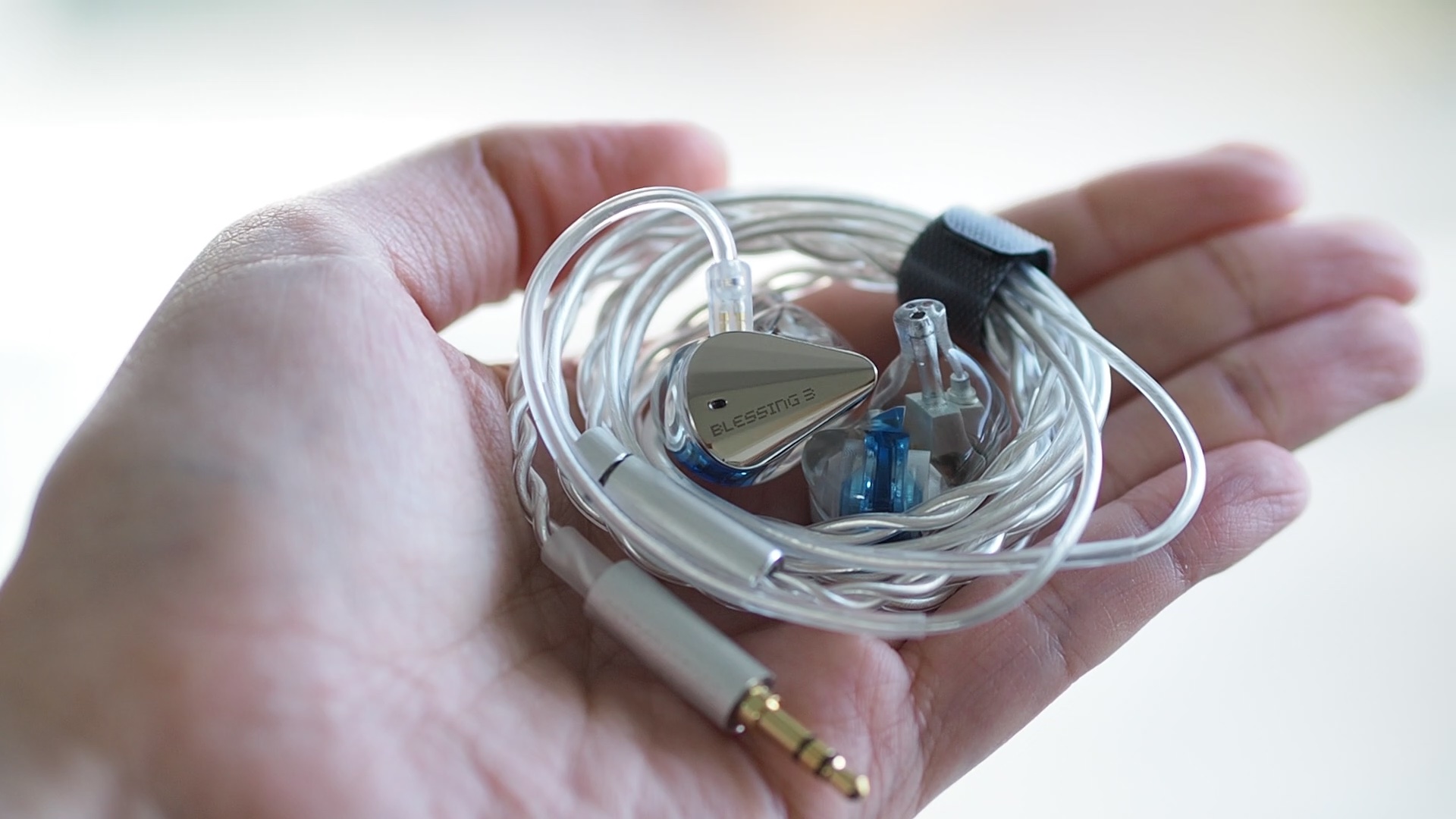
All of my listening was done with Spin Fit CP145 or W1 ear tips. I listen at a medium volume. I usually turn up the volume until the midrange is fully audible and detailed, unless a treble peak or overwhelming bass prevents me from doing so.

Accessories: Moondrop has made improvements to the packaging and unboxing experience of the Blessing 3, giving it a more luxurious feel. The contents of the box, however, remain the same as the previous generation.
Inside the box, you’ll find a custom carrying case that has the same shape and size as the one that came with the Blessing 2. However, the case now features custom prints and a nicer zipper. The box also includes six pairs of generic silicone ear tips, but there are no Spring Tips this time. It’s worth noting that Moondrop still includes an airplane adapter. Additionally, you’ll find a new cable and the earpieces themselves.
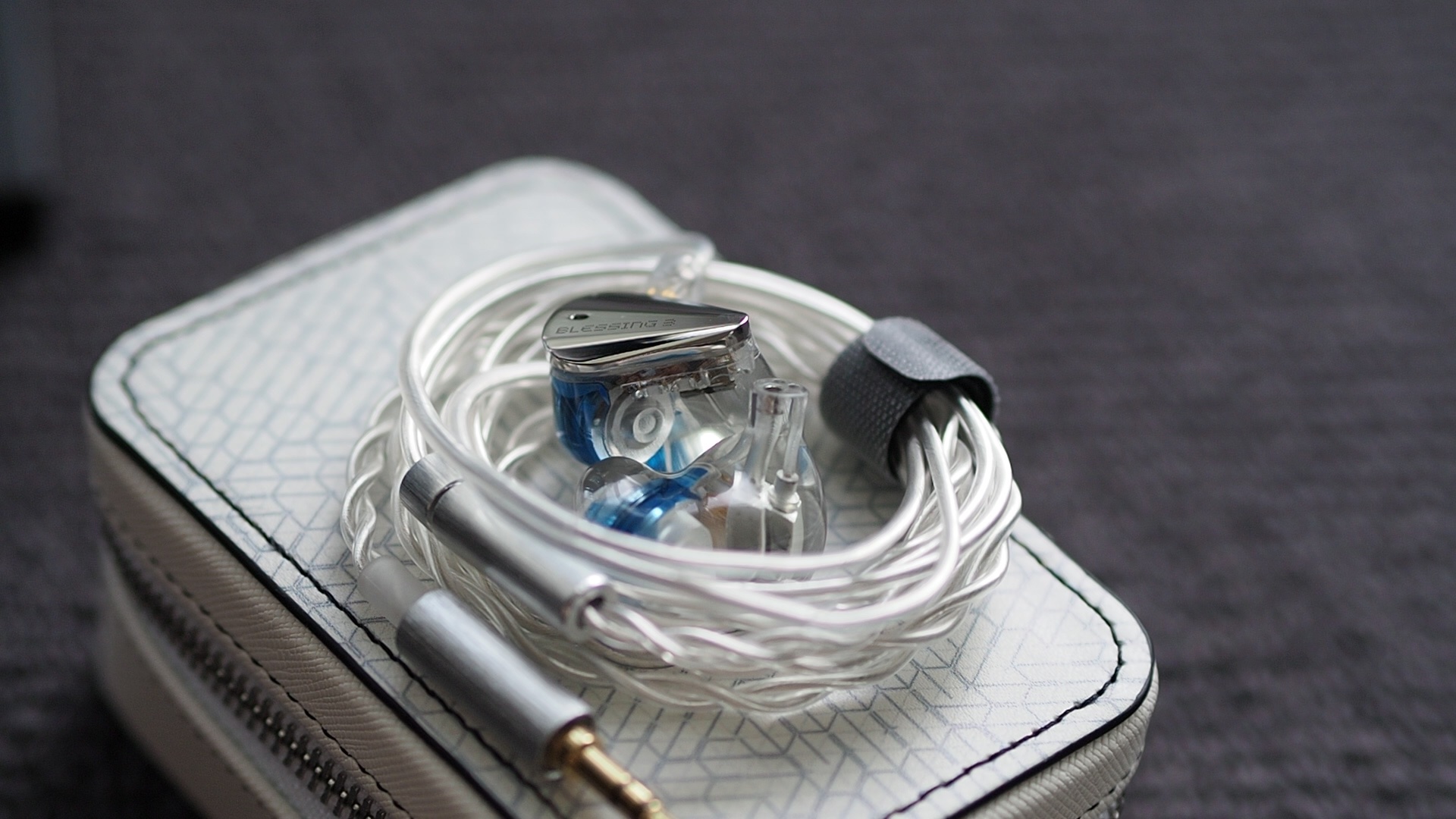
Stock cable: The stock cable of the Blessing 3 has only two cores. While it gets the job done, it doesn’t have a high-end look or feel. The cable tends to retain memory and curls upon itself when coiled and left in the case for a few days. Unfortunately, the cable splitter and plug have a brushed metal texture that doesn’t match the mirror finish of the metal face plates on the earpieces. The cable terminates with a 3.5mm single-ended plug, and there doesn’t seem to be an option for a 4.4mm balanced cable. This cable choice may have been made to keep the price of the Blessing 3 more affordable.
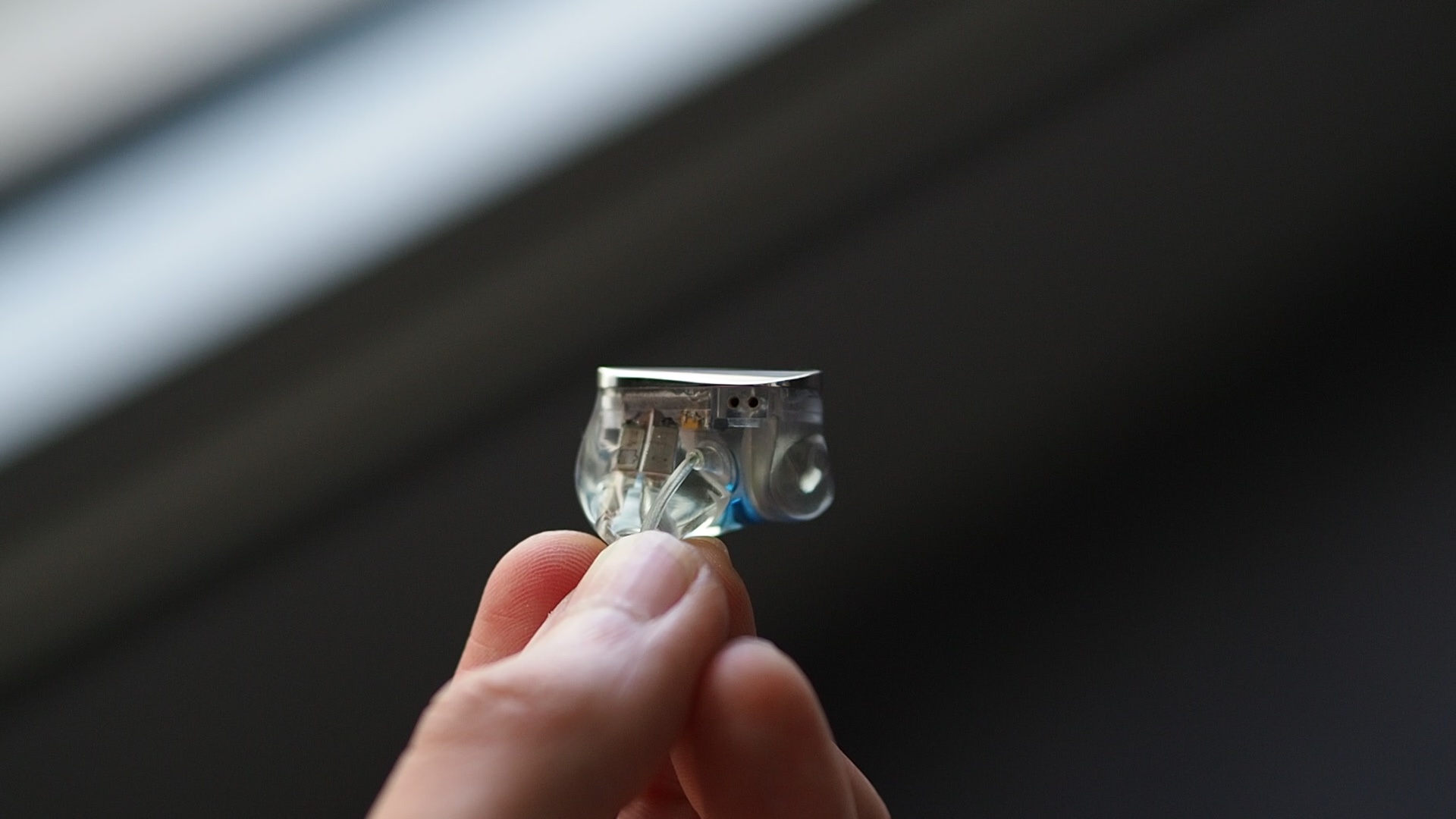
Earpieces: The earpieces of the Blessing 3 are very similar to those of the Blessing 2. They are 3D-printed and filled with resin, which gives them a dense and crystal-clear construction. The face plates are made of metal and have a mirror finish.
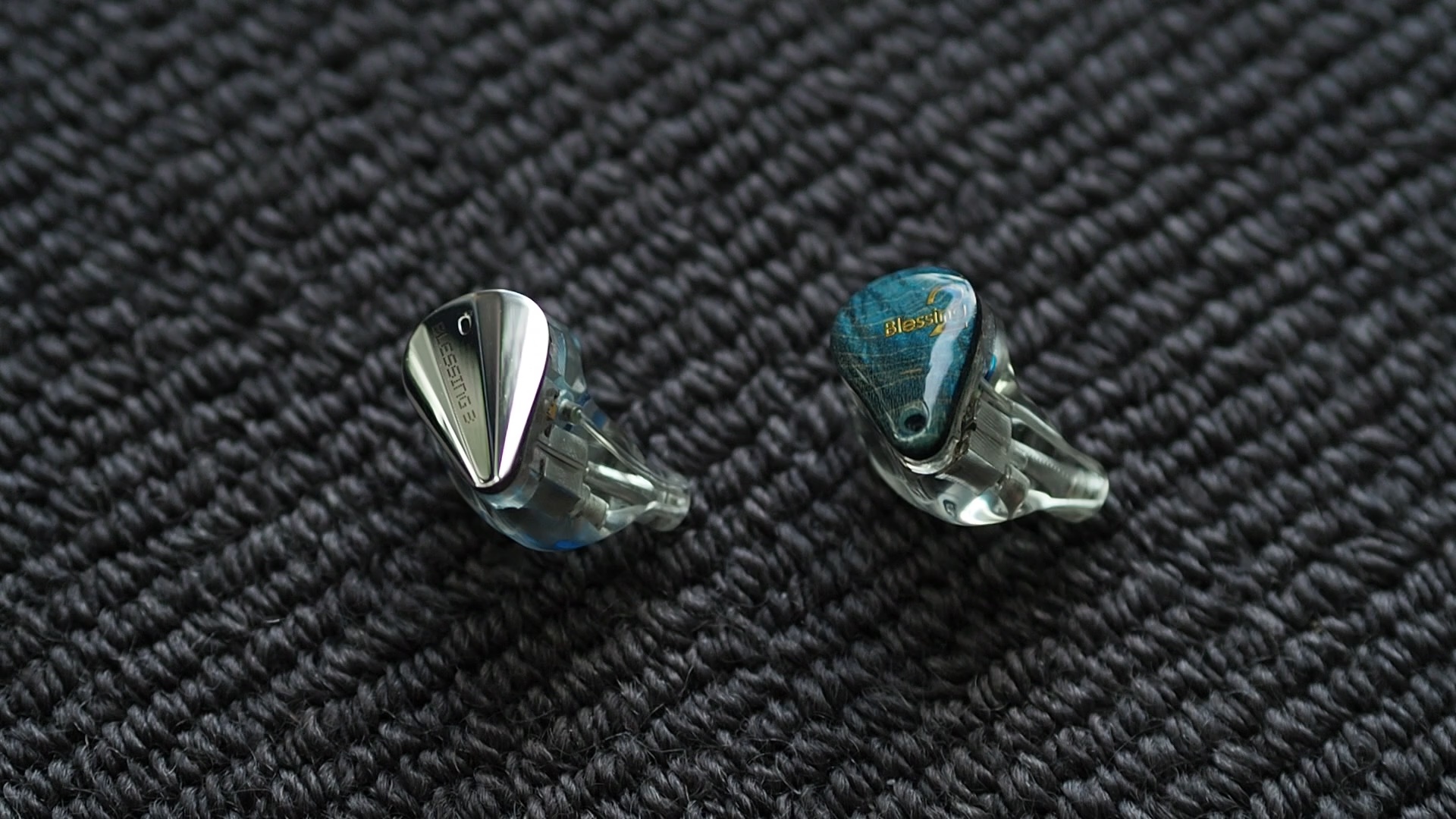
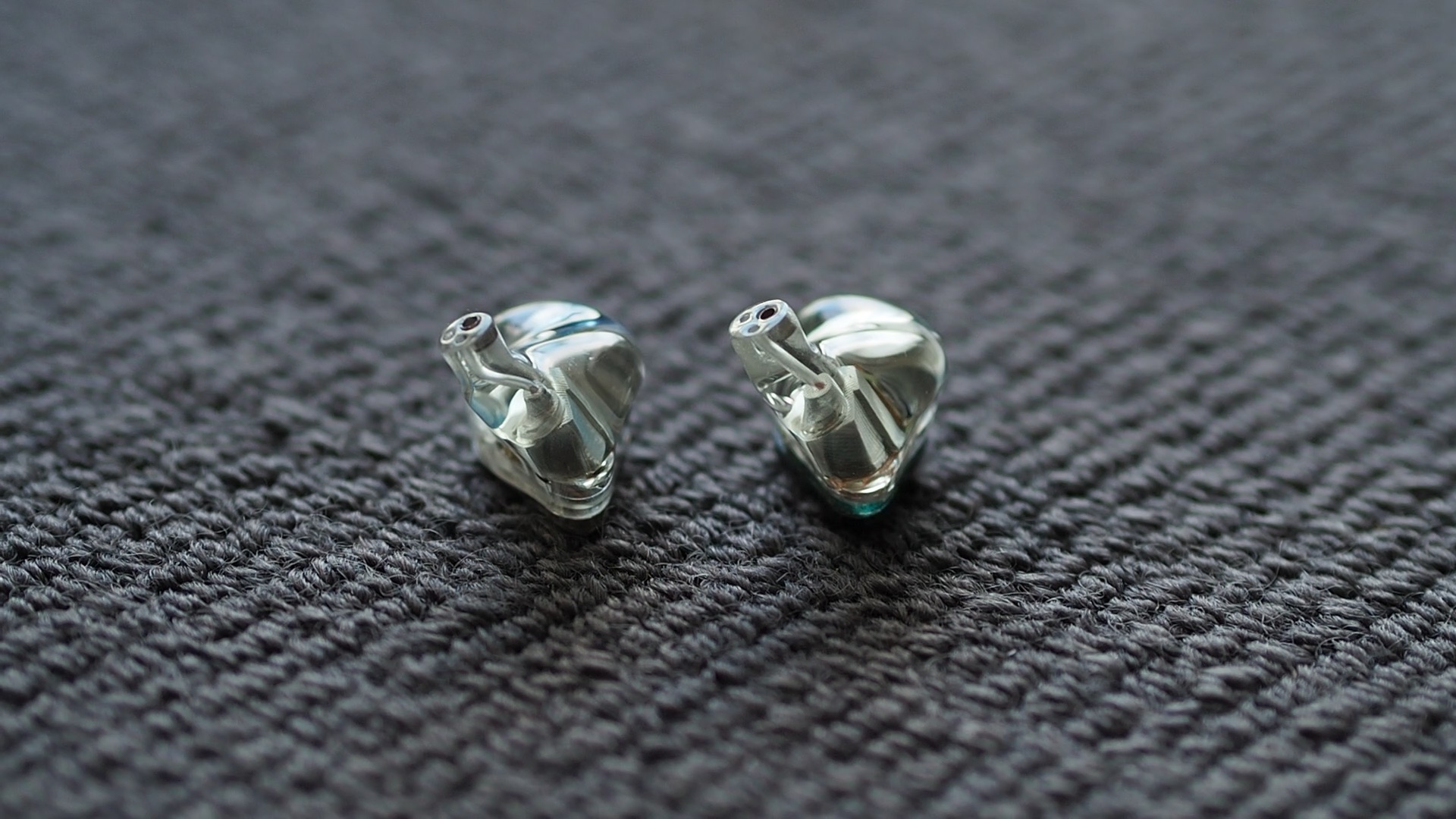
The most significant change in the Blessing 3 is the reduced size of the nozzles. They are no longer oversized like the ones on the Blessing 2, allowing you to use any ear tips you prefer. This change has also resolved the comfort issues that were present in the original Blessing 2. I found that I can wear the Blessing 3 for long listening sessions without experiencing ear pain or fatigue. The vents in the design prevent pressure build-up. The isolation provided by the Blessing 3 is average, comparable to other IEMs.
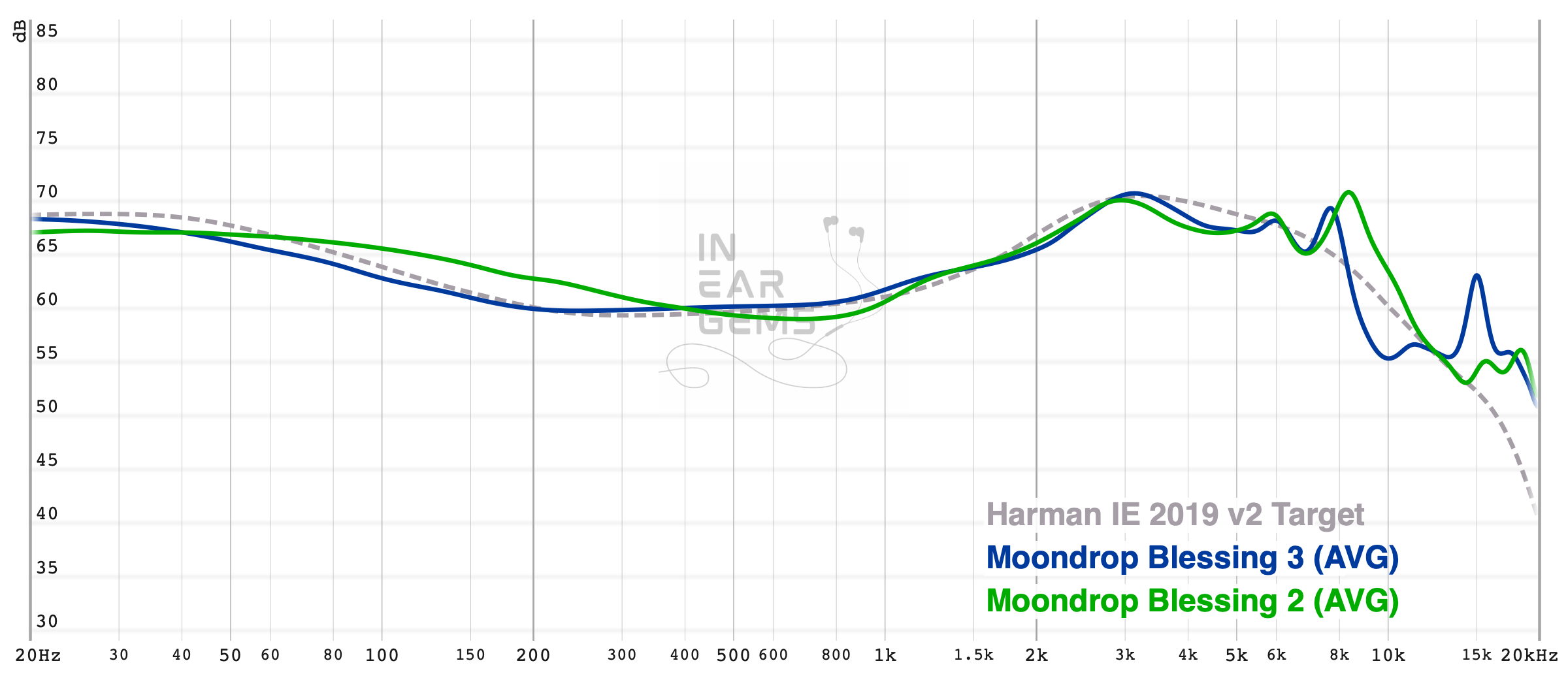
Tonality or “tuning” is where objectivity and subjectivity meet. Objectivity exists in the squiggly lines above, called Frequency Response (FR) graphs. They are created by sweeping a signal from 20Hz to 20kHz and measuring the corresponding loudness coming from an IEM. Unless a human operator deliberately tampers with the microphone or the data, FR does not care about the price or prestige of an IEM and, therefore, is “objective.”
However, human listeners are not microphones. Our ears and brain interpret the sound and decide whether it is “enjoyable.” It is also beneficial to remember that when you play a note on a musical instrument, multiple sounds (fundamental and harmonic) appear simultaneously and mix together. Achieving a life-like balance between frequencies and adding a tasteful amount of imbalance (“colouring the sound”) is the hallmark of an excellent tonality.
Sound signature: The sound signature of the Blessing 3 can be characterized as “crystal clear” and “snappy.” Each instrument stands out in the soundstage with well-defined boundaries and rich texture and detail. In terms of tonality, the Blessing 3 can be described as either “neutral” or “mid-centric,” depending on whether you prefer the midrange to be emphasized or balanced with the rest of the music. The bass is less prominent than the midrange but still present. Most of the bass energy is focused on the sub-bass region, providing a tactile sensation with drums, rather than a prominent auditory presence.
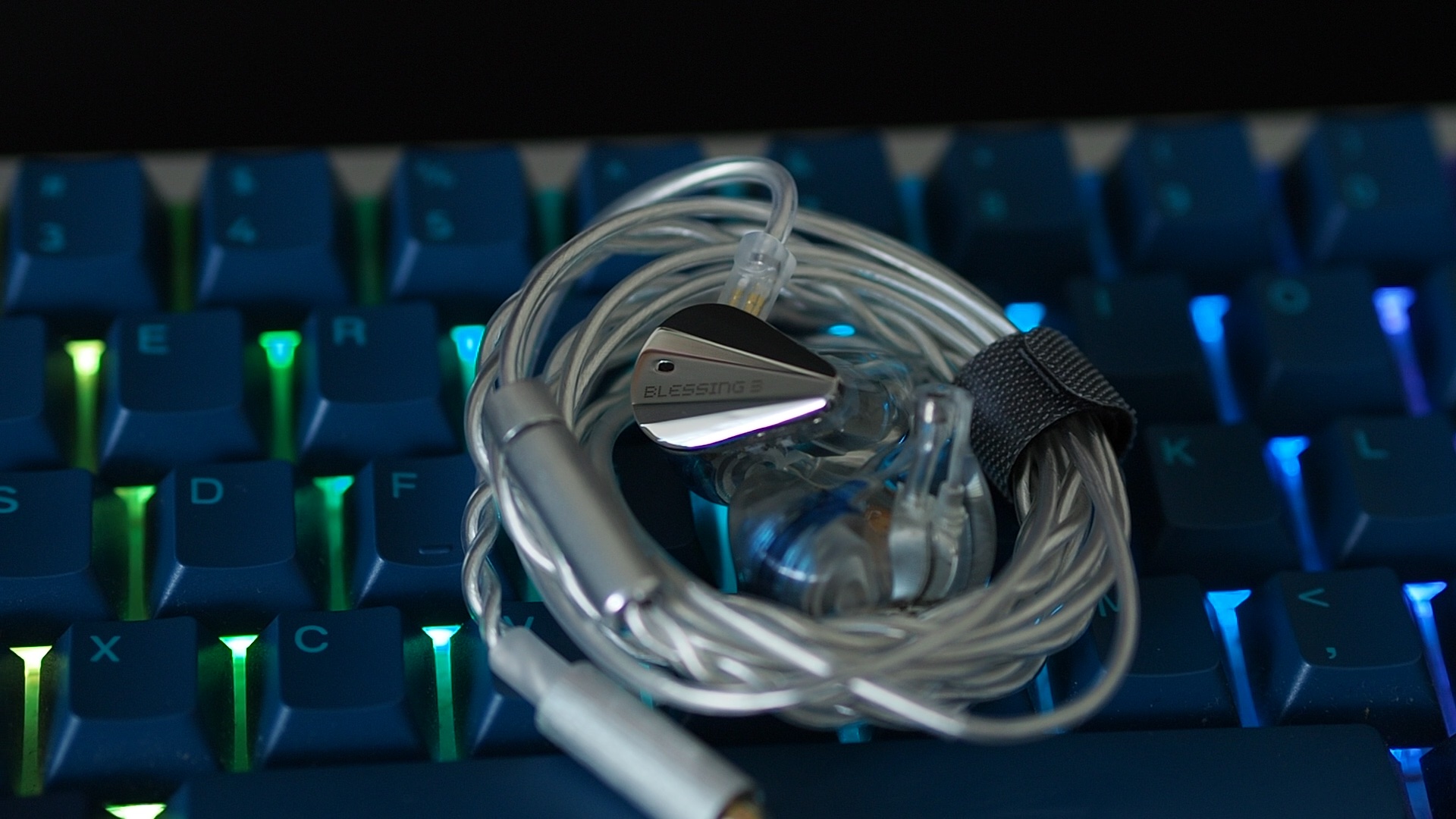
The midrange of the Blessing 3 emphasizes the upper midrange more than the lower midrange. While this tuning enhances perceived clarity, it can also make vocals and instruments sound thin, although the Blessing 3 manages to avoid sounding excessively thin or harsh in most cases. Surprisingly, the Blessing 3 does not exhibit excessive shoutiness despite this strong upper midrange emphasis.
The treble is less emphasized than the upper midrange, and instruments like cymbals and hi-hats are present without being harsh or piercing. The treble extension has been improved compared to the Blessing 2, allowing for better perception of ambience and reverberation in classical recordings.
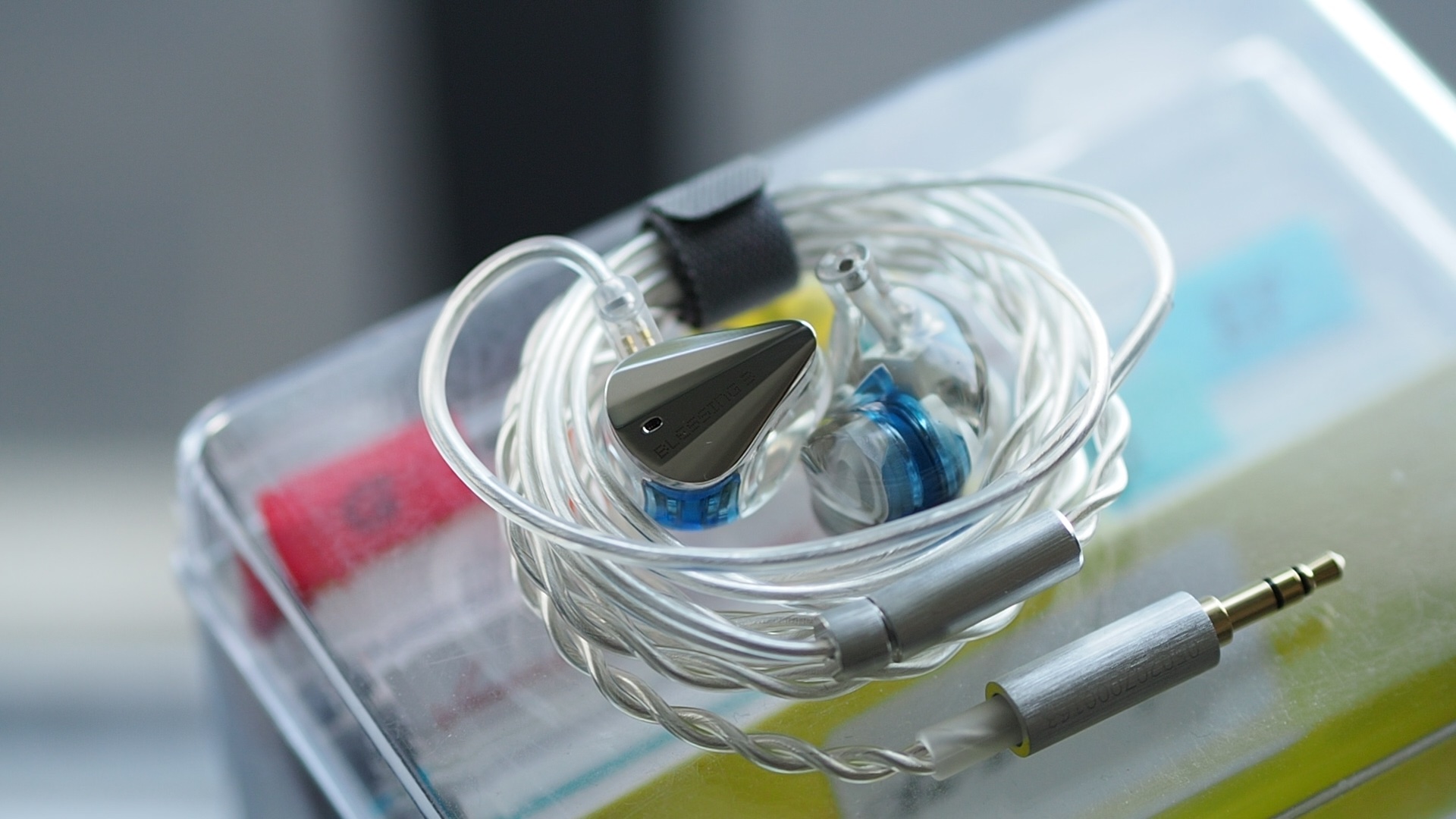
Female vocal (Rasputin cover by Aurora): The Blessing 3 renders female vocals with stunning clarity and detail. Aurora’s voice sounds sweet, crystal clear, and effortlessly detailed. Backup vocals are also smooth, detailed, and easy to follow, without any noticeable sibilance or harshness. Surprisingly, the expected shoutiness in vocals is not a significant issue with the Blessing 3.
Male vocal (Perfect Symphony by Ed Sheeran and Andrea Bocelli): However, the rendering of both Ed’s and Andrea’s voices on the Blessing 3 falls short of expectations. While their voices do not sound incorrect, they lack warmth and fullness. It often feels as if they sing with head voices rather than chest voices. I felt a constant desire to increase the volume to add fullness to the voices, but this leads to shoutiness and forces me to quickly reduce the volume.
Strings and orchestras (Winter by Freivogel and Voices of Music): The orchestral presentation of the Blessing 3 is excellent, with lifelike instrument reproduction. The timbres of instruments are accurate, allowing for easy distinction between violins and violas. While cellos and double basses lack some fullness and authority, the snappy nature of the Blessing 3 still allows these instruments to maintain the beat and sense of rhythm in the orchestra.

Drums and bass (Battle Bar): Compared to “true neutral” IEMs like the Etymotic ER2SE, the Blessing 3 renders drums and bass louder. However, due to the lesser emphasis on bass frequencies compared to the upper midrange, drums and bass guitars on the Blessing 3 are quieter than “U-shaped” IEMs such as the 64 Audio U12T. The physical sensation of drums and bass is excellent with the Blessing 3, despite not being overwhelmingly loud. The bass notes have sharp attacks and are accompanied by a tactile physical sensation. The decay of the bass notes is relatively quick, enhancing the snappy presentation of the Blessing 3. If you prefer nimble and clean bass without sacrificing the physical sensation, you’ll appreciate the Blessing 3’s bass. However, if you prefer thick, powerful, and chunky bass, the Blessing 3’s bass may not meet your expectations.
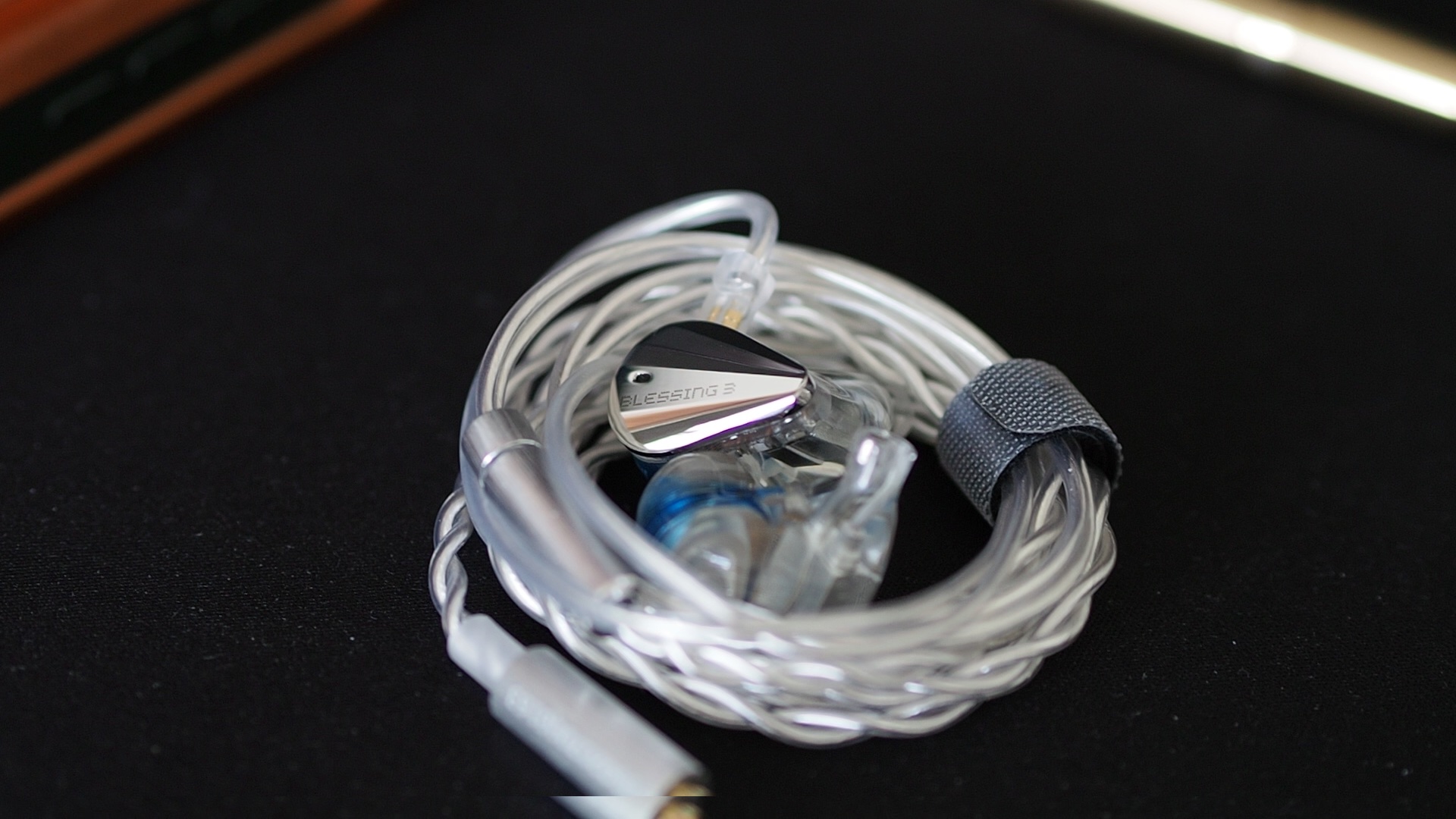
Cymbals, hi-hats, chimes (Eye of the Tiger by Survivor): Cymbals and hi-hats are present and easy to follow, without being edgy or harsh. The note attacks of these instruments are snappy and crisp, while the decay is appropriately tapered. The Blessing 3 provides a good level of of detail and texture in the cymbals and hi-hats.

Stereo imaging or “soundstage” is a psychoacoustic illusion that different recording elements appear at various locations inside and around your head. Your brain creates based on the cues in the recording, which are enhanced or diminushed by your IEMs, your DAC, and your amplifier. Some IEMs present a wide but flat soundstage. Some present a “3D” soundstage with layering, depth, and height. In rare cases, with some specific songs, some IEMs can trick you into thinking that the sound comes from the environment (a.k.a., “holographic”)
Soundstage imaging with music (One Winged Angel by the Danish National Symphony Orchestra): The soundstage of the Blessing 3 offers a sense of openness and spaciousness, but also feeling forward and in-your-face. It has a wide and tall overall shape, but lacks depth. The center of the soundstage remains within the listener’s head, but it can extend slightly beyond the earpieces, particularly when instruments are pushed to the side channels in recordings. Instruments may also appear at different heights on the soundstage, with higher-pitched instruments often positioned higher. The placement of instruments is precise, with clear boundaries and separation.
The main weakness of the Blessing 3’s soundstage is its lack of depth and layering. Instruments tend to appear on a flat plane rather than within a 3D sphere of sound around the head. Even when some instruments sounding louder, the Blessing 3 doesn’t create a convincing illusion of proximity or closeness. However, thanks to its width, height, and accurate imaging, the Blessing 3 generally avoids sounding congested, except when the music becomes complex and dense.
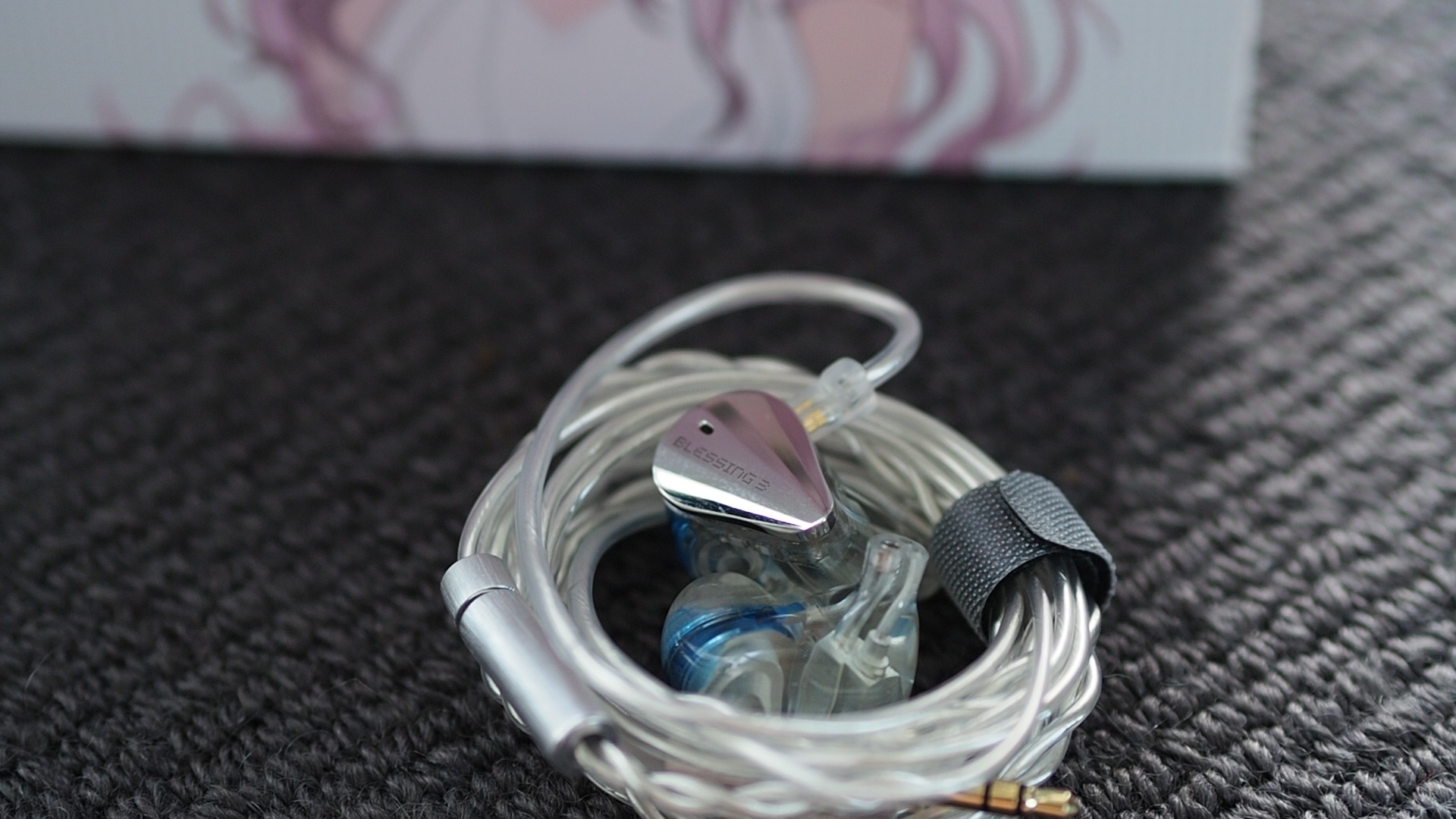
Soundstage imaging with games (CS GO Gameplay by Throneful): The Blessing 3’s flat and wide soundstage is particularly noticeable when used for FPS games like CS GO. It allows for easy recognition of the direction and, to some extent, the distance of gunshots and footsteps coming from the sides and back. However, determining the distance of sounds coming from the front can be challenging.

Resolution is a fascinating subject due to the difficulty of pinning down what it really is. To me, “resolution” can be broken down into three components:
Clarity and Separation (One Winged Angel by the Danish National Symphony Orchestra): The Blessing 3 showcases crisp note attacks, resulting in a clear and well-separated presentation of the music. However, during dense sections of the test track, such as around 3:25, where multiple instruments play loudly and overlap, the sense of clarity is somewhat diminished. In these busier parts, the Blessing 3 tends to present the music as a “wall of sound,” making it more challenging to discern individual instruments.
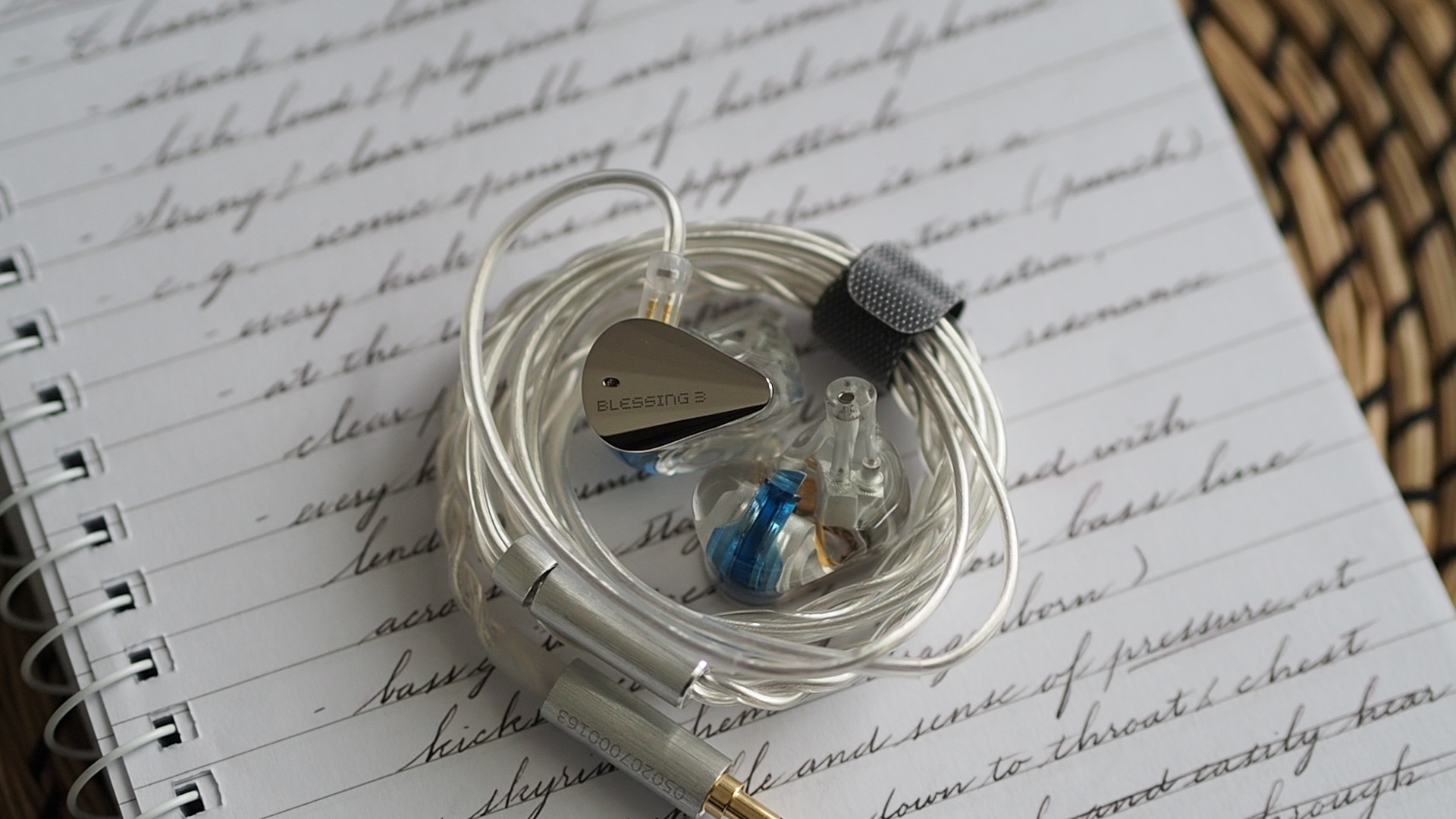
Detail retrieval (Paganini Caprice 24 by Daniel Lozakovich):The Blessing 3 excels at extracting micro details without introducing harshness or piercing highs. It allows for the discernment of articulations when the bow interacts with the violin strings. Furthermore, it reveals the faint tapping of fingers against the fingerboard and the subtle ringing sound produced by other strings in contact with the finger. Additionally, the Blessing 3 also does a great job at capturing the room reverberation, creating a sense of spaciousness and ambience.
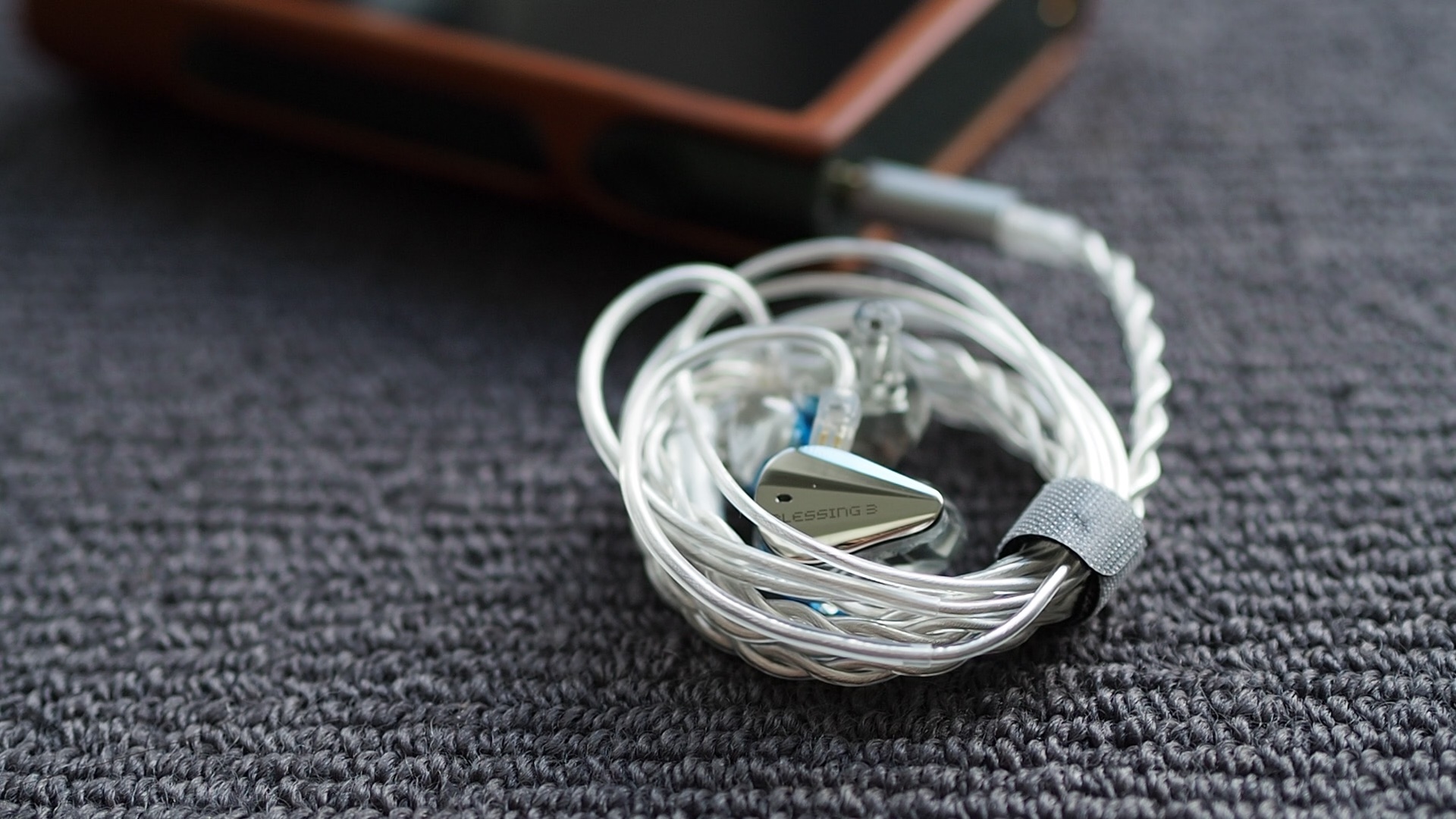
Average dongle (Hidizs XO): When using the Hidizs XO dongle, the soundstage of the Blessing 3 becomes noticeably narrower and shallower compared to when it is paired with the reference setup. The dynamic contrast and the sharpness of the bass attack are also reduced, resulting in a less lively presentation compared to the snappy experience achieved with the reference setup. While the Blessing 3 still sounds decent with this pairing, it lacks engagement and falls into a more ordinary territory.
Apple dongle: With the Apple dongle, the note attacks of the Blessing 3 are softer compared to when using the other dongle, leading to a more natural but slightly less refined presentation. The dynamic constrast and the tactile response of the bass remain mostly the same with the dongle DAC and slightly behind the reference setup. While I wouldn’t say that the Blessing 3 sounds outright bad with either of these sources, I do believe that it benefits from better source setups.
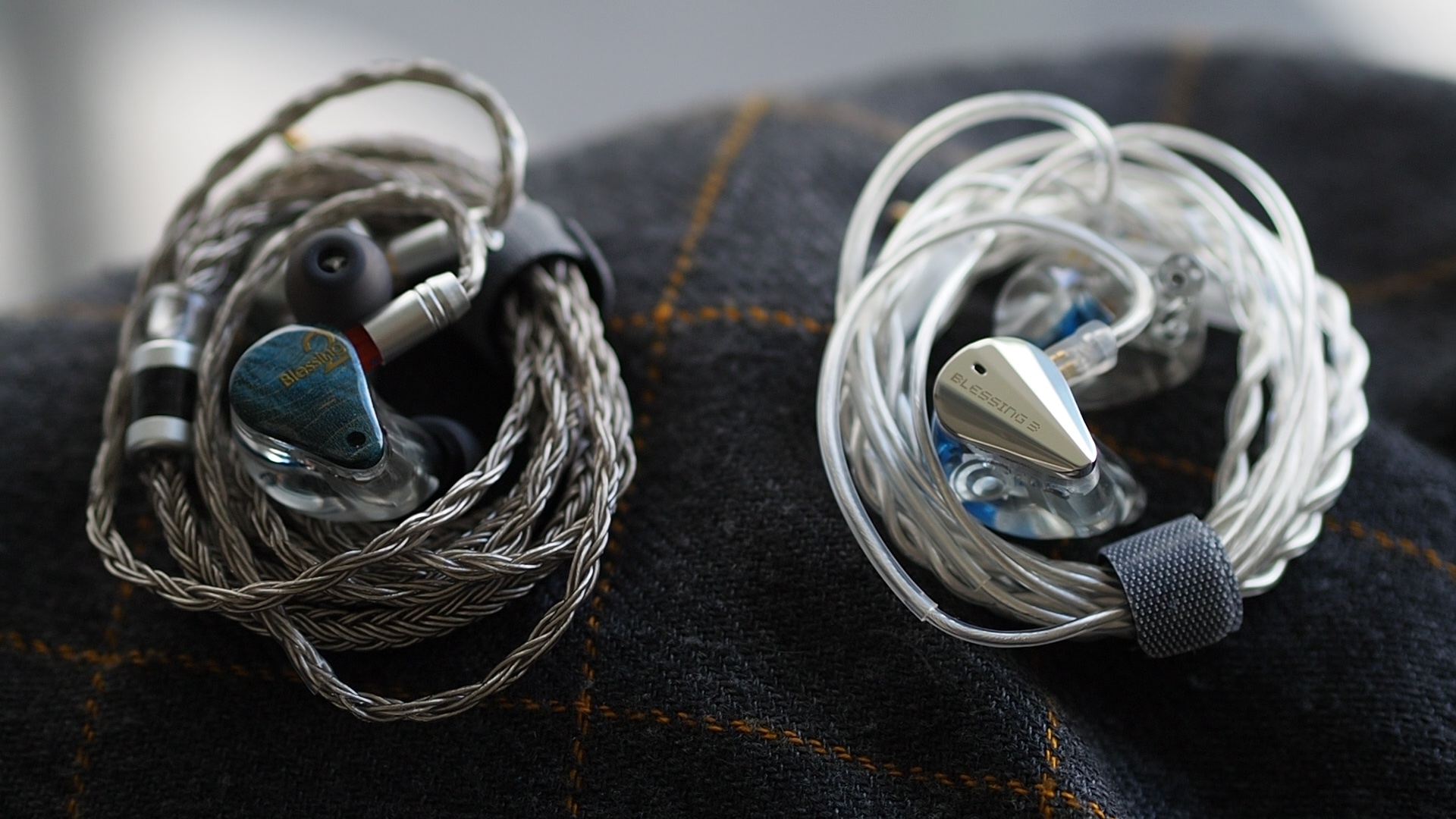
Tonality: 4/5 - Good.
Blessing 3 is the embodiment of the “scientifically-tuned” IEM and can be polarizing depending on personal preference. It is appreciated for female-vocal-centric music but may not be as enjoyable for male vocals and orchestral music. Overall, the tonality is considered good and would impress casual listeners and beginners in the mid-fi IEM market.
Percussion Rendering: Aria (3/5) < Blessing 2 (4/5) < Blessing 3 (4.5/5) < U12T / E5000 (5/5)
The bass quality of the Blessing 3 is significantly improved compared to its predecessor, the Blessing 2. It offers crisp, snappy, and tactile drums and bass guitars, unlike the slower and duller presentation of the Blessing 2. Thanks to the snappy presentation of the bass, the Blessing 3 provides coherency and blends the bass well with the rest of the frequencies. While it shares similarities with the U12T in terms of snappy attacks, the U12T offers a more natural bass decay. Another challenge of Blessing 2 is that its dynamic presentation may vary with different setups, whilst U12T does not change much.
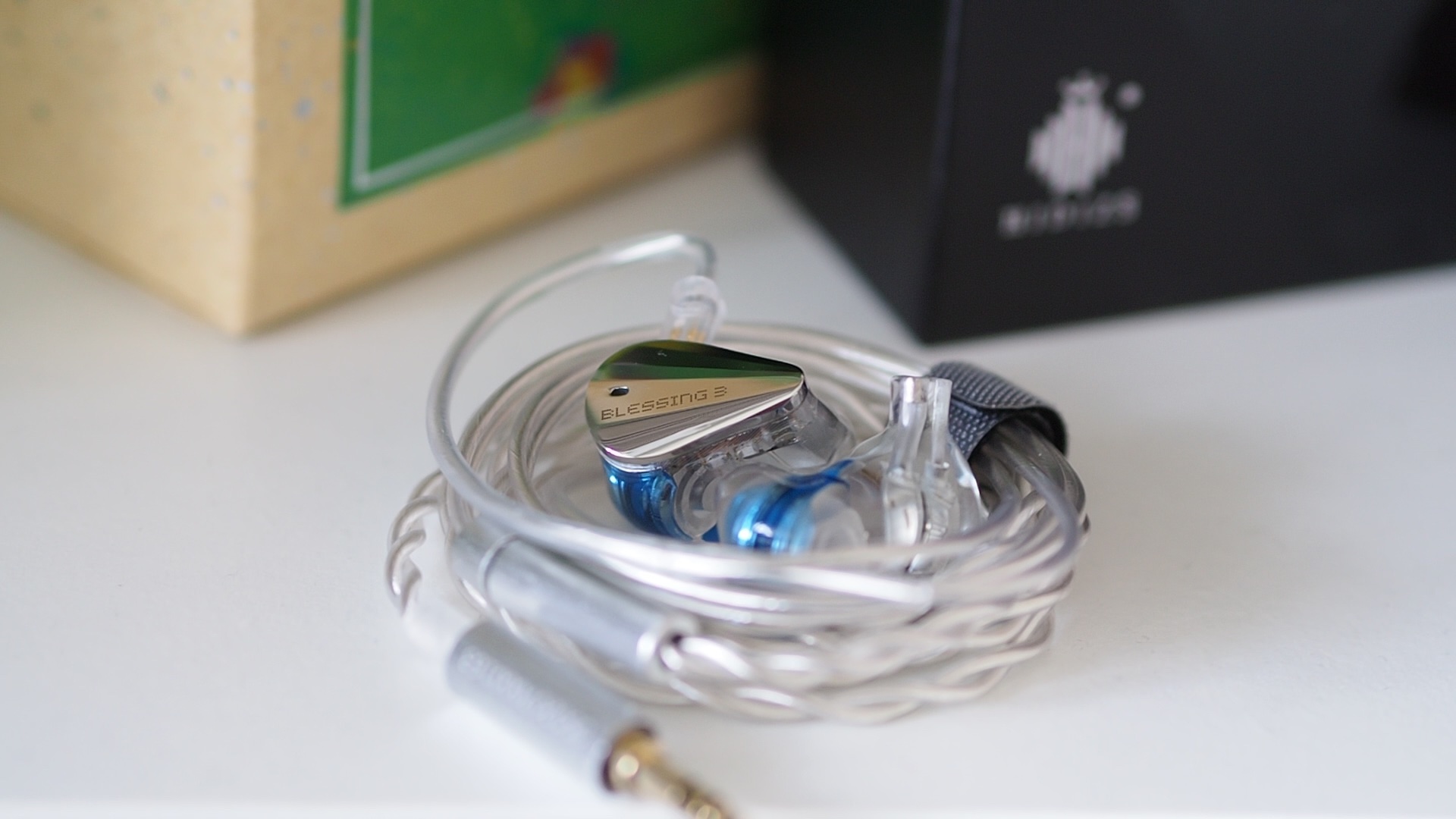
Resolution: SE215 (3/5) < Blessing 2 (4/5) <= Blessing 3 (4/5) < Andromeda 2020 (4.5/5) < U12T (5/5)
The resolution of the Blessing 3 is enhanced compared to the Blessing 2, resulting in clearer and better-defined instruments. The improved resolution does not introduce harshness to the sound. Although it performs well, the Blessing 3 still falls slightly behind entry-level top-of-the-line (TOTL) IEMs like the Andromeda 2020. When switching from Blessing 3 to Andromeda, I immediately found that it was easier to track individual instruments in an orchestra, and those instruments have more nuances and details.

Soundstage: SE215 (3/5) < Blessing 2 (4/5) = Blessing 3 (4/5) < Andromeda 2020 (5/5)
The Blessing 3 maintains a wide but flat soundstage similar to its predecessor. While it works effectively, it lacks the 3D or “holographic” illusion that some higher-end IEMs offer.

After focusing on budget releases and headphones, Moondrop has made a strong comeback with the Blessing 3, their latest mid-fi IEM offering. The Blessing 3 refines and enhances all the positive aspects of its predecessor, the Blessing 2. It also resolves the bass quality issue that was present in the Blessing 2. Additionally, the Blessing 3 addresses the fit problem by reducing the size of the nozzles, resulting in a comfortable IEM that can be worn for extended periods without discomfort.
Who should consider these IEMs? If you prefer a thick and weighty sound with a 3D holographic soundstage, or if you dislike the “well-tuned” signature, the Blessing 3 may not be the best option for you. If you didn’t like Blessing 2 (like myself), Blessing 3 wouldn’t change your opnion. However, if you appreciate “well-tuned” signatures based on Harman target or Moondrop’s VDSF, you will likely love the Blessing 3. It is an excellent choice for those who enjoy female vocals. If you were a fan of the Blessing 2 and want to enhance the overall clarity of the sound without stepping up to a higher price range, the Blessing 3 could be a worthwhile upgrade.
Pros:
However, it has been three years since Blessing 2’s release, and the IEM market evolves rapidly. In this dynamic landscape, three years can feel like an eternity. Moondrop now presents the new Blessing 3. The question is, does it live up to the legacy of its predecessor?

ForewordsPermalink
- What I look for in an IEM is immersion. I want to feel the orchestra around me, track individual instruments, and hear all of their textures and details. I’m not picky about tonality, as long as it does not get in the way of immersion.
- I rate IEMs within with a consistent scale from 1 (poor) to 3 (Adequate) to 5 (outstanding). Ratings are assigned by A/B tests against benchmark IEMs, regardless of the retail price.
- Ranking list and measurement database are on my IEM review blog.
- This review is possible thanks to the generosity of @lycos who lent me his personal unit (Thank you!).
- Reference Chain: iPad -> Creative SXFI -> Topping G5 (for all A/B tests)
- Portable Setup: Shanling M6 Ultra
- Dongle: FiiO KA3
All of my listening was done with Spin Fit CP145 or W1 ear tips. I listen at a medium volume. I usually turn up the volume until the midrange is fully audible and detailed, unless a treble peak or overwhelming bass prevents me from doing so.
Specs
- Driver: 2DD + 4BA
- Connector Type: 2 pin
- Impedance: 14.8ohm
- Sensitivity: 101.7 dB/mW SPL
Build and Comfort

Accessories: Moondrop has made improvements to the packaging and unboxing experience of the Blessing 3, giving it a more luxurious feel. The contents of the box, however, remain the same as the previous generation.
Inside the box, you’ll find a custom carrying case that has the same shape and size as the one that came with the Blessing 2. However, the case now features custom prints and a nicer zipper. The box also includes six pairs of generic silicone ear tips, but there are no Spring Tips this time. It’s worth noting that Moondrop still includes an airplane adapter. Additionally, you’ll find a new cable and the earpieces themselves.

Stock cable: The stock cable of the Blessing 3 has only two cores. While it gets the job done, it doesn’t have a high-end look or feel. The cable tends to retain memory and curls upon itself when coiled and left in the case for a few days. Unfortunately, the cable splitter and plug have a brushed metal texture that doesn’t match the mirror finish of the metal face plates on the earpieces. The cable terminates with a 3.5mm single-ended plug, and there doesn’t seem to be an option for a 4.4mm balanced cable. This cable choice may have been made to keep the price of the Blessing 3 more affordable.

Earpieces: The earpieces of the Blessing 3 are very similar to those of the Blessing 2. They are 3D-printed and filled with resin, which gives them a dense and crystal-clear construction. The face plates are made of metal and have a mirror finish.


The most significant change in the Blessing 3 is the reduced size of the nozzles. They are no longer oversized like the ones on the Blessing 2, allowing you to use any ear tips you prefer. This change has also resolved the comfort issues that were present in the original Blessing 2. I found that I can wear the Blessing 3 for long listening sessions without experiencing ear pain or fatigue. The vents in the design prevent pressure build-up. The isolation provided by the Blessing 3 is average, comparable to other IEMs.
Tonality
Frequency response of Blessing 3 against the Blessing 2. Measurements were done with an IEC-711-compliant coupler and might only be compared with other measurements from this same coupler. Visit my graph database for more comparisons.
Tonality or “tuning” is where objectivity and subjectivity meet. Objectivity exists in the squiggly lines above, called Frequency Response (FR) graphs. They are created by sweeping a signal from 20Hz to 20kHz and measuring the corresponding loudness coming from an IEM. Unless a human operator deliberately tampers with the microphone or the data, FR does not care about the price or prestige of an IEM and, therefore, is “objective.”
However, human listeners are not microphones. Our ears and brain interpret the sound and decide whether it is “enjoyable.” It is also beneficial to remember that when you play a note on a musical instrument, multiple sounds (fundamental and harmonic) appear simultaneously and mix together. Achieving a life-like balance between frequencies and adding a tasteful amount of imbalance (“colouring the sound”) is the hallmark of an excellent tonality.
Sound signature: The sound signature of the Blessing 3 can be characterized as “crystal clear” and “snappy.” Each instrument stands out in the soundstage with well-defined boundaries and rich texture and detail. In terms of tonality, the Blessing 3 can be described as either “neutral” or “mid-centric,” depending on whether you prefer the midrange to be emphasized or balanced with the rest of the music. The bass is less prominent than the midrange but still present. Most of the bass energy is focused on the sub-bass region, providing a tactile sensation with drums, rather than a prominent auditory presence.

The midrange of the Blessing 3 emphasizes the upper midrange more than the lower midrange. While this tuning enhances perceived clarity, it can also make vocals and instruments sound thin, although the Blessing 3 manages to avoid sounding excessively thin or harsh in most cases. Surprisingly, the Blessing 3 does not exhibit excessive shoutiness despite this strong upper midrange emphasis.
The treble is less emphasized than the upper midrange, and instruments like cymbals and hi-hats are present without being harsh or piercing. The treble extension has been improved compared to the Blessing 2, allowing for better perception of ambience and reverberation in classical recordings.

Female vocal (Rasputin cover by Aurora): The Blessing 3 renders female vocals with stunning clarity and detail. Aurora’s voice sounds sweet, crystal clear, and effortlessly detailed. Backup vocals are also smooth, detailed, and easy to follow, without any noticeable sibilance or harshness. Surprisingly, the expected shoutiness in vocals is not a significant issue with the Blessing 3.
Male vocal (Perfect Symphony by Ed Sheeran and Andrea Bocelli): However, the rendering of both Ed’s and Andrea’s voices on the Blessing 3 falls short of expectations. While their voices do not sound incorrect, they lack warmth and fullness. It often feels as if they sing with head voices rather than chest voices. I felt a constant desire to increase the volume to add fullness to the voices, but this leads to shoutiness and forces me to quickly reduce the volume.
Strings and orchestras (Winter by Freivogel and Voices of Music): The orchestral presentation of the Blessing 3 is excellent, with lifelike instrument reproduction. The timbres of instruments are accurate, allowing for easy distinction between violins and violas. While cellos and double basses lack some fullness and authority, the snappy nature of the Blessing 3 still allows these instruments to maintain the beat and sense of rhythm in the orchestra.

Drums and bass (Battle Bar): Compared to “true neutral” IEMs like the Etymotic ER2SE, the Blessing 3 renders drums and bass louder. However, due to the lesser emphasis on bass frequencies compared to the upper midrange, drums and bass guitars on the Blessing 3 are quieter than “U-shaped” IEMs such as the 64 Audio U12T. The physical sensation of drums and bass is excellent with the Blessing 3, despite not being overwhelmingly loud. The bass notes have sharp attacks and are accompanied by a tactile physical sensation. The decay of the bass notes is relatively quick, enhancing the snappy presentation of the Blessing 3. If you prefer nimble and clean bass without sacrificing the physical sensation, you’ll appreciate the Blessing 3’s bass. However, if you prefer thick, powerful, and chunky bass, the Blessing 3’s bass may not meet your expectations.

Cymbals, hi-hats, chimes (Eye of the Tiger by Survivor): Cymbals and hi-hats are present and easy to follow, without being edgy or harsh. The note attacks of these instruments are snappy and crisp, while the decay is appropriately tapered. The Blessing 3 provides a good level of of detail and texture in the cymbals and hi-hats.
Soundstage Imaging

Stereo imaging or “soundstage” is a psychoacoustic illusion that different recording elements appear at various locations inside and around your head. Your brain creates based on the cues in the recording, which are enhanced or diminushed by your IEMs, your DAC, and your amplifier. Some IEMs present a wide but flat soundstage. Some present a “3D” soundstage with layering, depth, and height. In rare cases, with some specific songs, some IEMs can trick you into thinking that the sound comes from the environment (a.k.a., “holographic”)
Soundstage imaging with music (One Winged Angel by the Danish National Symphony Orchestra): The soundstage of the Blessing 3 offers a sense of openness and spaciousness, but also feeling forward and in-your-face. It has a wide and tall overall shape, but lacks depth. The center of the soundstage remains within the listener’s head, but it can extend slightly beyond the earpieces, particularly when instruments are pushed to the side channels in recordings. Instruments may also appear at different heights on the soundstage, with higher-pitched instruments often positioned higher. The placement of instruments is precise, with clear boundaries and separation.
The main weakness of the Blessing 3’s soundstage is its lack of depth and layering. Instruments tend to appear on a flat plane rather than within a 3D sphere of sound around the head. Even when some instruments sounding louder, the Blessing 3 doesn’t create a convincing illusion of proximity or closeness. However, thanks to its width, height, and accurate imaging, the Blessing 3 generally avoids sounding congested, except when the music becomes complex and dense.

Soundstage imaging with games (CS GO Gameplay by Throneful): The Blessing 3’s flat and wide soundstage is particularly noticeable when used for FPS games like CS GO. It allows for easy recognition of the direction and, to some extent, the distance of gunshots and footsteps coming from the sides and back. However, determining the distance of sounds coming from the front can be challenging.
Resolution

Resolution is a fascinating subject due to the difficulty of pinning down what it really is. To me, “resolution” can be broken down into three components:
- Sharpness, incisiveness, or “definition” of note attacks (see the figure above).
- The separation of instruments and vocals, especially when they overlap on the soundstage.
- The texture and details in the decay side of the notes.
Clarity and Separation (One Winged Angel by the Danish National Symphony Orchestra): The Blessing 3 showcases crisp note attacks, resulting in a clear and well-separated presentation of the music. However, during dense sections of the test track, such as around 3:25, where multiple instruments play loudly and overlap, the sense of clarity is somewhat diminished. In these busier parts, the Blessing 3 tends to present the music as a “wall of sound,” making it more challenging to discern individual instruments.

Detail retrieval (Paganini Caprice 24 by Daniel Lozakovich):The Blessing 3 excels at extracting micro details without introducing harshness or piercing highs. It allows for the discernment of articulations when the bow interacts with the violin strings. Furthermore, it reveals the faint tapping of fingers against the fingerboard and the subtle ringing sound produced by other strings in contact with the finger. Additionally, the Blessing 3 also does a great job at capturing the room reverberation, creating a sense of spaciousness and ambience.
Source Pairing

Average dongle (Hidizs XO): When using the Hidizs XO dongle, the soundstage of the Blessing 3 becomes noticeably narrower and shallower compared to when it is paired with the reference setup. The dynamic contrast and the sharpness of the bass attack are also reduced, resulting in a less lively presentation compared to the snappy experience achieved with the reference setup. While the Blessing 3 still sounds decent with this pairing, it lacks engagement and falls into a more ordinary territory.
Apple dongle: With the Apple dongle, the note attacks of the Blessing 3 are softer compared to when using the other dongle, leading to a more natural but slightly less refined presentation. The dynamic constrast and the tactile response of the bass remain mostly the same with the dongle DAC and slightly behind the reference setup. While I wouldn’t say that the Blessing 3 sounds outright bad with either of these sources, I do believe that it benefits from better source setups.
Comparison and Rating

Tonality: 4/5 - Good.
Blessing 3 is the embodiment of the “scientifically-tuned” IEM and can be polarizing depending on personal preference. It is appreciated for female-vocal-centric music but may not be as enjoyable for male vocals and orchestral music. Overall, the tonality is considered good and would impress casual listeners and beginners in the mid-fi IEM market.
Percussion Rendering: Aria (3/5) < Blessing 2 (4/5) < Blessing 3 (4.5/5) < U12T / E5000 (5/5)
The bass quality of the Blessing 3 is significantly improved compared to its predecessor, the Blessing 2. It offers crisp, snappy, and tactile drums and bass guitars, unlike the slower and duller presentation of the Blessing 2. Thanks to the snappy presentation of the bass, the Blessing 3 provides coherency and blends the bass well with the rest of the frequencies. While it shares similarities with the U12T in terms of snappy attacks, the U12T offers a more natural bass decay. Another challenge of Blessing 2 is that its dynamic presentation may vary with different setups, whilst U12T does not change much.

Resolution: SE215 (3/5) < Blessing 2 (4/5) <= Blessing 3 (4/5) < Andromeda 2020 (4.5/5) < U12T (5/5)
The resolution of the Blessing 3 is enhanced compared to the Blessing 2, resulting in clearer and better-defined instruments. The improved resolution does not introduce harshness to the sound. Although it performs well, the Blessing 3 still falls slightly behind entry-level top-of-the-line (TOTL) IEMs like the Andromeda 2020. When switching from Blessing 3 to Andromeda, I immediately found that it was easier to track individual instruments in an orchestra, and those instruments have more nuances and details.

Soundstage: SE215 (3/5) < Blessing 2 (4/5) = Blessing 3 (4/5) < Andromeda 2020 (5/5)
The Blessing 3 maintains a wide but flat soundstage similar to its predecessor. While it works effectively, it lacks the 3D or “holographic” illusion that some higher-end IEMs offer.
Conclusion

After focusing on budget releases and headphones, Moondrop has made a strong comeback with the Blessing 3, their latest mid-fi IEM offering. The Blessing 3 refines and enhances all the positive aspects of its predecessor, the Blessing 2. It also resolves the bass quality issue that was present in the Blessing 2. Additionally, the Blessing 3 addresses the fit problem by reducing the size of the nozzles, resulting in a comfortable IEM that can be worn for extended periods without discomfort.
Who should consider these IEMs? If you prefer a thick and weighty sound with a 3D holographic soundstage, or if you dislike the “well-tuned” signature, the Blessing 3 may not be the best option for you. If you didn’t like Blessing 2 (like myself), Blessing 3 wouldn’t change your opnion. However, if you appreciate “well-tuned” signatures based on Harman target or Moondrop’s VDSF, you will likely love the Blessing 3. It is an excellent choice for those who enjoy female vocals. If you were a fan of the Blessing 2 and want to enhance the overall clarity of the sound without stepping up to a higher price range, the Blessing 3 could be a worthwhile upgrade.
Pros:
- Neutral, mid-centric tonality
- Clear and clean midrange
- Balanced treble that avoids harshness
- Responsive and tactile bass
- Comfortable fit
- Flat soundstage
- Lack of authority and weight in male vocals
- Requires good amping
Leonarfd
Greta review. Even if the sound of the Blessing 3 is not for me, the design alone is stunning.
o0genesis0o
Headphoneus Supremus
Pros: + Excellent resolution and detail retrieval
+ Snappy but not wimpy bass response
+ Excellent at recreating the sense of space in recordings
+ Snappy but not wimpy bass response
+ Excellent at recreating the sense of space in recordings
Cons: - Too much upper treble around the 12kHz region
- Tonality can sound uncanny and metallic with some recordings
- Can reveal distracting recording artefacts
- Large shells
- Tonality can sound uncanny and metallic with some recordings
- Can reveal distracting recording artefacts
- Large shells
What happen when a renowned cable maker builds IEM? Today, we are going to look at Plussound’s Allegro, a 12-driver tribrid behemoth.
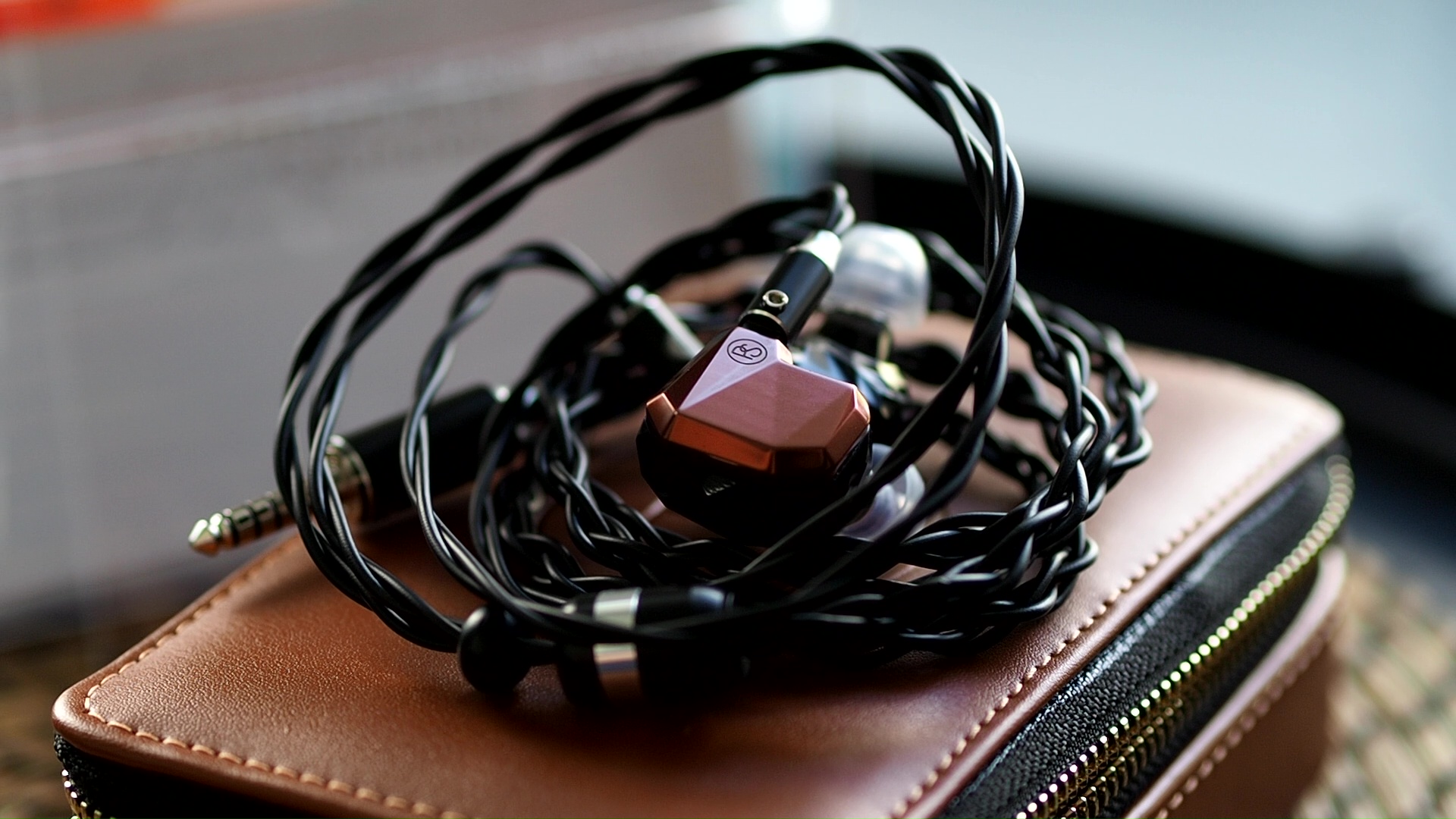



Accessories: It should be noted that my review sample may not come with the full retail packaging. Upon opening the box, there is a plastic cover that proudly states the product is hand assembled in LA. Underneath the cover, you will find a large leather case containing the IEMs themselves, a cable, and a leather cable tie, which I did not unpack. Additionally, my review sample came with multiple sets of ear tips. Unfortunately, I had difficulty achieving a good seal with the stock silicone ear tips, so I used my own Xelastec tips throughout the review period.
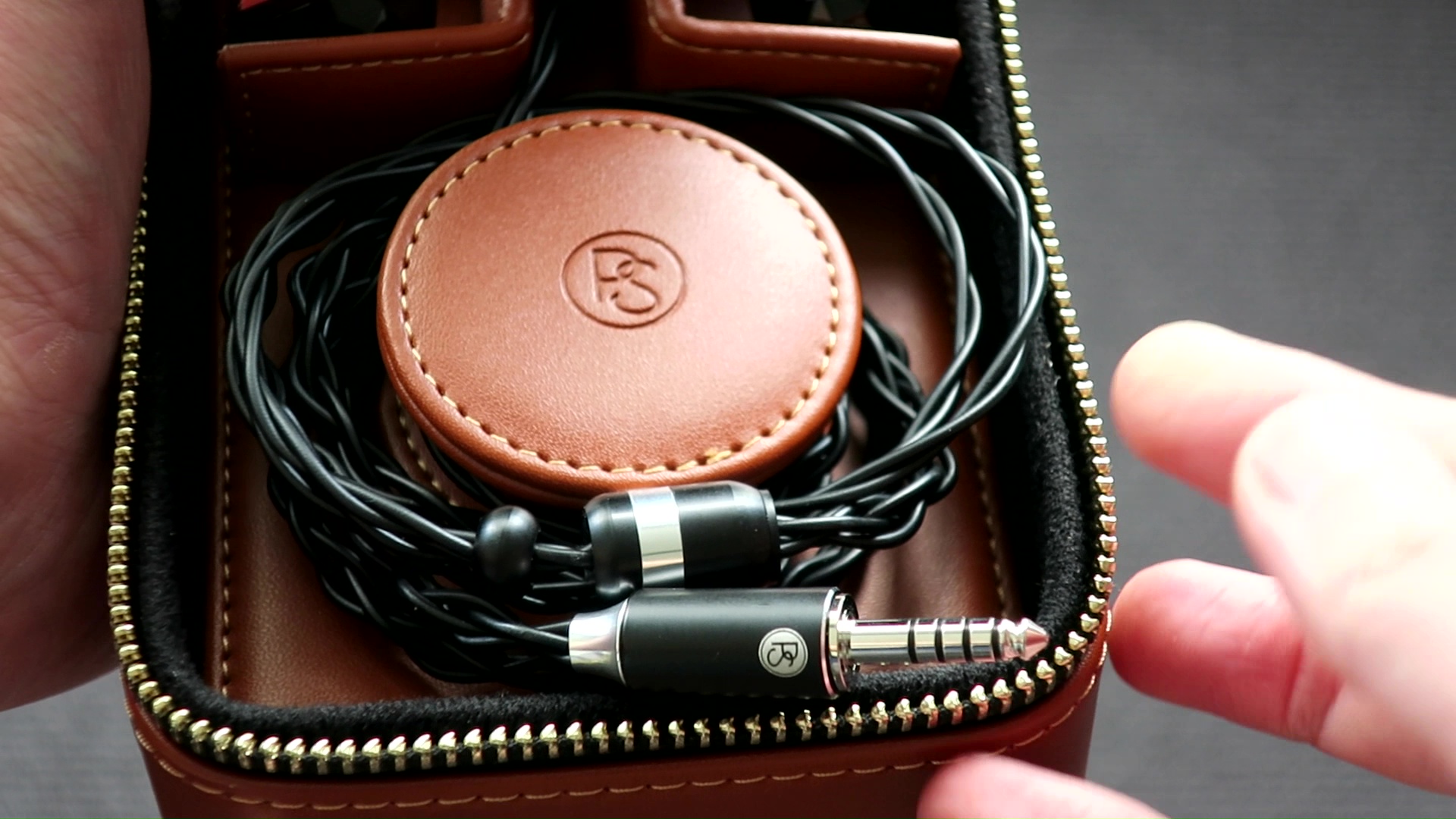
Stock cable: The stock cable provided with the Allegro IEMs is similar to the one that comes with the Effect Audio Gaea. It is thick, stiff, and hard to handle (some of you might like it). Fortunately, the cable did not cause any discomfort or noise once I properly positioned the IEMs. The hardware used on the cable has excellent build quality and a luxurious appearance.
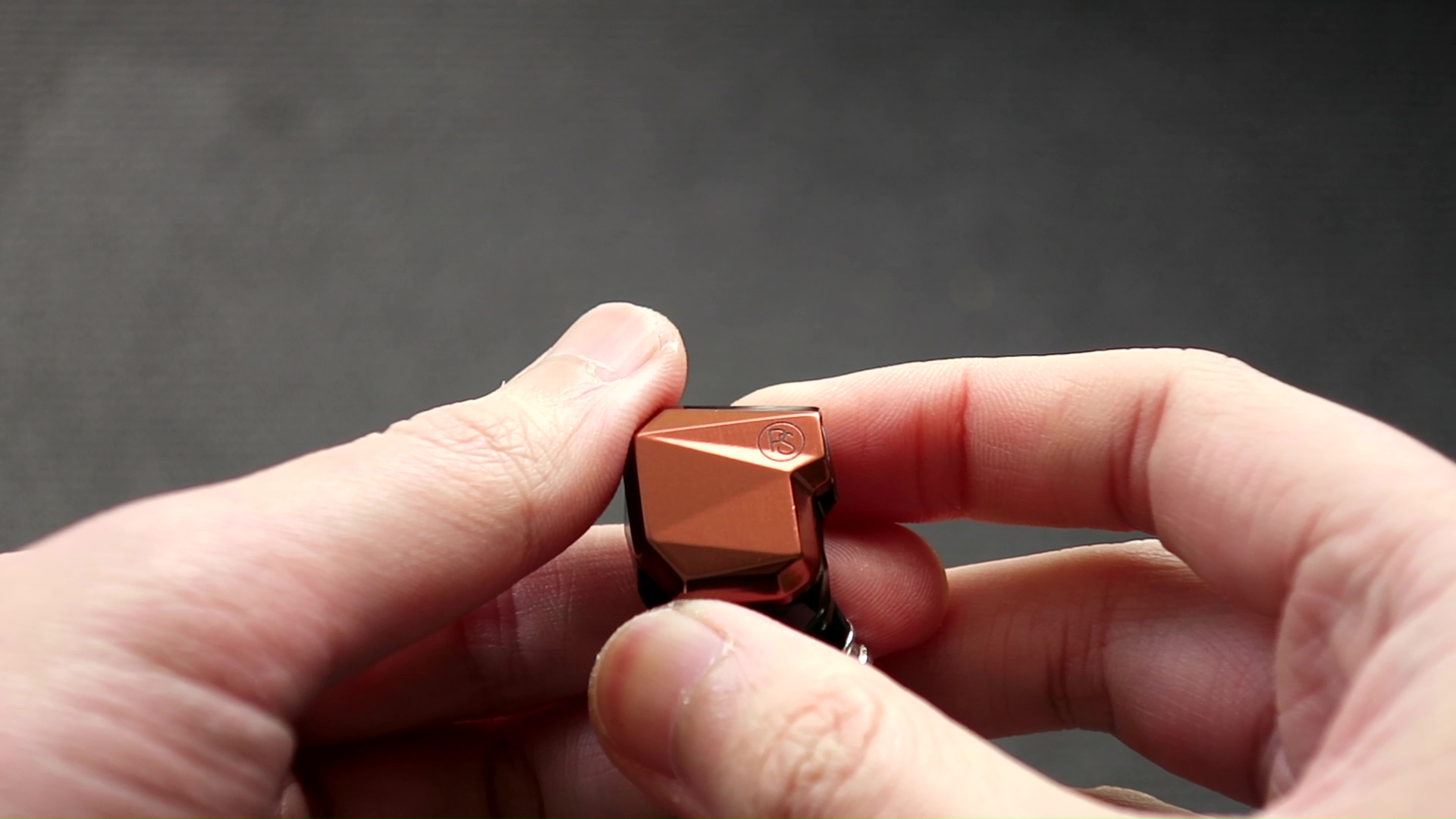
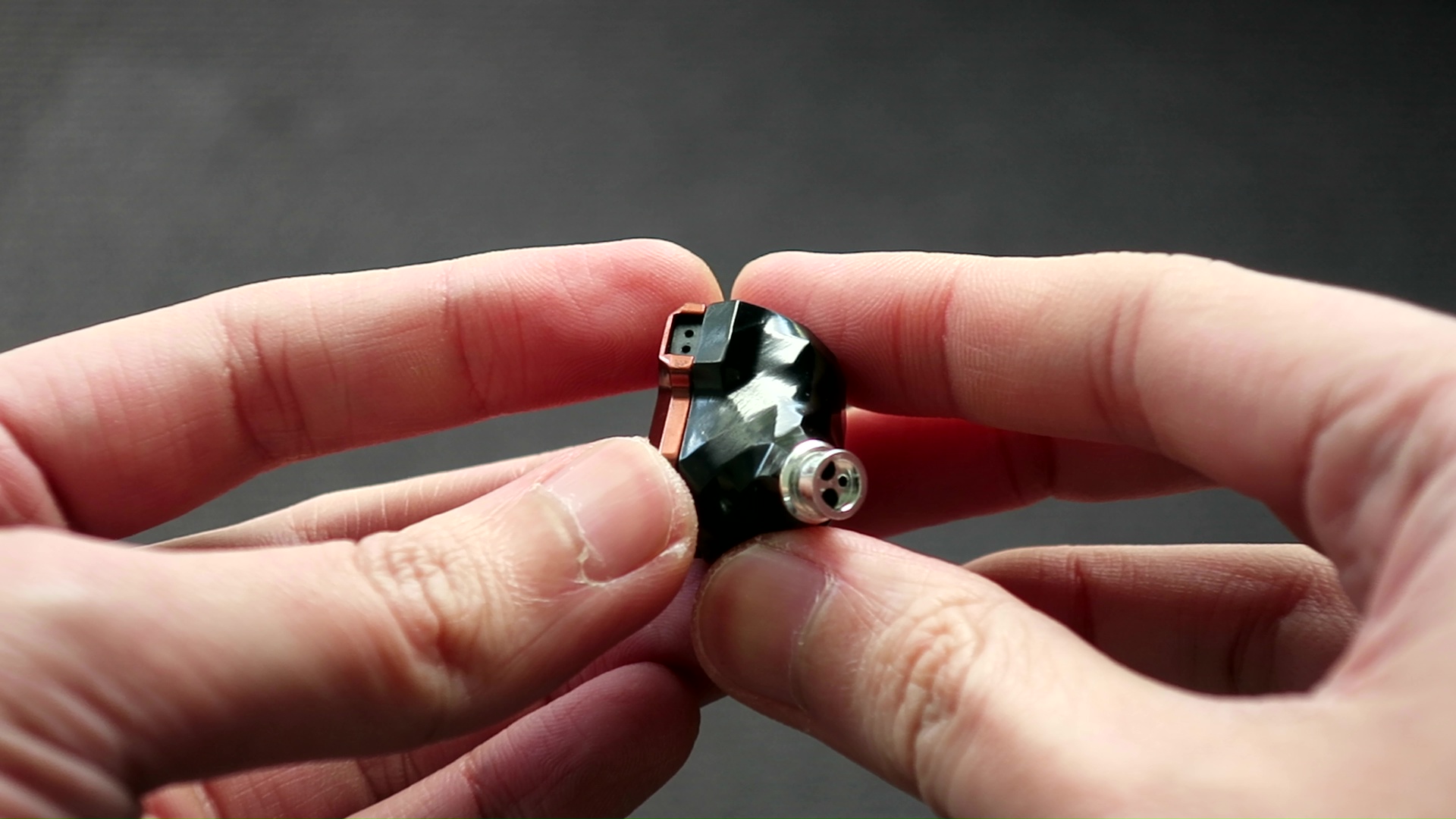


Earpieces: The earpieces of the Allegro IEMs are constructed from metal, giving them a solid feel. Initially, I mistook the black portion of the shell for plastic due to its intricate surface details. However, upon closer inspection, I discovered that this part is actually CNC-machined metal. The nozzles of the Allegro are noticeably large, and overall, the earpieces themselves are quite big and heavy. The shape of the Allegro can be likened to a pebble attached to a stick. The stick portion goes into the ear canal while the pebble portion rarely touches the ears. Due to the size of the nozzle, some eartips, such as my preferred CP145, would lose their seal after a few minutes. However, once I found suitable ear tips, namely Xelastec in my case, I found the fit and comfort to be excellent. With the right fit, the noise isolation provided by the Allegro is also quite decent.
It’s worth noting that the 2-pin connectors of the Allegro are somewhat loose, allowing the earpieces to detach from the cable if shaken. If you like to hang your IEM around your neck when moving around, don’t. You might find yourself missing an earpiece or two.

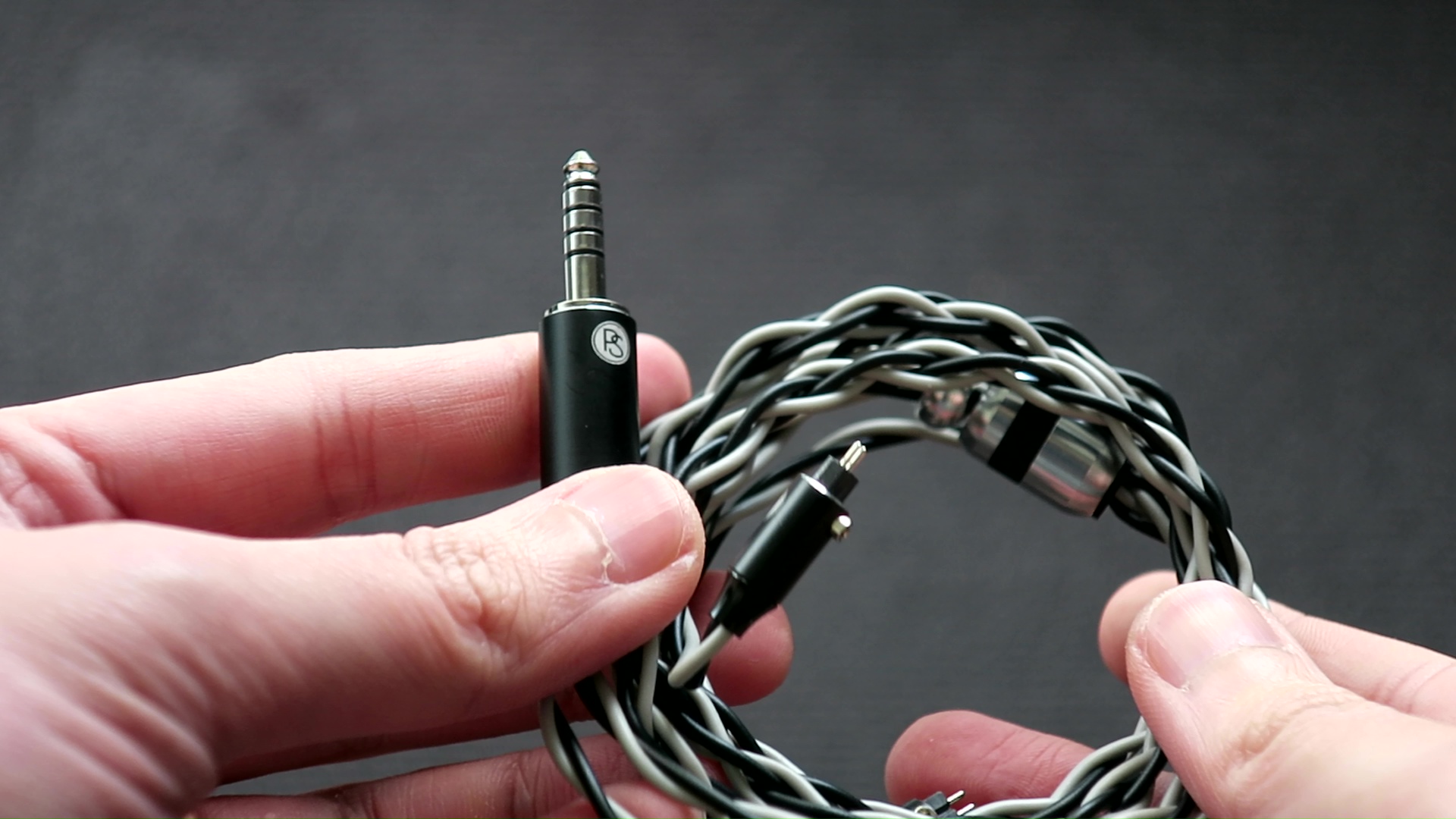
Other accessories: In addition to the aforementioned accessories, the review sample of the Allegro IEMs includes some extra goodies that are not typically included in the retail unit. Plussound, being a cable maker, provides two additional cables to showcase their collection. The cable that was attached to the Allegro when I received it was not the stock cable. I conducted a series of A/B tests in an attempt to discern any differences in sound quality. Ultimately, I found that the black cable “matches” Allegro the best by reducing a little of its upper treble. Interestingly, this black cable is actually the stock cable.
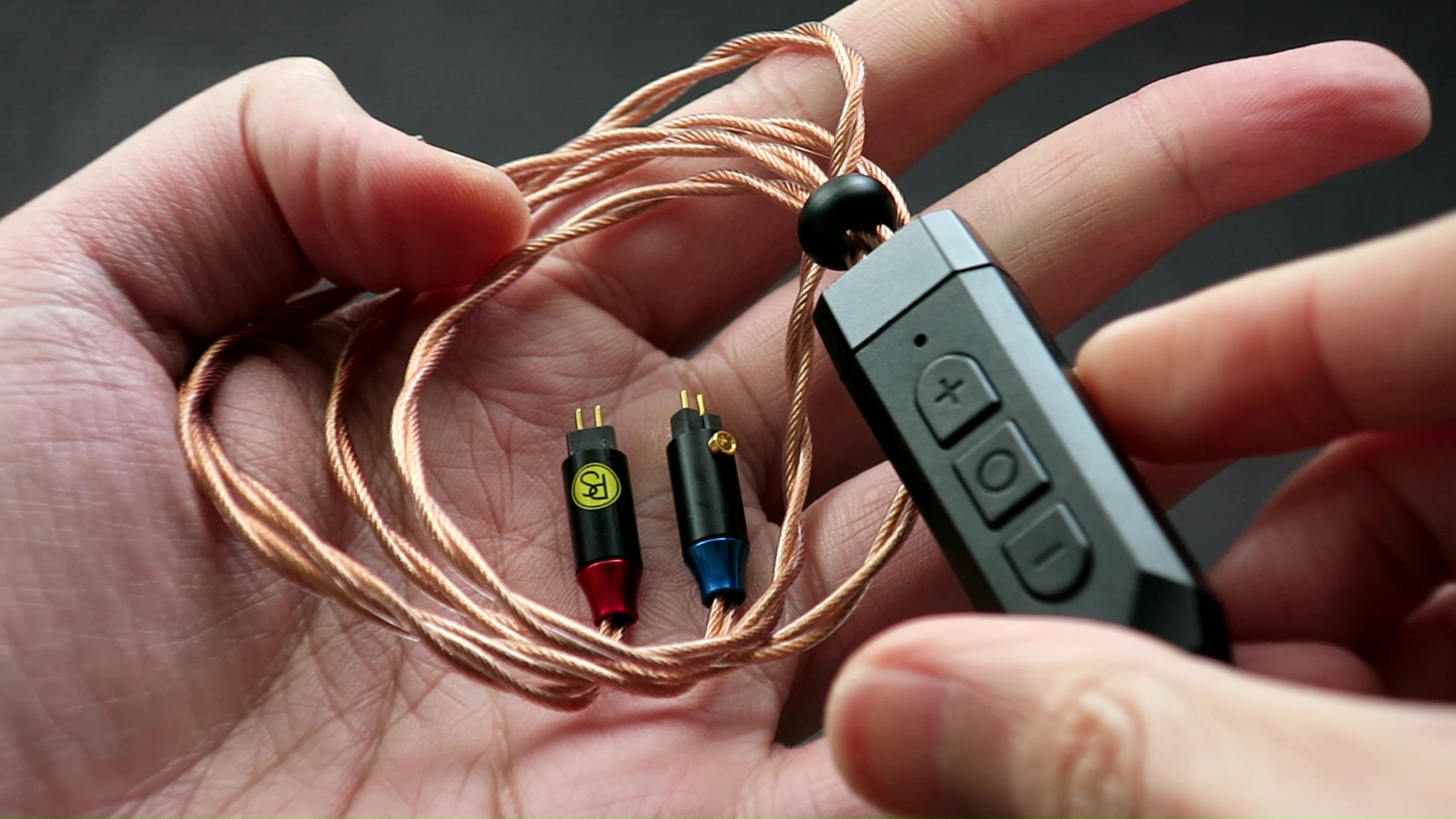
Another interesting accessory included with the review sample is a Bluetooth adapter with fancy wires. While basic in functionality, it proves to be reliable, maintaining a stable connection with my iPhone using AAC. In terms of sound, the adapter introduces a noticeable roll-off in the upper treble compared to my BTR5. This change complements the sound signature of the Allegro quite well.
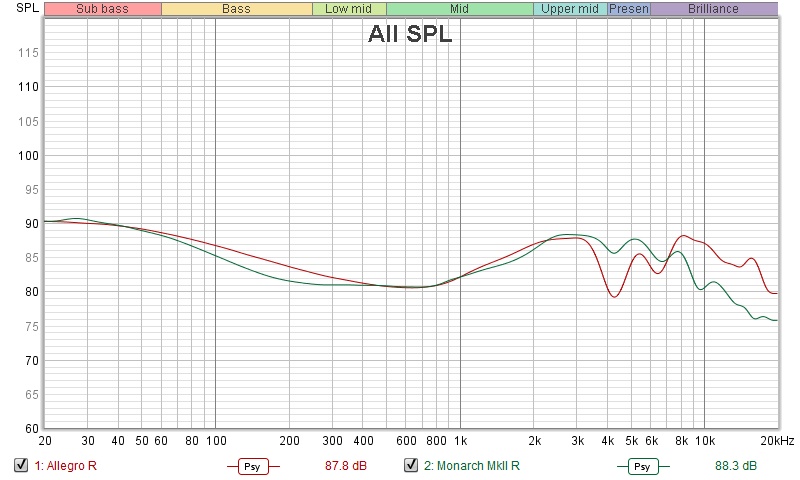
It is helpful to think of an IEM as a filter that highlights or subdues different parts of the incoming audio signal. This effect can be measured objectively by the squiggly lines above, called Frequency Response (FR) graphs, which measure how loud an IEM is at different frequencies from 20Hz (bass) to 20kHz (upper treble). Subjectivity is how your ears and brain interpret the effect of that filter on your music and decide whether it is “enjoyable.” There are some “rules of thumb” when it comes to tonality, but most interesting IEMs usually bend the rules masterfully.
The standout features of the Allegro IEMs are undoubtedly the pair of dynamic drivers (DD) acting as woofers and the four EST drivers acting as tweeters. Plussound has made sure that the presence of these drivers is hard to overlook. The most prominent aspect of the Allegro’s sound signature is the significant and sustained boost in the upper-treble. This emphasis on treble is a double-edged sword for the Allegro. The overall tonality of the Allegro can be described as bright U-shaped, with a relatively flat midrange sandwiched between boosted subbass and upper-treble.
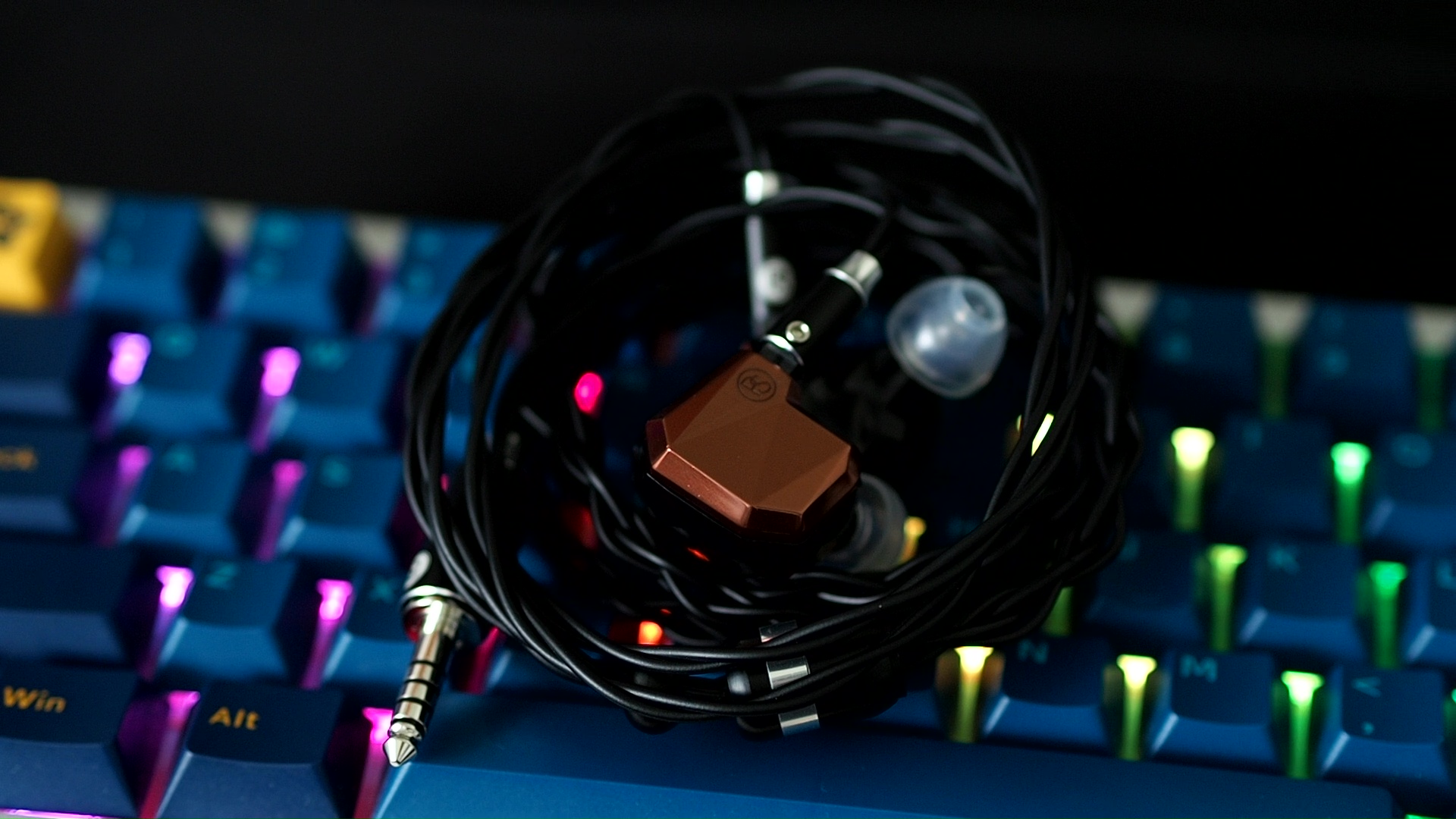
Let’s begin with the bass. The Allegro exhibits a boost in the bass above the midrange, particularly in the subbass region. This tuning gives the bass response a controlled and focused character, with a tactile feeling akin to precise jabs rather than a heavy slam. The woofers in the Allegro perform well in executing this tuning, resulting in good bass quality. The attack of bass notes is snappy and clean, and there’s a sense of bounciness expected from dynamic driver bass, rather than the crisp, almost plasticky feeling that is common with balanced armature bass.
The midrange of Allegro can be described as open and correct, without relying on excess upper midrange energy. It features a slight lift in the lower midrange to bring a touch of warmth to vocals and instruments. However, Allegro is only slightly warmer than reference, rather than a warm or coloured IEM. The upper midrange features a modest 8dB ear gain that is sustained between 2kHz and 3kHz. This “flat-top” is reminiscent of the Monarch II. This tuning choice brings vocals, especially female’s, out of the mix, but not to the point of making vocals shouty.
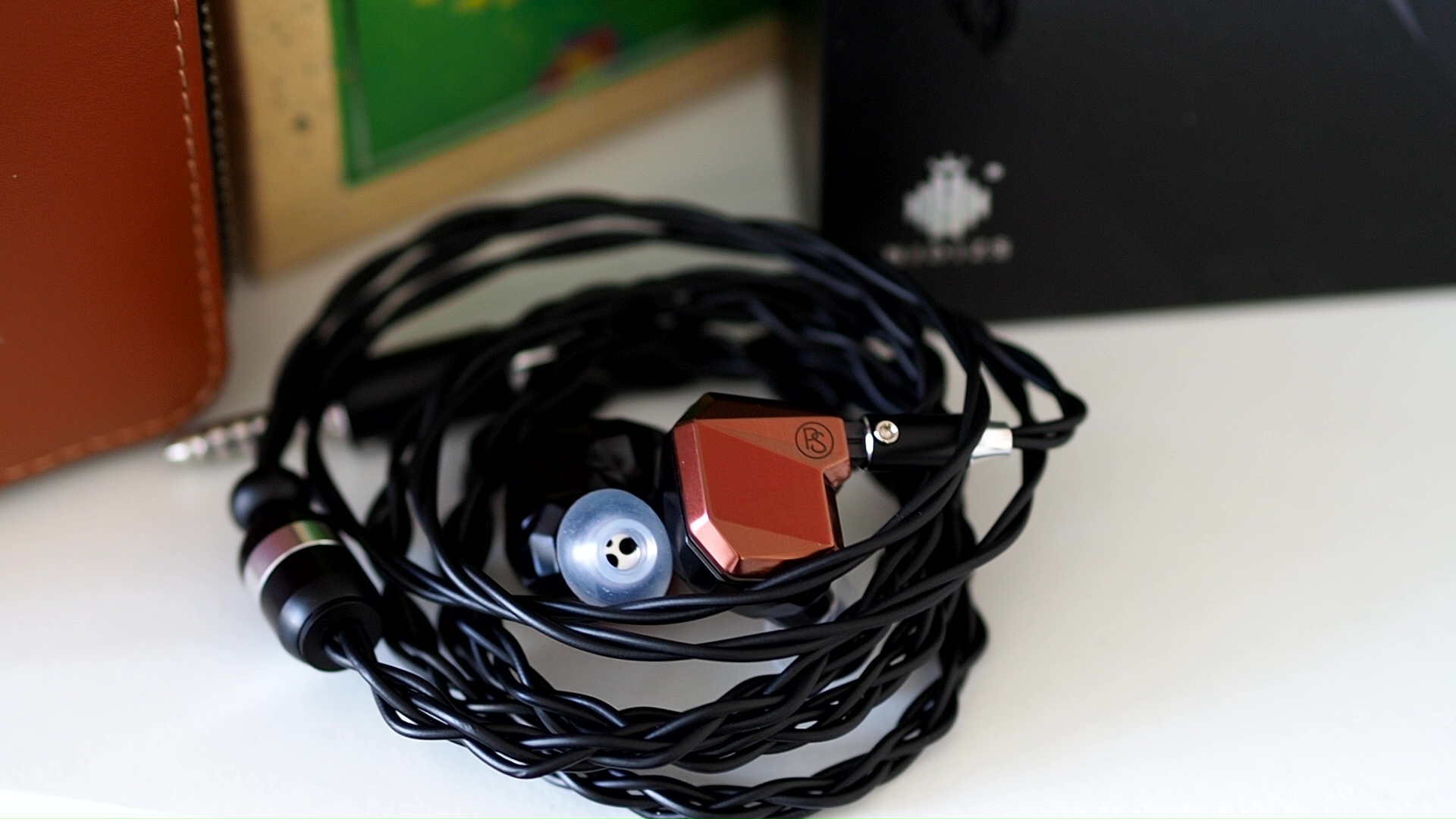
Now, let’s delve into the treble. First, the positive aspect: the Allegro has excellent treble extension, conveying a sense of airiness and reverb in recordings with clarity and completeness. This airiness is particularly enjoyable when listening to large orchestral pieces or live recordings.
However, there are some issues with the treble tuning. Instead of solely focusing the upper treble energy in the 15-16kHz region, Plussound chooses to emphasize the 10-12kHz region to a high degree as well. This tuning decision proves to be a double-edged sword. On one hand, it helps the Allegro achieve an unusual level of detail retrieval, bringing forth small artifacts that may go unnoticed on other IEMs. On the other hand, it imparts a metallic tint to the timbre of most instruments, occasionally making cellos sound unnatural due to this metallic timbre.
Another issue arises from the significant dip at 4kHz, further highlighting the uneven tuning of the treble region. This dip removes some texture from the music, such as the vocals in “Jolene” performed by Pentatonix. It also diminishes the energy and impact of stick strikes on cymbals and hi-hats. For instance, when listening to “Eye of the Tiger” by Survivor, I noticed that the cymbals and hi-hats sounded splashy and lacked crispness. The treble quality is not poor, but somewhat unrefined for a top-of-the-line IEM.

Stereo imaging or “soundstage” is a psychoacoustic illusion that different recording elements appear at various locations inside and around your head. Your brain creates based on the cues in the recording, which are enhanced or diminushed by your IEMs, your DAC, and your amplifier. Some IEMs present a wide but flat soundstage. Some present a “3D” soundstage with layering, depth, and height. In rare cases, with some specific songs, some IEMs can trick you into thinking that the sound comes from the environment (a.k.a., “holographic”)
Soundstage imaging with music (One Winged Angel by the Danish National Symphony Orchestra and Winter by Voices of Music):
The soundstage of the Allegro IEMs leans towards the larger side. It exhibits a wider rather than deeper soundstage, with the center of the stage often positioned close to the face or even within the head at times. The sense of layering within the soundstage is strong. Thanks to the Allegro’s treble extension, the outermost layers of the stage, such as the choir and the reverb, are appropriately placed with a distinct sense of distance and separation from the foreground elements, such as the rest of the orchestra. Instrument placement within the stage is sharp and precise, clearly noticeable in the opening of the Winter concerto. For example, I can discern that the violas are positioned further back in the stage compared to other instruments.
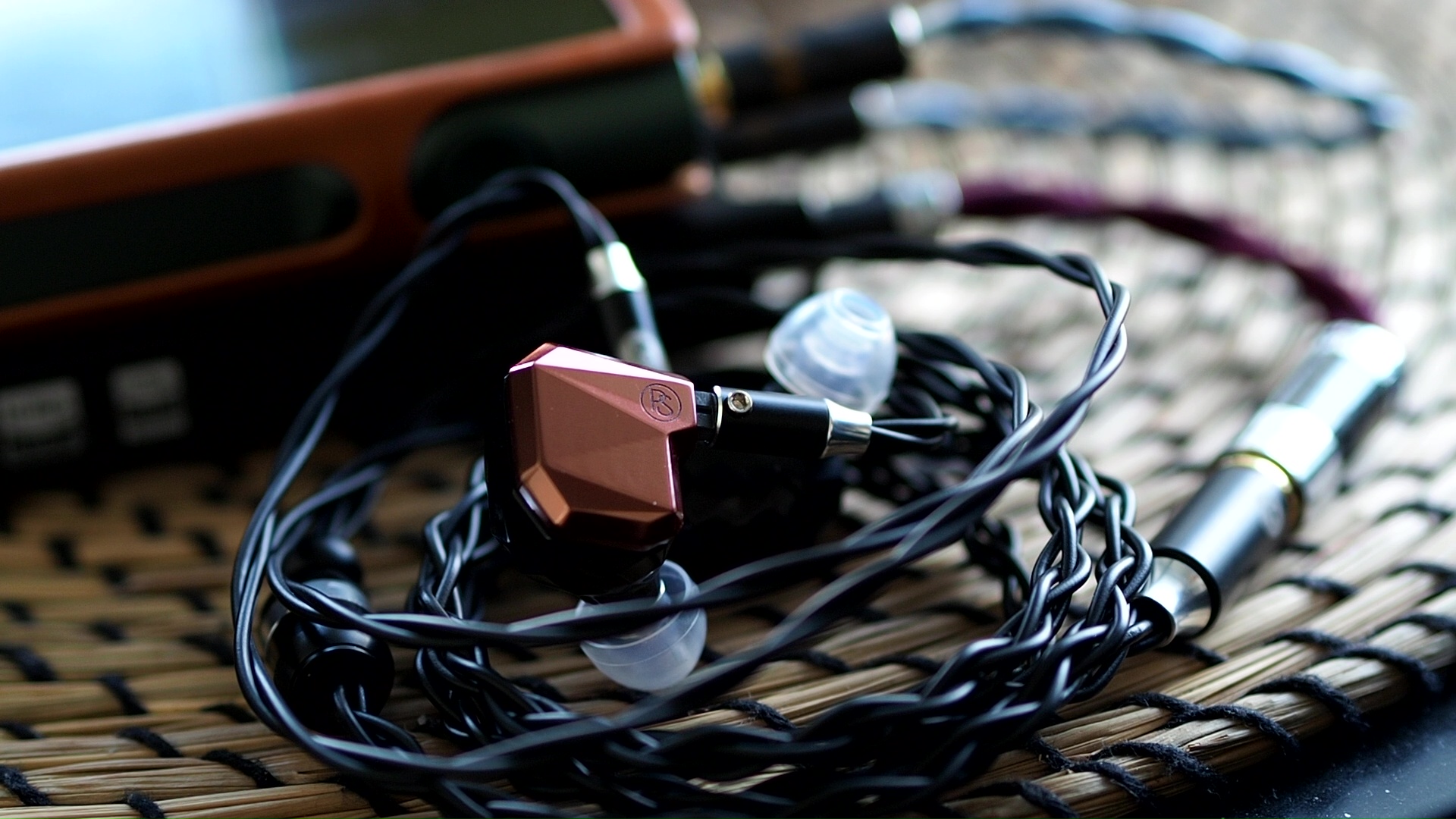
Soundstage imaging with games (CS GO Gameplay by Throneful):
The shape of the soundstage in the Allegro IEMs is wider than it is deep, which is evident during gaming sessions. However, it is remarkably easy to identify and track the direction of sounds as they move around the player. The Allegro also excels at conveying the distance and the height of sounds, allowing for accurate estimation of their position in relation to the listener.

Resolution is a fascinating subject due to the difficulty of pinning down what it really is. To me, “resolution” can be broken down into three components: (1) Sharpness, incisiveness, or “definition” of note attacks (see the figure above). (2) The separation of instruments and vocals, especially when they overlap on the soundstage. (3) The texture and details in the decay side of the notes. The first two give music clarity and make it easy to track individual elements of a mix. The last provides music details and nuances. Smooth and well extended treble response plays a crucial role.
Clarity and Separation (One Winged Angel by the Danish National Symphony Orchestra): When it comes to clarity and separation, the Allegro IEMs exhibit a specific tuning that slightly mutes or overly smoothes the definition of note attacks, if one pays careful attention. Despite this, the overall presentation of the orchestra in the track remains crystal clear, and the individual instruments are well separated within the soundstage.
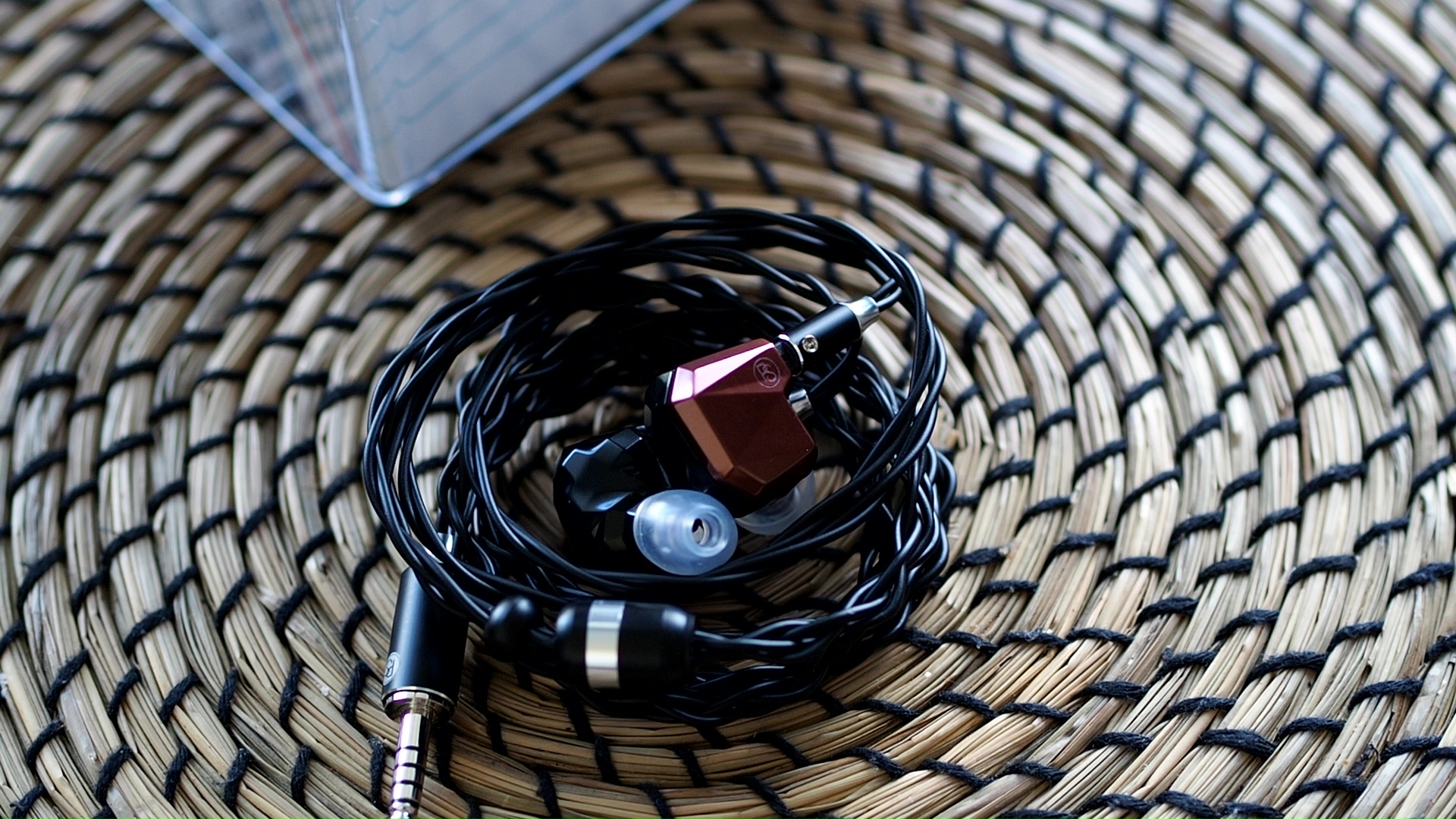
Detail retrieval (Paganini Caprice 24 by Daniel Lozakovich):Thanks to the treble tuning with emphasis around the 10-12kHz region, the Allegro excels in detail retrieval. It brings out every nuance and intricate detail, such as the sound of tapping on the fingerboard or the subtle bounces of the bow on the string. The Allegro’s ability to reveal room reverberations and decays also enhances the sense of space in recordings. However, it should be noted that the emphasis of the Allegro’s tuning can occasionally highlight distracting artifacts from certain recordings. For example, when listening to Lang Lang’s Goldberg Variations recordings, I noticed annoying clicking noises from the piano that were not audible with other IEMs, even those known for their high resolution.

Tonality: 3/5 - Adequate
From a macro level, the tuning of Allegro is quite promising with deep bass extension, strong treble extension, a flat and open midrange, and an appropriate amount of ear gain. However, the tonality of these IEMs never quite feels completely right due to various issues in the treble region. While it remains adequate, I personally expected a bit more from a flagship-level IEM.
Percussion Rendering: Aria (3/5) < Blessing 2 (4/5) <= Allegro (4/5) < U12T / E5000 (5/5)
The bass of the Allegro lives up to its name, delivering a fast and lively performance. It offers deep bass with snappy attacks that provide a solid foundation to the overall sound. However, it may lack some excitement, as it occasionally falls short of delivering the full impact and slam that one might expect in certain bass-heavy moments.
Resolution: SE215 (3/5) < Blessing 2 (4/5) < Andromeda 2020 (4.5/5) < U12T (5/5) = Allegro (5/5)
In terms of resolution, the Allegro IEMs confidently take their place among the upper echelon of the IEM world. The Allegro’s treble tuning, although unconventional, allows it to reveal details that even the U12T might overlook. However, it is worth noting that this level of resolution can sometimes reveal recording artifacts, which can be both a blessing and a drawback.
Soundstage: SE215 (3/5) < Blessing 2 (4/5) < Andromeda 2020 (5/5) = Allegro (5/5)
Thanks to its treble extension, the Allegro IEMs boast an expansive soundstage that extends far beyond the listener. Despite having the center image positioned close to the face or even in-the-head, the Allegro manages to create a sense of space and separation between instruments. The imaging is precise, allowing for accurate placement of different elements within the soundstage.
Pros:
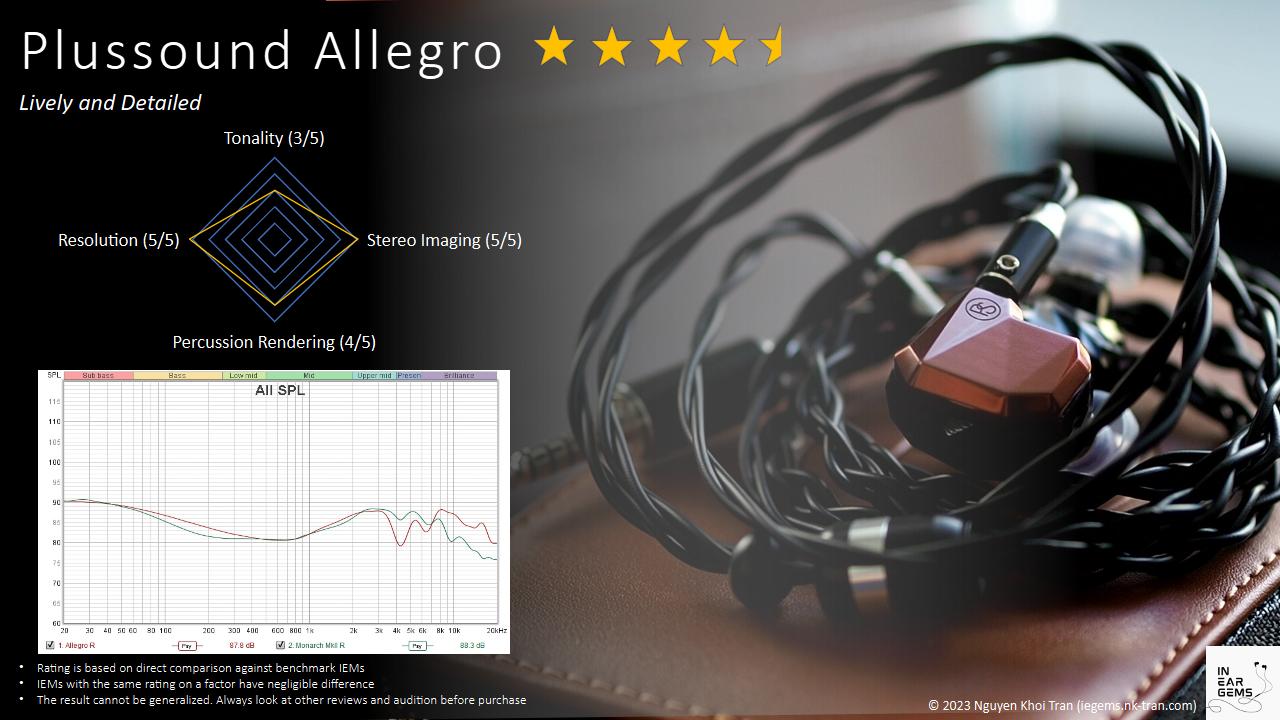
Updated: June 24, 2023

Forewords
- What I look for in an IEM is immersion. I want to feel the orchestra around me, track individual instruments, and hear all of their textures and details. I’m not picky about tonality, as long as it does not get in the way of immersion.
- I rate IEMs within with a consistent scale from 1 (poor) to 3 (Adequate) to 5 (outstanding). Ratings are assigned by A/B tests against benchmark IEMs, regardless of the retail price.
- Ranking list and measurement database are on my IEM review blog.
- This review is possible thanks to the Australian tour arranged by Plussound and @Damz87 (Thank you!). I have no affiliation with or financial interest in Plussound. The unit retails for $3499 at the time this review was published. You can find out more details and grab yourself a unit from Plussound online store
Specs
- Driver: 2DD + 6BA + 4EST (6-way crossover)
- Connector Type: 2-pin 0.78
- Impedance: 10 ohms @1kHz @1mW
- Sensitivity: 112 dB @1kHz
Build and Comfort



Accessories: It should be noted that my review sample may not come with the full retail packaging. Upon opening the box, there is a plastic cover that proudly states the product is hand assembled in LA. Underneath the cover, you will find a large leather case containing the IEMs themselves, a cable, and a leather cable tie, which I did not unpack. Additionally, my review sample came with multiple sets of ear tips. Unfortunately, I had difficulty achieving a good seal with the stock silicone ear tips, so I used my own Xelastec tips throughout the review period.

Stock cable: The stock cable provided with the Allegro IEMs is similar to the one that comes with the Effect Audio Gaea. It is thick, stiff, and hard to handle (some of you might like it). Fortunately, the cable did not cause any discomfort or noise once I properly positioned the IEMs. The hardware used on the cable has excellent build quality and a luxurious appearance.




Earpieces: The earpieces of the Allegro IEMs are constructed from metal, giving them a solid feel. Initially, I mistook the black portion of the shell for plastic due to its intricate surface details. However, upon closer inspection, I discovered that this part is actually CNC-machined metal. The nozzles of the Allegro are noticeably large, and overall, the earpieces themselves are quite big and heavy. The shape of the Allegro can be likened to a pebble attached to a stick. The stick portion goes into the ear canal while the pebble portion rarely touches the ears. Due to the size of the nozzle, some eartips, such as my preferred CP145, would lose their seal after a few minutes. However, once I found suitable ear tips, namely Xelastec in my case, I found the fit and comfort to be excellent. With the right fit, the noise isolation provided by the Allegro is also quite decent.
It’s worth noting that the 2-pin connectors of the Allegro are somewhat loose, allowing the earpieces to detach from the cable if shaken. If you like to hang your IEM around your neck when moving around, don’t. You might find yourself missing an earpiece or two.


Other accessories: In addition to the aforementioned accessories, the review sample of the Allegro IEMs includes some extra goodies that are not typically included in the retail unit. Plussound, being a cable maker, provides two additional cables to showcase their collection. The cable that was attached to the Allegro when I received it was not the stock cable. I conducted a series of A/B tests in an attempt to discern any differences in sound quality. Ultimately, I found that the black cable “matches” Allegro the best by reducing a little of its upper treble. Interestingly, this black cable is actually the stock cable.

Another interesting accessory included with the review sample is a Bluetooth adapter with fancy wires. While basic in functionality, it proves to be reliable, maintaining a stable connection with my iPhone using AAC. In terms of sound, the adapter introduces a noticeable roll-off in the upper treble compared to my BTR5. This change complements the sound signature of the Allegro quite well.
Tonality
Frequency response of Allegro against the Monarch II. Measurements were done with an IEC-711-compliant coupler and might only be compared with other measurements from this same coupler. Visit my graph database for more comparisons.
It is helpful to think of an IEM as a filter that highlights or subdues different parts of the incoming audio signal. This effect can be measured objectively by the squiggly lines above, called Frequency Response (FR) graphs, which measure how loud an IEM is at different frequencies from 20Hz (bass) to 20kHz (upper treble). Subjectivity is how your ears and brain interpret the effect of that filter on your music and decide whether it is “enjoyable.” There are some “rules of thumb” when it comes to tonality, but most interesting IEMs usually bend the rules masterfully.
The standout features of the Allegro IEMs are undoubtedly the pair of dynamic drivers (DD) acting as woofers and the four EST drivers acting as tweeters. Plussound has made sure that the presence of these drivers is hard to overlook. The most prominent aspect of the Allegro’s sound signature is the significant and sustained boost in the upper-treble. This emphasis on treble is a double-edged sword for the Allegro. The overall tonality of the Allegro can be described as bright U-shaped, with a relatively flat midrange sandwiched between boosted subbass and upper-treble.

Let’s begin with the bass. The Allegro exhibits a boost in the bass above the midrange, particularly in the subbass region. This tuning gives the bass response a controlled and focused character, with a tactile feeling akin to precise jabs rather than a heavy slam. The woofers in the Allegro perform well in executing this tuning, resulting in good bass quality. The attack of bass notes is snappy and clean, and there’s a sense of bounciness expected from dynamic driver bass, rather than the crisp, almost plasticky feeling that is common with balanced armature bass.
The midrange of Allegro can be described as open and correct, without relying on excess upper midrange energy. It features a slight lift in the lower midrange to bring a touch of warmth to vocals and instruments. However, Allegro is only slightly warmer than reference, rather than a warm or coloured IEM. The upper midrange features a modest 8dB ear gain that is sustained between 2kHz and 3kHz. This “flat-top” is reminiscent of the Monarch II. This tuning choice brings vocals, especially female’s, out of the mix, but not to the point of making vocals shouty.

Now, let’s delve into the treble. First, the positive aspect: the Allegro has excellent treble extension, conveying a sense of airiness and reverb in recordings with clarity and completeness. This airiness is particularly enjoyable when listening to large orchestral pieces or live recordings.
However, there are some issues with the treble tuning. Instead of solely focusing the upper treble energy in the 15-16kHz region, Plussound chooses to emphasize the 10-12kHz region to a high degree as well. This tuning decision proves to be a double-edged sword. On one hand, it helps the Allegro achieve an unusual level of detail retrieval, bringing forth small artifacts that may go unnoticed on other IEMs. On the other hand, it imparts a metallic tint to the timbre of most instruments, occasionally making cellos sound unnatural due to this metallic timbre.
Another issue arises from the significant dip at 4kHz, further highlighting the uneven tuning of the treble region. This dip removes some texture from the music, such as the vocals in “Jolene” performed by Pentatonix. It also diminishes the energy and impact of stick strikes on cymbals and hi-hats. For instance, when listening to “Eye of the Tiger” by Survivor, I noticed that the cymbals and hi-hats sounded splashy and lacked crispness. The treble quality is not poor, but somewhat unrefined for a top-of-the-line IEM.
Soundstage Imaging

Stereo imaging or “soundstage” is a psychoacoustic illusion that different recording elements appear at various locations inside and around your head. Your brain creates based on the cues in the recording, which are enhanced or diminushed by your IEMs, your DAC, and your amplifier. Some IEMs present a wide but flat soundstage. Some present a “3D” soundstage with layering, depth, and height. In rare cases, with some specific songs, some IEMs can trick you into thinking that the sound comes from the environment (a.k.a., “holographic”)
Soundstage imaging with music (One Winged Angel by the Danish National Symphony Orchestra and Winter by Voices of Music):
The soundstage of the Allegro IEMs leans towards the larger side. It exhibits a wider rather than deeper soundstage, with the center of the stage often positioned close to the face or even within the head at times. The sense of layering within the soundstage is strong. Thanks to the Allegro’s treble extension, the outermost layers of the stage, such as the choir and the reverb, are appropriately placed with a distinct sense of distance and separation from the foreground elements, such as the rest of the orchestra. Instrument placement within the stage is sharp and precise, clearly noticeable in the opening of the Winter concerto. For example, I can discern that the violas are positioned further back in the stage compared to other instruments.

Soundstage imaging with games (CS GO Gameplay by Throneful):
The shape of the soundstage in the Allegro IEMs is wider than it is deep, which is evident during gaming sessions. However, it is remarkably easy to identify and track the direction of sounds as they move around the player. The Allegro also excels at conveying the distance and the height of sounds, allowing for accurate estimation of their position in relation to the listener.
Resolution

Resolution is a fascinating subject due to the difficulty of pinning down what it really is. To me, “resolution” can be broken down into three components: (1) Sharpness, incisiveness, or “definition” of note attacks (see the figure above). (2) The separation of instruments and vocals, especially when they overlap on the soundstage. (3) The texture and details in the decay side of the notes. The first two give music clarity and make it easy to track individual elements of a mix. The last provides music details and nuances. Smooth and well extended treble response plays a crucial role.
Clarity and Separation (One Winged Angel by the Danish National Symphony Orchestra): When it comes to clarity and separation, the Allegro IEMs exhibit a specific tuning that slightly mutes or overly smoothes the definition of note attacks, if one pays careful attention. Despite this, the overall presentation of the orchestra in the track remains crystal clear, and the individual instruments are well separated within the soundstage.

Detail retrieval (Paganini Caprice 24 by Daniel Lozakovich):Thanks to the treble tuning with emphasis around the 10-12kHz region, the Allegro excels in detail retrieval. It brings out every nuance and intricate detail, such as the sound of tapping on the fingerboard or the subtle bounces of the bow on the string. The Allegro’s ability to reveal room reverberations and decays also enhances the sense of space in recordings. However, it should be noted that the emphasis of the Allegro’s tuning can occasionally highlight distracting artifacts from certain recordings. For example, when listening to Lang Lang’s Goldberg Variations recordings, I noticed annoying clicking noises from the piano that were not audible with other IEMs, even those known for their high resolution.
Comparison and Rating

Tonality: 3/5 - Adequate
From a macro level, the tuning of Allegro is quite promising with deep bass extension, strong treble extension, a flat and open midrange, and an appropriate amount of ear gain. However, the tonality of these IEMs never quite feels completely right due to various issues in the treble region. While it remains adequate, I personally expected a bit more from a flagship-level IEM.
Percussion Rendering: Aria (3/5) < Blessing 2 (4/5) <= Allegro (4/5) < U12T / E5000 (5/5)
The bass of the Allegro lives up to its name, delivering a fast and lively performance. It offers deep bass with snappy attacks that provide a solid foundation to the overall sound. However, it may lack some excitement, as it occasionally falls short of delivering the full impact and slam that one might expect in certain bass-heavy moments.
Resolution: SE215 (3/5) < Blessing 2 (4/5) < Andromeda 2020 (4.5/5) < U12T (5/5) = Allegro (5/5)
In terms of resolution, the Allegro IEMs confidently take their place among the upper echelon of the IEM world. The Allegro’s treble tuning, although unconventional, allows it to reveal details that even the U12T might overlook. However, it is worth noting that this level of resolution can sometimes reveal recording artifacts, which can be both a blessing and a drawback.
Soundstage: SE215 (3/5) < Blessing 2 (4/5) < Andromeda 2020 (5/5) = Allegro (5/5)
Thanks to its treble extension, the Allegro IEMs boast an expansive soundstage that extends far beyond the listener. Despite having the center image positioned close to the face or even in-the-head, the Allegro manages to create a sense of space and separation between instruments. The imaging is precise, allowing for accurate placement of different elements within the soundstage.
Conclusion
The first venture of Plussound into the world of IEM is undeniably ambitious, both in terms of driver topology and price. The resulting product, Allegro, lives up to its name by delivering a lively and snappy presentation. Its technical performance is truly impressive. However, Allegro is not without its shortcomings, as it suffers from various minor tuning issues. Moving forward, if Plussound can maintain the exceptional technical performance while addressing these tuning problems, their IEMs have the potential to be truly remarkable.Pros:
- Excellent resolution and detail retrieval
- Snappy but not wimpy bass response
- Excellent at recreating the sense of space in recordings
- Too much upper treble around the 12kHz region
- Tonality can sound uncanny and metallic with some recordings
- Can reveal distracting recording artefacts
- Large shells
- You value clarity and separation.
- You want to hear everything in your music.
- You like the sense of holographic staging in your music.
- You have larger ears.

Updated: June 24, 2023
o0genesis0o
Headphoneus Supremus
Pros: Neutral and versatile tonality
Great soundstage expansion and dynamic for a dongle
Great design and build quality
Great soundstage expansion and dynamic for a dongle
Great design and build quality
Cons: Idle battery drain
Potential compatibility issue with iOS
Price
Potential compatibility issue with iOS
Price
Today, we take a look at one of the “super dongles”, the W4 by Luxury and Precision. Costing nearly as much as an entry-level music player like Shanling M3 Ultra and HiBy R6 Gen 2, does W4 offer enough sound quality to justify the price tag? Let’s find out.
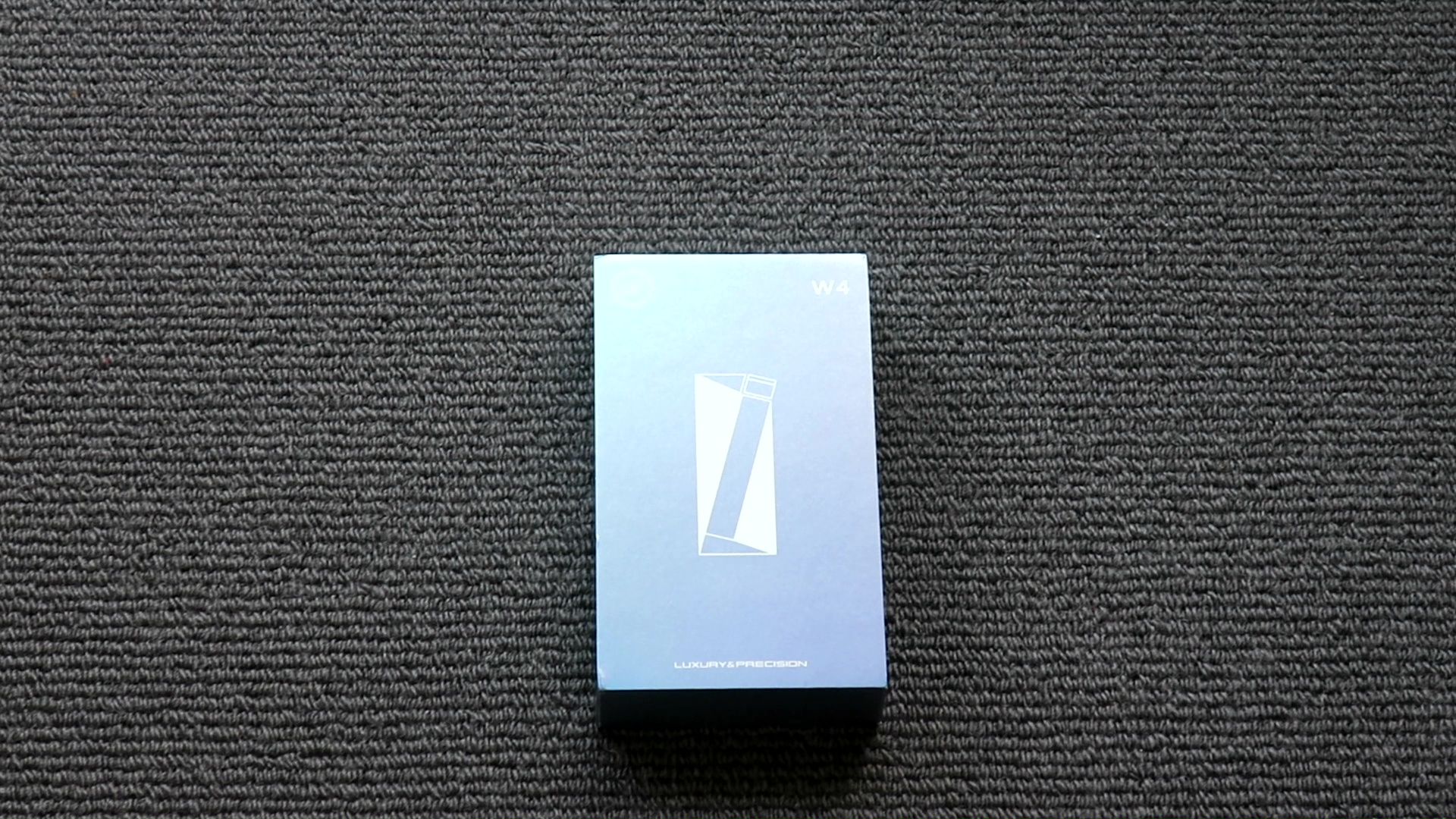


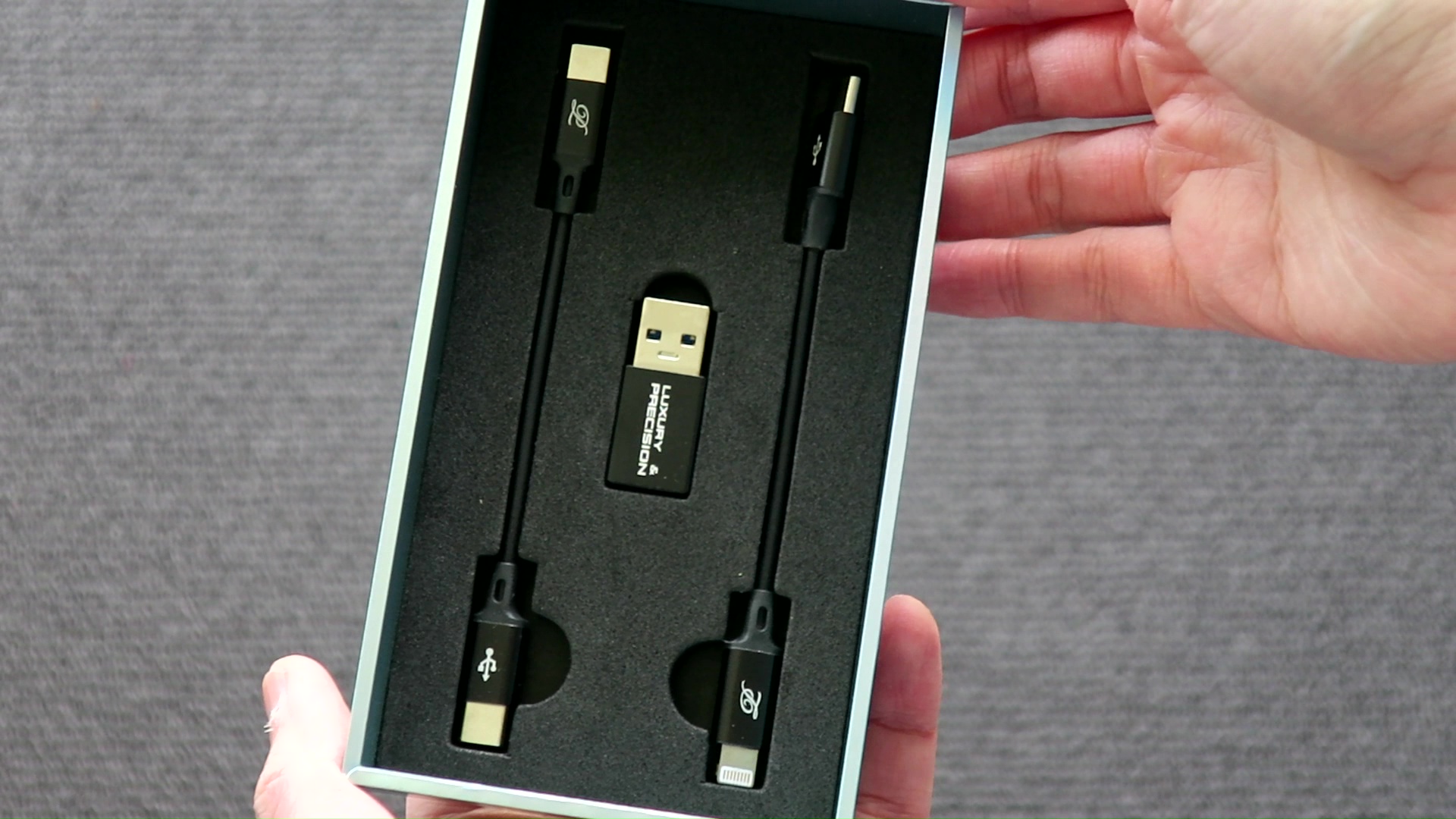
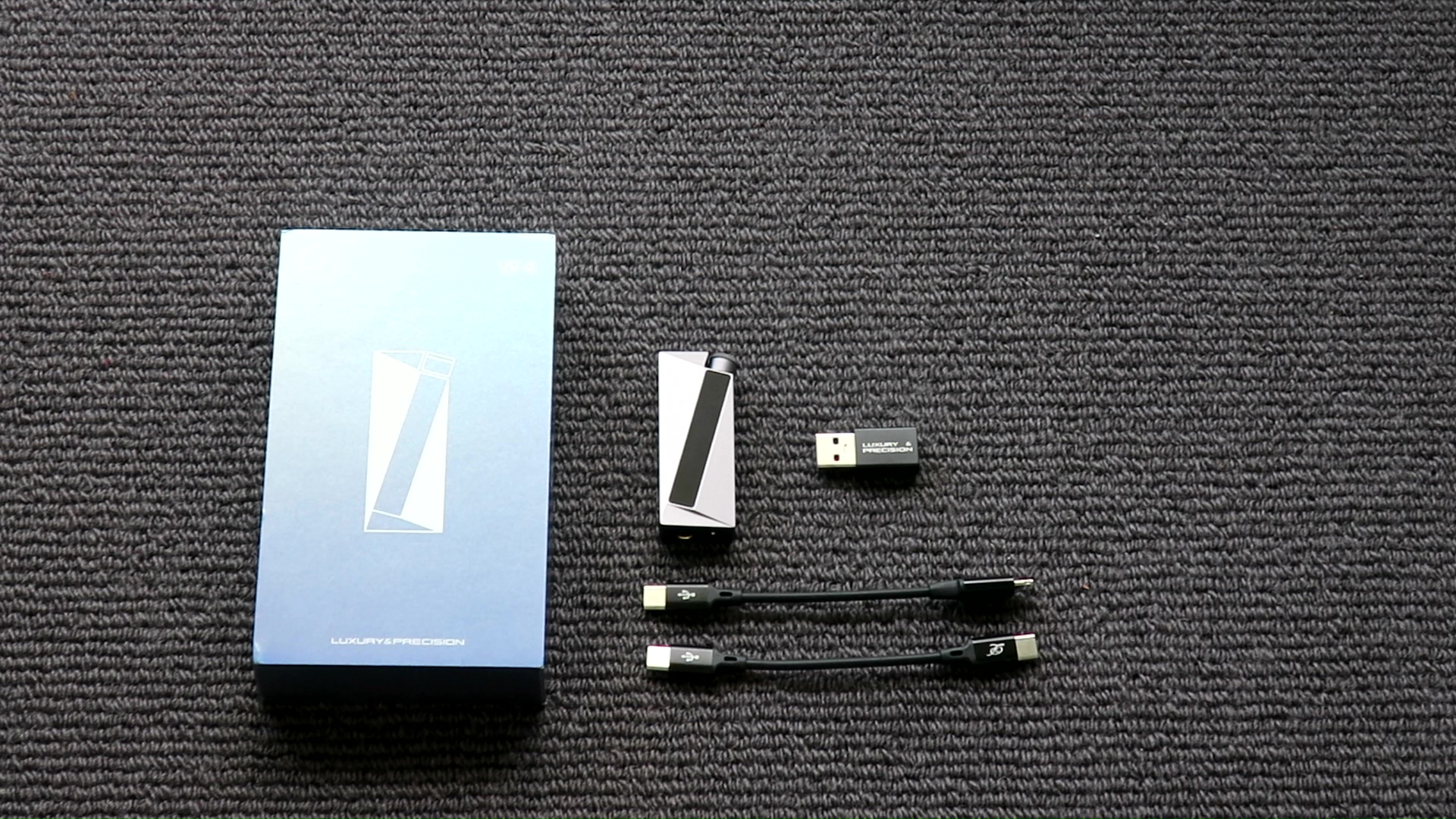
W4 came in a nice box with custom foams, which offer strong protection for the content. Inside the box, you can find the W4 and all cables and adapter that you need to connect W4 to any phone, computer, or tablet.
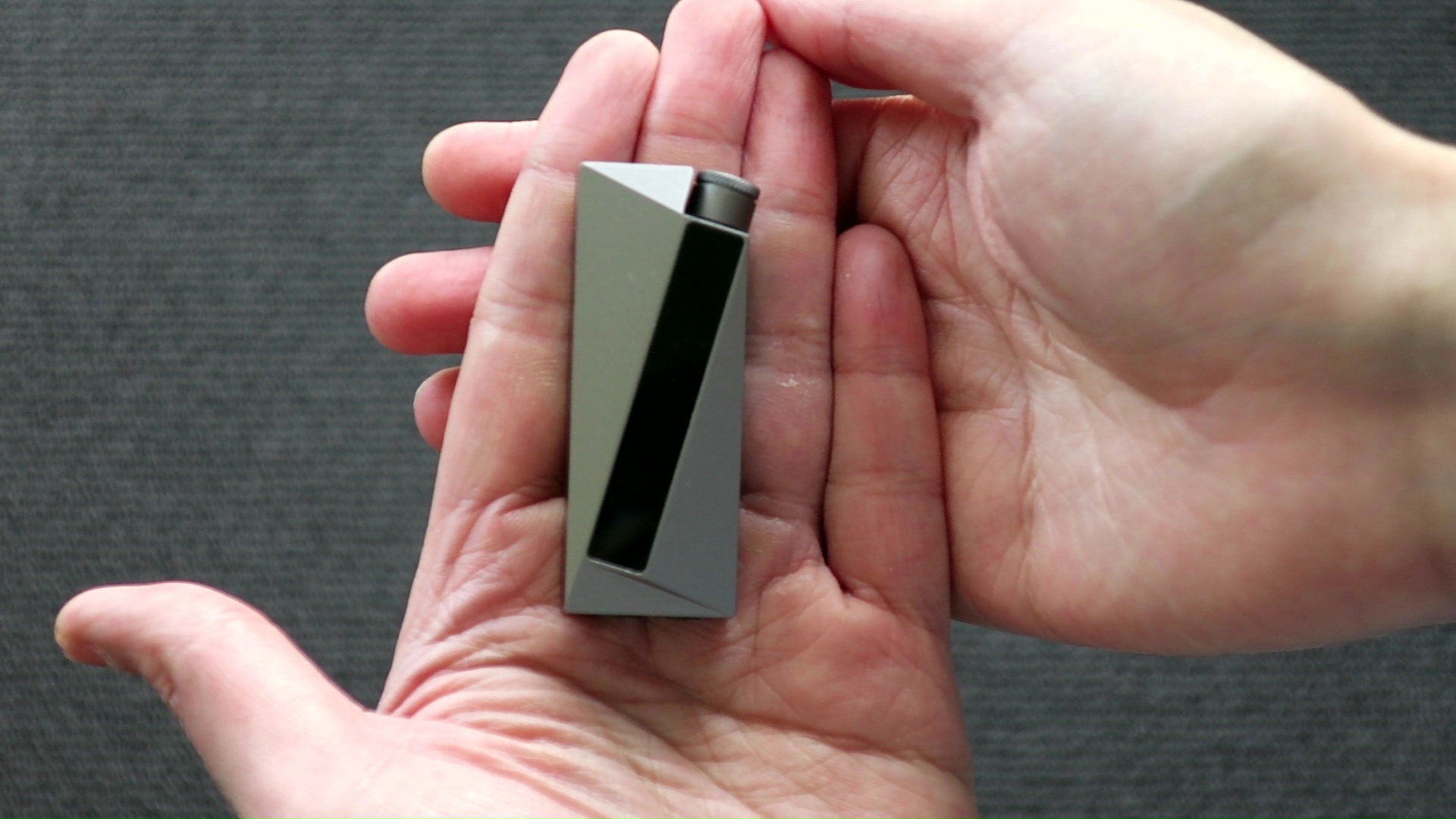


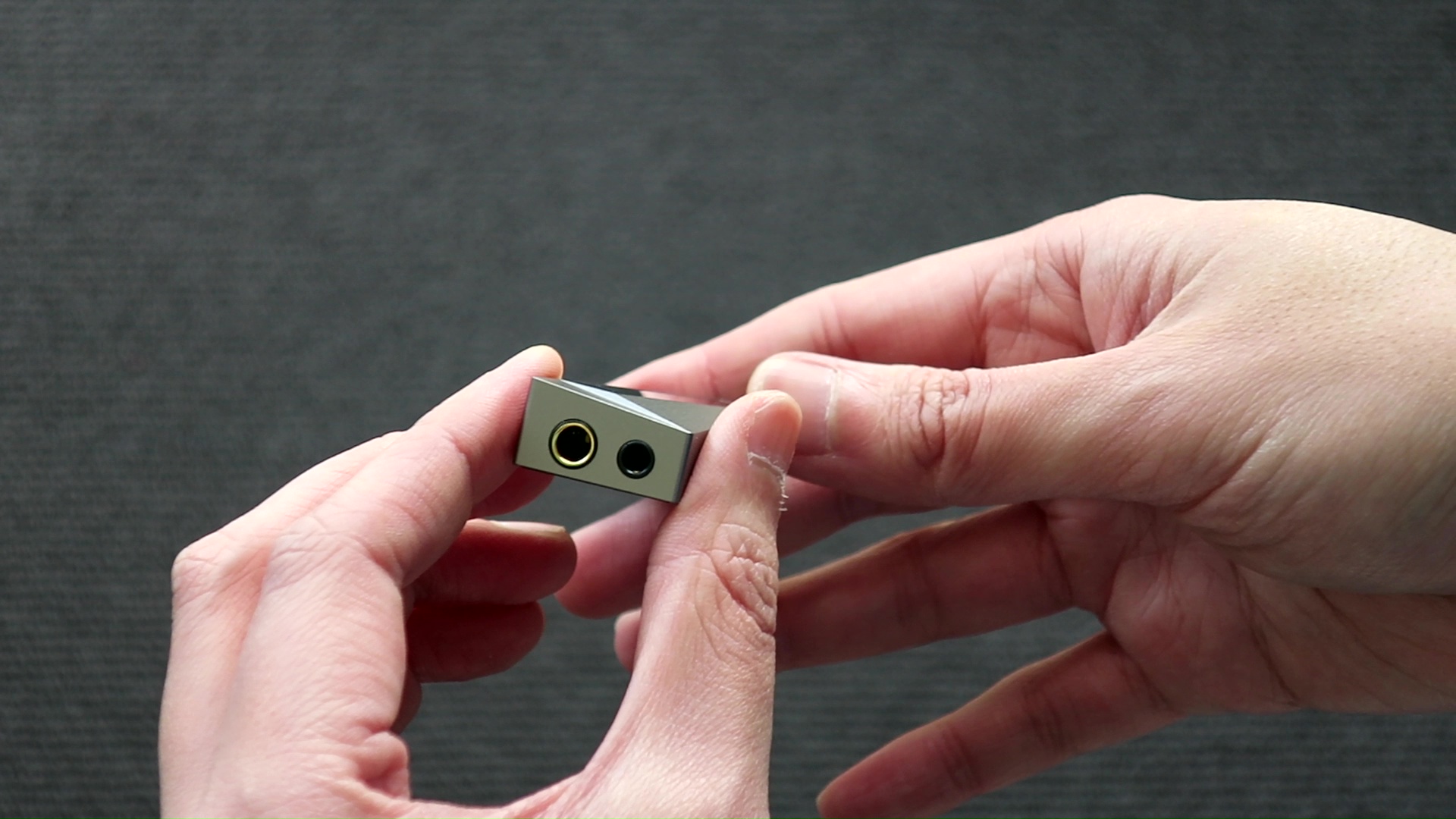
One thing that immediately caught my attention when unboxing W4 was its size - it was quite large compared to other dongles in my collection, even bigger than the FiiO KA3 with a similar output configuration. Another highlight was the overall design and construction. The W4’s appearance impressed me with its chisel cuts, clean corners, and angled screen at the front, giving it a more premium look.
The W4’s features are controlled through a volume knob, which also doubles as a button. I didn’t find much need to use this button, except to explore the different settings it offered when I first unboxed the device. The dongle provides options for low-pass filters, generic and IEM-specific EQ profiles, as well as two tuning types that produce distinct sound signatures and soundstage presentations. I opted for the setting that diffused the soundstage center more, as I like larger soundstage.
According to L&P, one of the key advantages of the W4 is its reduced power drain. I found this claim to be quite accurate, as the dongle only drained my old iPhone XR by 15% per hour while watching YouTube. However, the idle battery drain was disappointingly high, with 65% of the battery being depleted overnight when the dongle remained attached to the iPhone XR without any active apps running.

In terms of usability, the W4 inherits the ergonomic disadvantages typical of the dongle form factor. It tends to dangle from the lightning or USB-C port of your device, leading to a tangled mess of cables and occasional disconnection if things are not securely in place. The presence of a volume knob further complicates matters, as it can be challenging to adjust blindly when the dongle is in your pocket.
As for compatibility, I had no major issues using the W4 with various devices, including old Android phones, Windows laptops, MacBooks, iPads, and iPhones. However, there was a slight hiccup with the iPhone’s stock cable, which worked flawlessly with the lightning cable from FiiO. Nevertheless, I must mention that the next reviewer in the tour reported that the W4 stopped working with their iPhone, so this is something potential buyers should be aware of. In general, iPhones can be a bit unpredictable with USB dongles, and it’s not entirely L&P’s fault if compatibility issues arise.
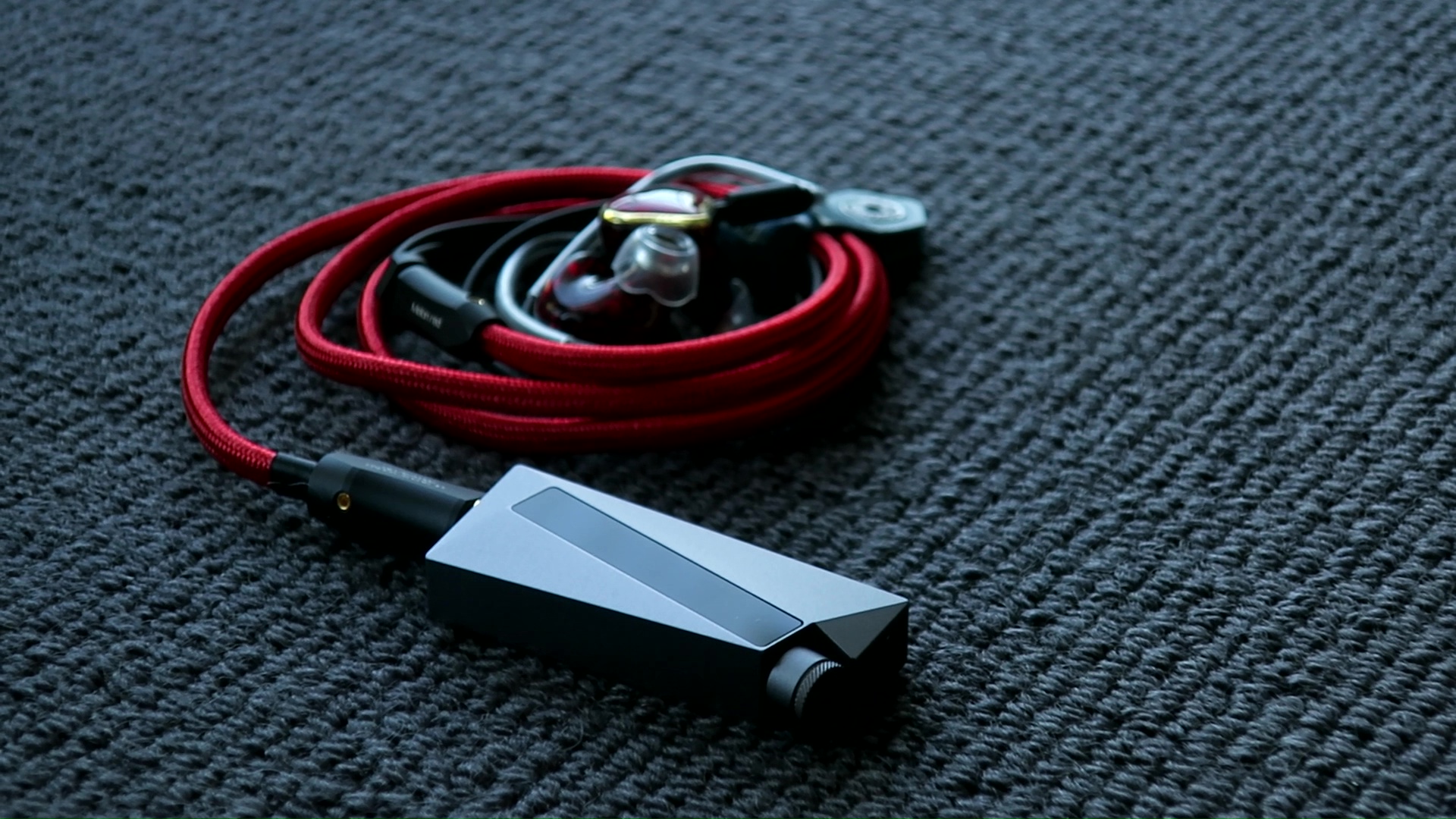
Perceived Tonality The tonality of the W4 leaves a positive impression on me, and it bears some resemblance to the Apple dongle in a favorable way. When listening to the W4 on its own, I find its overall tonality to be “natural” without any particular elements standing out prominently. It doesn’t add noticeable warmth or thickness to the vocals and instruments, aiming for a more faithful representation of the music.
However, when I directly compare the W4 to certain dongles with bright and dry tonal characteristics, most of which happen to use ESS DAC chips, I do notice a slight deviation. The W4 exhibits a somewhat warmer tonality with some extra energy in the lower-mid and midbass regions. On the higher end of the frequency spectrum, the upper midrange doesn’t come across as overly bright, and the treble lacks any harshness or glare.
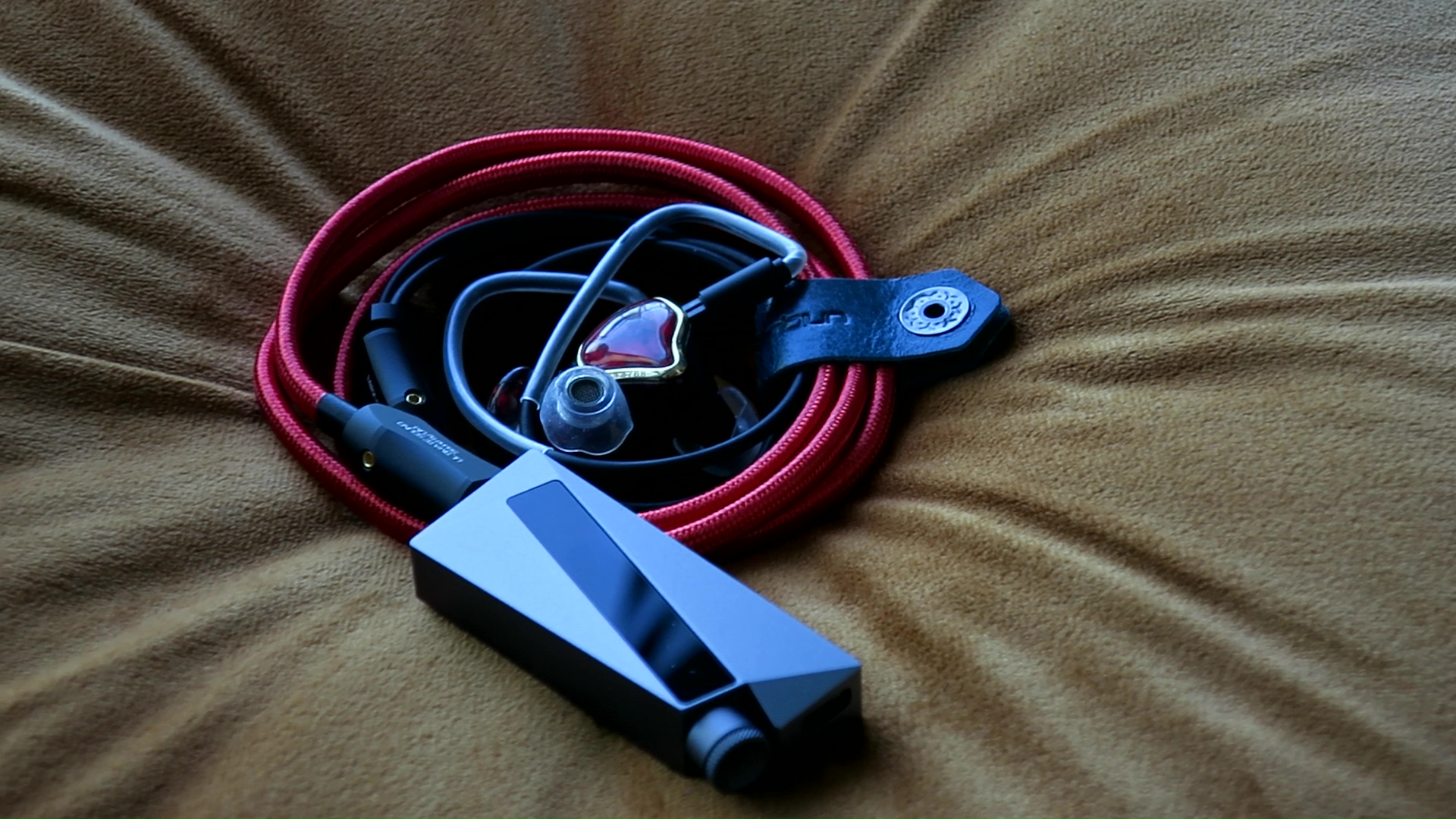
Perceived Technical Performance As I primarily use IEM, I prefer to maximize the limited soundstage and dynamic of these device to mimic a “larger” listening experience. Most USB-powered dongles tend to be limited in terms of soundstage expansion and dynamics in comparison to external-powered devices and desktop setups. Therefore, I have moved away from the “dongle life.”
However, the W4 defies the usual trend for dongles in a pleasant surprise. I was delighted to find that the W4 manages to maintain the soundstage size of most of my IEMs quite well, even when compared to my desktop DAC/amp setup like the FiiO K7 or the Shanling M6 Ultra music player, both of which I consider decent in terms of soundstage performance.
The dynamic performance of the W4 also impressed me. With few exceptions for the most demanding IEMs and earbuds, the W4 reproduces rapid volume swings (referred to as “slam”) at the start of bass notes almost as effectively as my larger setups. Furthermore, it demonstrates better control and detail in the lower frequencies, resulting in improved texture and pitch accuracy for instruments like the bass guitar.
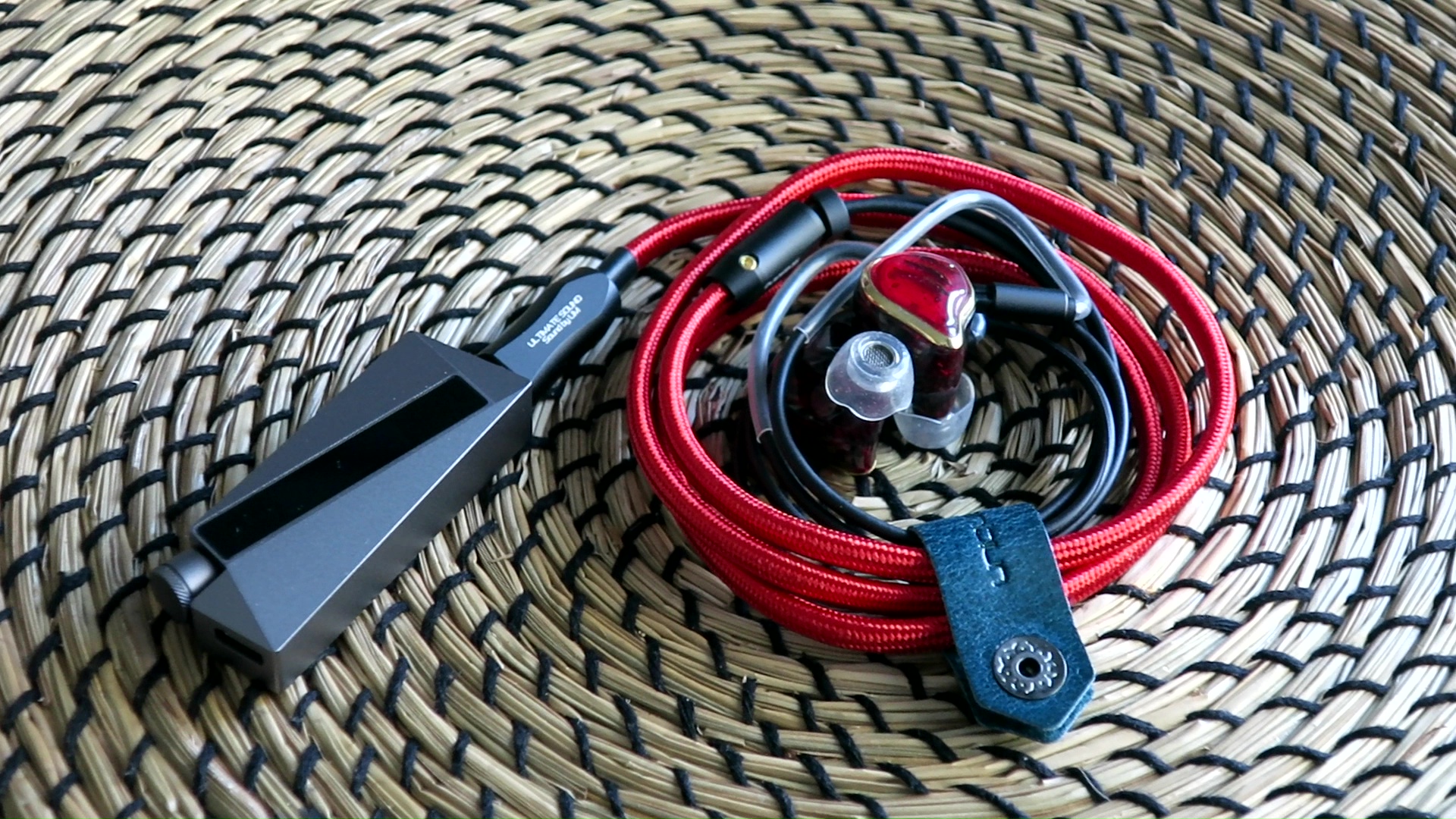
Easy IEMs: Testing the W4 with easy-to-drive IEMs like the 64 Audio U12T is always my first step when evaluating any new audio source that comes my way for review. The U12T falls within the amplification sweet spot of the Apple dongle, which typically handles these IEMs well, and improvements from other sources are usually subtle. For this comparison, I selected the FiiO KA3 as my “baseline” dongle.
With the KA3, I noticed that when listening to “Livin’ On a Prayer” by Bon Jovi, the voices and instruments felt aggressive and pushed toward the listener, creating a sensation of a bump around 1.25kHz. Consequently, the soundstage felt flat and upfront, and the cymbals and hats exhibited a metallic and piercing quality. The bass guitar lacked presence and texture, making it challenging to follow.
Upon switching to the W4, I immediately observed a difference. The voices and instruments no longer felt in-your-face, and as a result, the soundstage gained proper depth and layering. The cymbals and hats still had a metallic quality, but it was less piercing and uncomfortable. Though the bass guitar still lacked some presence, I could now perceive the low-pitched rumble and texture.
Further upgrading to the DX300, I noticed yet another improvement in soundstage projection. The stage felt expanded, encompassing the head like a dome from the opening notes. The cymbals and hats lost their metallic timbre and gained more nuances and details. Interestingly, I found it easier to follow the notes of the bass guitar with the DX300.
At this point, the comparison seemed to favor the W4, positioning it between a good dongle and a full-sized, high-end music player in terms of performance. However, to make the assessment more comprehensive, I introduced another well-performing dongle, the Hidizs XO, for further comparison. Surprisingly, I discovered that the stage shape of the XO was very similar to the W4, and in fact, the XO seemed to provide even more space between instruments. However, the midrange on the XO sounded brighter, and this difference may be the root cause of the variation in their presentations.
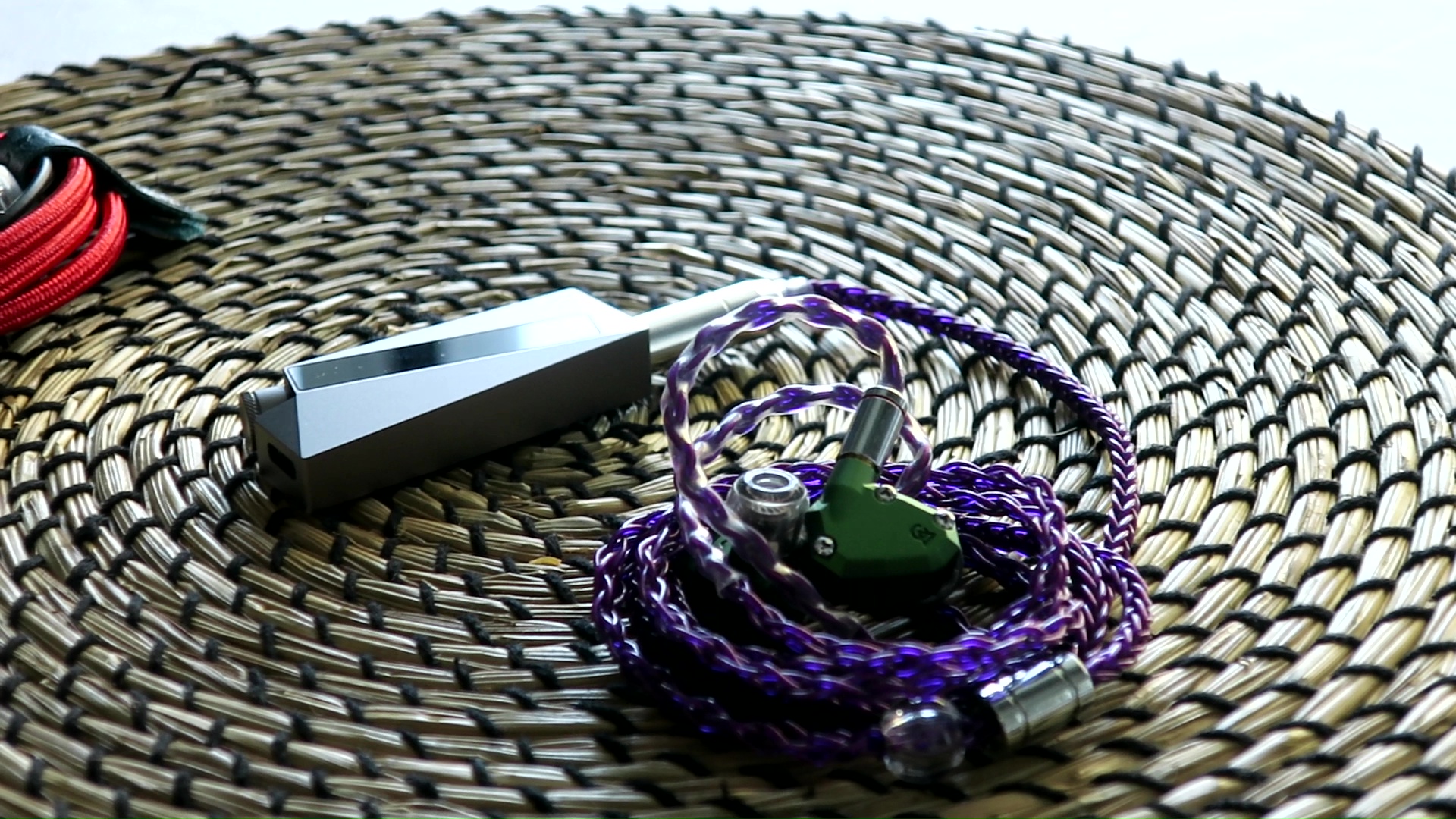
Low-impedance, high-sensitivity IEMs: Moving on to the next test, I evaluate the W4’s performance with the Campfire Audio Andromeda 2020, known for its hypersensitivity and finicky nature. To begin, I use the FiiO KA3 with the Andromeda 2020 through its balanced output. Listening to “Let the Battles Begin!” by Square Enix Music and Nobuo Uematsu, I notice a faint hissing noise in the background, which affects the overall experience. The KA3’s presentation pushes the soundstage forward, diminishing the sense of depth and the 3D illusion. The midrange also feels somewhat muddy and foggy, failing to showcase the Andromeda’s true capabilities. As a result, this pairing makes the Andromeda sound rather ordinary, lacking that special quality I expect.
Switching to the W4, I’m pleased to find a dead quiet background. This, coupled with the tuning, allows the Andromeda to shine with a notably stronger sense of depth, accurately placing instruments at varying distances from the listener. Additionally, the midrange becomes cleaner and more defined, and there’s a slight boost in dynamic swing, leading to a better overall pairing between the two.
Transitioning to the DX300, one of the first things I notice is the loss of the previously dark background. When the music stops, there’s a slight hiss before the amp turns off. In terms of dynamic performance, it remains mostly consistent with what I experienced with the W4. However, the soundstage feels wider compared to the W4, with sounds appearing to be pushed further away from the ears, creating a more encompassing dome-like effect around the head.
To further complicate the comparison, I introduce the Hidizs XO into the mix. Similar to the W4, the XO maintains a dark and clean background. The expansion of the soundstage is also quite similar to the W4. However, I find that the XO’s midrange feels thinner, and the overall dynamic performance is not as strong as what I observed with the W4.

Low-impedance, low-sensitivity IEM: In this test, I evaluate the W4’s performance with the Final Audio E5000, which is a challenging IEM to drive due to its low impedance, low sensitivity, and significant bass boost. Starting with the FiiO KA3, I listen to “G.O.A.T.” by Polyphia and notice that the bass presence is there, but it feels fuzzy around the attacking edge. This fuzziness extends to the midrange, where I detect an odd artifact, almost like a “mist” or “fog,” adding a peculiar “echo” to the lower midrange. Though faint, once noticed, it becomes hard to ignore and may be related to some form of distortion. On the positive side, the furthest background layer of the soundstage remains properly expanded, creating a sense of space and distance.
Upon switching to the W4, I immediately observe that the odd artifact heard with the KA3 is gone. The midrange cleans up nicely, and most of the fuzziness disappears. The attack edge of slams from 0:40 onwards also becomes cleaner, although it still lacks ultimate sharpness.
Switching to the DX300 represents a significant leap in performance. The E5000 now finally slams with a rock-solid and sharp attacking edge. The midrange sounds crisp and clean, and there’s a noticeably stronger sense of depth. While it doesn’t feel too loud, instruments seem to project forward with more space between them. This level of performance is on par with what I experience when using the E5000 with my desktop setup.
To further compare with the W4, I introduce the Hidizs XO into the mix. Interestingly, the XO falls noticeably behind the W4. It fails to produce a noticeable slam, and all the instruments feel more closed in. The midrange is not particularly clean, though it doesn’t suffer from fuzziness like the KA3. Thankfully, there is no odd artifact similar to what I experienced with the KA3. This comparison serves to highlight the prowess of the amp stage of the W4.
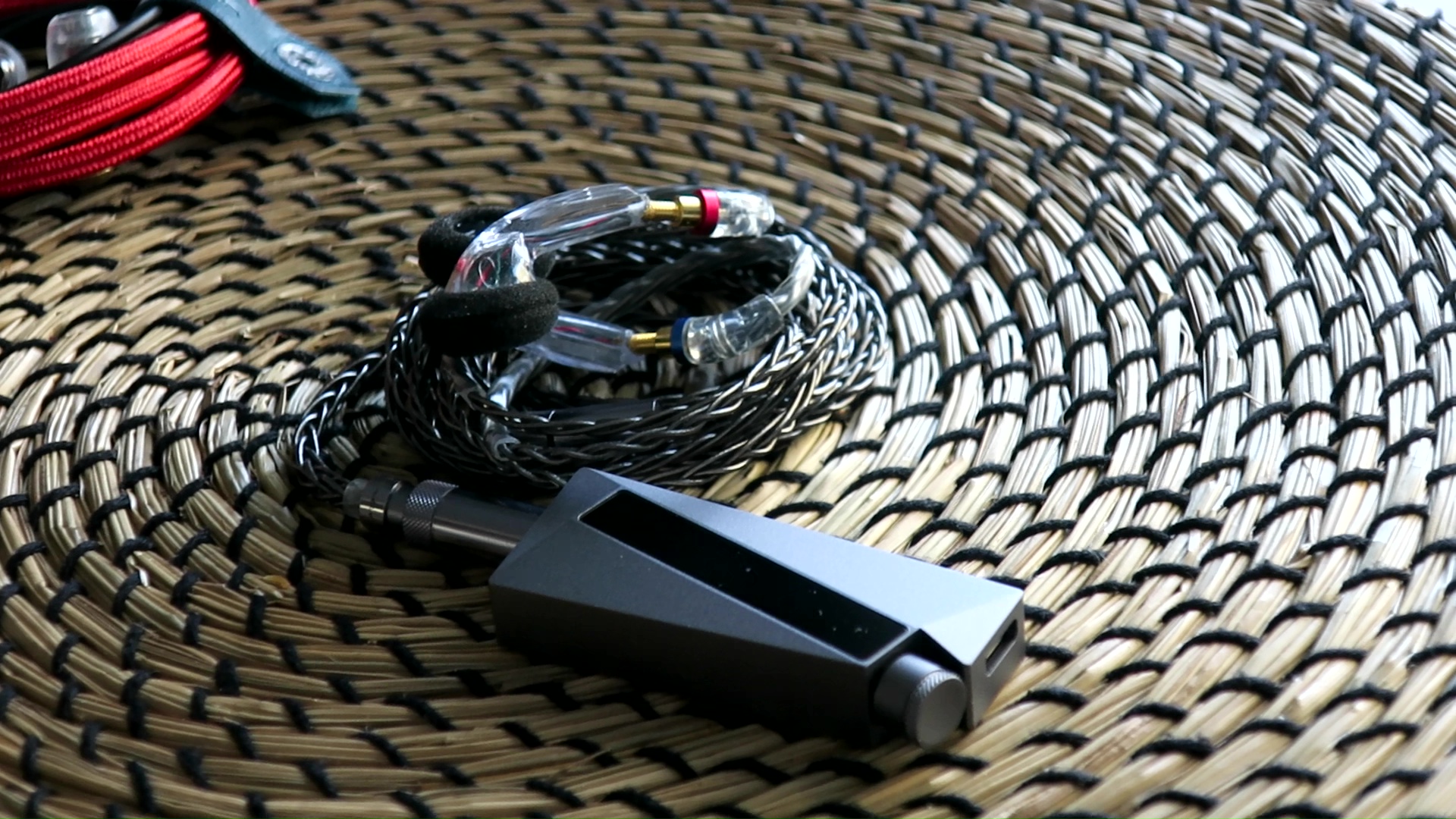
High-impedance transducers: For the final test, I evaluate the W4’s performance with my DIY earbuds featuring a 300-ohm LCP driver. Using the FiiO KA3, I listen to “Hotel California” (Live On MTV, 1994) and find that the soundstage appears flat, with midrange vocals and instruments pushed forward, almost converging into a wall of sound. The tonality seems unbalanced towards the upper frequencies, resulting in slightly thinner and harsher vocals.
Upon switching to the W4, I notice a more balanced and “rounder” tonality, which enhances the richness and enjoyability of voices and instruments. The improved balance also brings out stronger dynamic swings during the attack of bass notes. Additionally, I find that the soundstage feels rounder with a proper sense of depth. However, it doesn’t feel fully expanded, as the focus remains centered on the stage.
Transitioning to the DX300, I can discern slightly more nuances and details, particularly in the opening guitar and hand drums. The soundstage sees significant improvement, with a larger and more expansive presentation that extends further into the environment around me. The instruments on the stage also appear larger, contributing to an overall sense of grandeur that surpasses that of regular IEMs. Furthermore, the DX300 excels in creating a stronger sense of layering compared to any of the dongles tested.
Finally, I compare the W4 with the Hidizs XO. The stage of the XO feels larger but flatter compared to the W4. The tonality of the XO is noticeably colder, and the opening bass lacks the punchiness found in the W4. Overall, the sense of dynamic with the XO is somewhat weak in comparison.
Of course, the elephant in the room in the price, which can match entry-level Android-based DAP. With W4, L&P helps you to make the decision by taking the sonic difference out of the picture. The question is what type of devil that you are willing to accept: bringing and managing an additional device or draining your phone’s battery for music. There is no right or wrong choice, just preference.
Pros:
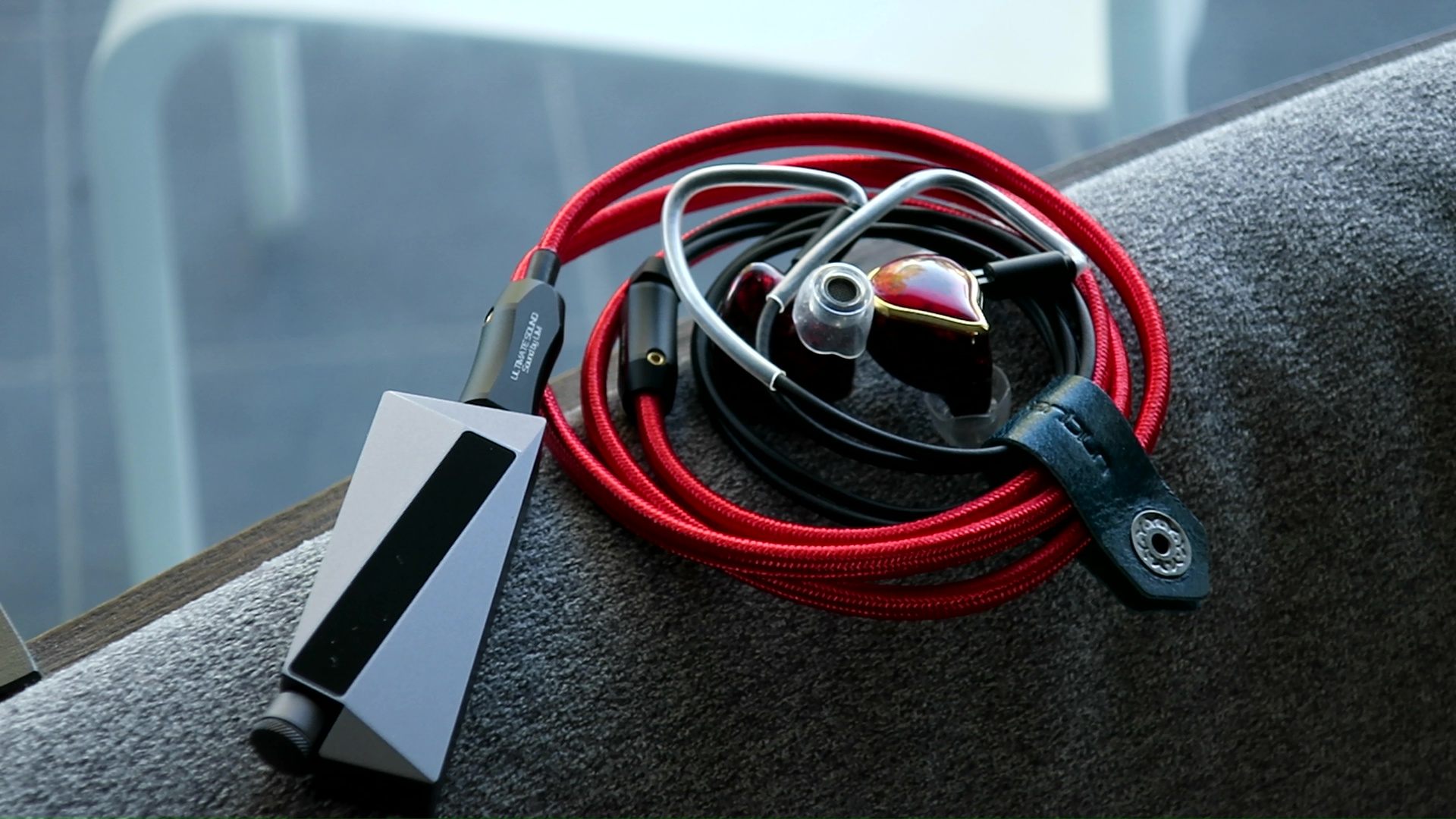
Updated: July 29, 2023
Preambles:
- In this review, I use the term “source” to denote a DAC+amp combo for brevity and convenience.
- Sources do not make sounds. Therefore, when I say sources “sound” a certain way, I talk about the change they make to my IEMs and earphones.
- I want my music to be crisp, clear, well-separated and form a 3D soundstage around my head. Sources that intensify those characteristics of my IEMs are considered “better”.
- This review is possible thanks to the Australian Head-Fi Tour (Thank you @Damz87 for arranging). The sample of W4 has been sent to the next reviewer in the tour after this review. I have no affiliation with or financial interest in L&P. The unit retails for $449 at MusicTeck.
Specs:
- DAC Chips: LP5108 (In-house designed)
- Output ports: 3.5mm (Single-ended) and 4.4mm (balanced)
- Single-ended output power: 110mW@32ohm per channel@THD+N < 0.01%
- Balanced output power: 420mW@32ohm per channel@THD+N < 0.01%
Non-sound Aspects





W4 came in a nice box with custom foams, which offer strong protection for the content. Inside the box, you can find the W4 and all cables and adapter that you need to connect W4 to any phone, computer, or tablet.




One thing that immediately caught my attention when unboxing W4 was its size - it was quite large compared to other dongles in my collection, even bigger than the FiiO KA3 with a similar output configuration. Another highlight was the overall design and construction. The W4’s appearance impressed me with its chisel cuts, clean corners, and angled screen at the front, giving it a more premium look.
The W4’s features are controlled through a volume knob, which also doubles as a button. I didn’t find much need to use this button, except to explore the different settings it offered when I first unboxed the device. The dongle provides options for low-pass filters, generic and IEM-specific EQ profiles, as well as two tuning types that produce distinct sound signatures and soundstage presentations. I opted for the setting that diffused the soundstage center more, as I like larger soundstage.
According to L&P, one of the key advantages of the W4 is its reduced power drain. I found this claim to be quite accurate, as the dongle only drained my old iPhone XR by 15% per hour while watching YouTube. However, the idle battery drain was disappointingly high, with 65% of the battery being depleted overnight when the dongle remained attached to the iPhone XR without any active apps running.

In terms of usability, the W4 inherits the ergonomic disadvantages typical of the dongle form factor. It tends to dangle from the lightning or USB-C port of your device, leading to a tangled mess of cables and occasional disconnection if things are not securely in place. The presence of a volume knob further complicates matters, as it can be challenging to adjust blindly when the dongle is in your pocket.
As for compatibility, I had no major issues using the W4 with various devices, including old Android phones, Windows laptops, MacBooks, iPads, and iPhones. However, there was a slight hiccup with the iPhone’s stock cable, which worked flawlessly with the lightning cable from FiiO. Nevertheless, I must mention that the next reviewer in the tour reported that the W4 stopped working with their iPhone, so this is something potential buyers should be aware of. In general, iPhones can be a bit unpredictable with USB dongles, and it’s not entirely L&P’s fault if compatibility issues arise.
Sound Performance

Perceived Tonality The tonality of the W4 leaves a positive impression on me, and it bears some resemblance to the Apple dongle in a favorable way. When listening to the W4 on its own, I find its overall tonality to be “natural” without any particular elements standing out prominently. It doesn’t add noticeable warmth or thickness to the vocals and instruments, aiming for a more faithful representation of the music.
However, when I directly compare the W4 to certain dongles with bright and dry tonal characteristics, most of which happen to use ESS DAC chips, I do notice a slight deviation. The W4 exhibits a somewhat warmer tonality with some extra energy in the lower-mid and midbass regions. On the higher end of the frequency spectrum, the upper midrange doesn’t come across as overly bright, and the treble lacks any harshness or glare.

Perceived Technical Performance As I primarily use IEM, I prefer to maximize the limited soundstage and dynamic of these device to mimic a “larger” listening experience. Most USB-powered dongles tend to be limited in terms of soundstage expansion and dynamics in comparison to external-powered devices and desktop setups. Therefore, I have moved away from the “dongle life.”
However, the W4 defies the usual trend for dongles in a pleasant surprise. I was delighted to find that the W4 manages to maintain the soundstage size of most of my IEMs quite well, even when compared to my desktop DAC/amp setup like the FiiO K7 or the Shanling M6 Ultra music player, both of which I consider decent in terms of soundstage performance.
The dynamic performance of the W4 also impressed me. With few exceptions for the most demanding IEMs and earbuds, the W4 reproduces rapid volume swings (referred to as “slam”) at the start of bass notes almost as effectively as my larger setups. Furthermore, it demonstrates better control and detail in the lower frequencies, resulting in improved texture and pitch accuracy for instruments like the bass guitar.
Comparisons and Rating
Gears for A/B tests:- iBasso DX300
- Shanling M6 Ultra
- Topping G5
- FiiO KA3
- Hidizs XO
- 64 Audio U12T
- Andromeda 2020
- Final Audio E5000
- DIY 300ohm earbuds

Easy IEMs: Testing the W4 with easy-to-drive IEMs like the 64 Audio U12T is always my first step when evaluating any new audio source that comes my way for review. The U12T falls within the amplification sweet spot of the Apple dongle, which typically handles these IEMs well, and improvements from other sources are usually subtle. For this comparison, I selected the FiiO KA3 as my “baseline” dongle.
With the KA3, I noticed that when listening to “Livin’ On a Prayer” by Bon Jovi, the voices and instruments felt aggressive and pushed toward the listener, creating a sensation of a bump around 1.25kHz. Consequently, the soundstage felt flat and upfront, and the cymbals and hats exhibited a metallic and piercing quality. The bass guitar lacked presence and texture, making it challenging to follow.
Upon switching to the W4, I immediately observed a difference. The voices and instruments no longer felt in-your-face, and as a result, the soundstage gained proper depth and layering. The cymbals and hats still had a metallic quality, but it was less piercing and uncomfortable. Though the bass guitar still lacked some presence, I could now perceive the low-pitched rumble and texture.
Further upgrading to the DX300, I noticed yet another improvement in soundstage projection. The stage felt expanded, encompassing the head like a dome from the opening notes. The cymbals and hats lost their metallic timbre and gained more nuances and details. Interestingly, I found it easier to follow the notes of the bass guitar with the DX300.
At this point, the comparison seemed to favor the W4, positioning it between a good dongle and a full-sized, high-end music player in terms of performance. However, to make the assessment more comprehensive, I introduced another well-performing dongle, the Hidizs XO, for further comparison. Surprisingly, I discovered that the stage shape of the XO was very similar to the W4, and in fact, the XO seemed to provide even more space between instruments. However, the midrange on the XO sounded brighter, and this difference may be the root cause of the variation in their presentations.

Low-impedance, high-sensitivity IEMs: Moving on to the next test, I evaluate the W4’s performance with the Campfire Audio Andromeda 2020, known for its hypersensitivity and finicky nature. To begin, I use the FiiO KA3 with the Andromeda 2020 through its balanced output. Listening to “Let the Battles Begin!” by Square Enix Music and Nobuo Uematsu, I notice a faint hissing noise in the background, which affects the overall experience. The KA3’s presentation pushes the soundstage forward, diminishing the sense of depth and the 3D illusion. The midrange also feels somewhat muddy and foggy, failing to showcase the Andromeda’s true capabilities. As a result, this pairing makes the Andromeda sound rather ordinary, lacking that special quality I expect.
Switching to the W4, I’m pleased to find a dead quiet background. This, coupled with the tuning, allows the Andromeda to shine with a notably stronger sense of depth, accurately placing instruments at varying distances from the listener. Additionally, the midrange becomes cleaner and more defined, and there’s a slight boost in dynamic swing, leading to a better overall pairing between the two.
Transitioning to the DX300, one of the first things I notice is the loss of the previously dark background. When the music stops, there’s a slight hiss before the amp turns off. In terms of dynamic performance, it remains mostly consistent with what I experienced with the W4. However, the soundstage feels wider compared to the W4, with sounds appearing to be pushed further away from the ears, creating a more encompassing dome-like effect around the head.
To further complicate the comparison, I introduce the Hidizs XO into the mix. Similar to the W4, the XO maintains a dark and clean background. The expansion of the soundstage is also quite similar to the W4. However, I find that the XO’s midrange feels thinner, and the overall dynamic performance is not as strong as what I observed with the W4.

Low-impedance, low-sensitivity IEM: In this test, I evaluate the W4’s performance with the Final Audio E5000, which is a challenging IEM to drive due to its low impedance, low sensitivity, and significant bass boost. Starting with the FiiO KA3, I listen to “G.O.A.T.” by Polyphia and notice that the bass presence is there, but it feels fuzzy around the attacking edge. This fuzziness extends to the midrange, where I detect an odd artifact, almost like a “mist” or “fog,” adding a peculiar “echo” to the lower midrange. Though faint, once noticed, it becomes hard to ignore and may be related to some form of distortion. On the positive side, the furthest background layer of the soundstage remains properly expanded, creating a sense of space and distance.
Upon switching to the W4, I immediately observe that the odd artifact heard with the KA3 is gone. The midrange cleans up nicely, and most of the fuzziness disappears. The attack edge of slams from 0:40 onwards also becomes cleaner, although it still lacks ultimate sharpness.
Switching to the DX300 represents a significant leap in performance. The E5000 now finally slams with a rock-solid and sharp attacking edge. The midrange sounds crisp and clean, and there’s a noticeably stronger sense of depth. While it doesn’t feel too loud, instruments seem to project forward with more space between them. This level of performance is on par with what I experience when using the E5000 with my desktop setup.
To further compare with the W4, I introduce the Hidizs XO into the mix. Interestingly, the XO falls noticeably behind the W4. It fails to produce a noticeable slam, and all the instruments feel more closed in. The midrange is not particularly clean, though it doesn’t suffer from fuzziness like the KA3. Thankfully, there is no odd artifact similar to what I experienced with the KA3. This comparison serves to highlight the prowess of the amp stage of the W4.

High-impedance transducers: For the final test, I evaluate the W4’s performance with my DIY earbuds featuring a 300-ohm LCP driver. Using the FiiO KA3, I listen to “Hotel California” (Live On MTV, 1994) and find that the soundstage appears flat, with midrange vocals and instruments pushed forward, almost converging into a wall of sound. The tonality seems unbalanced towards the upper frequencies, resulting in slightly thinner and harsher vocals.
Upon switching to the W4, I notice a more balanced and “rounder” tonality, which enhances the richness and enjoyability of voices and instruments. The improved balance also brings out stronger dynamic swings during the attack of bass notes. Additionally, I find that the soundstage feels rounder with a proper sense of depth. However, it doesn’t feel fully expanded, as the focus remains centered on the stage.
Transitioning to the DX300, I can discern slightly more nuances and details, particularly in the opening guitar and hand drums. The soundstage sees significant improvement, with a larger and more expansive presentation that extends further into the environment around me. The instruments on the stage also appear larger, contributing to an overall sense of grandeur that surpasses that of regular IEMs. Furthermore, the DX300 excels in creating a stronger sense of layering compared to any of the dongles tested.
Finally, I compare the W4 with the Hidizs XO. The stage of the XO feels larger but flatter compared to the W4. The tonality of the XO is noticeably colder, and the opening bass lacks the punchiness found in the W4. Overall, the sense of dynamic with the XO is somewhat weak in comparison.
Conclusion
With W4, L&P promises you a DAP-like performance and charges you a DAP-like price tag. I found that W4 mostly delivers on the promise, especially if you stick to easy to drive IEMs. It offers a neutral and natural tonality, making it more versatile in pairing with IEMs. The soundstage expansion and dynamic wouldn’t make you miss a proper DAP or portable amp too much.Of course, the elephant in the room in the price, which can match entry-level Android-based DAP. With W4, L&P helps you to make the decision by taking the sonic difference out of the picture. The question is what type of devil that you are willing to accept: bringing and managing an additional device or draining your phone’s battery for music. There is no right or wrong choice, just preference.
Pros:
- Neutral and versatile tonality
- Great soundstage expansion and dynamic for a dongle
- Great design and build quality
- Idle battery drain
- Potential compatibility issue with iOS
- Price

Updated: July 29, 2023
Ferdinando1968
How much work you did ..
bravo and congratulations.
bravo and congratulations.
o0genesis0o
Headphoneus Supremus
Pros: + Interesting yet refined tonality
+ Versatile tuning system
+ Great bass response
+ Great technical performance
+ Great fit and comfort
+ Versatile tuning system
+ Great bass response
+ Great technical performance
+ Great fit and comfort
Cons: - The turbo mode is not that usable besides some niche cases
- Attacks of bass notes could be sharper
- Attacks of bass notes could be sharper
Today, we talk about Turbo, an IEM with 6 Balanced Armature (BA) drivers and 4 tuning switches from the audio retailer and manufacturer Penon.

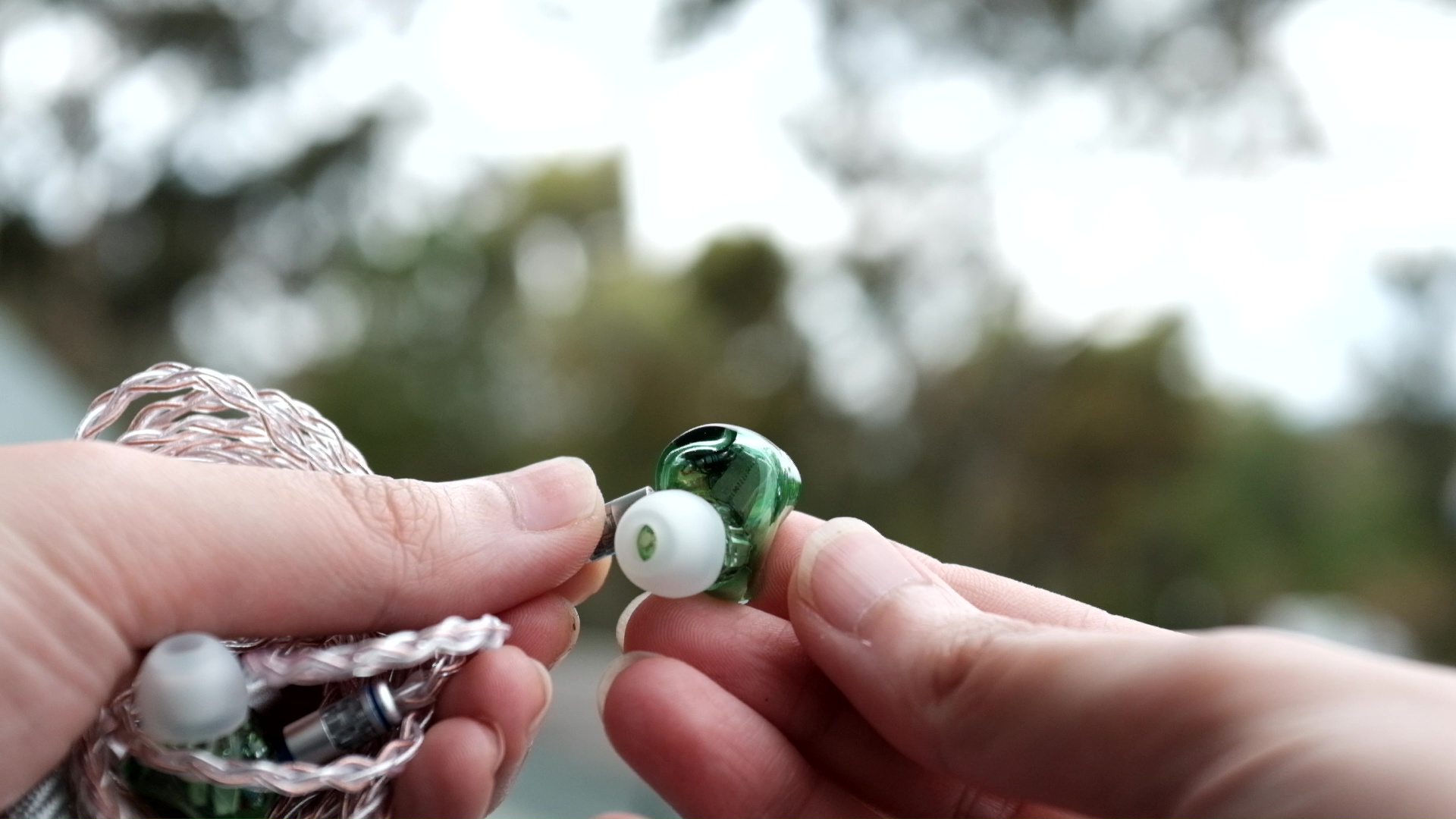


Turbo feature transparent and hollow acrylic shells similarly to handmade custom IEM (CIEM). The construction of the earpieces looks and feels better than the hollow injection moulded shells used by many budget IEMs. At the same time, it is lighter than the dense 3D printed shells increasingly used by mid- and high-end IEMs with multiple drivers. Interestingly, there are pressure release vents on the earpieces.
Similarly to most handmade CIEM, Turbo have acrylic moulded nozzles rather than standalone metal nozzles. The nozzles of Turbo are medium in both length and width, with lips to prevent the eartips from falling off.
How does Turbo sound?

Before going into details, it’s important that we discuss about the tuning system of Turbo. The system comprises 4 switches, including 1 standalone “turbo” switch and 3 switches labelled from 1 to 3. In this article, I will use the text string 0-000 to denote a switch combination (0 means off or down). Even though there are 4 switches, there are only 5 sound signature:

The first test track was “Now We Are Free” performed by 2Cellos. Why this track, you might ask? I picked this track because it is a nightmare for most IEMs with warmer sound signature: the combination of two cellos and the the cello section of the orchestra can quickly “clog” up the lower frequencies and collapse any illusion of separation and details. Turbo does a good job, though not perfect, with this track. From the first note of the cellos, I was immediately satisfied by the rich and rather pleasing tonality of the cellos. The success in tonality can be found in other instruments in the orchestra as well. Turbo also showcases good instrument placement, particularly the depth contrast between closer and further away sounds, such as the contrast between the cellos at the front and violins at the back at around 1:20 mark.

Where Turbo faltered was the instrument separation. For example, around the 2:00 mark of the track, I found myself subconsciously hold my breath because I needed to focus harder to try and separate the increasingly congested midrange. On the plus side, other warm IEMs in my collection, such as the Symphonium Meteor and the Campfire Audio Andromeda 2020, suffer as much as Turbo, if not more. The only way to avoid this congestion entirely seems to rely on a change in frequency response. For instance, by slightly reduce the energy in the lower-midrange region, AFUL MagicOne can cruise through this track without any congestion.
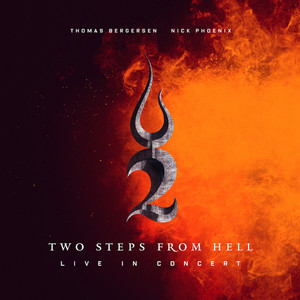
Since Turbo’s calling card is the bass, the focus for my next analysis was bass response. The test track for this analysis was “Victory” from the live performance by Two Steps from Hell. Turbo does an excellent job at the placing the audience’s cheers at the beginning of the track, creating a realistic sensation as if the sound is located around in the room, around me. On this aspect, Turbo does as well as the soundstage specialist Andromeda 2020.
The bass line of Turbo has satisfying thickness, rumble, and decay. To use a more vague term, I would say the Turbo can “slam.” My only criticism here is that the bass notes lack a sharp and clean leading edge. It means that if you prefer your bass to sound snappy and “fast,” you might find the bass to be slightly blunted. However, the bass of Turbo is still carried by BA woofers and thus is never as gooey and “slow” as a less-than-ideal dynamic driver implementation.

Another surprising win for Turbo is the resolution. Simply put, this IEM can pull good details in the midrange. For instance, the vocals around 02:30 mark can match, if not outright exceed, the level of details, textures, and nuances revealed by the Andromeda 2020. One would expect that this level of performance is commonplace in 2024, yet I have rarely seen it, and thus I am quite impressed.

For the last track, we analyse the vocal performance of Turbo by listening to “Can’t Help Falling In Love” performed by Pentatonix. This analysis is rather simple. Turbo renders all vocals with a pleasing and slightly warm tonality. Again, this IEM trades blow with the Andromeda 2020 in terms of the separations of the voices and the texture and nuances within each voice. In a direct A/B test, I found Turbo to comfortably out-resolve the AFUL MagicOne, one of my favourite IEMs with strong technical chops.
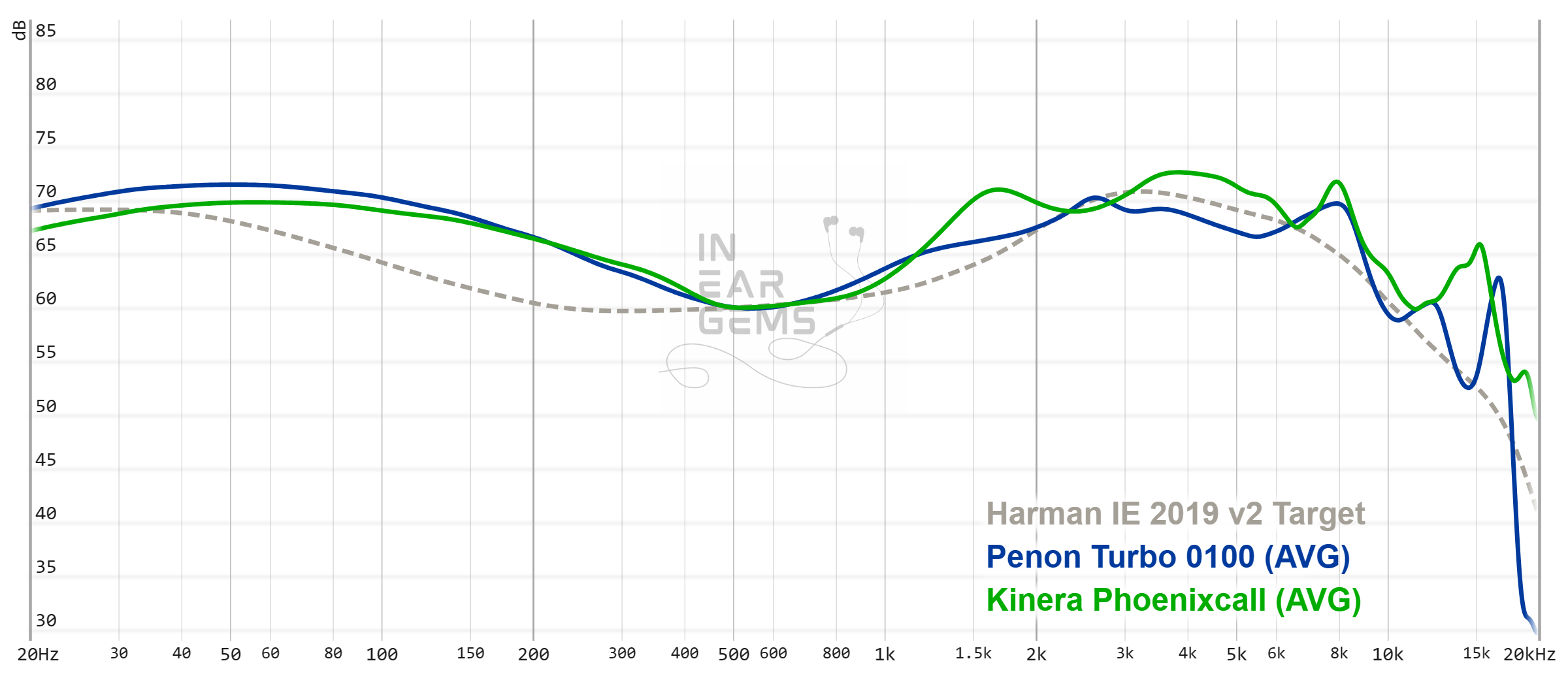
It is helpful to think of an IEM as a filter that highlights or subdues different parts of the incoming audio signal. This effect can be measured objectively by the squiggly lines above, called Frequency Response (FR) graphs, which measure how loud an IEM is at different frequencies from 20Hz (bass) to 20kHz (upper treble). Subjectivity is how your ears and brain interpret the effect of that filter on your music and decide whether it is “enjoyable.” There are some “rules of thumb” when it comes to tonality, but most interesting IEMs usually bend the rules masterfully.
As the subjective listening experience suggested, Turbo is a V-shaped IEM that can have anywhere from substantial to unreasonable amount of bass. Interestingly, the frequencies from 500Hz up are quite cleverly tuned. There is a subtle boost from around 1kHz to push the midrange forward, avoiding it from being buried under the mountain of bass. At the same time, Penon ensured that the ear-gain compensation peak of Turbo is placed at the right place, just above 2.5kHz. This tuning choice ensures that the midrange of Turbo sounds natural with just enough “bite.”

The treble was also cleverly done. As suggested by most objective target, Turbo gently rolls off the treble after the upper midrange peak. However, the IEM does maintain an adequate energy level around 8kHz region to ensure that the transients sound crisp.
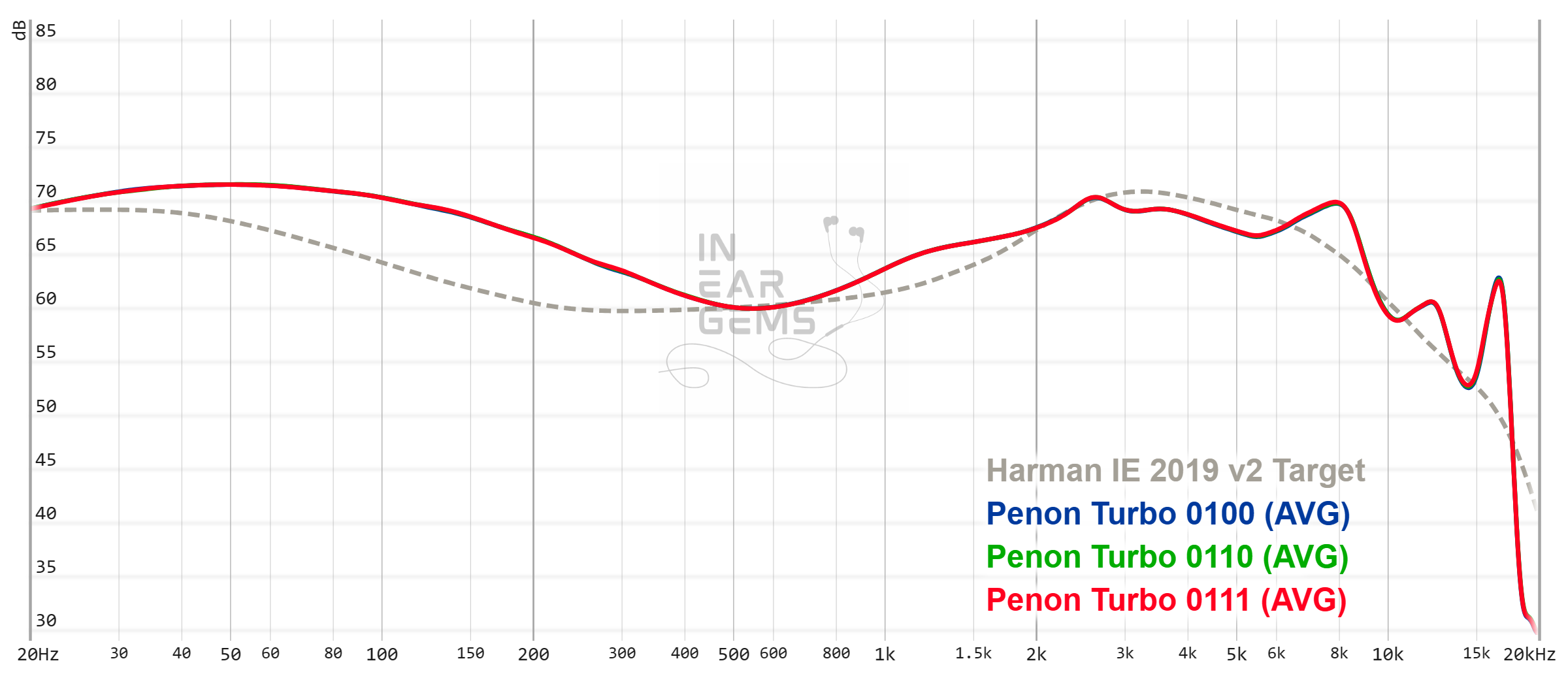
Why do 4 tuning switches create only 5 signatures? I guess I owe you a proof. Above is the frequency response measurements of three switches configurations (0100, 0110, 0111), measured with the same equipment and configuration. As you can see, there is zero difference. The same situation can be found with other switch configurations, reducing the total number of signatures to 5. Below is the graphs of all five signatures, aligned at 1kHz.
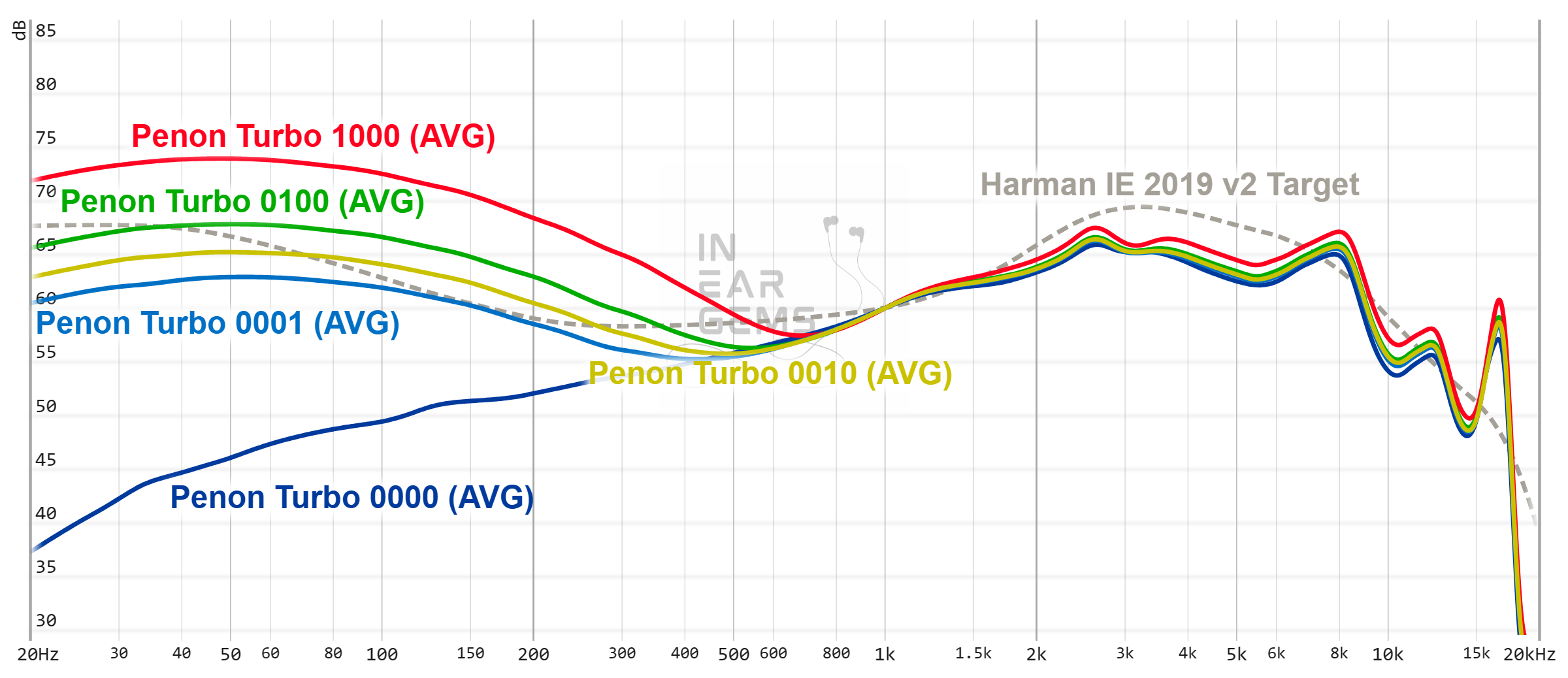

Resolution is a fascinating subject due to the difficulty of pinning down what it really is. To me, “resolution” can be broken down into three components: (1) Sharpness, incisiveness, or “definition” of note attacks (see the figure above). (2) The separation of instruments and vocals, especially when they overlap on the soundstage. (3) The texture and details in the decay side of the notes. The first two give music clarity and make it easy to track individual elements of a mix. The last provides music details and nuances. Smooth and well extended treble response plays a crucial role.
As I mentioned in the subjective experience, Turbo trades blow with and, in some cases, out-resolves the Campfire Andromeda 2020, my benchmark for “great” level of resolution. In fact, due to the tuning choice and stronger emphasis in the upper midrange, you might find Turbo sound much clearer than the Andromeda 2020, though the level of details and separation are roughly the same when paying attention. I would consider Turbo to be “great” in terms of resolution (4/5).

Stereo imaging or “soundstage” is a psychoacoustic illusion that different recording elements appear at various locations inside and around your head. Your brain creates based on the cues in the recording, which are enhanced or diminushed by your IEMs, your DAC, and your amplifier. Some IEMs present a wide but flat soundstage. Some present a “3D” soundstage with layering, depth, and height. In rare cases, with some specific songs, some IEMs can trick you into thinking that the sound comes from the environment (a.k.a., “holographic”)
The theme of great technical performance continues. As I mentioned in the subjective experience, Turbo has the ability to place and layering instruments to keep up with the venerable Andromeda 2020. The Andromeda still has a slight edge in terms of the shape and structure of the stage, though I don’t find that difference to be practically significant. I do wish that the soundstage can be even more open and airy, though I don’t think such a stage can be achieved with the tuning choice of the Turbo. All in all, I consider the soundstage imaging of Turbo to be “great” (4/5)
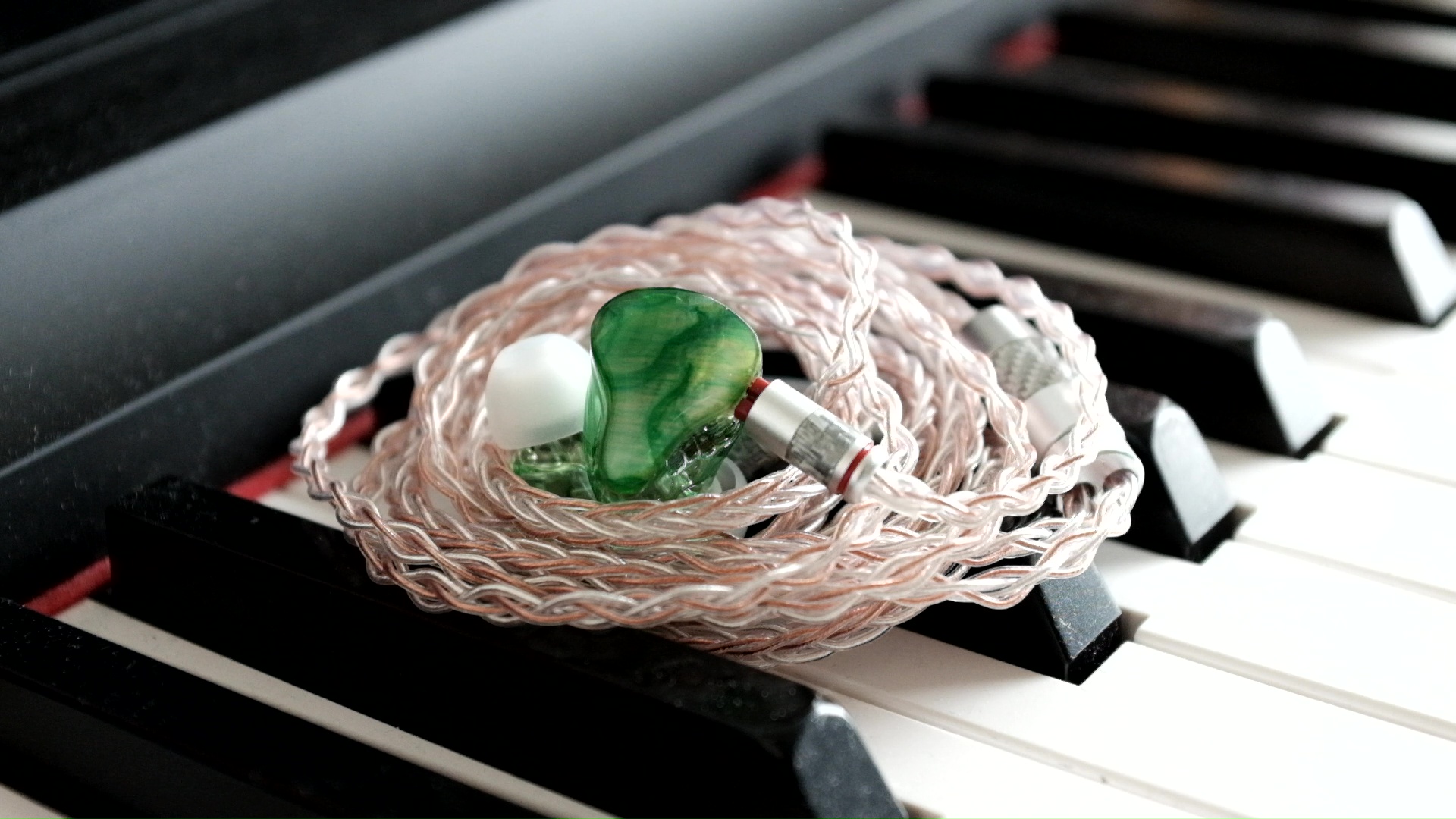
I must admit that I approached Turbo with a fair share of scepticism due to various factors. However, I was pleasantly surprised that not only my scepticism was overturned, my expectations were exceeded. Turbo is a well-crafted, versatile, and technically competent IEM that has been tuned with character. If you are looking for the “next step” IEM, Turbo receives a recommendation from this reviewer.
Absolute Sonic Quality Rating: 4.5/5 (Tonality: 4/5; Resolution: 4/5; Spatial: 4/5; Bass and Dynamic: 5/5)
Bias Score: 4/5 (I like this IEM)
Value proposition: Very high
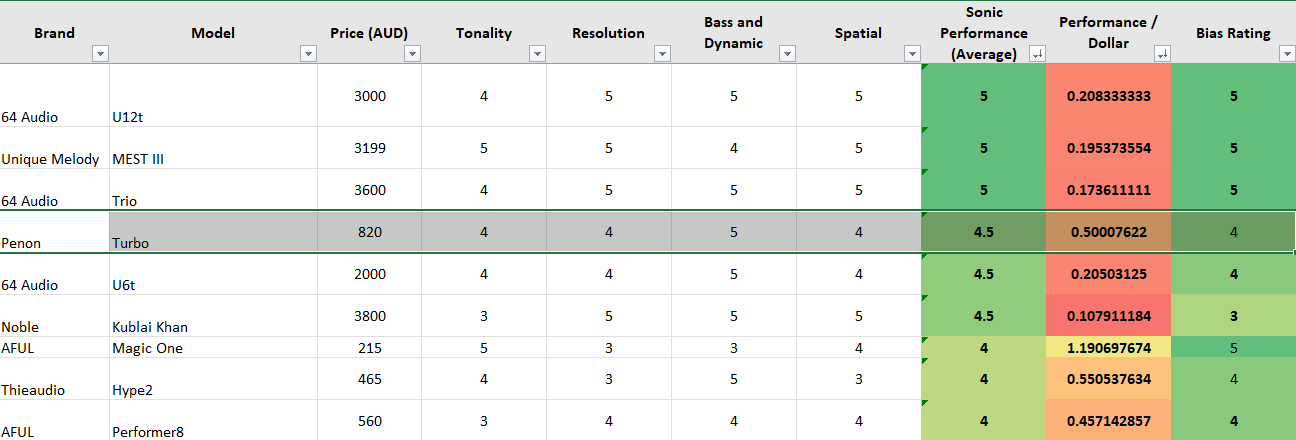
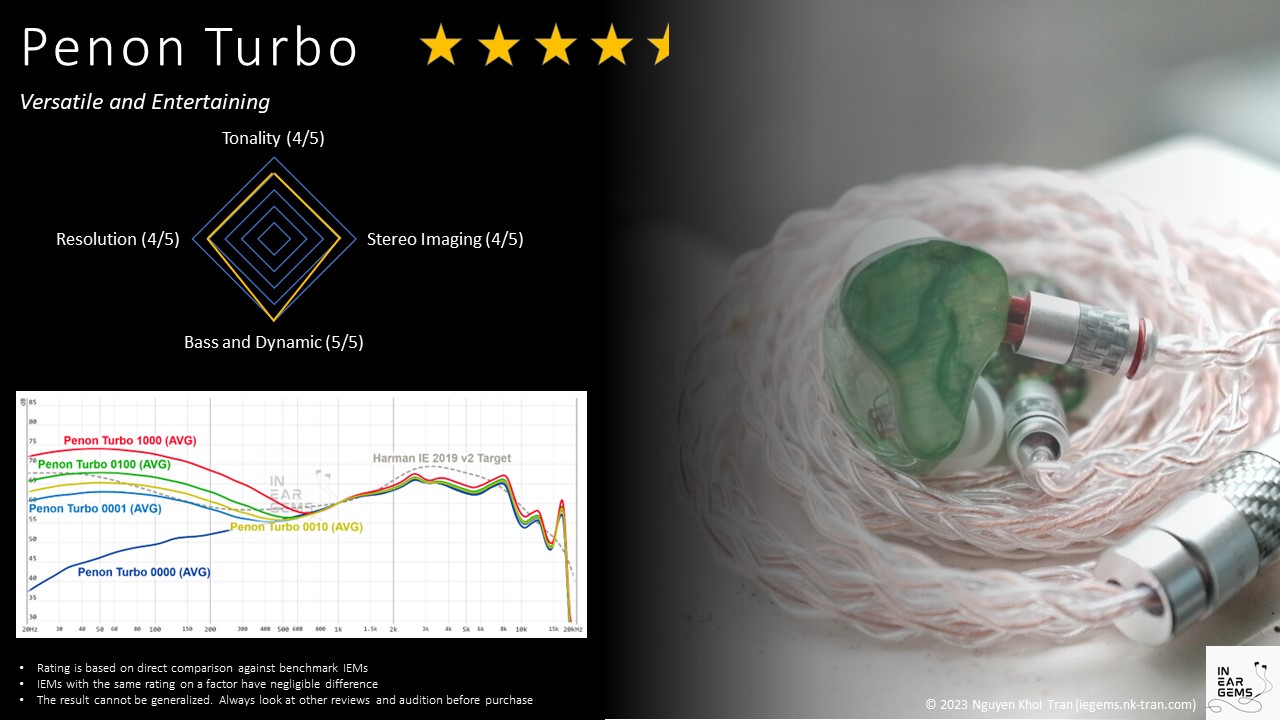
Updated: January 7, 2024

Forewords
- What I look for in an IEM is immersion. I want to feel the orchestra around me, track individual instruments, and hear all of their textures and details. I’m not picky about tonality, as long as it does not get in the way of immersion.
- I rate IEMs within with a consistent scale from 1 (poor) to 3 (Adequate) to 5 (outstanding). Ratings are assigned by A/B tests against benchmark IEMs, regardless of the retail price.
- Ranking list and measurement database are on my IEM review blog.
- Terms used in my reviews are consistent with the glossary by Headphonesty
- The IEM used in this review was privately sourced. This review is not supported, enabled, or coordinated by Penon in any shape and form.
- The unit retails for $550 at the time this review was published.
Non-sound Aspects



Turbo feature transparent and hollow acrylic shells similarly to handmade custom IEM (CIEM). The construction of the earpieces looks and feels better than the hollow injection moulded shells used by many budget IEMs. At the same time, it is lighter than the dense 3D printed shells increasingly used by mid- and high-end IEMs with multiple drivers. Interestingly, there are pressure release vents on the earpieces.
Similarly to most handmade CIEM, Turbo have acrylic moulded nozzles rather than standalone metal nozzles. The nozzles of Turbo are medium in both length and width, with lips to prevent the eartips from falling off.
Subjective Experience
As usual, we start our discussion of the subjective experience with fit and comfort. Thanks to the small and light shells and medium nozzles, Turbo is a very comfortable IEM. For this kind of IEM shells, your comfort would depend solely on your choice of eartips. I settled for CP100 ear tips in medium size. With this combination, I achieved great comfort in long listening sessions.How does Turbo sound?

Before going into details, it’s important that we discuss about the tuning system of Turbo. The system comprises 4 switches, including 1 standalone “turbo” switch and 3 switches labelled from 1 to 3. In this article, I will use the text string 0-000 to denote a switch combination (0 means off or down). Even though there are 4 switches, there are only 5 sound signature:
- TURBO bass (1-xxx): The bass dominates the entire frequency spectrum. The bass boost extends well into the midrange. I don’t find this signature to be usable.
- MOAR bass (0-1xx): The preferred signature as per Penon’s website. Coincidentally, I also prefer this signature. The bass is noticeably boosted in this configuration, though the tonal balance is not as off as the TURBO mode.
- Above neutral bass (0-01x): This signature aligns with many “neutral-with-bass-boost” IEMs. The bass is balanced against the upper midrange.
- Below neutral bass (0-001): In this signature, the tonality leans toward upper midrange, though the bass is not completely absent.
- Where is the bass? (0-000): Penon declares this signature “invalid.” Still, I think it would appeal fans of Etymotic studio reference response.

The first test track was “Now We Are Free” performed by 2Cellos. Why this track, you might ask? I picked this track because it is a nightmare for most IEMs with warmer sound signature: the combination of two cellos and the the cello section of the orchestra can quickly “clog” up the lower frequencies and collapse any illusion of separation and details. Turbo does a good job, though not perfect, with this track. From the first note of the cellos, I was immediately satisfied by the rich and rather pleasing tonality of the cellos. The success in tonality can be found in other instruments in the orchestra as well. Turbo also showcases good instrument placement, particularly the depth contrast between closer and further away sounds, such as the contrast between the cellos at the front and violins at the back at around 1:20 mark.

Where Turbo faltered was the instrument separation. For example, around the 2:00 mark of the track, I found myself subconsciously hold my breath because I needed to focus harder to try and separate the increasingly congested midrange. On the plus side, other warm IEMs in my collection, such as the Symphonium Meteor and the Campfire Audio Andromeda 2020, suffer as much as Turbo, if not more. The only way to avoid this congestion entirely seems to rely on a change in frequency response. For instance, by slightly reduce the energy in the lower-midrange region, AFUL MagicOne can cruise through this track without any congestion.

Since Turbo’s calling card is the bass, the focus for my next analysis was bass response. The test track for this analysis was “Victory” from the live performance by Two Steps from Hell. Turbo does an excellent job at the placing the audience’s cheers at the beginning of the track, creating a realistic sensation as if the sound is located around in the room, around me. On this aspect, Turbo does as well as the soundstage specialist Andromeda 2020.
The bass line of Turbo has satisfying thickness, rumble, and decay. To use a more vague term, I would say the Turbo can “slam.” My only criticism here is that the bass notes lack a sharp and clean leading edge. It means that if you prefer your bass to sound snappy and “fast,” you might find the bass to be slightly blunted. However, the bass of Turbo is still carried by BA woofers and thus is never as gooey and “slow” as a less-than-ideal dynamic driver implementation.

Another surprising win for Turbo is the resolution. Simply put, this IEM can pull good details in the midrange. For instance, the vocals around 02:30 mark can match, if not outright exceed, the level of details, textures, and nuances revealed by the Andromeda 2020. One would expect that this level of performance is commonplace in 2024, yet I have rarely seen it, and thus I am quite impressed.

For the last track, we analyse the vocal performance of Turbo by listening to “Can’t Help Falling In Love” performed by Pentatonix. This analysis is rather simple. Turbo renders all vocals with a pleasing and slightly warm tonality. Again, this IEM trades blow with the Andromeda 2020 in terms of the separations of the voices and the texture and nuances within each voice. In a direct A/B test, I found Turbo to comfortably out-resolve the AFUL MagicOne, one of my favourite IEMs with strong technical chops.
Frequency Response Analysis
Frequency response of Turbo (0100) against the Kinera Phoenixcall and Harman in-ear target. Graphs are aligned at 500Hz. Measurements were done with an IEC-711-compliant coupler and might only be compared with other measurements from this same coupler. Visit my graph database for more comparisons.
It is helpful to think of an IEM as a filter that highlights or subdues different parts of the incoming audio signal. This effect can be measured objectively by the squiggly lines above, called Frequency Response (FR) graphs, which measure how loud an IEM is at different frequencies from 20Hz (bass) to 20kHz (upper treble). Subjectivity is how your ears and brain interpret the effect of that filter on your music and decide whether it is “enjoyable.” There are some “rules of thumb” when it comes to tonality, but most interesting IEMs usually bend the rules masterfully.
As the subjective listening experience suggested, Turbo is a V-shaped IEM that can have anywhere from substantial to unreasonable amount of bass. Interestingly, the frequencies from 500Hz up are quite cleverly tuned. There is a subtle boost from around 1kHz to push the midrange forward, avoiding it from being buried under the mountain of bass. At the same time, Penon ensured that the ear-gain compensation peak of Turbo is placed at the right place, just above 2.5kHz. This tuning choice ensures that the midrange of Turbo sounds natural with just enough “bite.”

The treble was also cleverly done. As suggested by most objective target, Turbo gently rolls off the treble after the upper midrange peak. However, the IEM does maintain an adequate energy level around 8kHz region to ensure that the transients sound crisp.

Why do 4 tuning switches create only 5 signatures? I guess I owe you a proof. Above is the frequency response measurements of three switches configurations (0100, 0110, 0111), measured with the same equipment and configuration. As you can see, there is zero difference. The same situation can be found with other switch configurations, reducing the total number of signatures to 5. Below is the graphs of all five signatures, aligned at 1kHz.

Resolution

Resolution is a fascinating subject due to the difficulty of pinning down what it really is. To me, “resolution” can be broken down into three components: (1) Sharpness, incisiveness, or “definition” of note attacks (see the figure above). (2) The separation of instruments and vocals, especially when they overlap on the soundstage. (3) The texture and details in the decay side of the notes. The first two give music clarity and make it easy to track individual elements of a mix. The last provides music details and nuances. Smooth and well extended treble response plays a crucial role.
As I mentioned in the subjective experience, Turbo trades blow with and, in some cases, out-resolves the Campfire Andromeda 2020, my benchmark for “great” level of resolution. In fact, due to the tuning choice and stronger emphasis in the upper midrange, you might find Turbo sound much clearer than the Andromeda 2020, though the level of details and separation are roughly the same when paying attention. I would consider Turbo to be “great” in terms of resolution (4/5).
Soundstage Imaging

Stereo imaging or “soundstage” is a psychoacoustic illusion that different recording elements appear at various locations inside and around your head. Your brain creates based on the cues in the recording, which are enhanced or diminushed by your IEMs, your DAC, and your amplifier. Some IEMs present a wide but flat soundstage. Some present a “3D” soundstage with layering, depth, and height. In rare cases, with some specific songs, some IEMs can trick you into thinking that the sound comes from the environment (a.k.a., “holographic”)
The theme of great technical performance continues. As I mentioned in the subjective experience, Turbo has the ability to place and layering instruments to keep up with the venerable Andromeda 2020. The Andromeda still has a slight edge in terms of the shape and structure of the stage, though I don’t find that difference to be practically significant. I do wish that the soundstage can be even more open and airy, though I don’t think such a stage can be achieved with the tuning choice of the Turbo. All in all, I consider the soundstage imaging of Turbo to be “great” (4/5)
Rating and Conclusion

I must admit that I approached Turbo with a fair share of scepticism due to various factors. However, I was pleasantly surprised that not only my scepticism was overturned, my expectations were exceeded. Turbo is a well-crafted, versatile, and technically competent IEM that has been tuned with character. If you are looking for the “next step” IEM, Turbo receives a recommendation from this reviewer.
Absolute Sonic Quality Rating: 4.5/5 (Tonality: 4/5; Resolution: 4/5; Spatial: 4/5; Bass and Dynamic: 5/5)
Bias Score: 4/5 (I like this IEM)
Value proposition: Very high


Updated: January 7, 2024
o0genesis0o
Headphoneus Supremus
Pros: + Precise and 3D stereo imaging
+ Excellent instrument definition and separation
+ Excellent tonal balance and timbre
+ Small and comfortable shells
+ Tactile and snappy base response
+ Quite difficult to drive (so I can use my powerful DAP and DAC/amp)
+ Excellent instrument definition and separation
+ Excellent tonal balance and timbre
+ Small and comfortable shells
+ Tactile and snappy base response
+ Quite difficult to drive (so I can use my powerful DAP and DAC/amp)
Cons: - The subbass extension is predictably not good
- Pressure build up
- Quite difficult to drive (so my go-to portable gears do not drive these to full potential)
- Pressure build up
- Quite difficult to drive (so my go-to portable gears do not drive these to full potential)
Besides ”audio boutique”, few keywords command as much respect and prestige as “Research and Development” and its closely related cousin, the four-letter abbreviations of cutting edge IEM technologies. But in a market where everyone from mom-and-pop shops to big players claim that they do cutting edge “R&D” in their new IEMs, it’s perhaps necessary to sit back and ask ourselves: what is IEM R&D, really?
In this context, let’s talk about AFUL Magic One, a daring release carrying only one Balanced Armature (BA) driver.

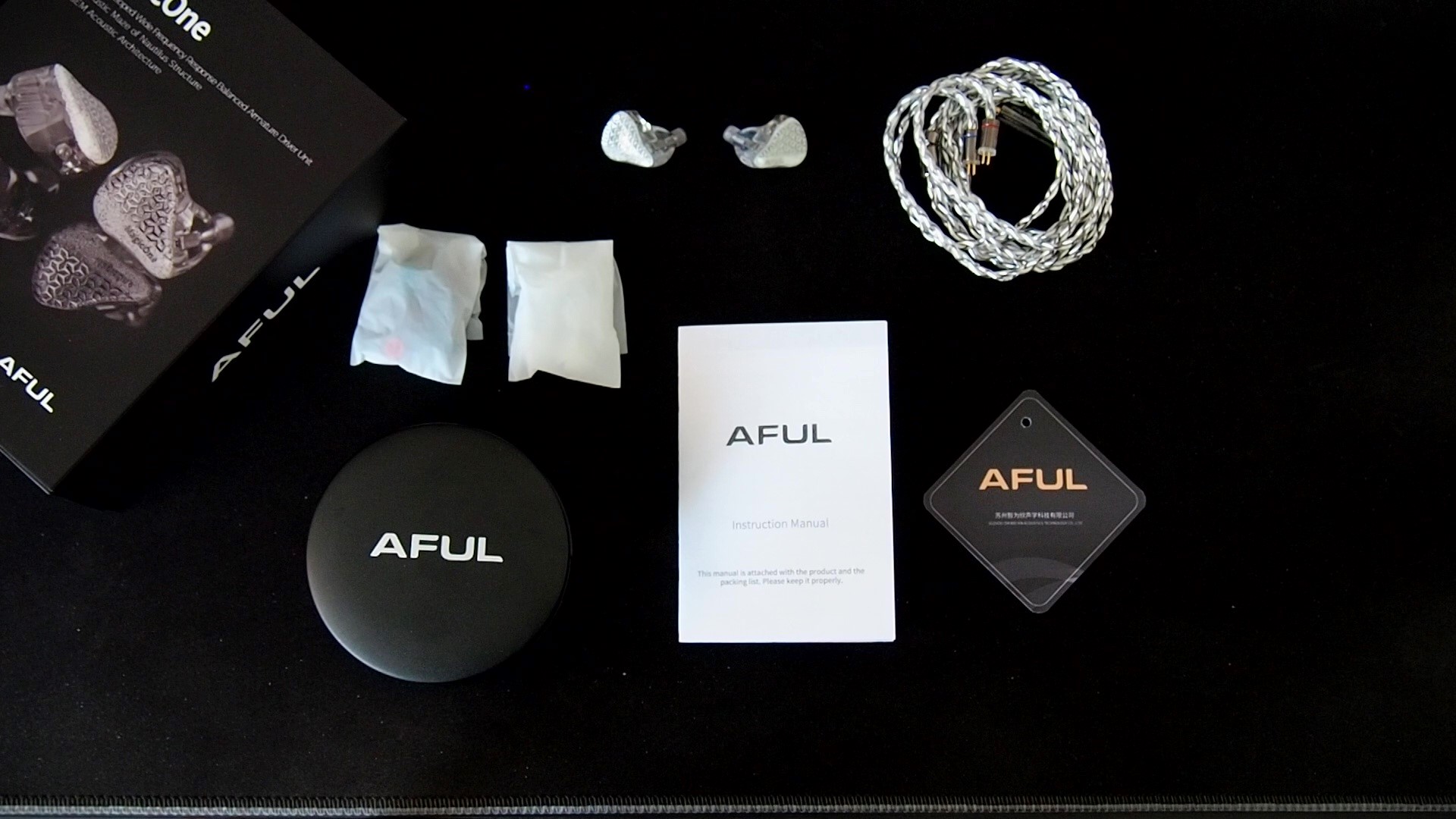
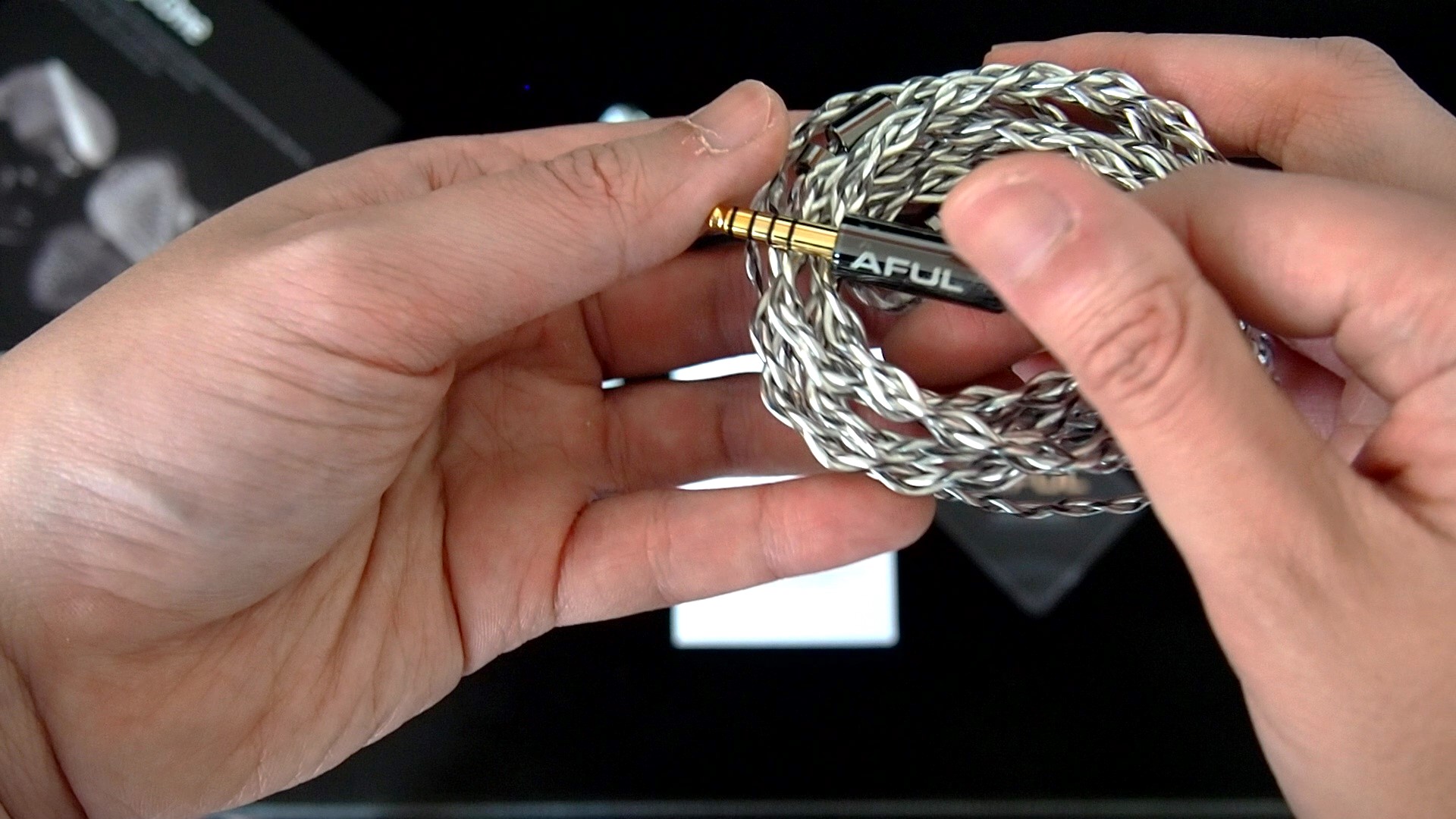
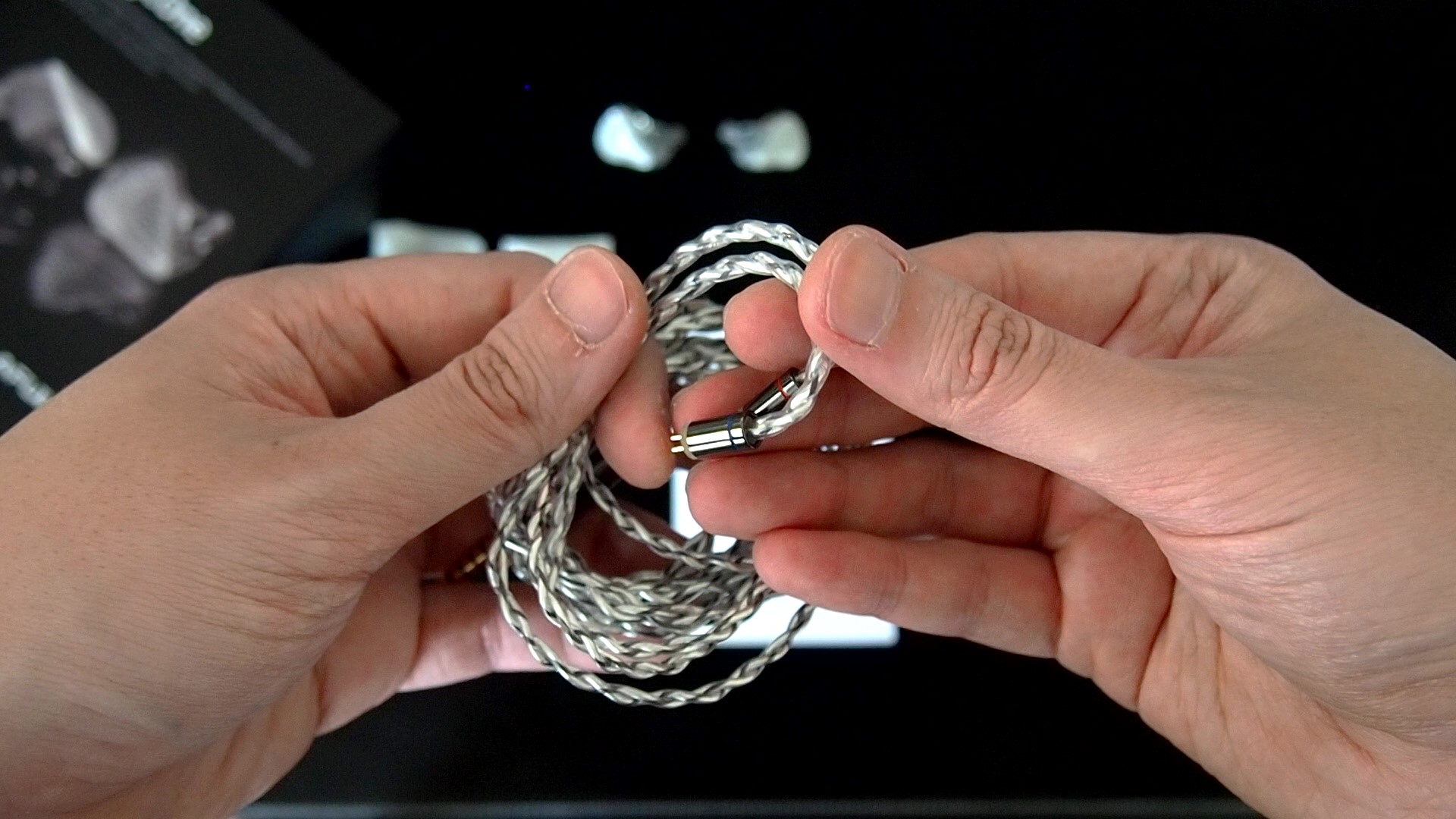

Well, that description mostly, but not entirely captures the internals of Magic One. The BA driver is aided by two innovations:
The first one is an complex electronic circuit that shapes the frequency response of the driver.

The second one is a resonance chamber and elongated resonator tubes (which a fellow audio geek compared to a digestive organ) that strengthen the bass response of the BA driver.


Together, these components transform the response of the BA driver from this:
 (Credit: AFUL)
(Credit: AFUL)
To this:
 (Credit: AFUL)
(Credit: AFUL)
At this point, you might be asking: why spending all of that effort to make a single BA IEM? After all, it is well known that full range BA drivers have the short straw when it comes to extensions at both ends of the frequency spectrums, which are crucial for an “audiophile” sound quality. That’s the question that I kept asking myself ever since I saw a post on social media announcing the existence of Magic One.

The official answer from AFUL is as follows:
“many high-end HiFi in-ear monitors at the premium level adopt multiple drivers with precise crossovers to achieve excellent performance in each frequency band. However, this approach comes with certain problems:
Has AFUL been successful with this vision? Let’s read on.

The area where Magic One falters is the pressure release. The superb seal it provides can, over time, lead to a gradual pressure build-up in the ear canals. It reaches a point where I have to give my ears a breather and pull out the IEMs to let the pressure equalize. This hiccup is a common woe with IEMs rocking balanced armature drivers, something you might not have encountered if you’ve stuck to the dynamic driver camp.

Because an IEM does not has a sound of its own, its sound can only be described indirectly through the musics it reproduces. Therefore, in this part of the review, I’m going to paint of a picture of the sonic performance of Magic One by describing how I hear some of my favourite tracks when using Magic One.
Before we move on, let’s have a look at the tuning vision of AFUL with Magic One: “… a touch of warmth, the overall quality of the pair can be compared to that of a 4 BA driver IEM or even a dynamic driver IEM. … a powerful and elastic bass response, similar to what you would expect from a dynamic driver. However, it still maintains the high-density sound quality typically associated with a Balanced Armature (BA) driver … excellent extension in the treble range, reaching up to 18KHz before gradually tapering off. While the treble may be slightly bright, it is not harsh or fatiguing, creating accurate sound reproduction for various instruments”

The first piece I want to discuss is the first movement of the Sibelius violin concerto performed by Heifetz. “Precision” would be the keyword that I use to describe the performance of both Heifetz and the Magic One. The way Magic One presents the music reminds me of a properly focused camera lens. Every instrument has a sharp outline and pin point positioning, accurate to the spatial information embedded in the music. In this violin concerto, Magic One places me right at the conductor’s podium with the orchestra around me. The string section can appear outside, slightly behind my ears. The wood wind section seems to sit in front of me, but at a higher position than the string section at the front. The only difference from a real world orchestra is that the violin of Heifetz seems to come from the front, slightly above my head, rather than behind the conductor from the left, where a soloist usually stands.

Dynamics are conveyed with finesse. Loud segments are appropriately impactful without any uncomfortable brightness. Noteworthy is the tactile richness in lower frequencies, capturing the nuances of string plucks and contrabass notes. There is also a satisfying sense of tactility in the lower frequencies of Magic One, evidenced by the snapping sensation of string plucks by the cello section. The notes played by contrabass also has texture and a rumbling sensation.
The detail, the imaging, and the dynamic together create a sense of magnetism with this recording. I found myself losing track of time in dissecting and following every small things going on the orchestra. When the violin is the star, I focused on the nuances of the violin. When the main violin fades away, the details of the orchestra took over.

Shifting to the “A Way of Life” soundtrack from The Last Samurai, the Magic One showcases a different sonic landscape, emphasizing ambience and spatial diffusion. Different from the the previous violin concerto, this soundtrack is mixed to convey a misty, slightly hazy ambience. The Magic One successfully reproduces that the misty ambience, creating a pleasing, hazy dome of sound. Sounds unfold into the mist at a distance, avoiding an overly forward presentation.

The next sonic aspect of Magic One that I focus on is the bass. Of course, there are many ways to analyse and describe the bass response, but at the end of the day, to me, the only thing that matters is that whether an IEM can make me tap my toes and bob my head. Doing so requires the bass to be just right to convey a sense of energy and rhythm. Too much bass, and the presentation feels muddy and lack the sense of musical pulses. Too little, and there is no energy.

In order to test the bass response of Magic One, I listen to the Gundam 00 The Movie OSTs. I found that Magic One has just enough bass to convey the necessary energy and rhythm of these tracks. It achieves this through precise bass delivery rather than sheer loudness and extension of the bass. The best way to imagine the bass response of Magic One is to think about plucking a tightly stretched string. All of the bass energy of Magic One is focused tightly at the attack end of bass notes, making them stand out. And because they stand out, the beats become emphasised, and thus the music has a strong sense of rhythm. Still, the Magic One still lacks the subbass extension of its siblings carrying DD woofers, thus the amount of energy convey is still day-and-night different.

Let’s wrap up by delving into how the Magic One handles vocal music, with a focus on Pentatonix’s Volume 4.
Firstly, all vocals take the center stage, deliberately placed forward in the soundstage, aligning with the recording’s intent. This distinguishes the Magic One from some of my other preferred IEMs, which tend to artificially downplay certain frequency ranges, creating a more distant overall sound regardless of the intended positioning of a track.
The precision in the Magic One’s presentation continues to stand out. It adeptly weaves Pentatonix’s tight harmonies into a cohesive whole, capturing the resonant ringing when the notes harmonize perfectly. At the same time, it also excels at distinguishing individual voices, from Kirstin’s soaring soprano to Avi’s deep bass line. The clarity and texture of bass line by Avi and Kevin were highlights for me.
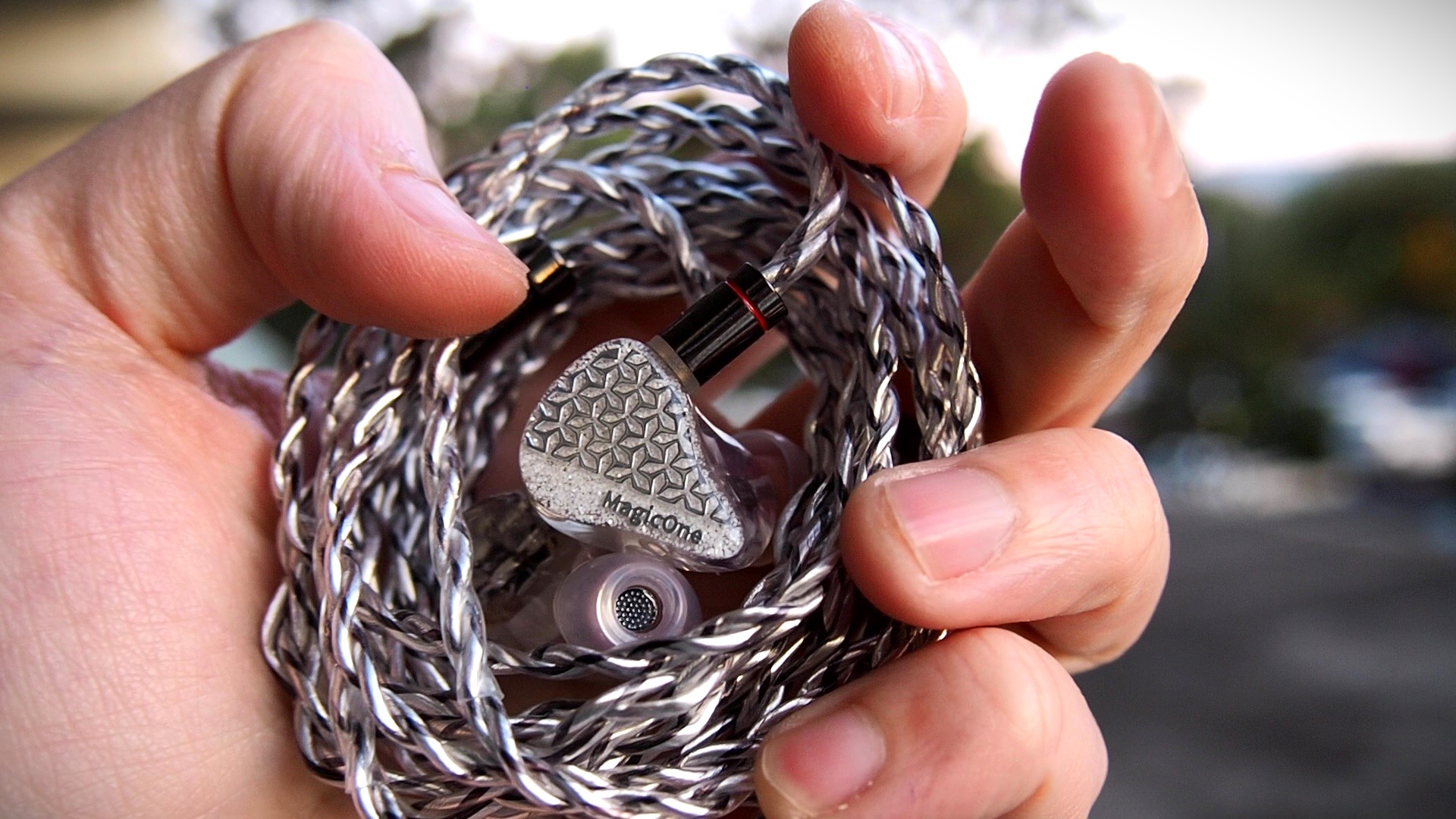
Fortunately, the precision of Magic One doesn’t translate into sharpness or unnatural timbre. All voices sound accurate, avoiding the thinness often associated with “well-tuned IEMs.” A subtle warmth permeates the tonal presentation without adding a distinct color to the midrange. For me, the tonality of the Magic One represents an improved version of “neutrality.”
Finally, the Magic One showcases robust detail retrieval. In tracks like the penultimate “Can’t Help Falling In Love,” it captures subtle nuances, like the echo effect in quiet moments between musical phrases.

It is helpful to think of an IEM as a filter that highlights or subdues different parts of the incoming audio signal. This effect can be measured objectively by the squiggly lines above, called Frequency Response (FR) graphs, which measure how loud an IEM is at different frequencies from 20Hz (bass) to 20kHz (upper treble). Subjectivity is how your ears and brain interpret the effect of that filter on your music and decide whether it is “enjoyable.” There are some “rules of thumb” when it comes to tonality, but most interesting IEMs usually bend the rules masterfully.
The frequency response of Magic One exhibits characteristics of many new IEMs that I consider “well-tuned”, such as the 7th Acoustics Supernova.
Essentially, Magic One takes the main ideas of the Harman target, such as the need for an upper midrange boost (a.k.a., ”ear gain”), the need for treble to gradually rolls off comparing to the upper midrange to avoid harshness, and the need for a bass boost.
At the same time, it reduces the amount of upper midrange and increases the amount of lower midrange and midbass to create a richer, more pleasing, and arguably more realistic, than the Harman target.

As you can see, Magic One traces the frequency response of Supernova, an IEM whose tonality I absolutely adore, very closely.
 Graph’s credit: Super* Review
Graph’s credit: Super* Review
Interestingly, Magic One also traces the -10dB target, which is essentially a diffuse field measurement with a -10dB tilt (more lower frequencies, less upper frequencies) using the more accurate B&K 5128 system. If all of these sounds like alien language to you, don’t worry. The gist of it is Magic One closely follows an promising new target that sounds more pleasant and arguably more “correct” than the current version of Harman in ear target.

Resolution is a fascinating subject due to the difficulty of pinning down what it really is. To me, “resolution” can be broken down into three components: (1) Sharpness, incisiveness, or “definition” of note attacks (see the figure above). (2) The separation of instruments and vocals, especially when they overlap on the soundstage. (3) The texture and details in the decay side of the notes. The first two give music clarity and make it easy to track individual elements of a mix. The last provides music details and nuances. Smooth and well extended treble response plays a crucial role.
As you have seen in the subjective impressions, the resolution of Magic One is rather good. The strength of this IEM lies in the way it presents the tack sharp boundary between instruments and and very well defined note attacks across the frequency spectrum. You might have also noticed that I didn‘t provide many positive remarks about the the micro detail retrieval of Magic One, about the nuances and textures.
So, how good is the resolution of Magic One in the grand scheme?

To answer this question, I rely a series of A/B tests against some of my trustworthy benchmarks.
For the first test, I listened to the third movement (Gavotte en Rondeau) of the Violin Partita No. 3 by Bach, performed by Leonidas Kavakos. As you know, violin solos such as the Partita No. 3 are very sparse music with only two “instruments”: the violin itself, and the reverberation of the recording hall. Therefore, these recordings are excellent for dissecting the “true resolution” of IEMs, meaning their ability to distinguish and present the minute, fine-grained details and textures in the music.
Since I have a high expectation of Magic One, I conducted the first test directly against a “heavy weight”, the venerable Andromeda 2020, my “gatekeeper” of the high-end resolution. The first challenge for me in this test was to overcome the “shock” due to the contrasting tonality of these two IEMs. But I digress, so let’s talk about resolution. Unfortunately (or fortunately, depending on your perspective), the Magic One is still a solid step behind. Whilst Magic One manages to extract all the surface details, I can hear more micro details, such as the sympathetic resonance of the violin or the subtle scratchiness of the bow against the strings, with the Andromeda 2020. Even when I turn up the volume higher than a safe level, I still had a hard time picking those details with Magic One. The refinement of the reverberation sound (a.k.a., the “air”) is also higher with the Andromeda 2020.
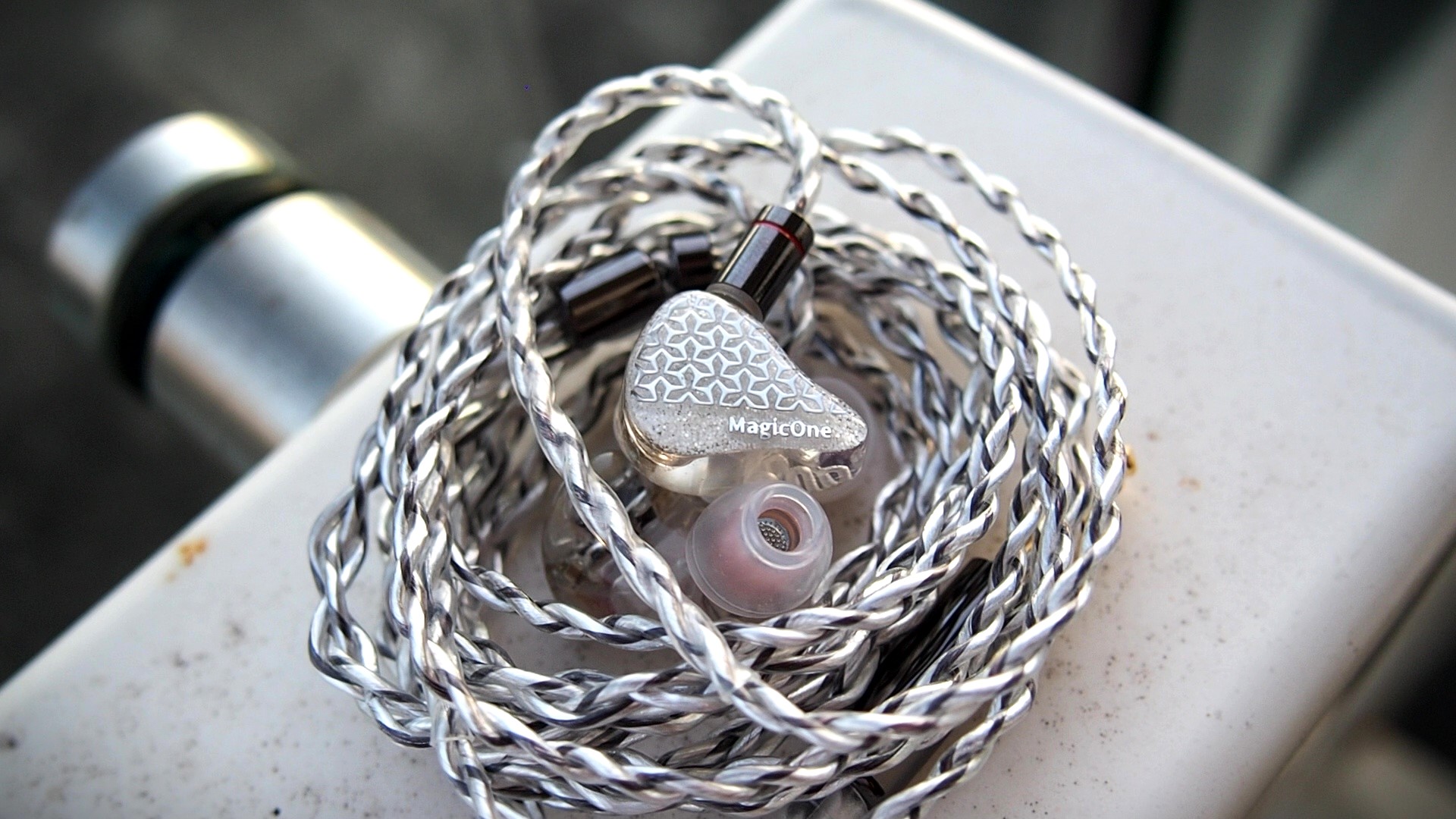
For the second test, I lowered my expectation and pitch the Magic One against the Moondrop Blessing 2, my benchmark of “good” resolution. Interestingly, I found the Blessing 2 to be ever-so-slightly harsher in the upper frequencies and thicker in the lower frequencies than Magic One. Ignoring the tonal difference, I found that Magic One presents details with better clarity and definition. For example, when Kavakos plays chords, the notes sound cleaner on Magic One. Still, I don’t find the difference between these two IEMs to be practically significant. Thus, I would rate Magic One’s resolution as “good.”

Stereo imaging or “soundstage” is a psychoacoustic illusion that different recording elements appear at various locations inside and around your head. Your brain creates based on the cues in the recording, which are enhanced or diminushed by your IEMs, your DAC, and your amplifier. Some IEMs present a wide but flat soundstage. Some present a “3D” soundstage with layering, depth, and height. In rare cases, with some specific songs, some IEMs can trick you into thinking that the sound comes from the environment (a.k.a., “holographic”)
As I alluded to in the subjective experience, Magic One has an excellent soundstage imaging capability. It can sit an orchestra with pin point precision in a 3D space. At the same time, it can convey a hazy, misty ambience as a dome of sound around the head should the music is mixed that way.
The key question at this point would be “how good?” Again, we rely on a series of A/B tests.
For the first test, I compare the Sibelius violin concerto between Magic One and the venerable Moondrop Blessing 2. To me, it was not a difficult comparison as the difference was clear from the first music phrase. Magic One puts the violin solo and the string section of the orchestra on two different planes, one closer, one further. The Blessing 2, on the other hand, was never able to create that depth illusion as it puts everything on the same flat plane. On the plus side, Blessing 2 has a wide and more open perception of soundstage, likely thanks to the air vents on the faceplates. Still, I would put Magic One ahead of Blessing 2 in soundstage imaging. It provides a more immersive experience.

The next test was between Magic One and the venerable Campfire Audio Andromeda 2020 was much more difficult for me. Magic One trades blow with Andromeda in terms of the 3D illusion of the soundstage and the positioning of instruments within that stage. That said, these IEMs present the stereo image of the Sibelius violin concerto in very different ways. The soundstage of Magic One is more “logical” and realistic, placing me at the conductor’s podium with the orchestra sitting in an 180 degree arch around me. The soundstage of the Andromeda, on the other hand, is all over the place. The cellos and contrabass seem to come from behind my ears rather than right next to them. Some instruments are right in the middle of my head, some floating slightly front left or front right. It’s entertaining and unique for sure, but not realistic. At the end of the day, I would put both Magic One and Andromeda at the same level, and favour one or another depending on my mood.
Vs P5 (NiceHck Black Cat cable, FiiO HS18 medium ear tips)

Let’s go back to the original question at the top of this review: “what is IEM R&D?”
To me, R&D means surpassing the state-of-the-art in a way that benefits the end users. Being the first one to use an exotic driver technology or the first one to jam an insane number of drivers into an IEM means little unless those innovations lead to a new height in sonic quality or make the existing high-end sounds more accessible. In the case of Magic One, the innovations of AFUL push the single BA configuration to the new height, matching or exceeding the previous multi-BA releases one some key aspects. By pursuing the single BA configuration, AFUL also managed to create a smaller, more comfortable, and likely more cost-effective IEM.
So, yeah. To me, Magic One is one of the more impressive R&D outcomes in our little hobby. High recommendation and seal of approval.
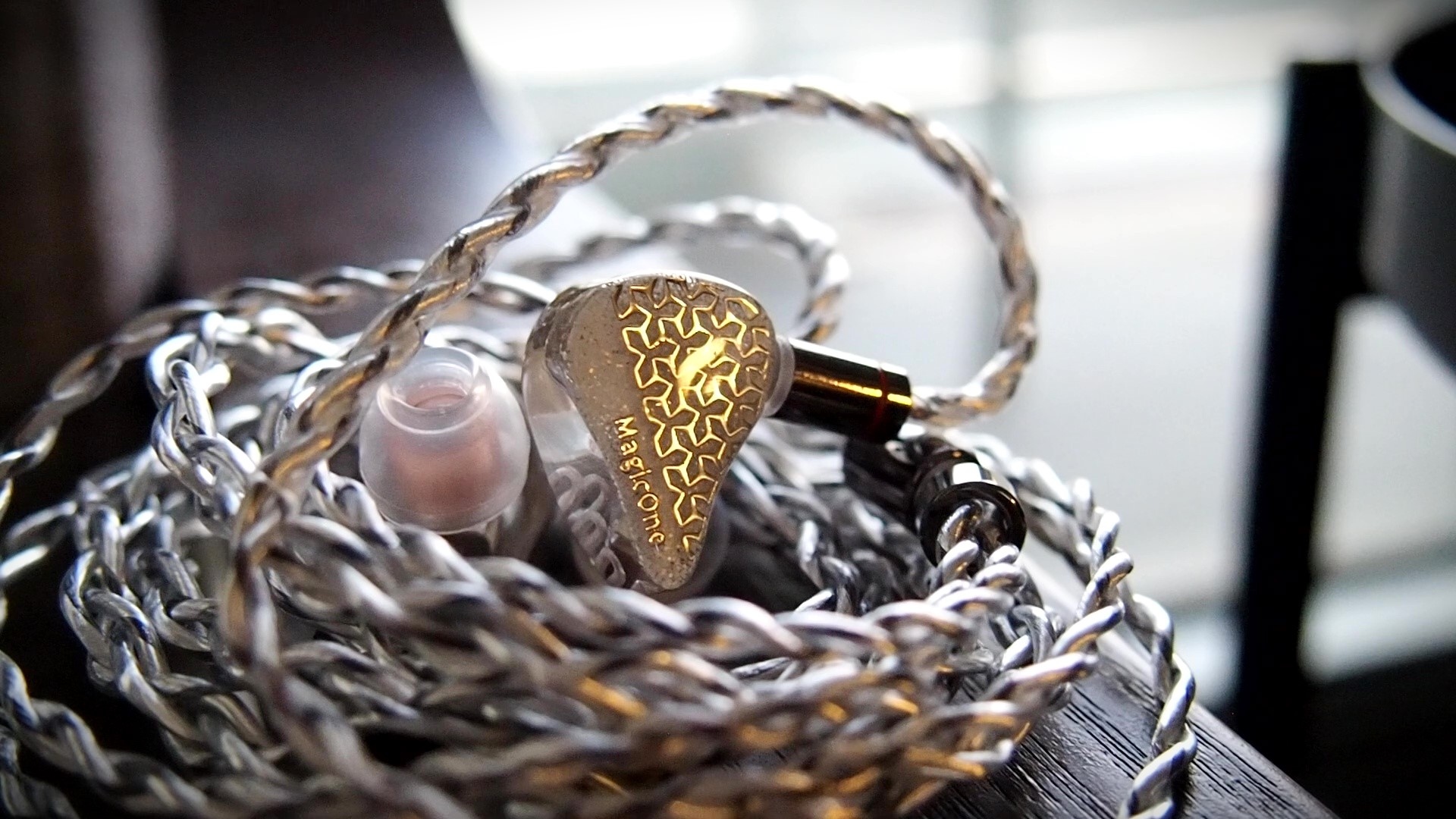
What I like about this IEM:
Bias Score: 5/5 - I love this IEM.
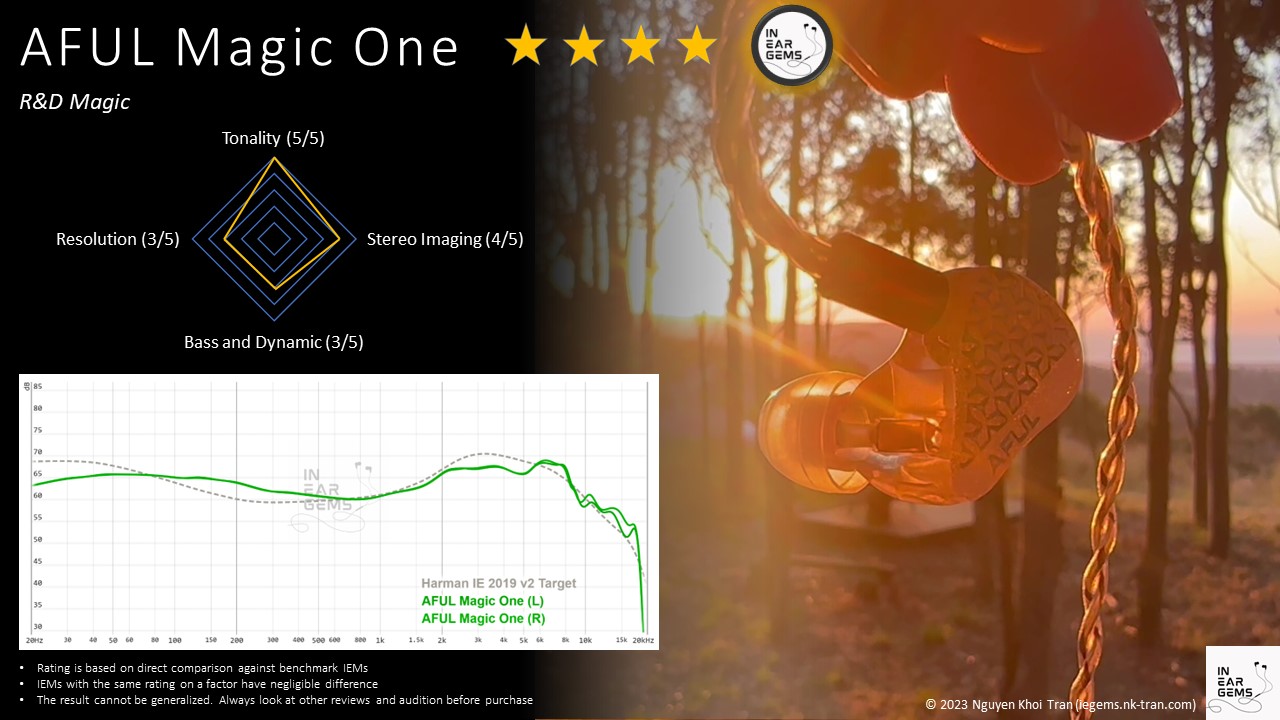
Updated: December 9, 2023
In this context, let’s talk about AFUL Magic One, a daring release carrying only one Balanced Armature (BA) driver.
Forewords
- What I look for in an IEM is immersion. I want to feel the orchestra around me, track individual instruments, and hear all of their textures and details. I’m not picky about tonality, as long as it does not get in the way of immersion.
- I rate IEMs within with a consistent scale from 1 (poor) to 3 (Adequate) to 5 (outstanding). Ratings are assigned by A/B tests against benchmark IEMs, regardless of the retail price.
- Ranking list and measurement database are on my IEM review blog.
- Terms used in my reviews are consistent with the glossary by Headphonesty
- This review is based on a review sample from Hifigo (Thank you!). I have no affiliation with or financial interest in Hifigo and AFUL.
- The unit retails for $140 at the time this review was published. Unaffiliated link: https://hifigo.com/products/aful-magicone
Unboxing
What is Magic One?
AFUL Magic One is a single BA IEM that retails for $140. Yup, just one BA driver. No fancy Beryllium or DLC membrane. No passive radiator. No hidden bone conduction driver. Just one full range BA driver custom-made by AFUL.Well, that description mostly, but not entirely captures the internals of Magic One. The BA driver is aided by two innovations:
The first one is an complex electronic circuit that shapes the frequency response of the driver.
The second one is a resonance chamber and elongated resonator tubes (which a fellow audio geek compared to a digestive organ) that strengthen the bass response of the BA driver.
Together, these components transform the response of the BA driver from this:
To this:
At this point, you might be asking: why spending all of that effort to make a single BA IEM? After all, it is well known that full range BA drivers have the short straw when it comes to extensions at both ends of the frequency spectrums, which are crucial for an “audiophile” sound quality. That’s the question that I kept asking myself ever since I saw a post on social media announcing the existence of Magic One.
The official answer from AFUL is as follows:
“many high-end HiFi in-ear monitors at the premium level adopt multiple drivers with precise crossovers to achieve excellent performance in each frequency band. However, this approach comes with certain problems:
- The different driver units lack accuracy in connecting and blending their sounds.
- They can cause vibrations and interferences with each other.
- Each unit can have slight variations in timbre.
Has AFUL been successful with this vision? Let’s read on.
Subjective Experience
The experience with any IEM starts with fit and comfort. In my experience, the comfort of an IEM relies on three factors: the size of the shells, the shape of the nozzles, and the pressure release mechanism. Magic One does a great job with the first two factors. Thanks to the one-driver design, the shells of Magic One are quite small so it does not stretch or create any hot spot in the concha area of my ears. The nozzles are relatively thin with a medium length, allowing me to wear the IEMs at a proper depth without putting any pressure on the ear canals.The area where Magic One falters is the pressure release. The superb seal it provides can, over time, lead to a gradual pressure build-up in the ear canals. It reaches a point where I have to give my ears a breather and pull out the IEMs to let the pressure equalize. This hiccup is a common woe with IEMs rocking balanced armature drivers, something you might not have encountered if you’ve stuck to the dynamic driver camp.
Because an IEM does not has a sound of its own, its sound can only be described indirectly through the musics it reproduces. Therefore, in this part of the review, I’m going to paint of a picture of the sonic performance of Magic One by describing how I hear some of my favourite tracks when using Magic One.
Before we move on, let’s have a look at the tuning vision of AFUL with Magic One: “… a touch of warmth, the overall quality of the pair can be compared to that of a 4 BA driver IEM or even a dynamic driver IEM. … a powerful and elastic bass response, similar to what you would expect from a dynamic driver. However, it still maintains the high-density sound quality typically associated with a Balanced Armature (BA) driver … excellent extension in the treble range, reaching up to 18KHz before gradually tapering off. While the treble may be slightly bright, it is not harsh or fatiguing, creating accurate sound reproduction for various instruments”
The first piece I want to discuss is the first movement of the Sibelius violin concerto performed by Heifetz. “Precision” would be the keyword that I use to describe the performance of both Heifetz and the Magic One. The way Magic One presents the music reminds me of a properly focused camera lens. Every instrument has a sharp outline and pin point positioning, accurate to the spatial information embedded in the music. In this violin concerto, Magic One places me right at the conductor’s podium with the orchestra around me. The string section can appear outside, slightly behind my ears. The wood wind section seems to sit in front of me, but at a higher position than the string section at the front. The only difference from a real world orchestra is that the violin of Heifetz seems to come from the front, slightly above my head, rather than behind the conductor from the left, where a soloist usually stands.
Dynamics are conveyed with finesse. Loud segments are appropriately impactful without any uncomfortable brightness. Noteworthy is the tactile richness in lower frequencies, capturing the nuances of string plucks and contrabass notes. There is also a satisfying sense of tactility in the lower frequencies of Magic One, evidenced by the snapping sensation of string plucks by the cello section. The notes played by contrabass also has texture and a rumbling sensation.
The detail, the imaging, and the dynamic together create a sense of magnetism with this recording. I found myself losing track of time in dissecting and following every small things going on the orchestra. When the violin is the star, I focused on the nuances of the violin. When the main violin fades away, the details of the orchestra took over.
Shifting to the “A Way of Life” soundtrack from The Last Samurai, the Magic One showcases a different sonic landscape, emphasizing ambience and spatial diffusion. Different from the the previous violin concerto, this soundtrack is mixed to convey a misty, slightly hazy ambience. The Magic One successfully reproduces that the misty ambience, creating a pleasing, hazy dome of sound. Sounds unfold into the mist at a distance, avoiding an overly forward presentation.
The next sonic aspect of Magic One that I focus on is the bass. Of course, there are many ways to analyse and describe the bass response, but at the end of the day, to me, the only thing that matters is that whether an IEM can make me tap my toes and bob my head. Doing so requires the bass to be just right to convey a sense of energy and rhythm. Too much bass, and the presentation feels muddy and lack the sense of musical pulses. Too little, and there is no energy.
In order to test the bass response of Magic One, I listen to the Gundam 00 The Movie OSTs. I found that Magic One has just enough bass to convey the necessary energy and rhythm of these tracks. It achieves this through precise bass delivery rather than sheer loudness and extension of the bass. The best way to imagine the bass response of Magic One is to think about plucking a tightly stretched string. All of the bass energy of Magic One is focused tightly at the attack end of bass notes, making them stand out. And because they stand out, the beats become emphasised, and thus the music has a strong sense of rhythm. Still, the Magic One still lacks the subbass extension of its siblings carrying DD woofers, thus the amount of energy convey is still day-and-night different.
Let’s wrap up by delving into how the Magic One handles vocal music, with a focus on Pentatonix’s Volume 4.
Firstly, all vocals take the center stage, deliberately placed forward in the soundstage, aligning with the recording’s intent. This distinguishes the Magic One from some of my other preferred IEMs, which tend to artificially downplay certain frequency ranges, creating a more distant overall sound regardless of the intended positioning of a track.
The precision in the Magic One’s presentation continues to stand out. It adeptly weaves Pentatonix’s tight harmonies into a cohesive whole, capturing the resonant ringing when the notes harmonize perfectly. At the same time, it also excels at distinguishing individual voices, from Kirstin’s soaring soprano to Avi’s deep bass line. The clarity and texture of bass line by Avi and Kevin were highlights for me.
Fortunately, the precision of Magic One doesn’t translate into sharpness or unnatural timbre. All voices sound accurate, avoiding the thinness often associated with “well-tuned IEMs.” A subtle warmth permeates the tonal presentation without adding a distinct color to the midrange. For me, the tonality of the Magic One represents an improved version of “neutrality.”
Finally, the Magic One showcases robust detail retrieval. In tracks like the penultimate “Can’t Help Falling In Love,” it captures subtle nuances, like the echo effect in quiet moments between musical phrases.
Frequency Response Analysis
Frequency response of Magic One against the Harman in-ear target. Measurements were done with an IEC-711-compliant coupler and might only be compared with other measurements from this same coupler. Visit my graph database for more comparisons.It is helpful to think of an IEM as a filter that highlights or subdues different parts of the incoming audio signal. This effect can be measured objectively by the squiggly lines above, called Frequency Response (FR) graphs, which measure how loud an IEM is at different frequencies from 20Hz (bass) to 20kHz (upper treble). Subjectivity is how your ears and brain interpret the effect of that filter on your music and decide whether it is “enjoyable.” There are some “rules of thumb” when it comes to tonality, but most interesting IEMs usually bend the rules masterfully.
The frequency response of Magic One exhibits characteristics of many new IEMs that I consider “well-tuned”, such as the 7th Acoustics Supernova.
Essentially, Magic One takes the main ideas of the Harman target, such as the need for an upper midrange boost (a.k.a., ”ear gain”), the need for treble to gradually rolls off comparing to the upper midrange to avoid harshness, and the need for a bass boost.
At the same time, it reduces the amount of upper midrange and increases the amount of lower midrange and midbass to create a richer, more pleasing, and arguably more realistic, than the Harman target.
As you can see, Magic One traces the frequency response of Supernova, an IEM whose tonality I absolutely adore, very closely.
Interestingly, Magic One also traces the -10dB target, which is essentially a diffuse field measurement with a -10dB tilt (more lower frequencies, less upper frequencies) using the more accurate B&K 5128 system. If all of these sounds like alien language to you, don’t worry. The gist of it is Magic One closely follows an promising new target that sounds more pleasant and arguably more “correct” than the current version of Harman in ear target.
Resolution

Resolution is a fascinating subject due to the difficulty of pinning down what it really is. To me, “resolution” can be broken down into three components: (1) Sharpness, incisiveness, or “definition” of note attacks (see the figure above). (2) The separation of instruments and vocals, especially when they overlap on the soundstage. (3) The texture and details in the decay side of the notes. The first two give music clarity and make it easy to track individual elements of a mix. The last provides music details and nuances. Smooth and well extended treble response plays a crucial role.
As you have seen in the subjective impressions, the resolution of Magic One is rather good. The strength of this IEM lies in the way it presents the tack sharp boundary between instruments and and very well defined note attacks across the frequency spectrum. You might have also noticed that I didn‘t provide many positive remarks about the the micro detail retrieval of Magic One, about the nuances and textures.
So, how good is the resolution of Magic One in the grand scheme?
To answer this question, I rely a series of A/B tests against some of my trustworthy benchmarks.
For the first test, I listened to the third movement (Gavotte en Rondeau) of the Violin Partita No. 3 by Bach, performed by Leonidas Kavakos. As you know, violin solos such as the Partita No. 3 are very sparse music with only two “instruments”: the violin itself, and the reverberation of the recording hall. Therefore, these recordings are excellent for dissecting the “true resolution” of IEMs, meaning their ability to distinguish and present the minute, fine-grained details and textures in the music.
Since I have a high expectation of Magic One, I conducted the first test directly against a “heavy weight”, the venerable Andromeda 2020, my “gatekeeper” of the high-end resolution. The first challenge for me in this test was to overcome the “shock” due to the contrasting tonality of these two IEMs. But I digress, so let’s talk about resolution. Unfortunately (or fortunately, depending on your perspective), the Magic One is still a solid step behind. Whilst Magic One manages to extract all the surface details, I can hear more micro details, such as the sympathetic resonance of the violin or the subtle scratchiness of the bow against the strings, with the Andromeda 2020. Even when I turn up the volume higher than a safe level, I still had a hard time picking those details with Magic One. The refinement of the reverberation sound (a.k.a., the “air”) is also higher with the Andromeda 2020.
For the second test, I lowered my expectation and pitch the Magic One against the Moondrop Blessing 2, my benchmark of “good” resolution. Interestingly, I found the Blessing 2 to be ever-so-slightly harsher in the upper frequencies and thicker in the lower frequencies than Magic One. Ignoring the tonal difference, I found that Magic One presents details with better clarity and definition. For example, when Kavakos plays chords, the notes sound cleaner on Magic One. Still, I don’t find the difference between these two IEMs to be practically significant. Thus, I would rate Magic One’s resolution as “good.”
Soundstage Imaging

Stereo imaging or “soundstage” is a psychoacoustic illusion that different recording elements appear at various locations inside and around your head. Your brain creates based on the cues in the recording, which are enhanced or diminushed by your IEMs, your DAC, and your amplifier. Some IEMs present a wide but flat soundstage. Some present a “3D” soundstage with layering, depth, and height. In rare cases, with some specific songs, some IEMs can trick you into thinking that the sound comes from the environment (a.k.a., “holographic”)
As I alluded to in the subjective experience, Magic One has an excellent soundstage imaging capability. It can sit an orchestra with pin point precision in a 3D space. At the same time, it can convey a hazy, misty ambience as a dome of sound around the head should the music is mixed that way.
The key question at this point would be “how good?” Again, we rely on a series of A/B tests.
For the first test, I compare the Sibelius violin concerto between Magic One and the venerable Moondrop Blessing 2. To me, it was not a difficult comparison as the difference was clear from the first music phrase. Magic One puts the violin solo and the string section of the orchestra on two different planes, one closer, one further. The Blessing 2, on the other hand, was never able to create that depth illusion as it puts everything on the same flat plane. On the plus side, Blessing 2 has a wide and more open perception of soundstage, likely thanks to the air vents on the faceplates. Still, I would put Magic One ahead of Blessing 2 in soundstage imaging. It provides a more immersive experience.
The next test was between Magic One and the venerable Campfire Audio Andromeda 2020 was much more difficult for me. Magic One trades blow with Andromeda in terms of the 3D illusion of the soundstage and the positioning of instruments within that stage. That said, these IEMs present the stereo image of the Sibelius violin concerto in very different ways. The soundstage of Magic One is more “logical” and realistic, placing me at the conductor’s podium with the orchestra sitting in an 180 degree arch around me. The soundstage of the Andromeda, on the other hand, is all over the place. The cellos and contrabass seem to come from behind my ears rather than right next to them. Some instruments are right in the middle of my head, some floating slightly front left or front right. It’s entertaining and unique for sure, but not realistic. At the end of the day, I would put both Magic One and Andromeda at the same level, and favour one or another depending on my mood.
Comparisons
Compare against Performer5 and Performer8Vs P5 (NiceHck Black Cat cable, FiiO HS18 medium ear tips)
- The midrange of P5 is denser and pushed forward toward my head more. This is likely the result of the hump at 1.5kHz. This presentation reminds me of the Elysian Acoustic DIVA 2023. It is not my favourite sonic presentation.
- When I listen to the Sibelius violin concerto recording by Heifetz, I found P5 do not provide the sharp boundary and precise instrument placement that I heard from Magic One. I would also say the inner details of each instruments are slightly better with Magic One, though the gap is practically negligible.
- Where P5 excels is the bass response. Whilst the bass of P5 does not have the same clean attack as the Magic One, it has better body and physical impact, likely due to better subbass extension. As a result, when I listen to “Final Mission - Quantum Burst” in the Gundam 00 Movie OST, the sense of energy that P5 conveys is simply higher.
- P5 is also more comfortable due to having proper pressure release mechanism.
- Magic One is significantly more difficult to drive than P8
- The tonality and soundstage presentation of two IEMs are quite different, mostly due to their divergence in the 1kHz to 4kHz region. For example, when I listen to the Sibelius violin concerto by Heifetz, I found both the violin and the orchestra are pushed forward more, with less gaps between instruments. I personally find the violin to be unnaturally forward, yet the briliance “shine” in the upper midrange of the violin is not there with the P8, whilst it is there with the Magic One.
- Both IEMs have similarly precise instrument placements. However, due to the midrange quirks above, I find the soundstage of Magic One more spacious and ultimately more interesting.
- P8 is one step ahead of Magic One in terms of the inner details of each instruments. Simply put, I hear a bit more details, and those details are more sharply defined with P8. However, the gap is not large and might not be practically significant for some listeners.
- The bass of P8 is like a combination of Magic One and P5. It has the tactility and precision of Magic One but with proper subbass extension of P5. It might not be as indulgent as the bass of P5, but more energetic than Magic One.
Rating and ConclusionPermalink
Let’s go back to the original question at the top of this review: “what is IEM R&D?”
To me, R&D means surpassing the state-of-the-art in a way that benefits the end users. Being the first one to use an exotic driver technology or the first one to jam an insane number of drivers into an IEM means little unless those innovations lead to a new height in sonic quality or make the existing high-end sounds more accessible. In the case of Magic One, the innovations of AFUL push the single BA configuration to the new height, matching or exceeding the previous multi-BA releases one some key aspects. By pursuing the single BA configuration, AFUL also managed to create a smaller, more comfortable, and likely more cost-effective IEM.
So, yeah. To me, Magic One is one of the more impressive R&D outcomes in our little hobby. High recommendation and seal of approval.
What I like about this IEM:
- Precise and 3D stereo imaging
- Excellent instrument definition and separation
- Excellent tonal balance and timbre
- Small and comfortable shells
- Tactile and snappy base response
- Quite difficult to drive (so I can use my powerful DAP and DAC/amp)
- The subbass extension is predictably not good
- Pressure build up
- Quite difficult to drive (so my go-to portable gears do not drive these to full potential)
Bias Score: 5/5 - I love this IEM.
Updated: December 9, 2023
DaveStarWalker
Very nice and comprehensive review 

o0genesis0o
Headphoneus Supremus
Pros: - Comfortable
- Isolating
- Resolution
- Thoughtful and elegant tuning
- Precise imaging
- Isolating
- Resolution
- Thoughtful and elegant tuning
- Precise imaging
Cons: - Strictly in-the-head soundstage
- Textureless BA bass
- Textureless BA bass

What is an In-ear Monitor (IEM)?
In my mind, an IEM in its purest form is a tool for musicians to hear a mix on the stage whilst protecting their hearing. Thus, a "good" IEM should be comfortable, isolating, and have a lot of clarity in the frequency band occupied by the wearer.
Westone MACH 10 hits those points harder than many IEMs that I have auditioned for a while.
Forewords
- This review is based on a loaned unit from Westone via the MACH launch tour. It has been delivered to the next reviewer in the tour. Thank you @Zachik for coordination.
- I believe that great IEMs are the ones that can achieve multiple difficult things simultaneously: (1) high resolution (meaning lines of music are crisp, clear, easy to follow and full of texture), (2) 3D soundstage with a strong sense of depth, (3) bold and natural bass with physical rumble, (4) natural timbre, (5) relaxing and comfortable tonality. IEMs achieving those criteria are rated highly in my ranking list
- I rate IEMs by A/B tests them against a few benchmark IEMs, regardless of price point. If a $1000 IEM scores the same as a $100 IEM, then either the more expensive one underperforms or the budget one is a gem. See the methodology for more detail..
- I use frequency response measurements to double check my subjective impressions.
- Rating database and measurement database can be found on my IEM review blog.
Non-sound Aspects
Specs and Driveability
- DRIVERS: Single Balanced-Armature Driver
- FREQ RESPONSE: 20Hz – 18kHz
- SENSITIVITY: 103dB @1kHz
- IMPEDANCE: 80 Ohms @1kHz
Despite having only one BA driver, MACH 10 is surprisingly hard to drive. I'm not saying that you need a desktop-class amplifier, but you will need to turn the volume higher than usual. On the plus side, because of the high impedance, MACH 10 does not hiss even when you use a noisy source like Nintendo Switch.
Most of the listening tests were done with a Hidizs AP80 Pro X. I also use Fiio KA3 and Fiio BTR5 (1st gen). The IEM sounds good with all of these sources, without any noticeable difference.
Form factor and daily uses

MACH 10 is a plastic IEM with the old-school universal IEM shape and long, thin nozzles. The stability and comfort is excellent. With the right tips, these IEMs lock into my ears and completely isolate me from the surrounding environment. The reduction of bassy noise such as engine's rumble is nearly as good as active noise cancelling on my AirPods Pro. However, MACH 10 reduces mid- and high-frequencies better than any ANC solutions.
MACH 10 performs well in all of my daily usage scenarios. I have used this IEM for daily commute by bus, for daily walks in a windy park, and for background music in the office. I have also used it for monitoring my violin practice a couple times. No problem whatsoever.
In the box


MACH 10 comes in a unique box with a generous set of accessories:
- Mach 10 Universal fit in-ear Monitors
- Linum BaX™ T2 Cable
- 5 Pair Foam + 5 Pair Silicone
- Impact Resistance Monitor Vault
- Westone Audio Cloth Bag
I particularly like the case. It looks like a big and bulky case that has been zapped by a miniaturizing beam.
However, I'm not a big fan of the cable because it is worryingly thin and always tangles. I roadie wrap my IEMs before putting them in a carrying case to ensure that the cables unroll nicely and easily. Such nicety never happens with MACH 10, though. Its noodle-thin cable gets tangled badly almost every time I unpack the IEM. Very annoying.
How it sounds

Frequency response of MACH 10 against ER2SE and my preference target (big bass with tuning tricks for soundstage). Measurements were done with an IEC-711 compliant coupler and might only be compared with other measurements from this same coupler. The resonance peak was aligned at around 8kHz. Such a peak might be larger on the graph than in real life. Measurements above the resonance peak might not be accurate. Visit my graph database for more comparisons.
Tonality and Timbre: 4/5 - Good

Test tracks:
- Bon Jovi - Livin' On A Prayer Drum cover ( Tarn Softwhip ): testing tonal balance. Is there too much kick drum? Is there too little kick drum? Is there enough stick impact on the snare? Are the cymbals and high hats correct sounding? How about the toms? How about vocal?
- Delibes: Lakmé - Duo des fleurs (Flower Duet), Sabine Devieilhe & Marianne Crebassa: how natural are the vocals?
- J.S. Bach: Goldberg Variations, BWV 988 - Variatio 15 Canone alla Quinta. a 1 Clav. Andante: how natural is the piano? How is the balance between various voices in the canon? Can you hear the subtle variation in dynamic (loudness) from soft to very soft throughout the variation?
- MS Gundam Build Fighters (OST): do you hear any metallic tint in the high pitched electronic instrument at the opening? Is there any harshness? Unusual tonality? This piece should be energetic but not harsh.
Thoughtful and elegant.
MACH 10 has a neutral tuning, without the usual thinness and shoutiness that tend to accompany this kind of sound signature. It means tonality and timbre of both vocal and instruments are natural and realistic. Vocals are upfront, away from the background. However, high-pitched vocals are not shrill nor straining like usual Harman-inspired IEMs. No sibilance was heard either.
Upper treble is rolled off, so you will hear fewer airy details and reverb (which might explain why MACH 10 lacks that last bit of texture and nuances to achieve a top level resolution). The good thing is that you wouldn't hear metallic tone associated with excess upper treble energy, which is usually heard in budget single DD IEMs.
The quantity (or loudness) of bass is slightly more than the ruler-flat bass of Etymotic ER2SE. However, the added bass quantity is well balanced with the rest of the tuning, contributing only a bit of warmth to the neutral tonality rather than providing a bass boost. Therefore, if the music is not mixed with a lot of bass, MACH 10 would reflect that fact. If the mix has strong bass, MACH 10 would also respond accordingly.
In general, the tuning of MACH 10 is thoughtful, balanced, and realistic without any discomfort. It might lack some strategic dips and boosts for "special effect", but there is a sense of lightness and honesty in the tuning that is commendable. I rate tonality 4/5 - Good
Resolution, Detail, Separation: 4.5/5 - Very Good
Resolution, detail retrieval, or "technical performance" denotes how finely and crisp an IEM or headphone can reproduce audio information. Resolution manifests itself in various aspects: (1) how clear and precise the attack of musical notes are, (2) how pinpoint musical notes are in the soundstage, (3) how detailed and nuanced the decay and reverb of musical notes are, (4) how clear can you hear background elements of a mix and (5) can you hear the whole band or orchestra. A balanced tuning might help but is not a necessity for an IEM to achieve high resolution.
Test tracks:
- Sky Mubs - Now You believe in You: testing the detail of the background elements and the treble extension / air. How clear can you follow the choral section in the background before 0:50? How crisp and texture are the claps?
- Ed Sheeran: Tiny Desk (Home) Concert: visiting hours (from 14:20) is a good test for detail retrieval. How clear and distinct can you hear the chimes at the beginning? Can you hear individual chime or just a blob of high-pitched sound? How clear can you hear the backing vocal at the far sides of the soundstage?
- Vivaldi: Violin Concerto No. 2 in G Minor, RV 315 "L'estate" - III. Presto: testing resolution in complex and dense music. How easy it is to hear individual instruments? Can you hear nuances and textures in each instruments like bow catching on the strings? Can you hear the cello on the right? Can you feel the rumble of the lower strings of cello?
In overall, MACH 10 is a bit crisper than Blessing 2 (benchmark of good IEM resolution) across the frequency spectrum. The precision and sharpness of note attacks are nearly at the same level of Andromeda (benchmark of outstanding IEM resolution). The only thing MACH 10 lacks is the details in the trailing end of the tone, making the overall stereo image a bit less textured and nuanced comparing to Andromeda.
Summer - Presto:
- MACH 10 is noticeably crisper in the bass (cello) and treble region comparing to Blessing 2.
- MACH 10 does not have "wall of sound" feeling of Blessing 2. There is more space between instruments, and the instruments are pushed back a bit.
- Note attacks on MACH 10 are as crisp as on Andromeda 2020, however the stereo image painted by Andromeda is fuller and richer with details, especially in the bass region. The difference is also noticeable in the trailing end of the notes.
Tiny Desk Performance (Visiting Hours):
- The opening chimes on MACH 10 lack the last bit of clarity of separation comparing to Andromeda.
- The surface level details are close to Andromeda enough, however. For example, the backup vocals are clear and easy to follow. Just lack a little bit at the tail end of the vocal line.
- Background vocals are sharper on MACH 10 comparing to Blessing 2. The treble clarity (chimes sound) is also sharper on MACH 10, but the difference is not very stark.
Rating: Blessing 2 (4/5 - Good) < MACH 10 (4.5/5 - Very Good) < Andromeda (5/5 - Outstanding)
Percussion Rendering: 2.5/5 - Below average
Percussion rendering reflects how well the tuning and technical performance of an IEM work together to recreate realistic sound of a drum set. Good drum hits have clear attack (controlled by frequencies from 4kHz to 6kHz), full body (midbass frequencies around 200Hz), and physical sensation (subbass frequencies around 50Hz). Good technical performance ("fast" driver) ensures that bass notes can be loud yet detailed. IEMs that cannot control bass very well tend to reduce the bass' loudness to prevent muddiness.
Test tracks:
- Finale (William Tell Overture): How rhythmic the whole orchestra sound? Can you follow the drums clearly? How about the rhythm carried by the string and brass section? Can you hear texture and detail in the drum or just mushy thump thump sound?
- Bon Jovi - It's My Life Drum Cover ( Tarn Softwhip ): How powerful is the kick drum? How clean are the stick impacts? Is there rumble and decay ("brrrm")? How clear are the patterns played on the cymbals? Do the drums energise you?
- Proof of a Hero - Rise Version: This track tests only one thing: can the battle drums hype you up to pick up your longsword and chase some wyverns?
There is not much to talk about the percussion rendering of MACH 10. The stick impacts are fast and snappy as you would expect. Surprisingly, there is also a clear "thump" sound with kick drums. However, the body, the rumbling sensation, and texture of the bass is not there. You can hear enough bass to keep the rhythm, but there is not enough quantity and dynamic contrast to energise you.
Rating: ER2SE (2/5 - Lacking) < MACH 10 (2.5/5 - Below average) < Aria (3/5 - Average)
Stereo Imaging (Soundstage): 3.5/5 - Above Average
Stereo imaging or "soundstage" is a psychoacoustic illusion that different elements of a recording appear at different locations inside and around your head. Your brain creates based on the cues such as the loudness and phase differences between left and right channel. Most IEMs do not differ significantly nor can compete with headphones or loudspeakers. However, some IEMs offer a more spacious soundstage than others. Best IEMs can create multiple layers sound from closer to further away and make some instrument floating slight above your head.
Test tracks:
- We are the world(3:00 onward): This song shows some excellent stereo imaging. Can you hear soloist upfront whilst the choir is pushed further away to the background? Can you hear one choir to the left and further to the back whilst the other to the right and a bit closer to you?
- Eine kleine Nachtmusik - I. Allegro: Listen for the clear direction of each instrument in the string quartet throughout the piece. You should also be able to hear cello locating closer to than the violin 1.
- I vow to thee, my country: This song is an excellent test for layering. Can you hear the boy choir standing in front of the men choir or they are on the same flat plane?
MACH 10 is unmistakenly IEM in terms of soundstage and imaging. The center image (main vocals and instruments) almost always locates in your head. The soundstage rarely extends beyond your head, even with large orchestral recordings. As a result, listening to MACH 10 feels like listening to a tiny concert hall within your head.
Despite not having a large soundstage, MACH 10 does an excellent job in terms of instrument placement and layering. It's easy to pin point the direction of different instruments in a mix. Thanks to the slight warmth in the lower frequencies and the excellent resolution, MACH 10 is also successful in terms of layering instruments from closer to further away, creating a sense of 3D depth to the soundstage.
Rating: Aria (3/5 - Average) < MACH 10 (3.5/5 - Above Average) < A4000 (4/5 - Good)
Conclusion

An IEM in its purest form. That's the best way I can describe Westone MACH 10. It is comfortable, highly isolating, outstandingly resolving, and elegantely tuned. There was no attempt to pretend that its soundstage is wider or deeper than what an IEM form factor can provide.
Should you get MACH 10? At AUD $450, this IEM faces a strong competition that includes Fiio FD5, FH5s and FA7s, Final Audio E5000, Dunu Vulkan, and of course Moondrop Blessing 2. The decision to get MACH 10 depends a great deal on what you want from your IEM. If you are looking for a straightforward, well-tuned, isolating, and comfortable IEM, MACH 10 gets a recommendation with reservation from this reviewer.
Last edited:
o0genesis0o
Headphoneus Supremus
Pros: - Comfortable
- Isolating
- Good resolution
- Isolating
- Good resolution
Cons: - Honky, nasally, unnatural timbre with some vocals
- Squashed soundstage (lacking depth, in-the-face presentation)
- Textureless BA bass
- Squashed soundstage (lacking depth, in-the-face presentation)
- Textureless BA bass

Is more better?
It depends. More IEMs? Of course! More drivers in an IEM? Not always.
So, would MACH 20 be better than MACH 10 by having one extra BA driver? Let's find out.
Forewords
- This review is based on a loaned unit from Westone via the MACH launch tour. It has been delivered to the next reviewer in the tour. Thank you @Zachik for coordination.
- I believe that great IEMs are the ones that can achieve multiple difficult things simultaneously: (1) high resolution (meaning lines of music are crisp, clear, easy to follow and full of texture), (2) 3D soundstage with a strong sense of depth, (3) bold and natural bass with physical rumble, (4) natural timbre, (5) relaxing and comfortable tonality. IEMs achieving those criteria are rated highly in my ranking list
- I rate IEMs by A/B tests them against a few benchmark IEMs, regardless of price point. If a $1000 IEM scores the same as a $100 IEM, then either the more expensive one underperforms or the budget one is a gem. See the methodology for more detail..
- I use frequency response measurements to double check my subjective impressions.
- Rating database and measurement database can be found on my IEM review blog.
Non-sound Aspects

MACH 20 is exactly the same as MACH 10 from the outside, so I would direct you to my previous review on MACH 10 rather than copying everything here.
tl;dr: very stable and comfortable fit, highly isolating, generous accessories, annoying cable.

Noted that MACH 20 is not as difficult to drive at MACH 10 even though it one more driver. You can use whatever clean audio source that you have, including apple dongle.
How it sounds

Frequency response of MACH 20 against MACH 10 and my preference target (bassy with tuning tricks for soundstage). Measurements were done with an IEC-711 compliant coupler and might only be compared with other measurements from this same coupler. The resonance peak was aligned at around 8kHz. Such a peak might be larger on the graph than in real life. Measurements above the resonance peak might not be accurate. Visit my graph database for more comparisons.
Tonality and Timbre: 3/5 - Average
Test tracks:
- Bon Jovi - Livin' On A Prayer Drum cover ( Tarn Softwhip ): testing tonal balance. Is there too much kick drum? Is there too little kick drum? Is there enough stick impact on the snare? Are the cymbals and high hats correct sounding? How about the toms? How about vocal?
- Delibes: Lakmé - Duo des fleurs (Flower Duet), Sabine Devieilhe & Marianne Crebassa: how natural are the vocals?
- J.S. Bach: Goldberg Variations, BWV 988 - Variatio 15 Canone alla Quinta. a 1 Clav. Andante: how natural is the piano? How is the balance between various voices in the canon? Can you hear the subtle variation in dynamic (loudness) from soft to very soft throughout the variation?
- MS Gundam Build Fighters (OST): do you hear any metallic tint in the high pitched electronic instrument at the opening? Is there any harshness? Unusual tonality? This piece should be energetic but not harsh.
Warm but kind of odd.
MACH 20 has a warm tonality due to having lower contrast between lower midrange and upper midrange. This tonality is achieved by lowering the upper midrange and lower-treble region (ear gain) rather than boosting the lower frequencies. In fact, measurement shows that MACH 20 matches MACH 10 exactly until around 1.5kHz.
The warmer tuning of MACH 20 lends vocals and instruments a rich and relaxing tone. You would not feel uncomfortable or strained when singers reach a high note or when a high-pitched instrument is played. Sibilance is non-existent, unless the original music is already sibilant. Despite the warmth, MACH 20 avoids making the midrange too "stuffy" or muddy. In fact, vocals are reproduced with great details, down to subtle breaths.
However, the tonality of MACH 20 is not perfect. Far from it, actually. Firstly, MACH 20 is slightly nasally and honky. Most of the time and especially with warmer vocals, the IEM sounds more or less natural. However, the tonality quickly becomes uncanny with some higher-pitched vocals like Ed Sheeran's. My impression was "huh, that does not sound right" when I checked the tonality with Bad Habits. A quick glance at the graph reveals the culprit: ear gain peaking at 1.5kHz, the honk region. I have yet to hear an IEM that sounds natural and has a normal soundstage with this kind of ear gain.
Secondly, MACH 20 lacks energy in the lower treble region (around 3kHz to 6kHz). Now, if you know me, you know that I am a big fan of dipping this region slightly to avoid shoutiness and diffuse the center image to simulate loud speakers. However, MACH 20 dips this area too much that instruments and vocals sound like they cannot reach high notes properly. This problem is similar to IEMs in the Campfire Audio Solaris series.
In overall, MACH 20 is more or less pleasant, but its faults are jarring whenever the music trigger them. Therefore, I rate MACH 20 3/5 in terms of tonality - average in the grand scheme.
Resolution, Detail, Separation: 4/5 - Good
Resolution, detail retrieval, or "technical performance" denotes how finely and crisp an IEM or headphone can reproduce audio information. Resolution manifests itself in various aspects: (1) how clear and precise the attack of musical notes are, (2) how pinpoint musical notes are in the soundstage, (3) how detailed and nuanced the decay and reverb of musical notes are, (4) how clear can you hear background elements of a mix and (5) can you hear the whole band or orchestra. A balanced tuning might help but is not a necessity for an IEM to achieve high resolution.
Test tracks:
- Sky Mubs - Now You believe in You: testing the detail of the background elements and the treble extension / air. How clear can you follow the choral section in the background before 0:50? How crisp and texture are the claps?
- Ed Sheeran: Tiny Desk (Home) Concert: visiting hours (from 14:20) is a good test for detail retrieval. How clear and distinct can you hear the chimes at the beginning? Can you hear individual chime or just a blob of high-pitched sound? How clear can you hear the backing vocal at the far sides of the soundstage?
- Vivaldi: Violin Concerto No. 2 in G Minor, RV 315 "L'estate" - III. Presto: testing resolution in complex and dense music. How easy it is to hear individual instruments? Can you hear nuances and textures in each instruments like bow catching on the strings? Can you hear the cello on the right? Can you feel the rumble of the lower strings of cello?
In overall, MACH 20 is a resolving IEM, more so than usual single-DD IEMs. However, it does not out-resolve the standard of "good" resolution Blessing 2. Note attacks on MACH 20 are noticeably blunter than on MACH 10, and despite having more lower-end energy, it does not reveal a richer and more textured stereo image than MACH 10 either.
Summer - Presto:
- Almost no difference from Blessing 2. Note attacks are a bit crisper on MACH 20, but micro details and texture at the tail-end of notes are more revealing on Blessing. Again, they are very close to each other in terms of performance.
- Not close to Andromeda level of performance.
Tiny Desk Performance (Visiting Hours):
- Again, almost no difference from Blessing 2 in both the clarity and precision of note attacks and the texture at the tail-end of the notes.
Rating: Blessing 2 (4/5 - Good) = MACH 20 (4/5 - Good) < Andromeda (5/5 - Outstanding)
Percussion Rendering: 2.5/5 - Below average
Percussion rendering reflects how well the tuning and technical performance of an IEM work together to recreate realistic sound of a drum set. Good drum hits have clear attack (controlled by frequencies from 4kHz to 6kHz), full body (midbass frequencies around 200Hz), and physical sensation (subbass frequencies around 50Hz). Good technical performance ("fast" driver) ensures that bass notes can be loud yet detailed. IEMs that cannot control bass very well tend to reduce the bass' loudness to prevent muddiness.
Test tracks:
- Finale (William Tell Overture): How rhythmic the whole orchestra sound? Can you follow the drums clearly? How about the rhythm carried by the string and brass section? Can you hear texture and detail in the drum or just mushy thump thump sound?
- Bon Jovi - It's My Life Drum Cover ( Tarn Softwhip ): How powerful is the kick drum? How clean are the stick impacts? Is there rumble and decay ("brrrm")? How clear are the patterns played on the cymbals? Do the drums energise you?
- Proof of a Hero - Rise Version: This track tests only one thing: can the battle drums hype you up to pick up your longsword and chase some wyverns?
There is not much to talk about the percussion rendering of MACH 20. The stick impacts are fast and snappy as you would expect. Surprisingly, there is also a clear "thump" sound with kick drums. However, the body, the rumbling sensation, and texture of the bass is not there. You can hear enough bass to keep the rhythm, but there is not enough quantity and dynamic contrast to energise you.
Due to the reduction in loudness around the ear gain region, MACH 20 might feel a bit bassier than MACH 10 at the same listening volume. However, such quantity change does not translate to any real quality improvement.
Rating: ER2SE (2/5 - Lacking) < MACH 20 (2.5/5 - Below average) < Aria (3/5 - Average)
Stereo Imaging (Soundstage): 2/5 - Not good
Stereo imaging or "soundstage" is a psychoacoustic illusion that different elements of a recording appear at different locations inside and around your head. Your brain creates based on the cues such as the loudness and phase differences between left and right channel. Most IEMs do not differ significantly nor can compete with headphones or loudspeakers. However, some IEMs offer a more spacious soundstage than others. Best IEMs can create multiple layers sound from closer to further away and make some instrument floating slight above your head.
Test tracks:
- We are the world(3:00 onward): This song shows some excellent stereo imaging. Can you hear soloist upfront whilst the choir is pushed further away to the background? Can you hear one choir to the left and further to the back whilst the other to the right and a bit closer to you?
- Eine kleine Nachtmusik - I. Allegro: Listen for the clear direction of each instrument in the string quartet throughout the piece. You should also be able to hear cello locating closer to than the violin 1.
- I vow to thee, my country: This song is an excellent test for layering. Can you hear the boy choir standing in front of the men choir or they are on the same flat plane?
MACH 20 has an unapologetically in-the-head soundstage. The soundstage rarely extend beyond the head. Listening to MACH 20 feels like listening to a tiny concert hall in your head, not unlike MACH 10.
Now, smaller soundstage is not a deal breaker because a compact presentation can be desirable for more intimate genres such as singer-songwriter. The real problem lies in the way MACH 20 places the center image (main vocal and instrument) within the soundstage.
Most IEMs with proper ear gain generally place the center image in your head, just behind your eyes. Some IEMs with strategic dips around 1kHz and 3kHz can push the center image slightly in front of you.
MACH 20 is different. It tends to shove the center image right in your face. As a result, the shape of the soundstage is a bit distorted. This problem is very noticeable when you game: everything in front of you tend to sound incorrectly closer. I suspect this presentation has to do with the way MACH 20 peaks around 1.5 kHz, as I hear similar presentation in other IEMs with the same tuning style.
Rating: FH3 (2/5 - Not good) = MACH 20 (2/5 - Not good) < Aria (3/5 - Average)
Conclusion

The "IEM driver war" has shown us as that more is not always better. It is the case here with MACH 20 as well. Having one extra BA driver seems to reduce rather than improve the IEM's performance across all criteria comparing to MACH 10. The tonality becomes more honky and unnatural. The soundstage becomes squashed and shallow. The resolution is slightly less impressive. The bass performance is still merely passable. The charm of MACH 10 is simply not there anymore.
I don't quite get the design goal of MACH 20. If you are looking for a new universal IEM, I would recommend MACH 10 instead of MACH 20.






















Cheers to the awesome review!